My most current blog entry:
Entries in Food (26)
Phenomenal Angkor Wat, Cambodia
 Thursday, March 5, 2020 at 3:05PM
Thursday, March 5, 2020 at 3:05PM 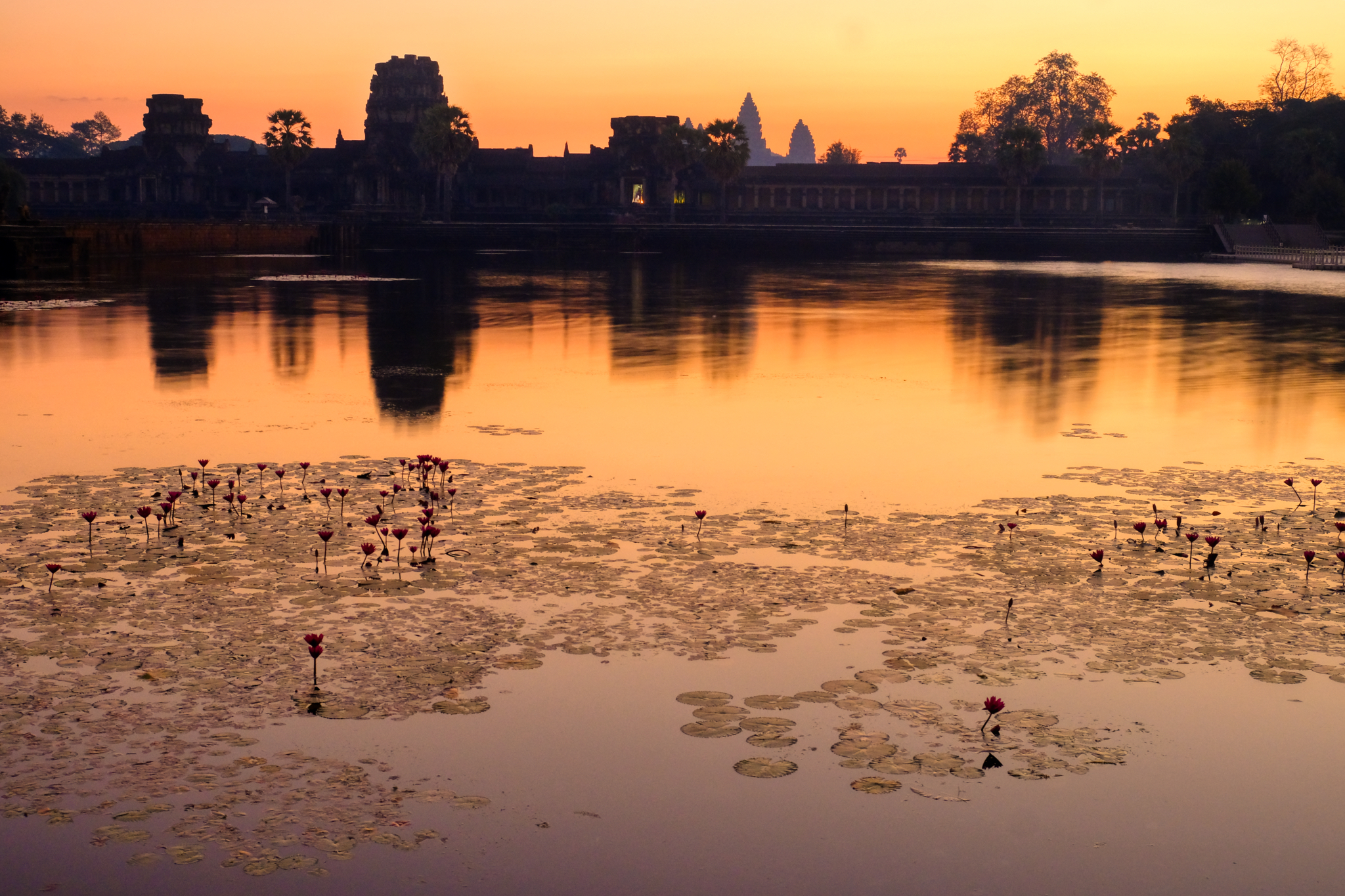 First light at Angkor Wat main complex.
First light at Angkor Wat main complex.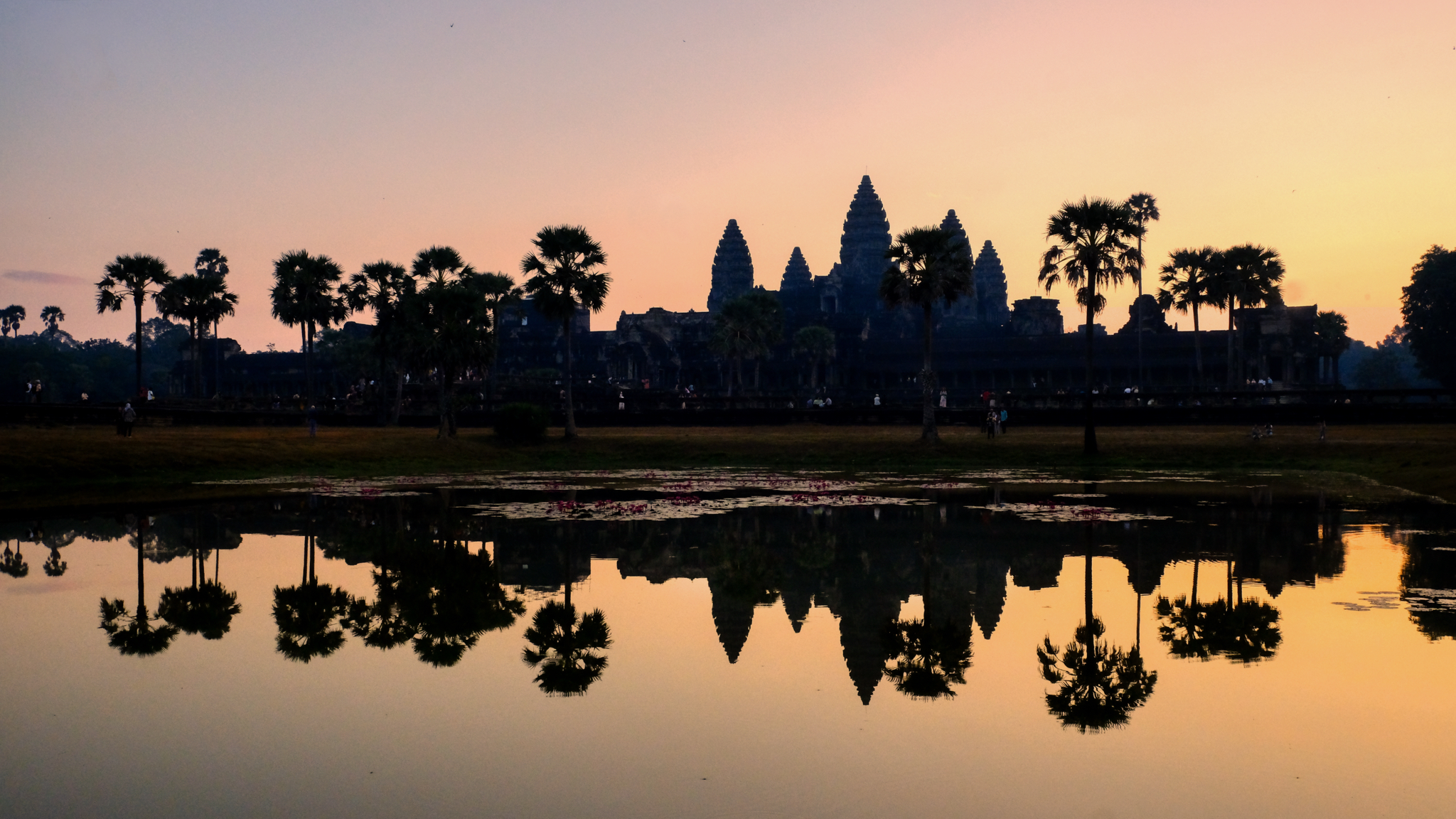 6:00am and already there were thousands of tourists to catch the temples in the magic light. Most of the tourists were either French or Chinese, although I doubt there are many Chinese now that the COVD-9 virus has almost completely halted Chinese tourism.
6:00am and already there were thousands of tourists to catch the temples in the magic light. Most of the tourists were either French or Chinese, although I doubt there are many Chinese now that the COVD-9 virus has almost completely halted Chinese tourism.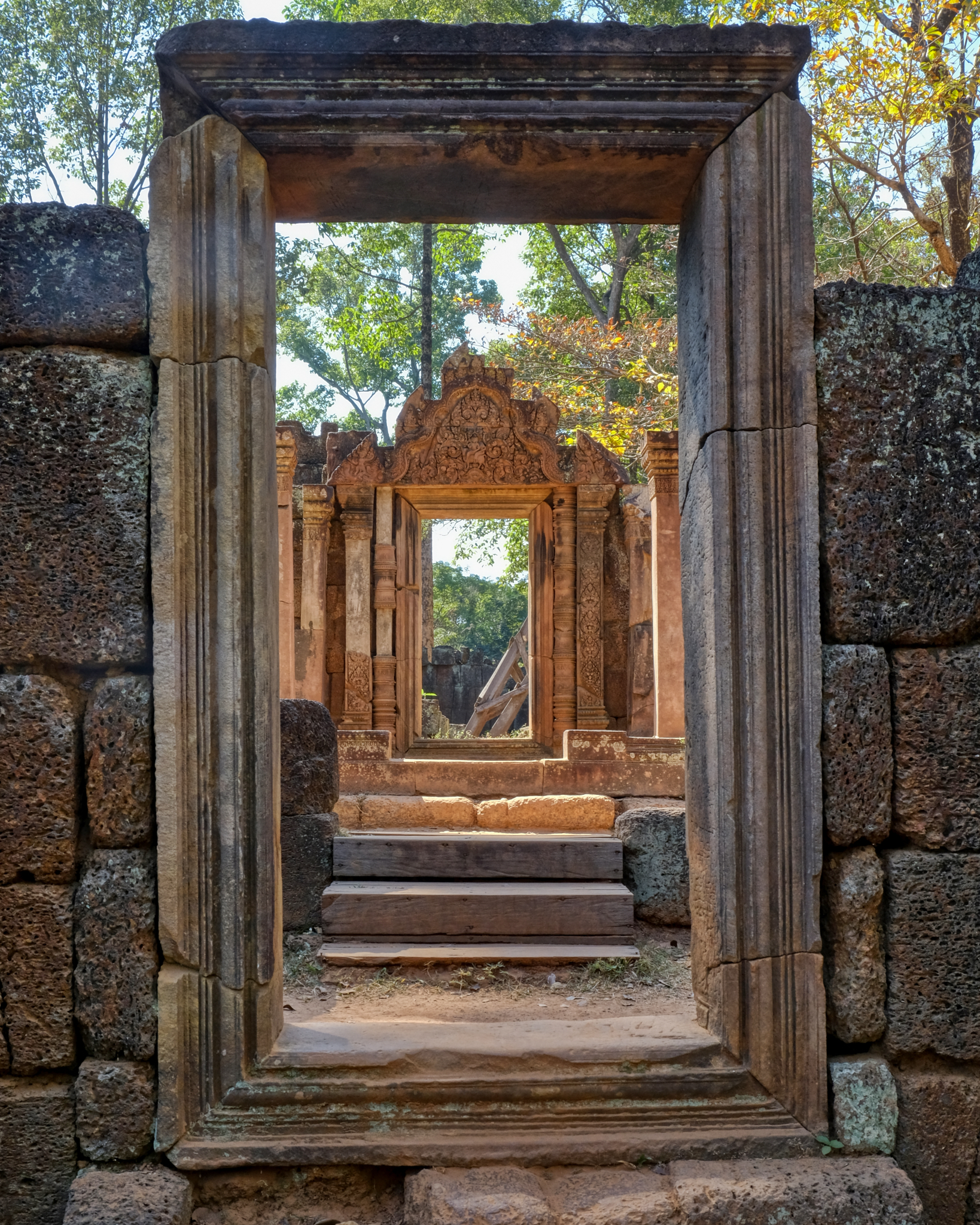 Built 1000 years ago . . . still amazing.
Built 1000 years ago . . . still amazing.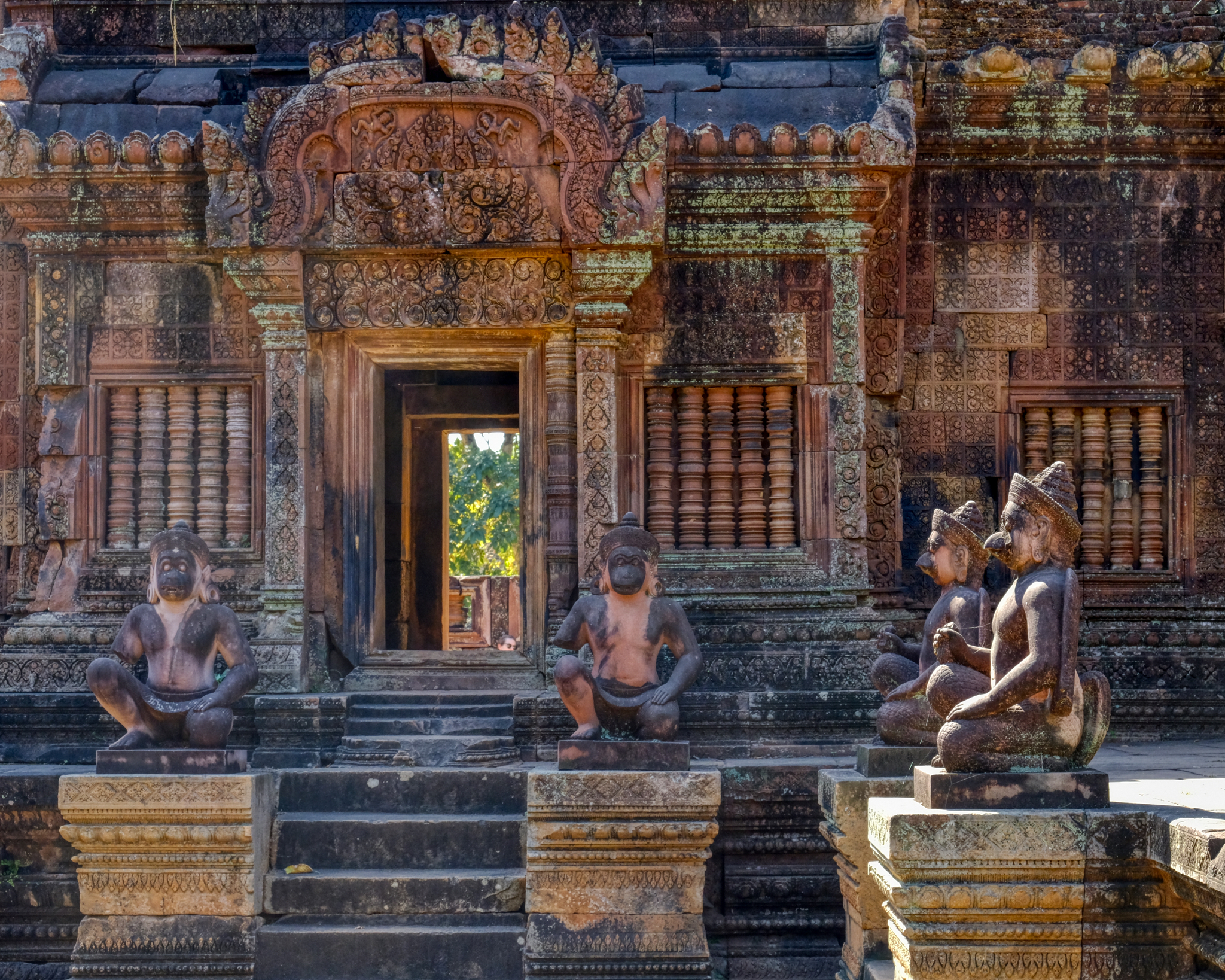 The sheer expanse of temple ruins at Angkor, and the great variety of temple materials and decoration make it well worth spending many days there, as I did in January 2020.
The sheer expanse of temple ruins at Angkor, and the great variety of temple materials and decoration make it well worth spending many days there, as I did in January 2020.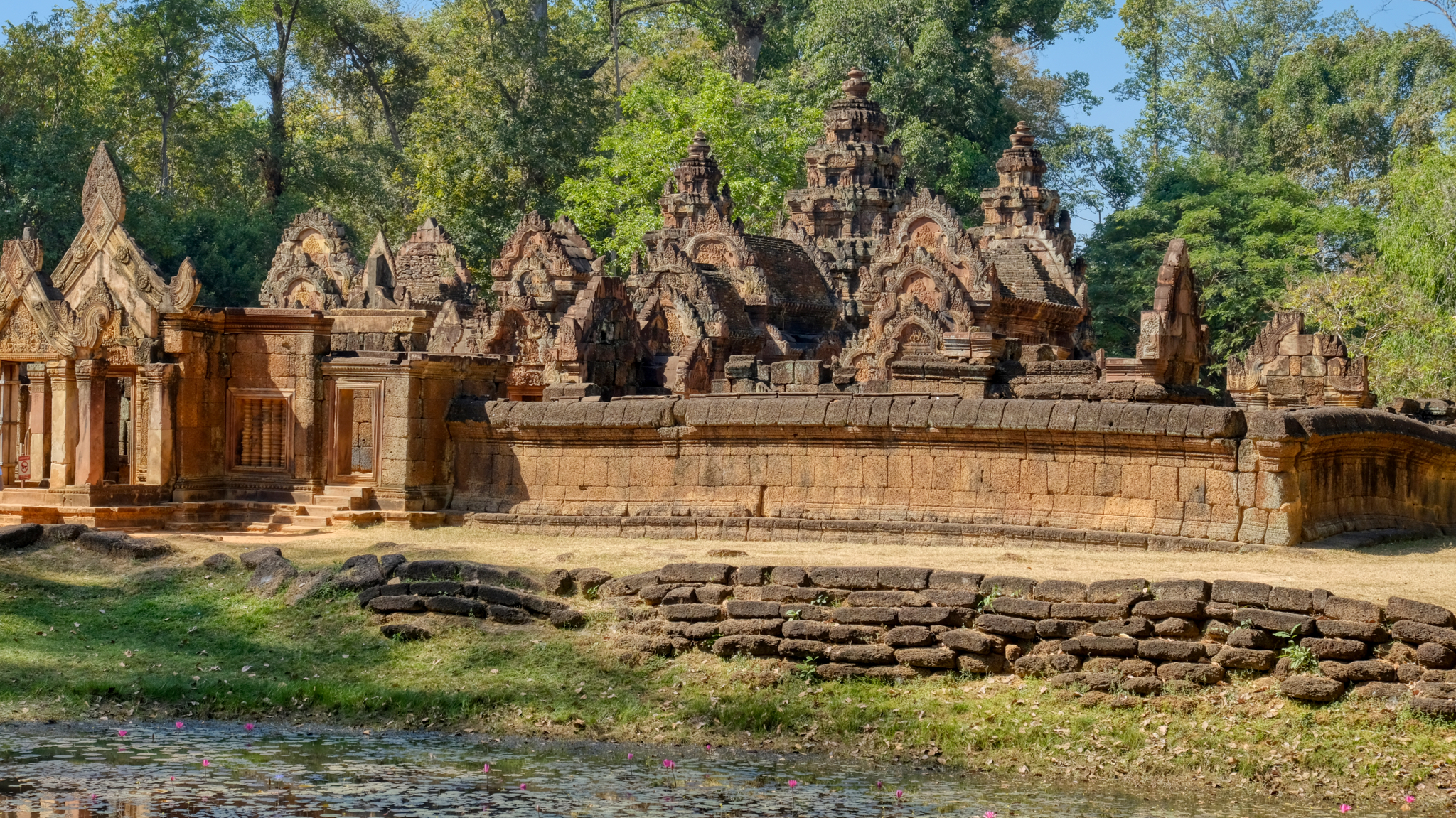 There is so much to see in the Angkor Wat complex - many ancient sites. spread out around many square miles. Here is a small slide show sampling of the sights before we begin.
There is so much to see in the Angkor Wat complex - many ancient sites. spread out around many square miles. Here is a small slide show sampling of the sights before we begin.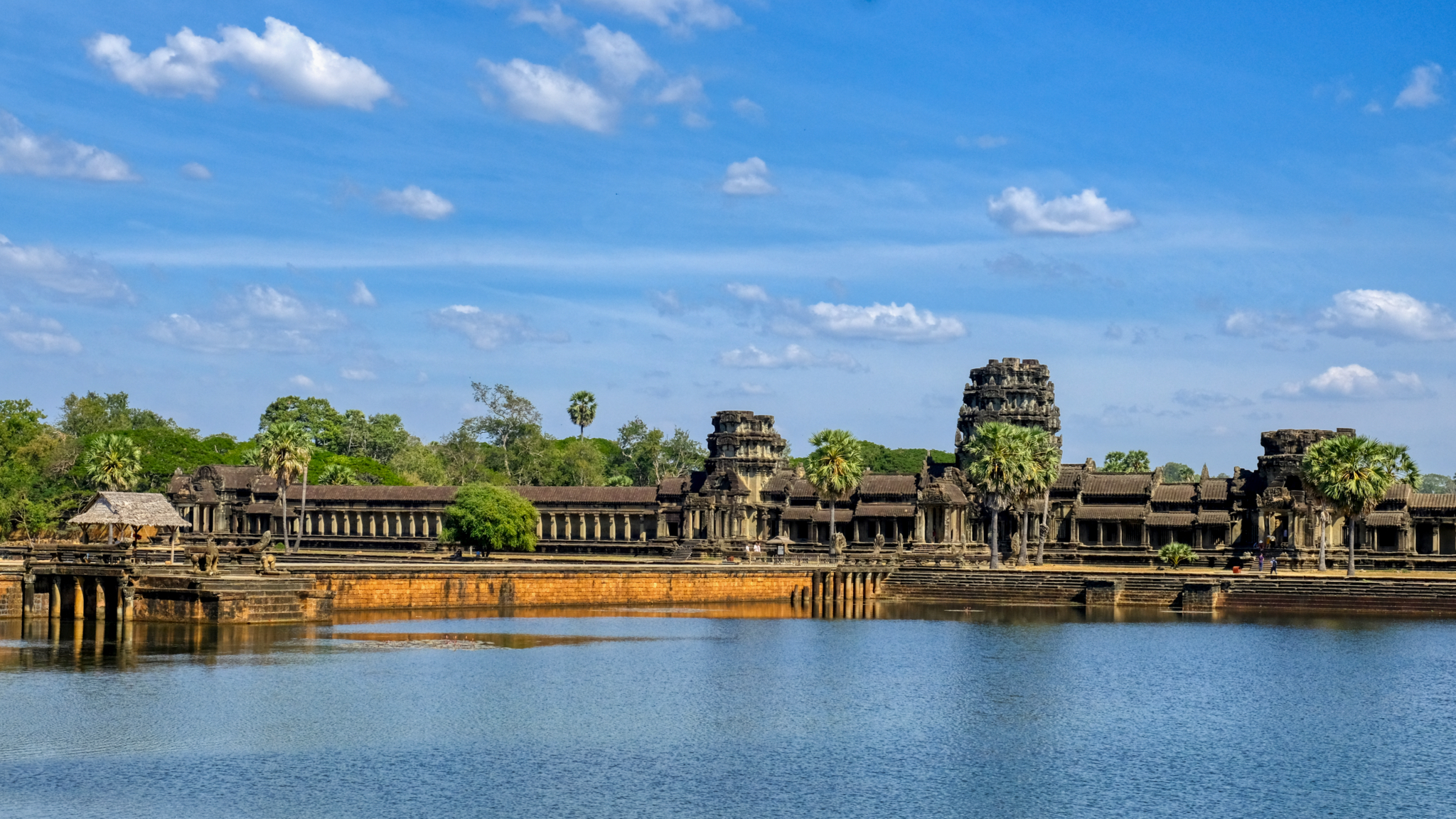 There is a main Angkor Wat temple with a grand entry across a beautiful pond.
There is a main Angkor Wat temple with a grand entry across a beautiful pond.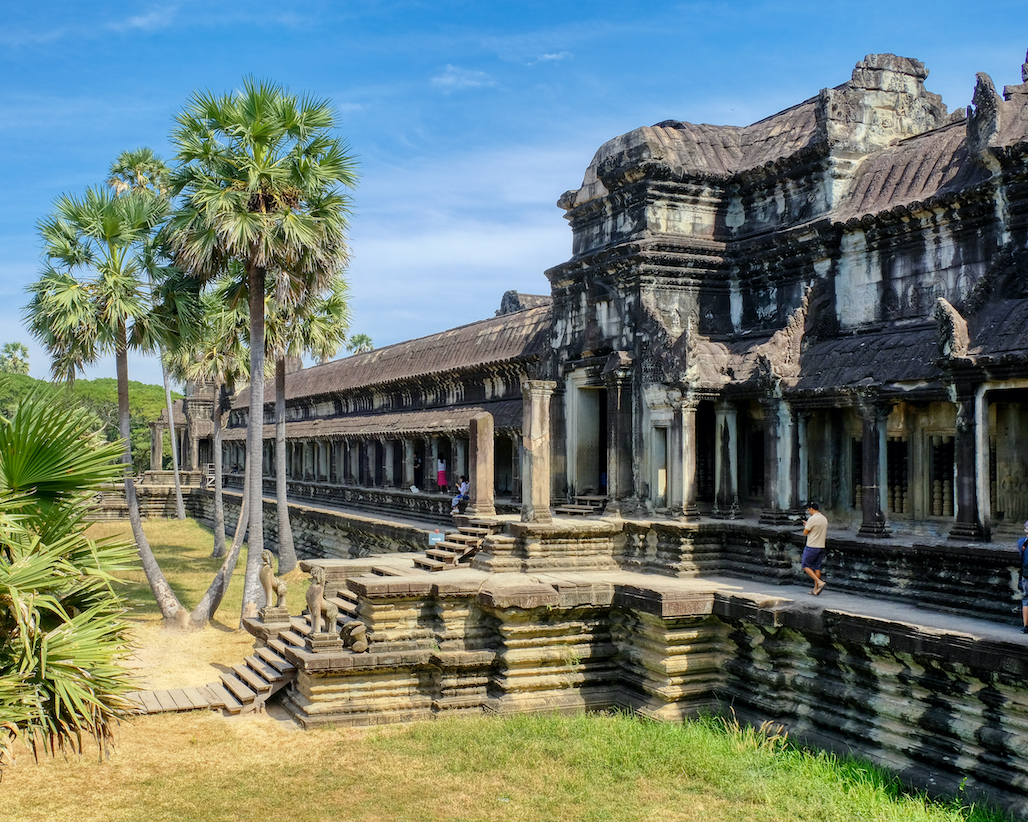 Just inside the "entry" gate.
Just inside the "entry" gate.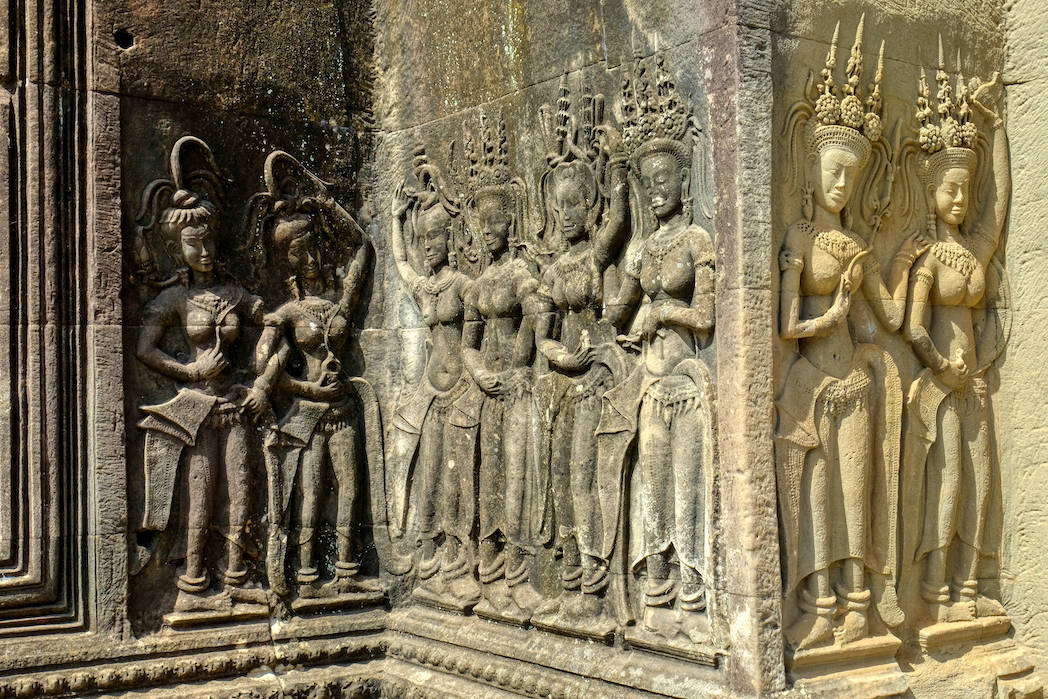 The interior and exterior surfaces are all nearly completely carved in panels of patterns and figures.
The interior and exterior surfaces are all nearly completely carved in panels of patterns and figures.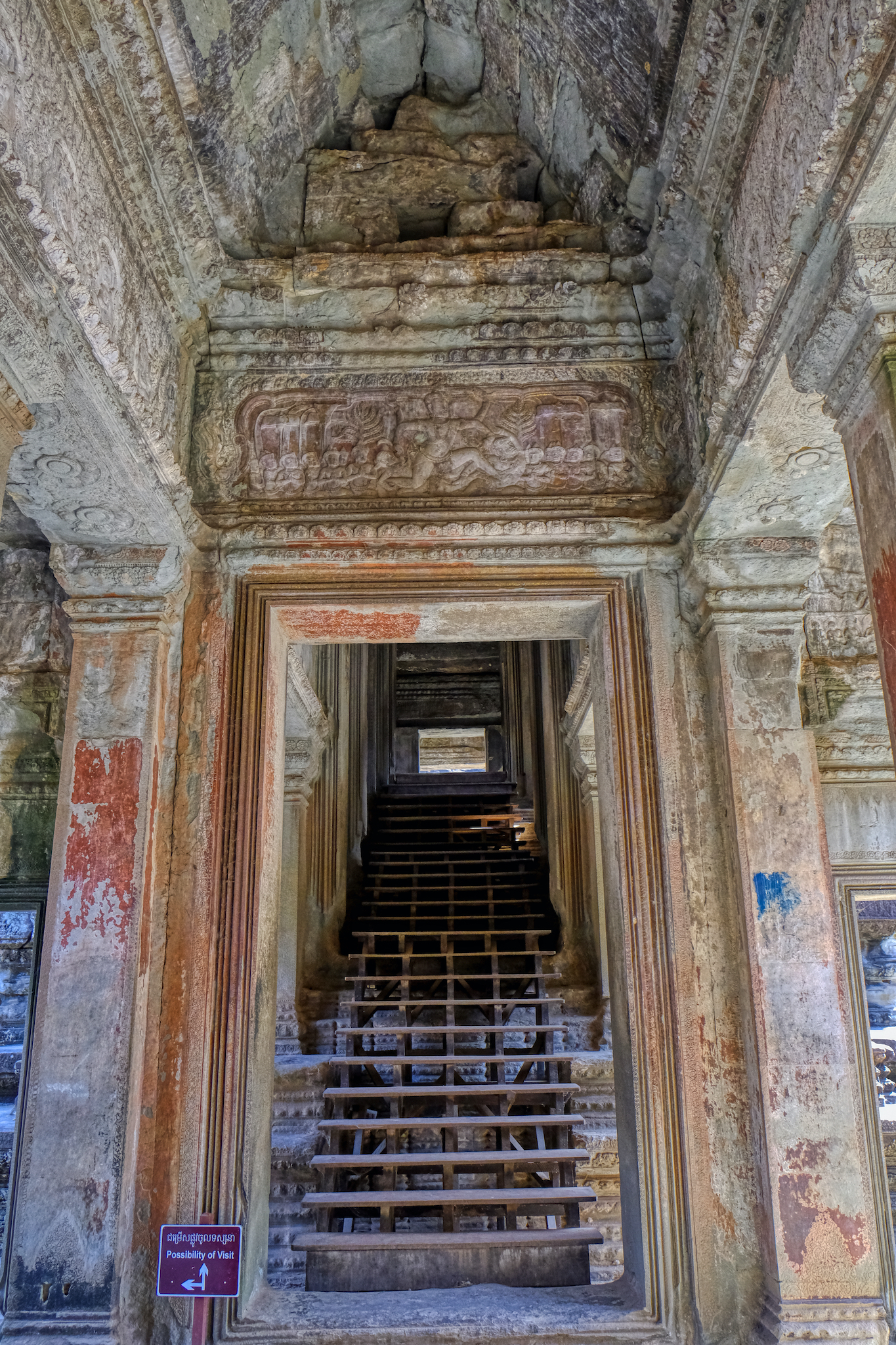
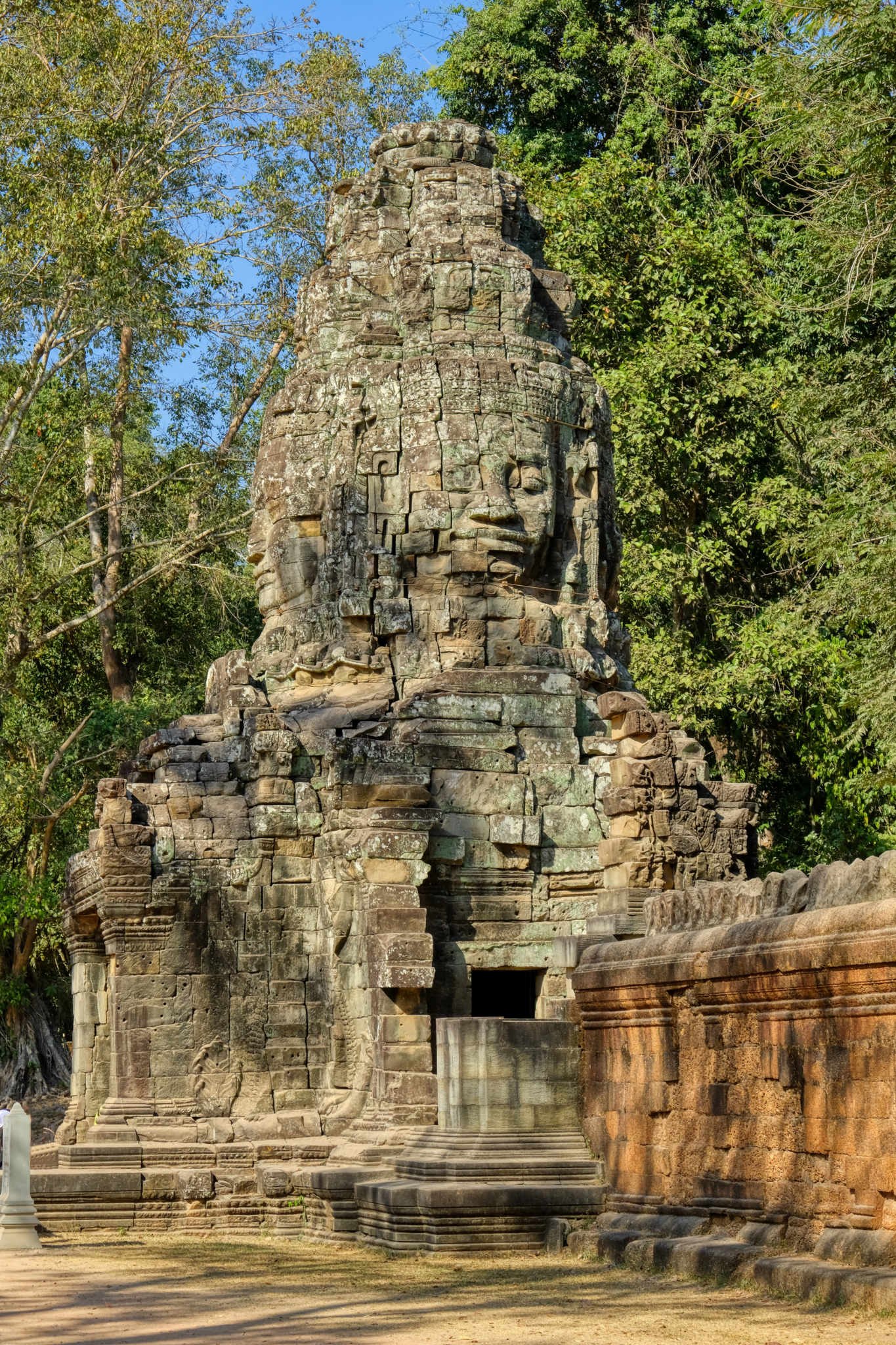 The many temple complexes are surrounded by high walls and often moats. All have four gates; one each facing north, south, east, and west.
The many temple complexes are surrounded by high walls and often moats. All have four gates; one each facing north, south, east, and west.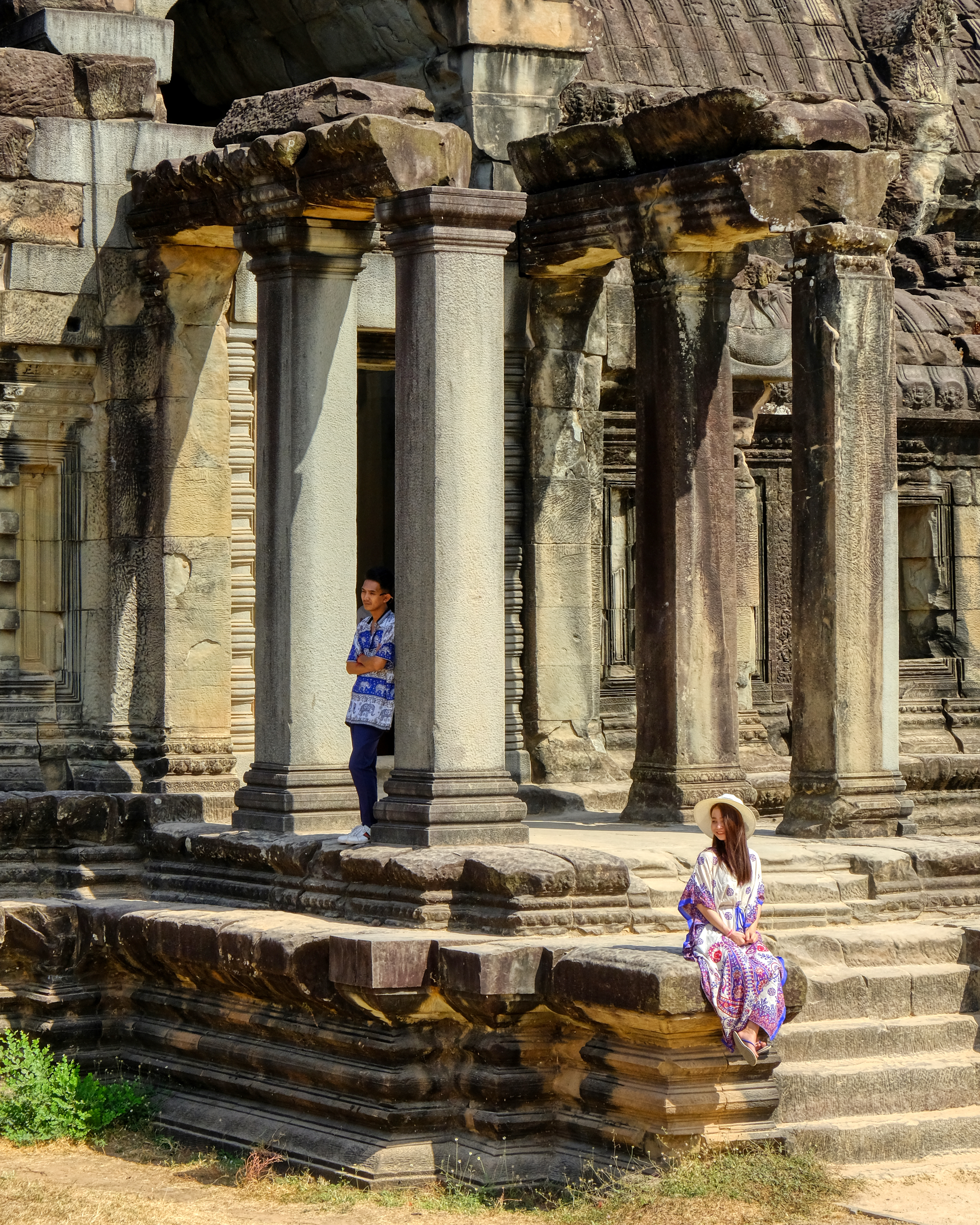 Inside the the main temple grounds, tourists stop to pose among the ruins. Thank you.
Inside the the main temple grounds, tourists stop to pose among the ruins. Thank you.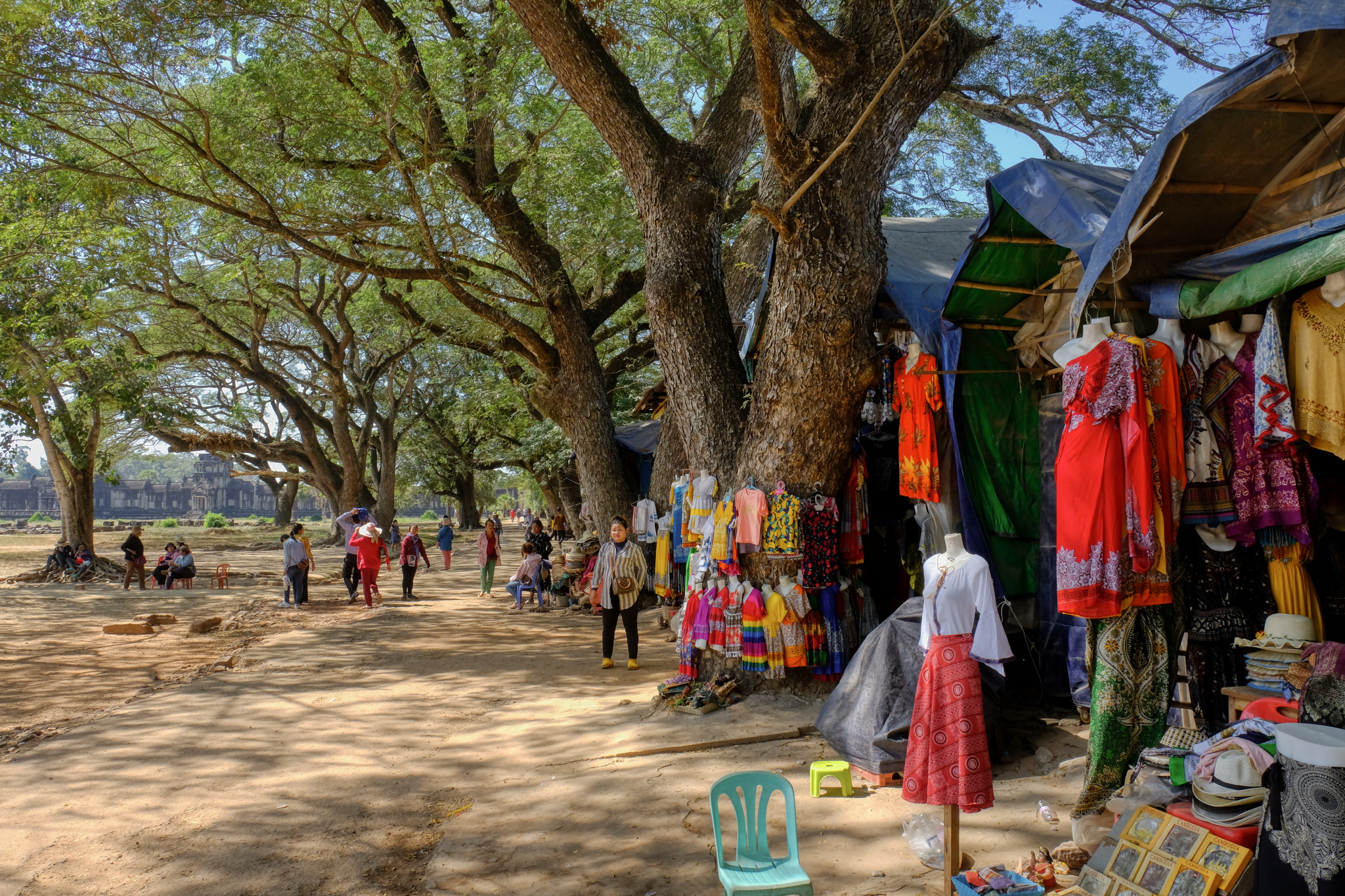 Curious vendors here and there. Yes, I bought the t-shirt. Of course I did
Curious vendors here and there. Yes, I bought the t-shirt. Of course I did Through and into a temple gatehouse structure.
Through and into a temple gatehouse structure.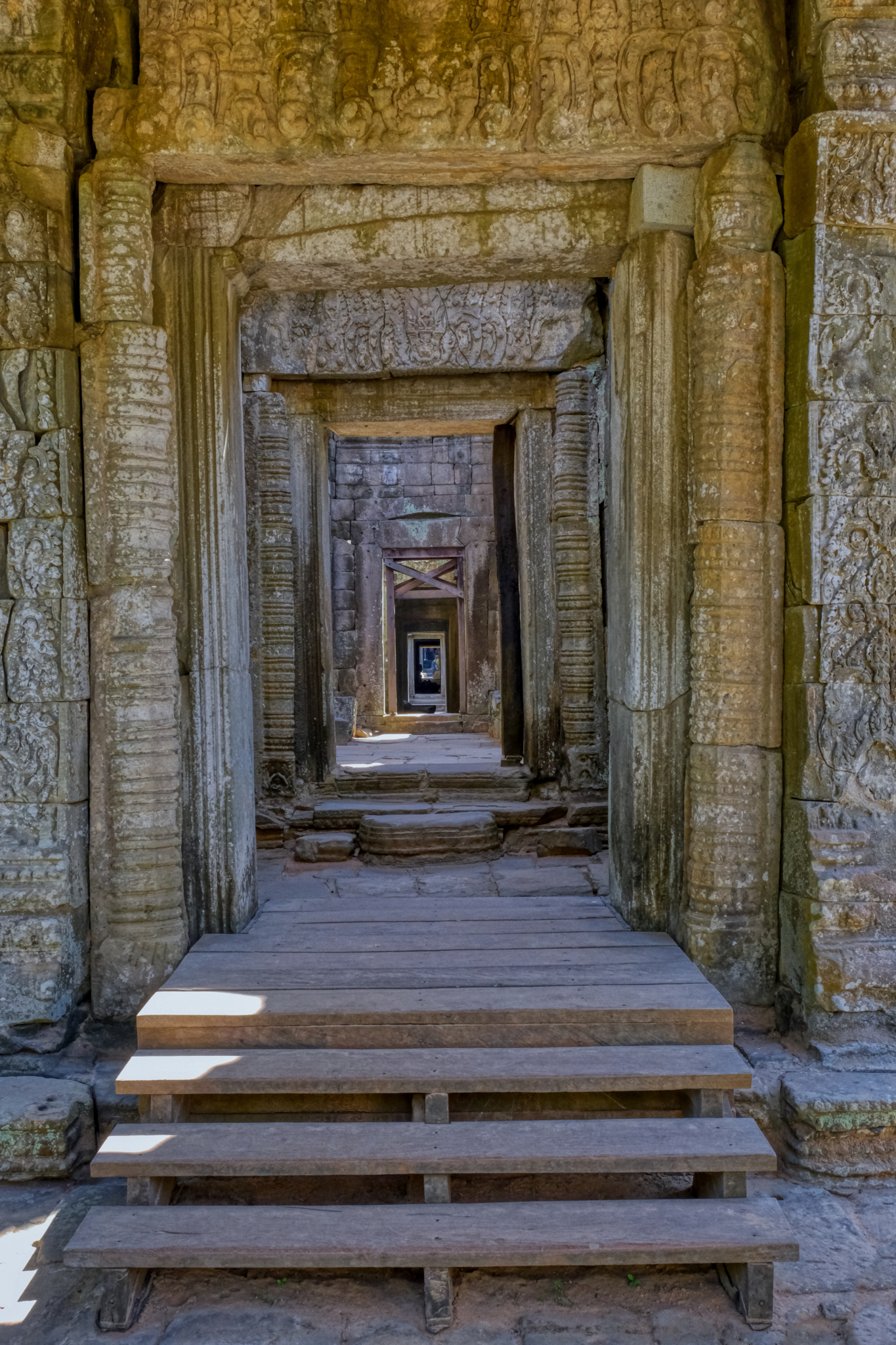 Inside the temples there are inviting and mysterious passages everywhere.
Inside the temples there are inviting and mysterious passages everywhere.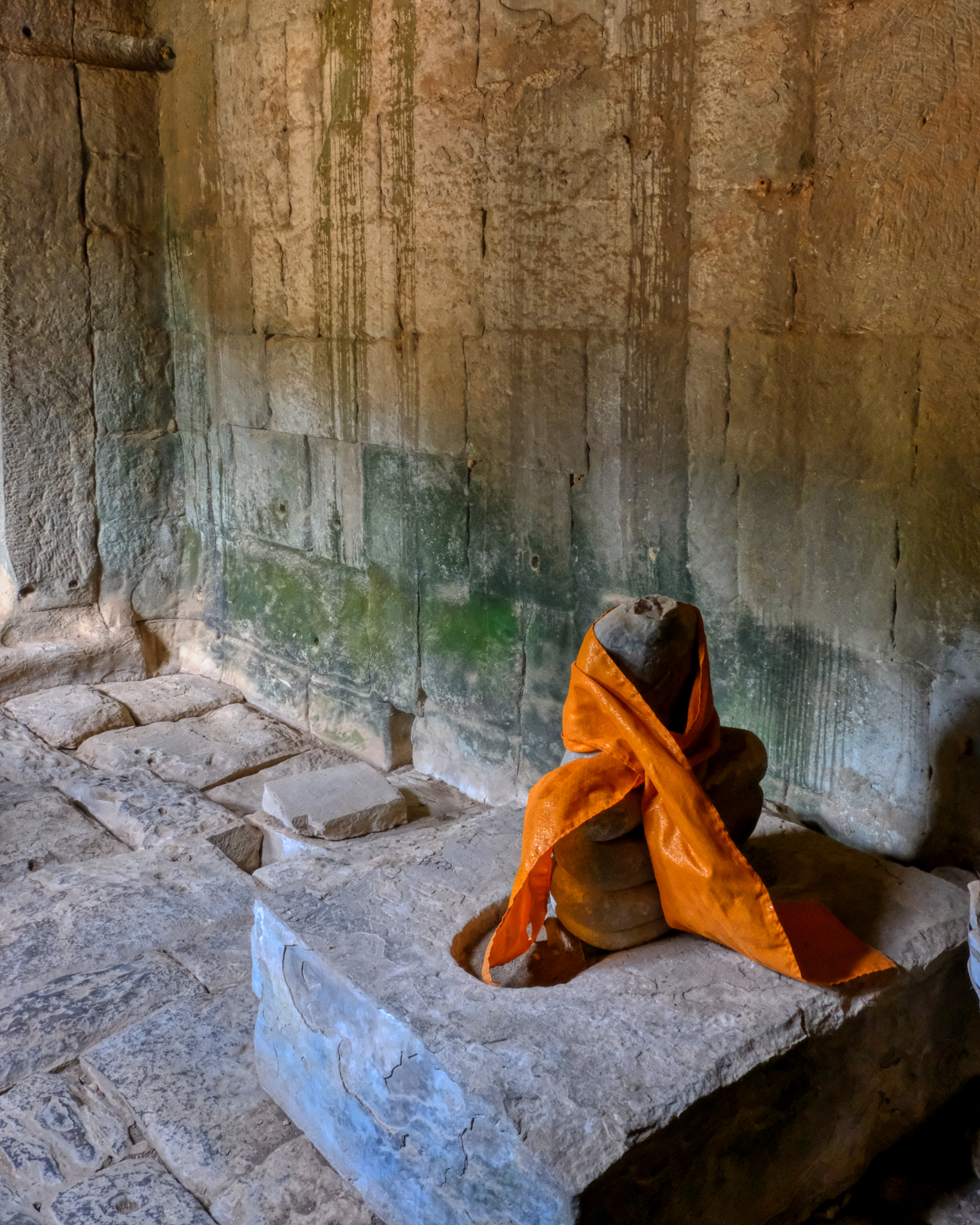 Although headless, many of the ancient Buddha relics are still tended by local followers.
Although headless, many of the ancient Buddha relics are still tended by local followers.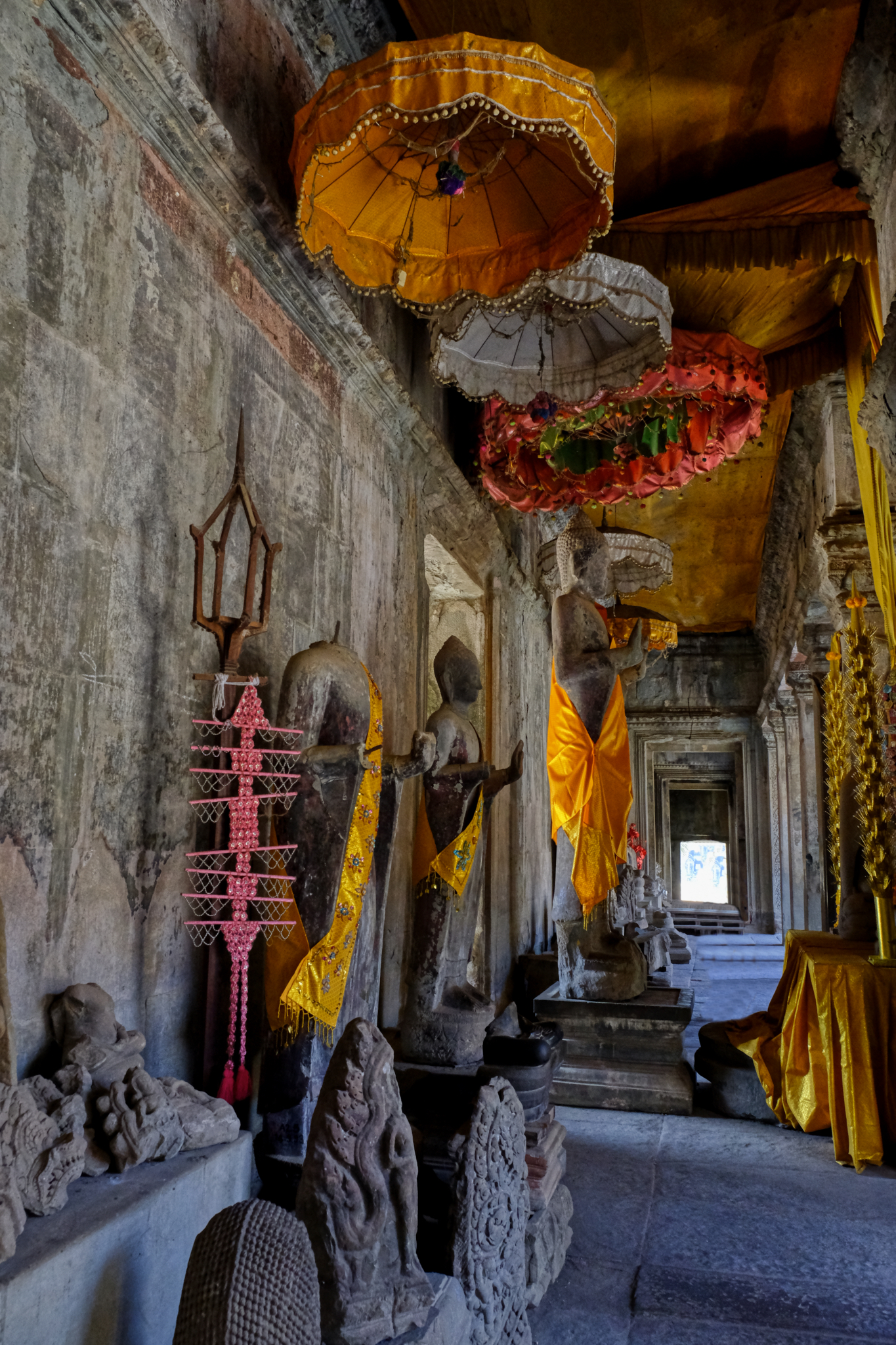 A fascinating hall of revered Buddha relics.
A fascinating hall of revered Buddha relics.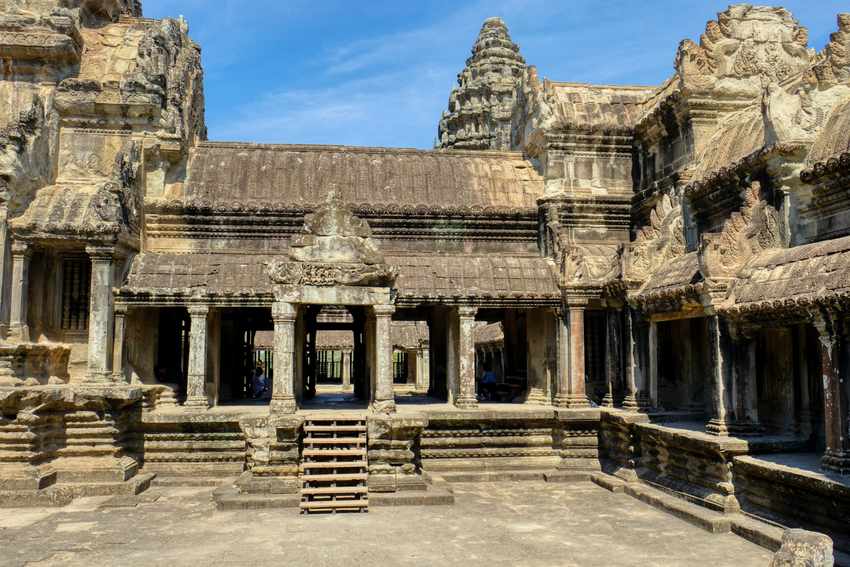 Interior courtyard within the temple structures.
Interior courtyard within the temple structures.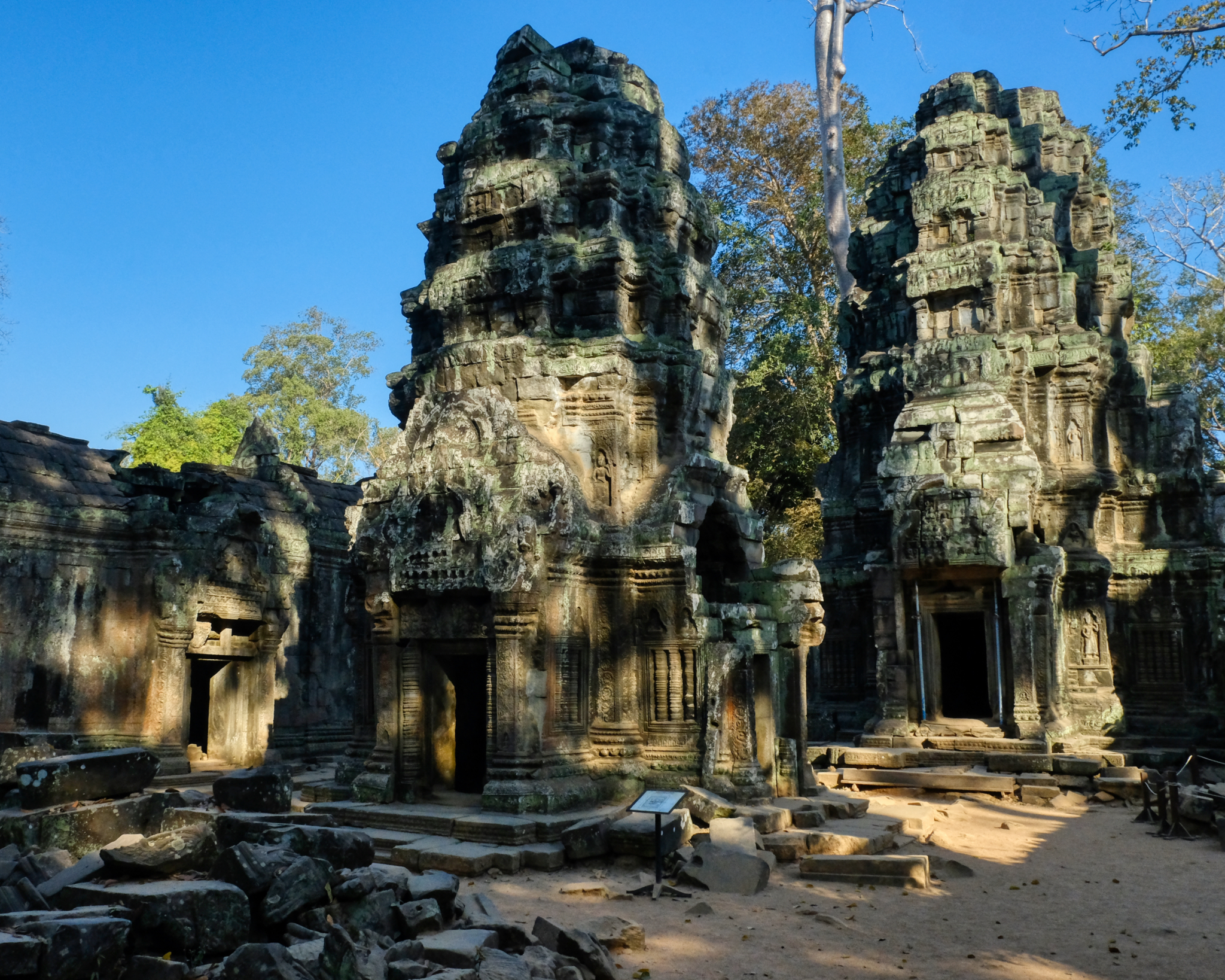 Ruins of Angkor Wat chedis. Incredible and unique architectural style.
Ruins of Angkor Wat chedis. Incredible and unique architectural style.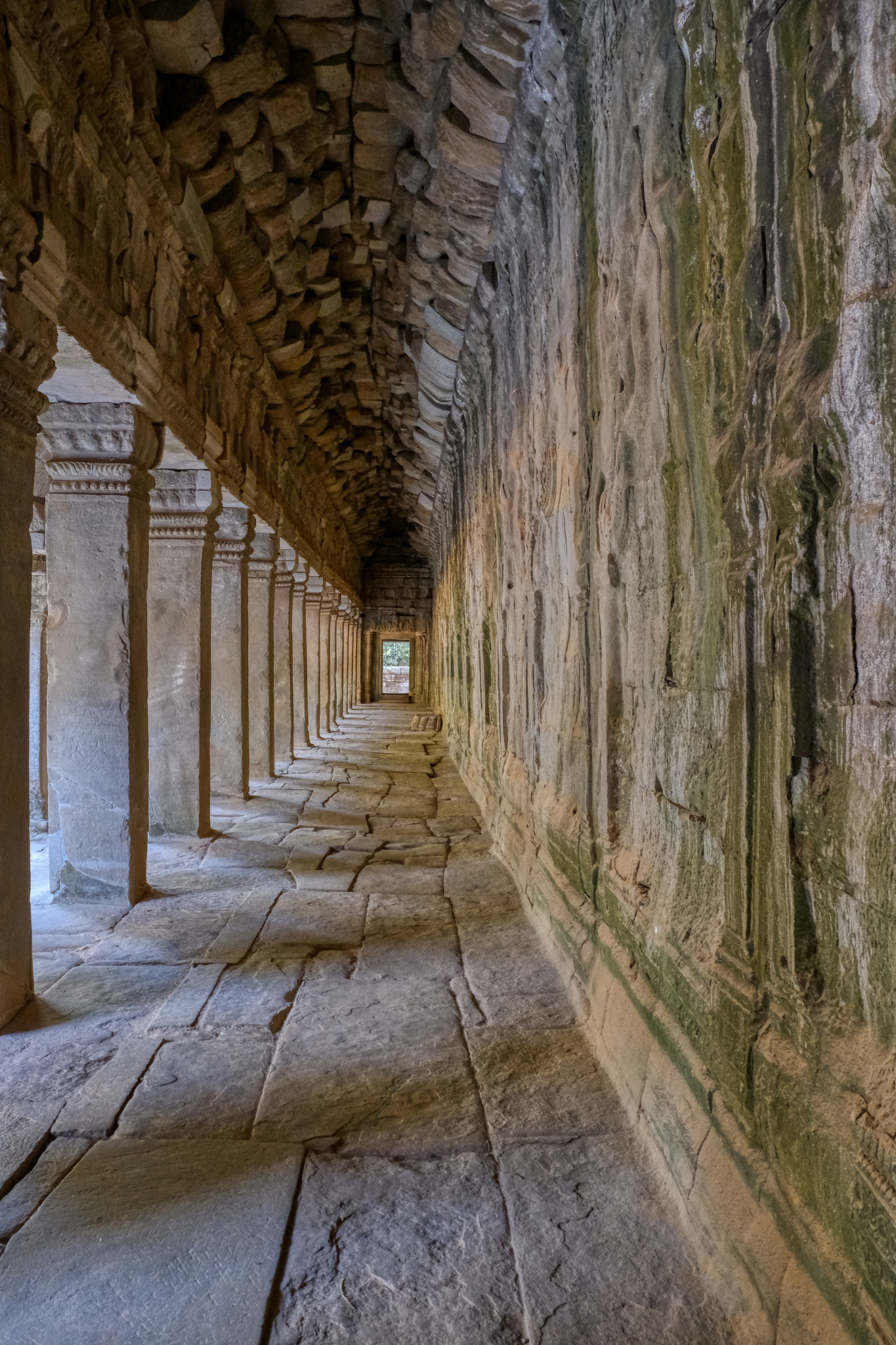 Interior halls and colonnades everywhere invite exploration.
Interior halls and colonnades everywhere invite exploration.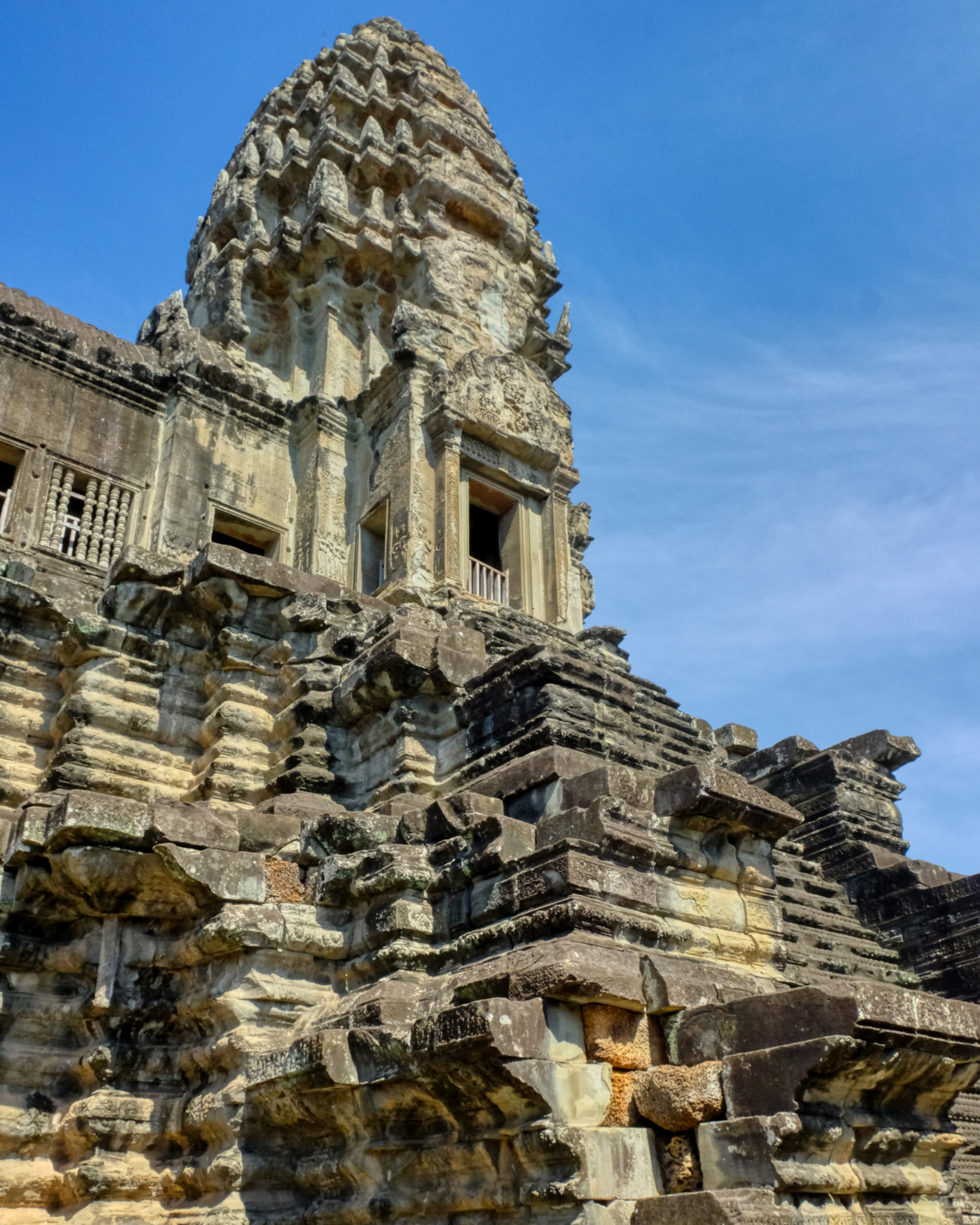 Stone spires carved with elaborate patterns of adornment.
Stone spires carved with elaborate patterns of adornment.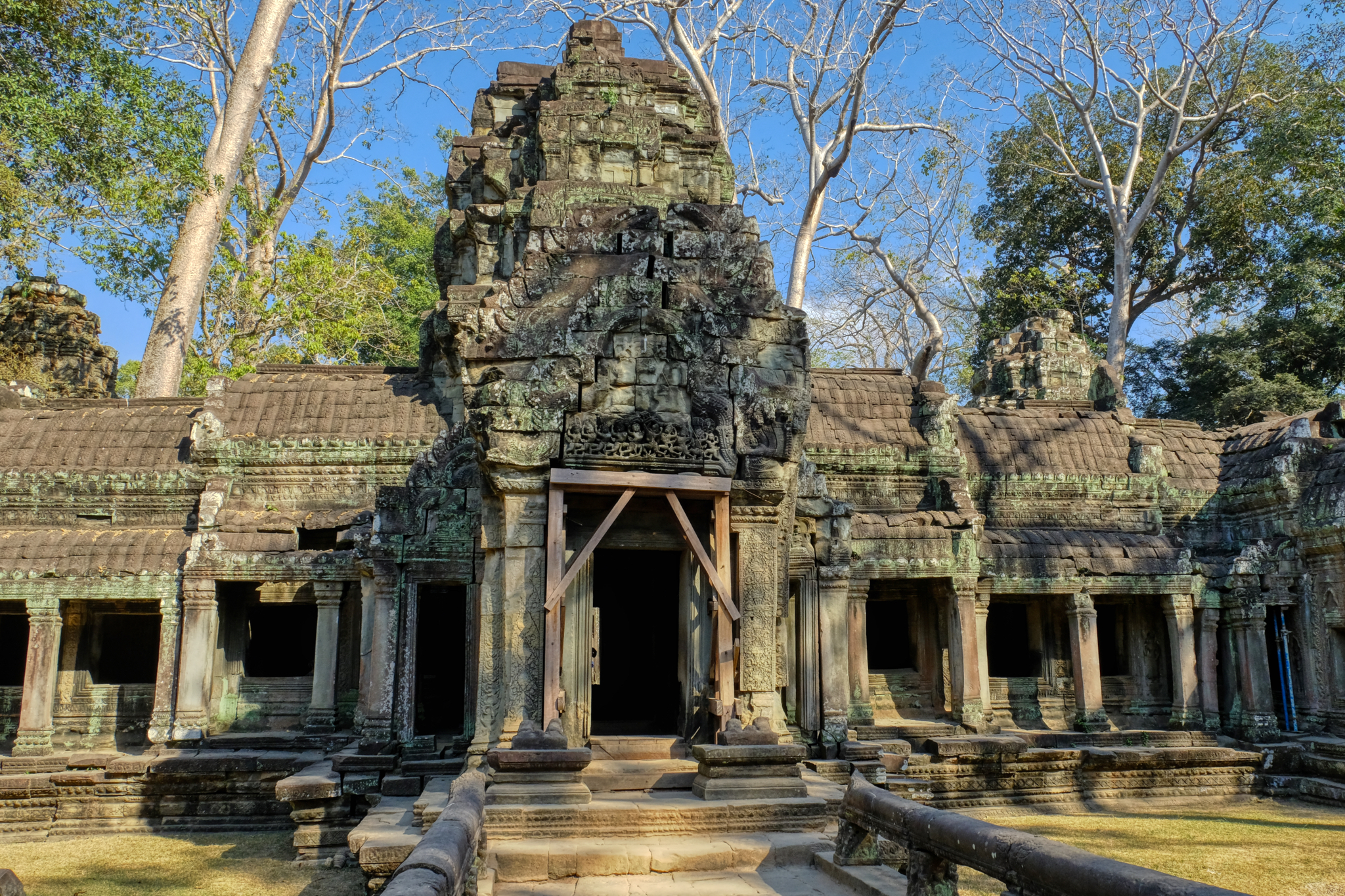 Reclaimed from the jungle that reclaimed the temple centuries ago.
Reclaimed from the jungle that reclaimed the temple centuries ago.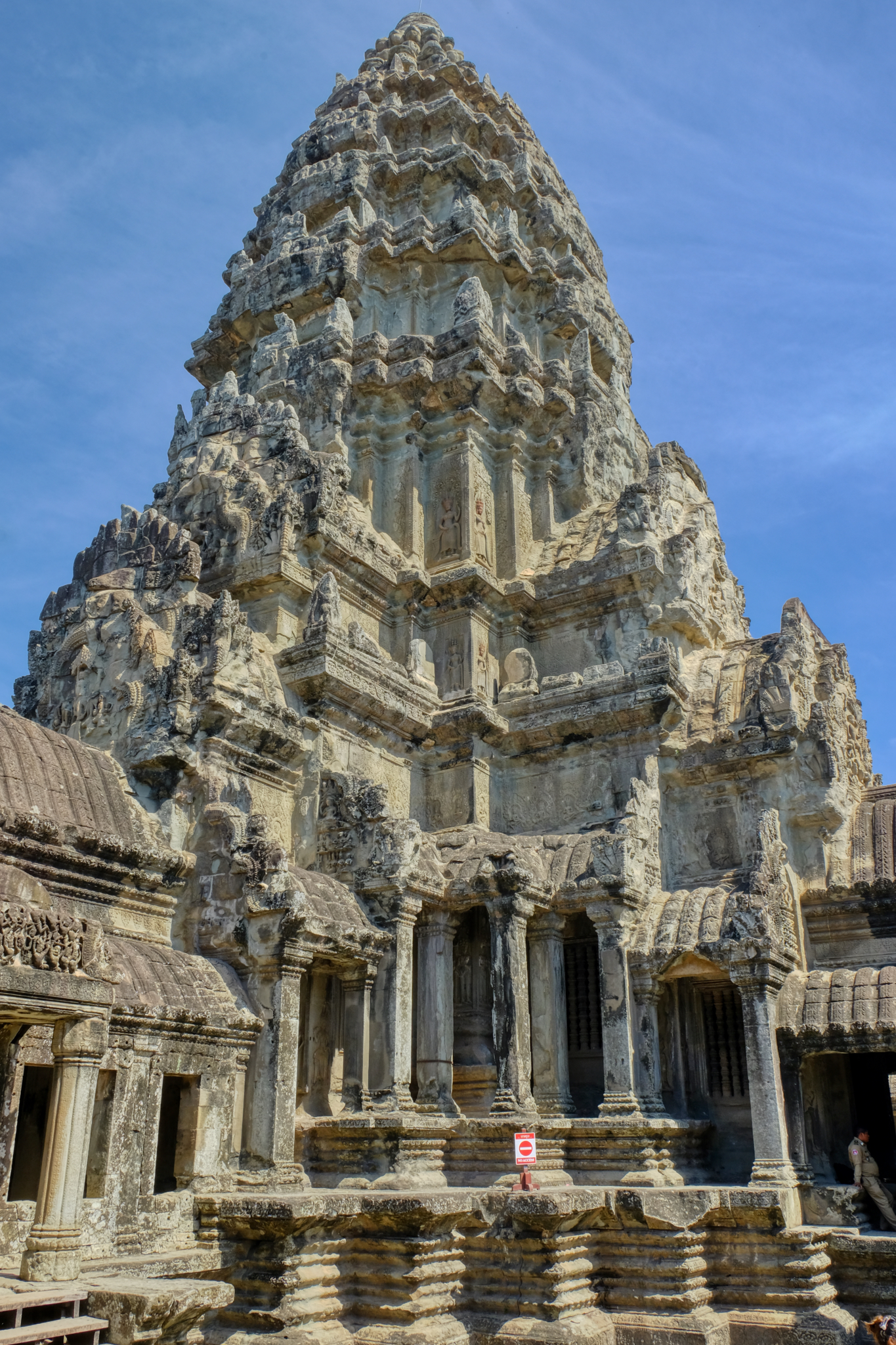 A temple spire. Fascinating.
A temple spire. Fascinating.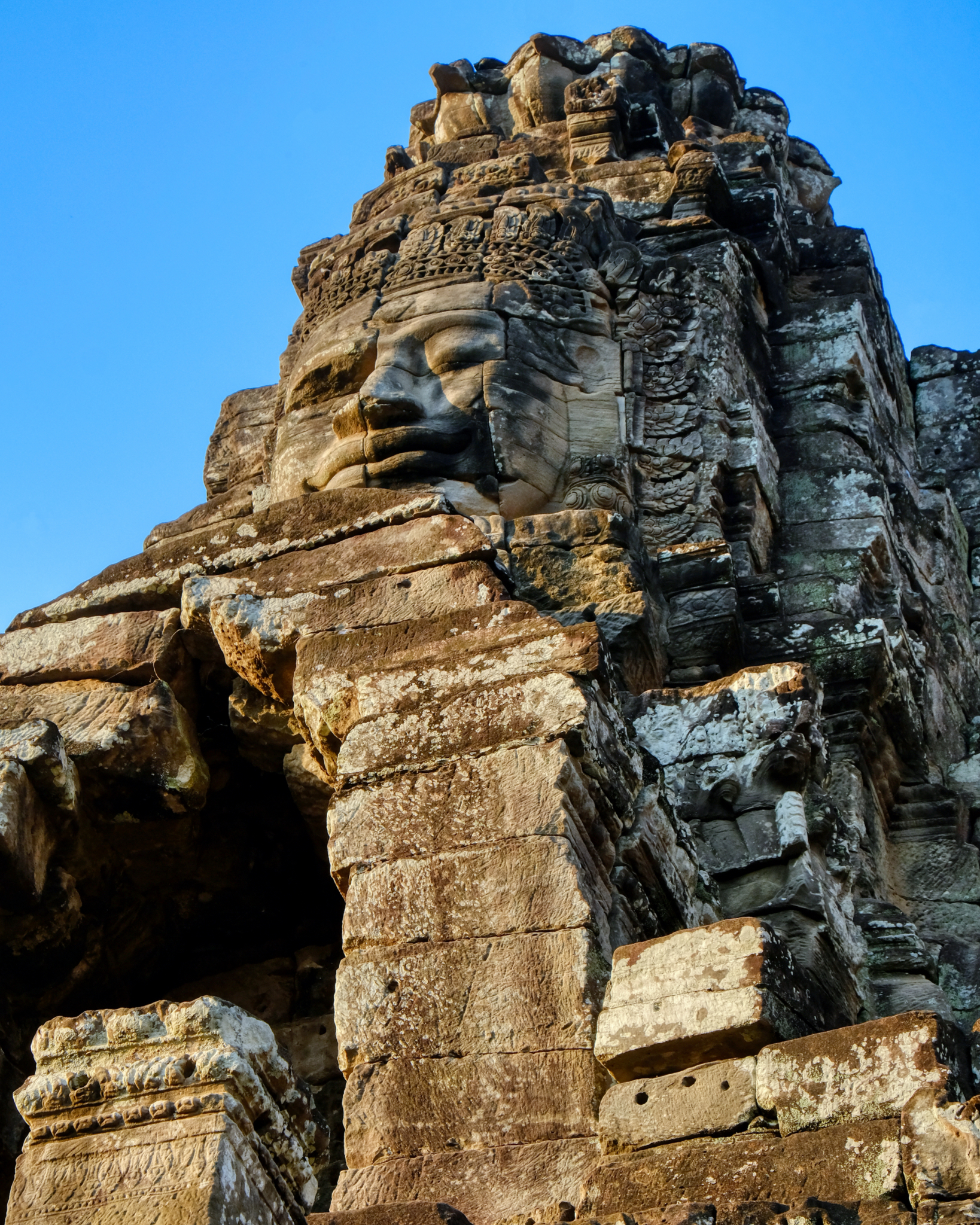
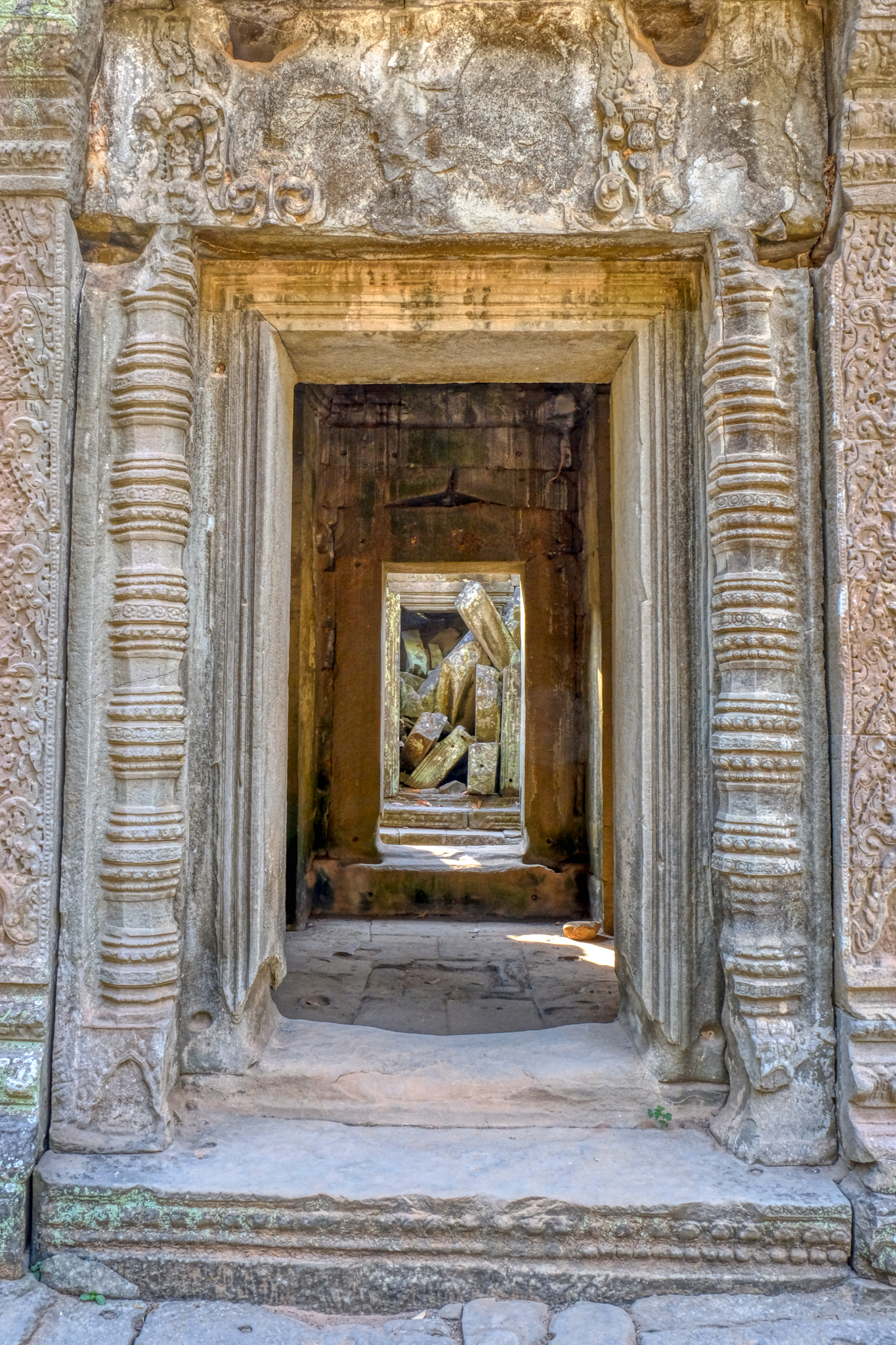 Endless passages, rooms, doors, and b locked exits. It was incredibly interesting to just wander around in this ancient place.
Endless passages, rooms, doors, and b locked exits. It was incredibly interesting to just wander around in this ancient place.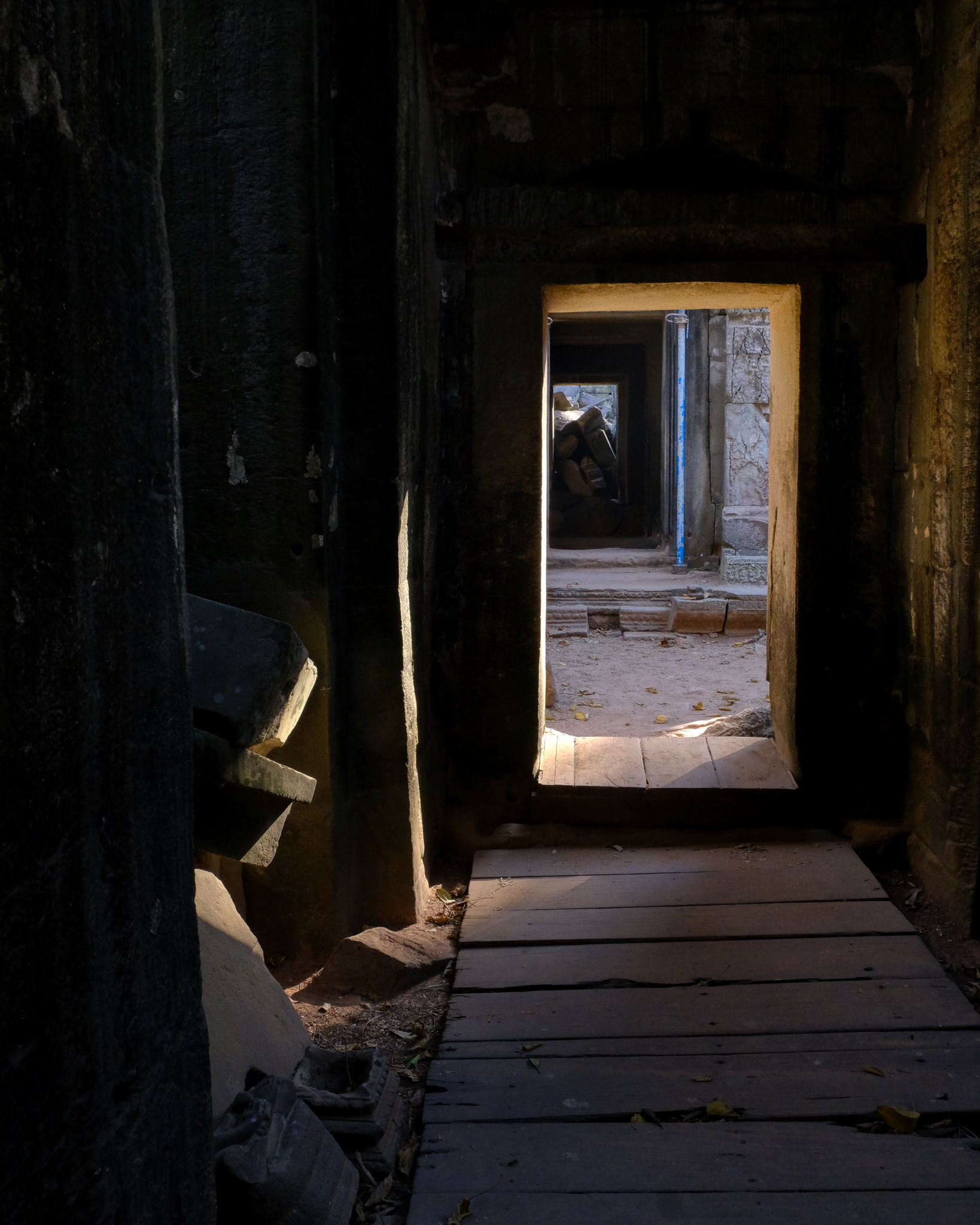 A space of wonder.
A space of wonder.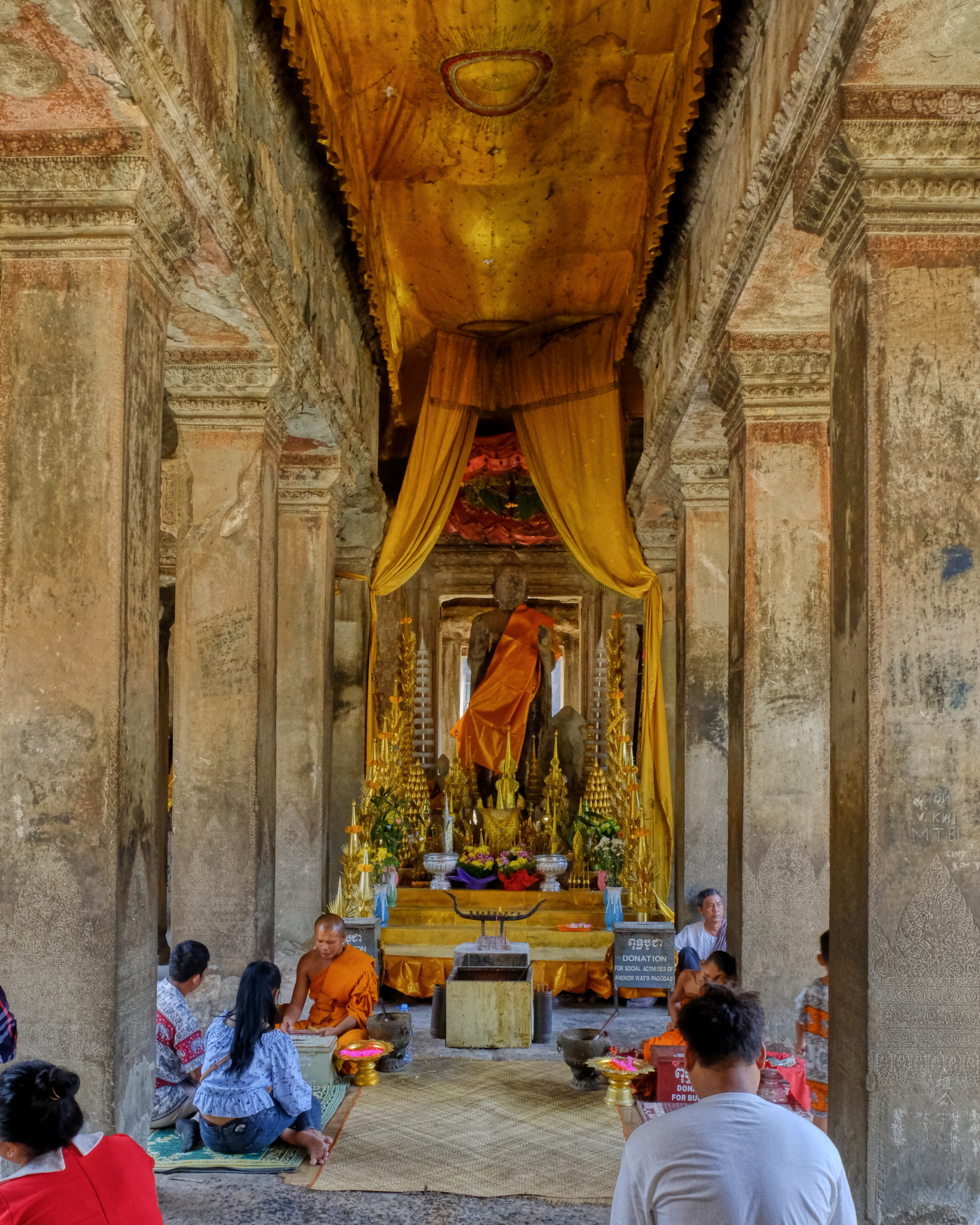 Rounding a corner inside the temple I came across Buddhist monks blessing devotees: Ankor Wat is still a living spiritual center.
Rounding a corner inside the temple I came across Buddhist monks blessing devotees: Ankor Wat is still a living spiritual center.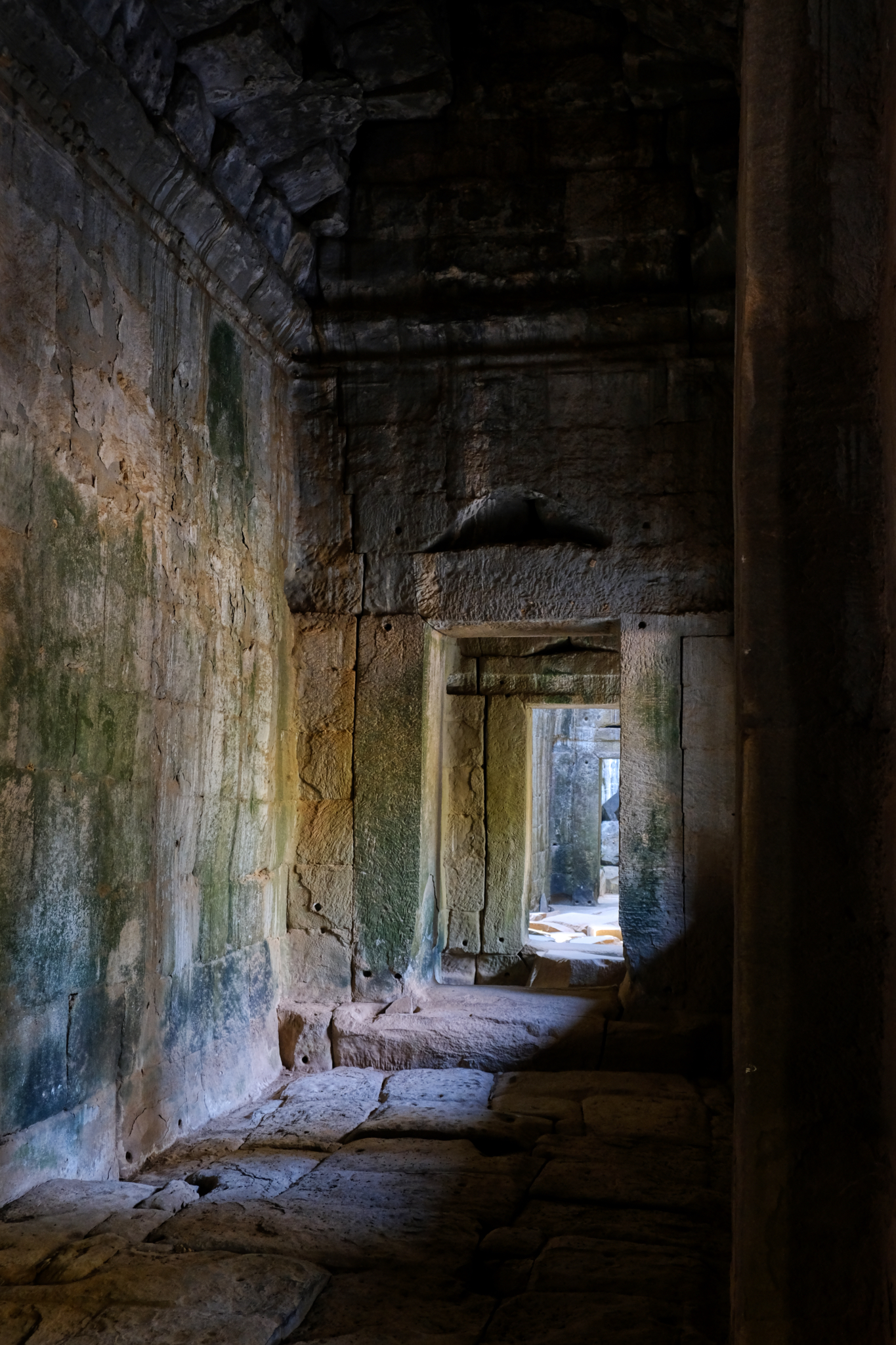 After the blessing monks . . . back into the labyrinth of passages . . .
After the blessing monks . . . back into the labyrinth of passages . . .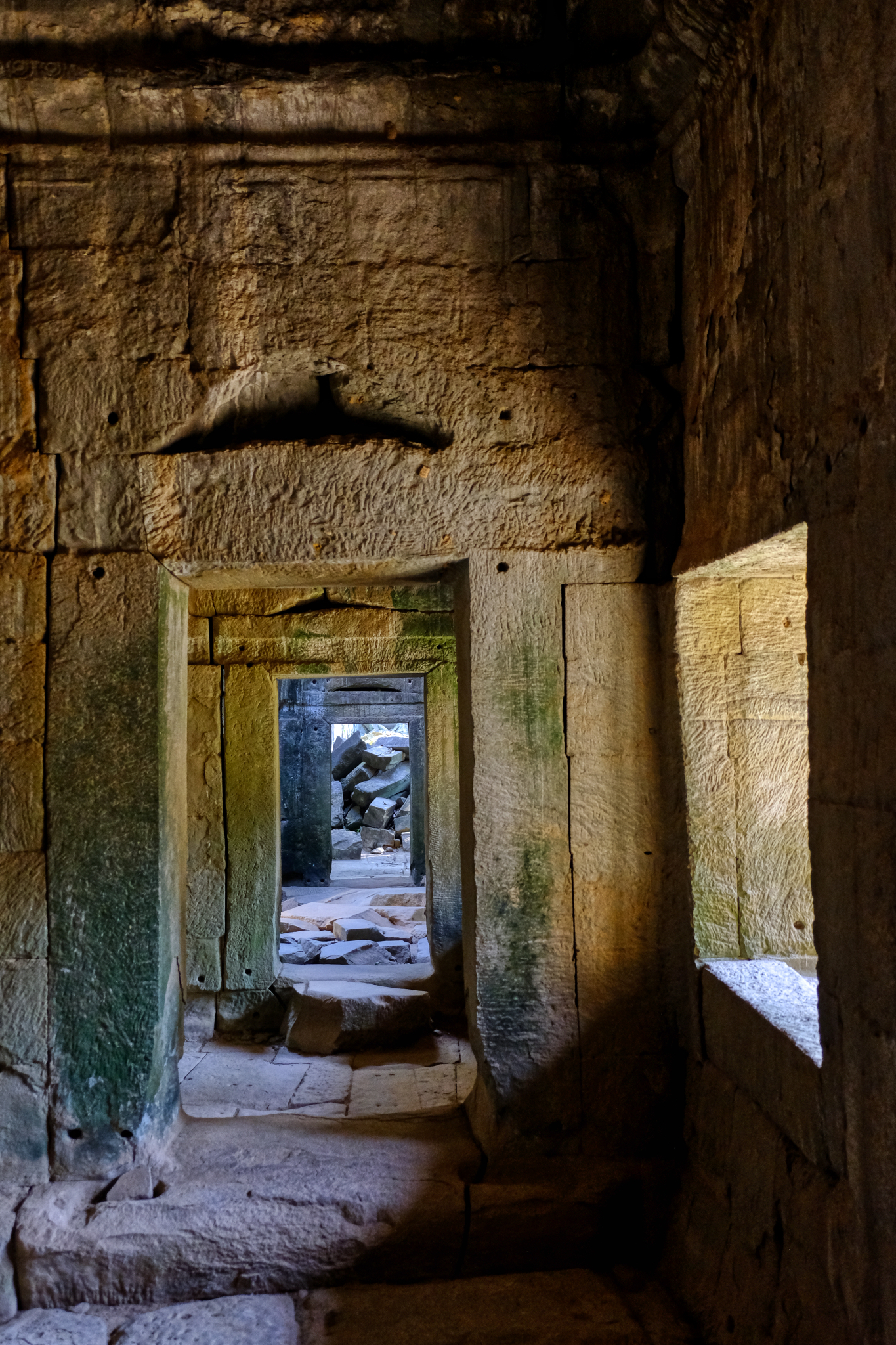 On and on . . . imagining the people who occupied these spaces when it was an active and populated city.
On and on . . . imagining the people who occupied these spaces when it was an active and populated city.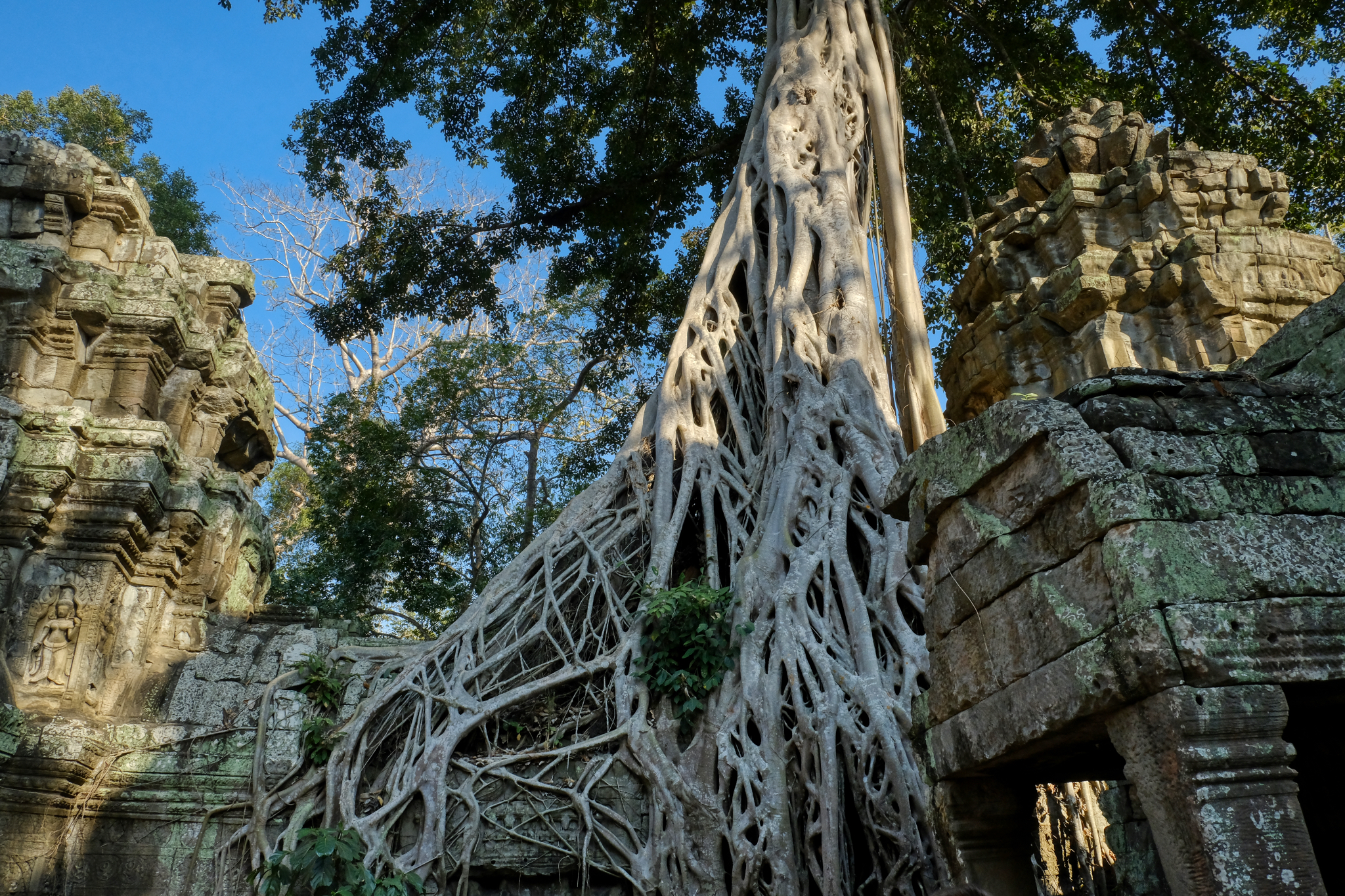 The jungle is still trying to interpose itself on the ancient temple structures.
The jungle is still trying to interpose itself on the ancient temple structures.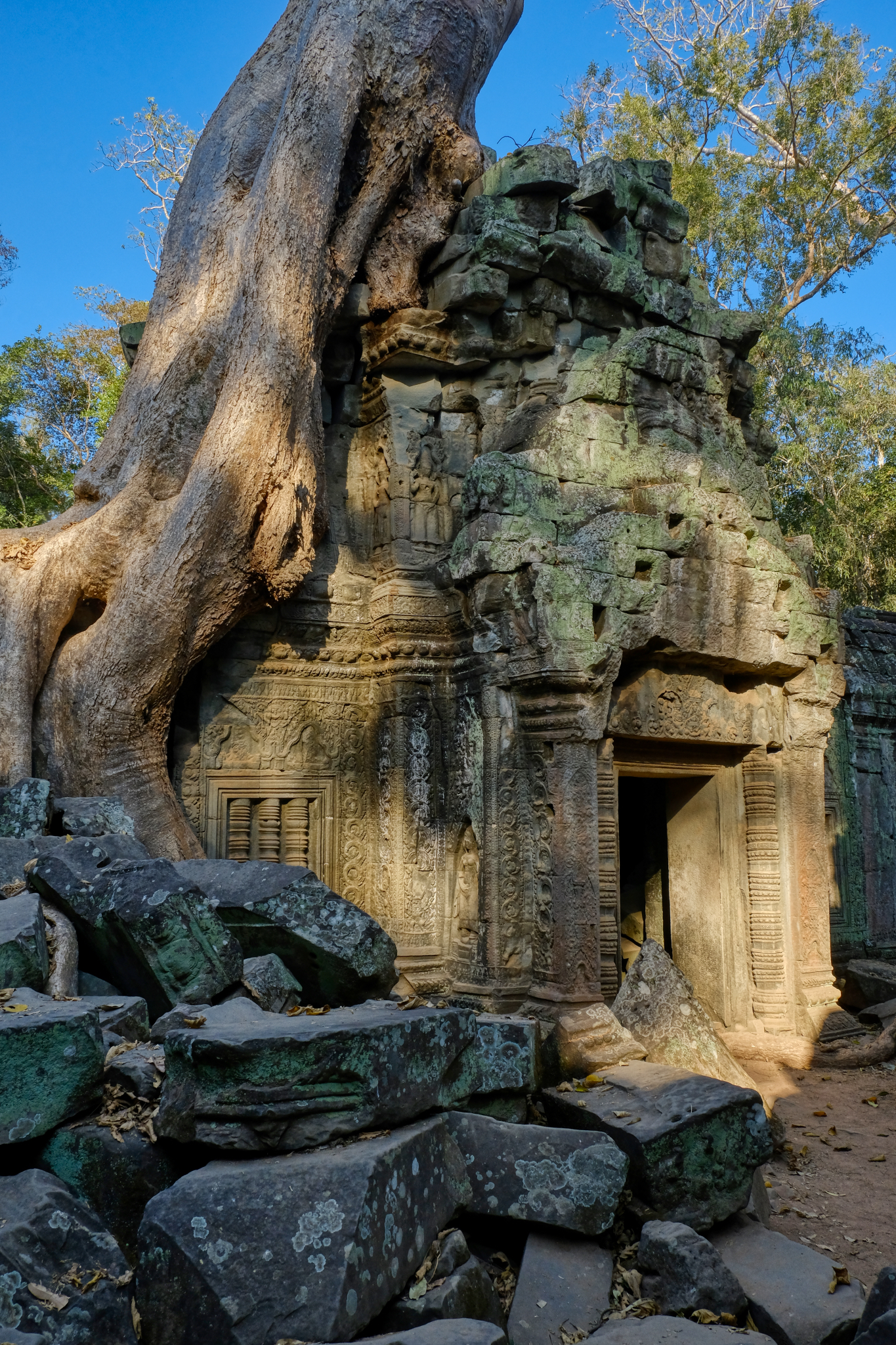 The iconic image of Angkor Wat is the giant tree roots embracing the temple stones.
The iconic image of Angkor Wat is the giant tree roots embracing the temple stones.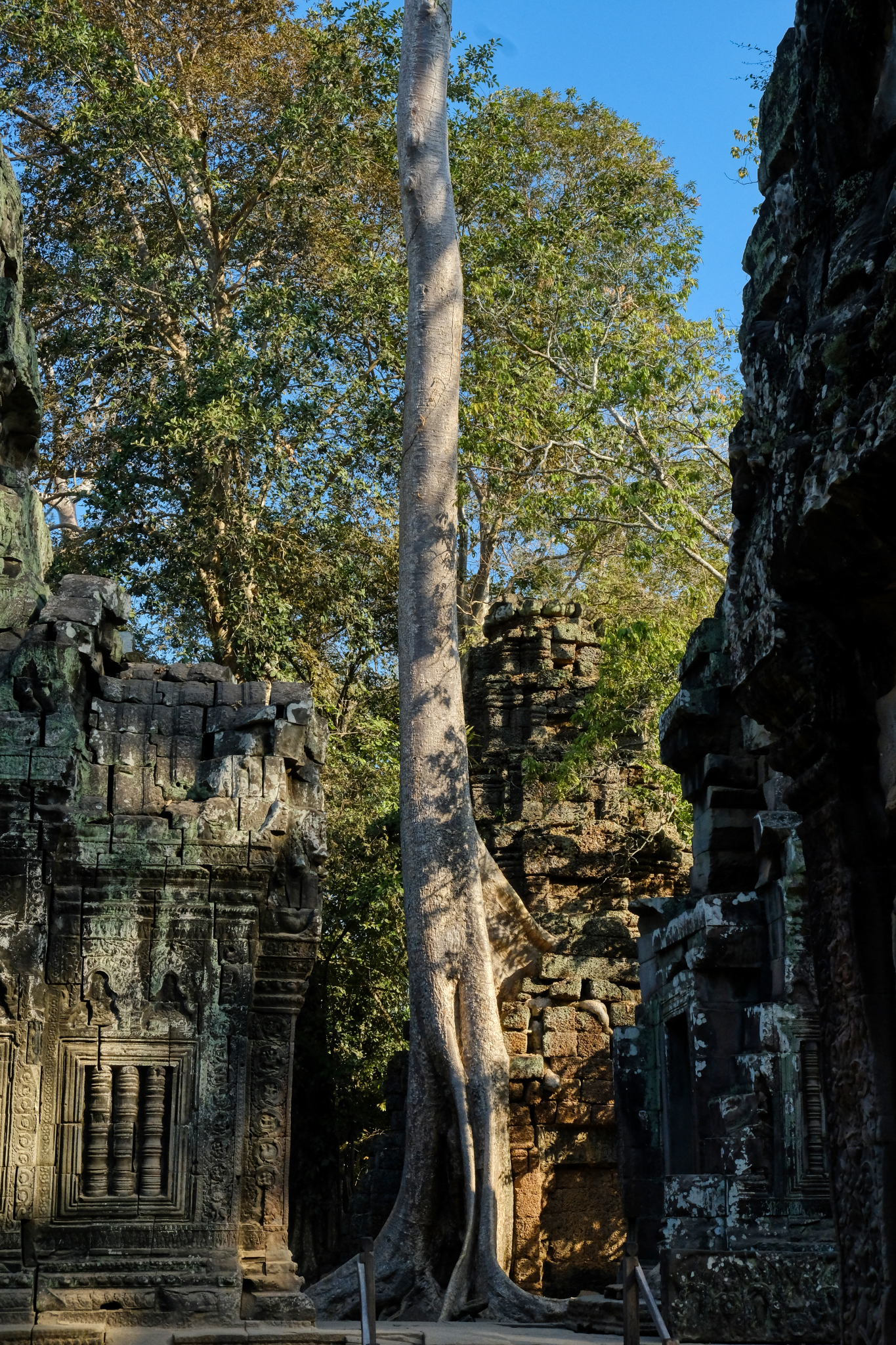 A mutual embrace . . . this tower looks as if it would fall without the support of the tree.
A mutual embrace . . . this tower looks as if it would fall without the support of the tree.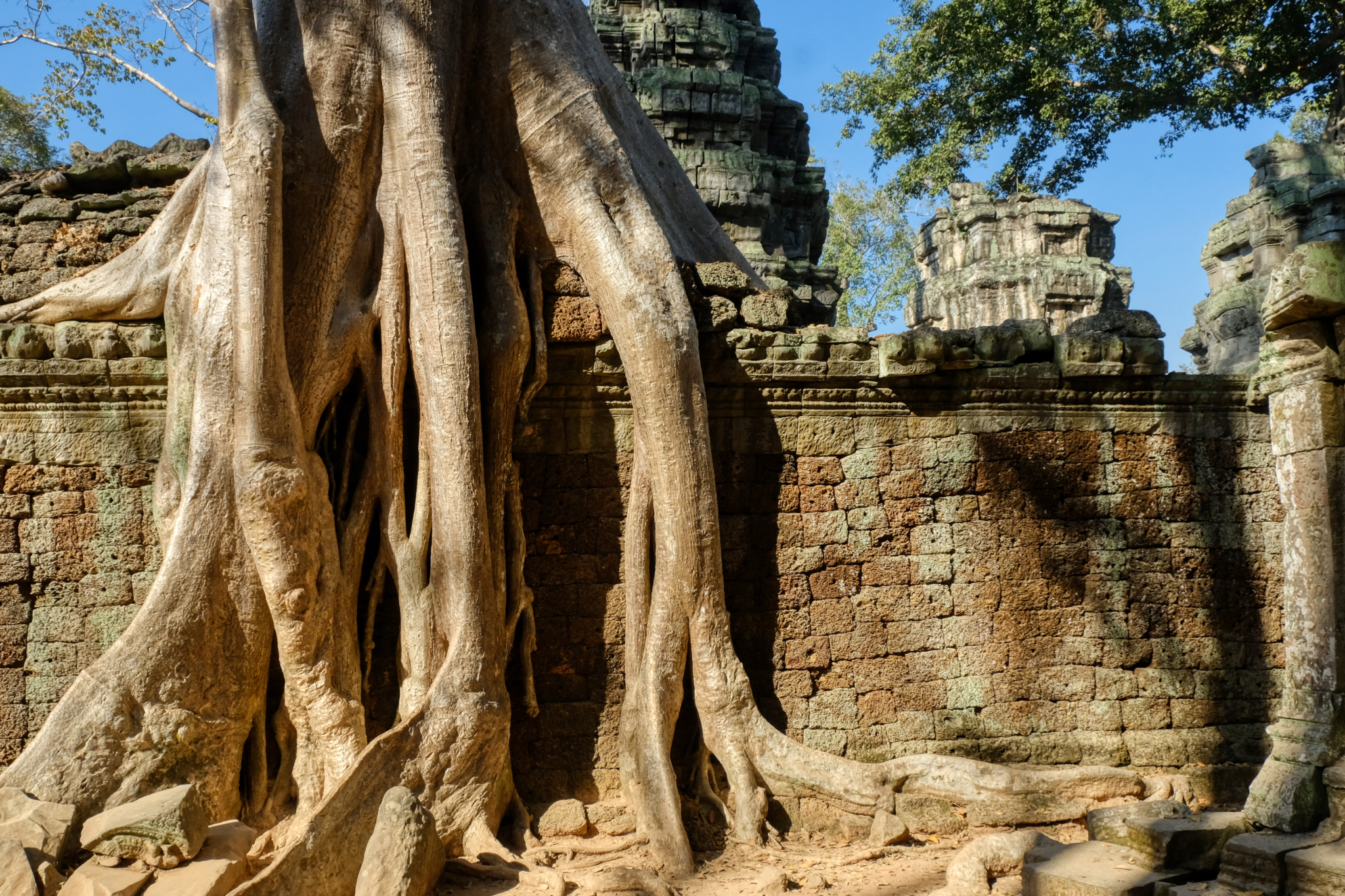 A wall with cascading roots. Truly awesome.
A wall with cascading roots. Truly awesome.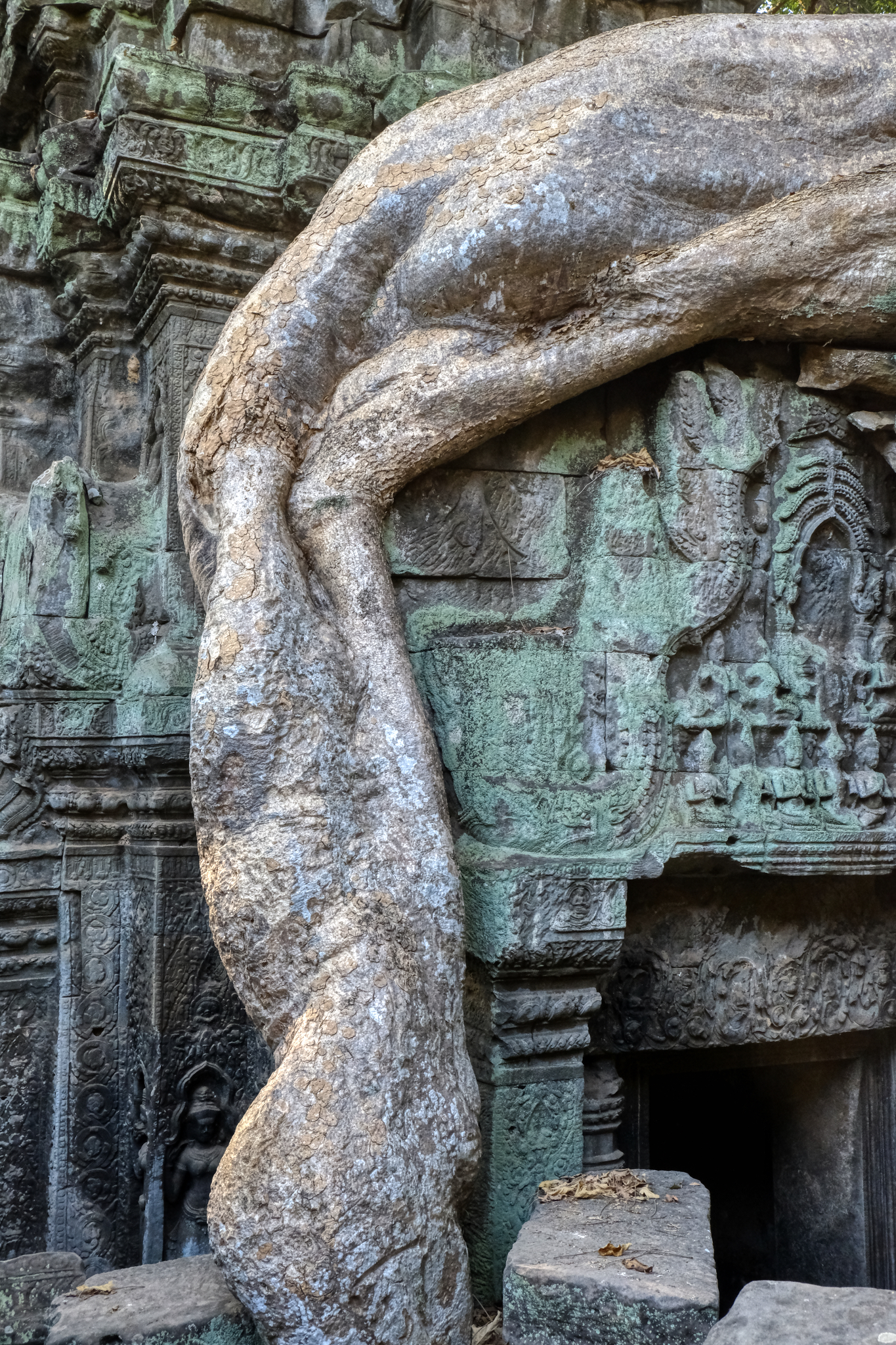 Like a limb from a giant alien animal . . . these roots are massive!
Like a limb from a giant alien animal . . . these roots are massive!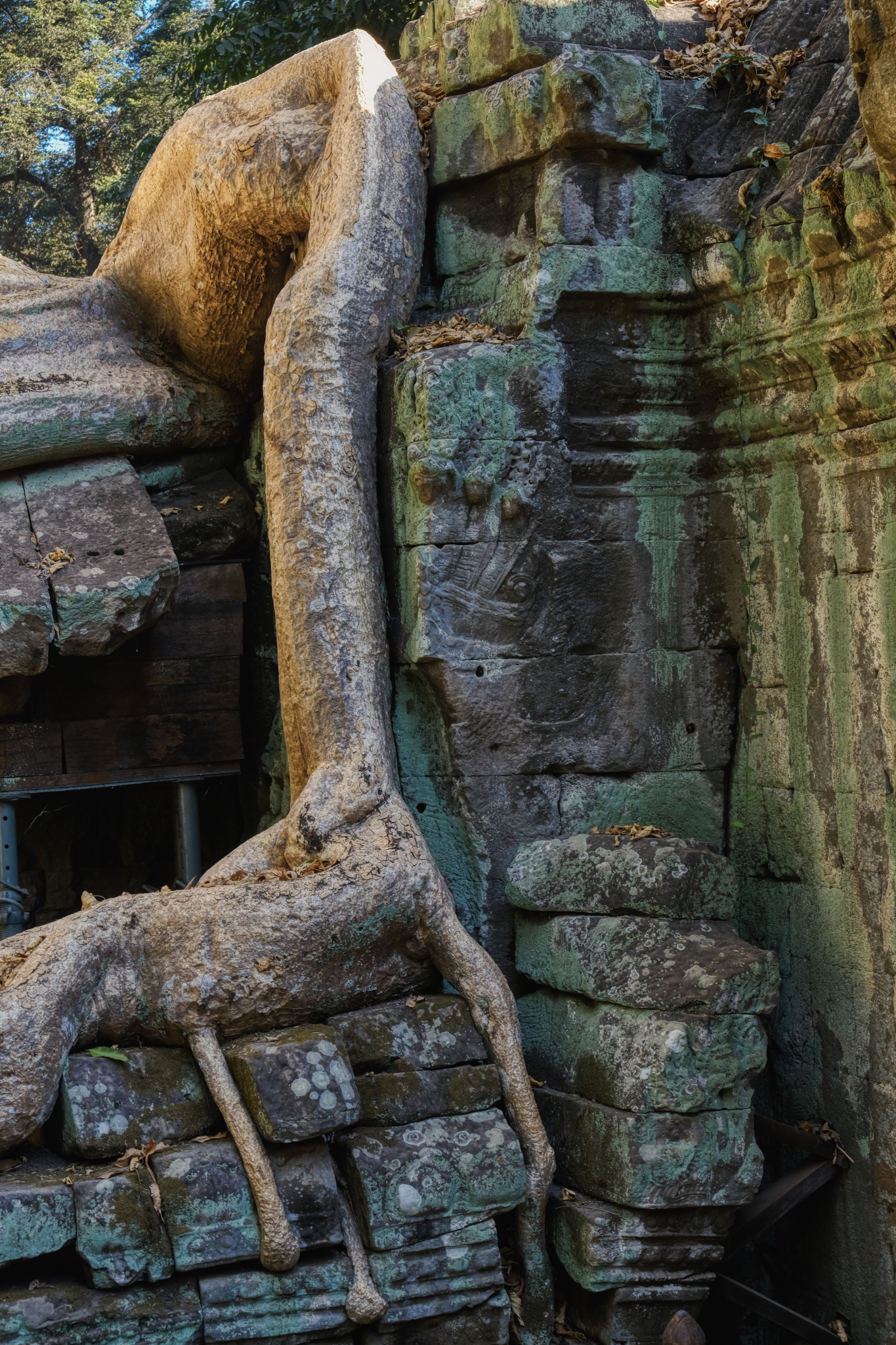 The temple in the grip of its alien overlord!
The temple in the grip of its alien overlord!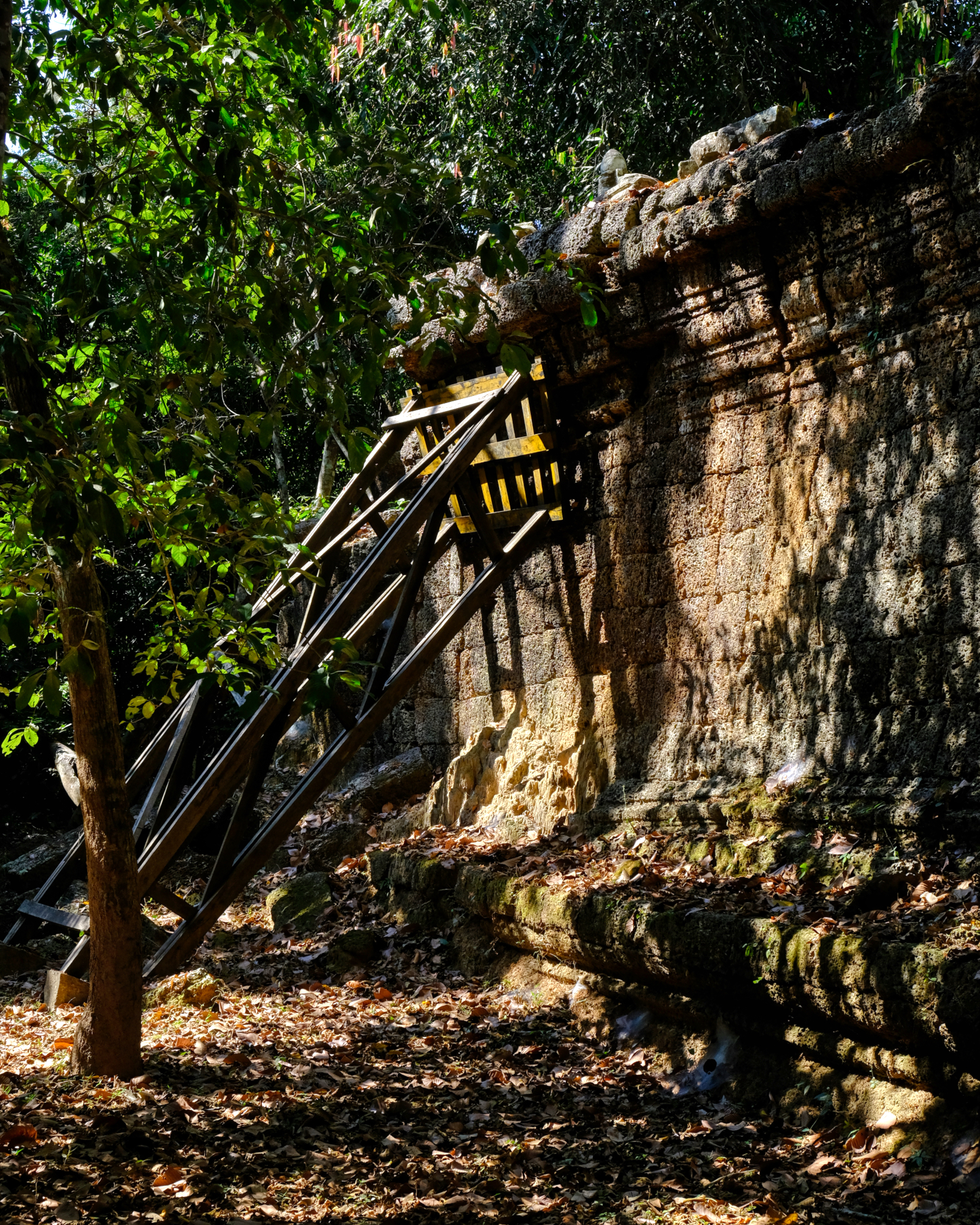 The aging walls supported. Most of the restoration work on Angkor Wat has been carries out by French and Cambodian archaeologists.
The aging walls supported. Most of the restoration work on Angkor Wat has been carries out by French and Cambodian archaeologists.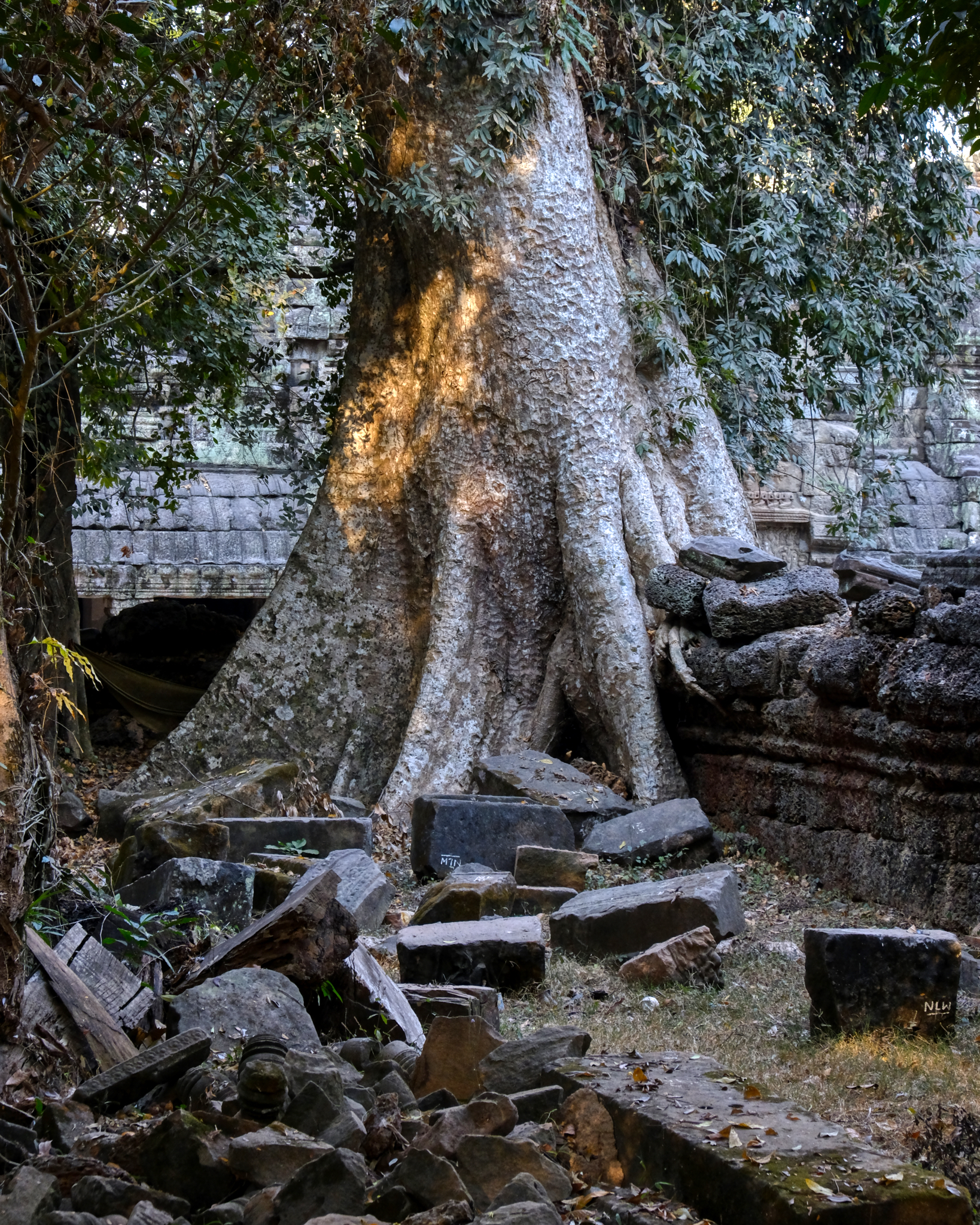 Much of the various sites remain unreconstructed.
Much of the various sites remain unreconstructed.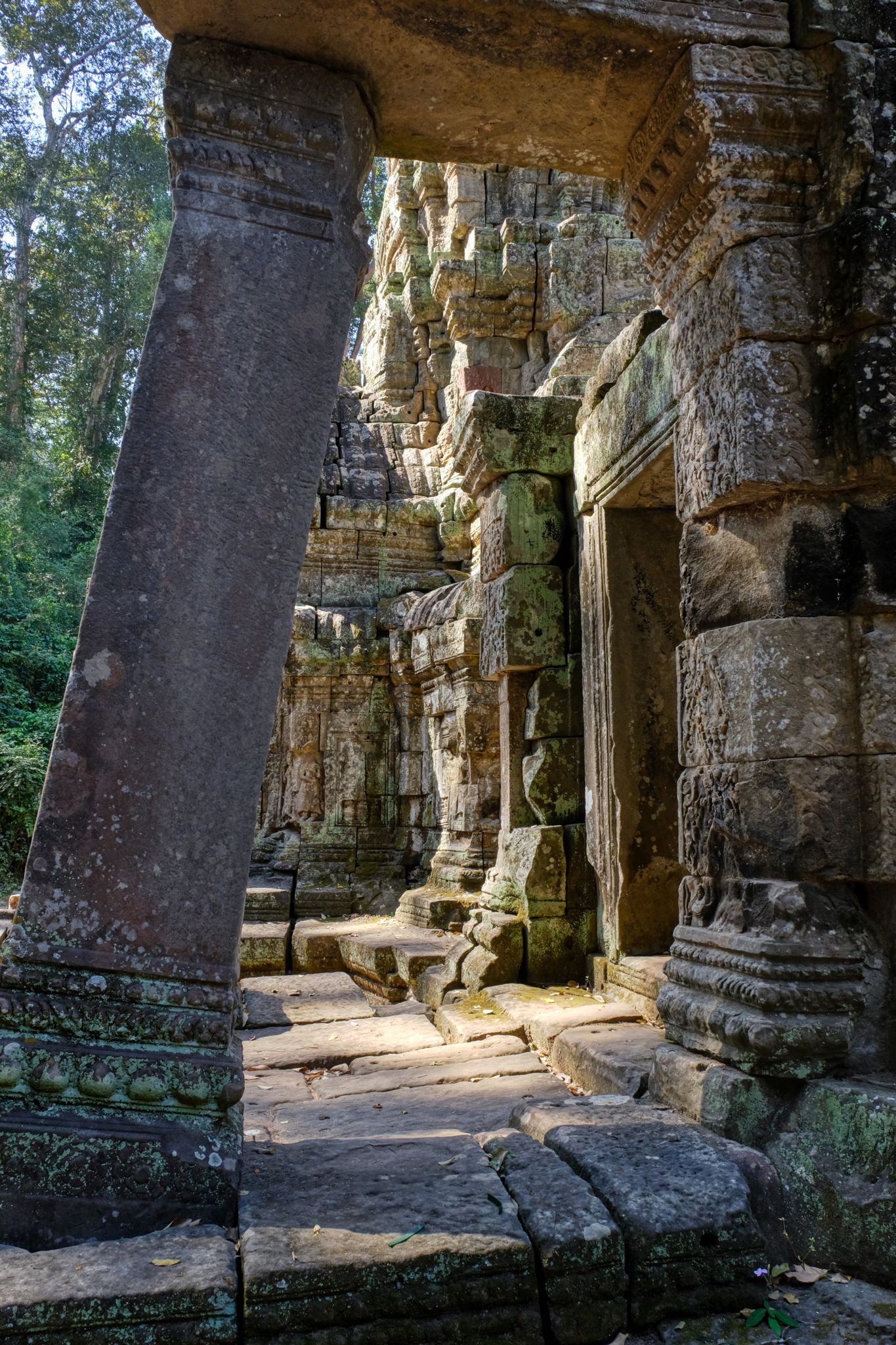 The state of deterioration is surprisingly less than one would have thought after 1000 years . . . but they build out of stone!
The state of deterioration is surprisingly less than one would have thought after 1000 years . . . but they build out of stone!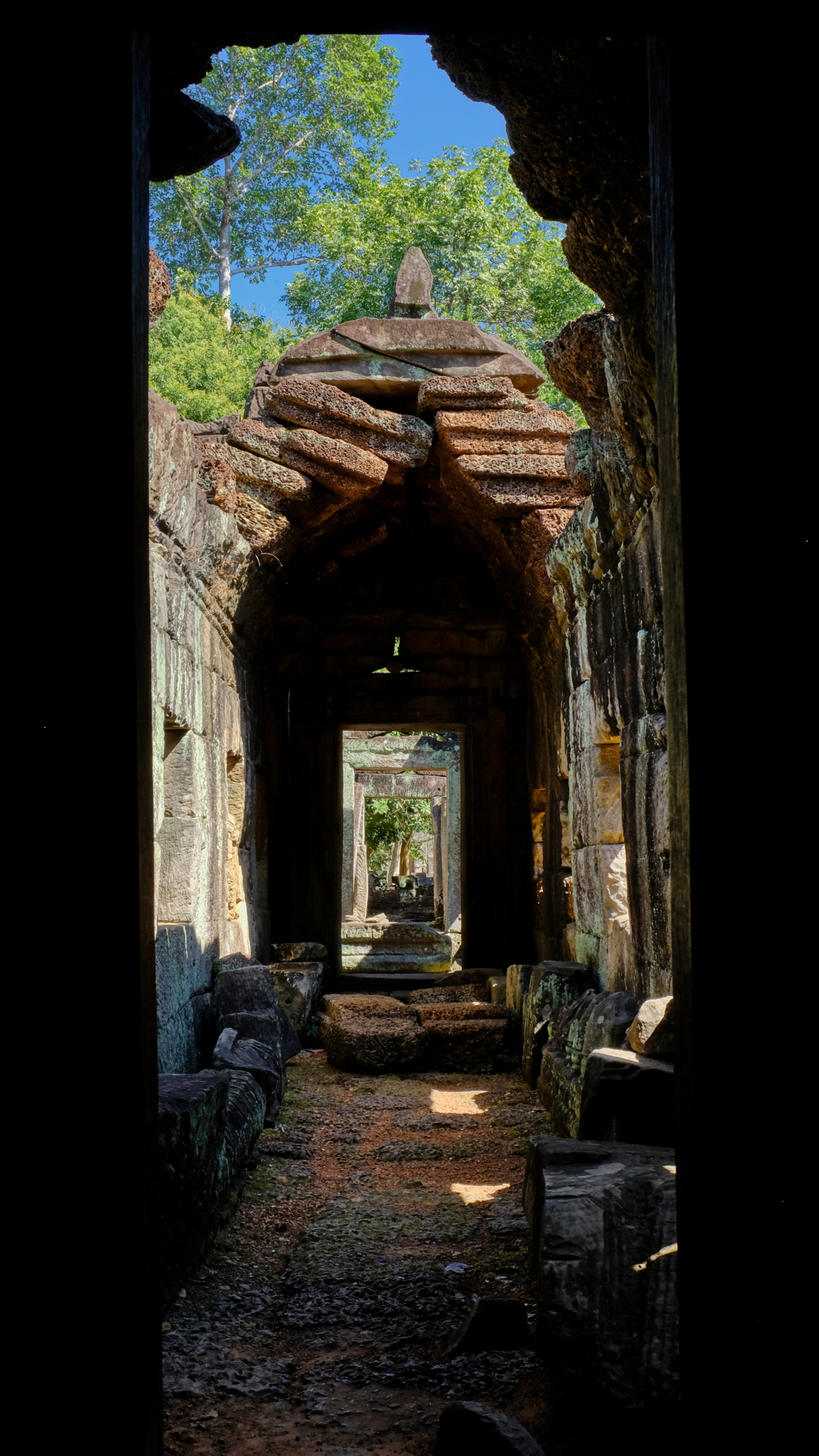 My friend and I wandered for many hours through these narrow mysterious passages, always surprised with some amazing scene around every corner . . .
My friend and I wandered for many hours through these narrow mysterious passages, always surprised with some amazing scene around every corner . . .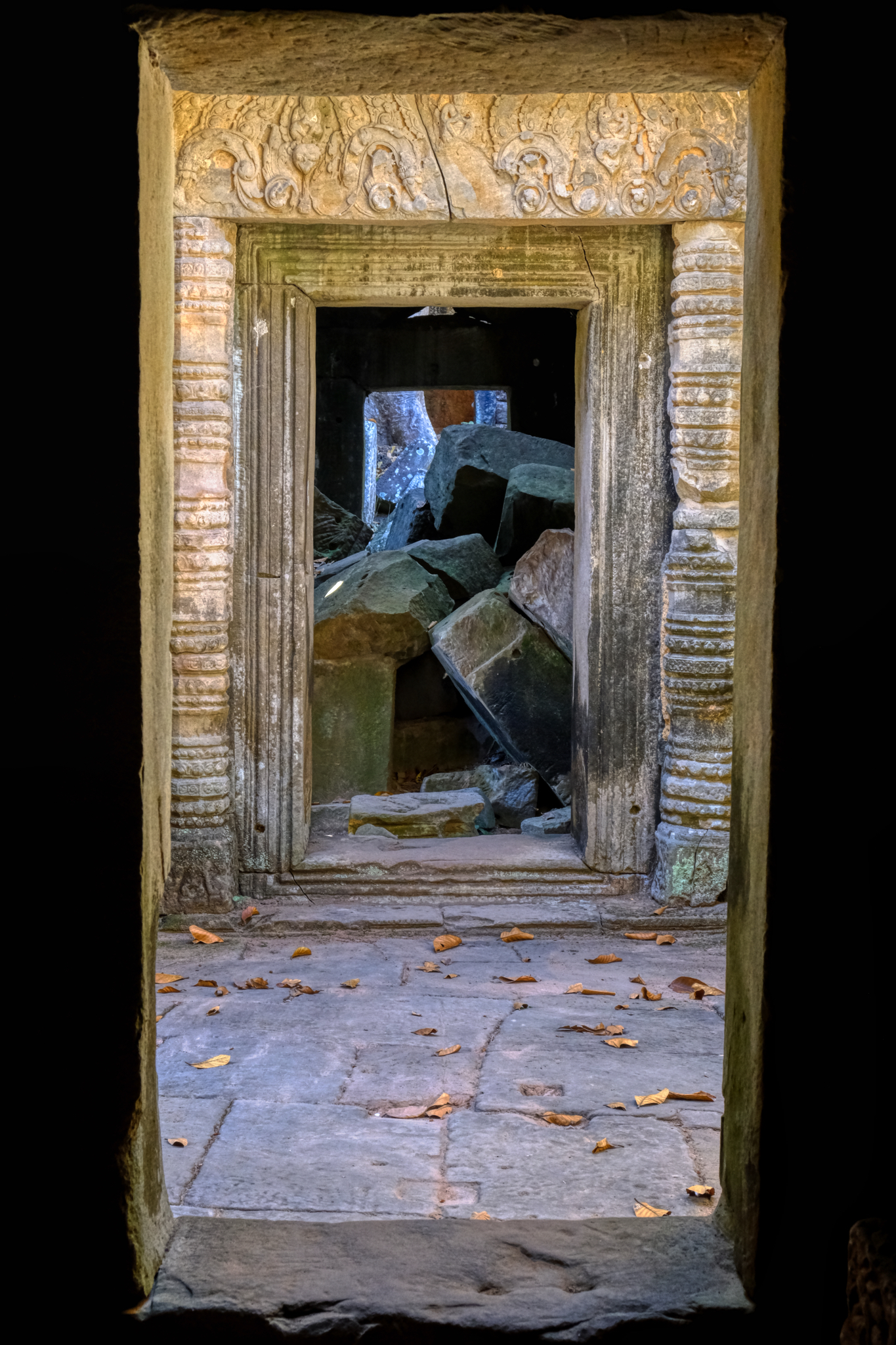 . . . always another scene of doors and passages . . . gorgeous . . .
. . . always another scene of doors and passages . . . gorgeous . . .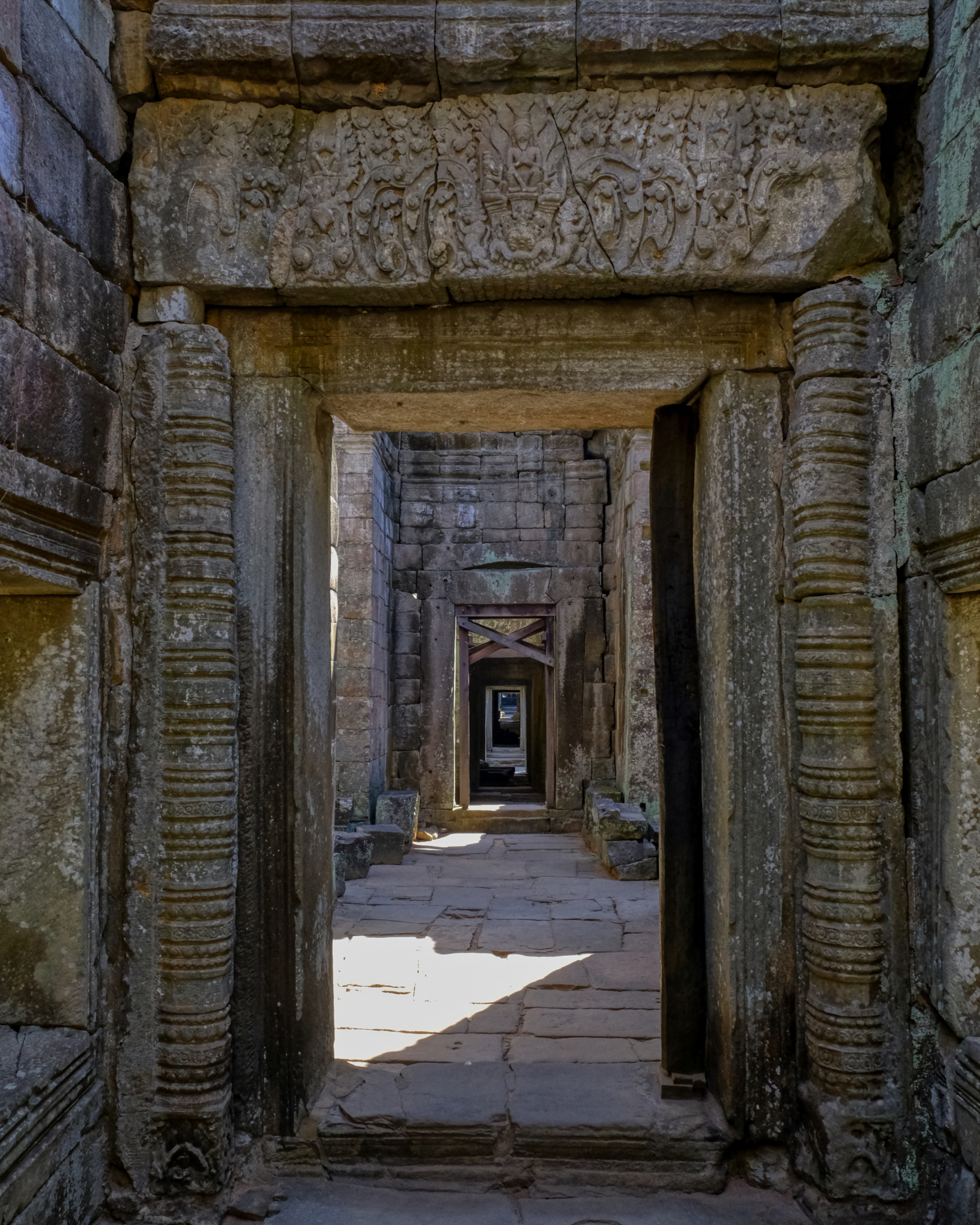 . . . on and on we walked, our mouths open in amazement all the while!
. . . on and on we walked, our mouths open in amazement all the while!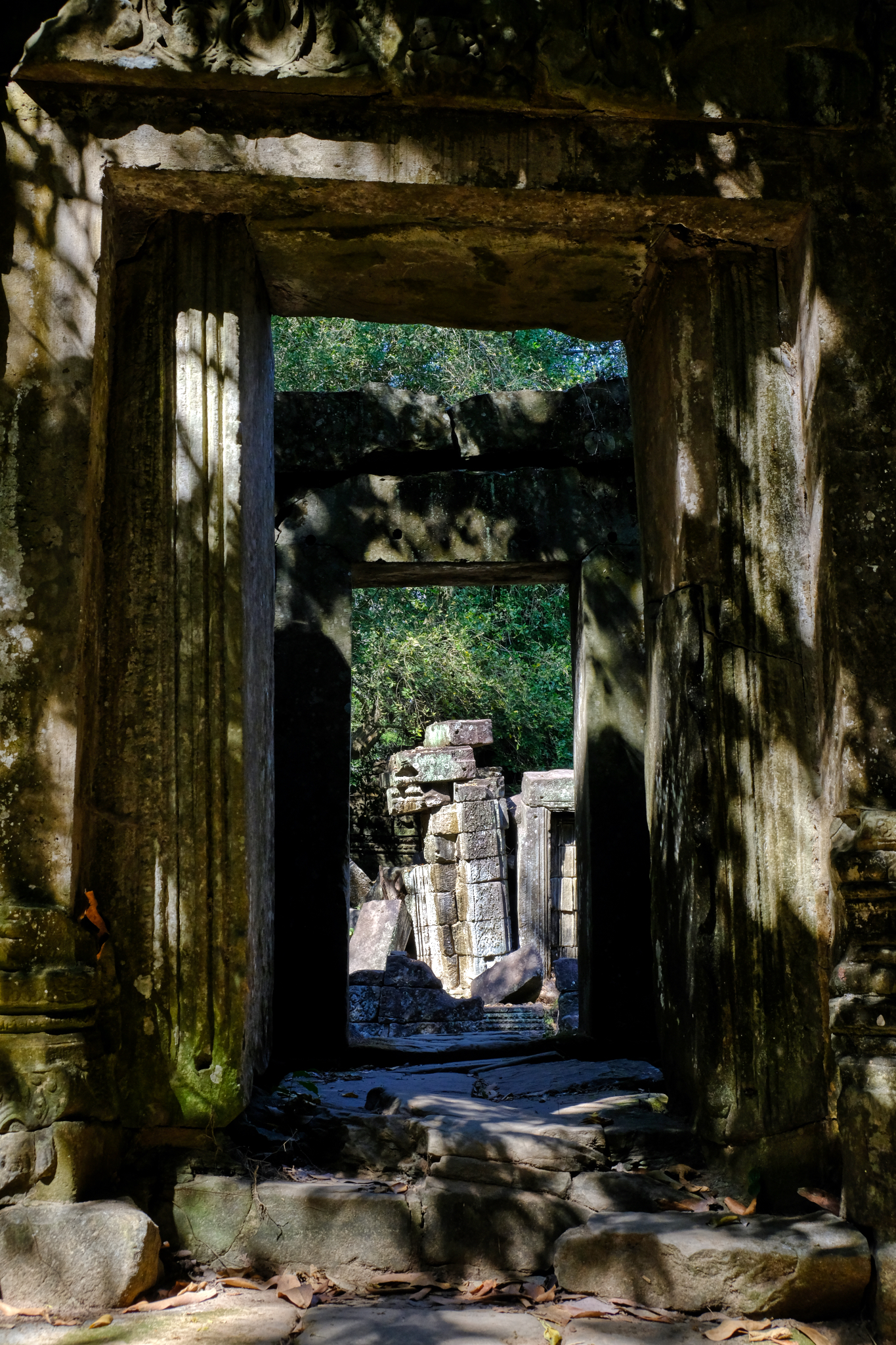 Our long walks through the interior passages would occasionally lead us back outdoors.
Our long walks through the interior passages would occasionally lead us back outdoors.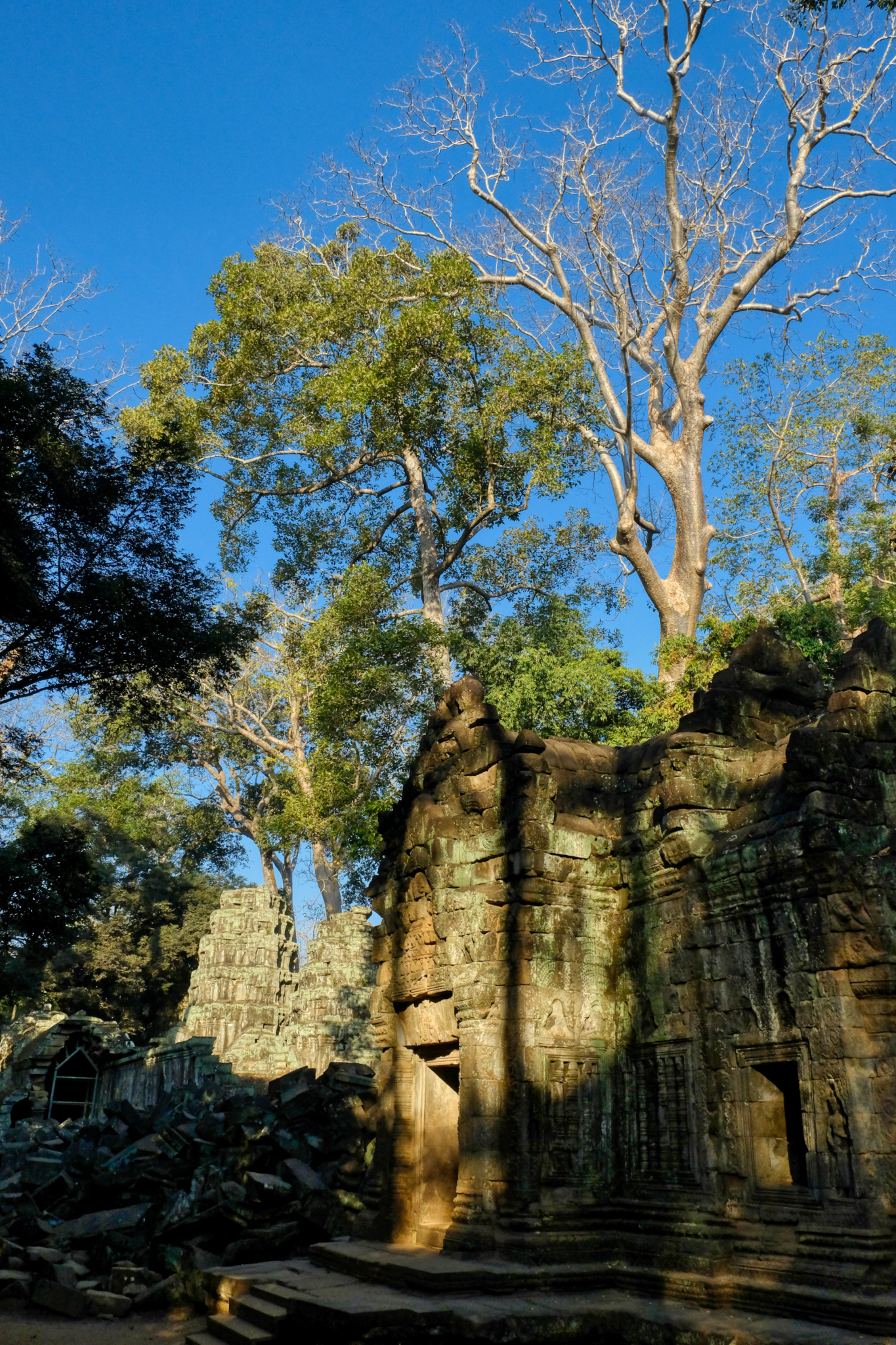 And back outside we were greeted with more amazing ancient monumental temple structures.
And back outside we were greeted with more amazing ancient monumental temple structures.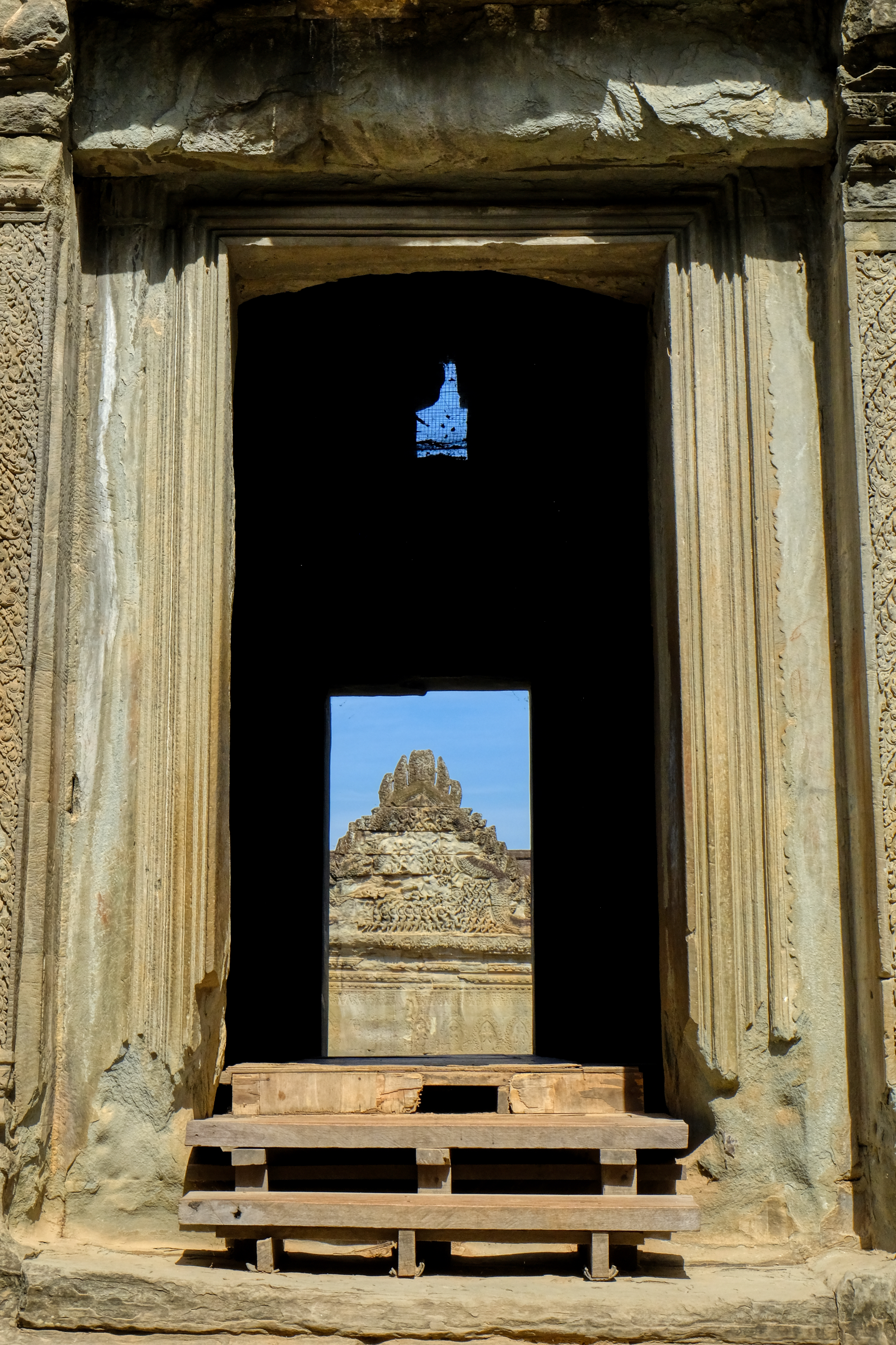 Always tempted to explore in another courtyard . . . endless curiosity.
Always tempted to explore in another courtyard . . . endless curiosity.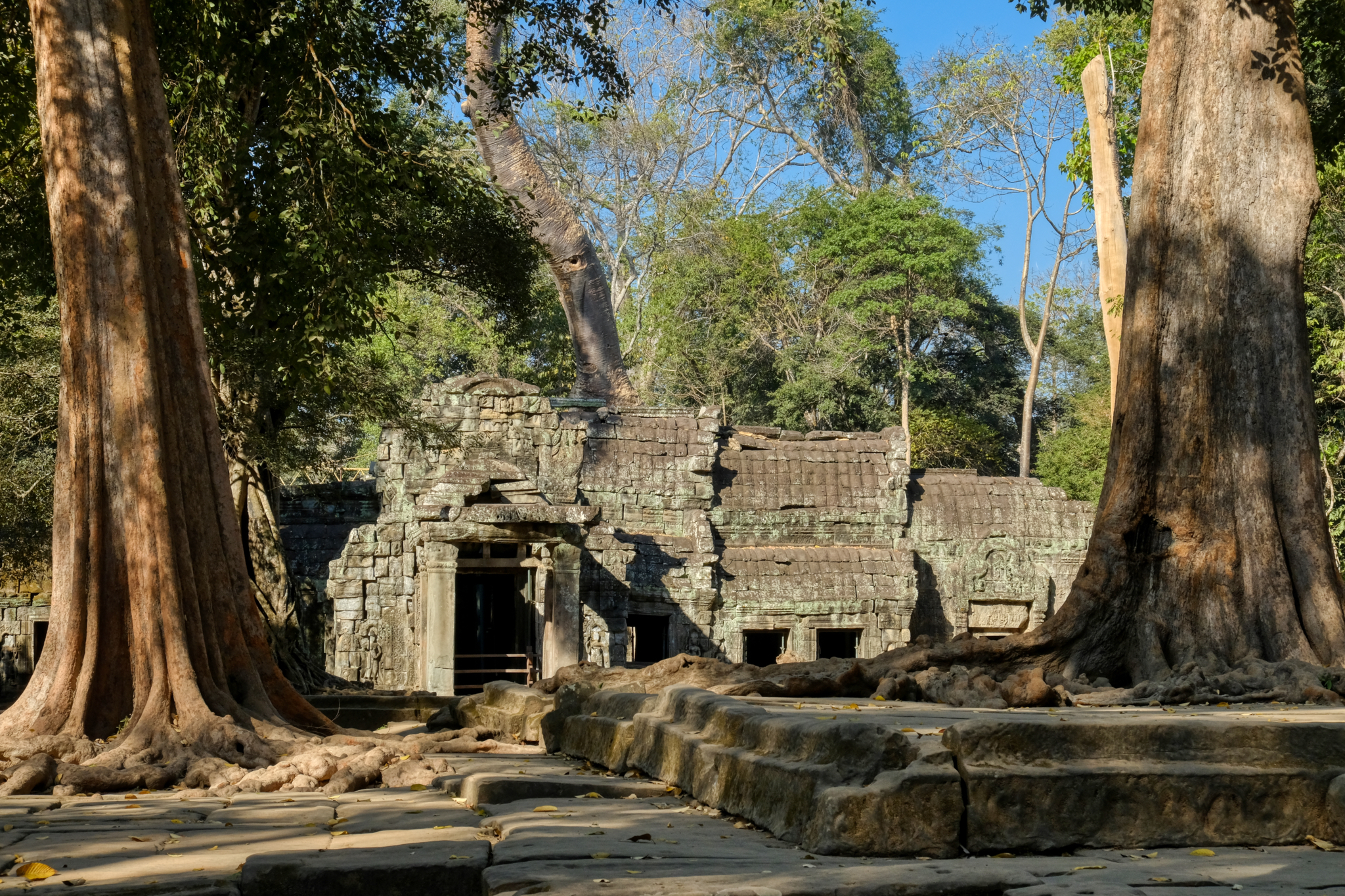 We had a car and driver each day who knew all the temples and would drive us between them. A new temple.
We had a car and driver each day who knew all the temples and would drive us between them. A new temple.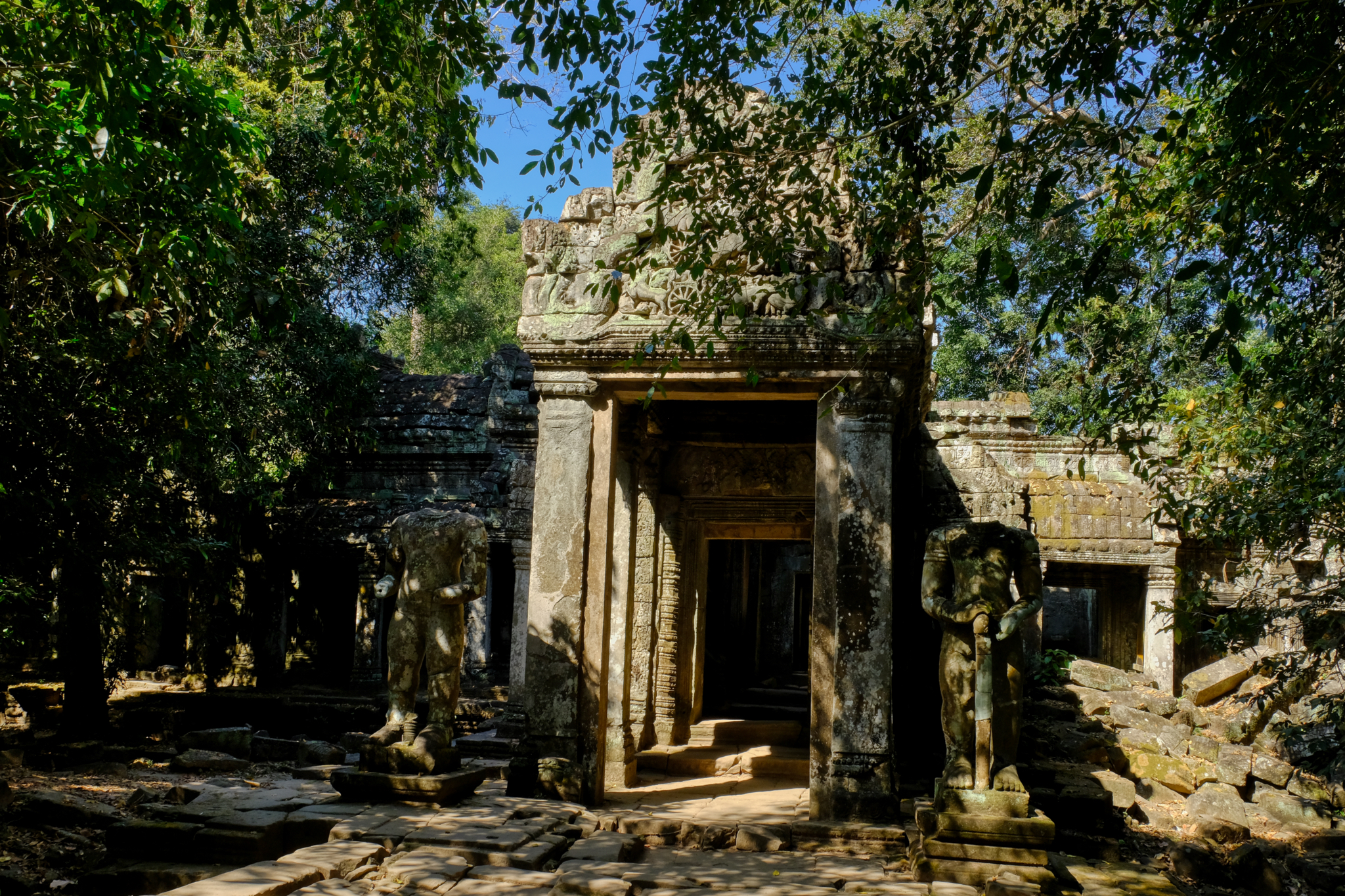 There were signs of vandalism and pilfering of stone figure heads.
There were signs of vandalism and pilfering of stone figure heads.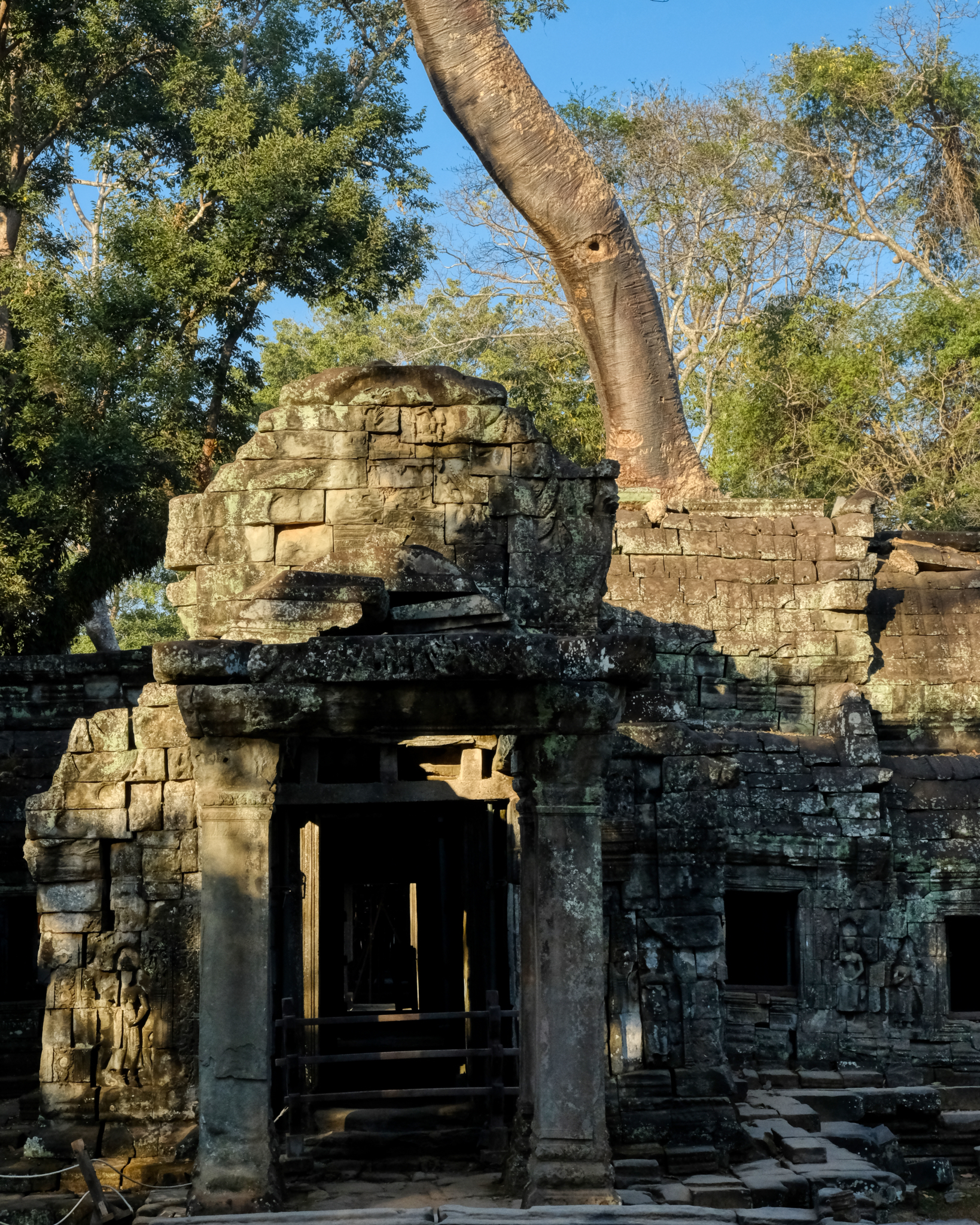 A sweet temple sala.
A sweet temple sala.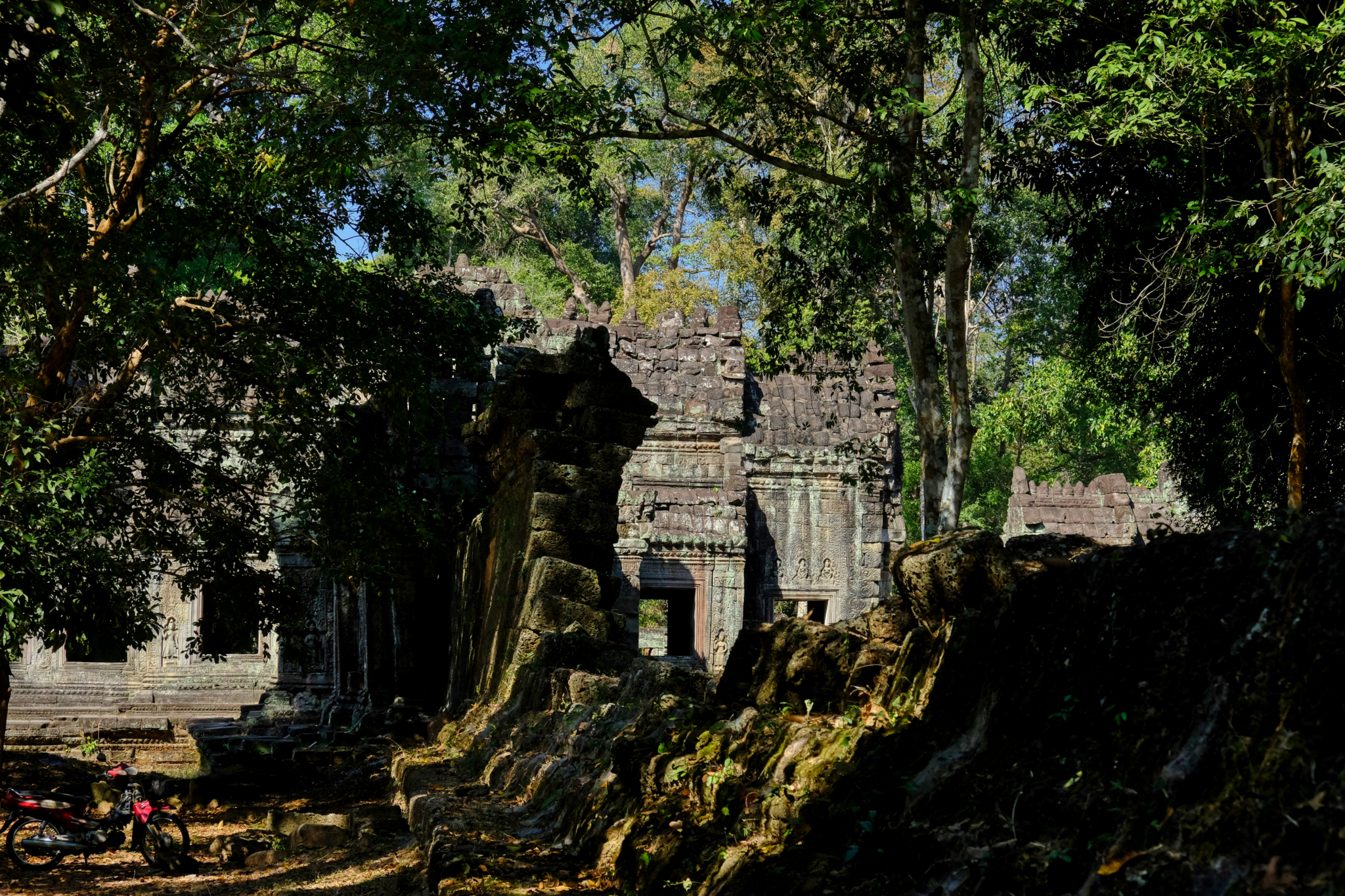 In deep shade or in bright sun, the temples are a marvel of detail . . .
In deep shade or in bright sun, the temples are a marvel of detail . . . 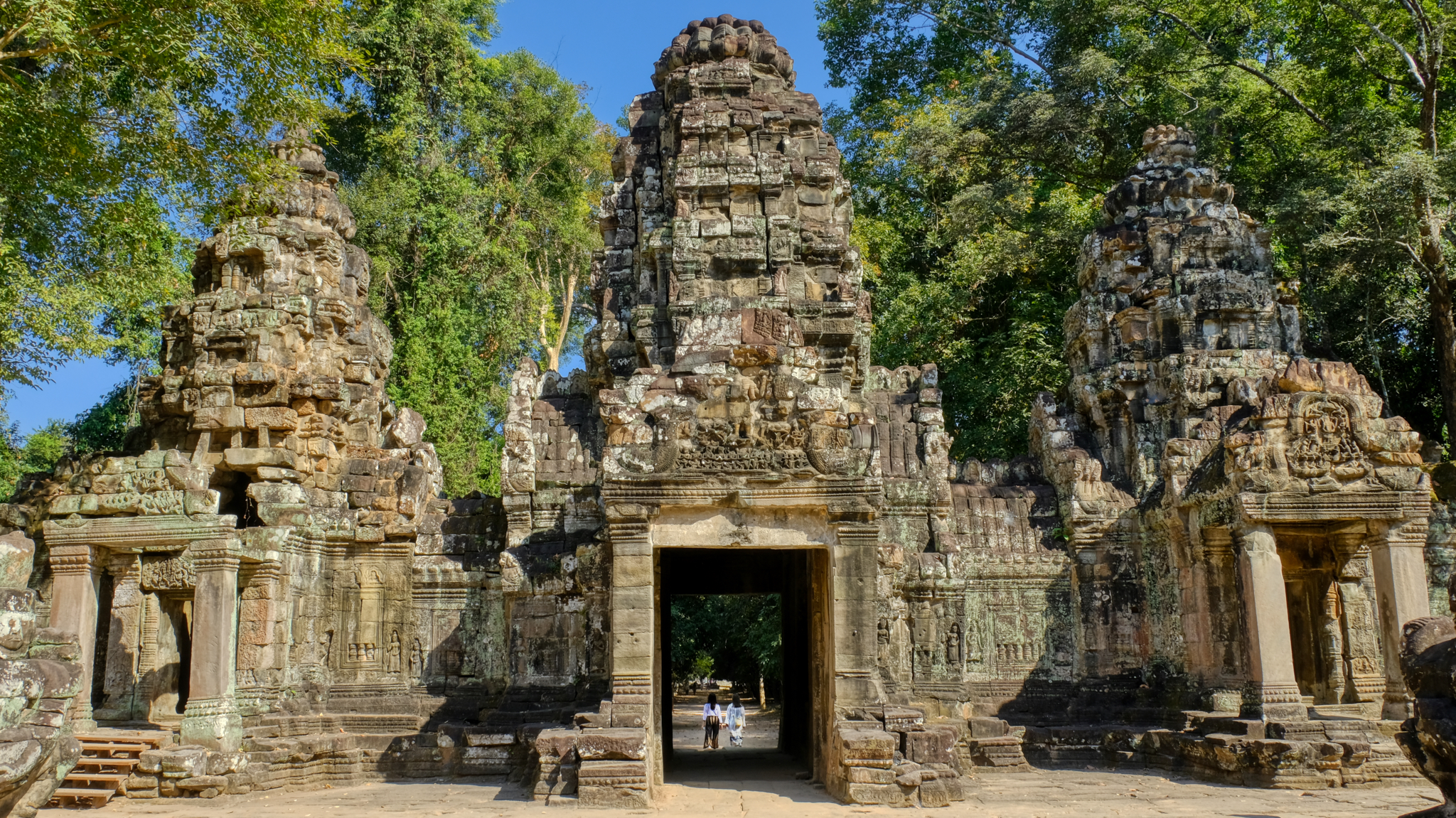 One of the many extraordinary gates.
One of the many extraordinary gates.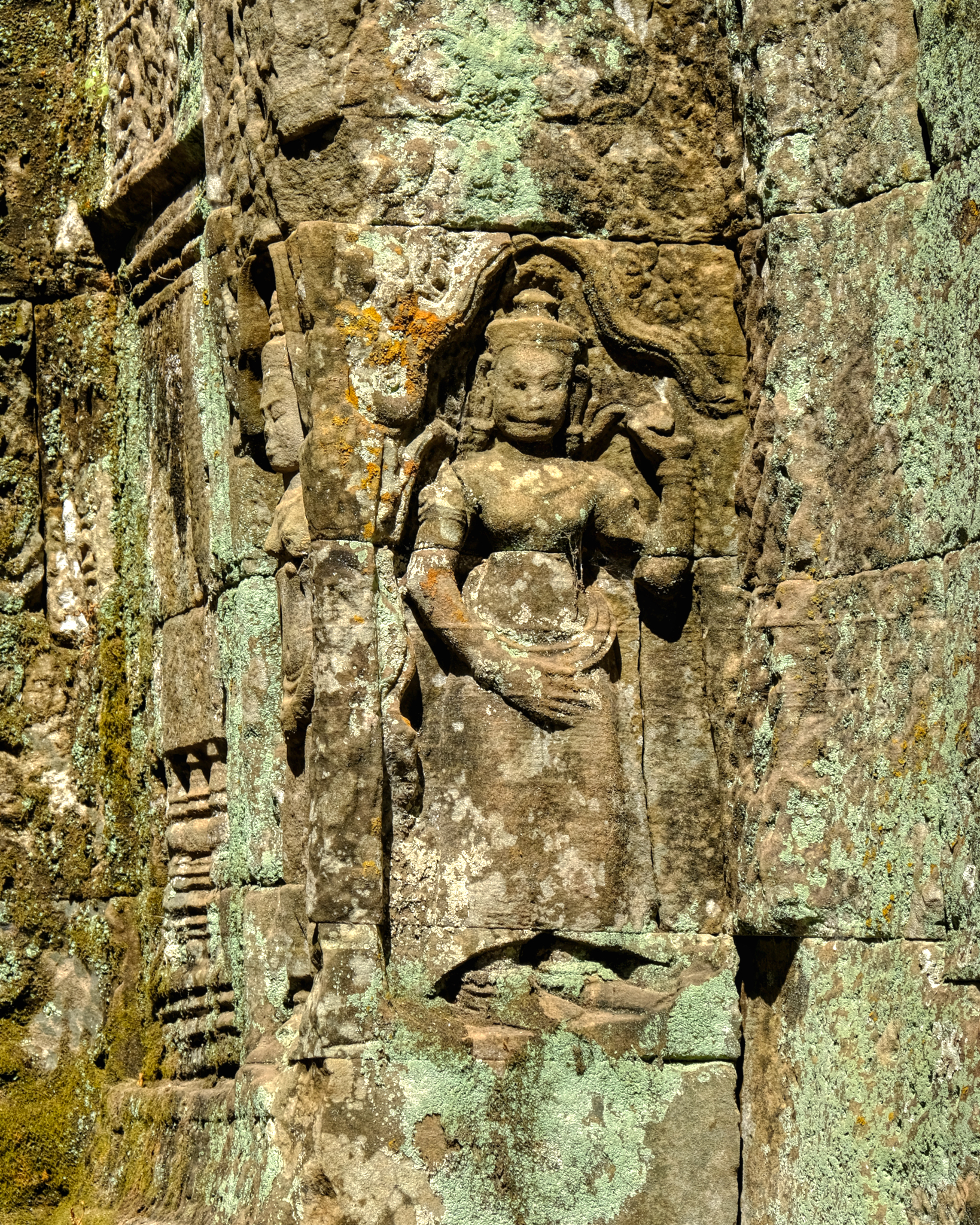 These gates were carved in exquisite detail. Cambodia is a tropical country with a considerable wet season each year, as evidenced by the moss and mold that often covered the monuments.
These gates were carved in exquisite detail. Cambodia is a tropical country with a considerable wet season each year, as evidenced by the moss and mold that often covered the monuments.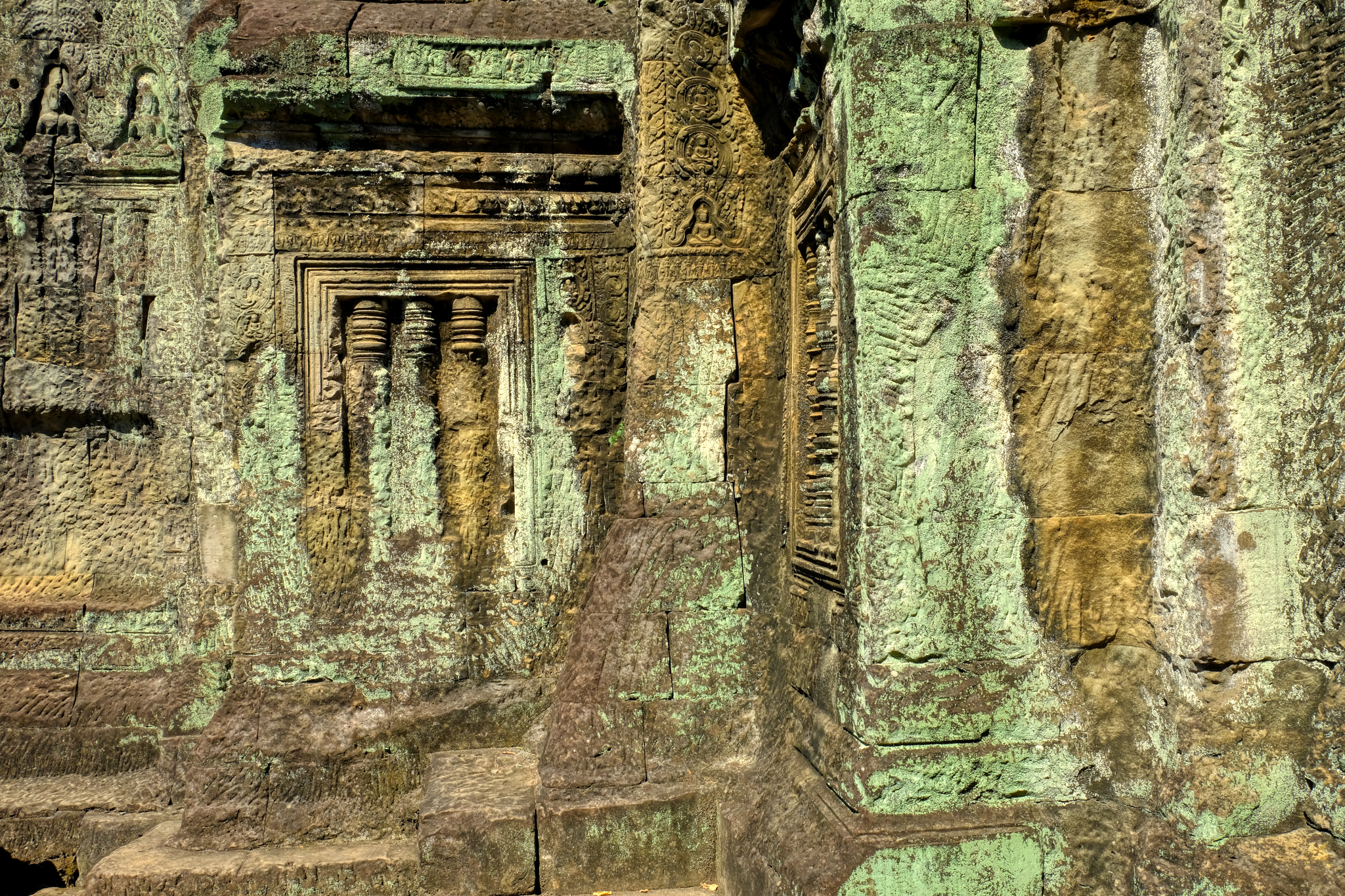 The harsh, almost clinical, light actually helps in these photos of the tropical encrusting of the ruins.
The harsh, almost clinical, light actually helps in these photos of the tropical encrusting of the ruins.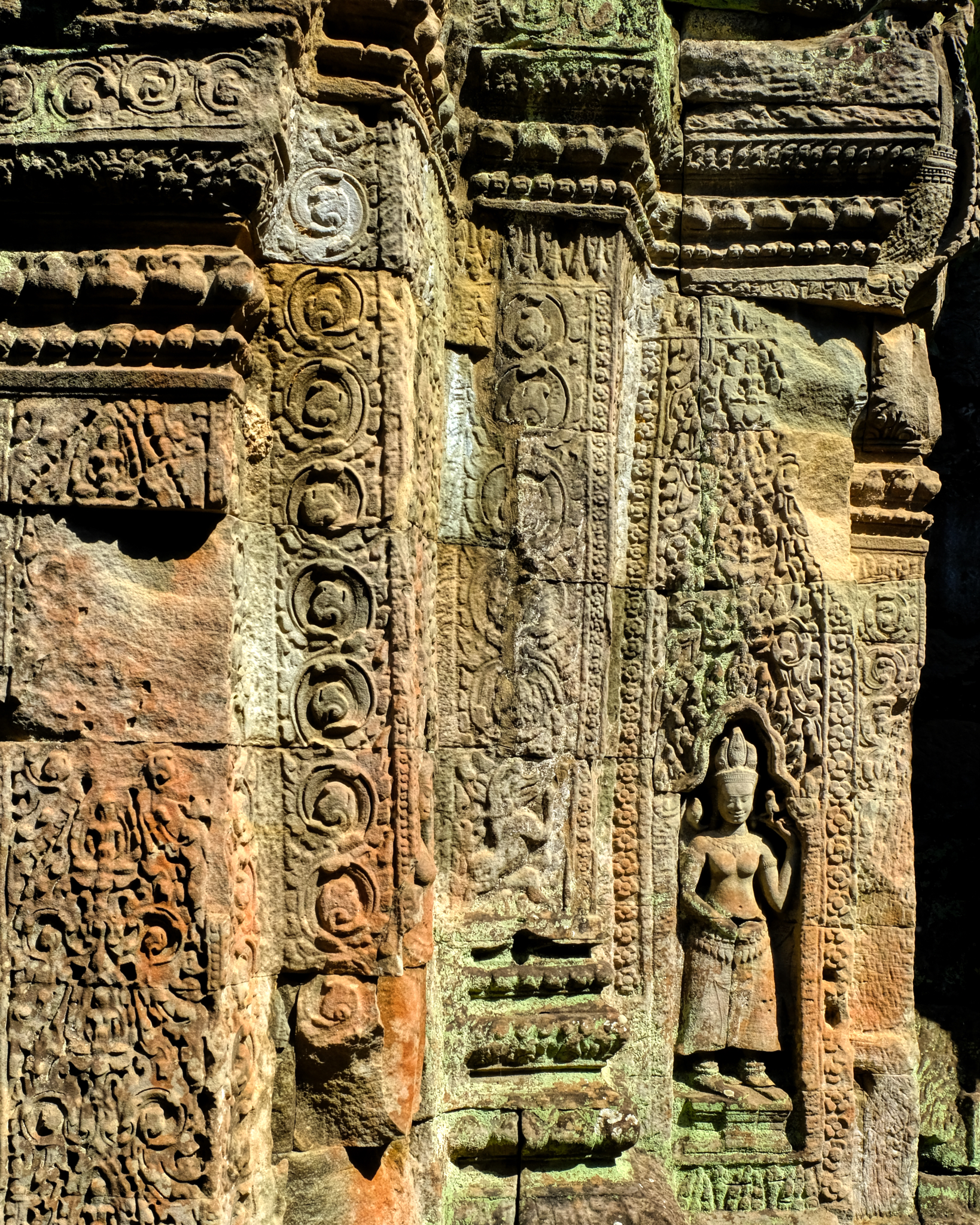 Such beautifully carved figures and patterns everywhere.
Such beautifully carved figures and patterns everywhere.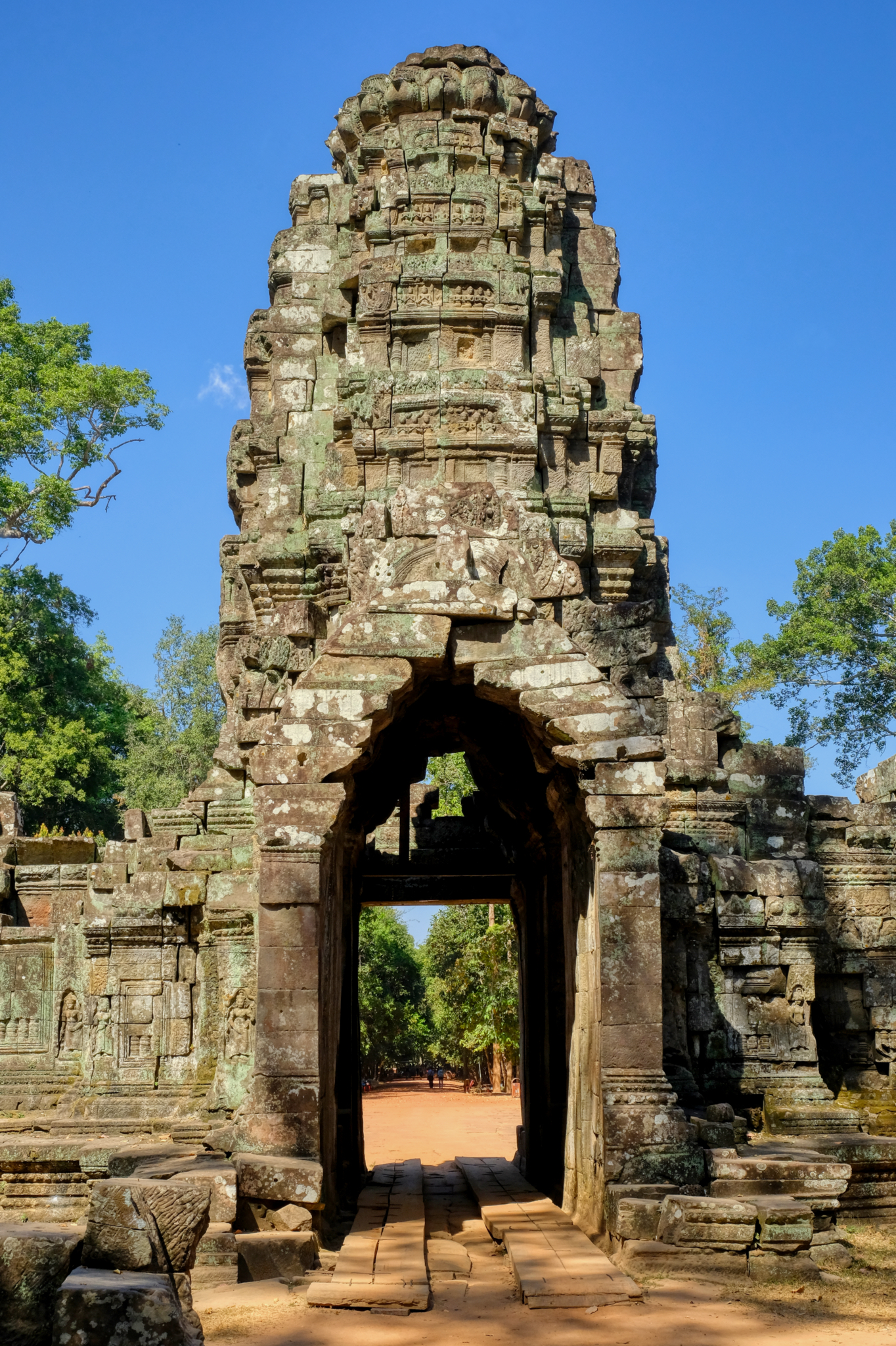 I loved these gates . . .
I loved these gates . . . 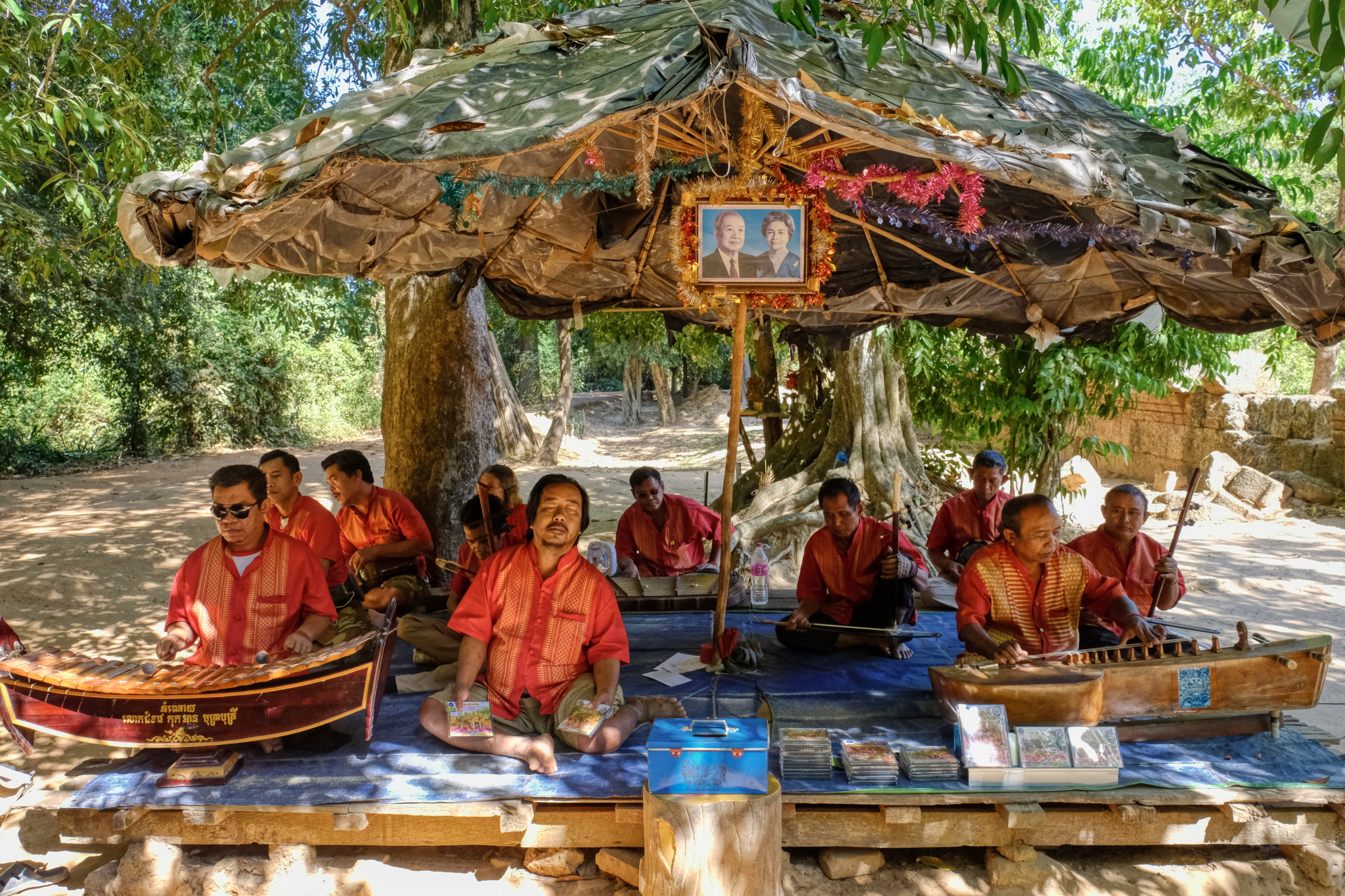 After walking through the gates, it was sometimes a kilometer or more until you arrived at the temple complex. Sometimes there would be traditional Khmer musicians along the walk.
After walking through the gates, it was sometimes a kilometer or more until you arrived at the temple complex. Sometimes there would be traditional Khmer musicians along the walk.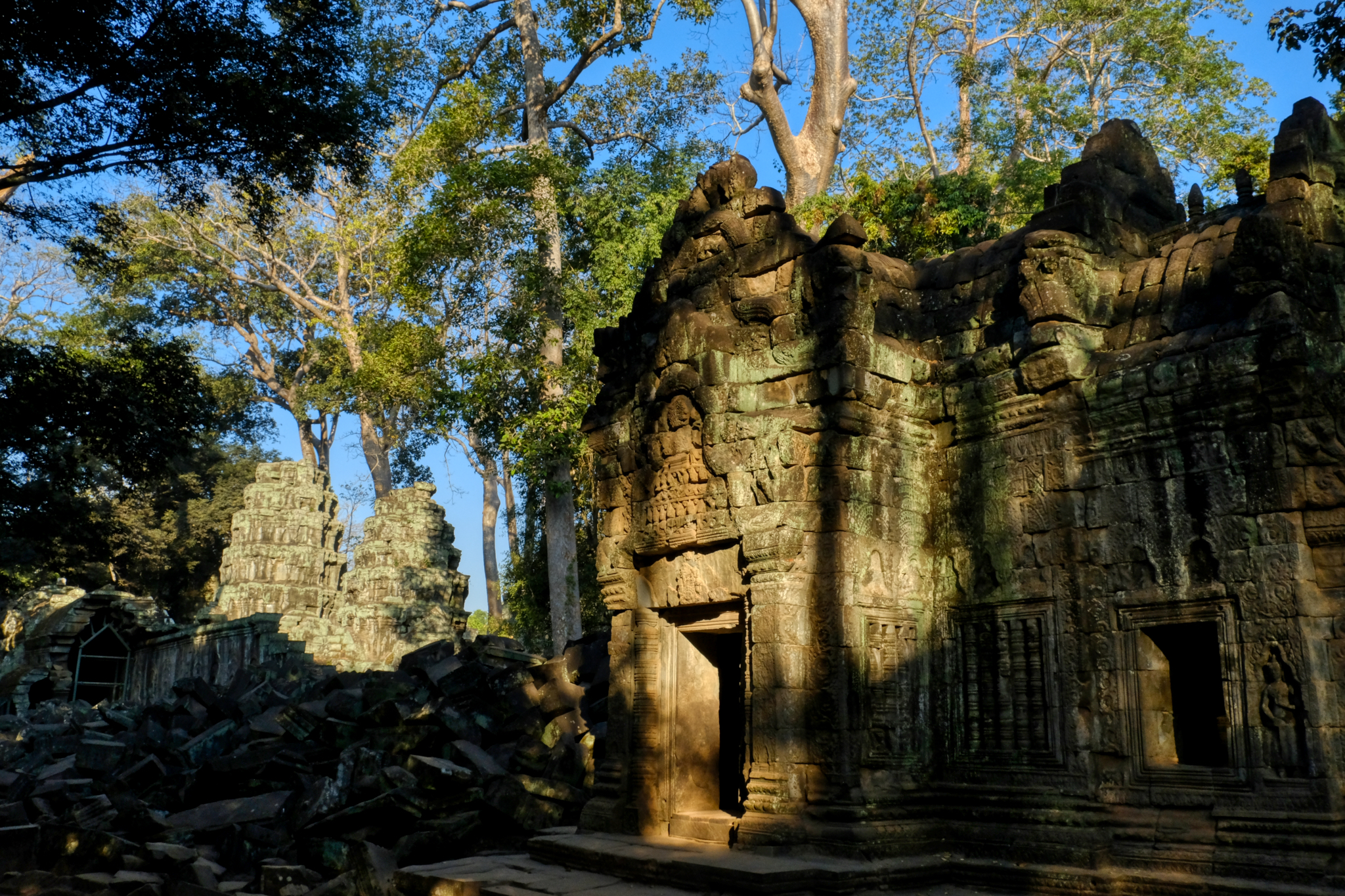 We spent two full days, starting before sunrise and ending after sunset, among the Angkor ruin.
We spent two full days, starting before sunrise and ending after sunset, among the Angkor ruin.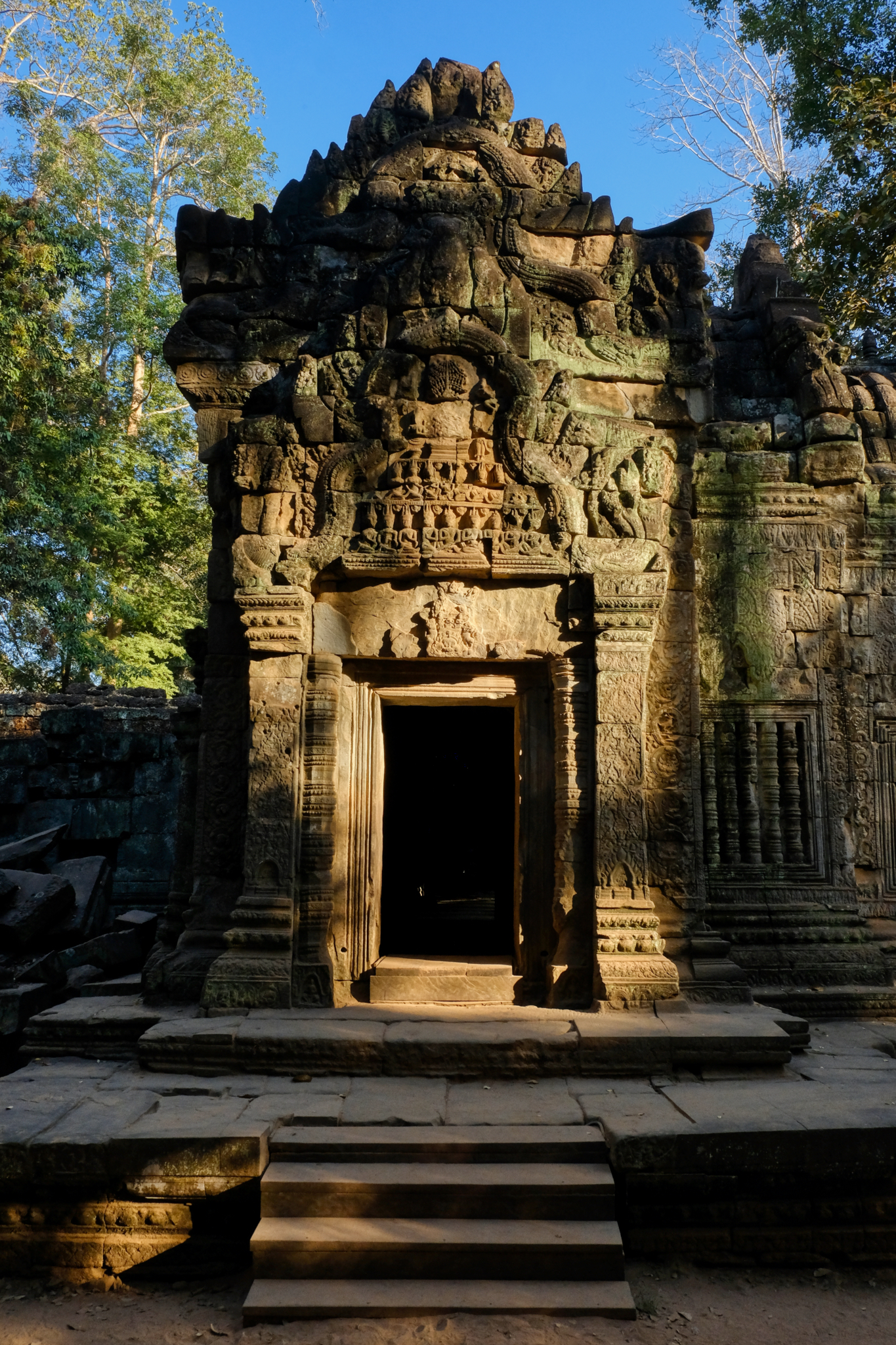 The late, angled light made for some fantastic conditions for photography.
The late, angled light made for some fantastic conditions for photography.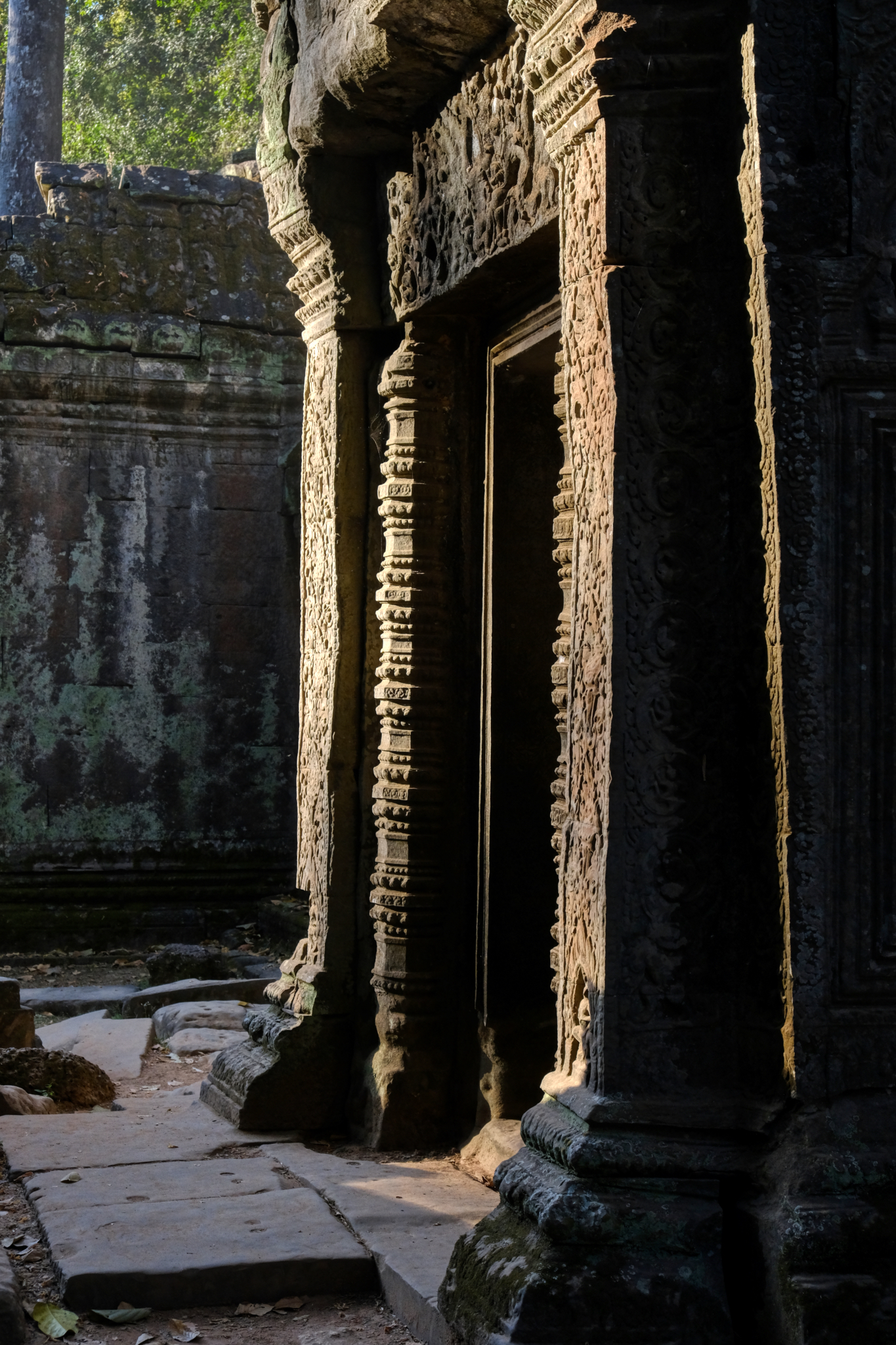 Late light and shadow on the Angkor Wat ruins.
Late light and shadow on the Angkor Wat ruins.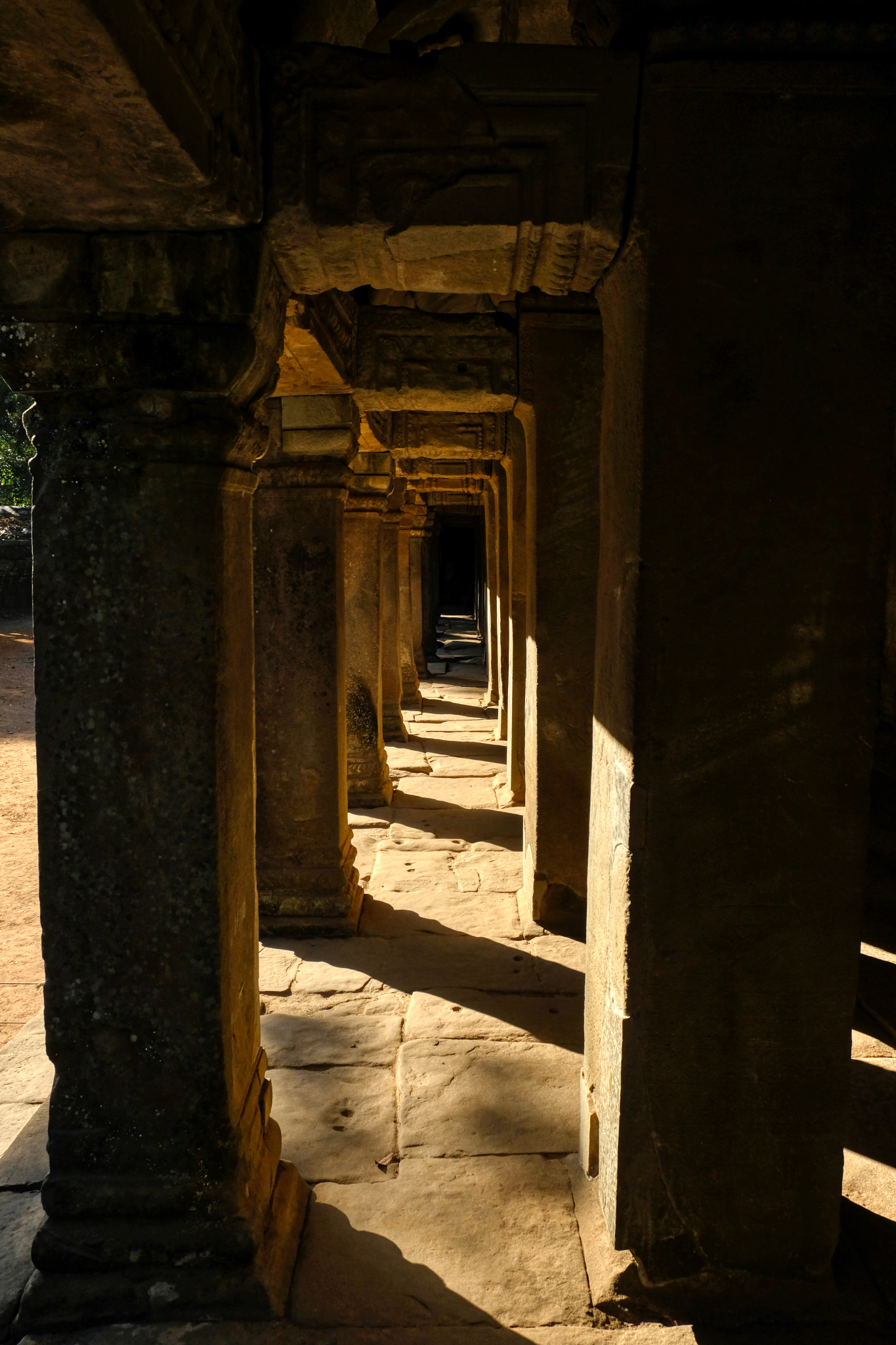 Sharp shadow in the Angkor Wat colonnades.
Sharp shadow in the Angkor Wat colonnades.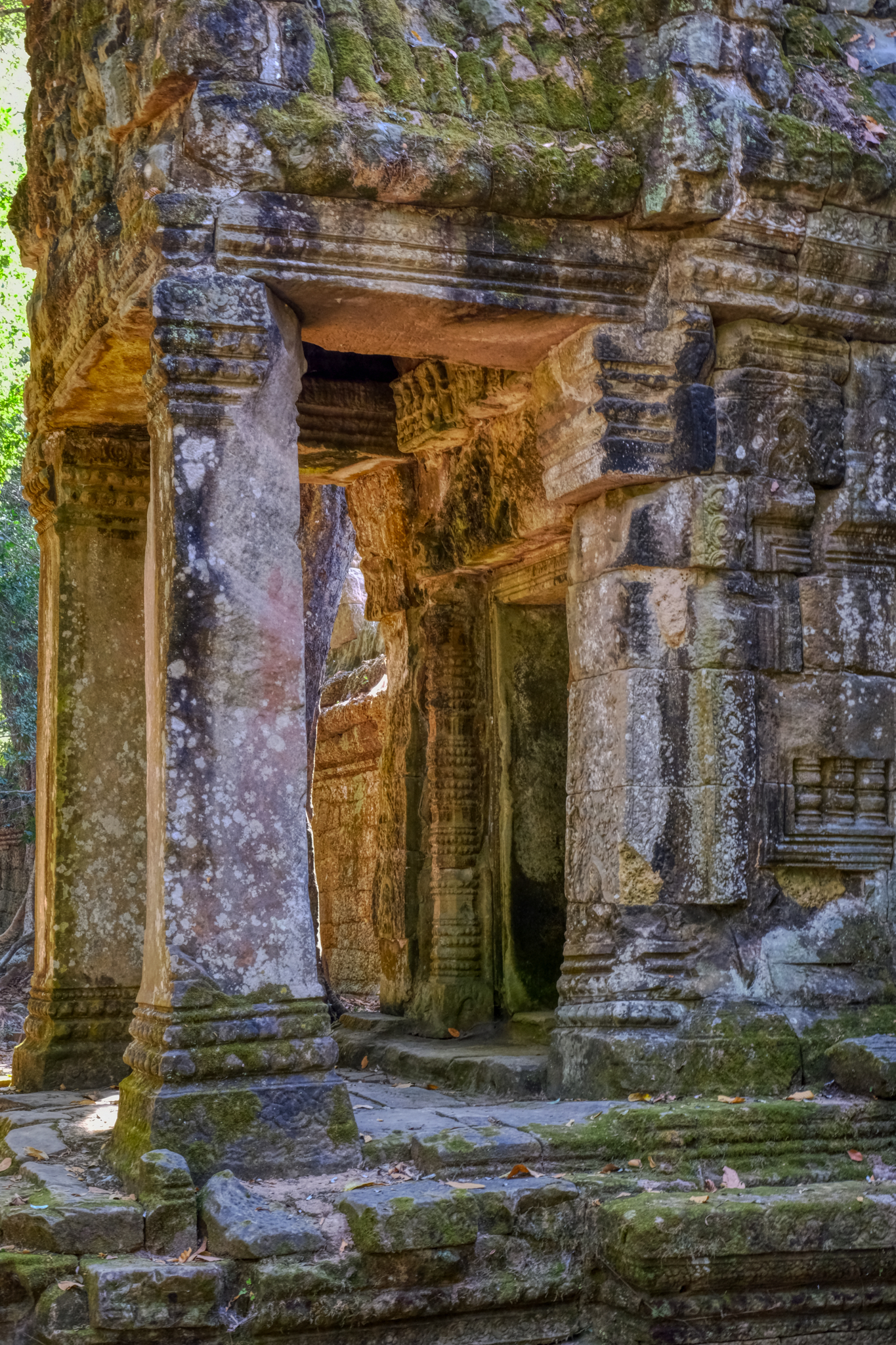 Ah! The light!
Ah! The light!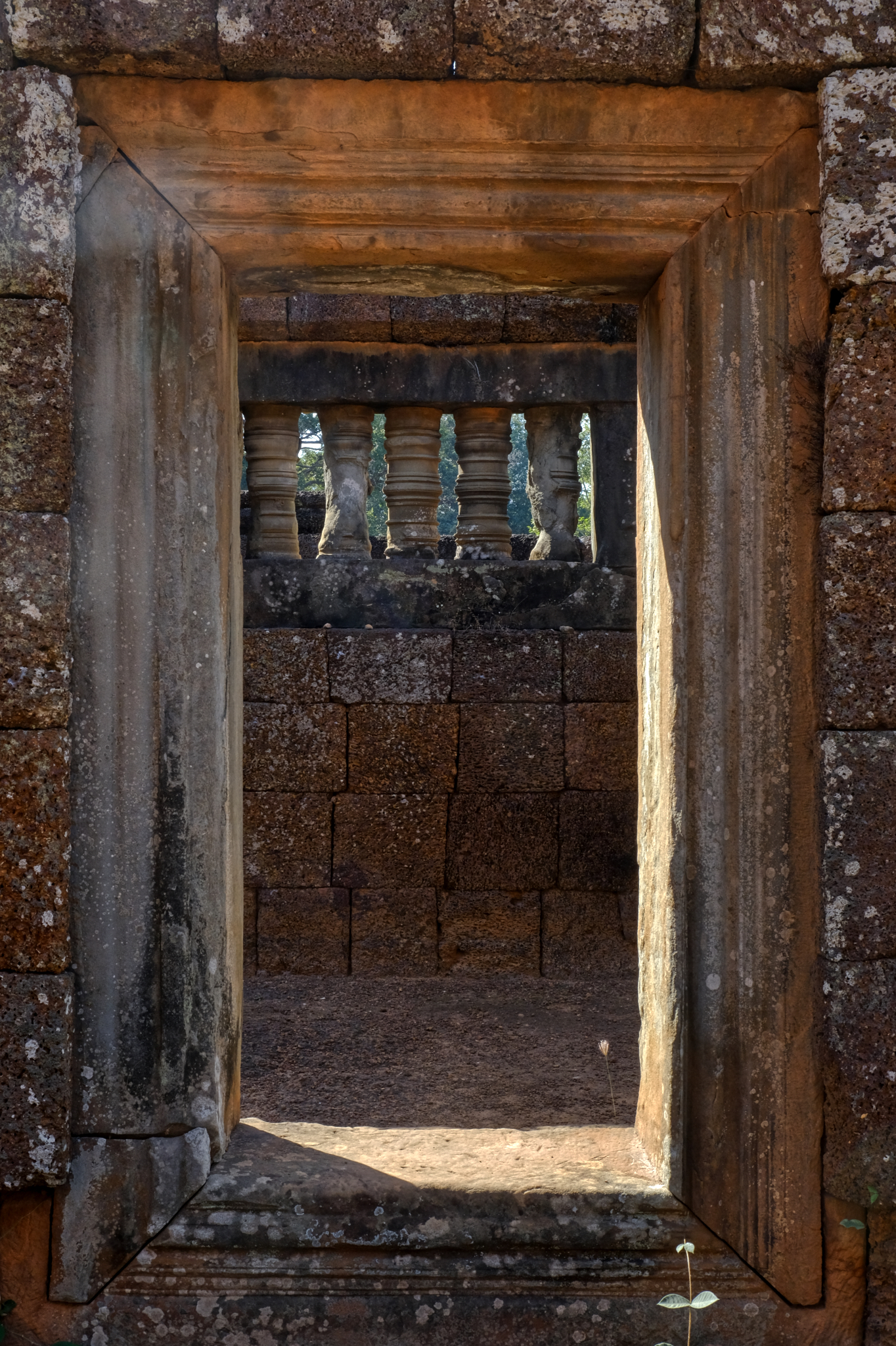 Shadows framed.
Shadows framed.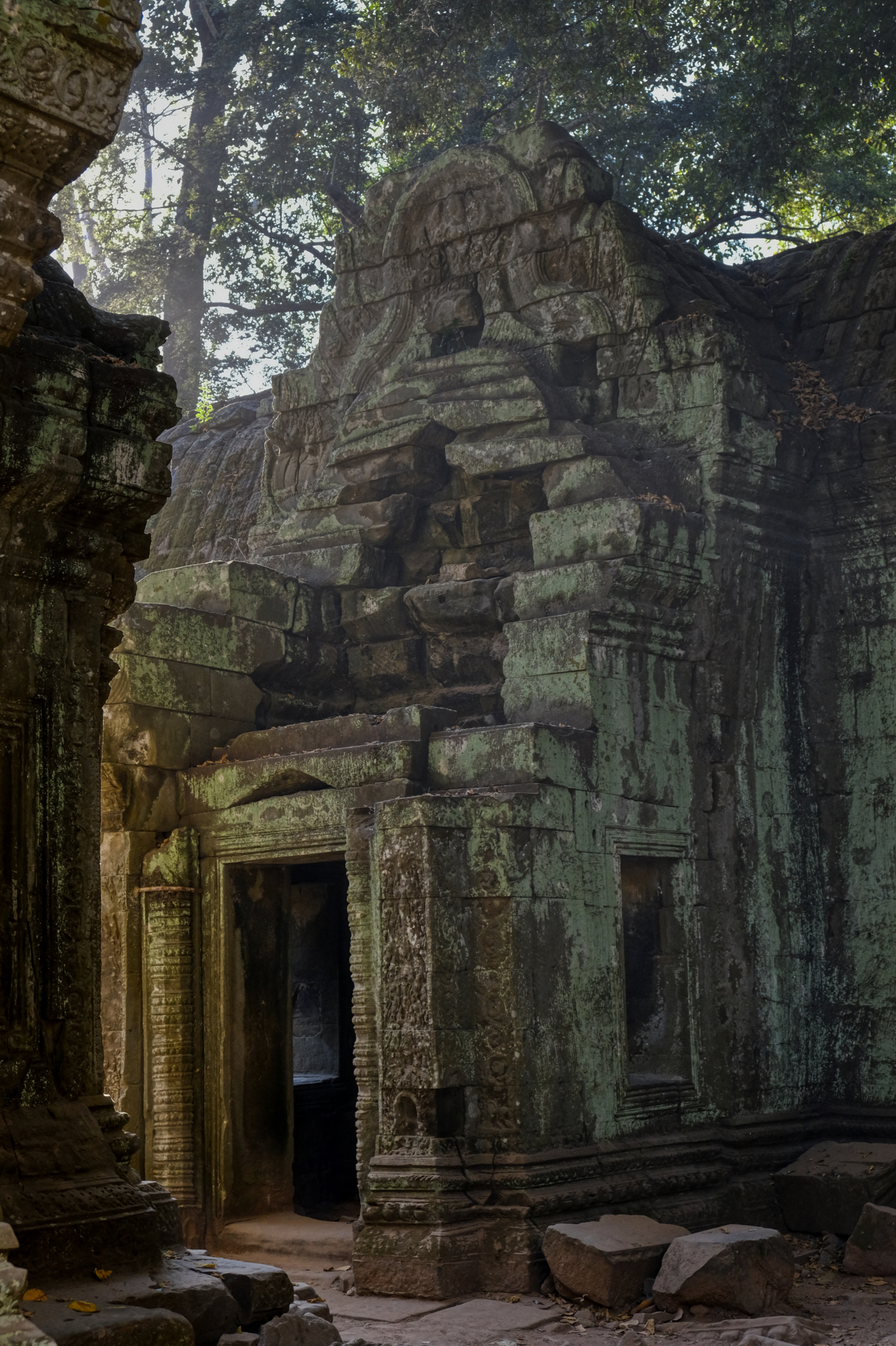 Smoky ruins in the late light.
Smoky ruins in the late light.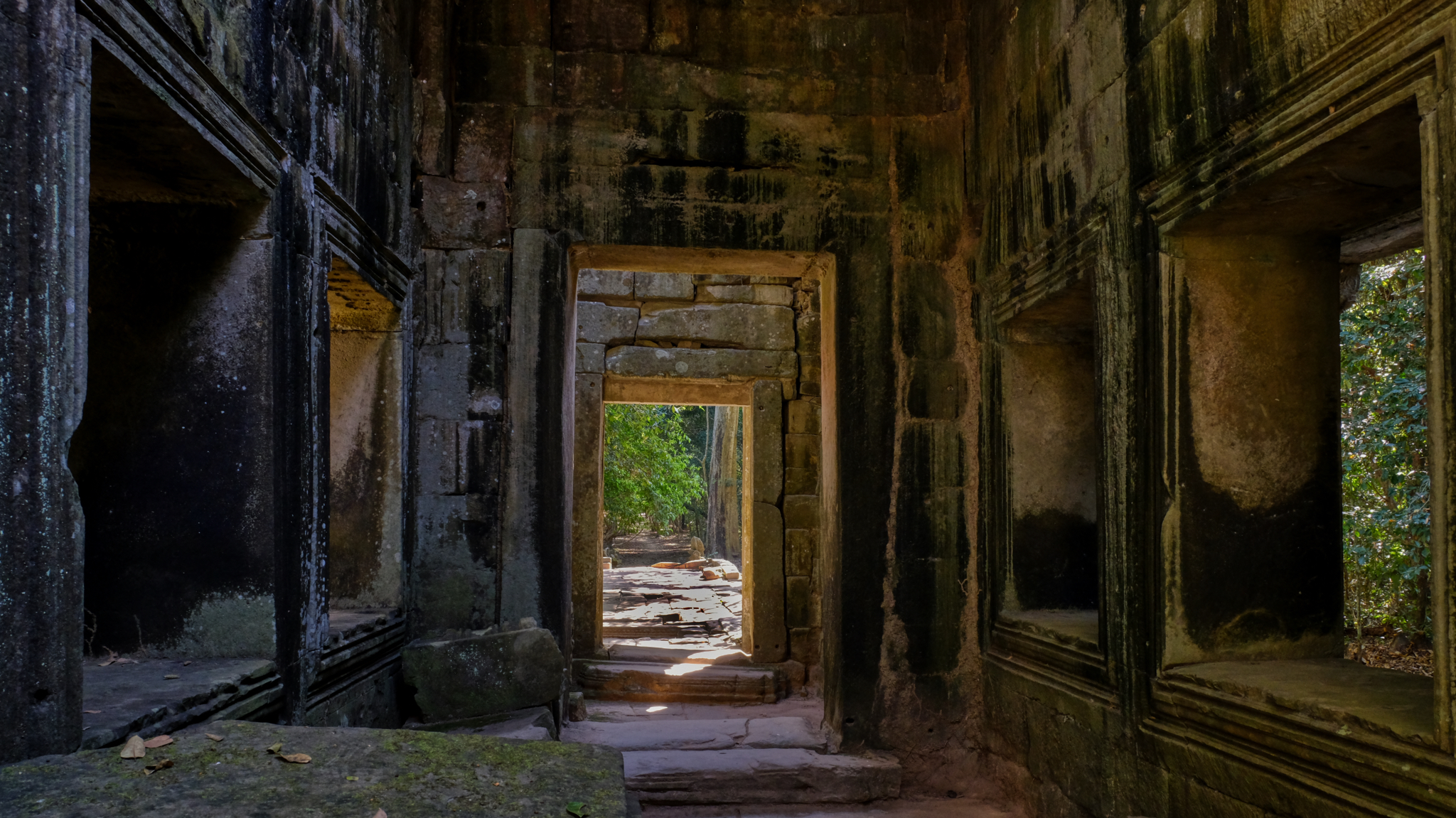 These interiors were full of an almost magical spiritual moodiness.
These interiors were full of an almost magical spiritual moodiness.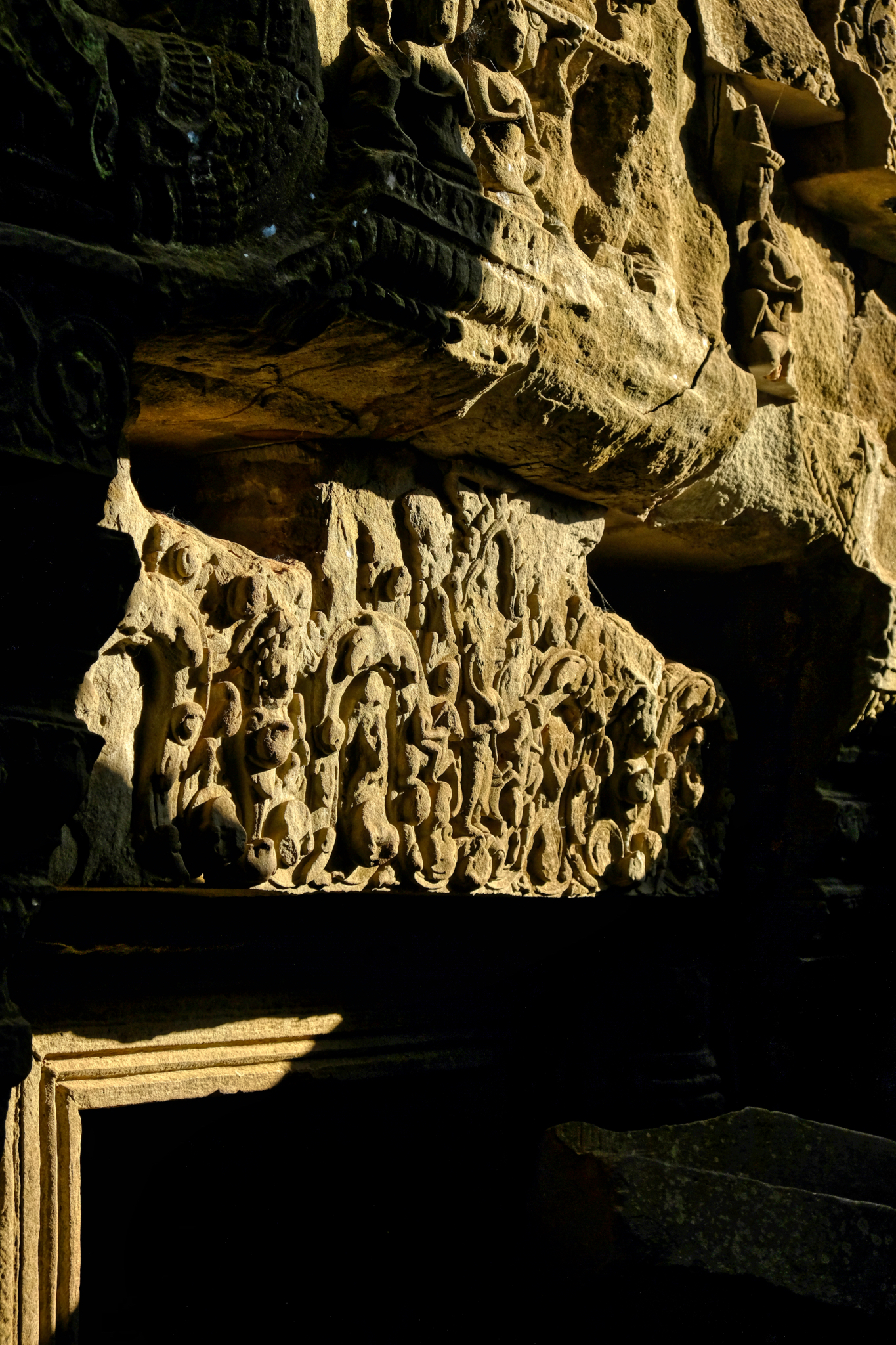 Long shadows accentuated the fine detail. Almost every surface of the temples was carved.
Long shadows accentuated the fine detail. Almost every surface of the temples was carved.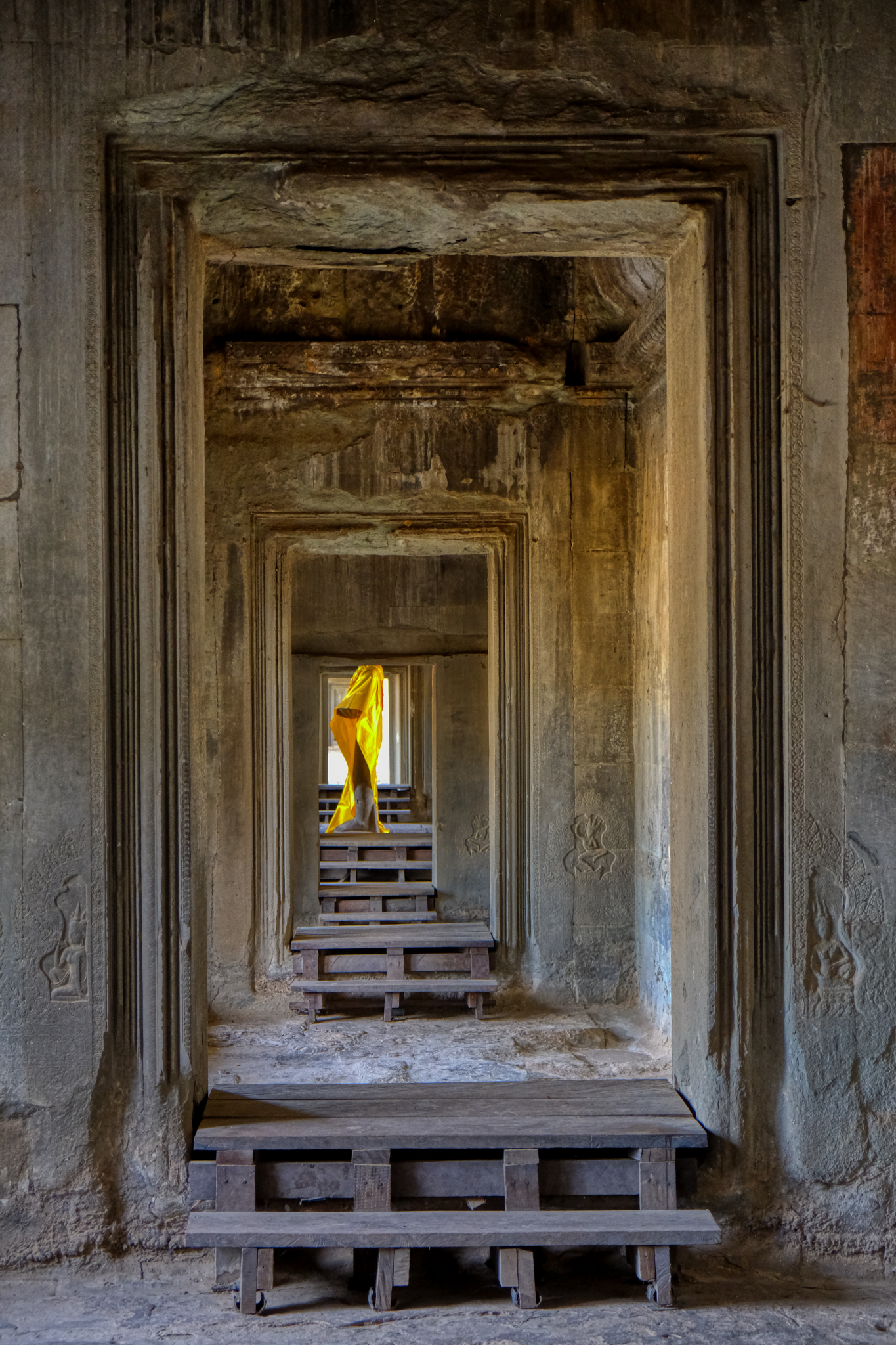 As you might imagine, I was in photographers' heaven walking the halls and passages of Angkor Wat . . . something amazing to shoot at every turn.
As you might imagine, I was in photographers' heaven walking the halls and passages of Angkor Wat . . . something amazing to shoot at every turn.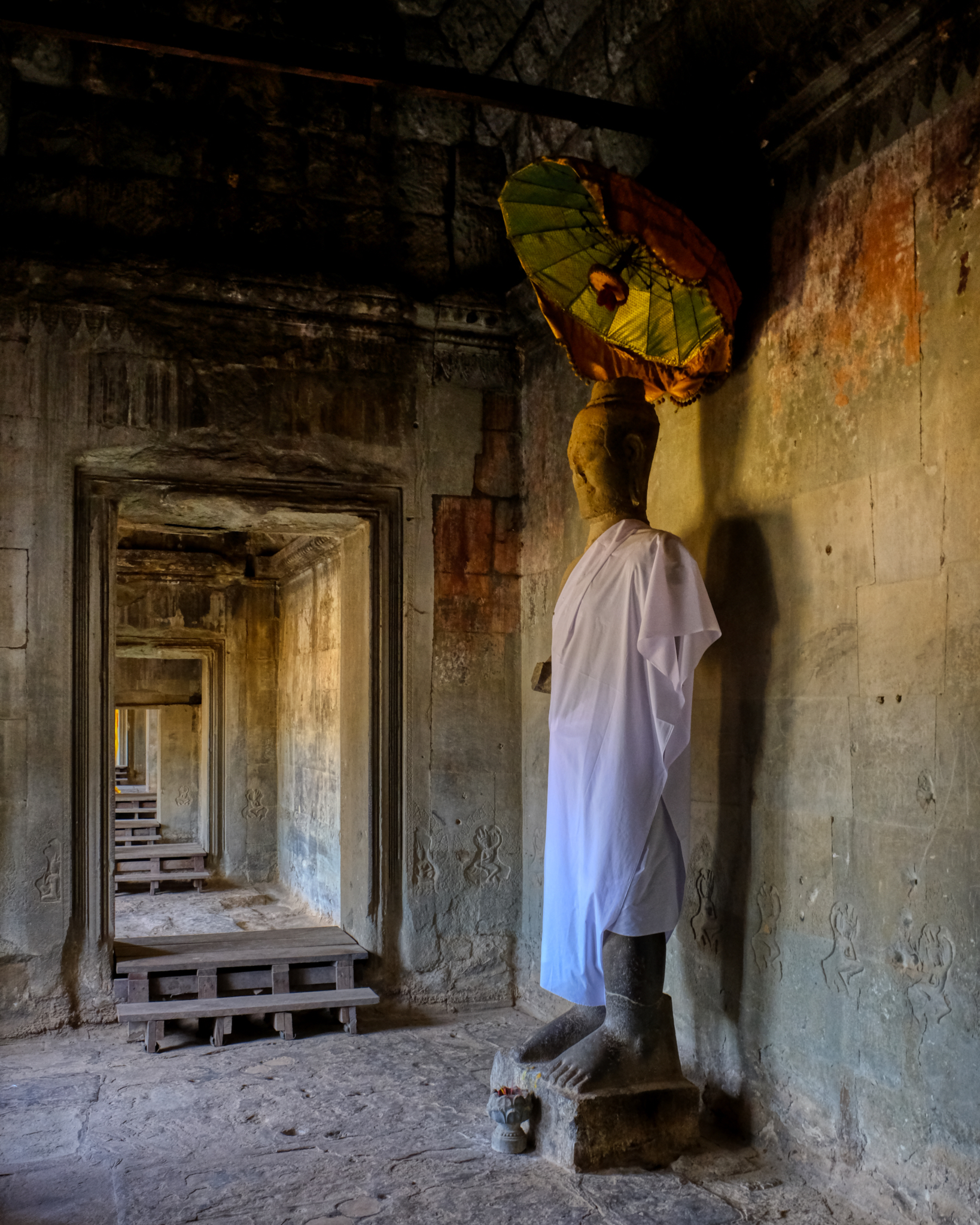 A new image at each turn, at each new chamber, at each door.
A new image at each turn, at each new chamber, at each door.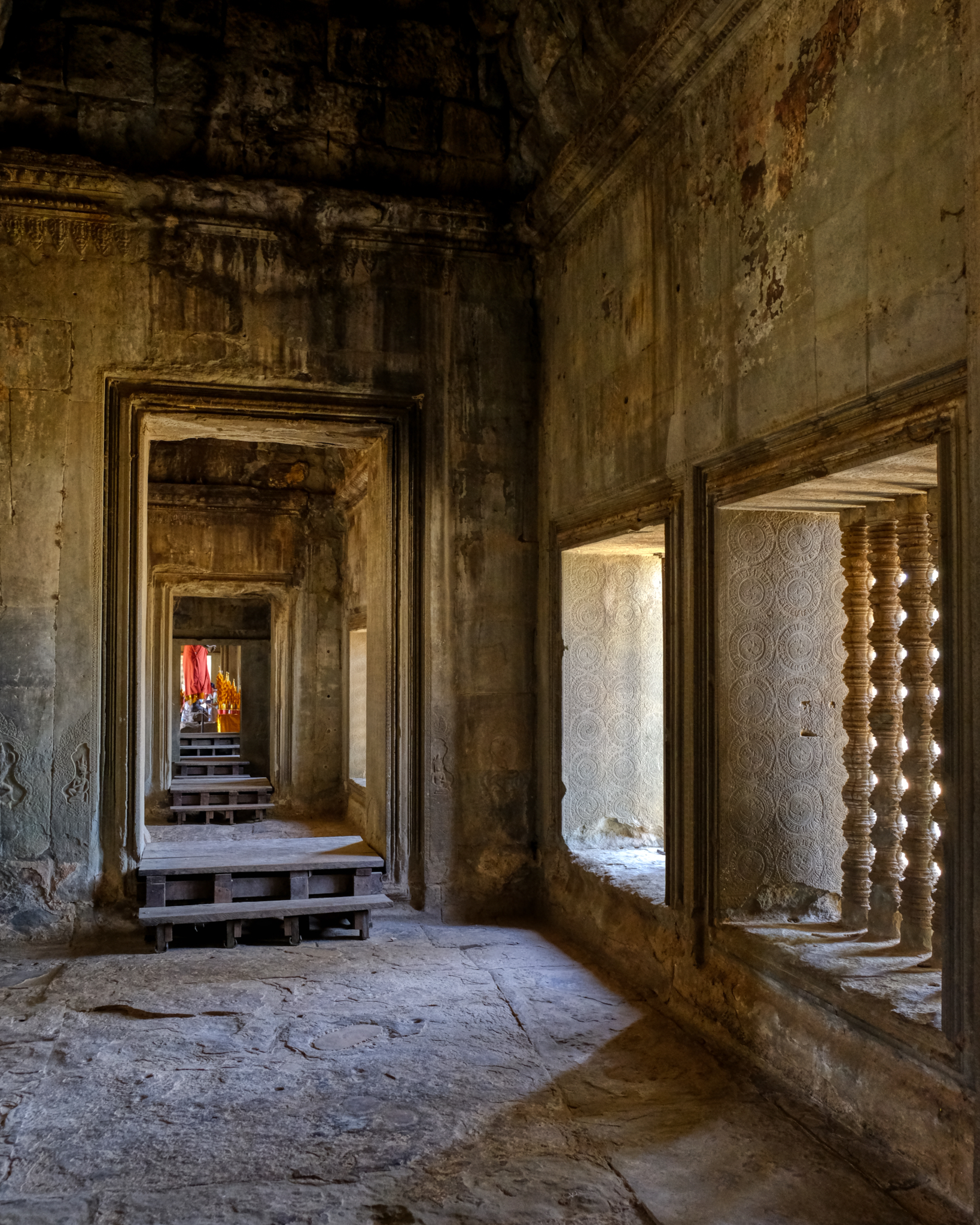 A surprise ahead!
A surprise ahead!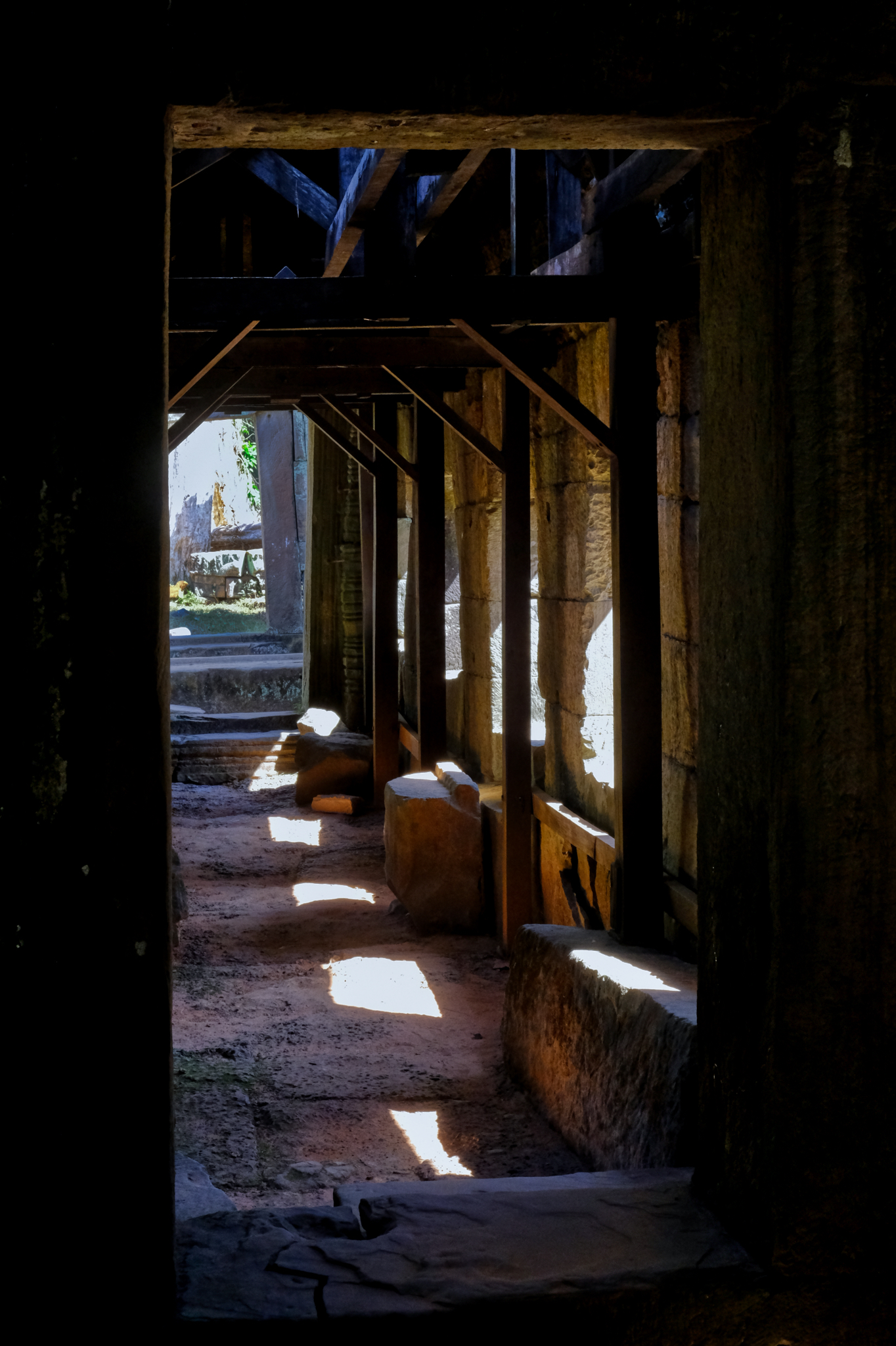 Gorgeous light along the galleries.
Gorgeous light along the galleries.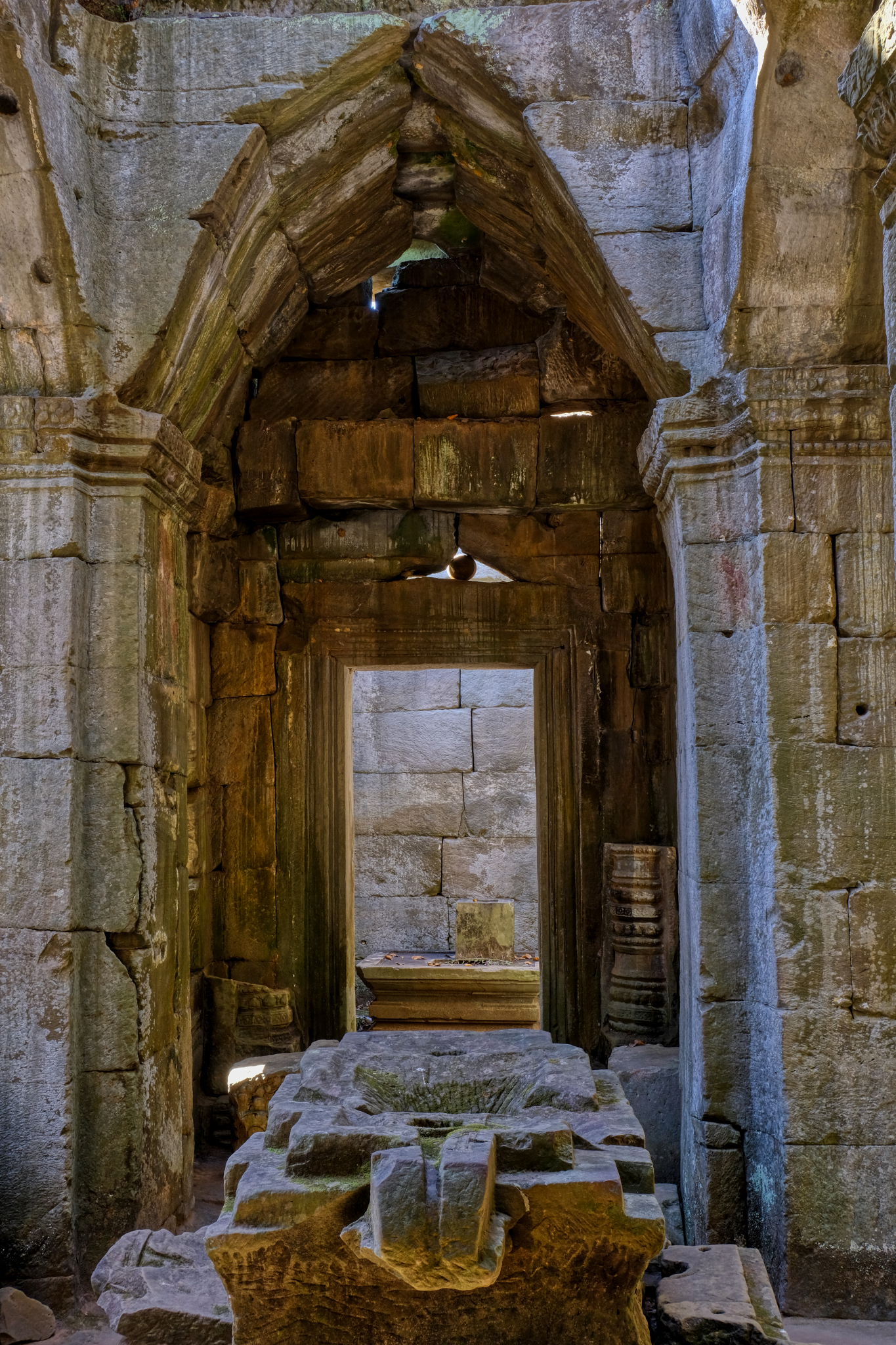 The aesthetics of these stone passages with their relics evokes a calm amazement.
The aesthetics of these stone passages with their relics evokes a calm amazement.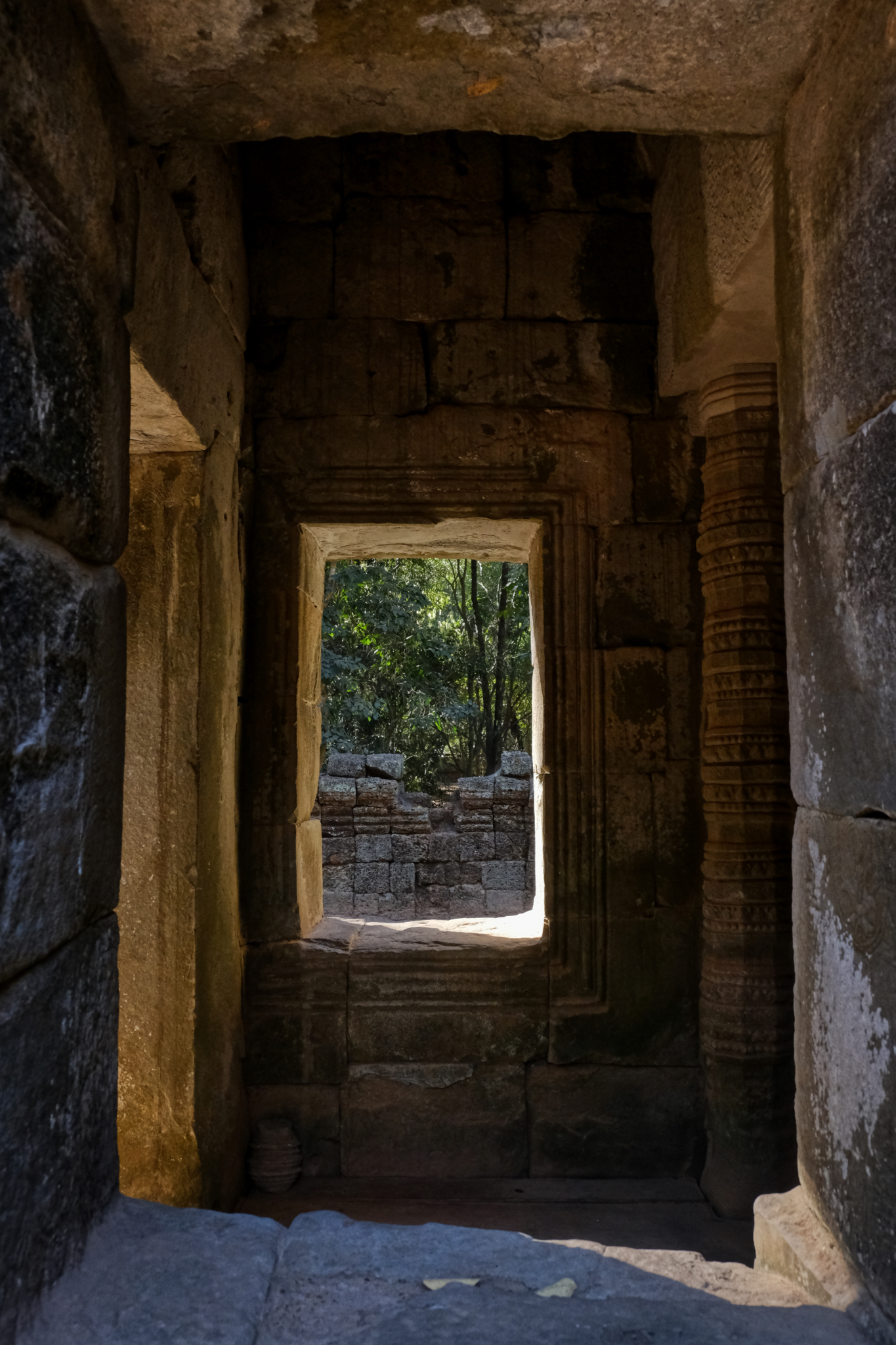 I have always been drawn to these kinds of scenes for photography . . . there seems to be some elemental symbolics involved here . . .
I have always been drawn to these kinds of scenes for photography . . . there seems to be some elemental symbolics involved here . . . 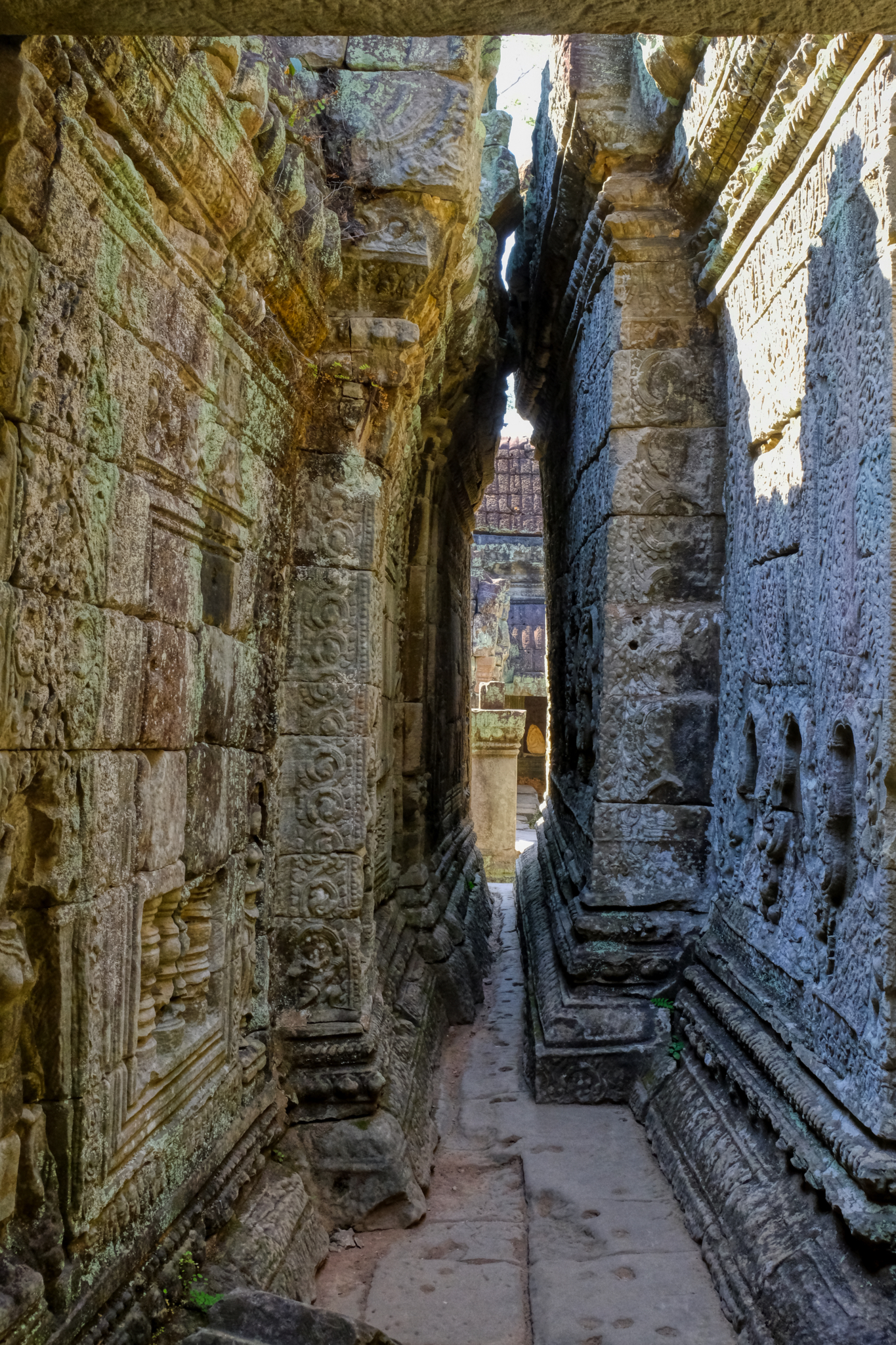 Endless stone doors and windows, light and shadow . . .
Endless stone doors and windows, light and shadow . . .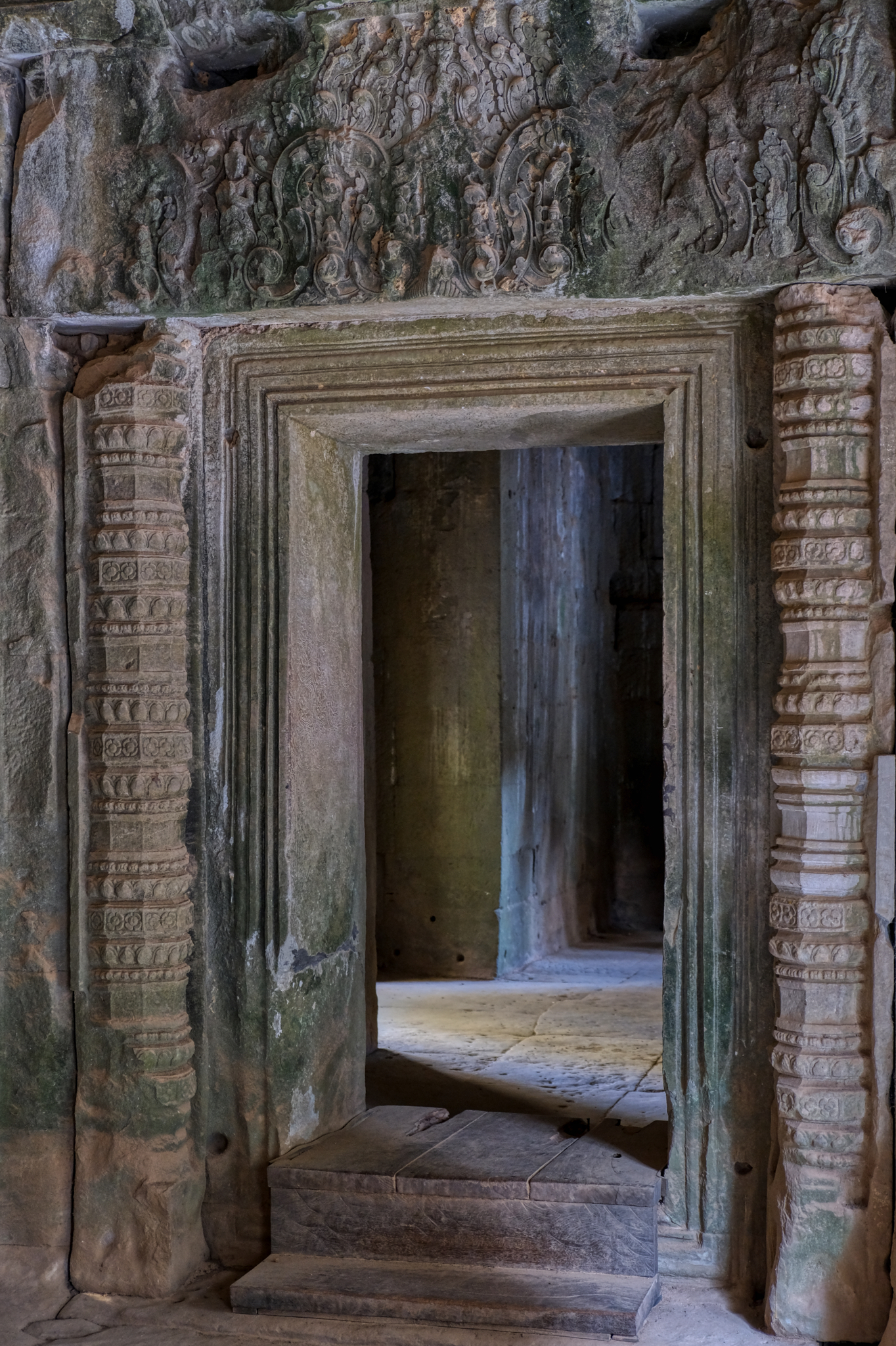 Interior doors. The Light! The shadows!
Interior doors. The Light! The shadows!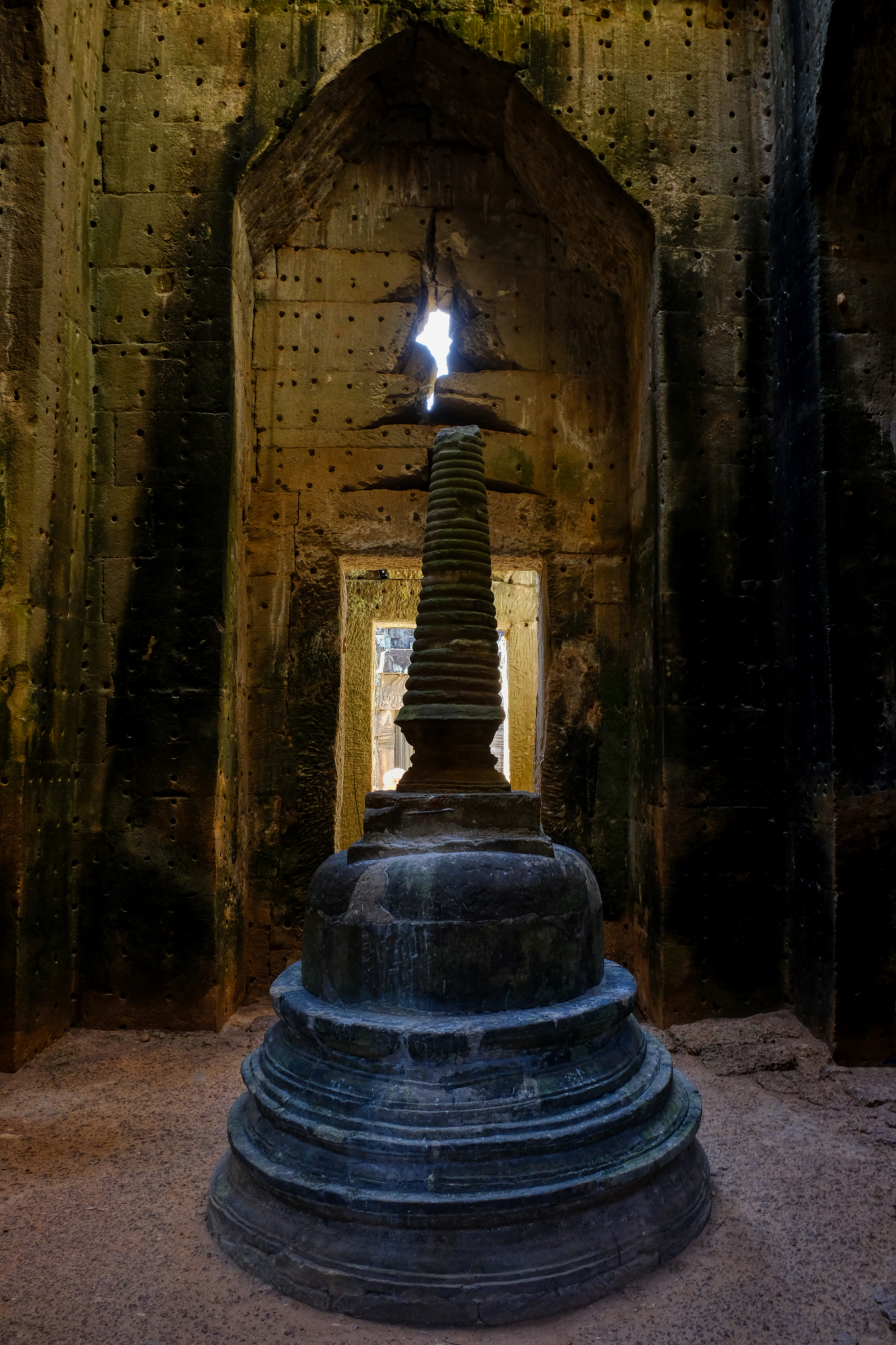 Astonishing chedi in the intersection of two long halls! The many holes in the stone walls indicate they were covered with carvings in stone or wood.
Astonishing chedi in the intersection of two long halls! The many holes in the stone walls indicate they were covered with carvings in stone or wood.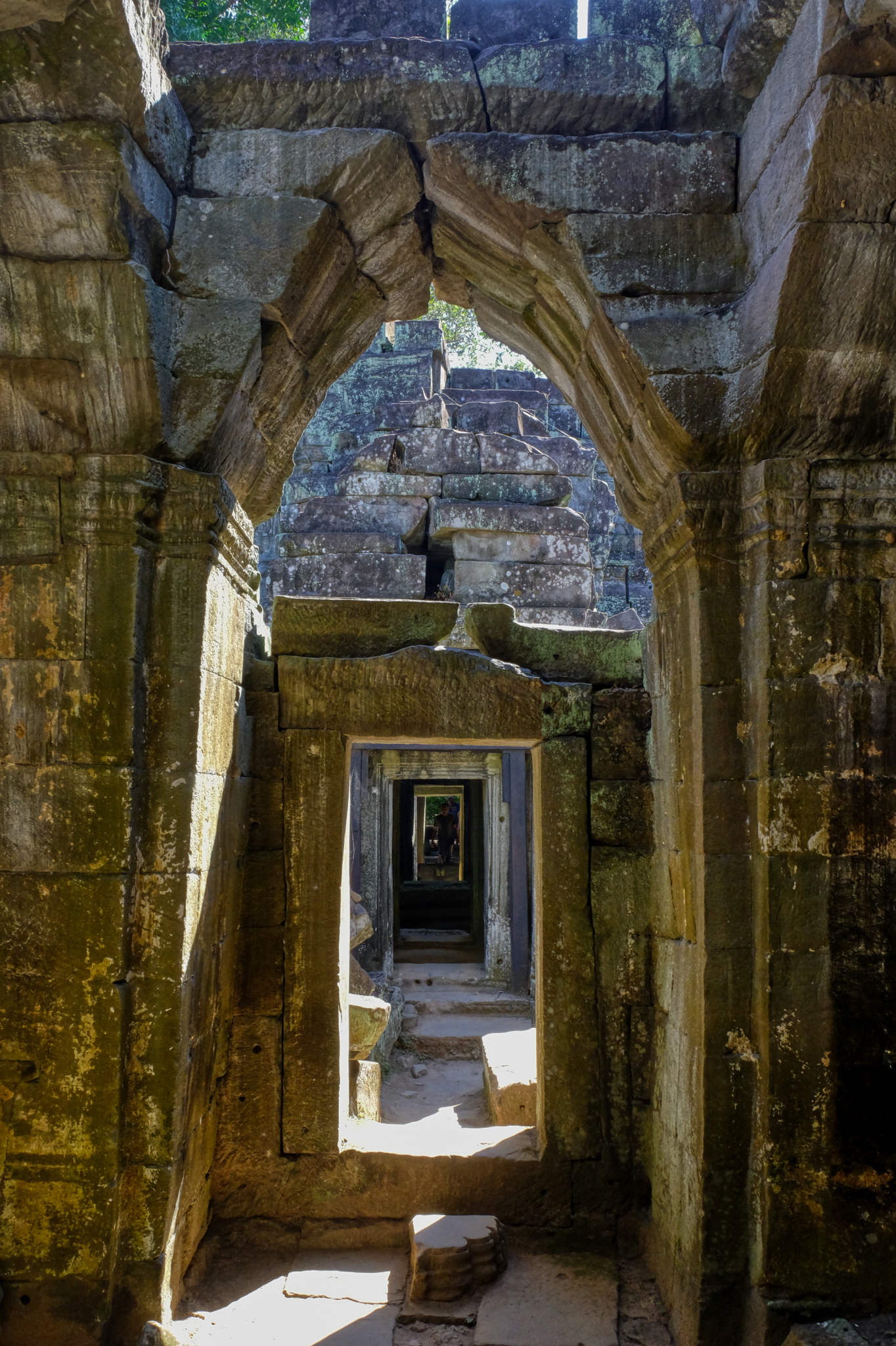 Endless curiosity . . .
Endless curiosity . . .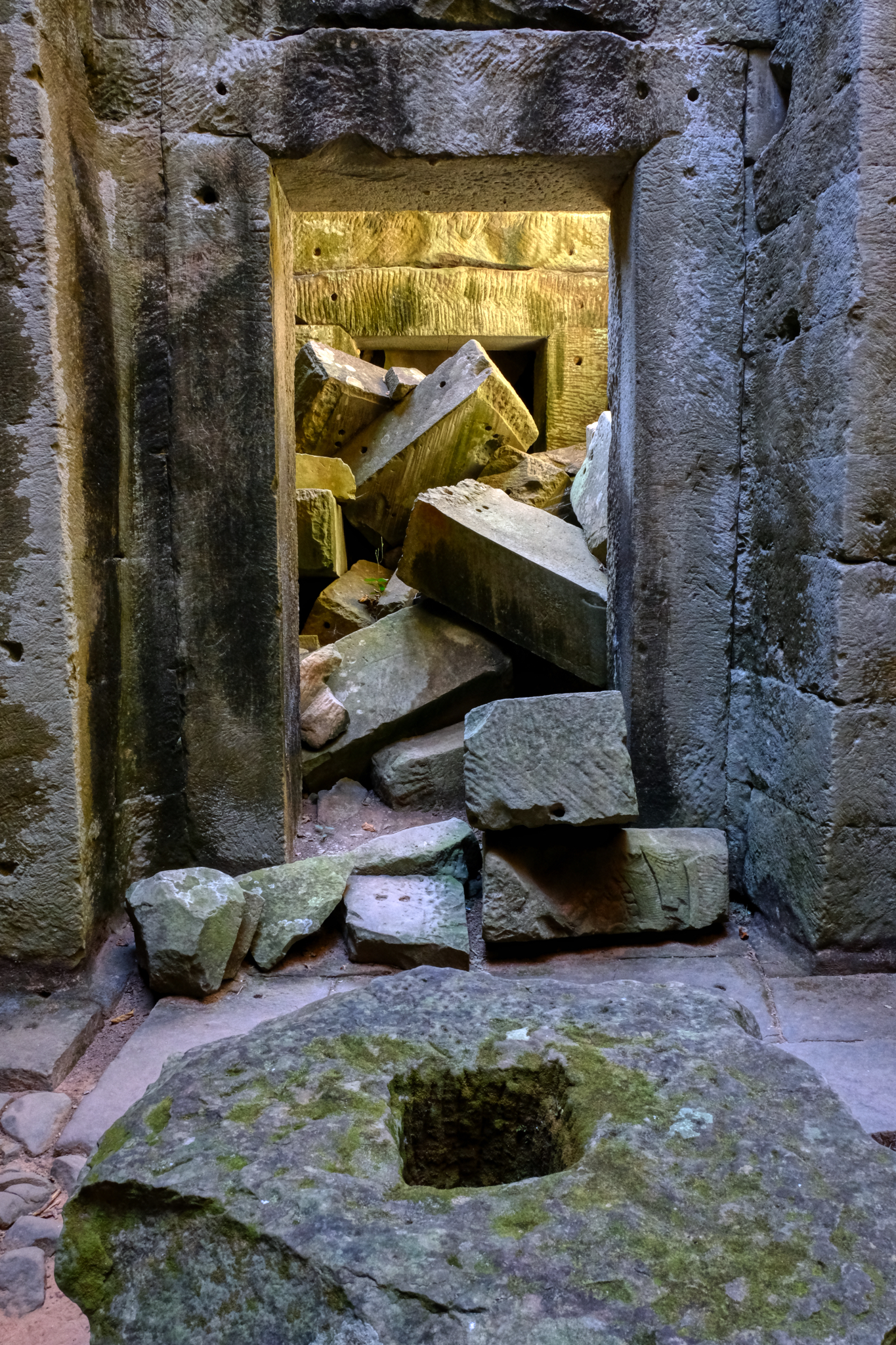 Wandering the halls and passages and finding an outlet into the honey light . . . what's out there?
Wandering the halls and passages and finding an outlet into the honey light . . . what's out there?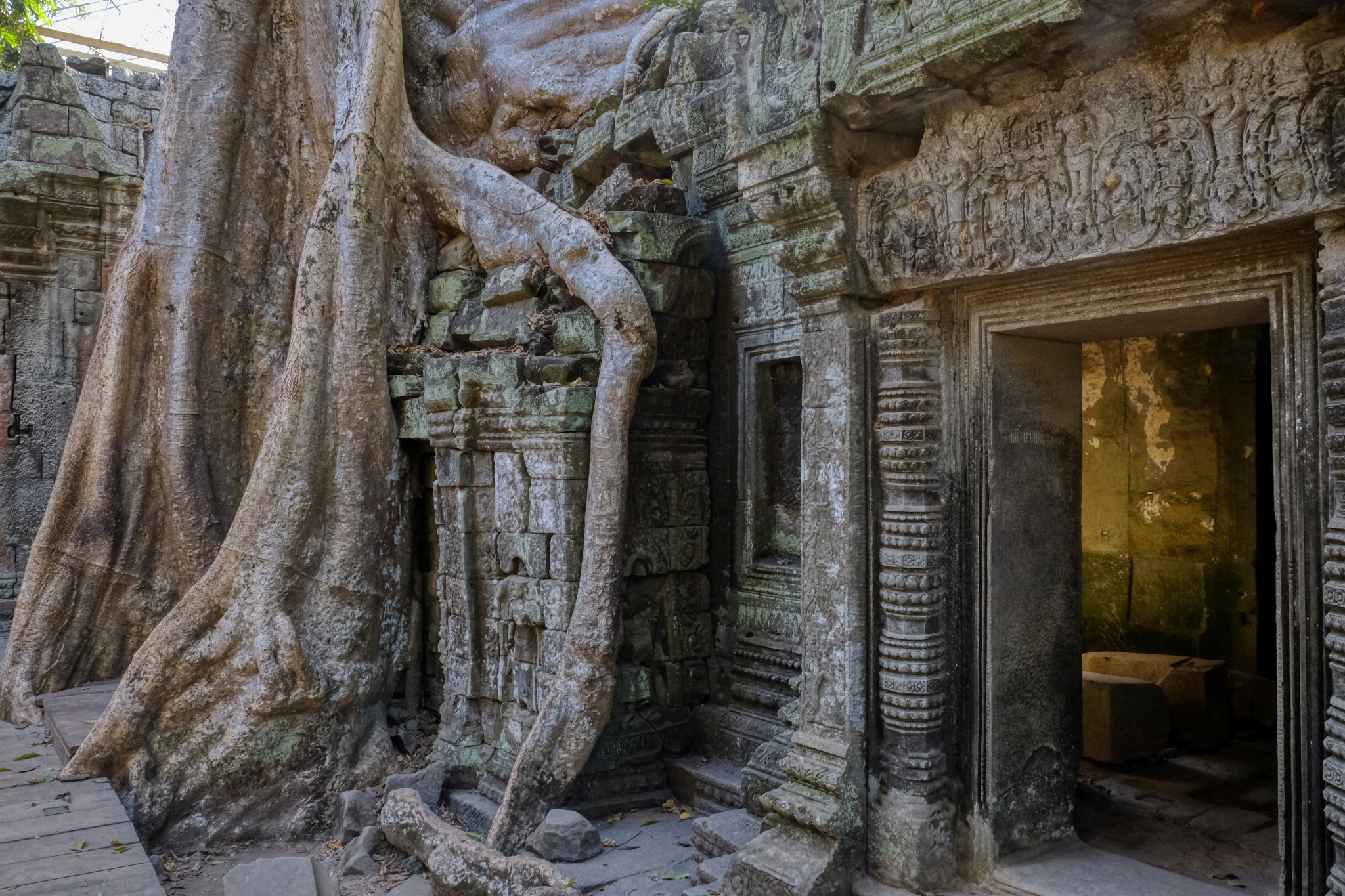 . . . and THIS is what was on the outside of these long stone passages!
. . . and THIS is what was on the outside of these long stone passages!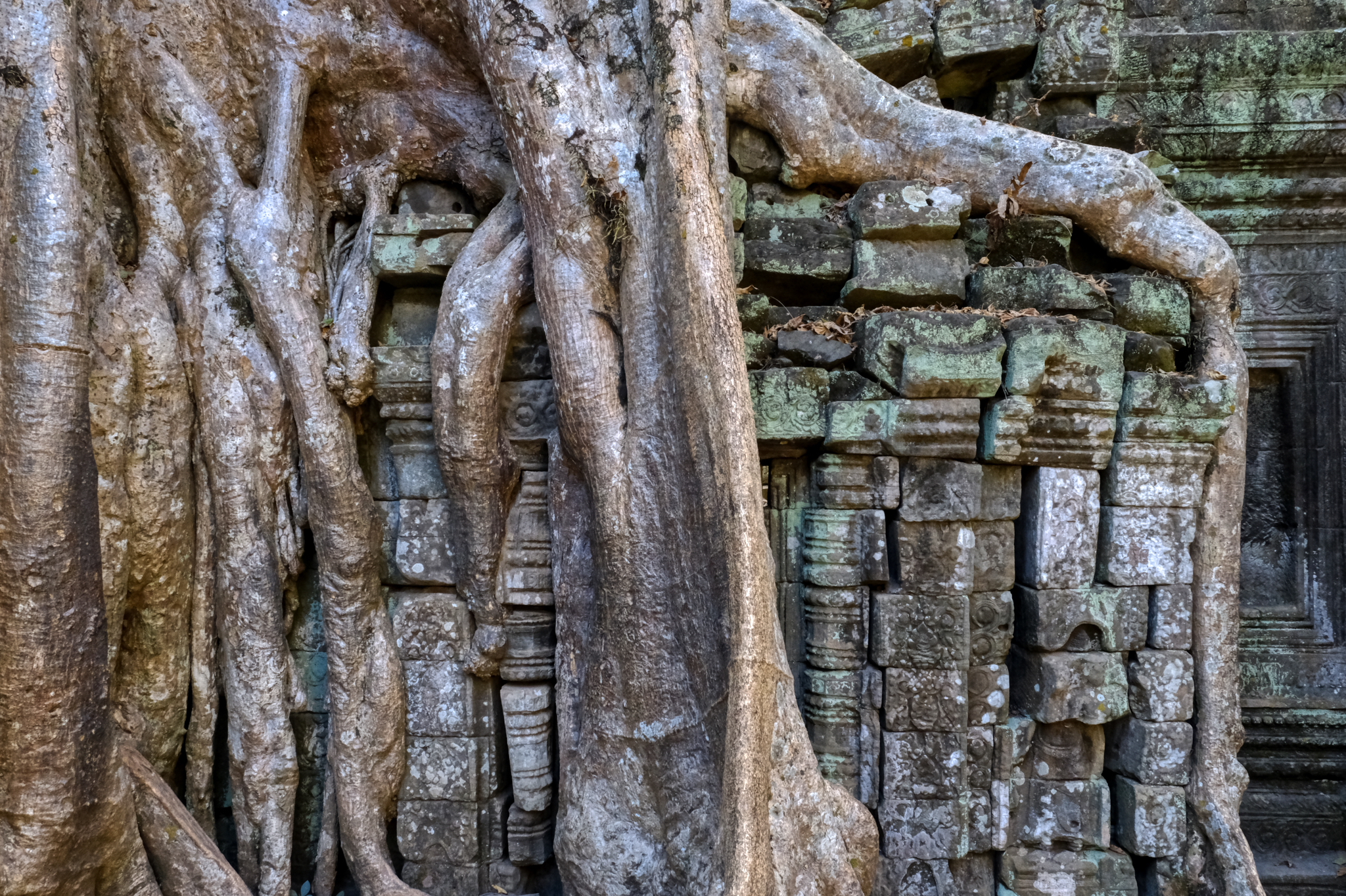 The classic 'Jungle Reclaiming the Lost Temple' photo. Still wonderful!
The classic 'Jungle Reclaiming the Lost Temple' photo. Still wonderful!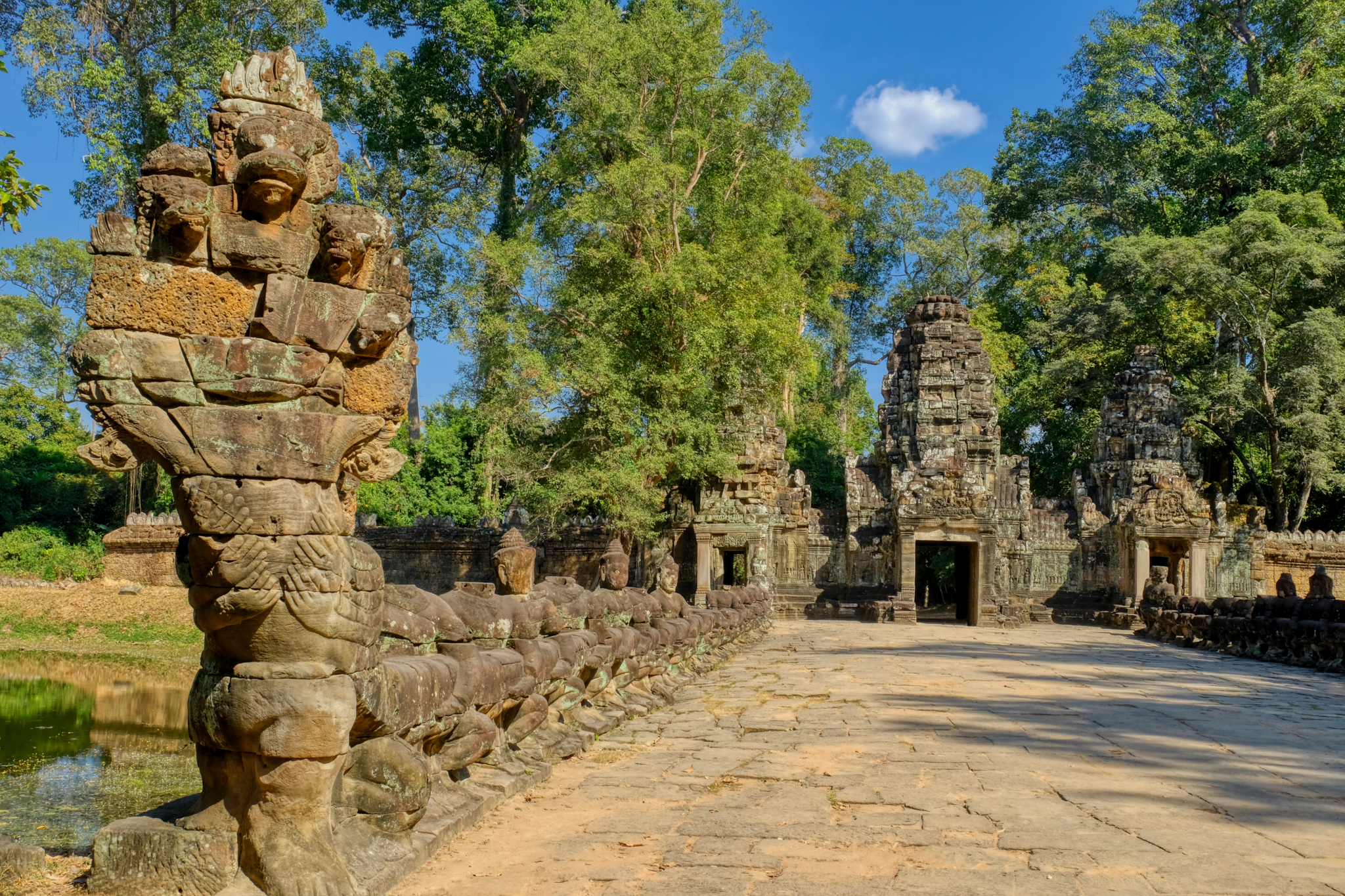 Our driver brought us to another temple site, this one had an entrance guarded by a bridge guarded by stone cobras!
Our driver brought us to another temple site, this one had an entrance guarded by a bridge guarded by stone cobras!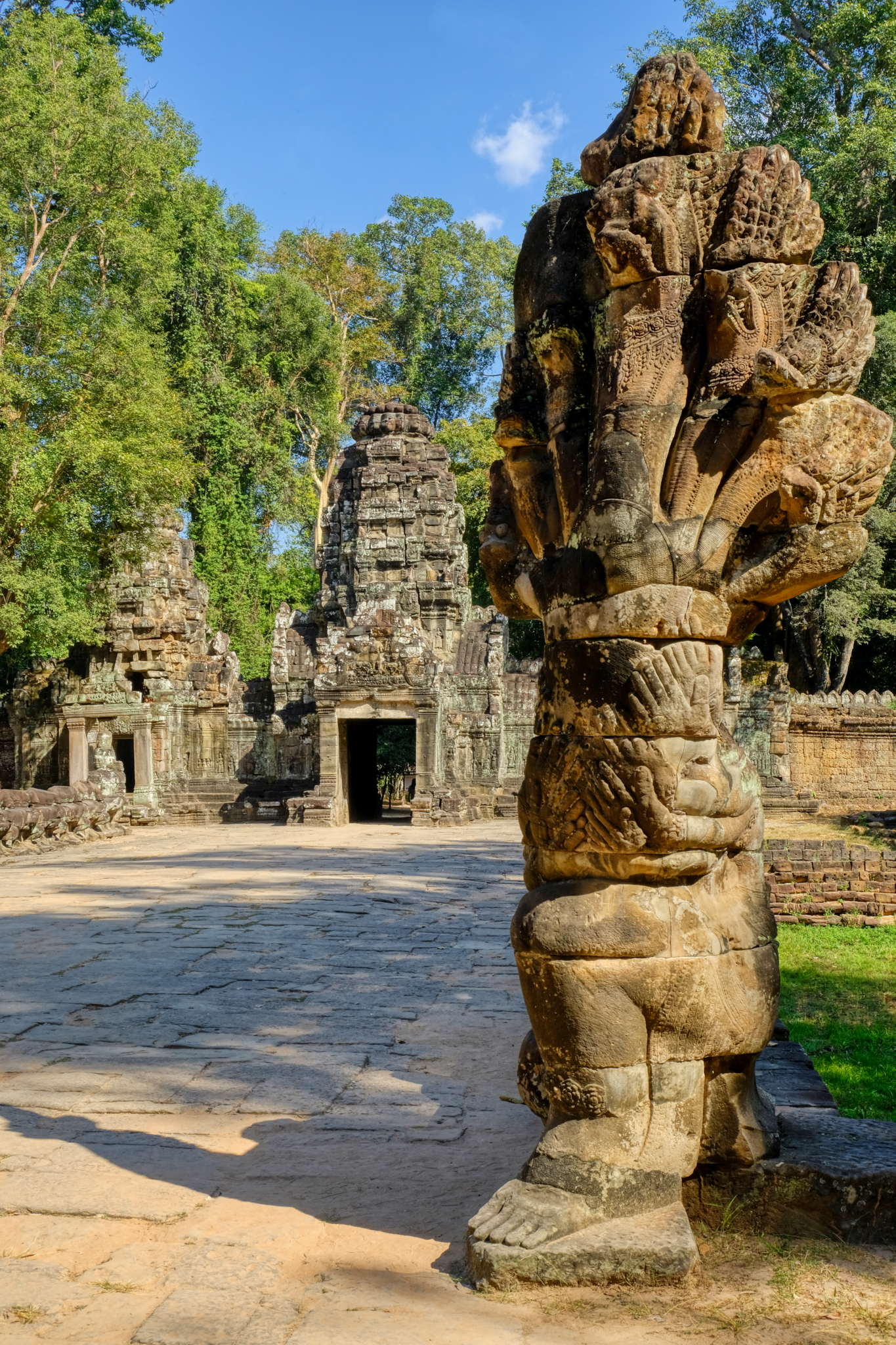 Frightening to peoples of that time, I would imaging.
Frightening to peoples of that time, I would imaging.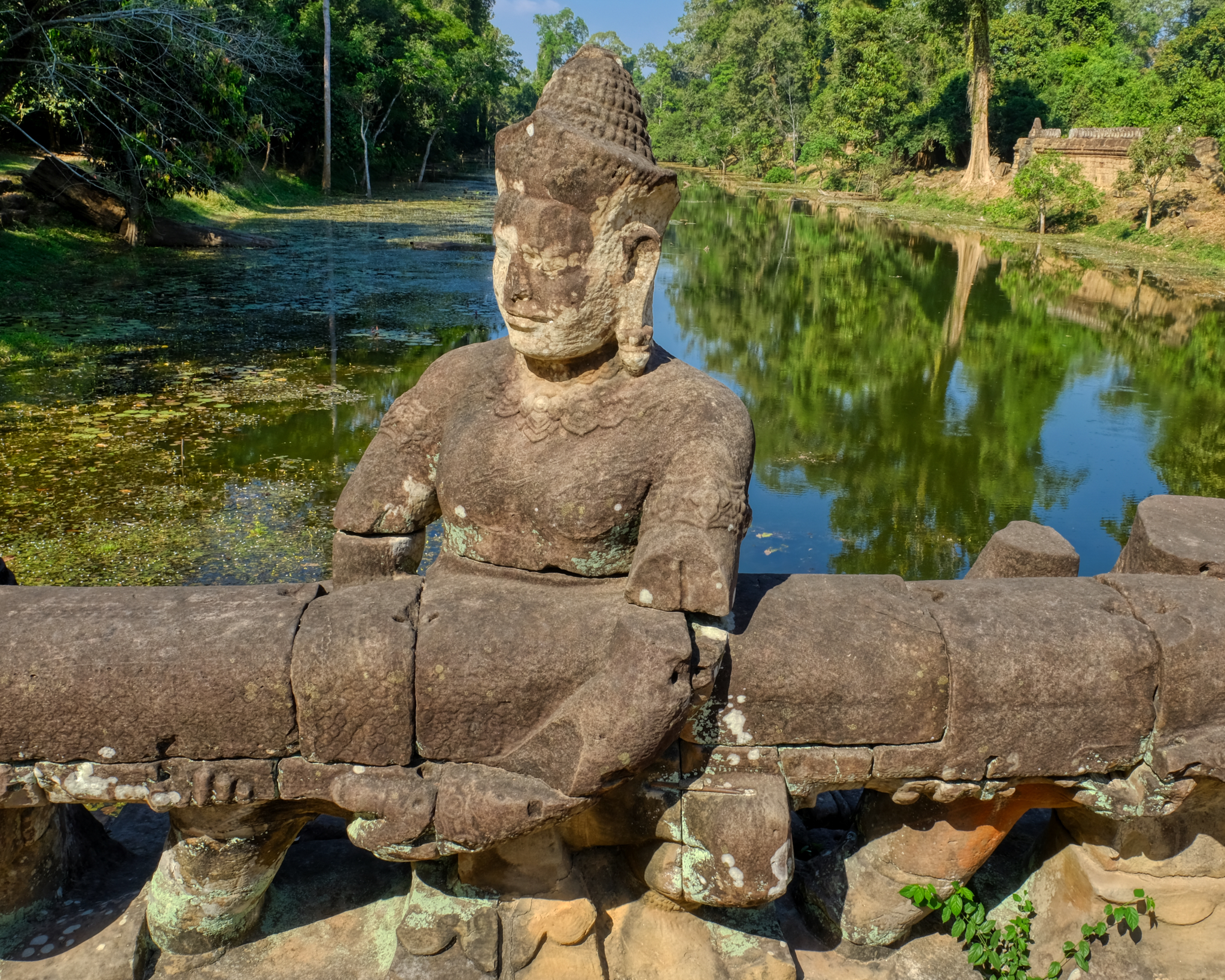 The body of the giant stone cobra was held by a row stone statues that made up the bridge guardrail.
The body of the giant stone cobra was held by a row stone statues that made up the bridge guardrail.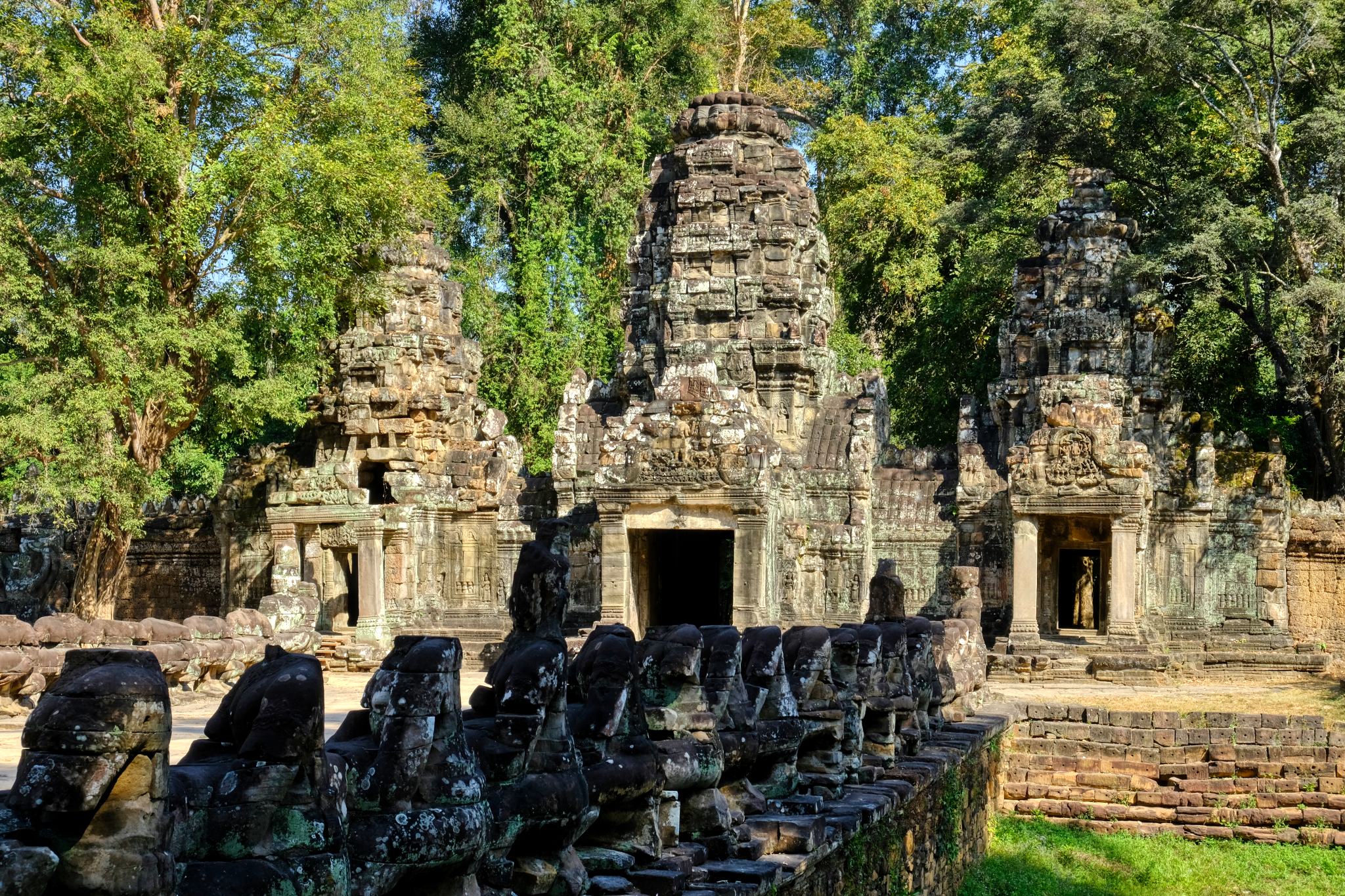 The heads on all of the stone bridge statues have been stolen over the years . . . they end up in museums, private collections, and "art" shops in Bangkok. Despicable.
The heads on all of the stone bridge statues have been stolen over the years . . . they end up in museums, private collections, and "art" shops in Bangkok. Despicable.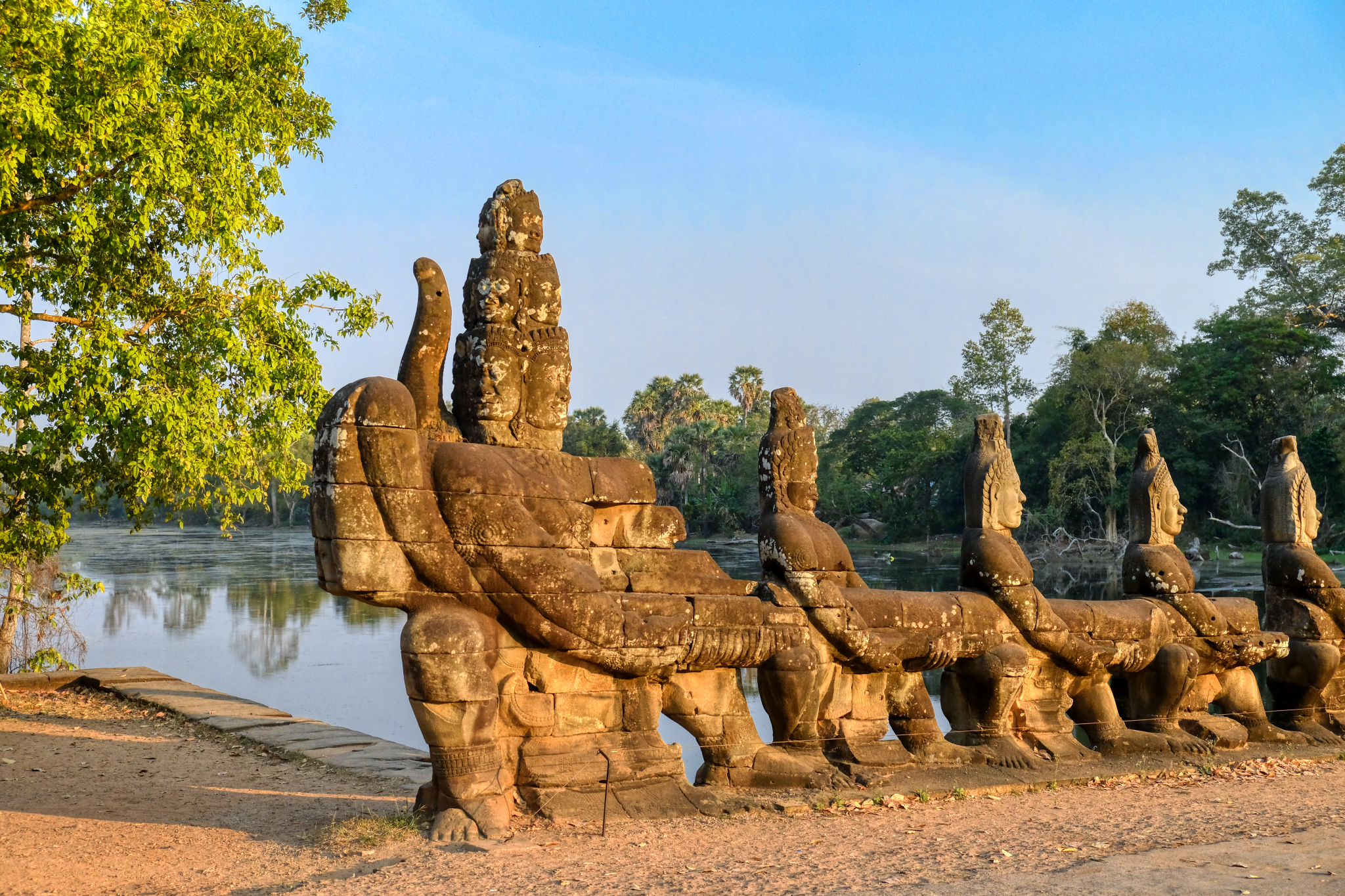 Many of the temple complexes still have their moats.
Many of the temple complexes still have their moats.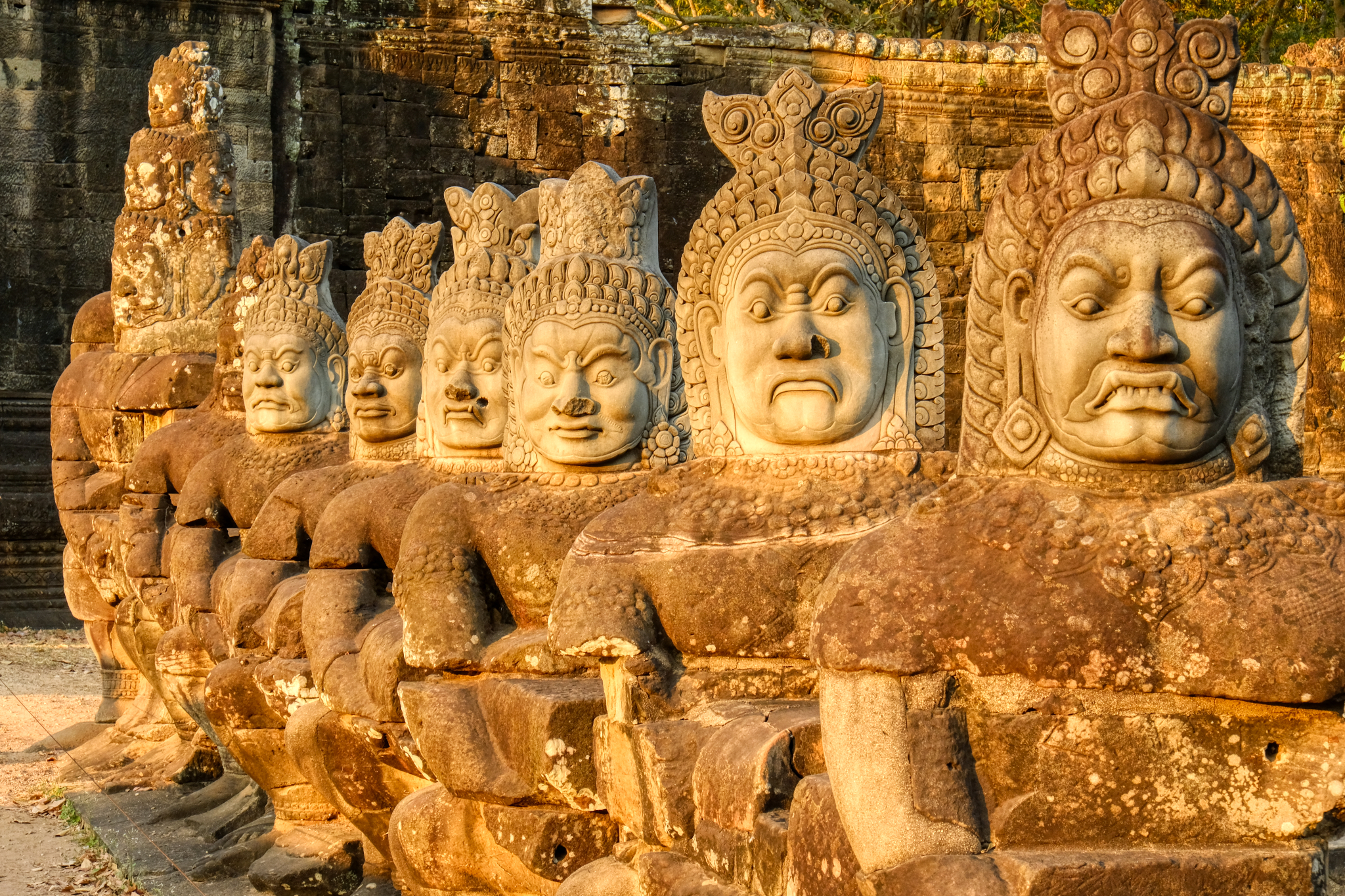 We found only one bridge with the full compliment of guarding figures . . . and they were wonderful!
We found only one bridge with the full compliment of guarding figures . . . and they were wonderful!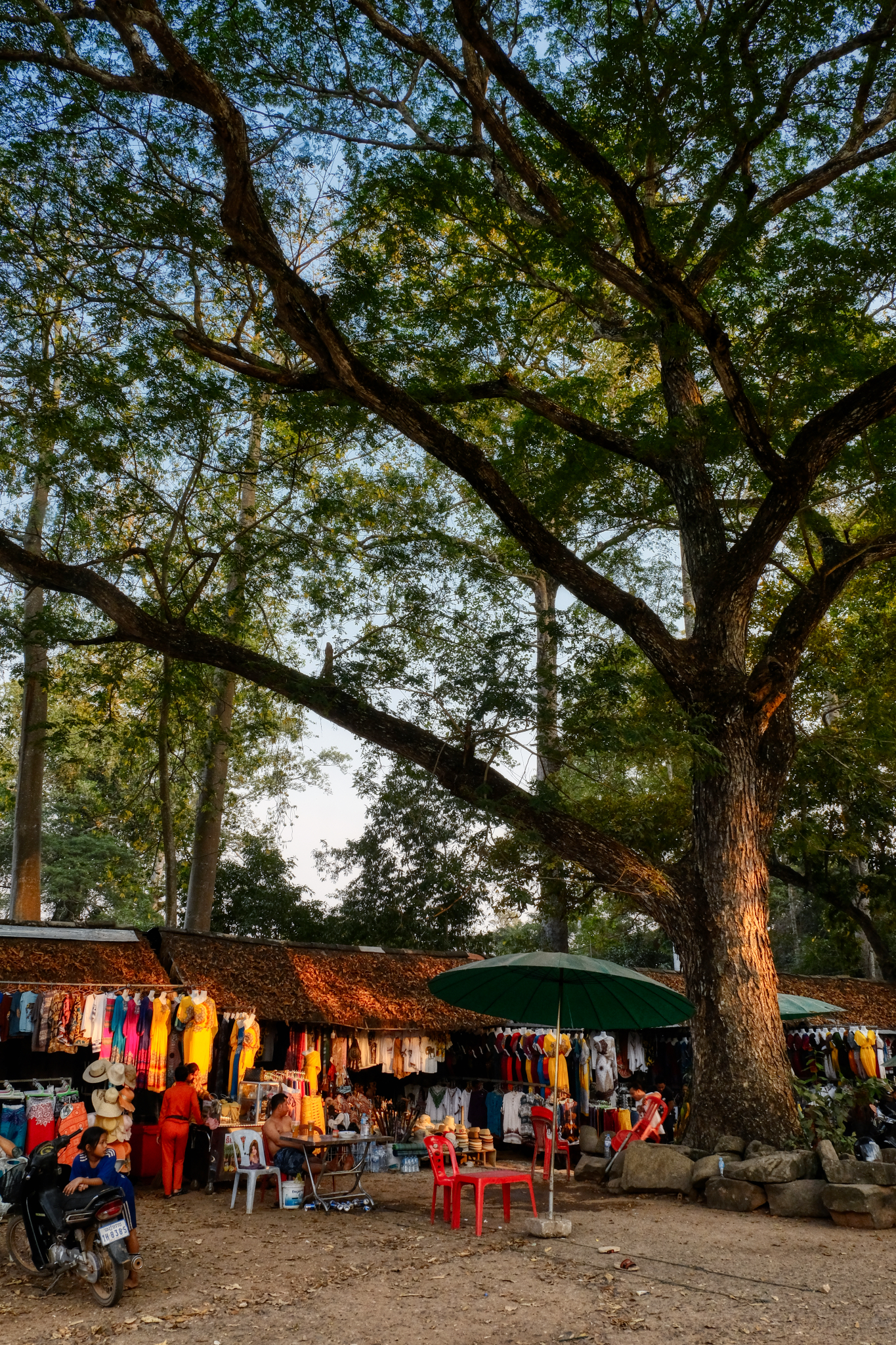 Here and there we saw small encampments of curios hawkers.
Here and there we saw small encampments of curios hawkers.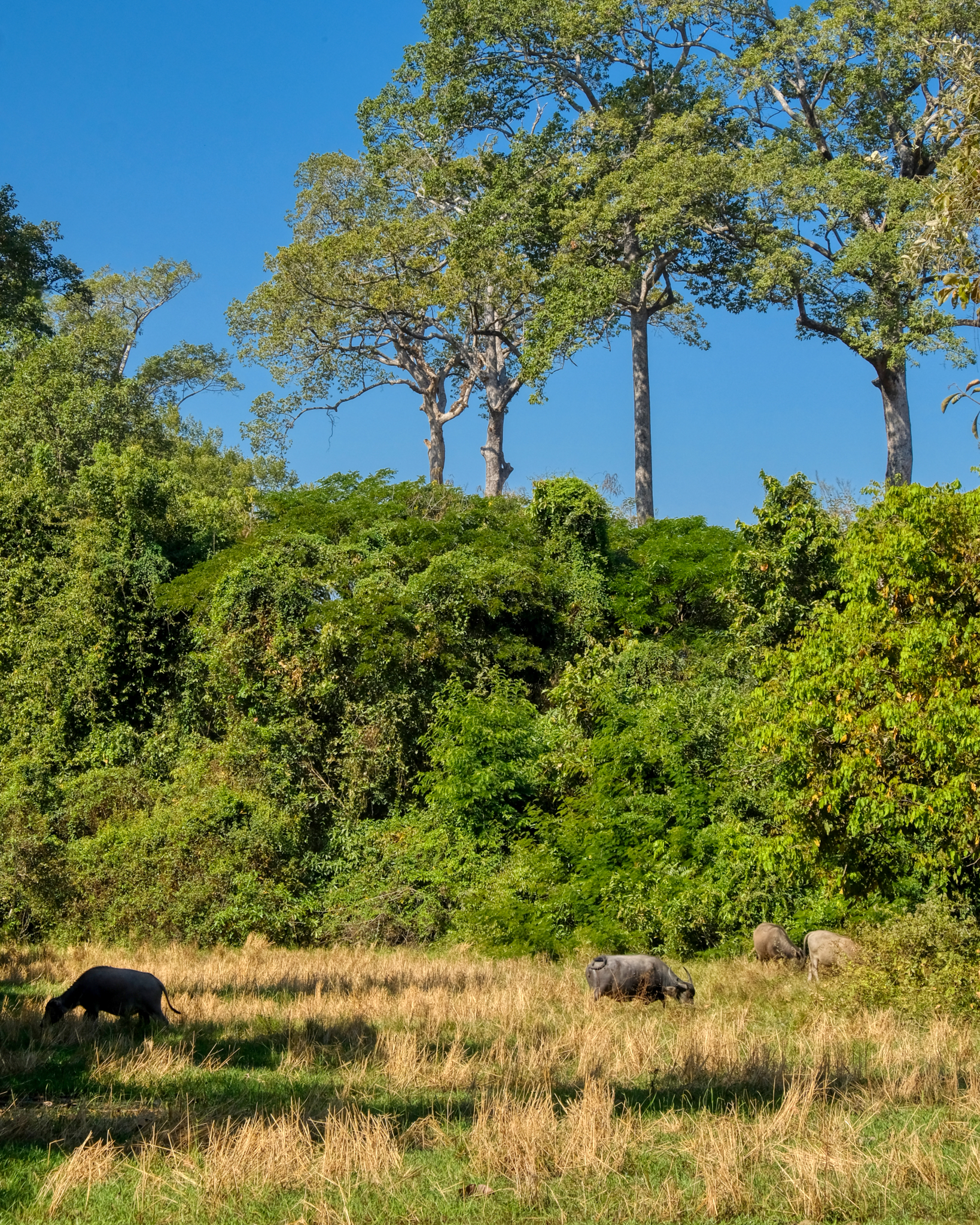 Our drive between temple sited took us through some beautiful and peaceful countryside. Some of the temples were 8-10 miles apart.
Our drive between temple sited took us through some beautiful and peaceful countryside. Some of the temples were 8-10 miles apart.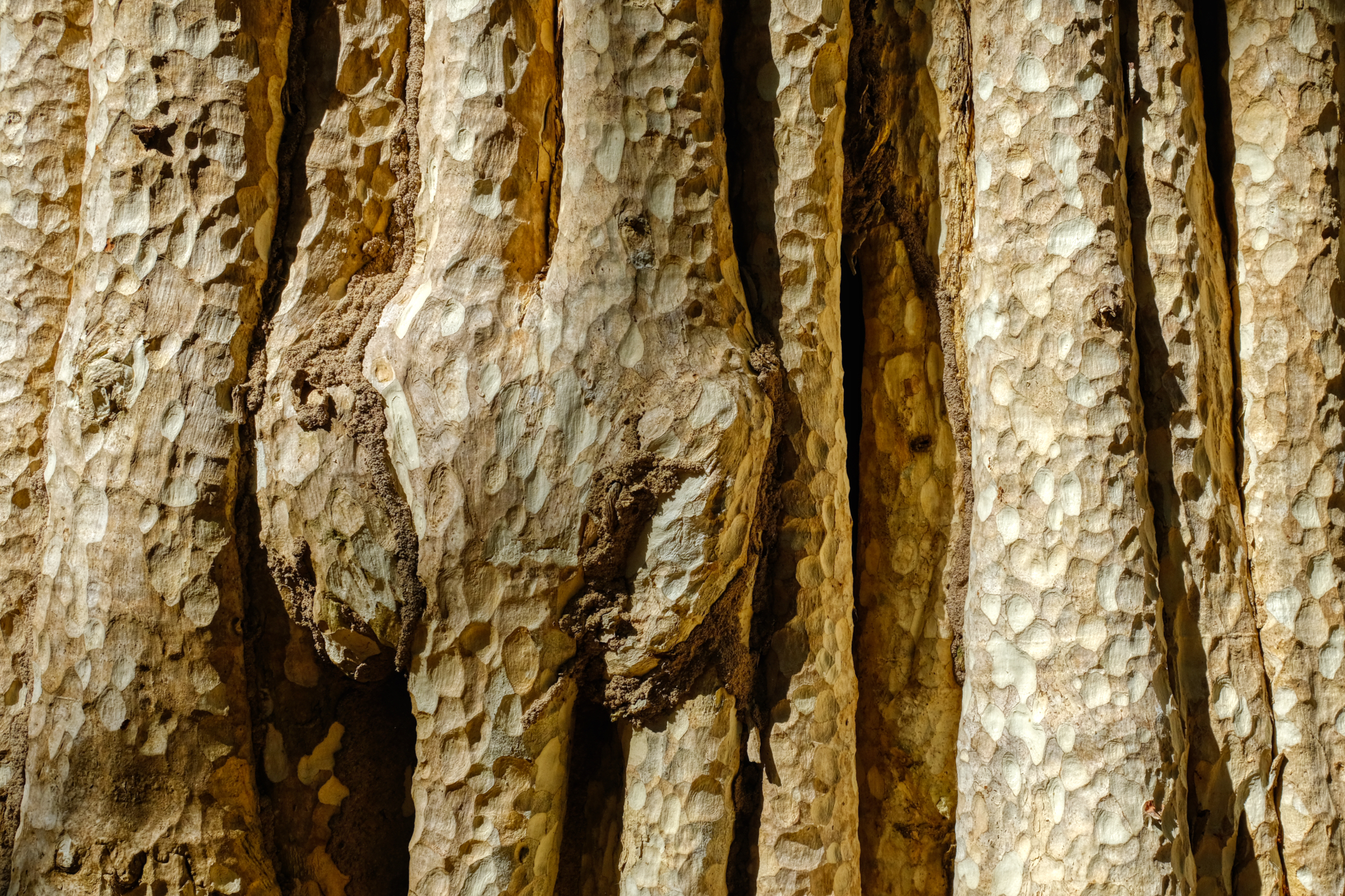 Nature here held some big surprises . . . like this complex tree bark.
Nature here held some big surprises . . . like this complex tree bark. Here and there, as we neared a new temple site, the road would be lined with these markers.
Here and there, as we neared a new temple site, the road would be lined with these markers.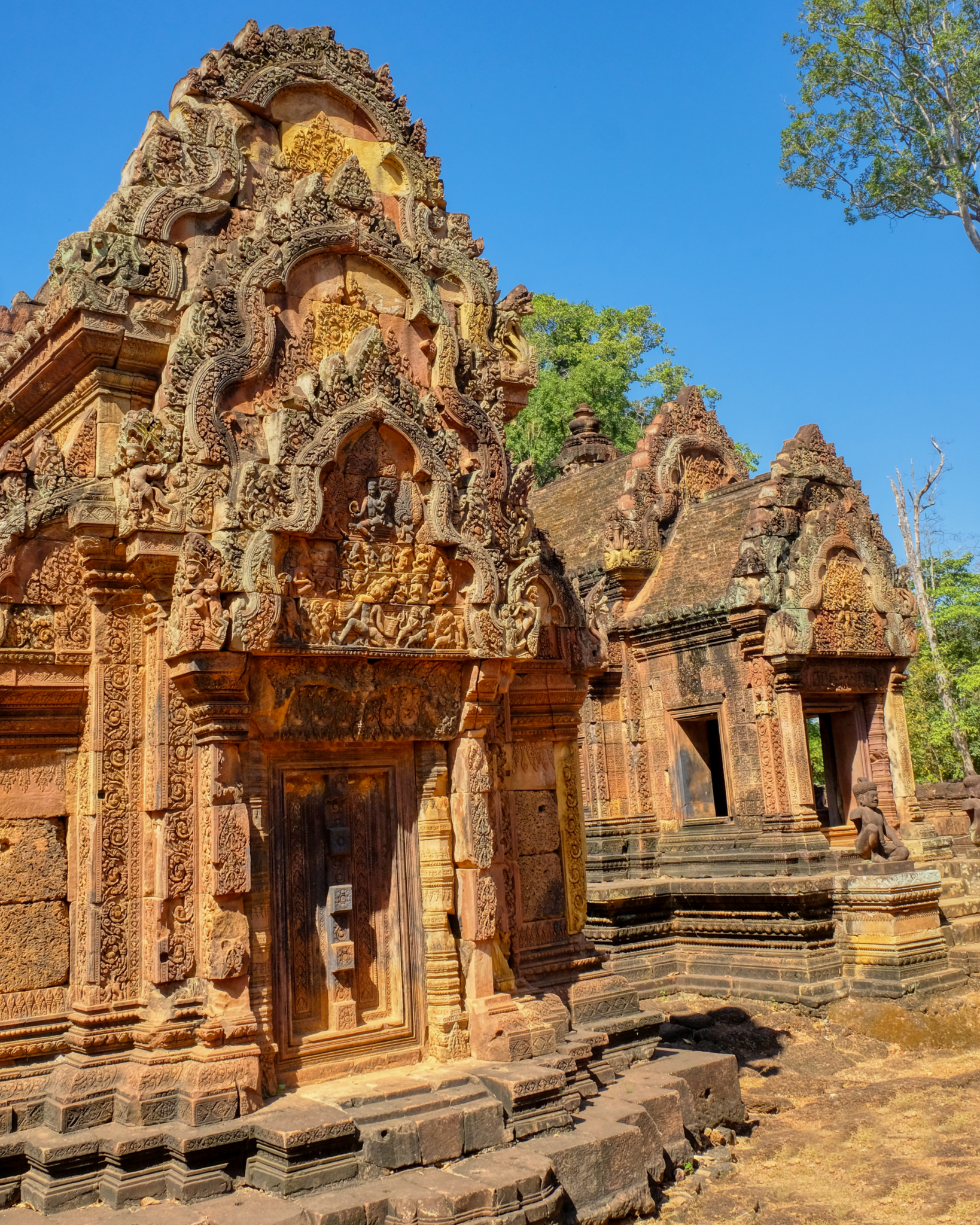 One of the last sites we visited had the temple structures made of a reddish stone with black volcanic rock accents. All carved, of course.
One of the last sites we visited had the temple structures made of a reddish stone with black volcanic rock accents. All carved, of course.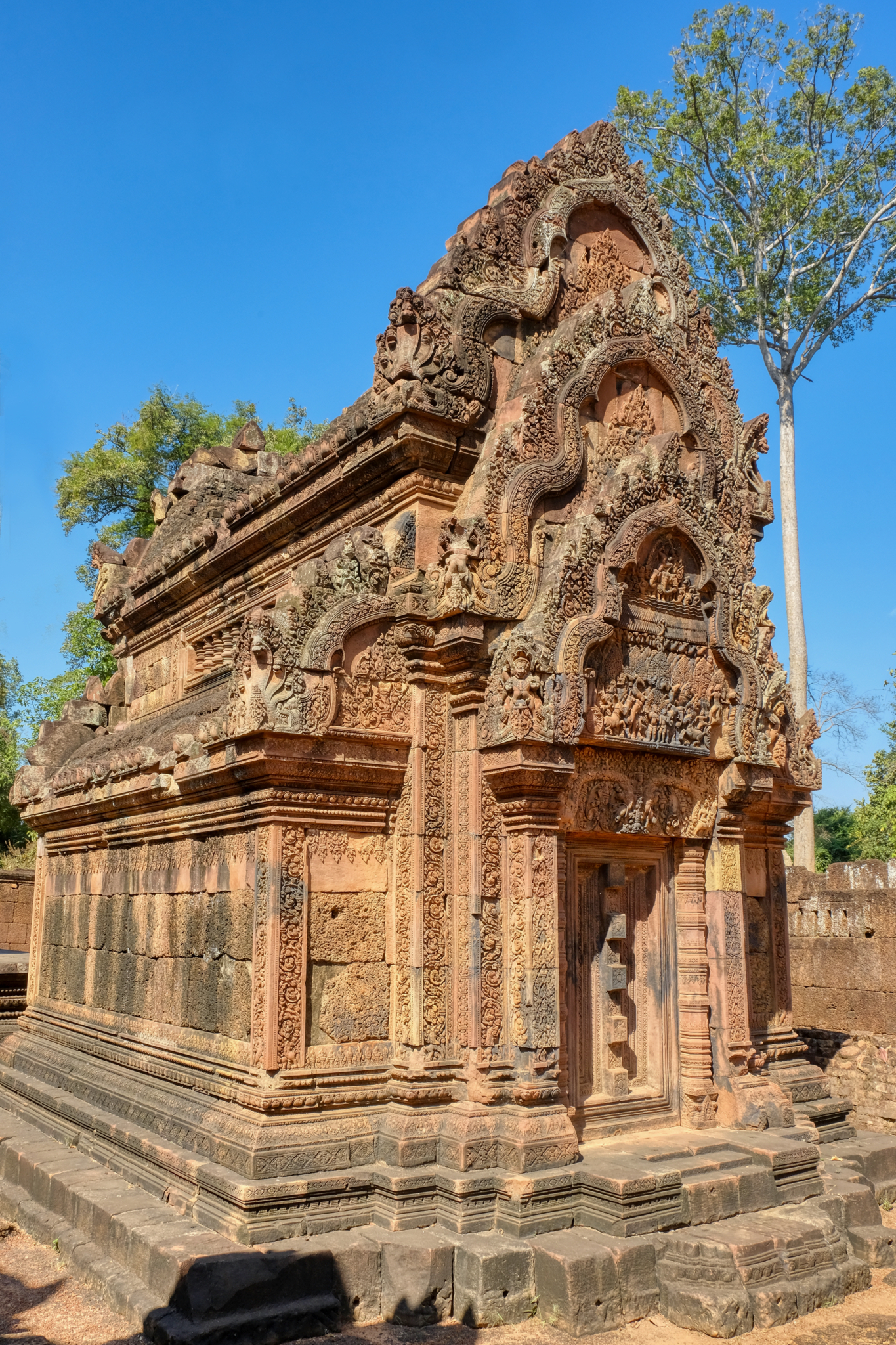 The carved details were very detailed and refined.
The carved details were very detailed and refined.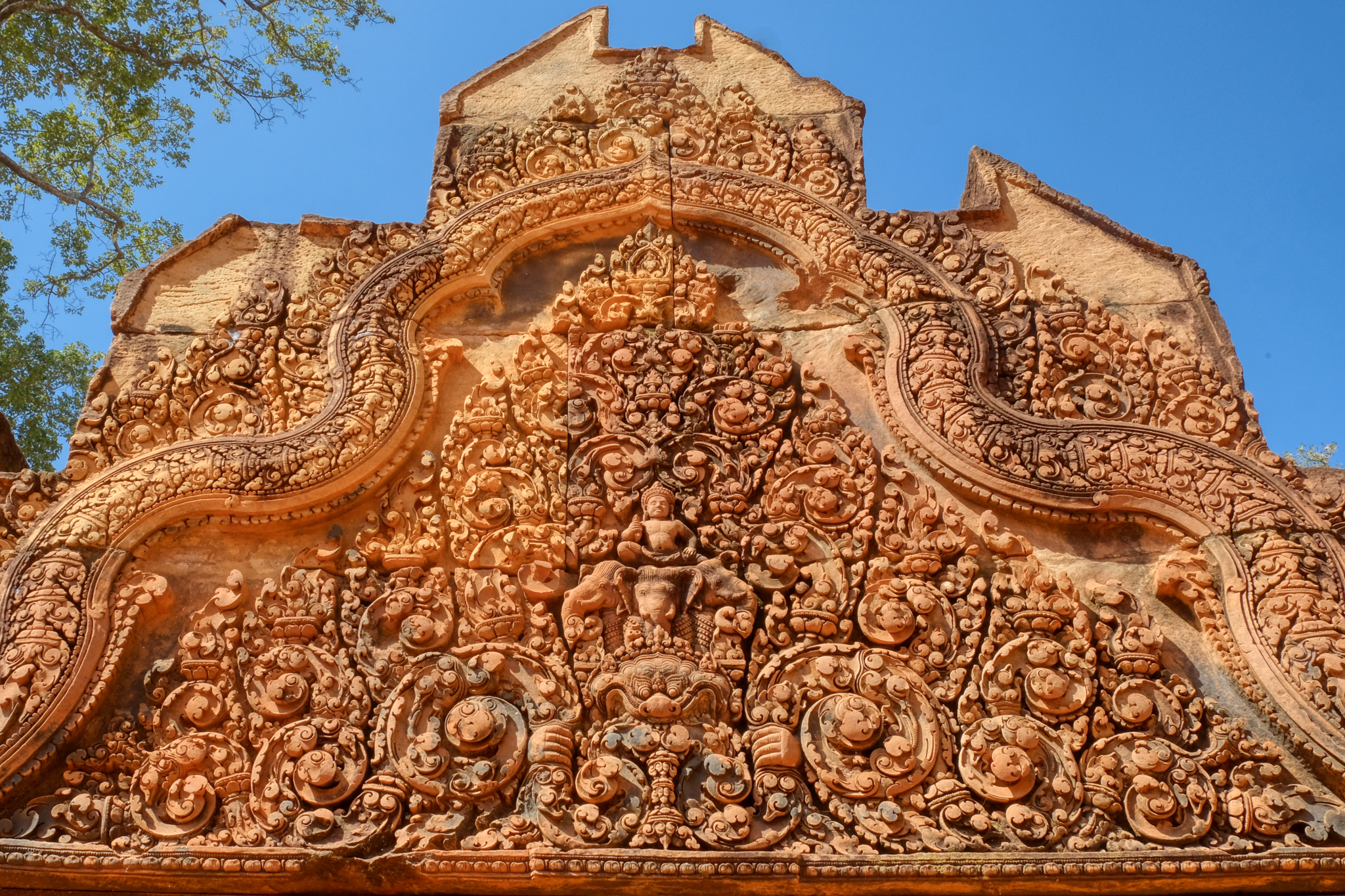 Upon closer inspection, I could not tell if these were fired red clay ceramics or a red sandstone . . . .
Upon closer inspection, I could not tell if these were fired red clay ceramics or a red sandstone . . . .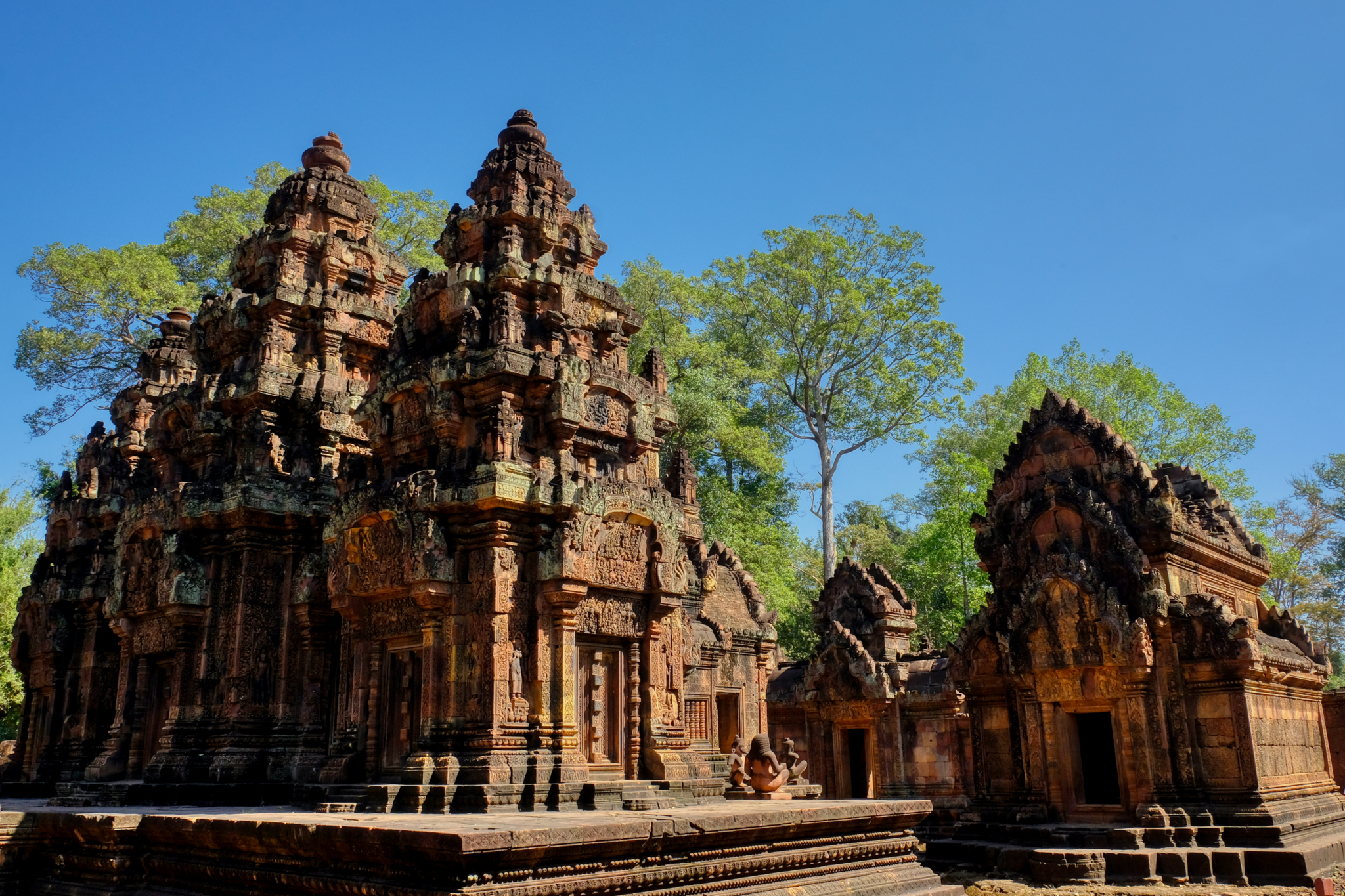 Late afternoon deep shadows on the red temple.
Late afternoon deep shadows on the red temple.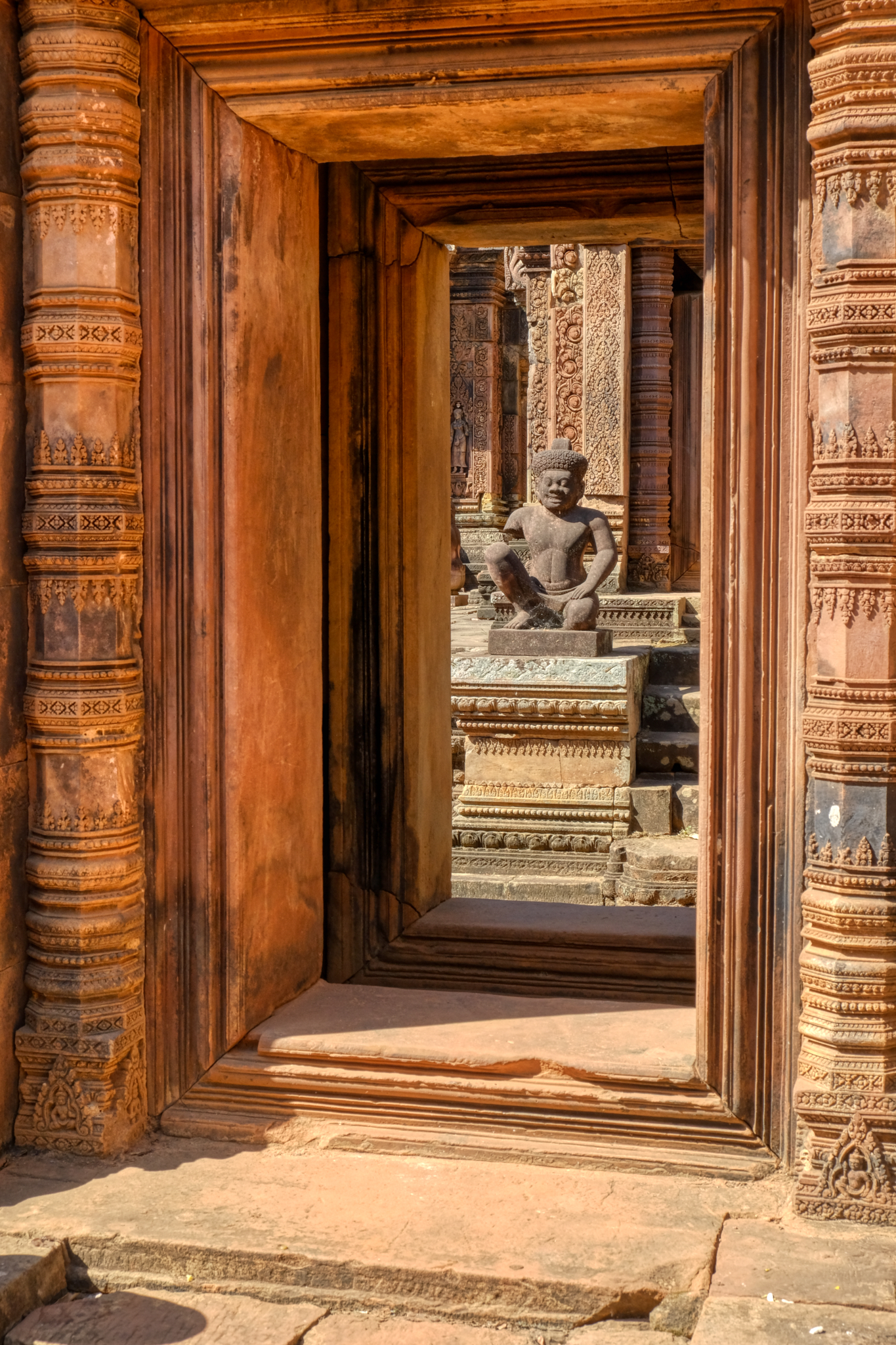 Many of these images, especially this one, lend themselves to printing and framing.
Many of these images, especially this one, lend themselves to printing and framing.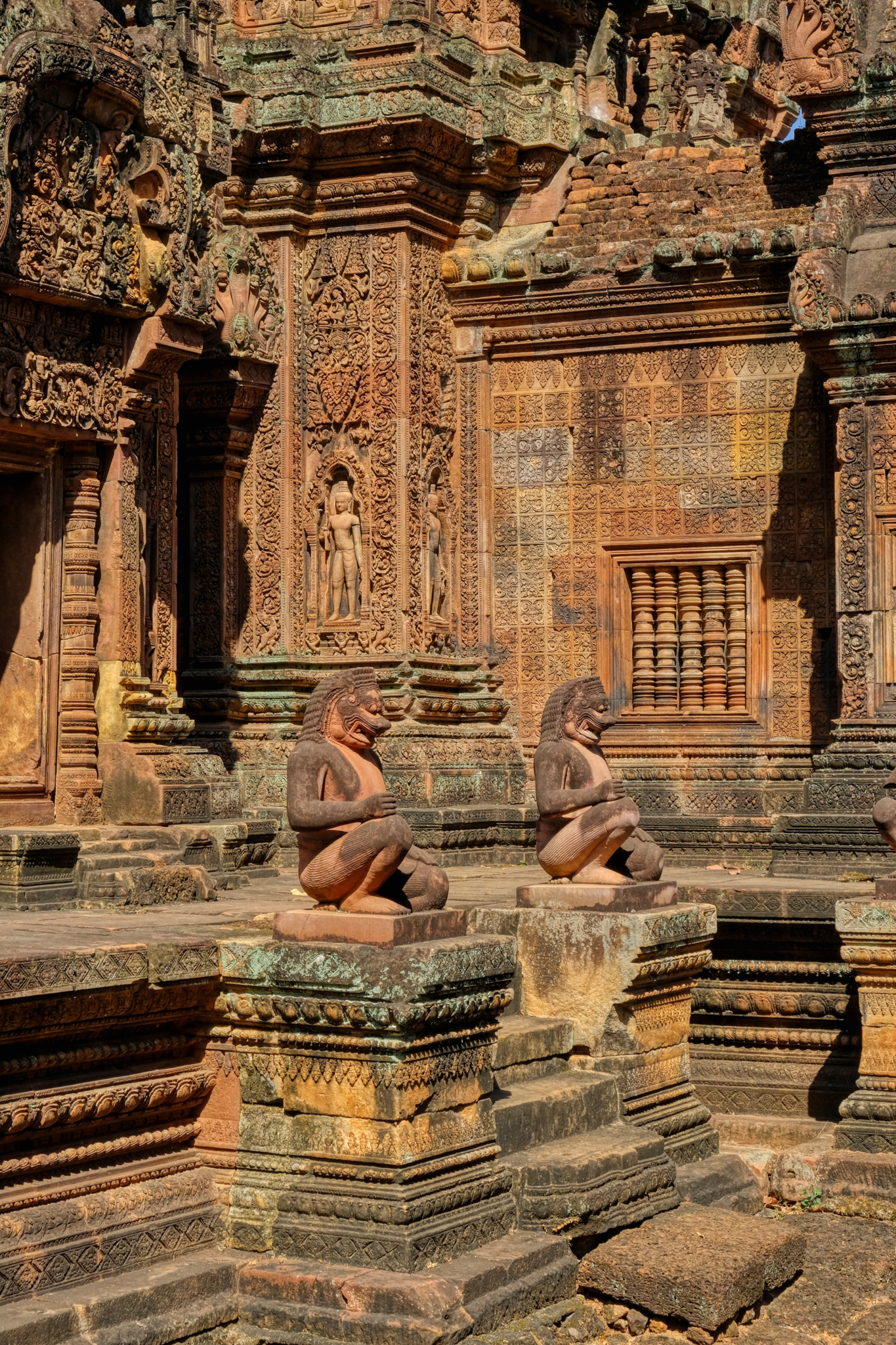 This temple had nearly no evidence of vandalism. Phenomenal beauty.
This temple had nearly no evidence of vandalism. Phenomenal beauty.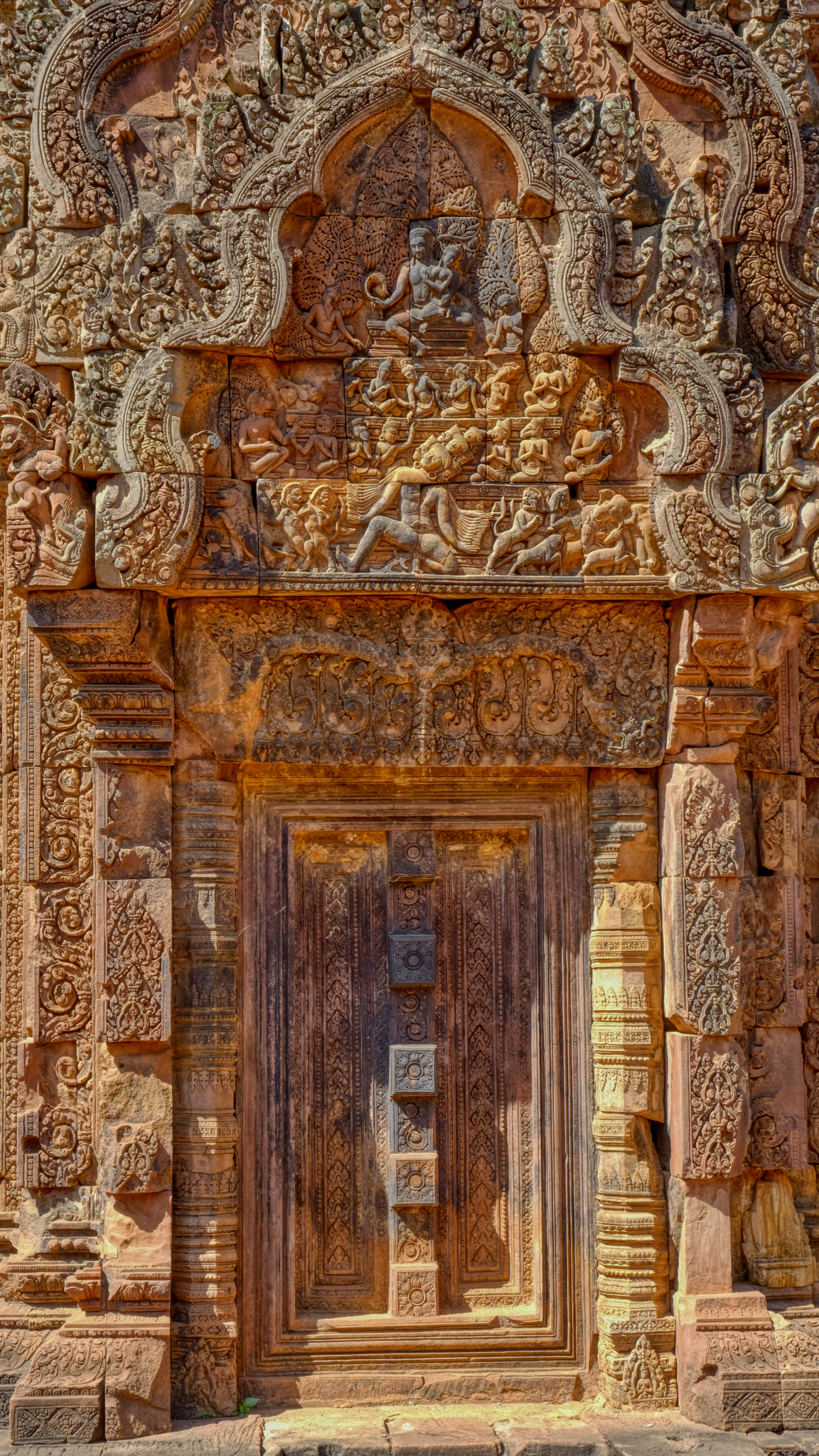 A magnificently carved stone door.
A magnificently carved stone door.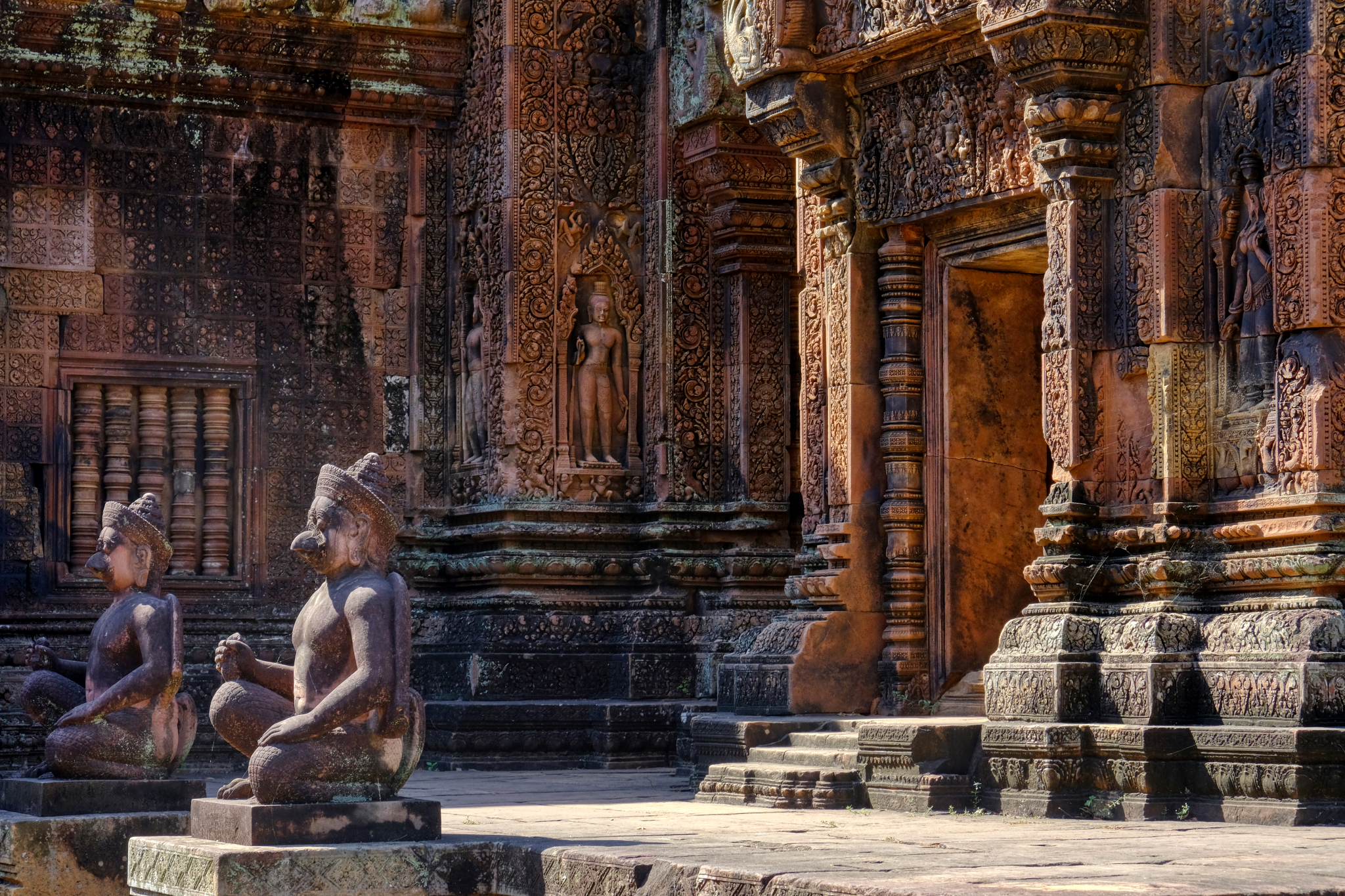 In the deep afternoon shadows, these statues in front of the carved temple presented an ancient, mystical image I will never forget.
In the deep afternoon shadows, these statues in front of the carved temple presented an ancient, mystical image I will never forget.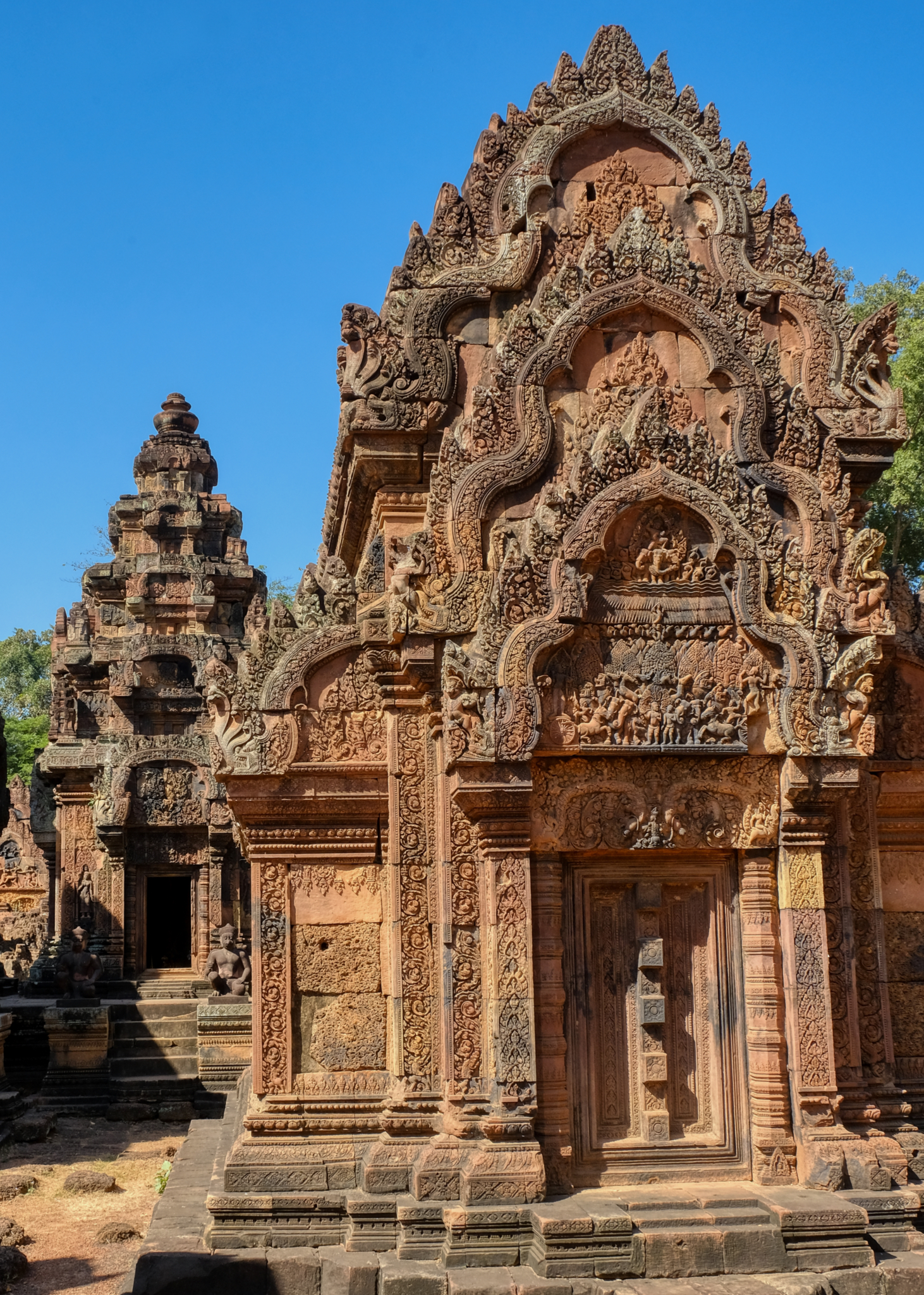 Many small temple structures filled the walled enclosure surrounded by a moat.
Many small temple structures filled the walled enclosure surrounded by a moat.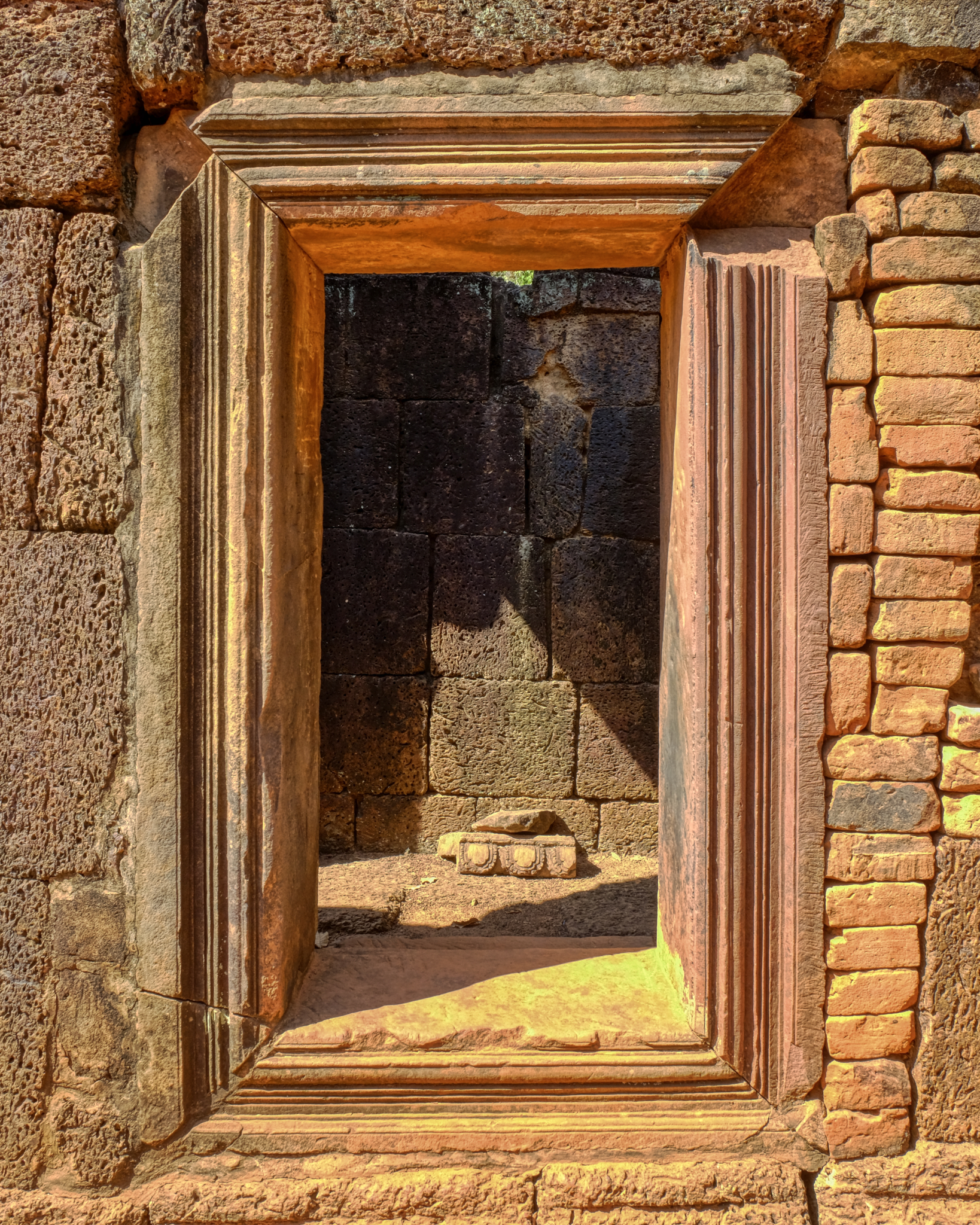 After exploring the red temple, and taking 30-40 photographs of windows and doors, we headed down the road again.
After exploring the red temple, and taking 30-40 photographs of windows and doors, we headed down the road again.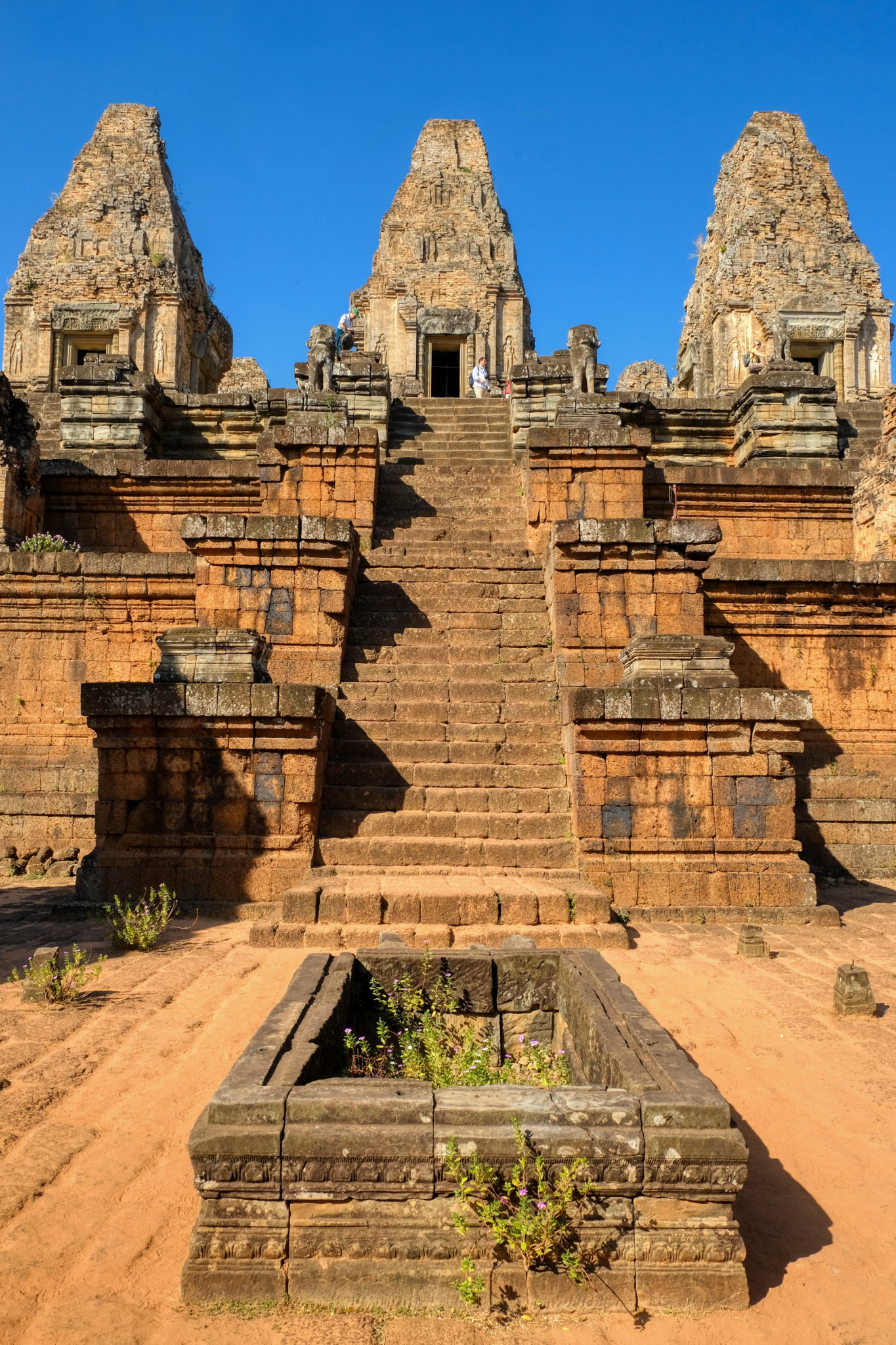 While speeding along a rural road, we yelled to the driver to stop when we saw this small temple alongside the road . . . .
While speeding along a rural road, we yelled to the driver to stop when we saw this small temple alongside the road . . . .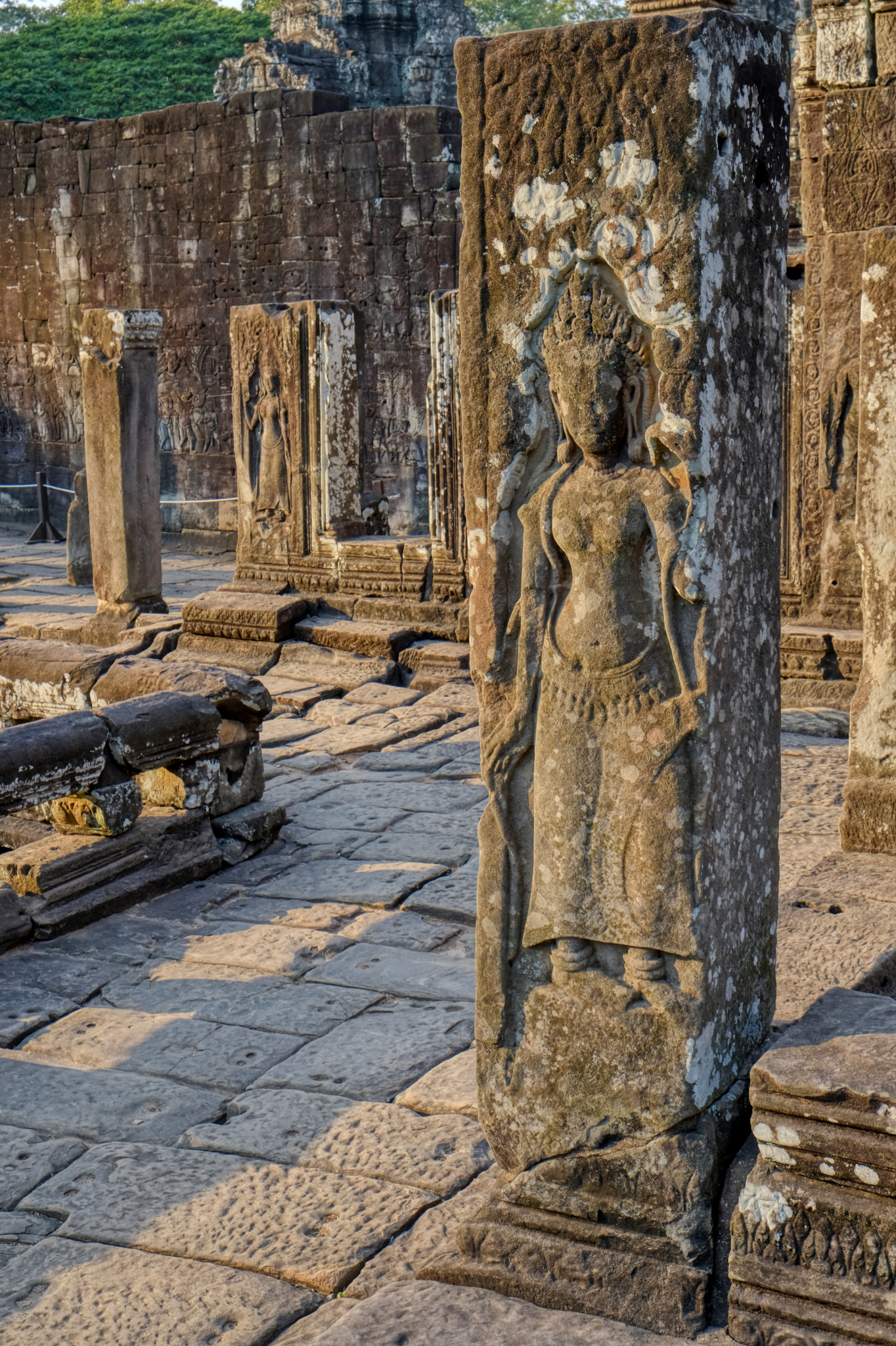 A remarkable temple in the late magic light.
A remarkable temple in the late magic light.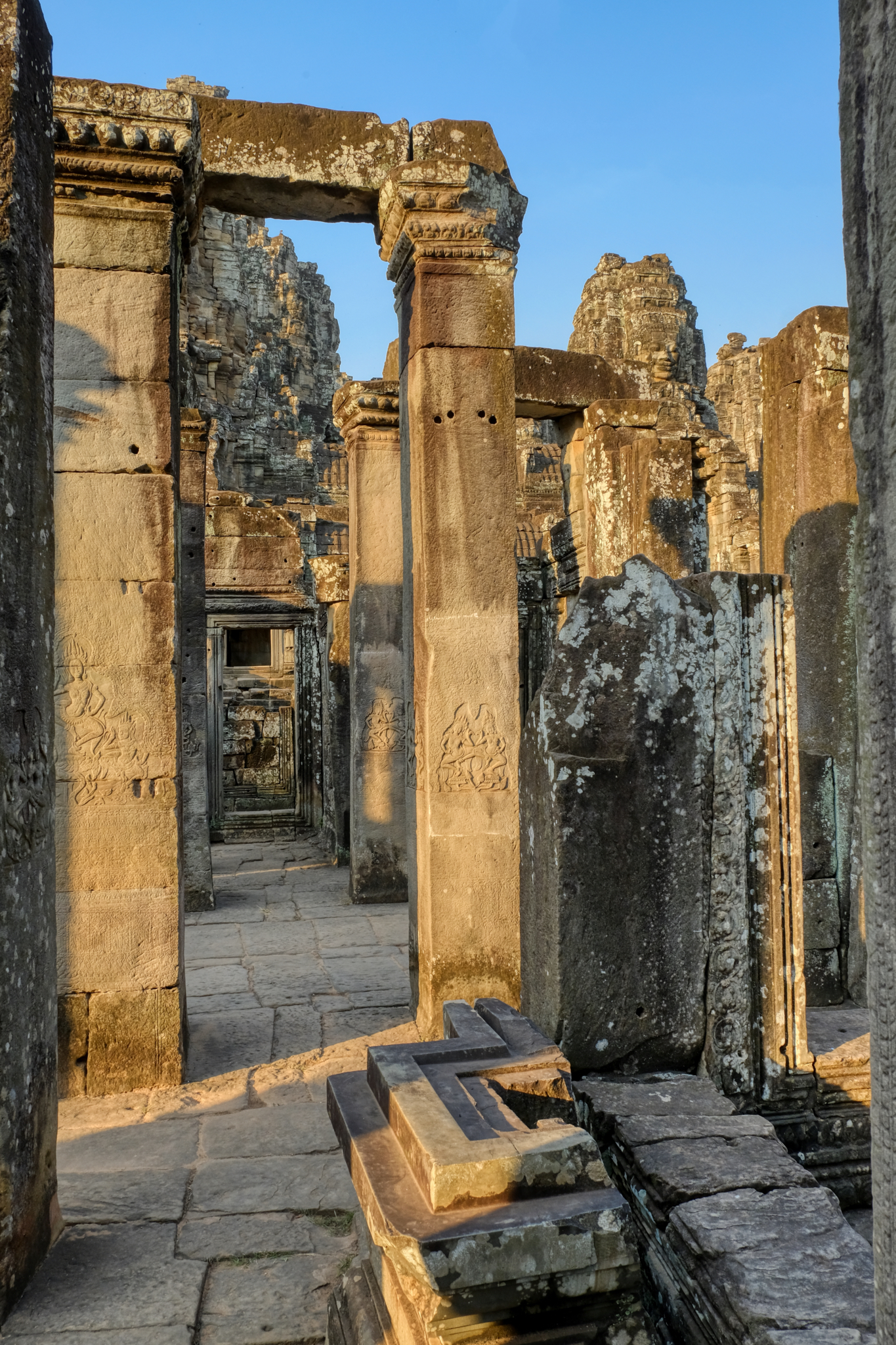 Stunning bas reliefs on the columns.
Stunning bas reliefs on the columns.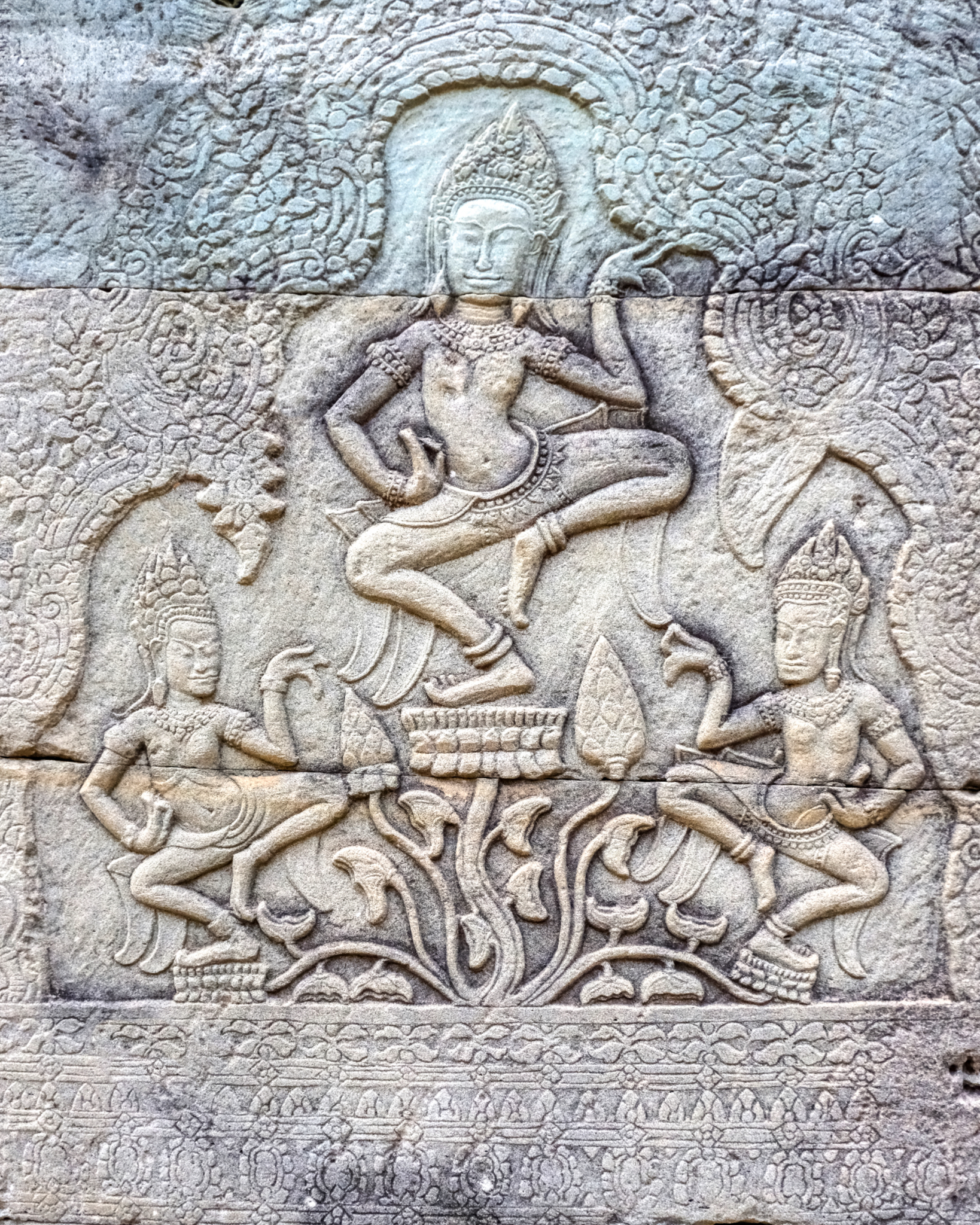 One of the columns' bas relief of a dancer.
One of the columns' bas relief of a dancer.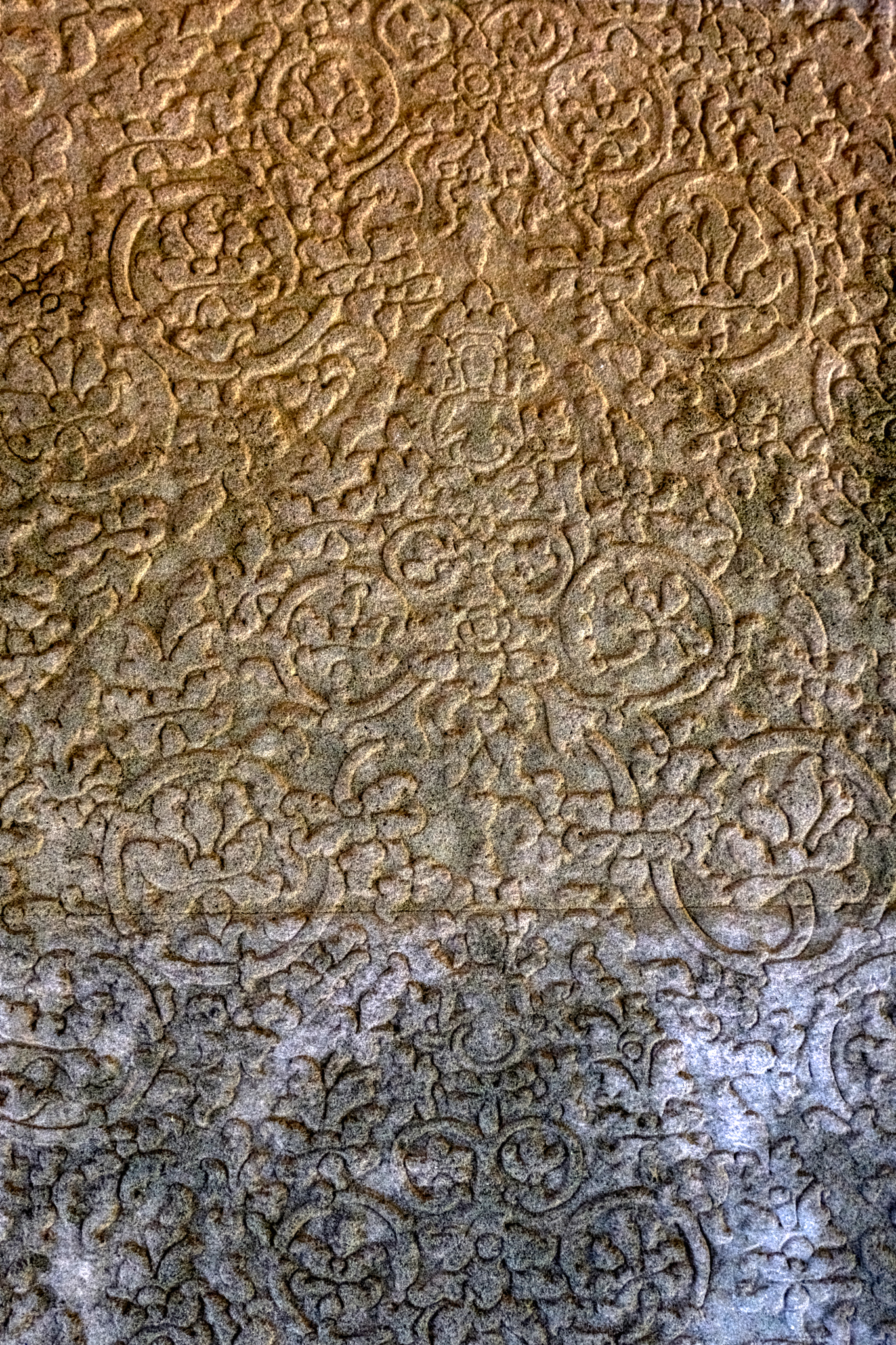 Almost every surface of this temple was incised with these marvelous patterns.
Almost every surface of this temple was incised with these marvelous patterns.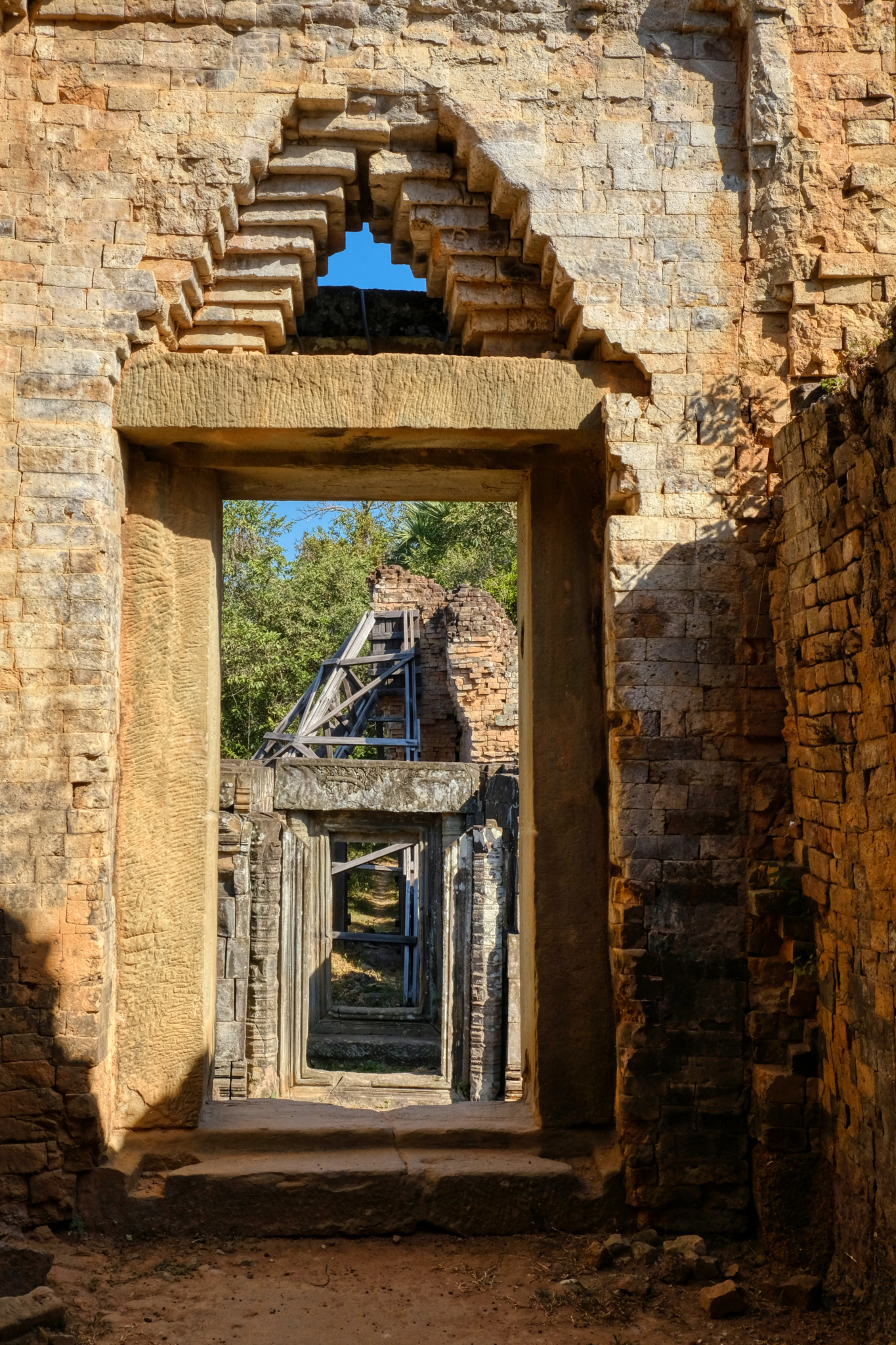 We wandered around this small temple for only 15 minutes before heading out with the driver again. I must go back!!!
We wandered around this small temple for only 15 minutes before heading out with the driver again. I must go back!!!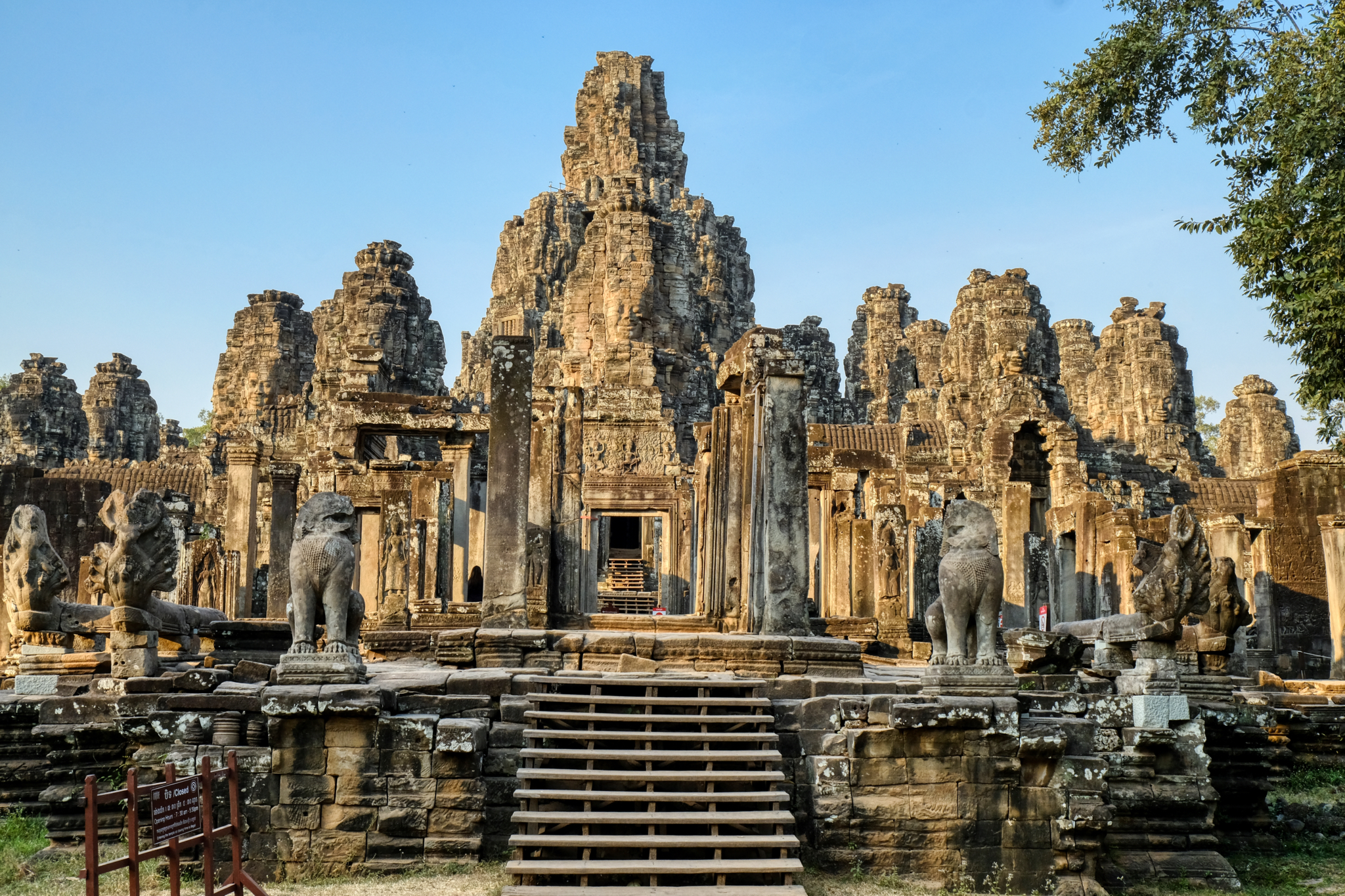 Another roadside temple . . . this photograph taken out of the window of the car. No time to explore it.
Another roadside temple . . . this photograph taken out of the window of the car. No time to explore it.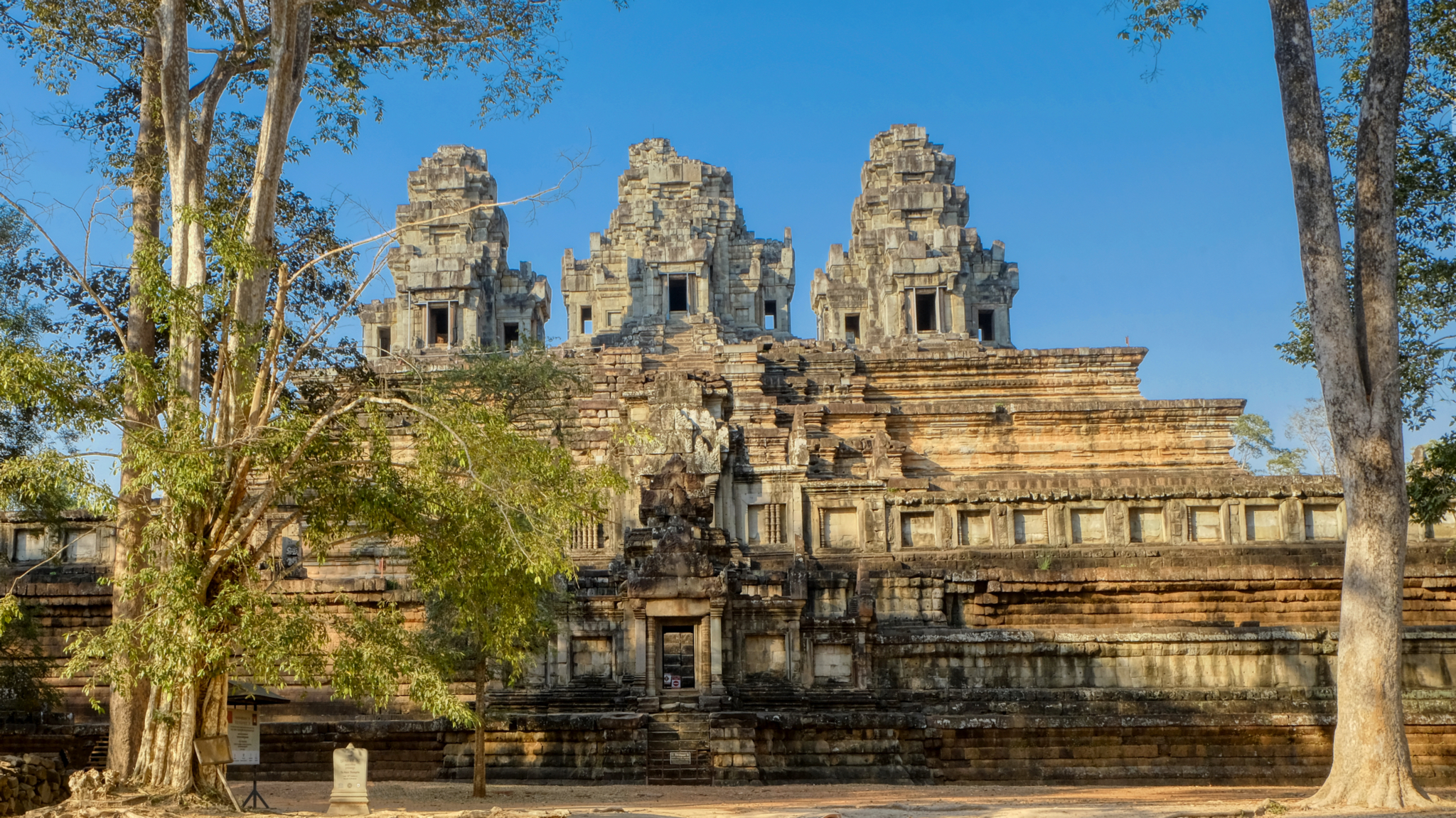 Yet another photo taken from the car of a temple not explored . . . I MUST come back!
Yet another photo taken from the car of a temple not explored . . . I MUST come back! A highlight of the day was the 'discovery' of the halls of carved stone concubines at a place called the elephant race track.
A highlight of the day was the 'discovery' of the halls of carved stone concubines at a place called the elephant race track.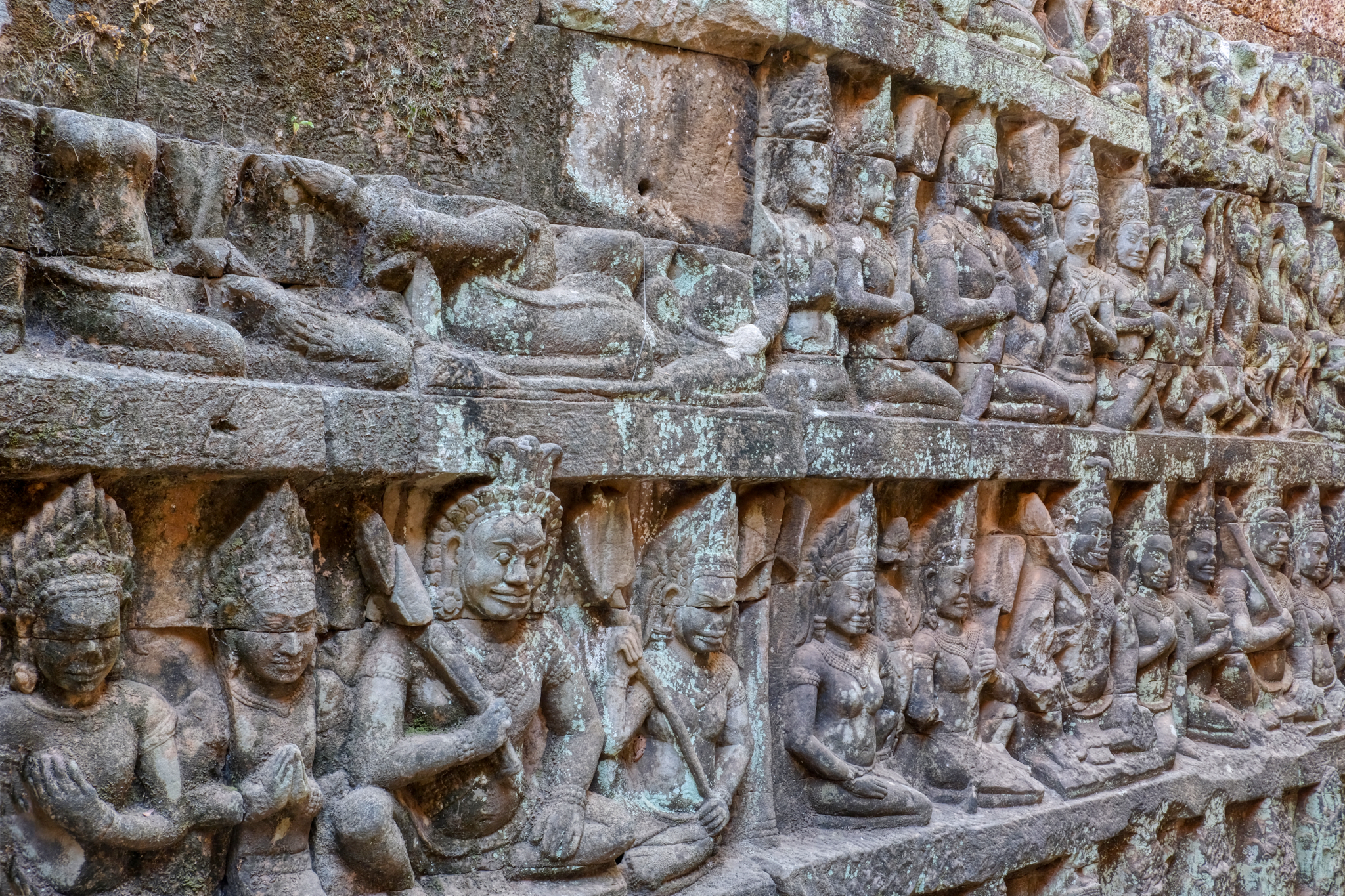 Hundreds and hundreds of individuals represented in stone.
Hundreds and hundreds of individuals represented in stone.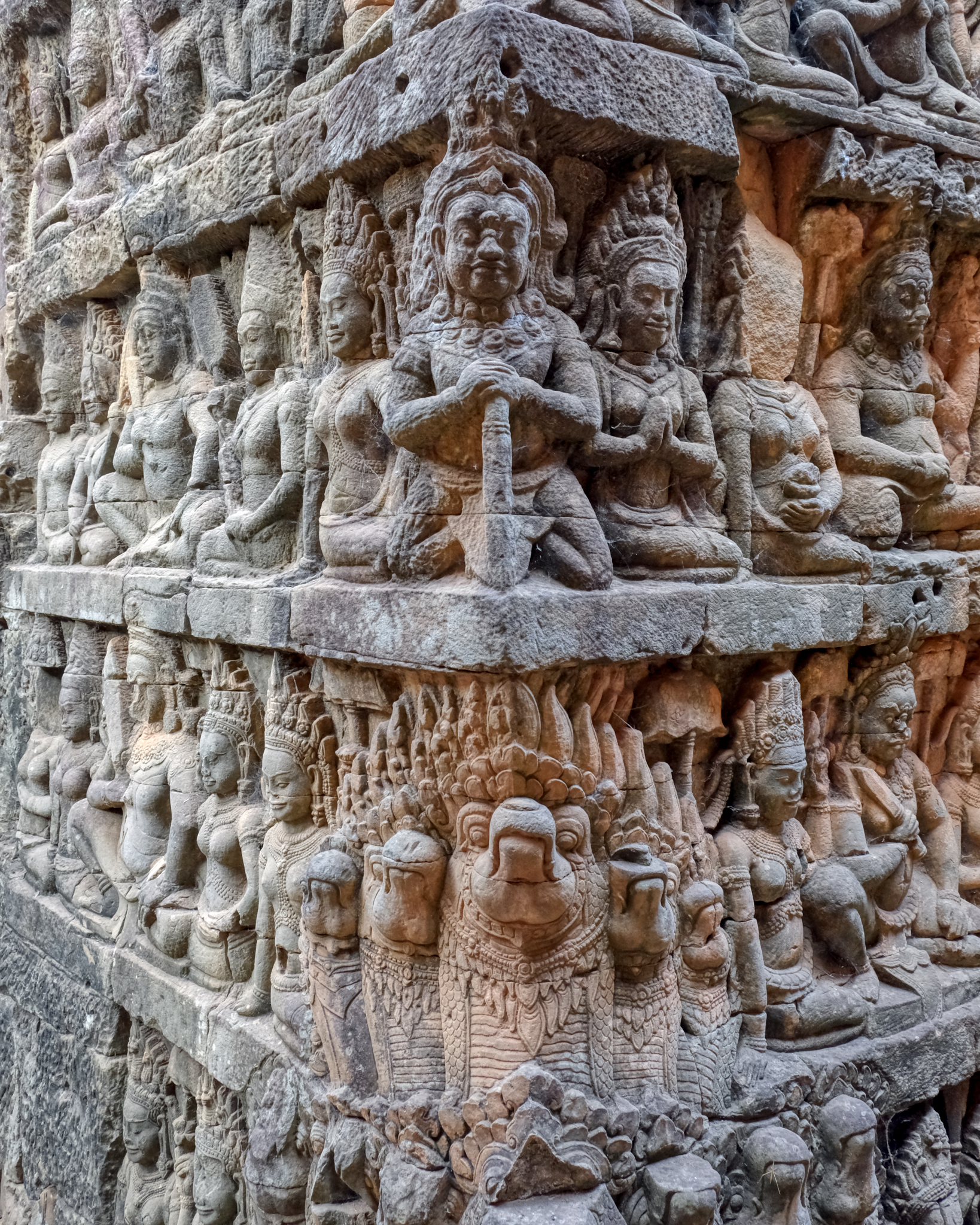 An incredible archeological find.
An incredible archeological find.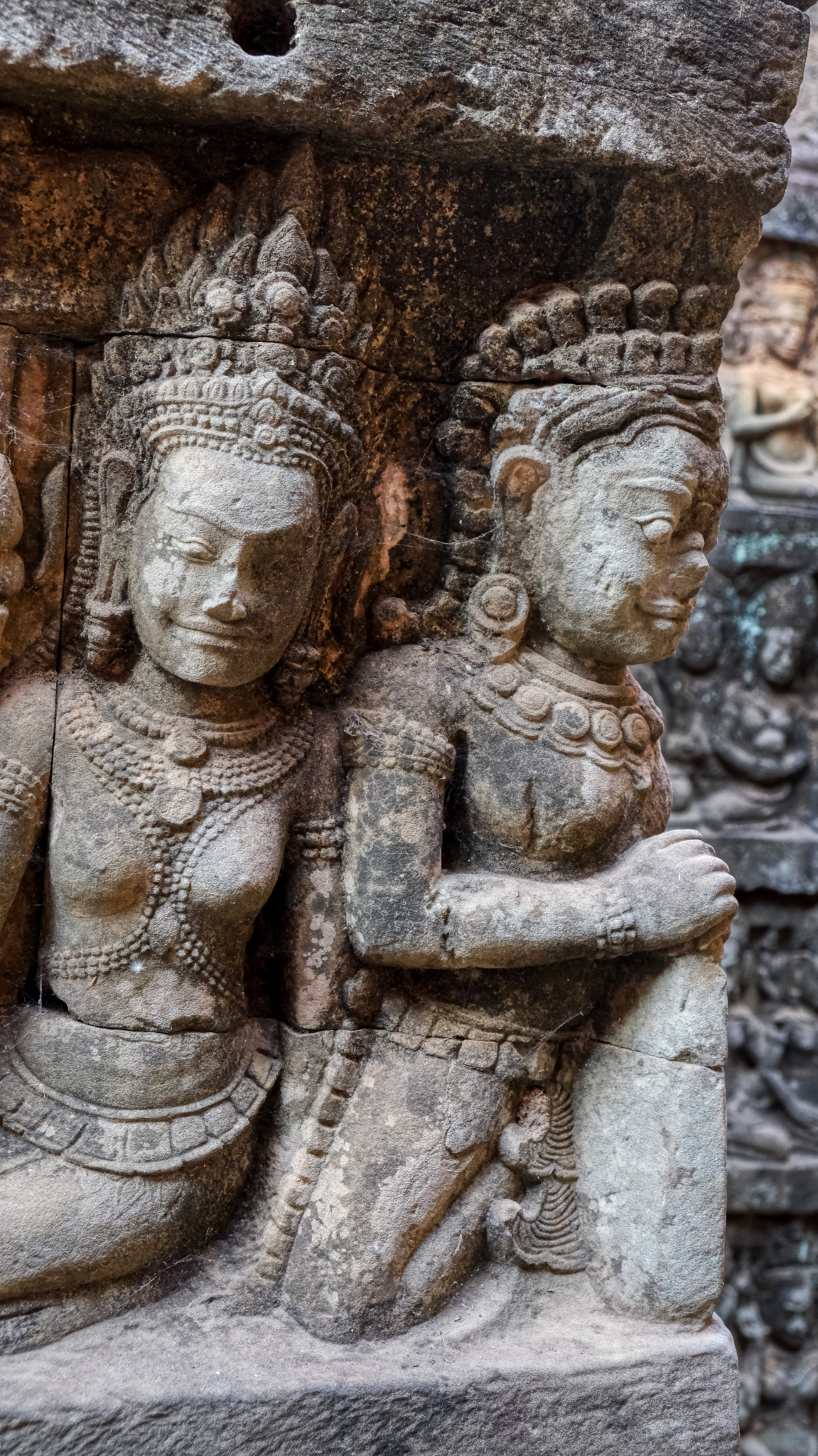 Great detail.
Great detail.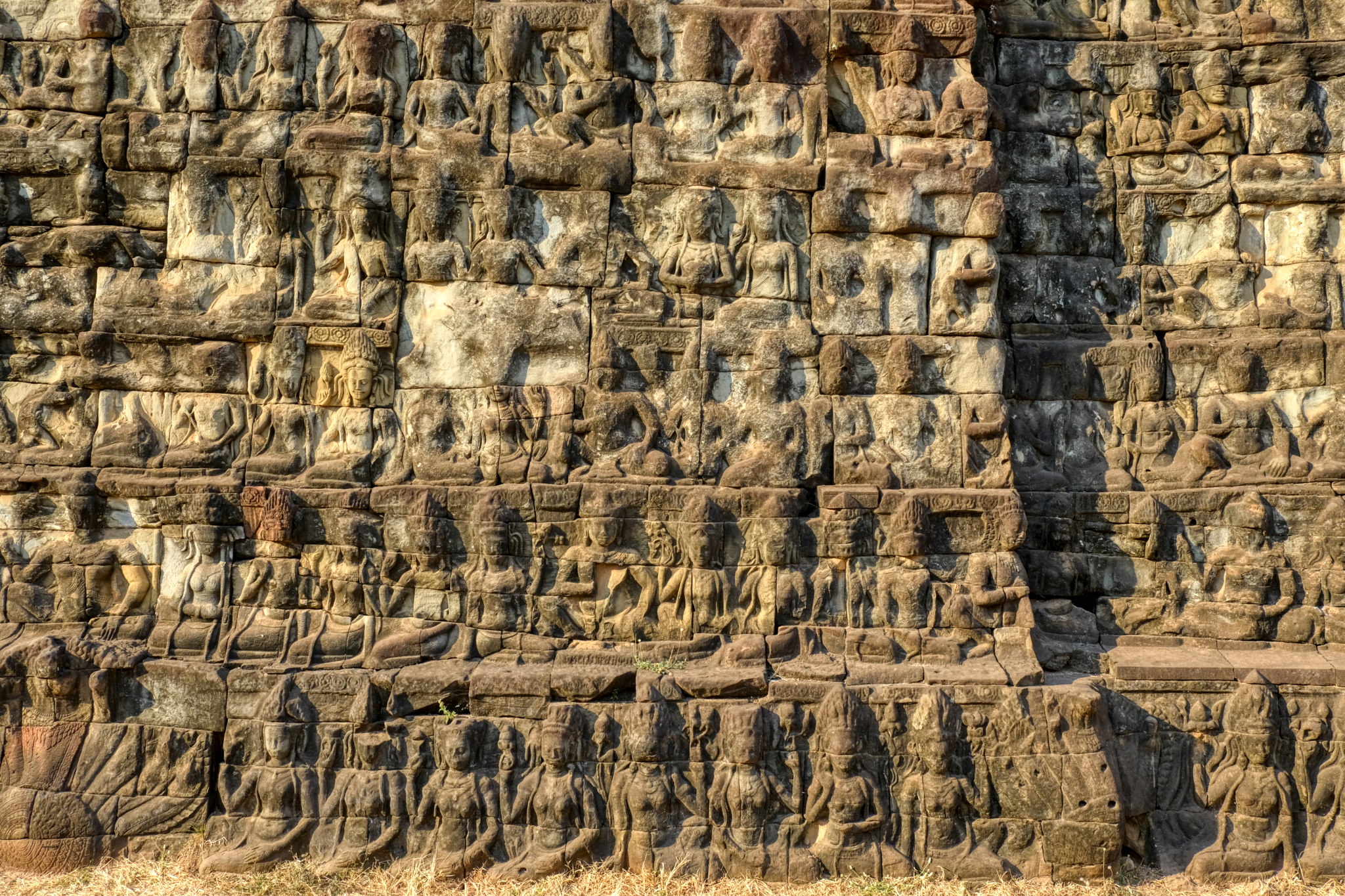 Another wall of concubines in the late sunlight.
Another wall of concubines in the late sunlight.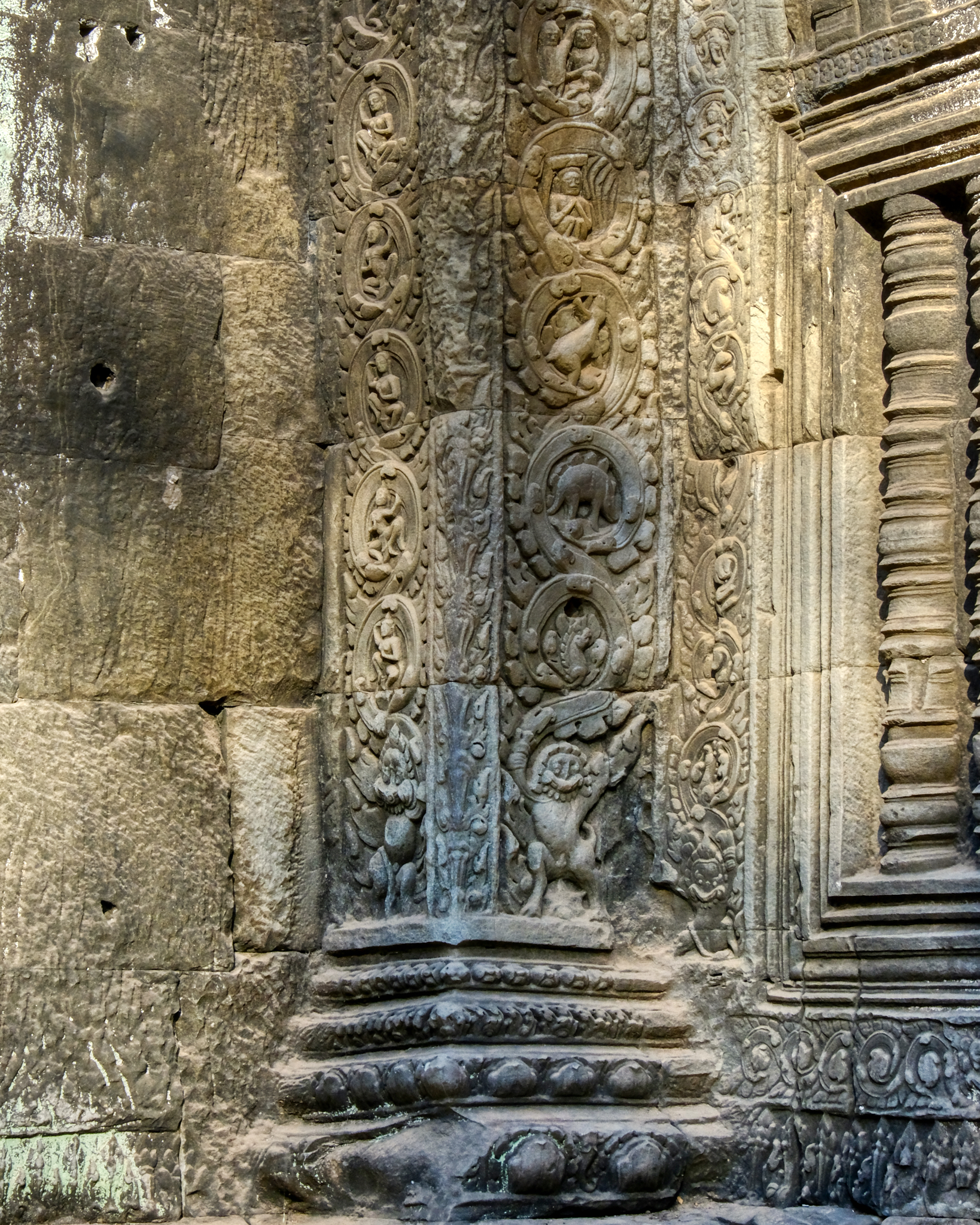 This corner panel has stumped archaeologists for a hundred years. See if you can spot the carved stegosaurus (3rd one up from the bottom on right). . . . they didn't know about the dinosaurs at that time!
This corner panel has stumped archaeologists for a hundred years. See if you can spot the carved stegosaurus (3rd one up from the bottom on right). . . . they didn't know about the dinosaurs at that time!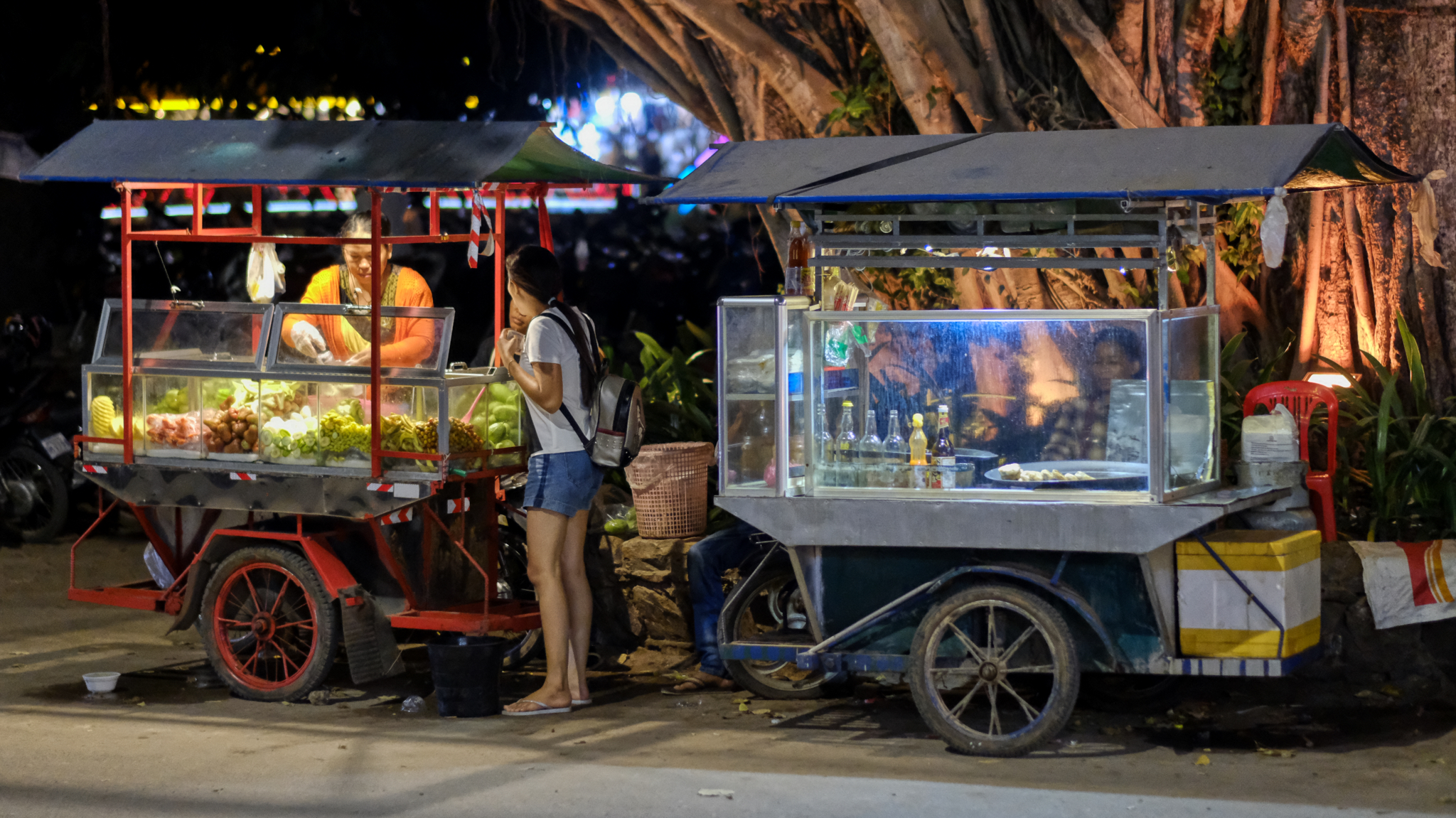 We stayed at the nearby town of Siem Reap. Although it was filling up with tourists (before the Covid-19 scare), it was a pleasant and vibrant little place with good restaurants and good shopping.
We stayed at the nearby town of Siem Reap. Although it was filling up with tourists (before the Covid-19 scare), it was a pleasant and vibrant little place with good restaurants and good shopping.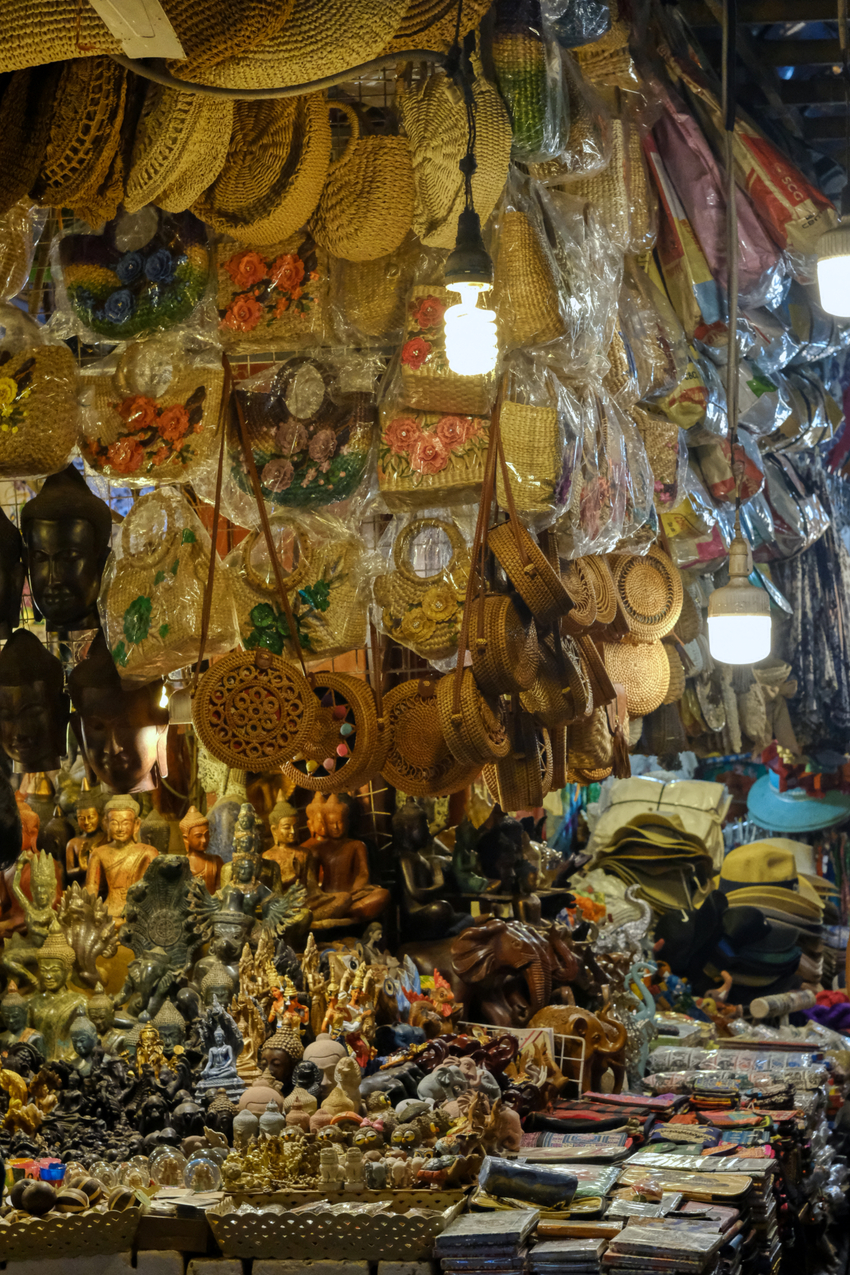 There was an extensive 'night market' stuffed with tourist curios . . . and some very nice things too.
There was an extensive 'night market' stuffed with tourist curios . . . and some very nice things too.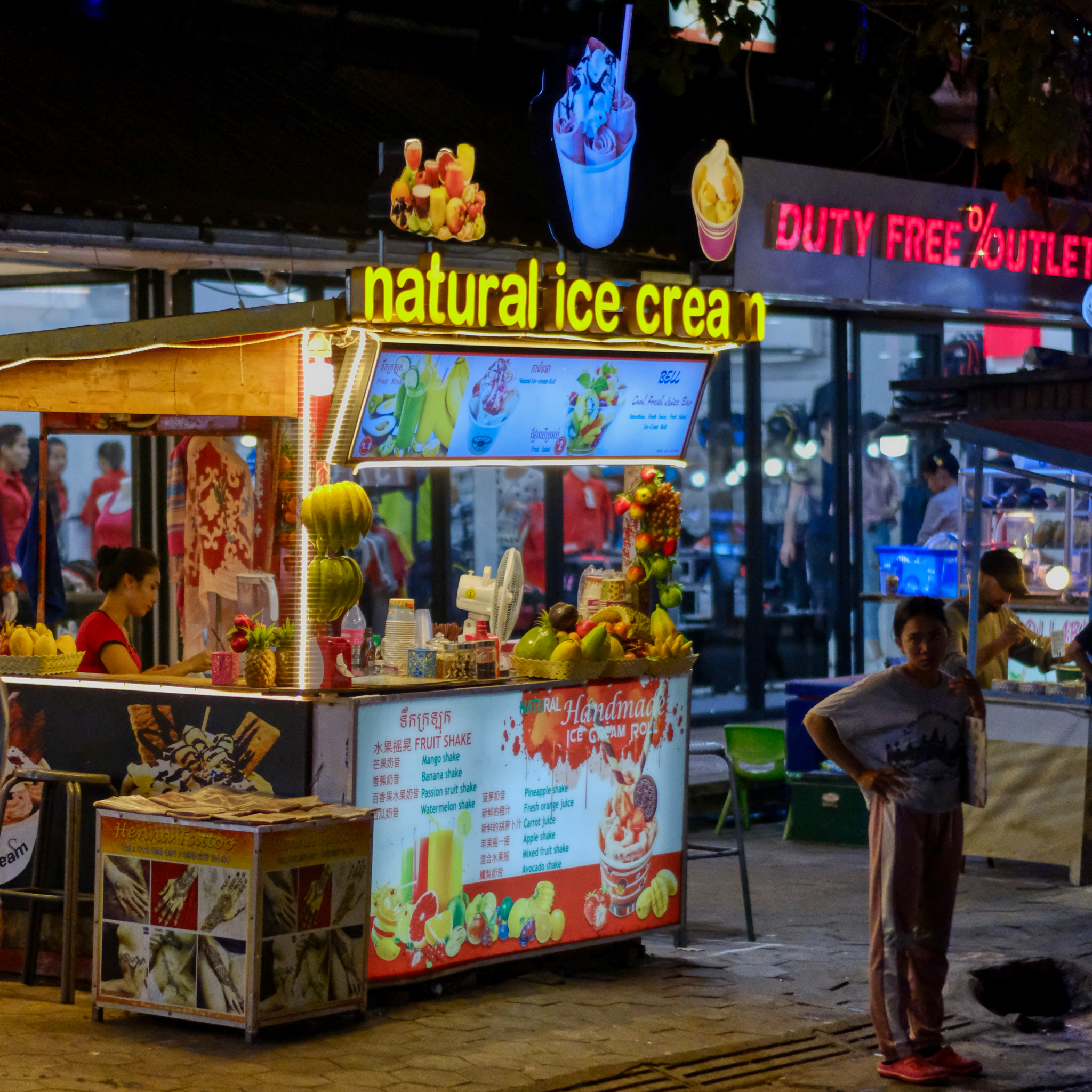 Yes, everything an international tourist might want on a hot Cambodian night.
Yes, everything an international tourist might want on a hot Cambodian night.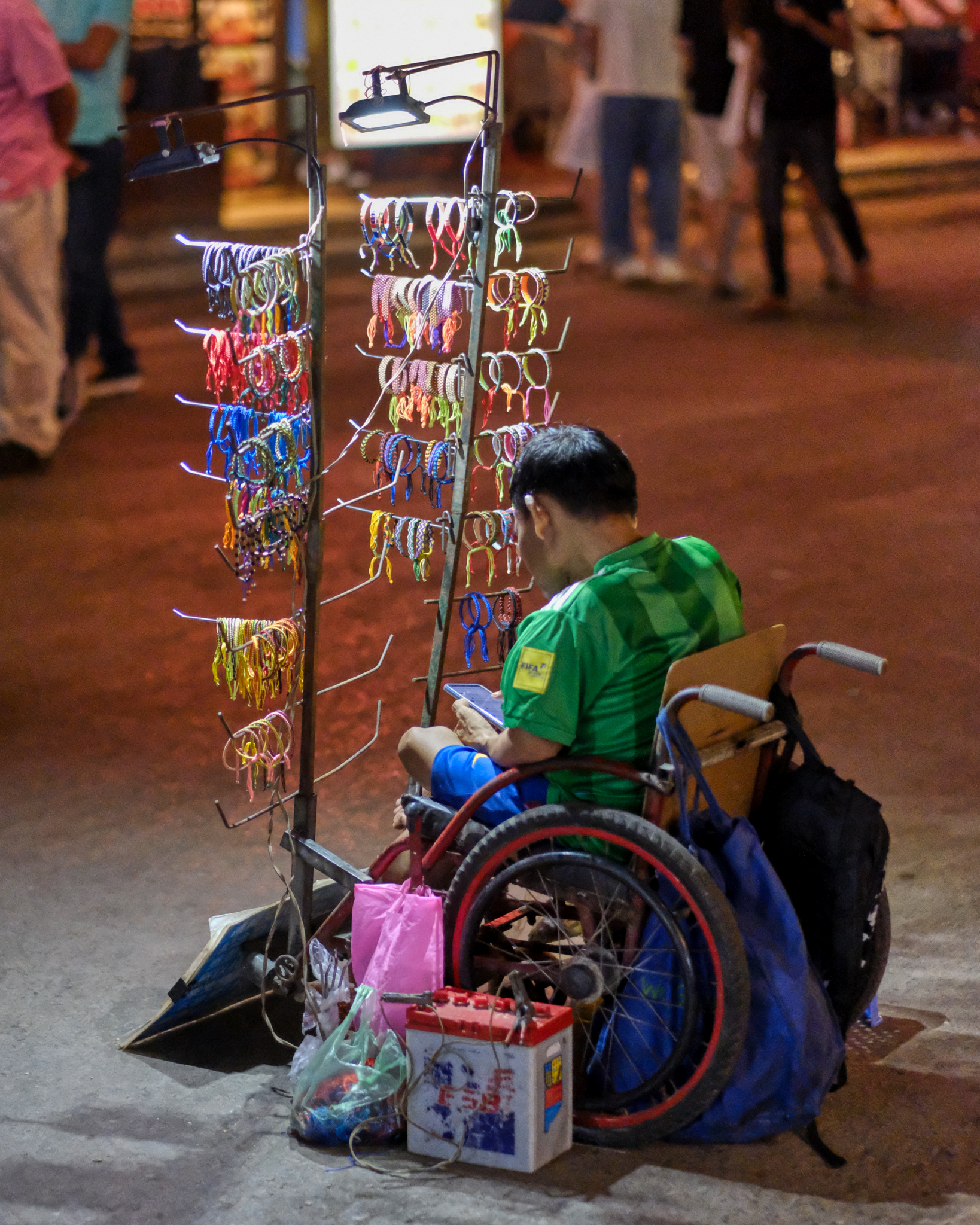 I bought some bracelets from this hard working guy.
I bought some bracelets from this hard working guy.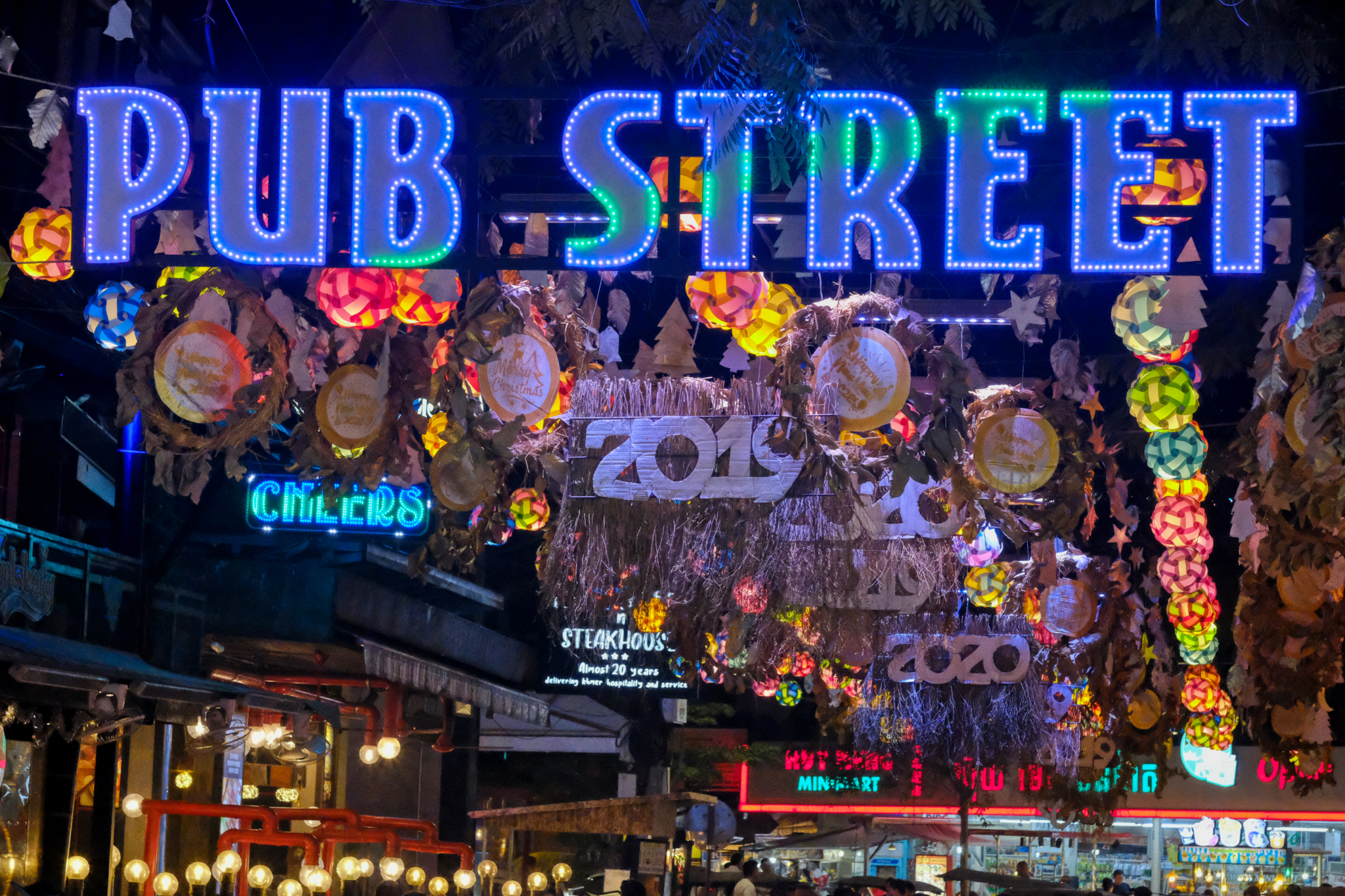 We had a feeling we were not the first tourists to have visited Siem Reap. Pub Street was a lively place.
We had a feeling we were not the first tourists to have visited Siem Reap. Pub Street was a lively place.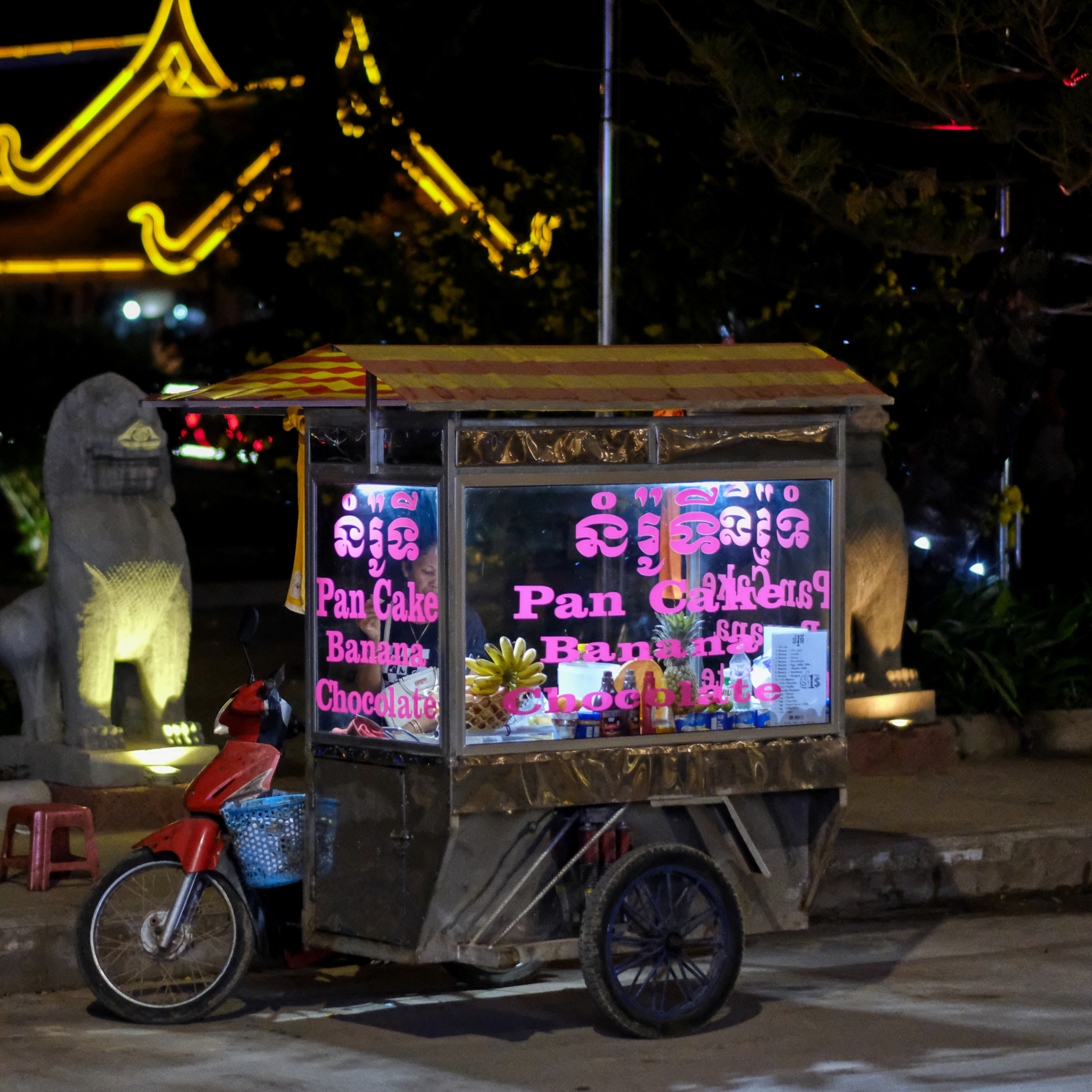 This cart reminded me of the movie Groundhog Day . . . "Hey, who wants some flapjacks?"
This cart reminded me of the movie Groundhog Day . . . "Hey, who wants some flapjacks?"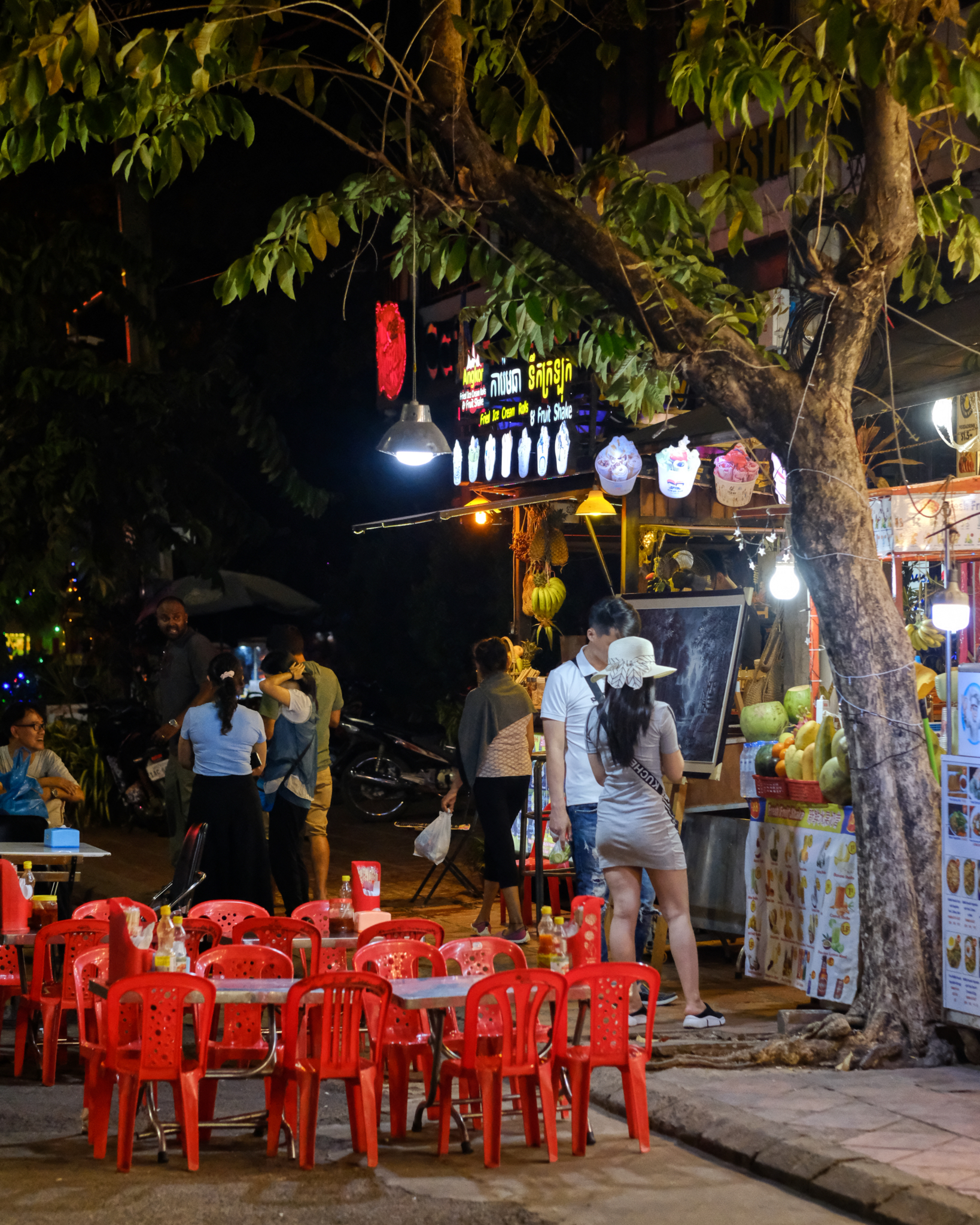 Lots of small street eateries. This was in the middle of the tourist season, mid-January, and it was not as crowded as I would have thought.
Lots of small street eateries. This was in the middle of the tourist season, mid-January, and it was not as crowded as I would have thought.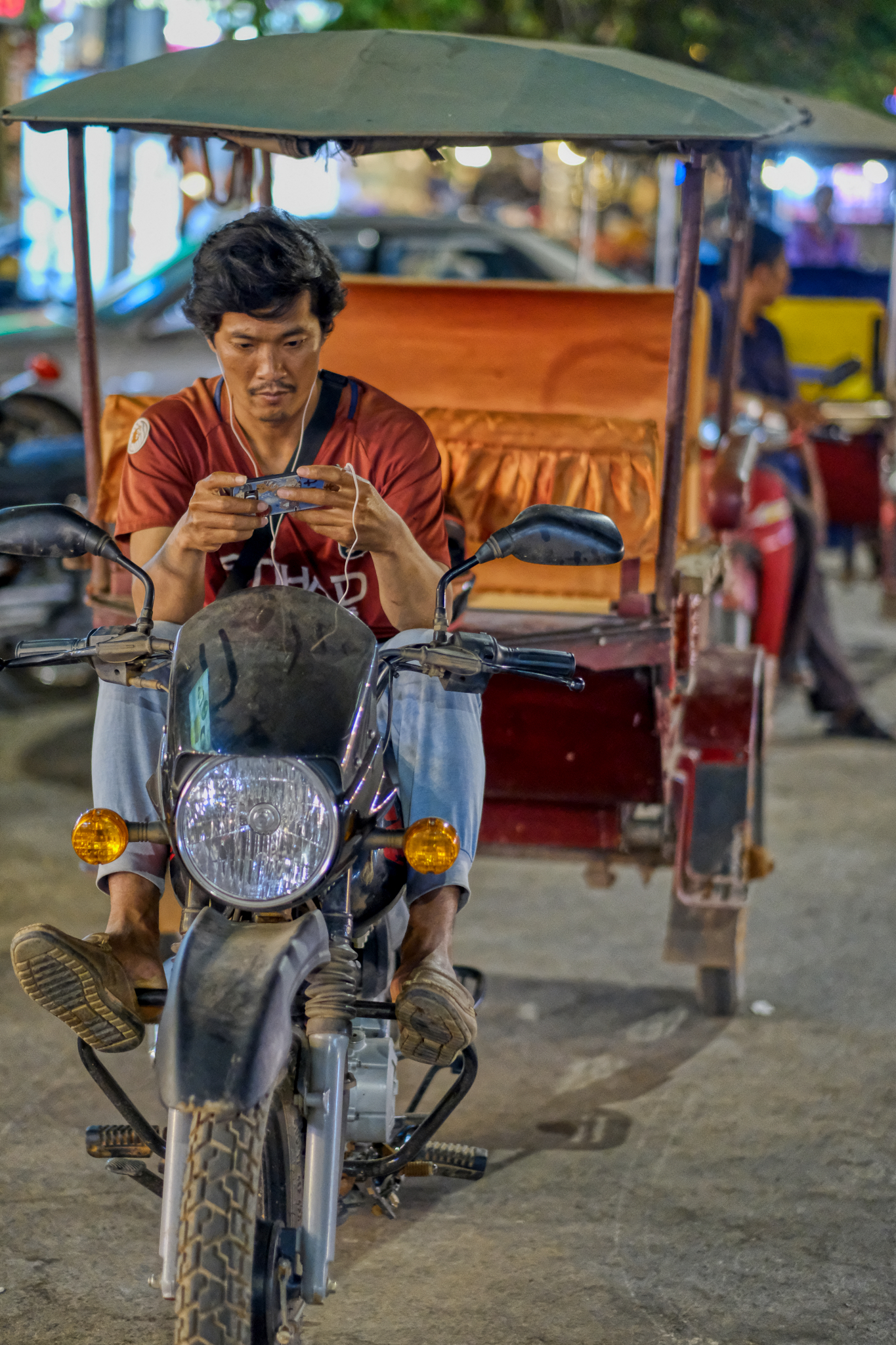 The modern tuk-tuk driver is hooked into the world and its events.
The modern tuk-tuk driver is hooked into the world and its events.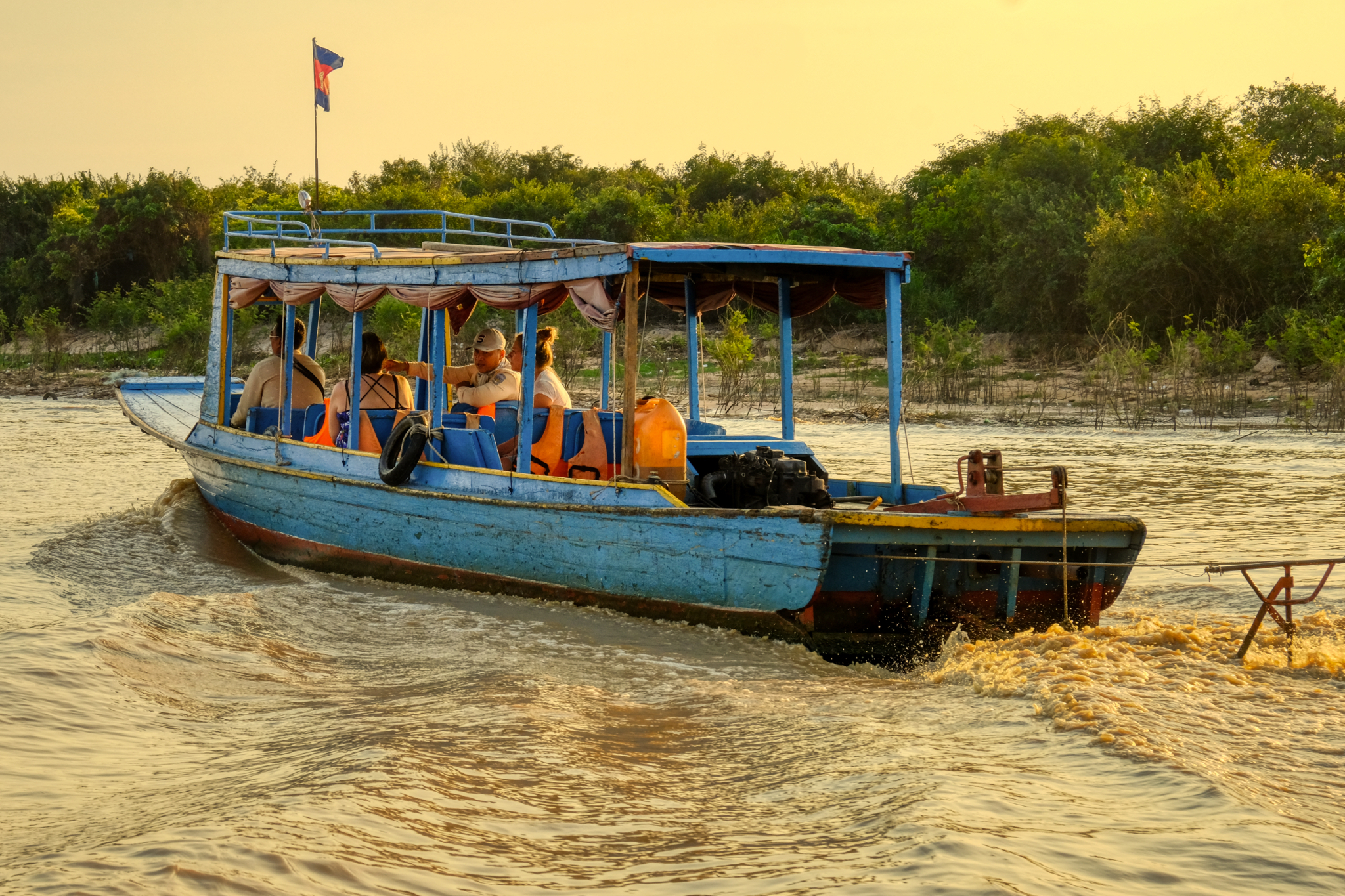 Our driver insisted that we all go out to the lake and take a boat on the water to see the sunset. We were sure it was just a tourist trap, but we relented. There were hundreds of small boats full of tourists. We got one and headed out.
Our driver insisted that we all go out to the lake and take a boat on the water to see the sunset. We were sure it was just a tourist trap, but we relented. There were hundreds of small boats full of tourists. We got one and headed out.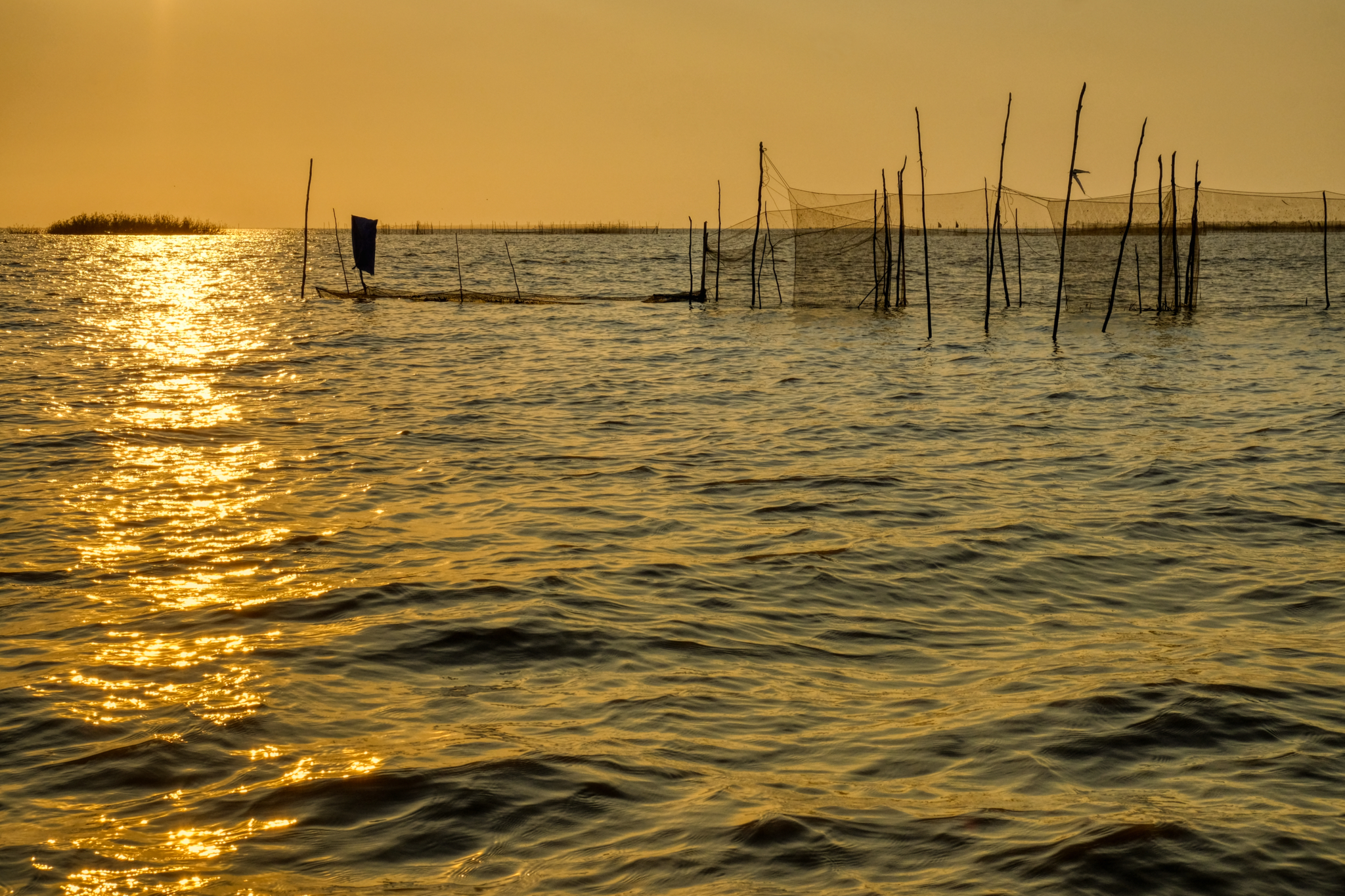 The ride out to the lake was spectacular. We were very happy we had taken the trip.
The ride out to the lake was spectacular. We were very happy we had taken the trip.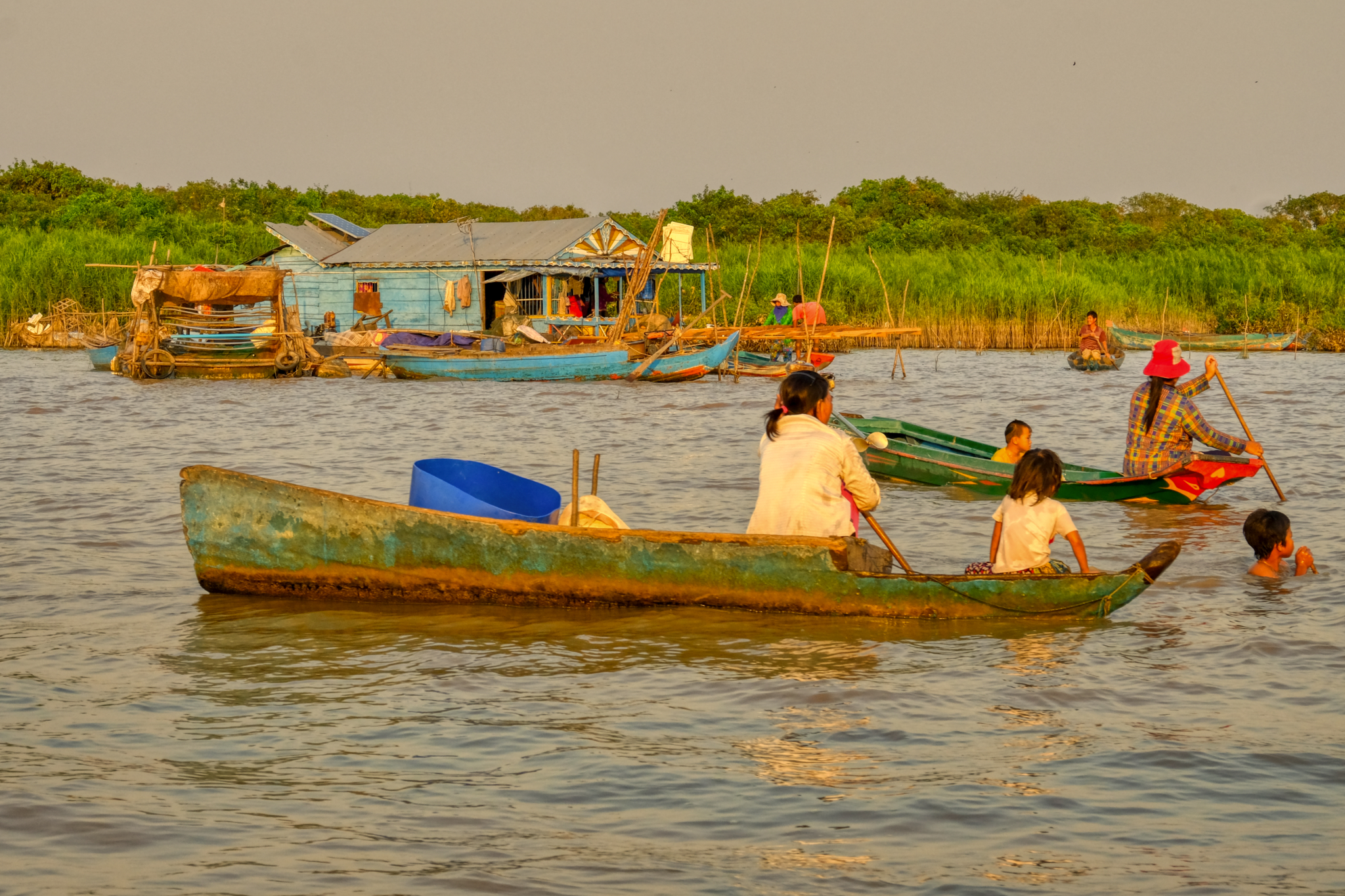 We passed through a floating village along the way. The boatman told us that this village moves with the rising and falling of the lake.
We passed through a floating village along the way. The boatman told us that this village moves with the rising and falling of the lake.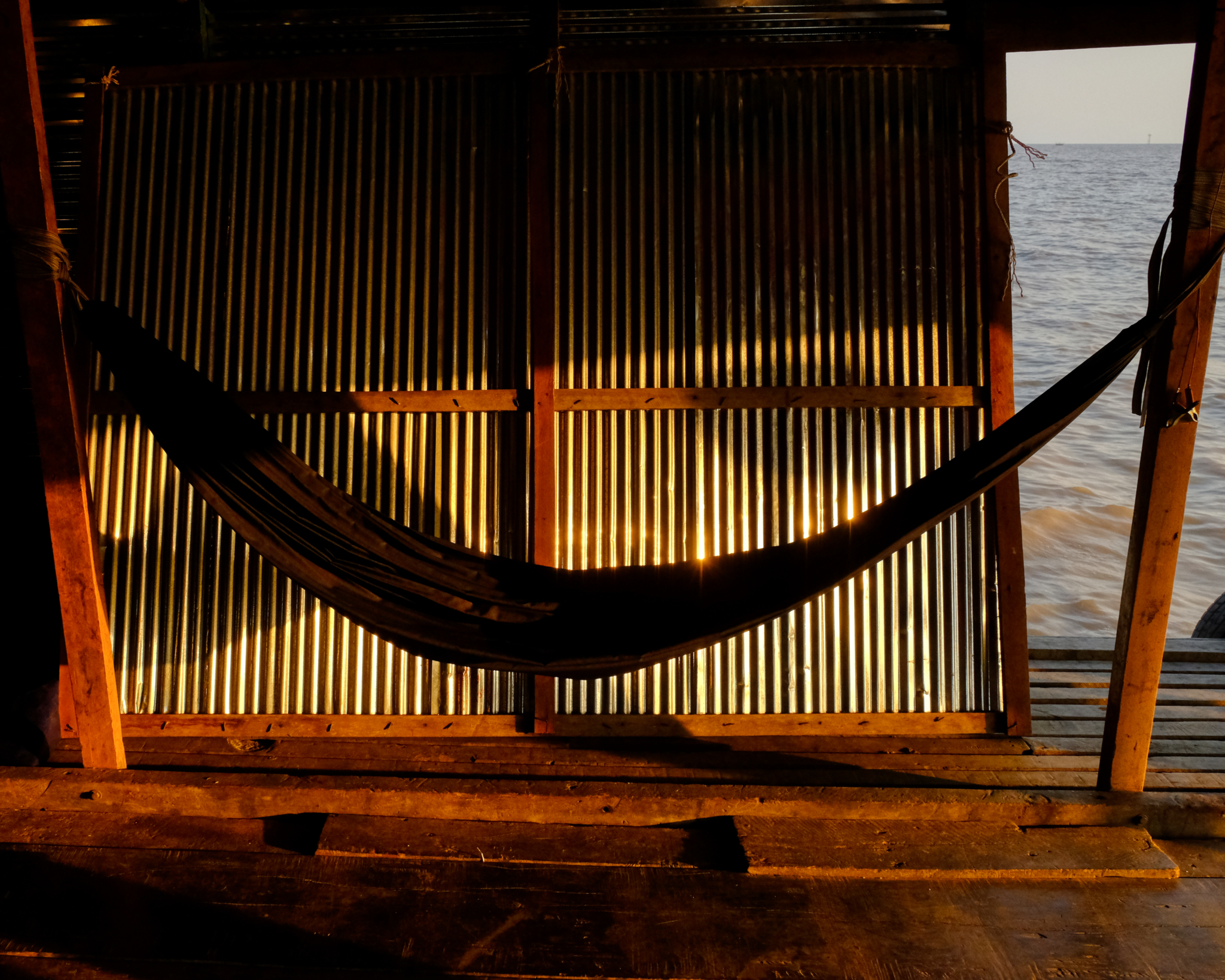 We stopped off at one of the floating shacks.
We stopped off at one of the floating shacks.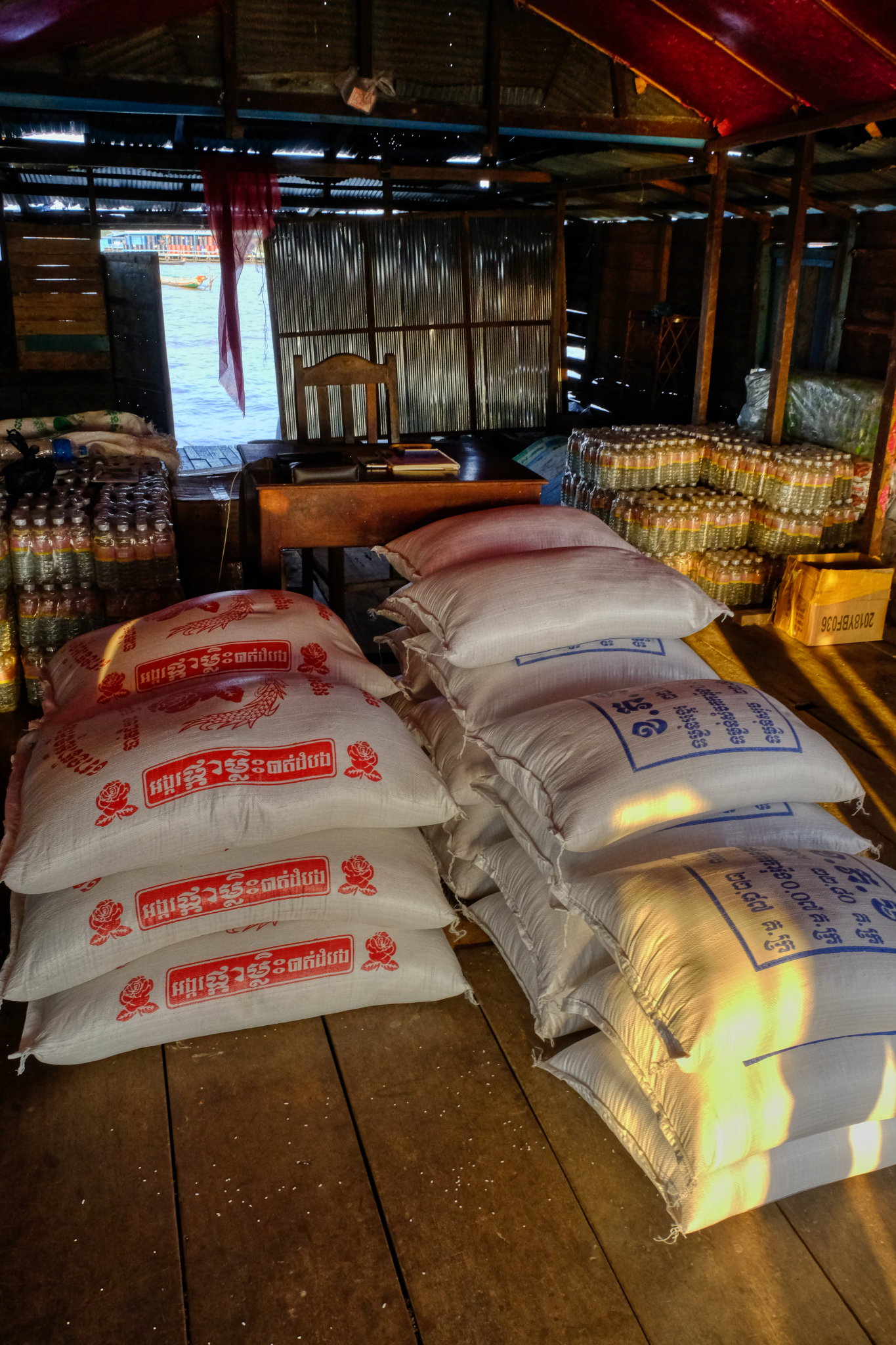 The boatman said these villagers were very poor. He asked if we would like to make a donation of rice to the local floating school. We were happy to help. For a few dollars we bought four sacks of rice and delivered them to this school:
The boatman said these villagers were very poor. He asked if we would like to make a donation of rice to the local floating school. We were happy to help. For a few dollars we bought four sacks of rice and delivered them to this school: This is the floating school. We stopped here to unload the rice.
This is the floating school. We stopped here to unload the rice.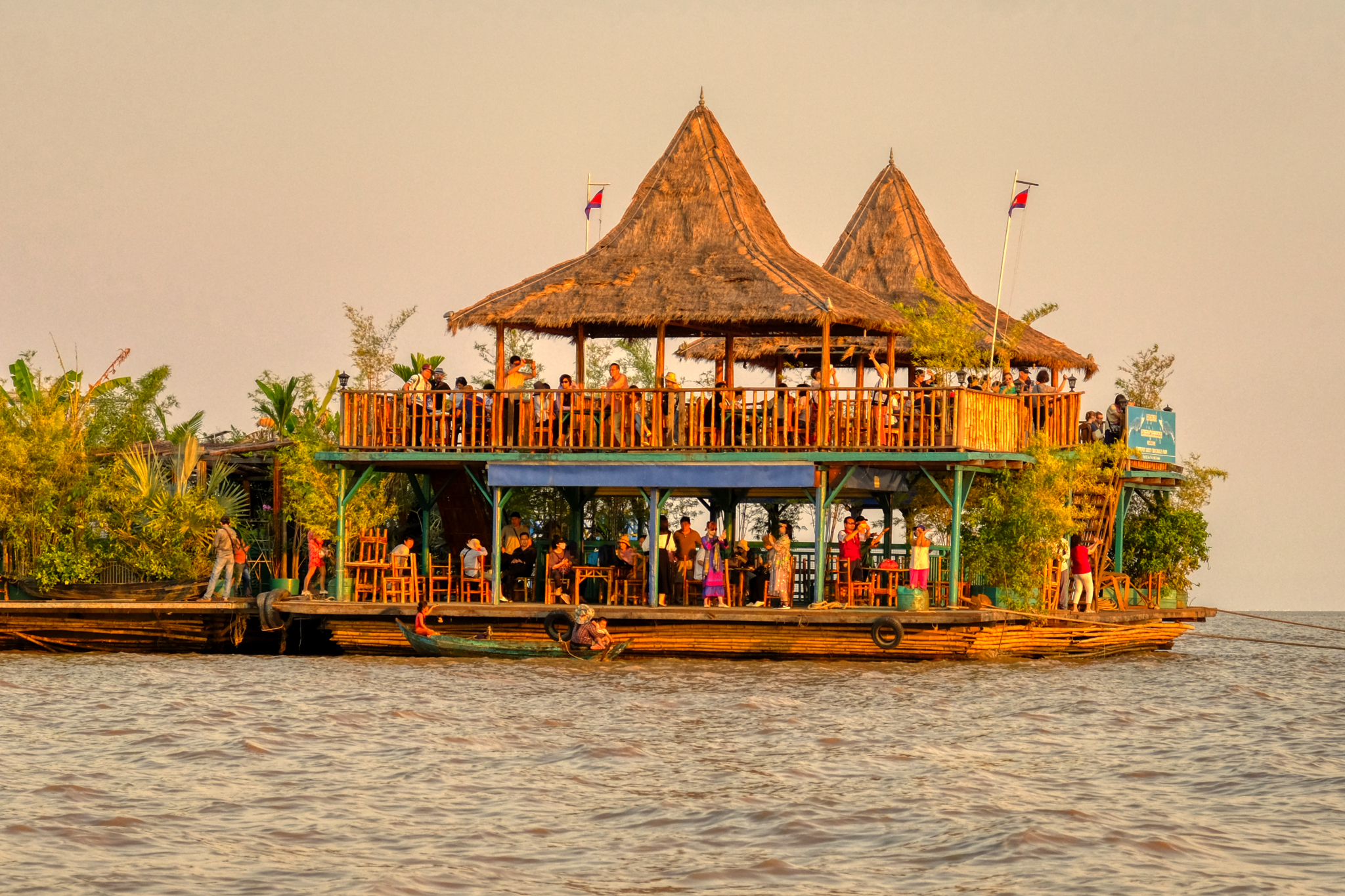 There were several of these large sunset viewing rafts out a mile or so from the shore of the lake . . . full of tourists like us.
There were several of these large sunset viewing rafts out a mile or so from the shore of the lake . . . full of tourists like us.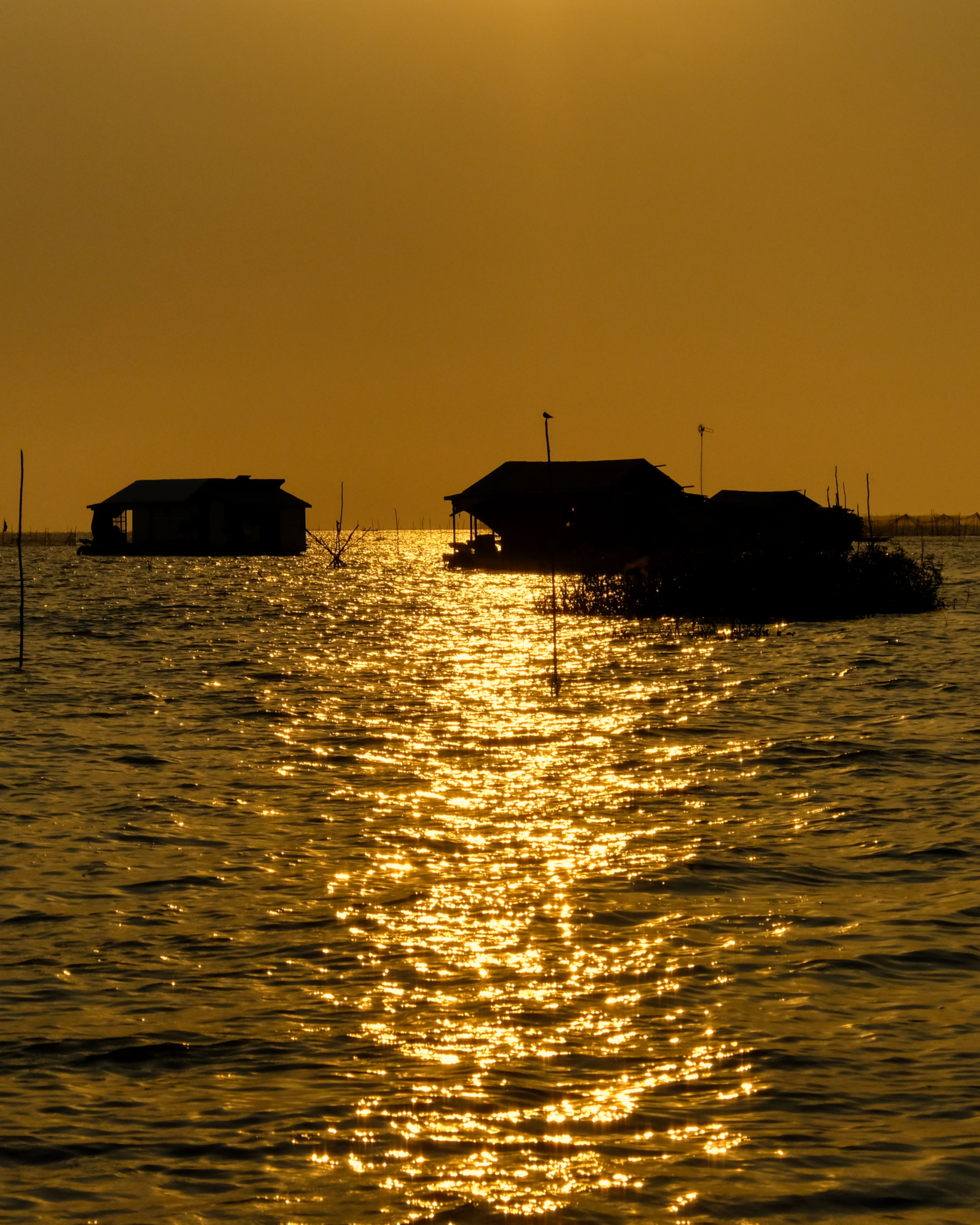 A beautiful trip out into the inland sea.
A beautiful trip out into the inland sea.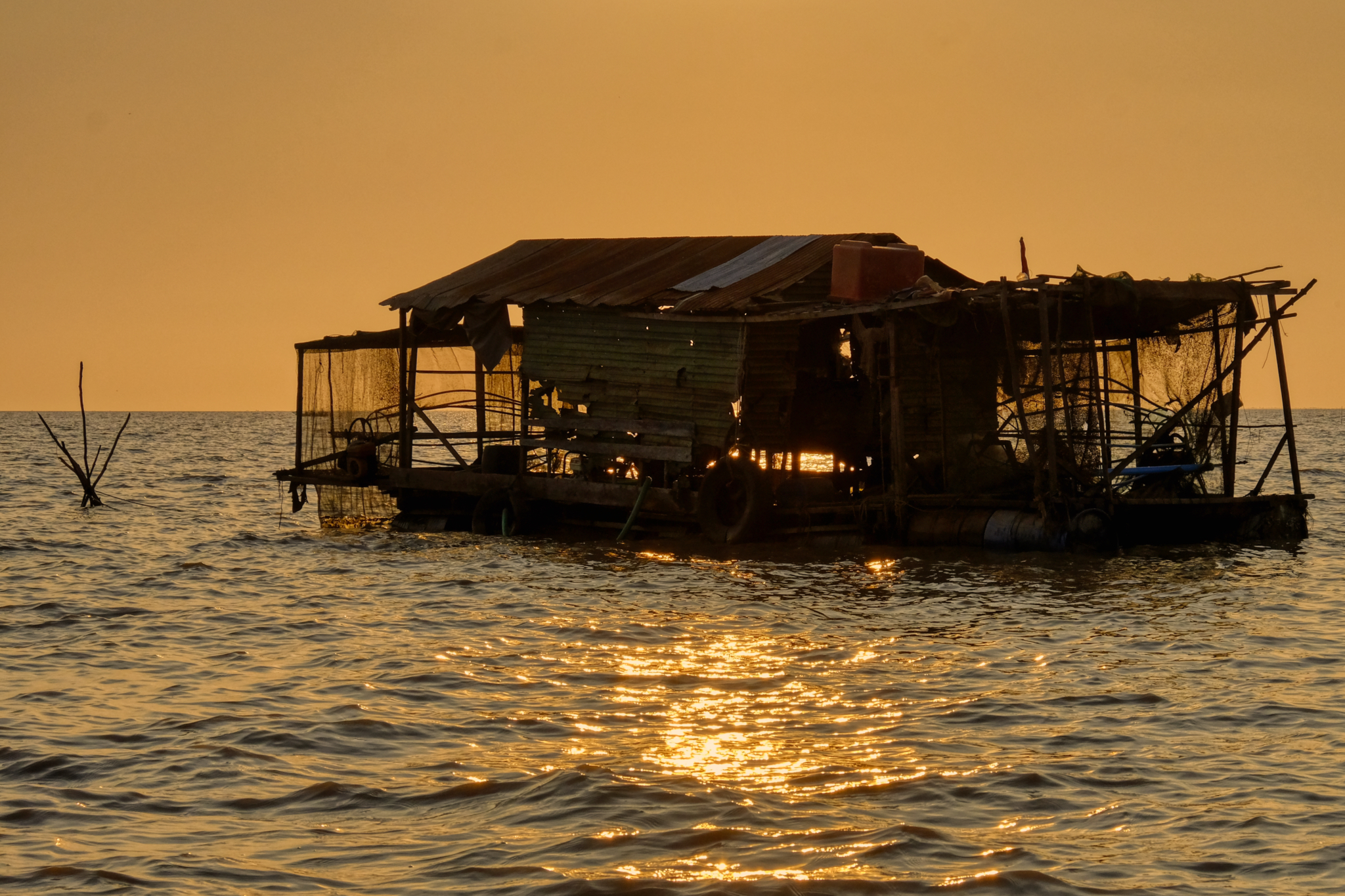 The villagers made their living fishing from their floating platforms.
The villagers made their living fishing from their floating platforms.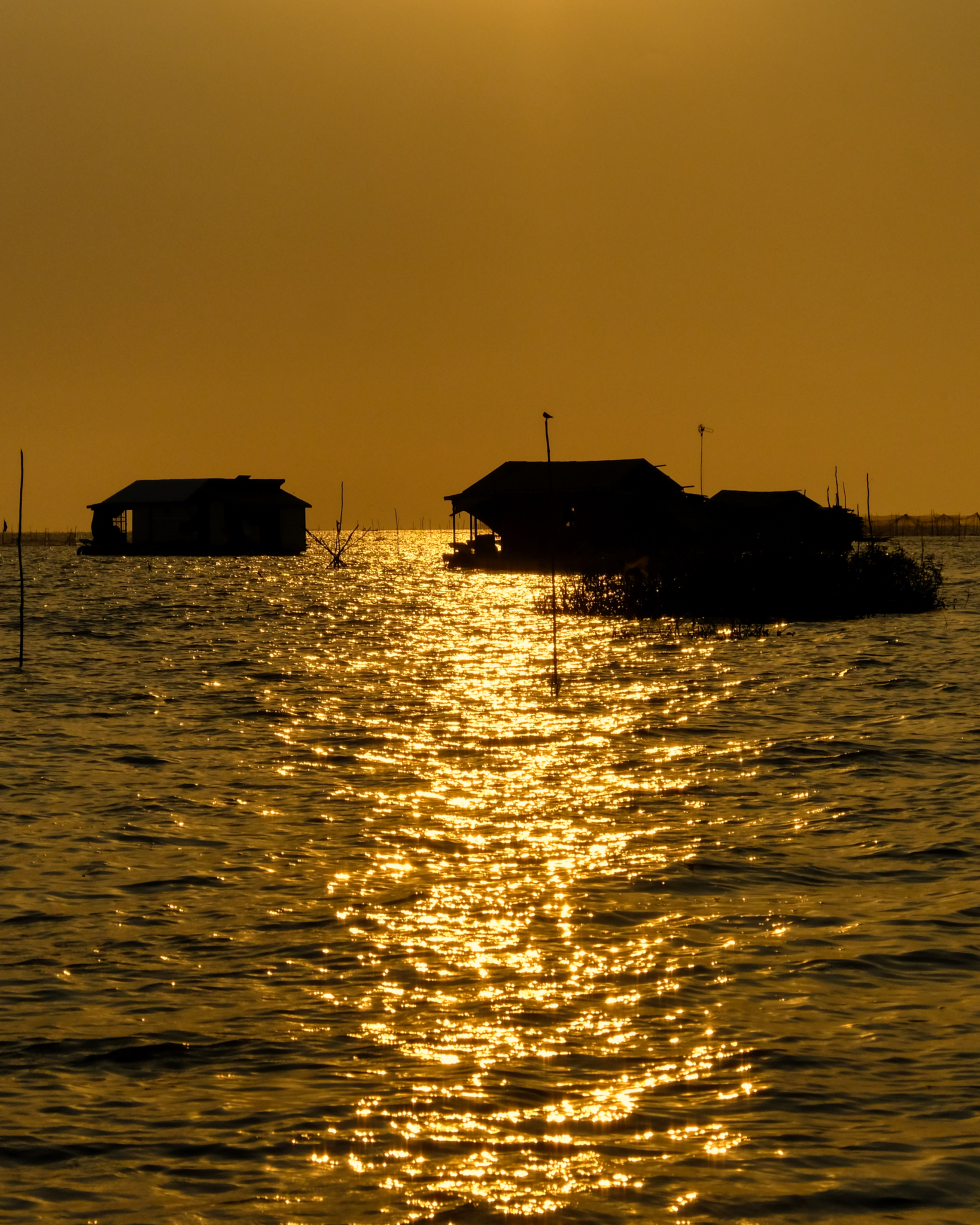 Village shacks in the amber sunset light.
Village shacks in the amber sunset light.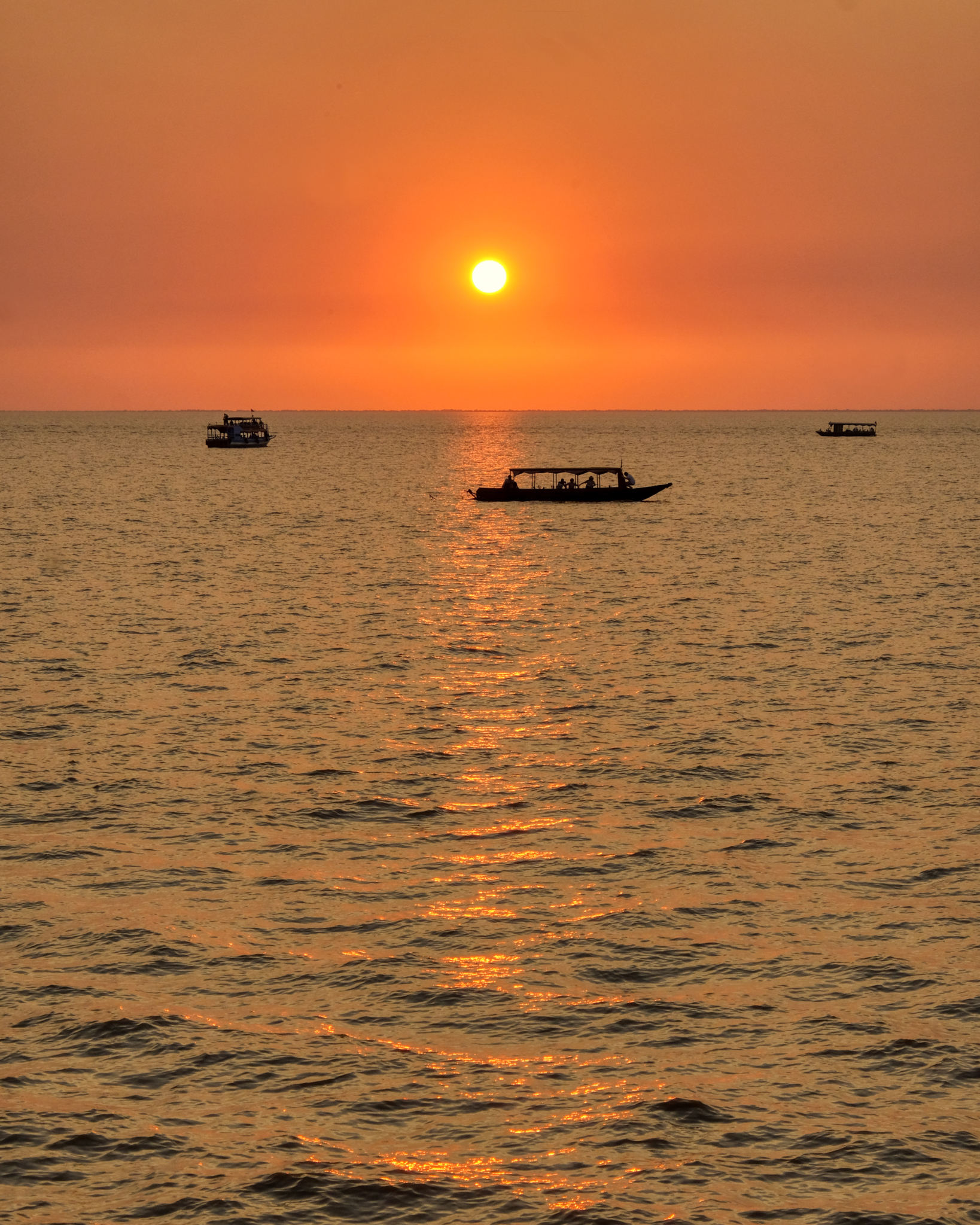 The view from our observation deck . . . boats in the setting sun.
The view from our observation deck . . . boats in the setting sun. And the sun set over our Angkor Wat vacation. A wonderful four days. If you go to see Angkor Wat, I highly recommend the sunset boat trip . . . .
And the sun set over our Angkor Wat vacation. A wonderful four days. If you go to see Angkor Wat, I highly recommend the sunset boat trip . . . .A Beach Week-End: Hua Hin, Thailand
 Wednesday, July 10, 2019 at 6:45PM
Wednesday, July 10, 2019 at 6:45PM 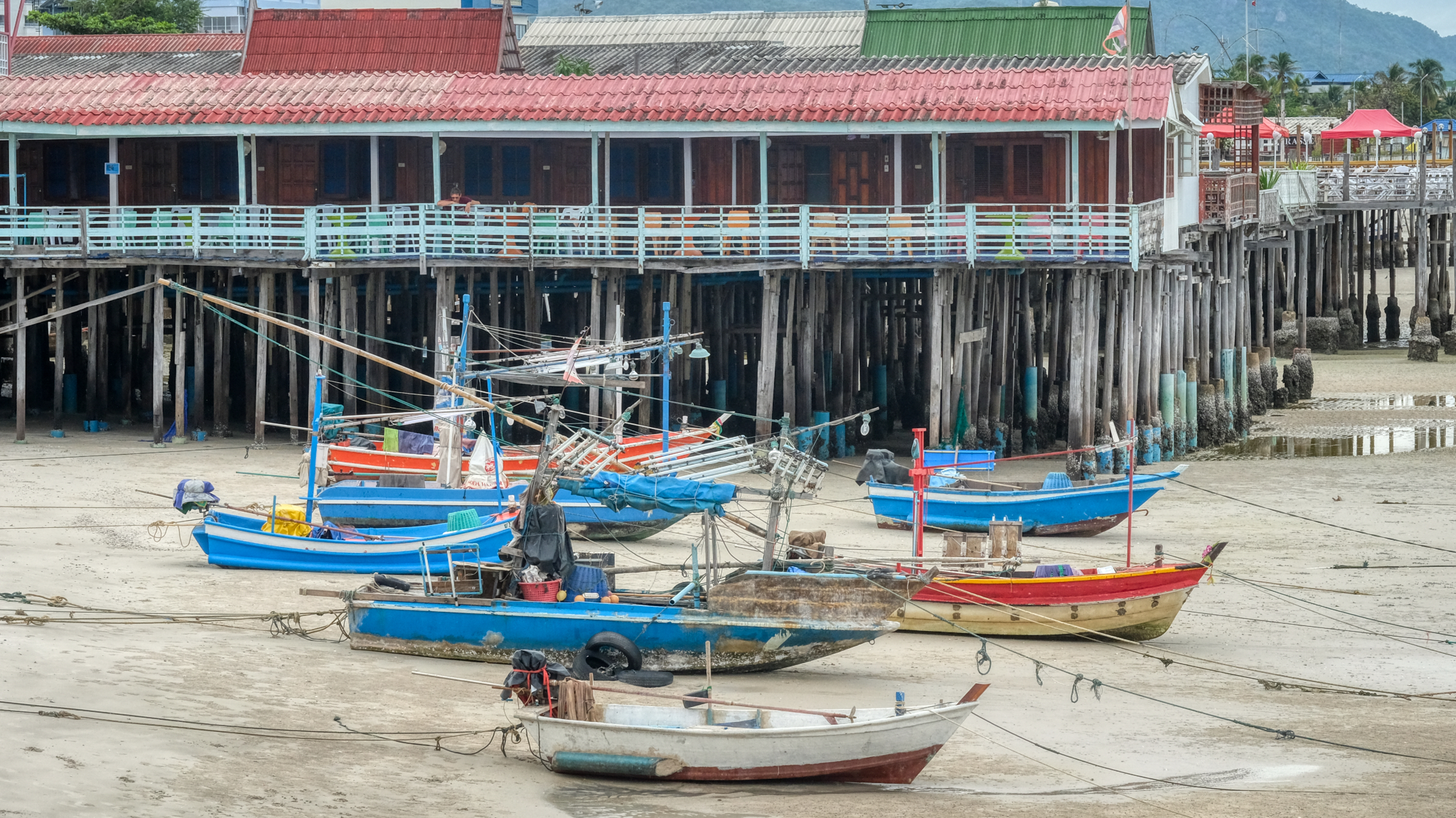 It wasn't a Thai holiday, so it was a good time to drive the 2 1/2 hours from Bangkok to the seaside town of Hua Hin.
It wasn't a Thai holiday, so it was a good time to drive the 2 1/2 hours from Bangkok to the seaside town of Hua Hin.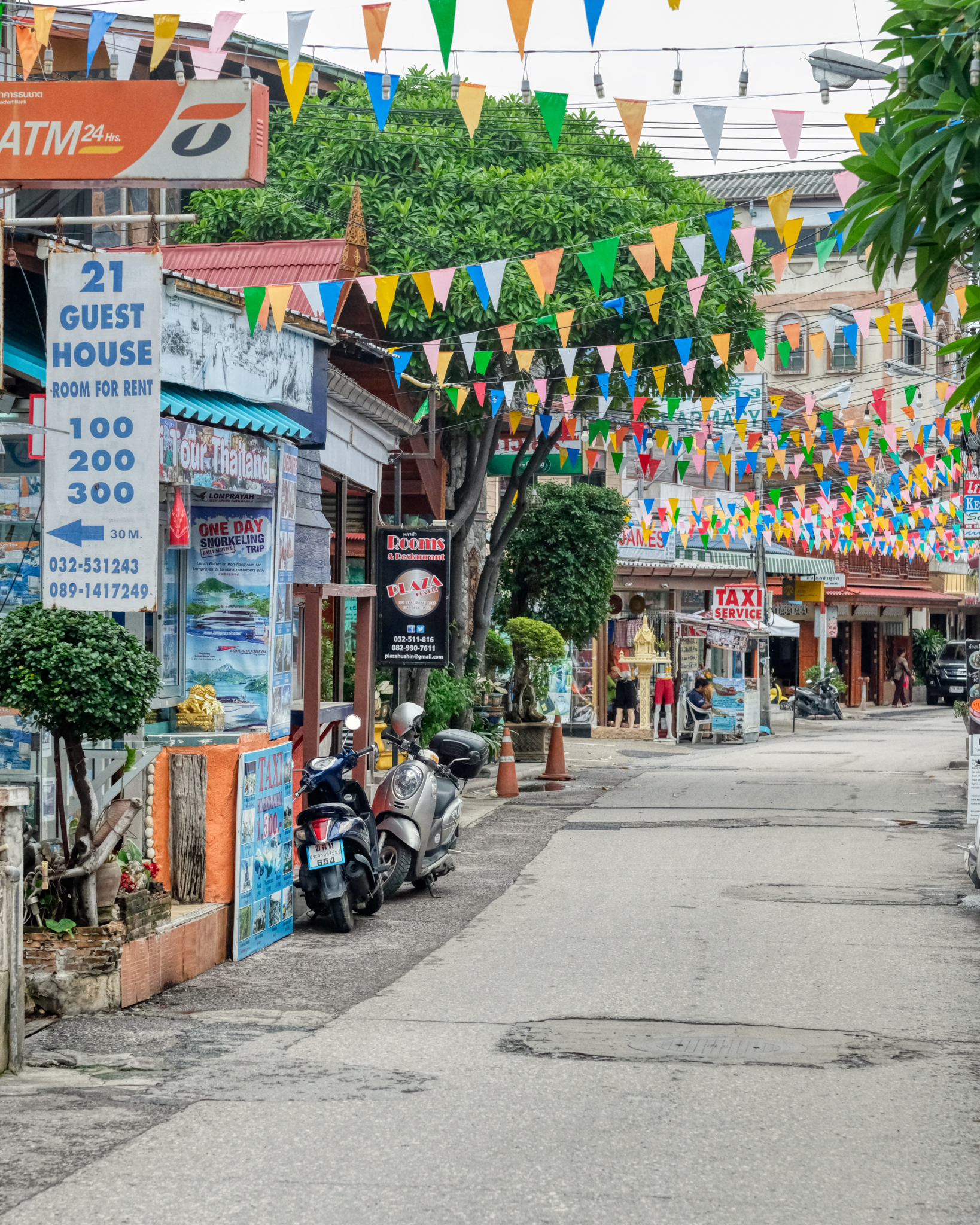 Hua Hin is a sweet little seaside town with just enough tourism to have a variety of restaurants and shops of interest. We are here in the Not The Tourist Season. It is growing fast.
Hua Hin is a sweet little seaside town with just enough tourism to have a variety of restaurants and shops of interest. We are here in the Not The Tourist Season. It is growing fast.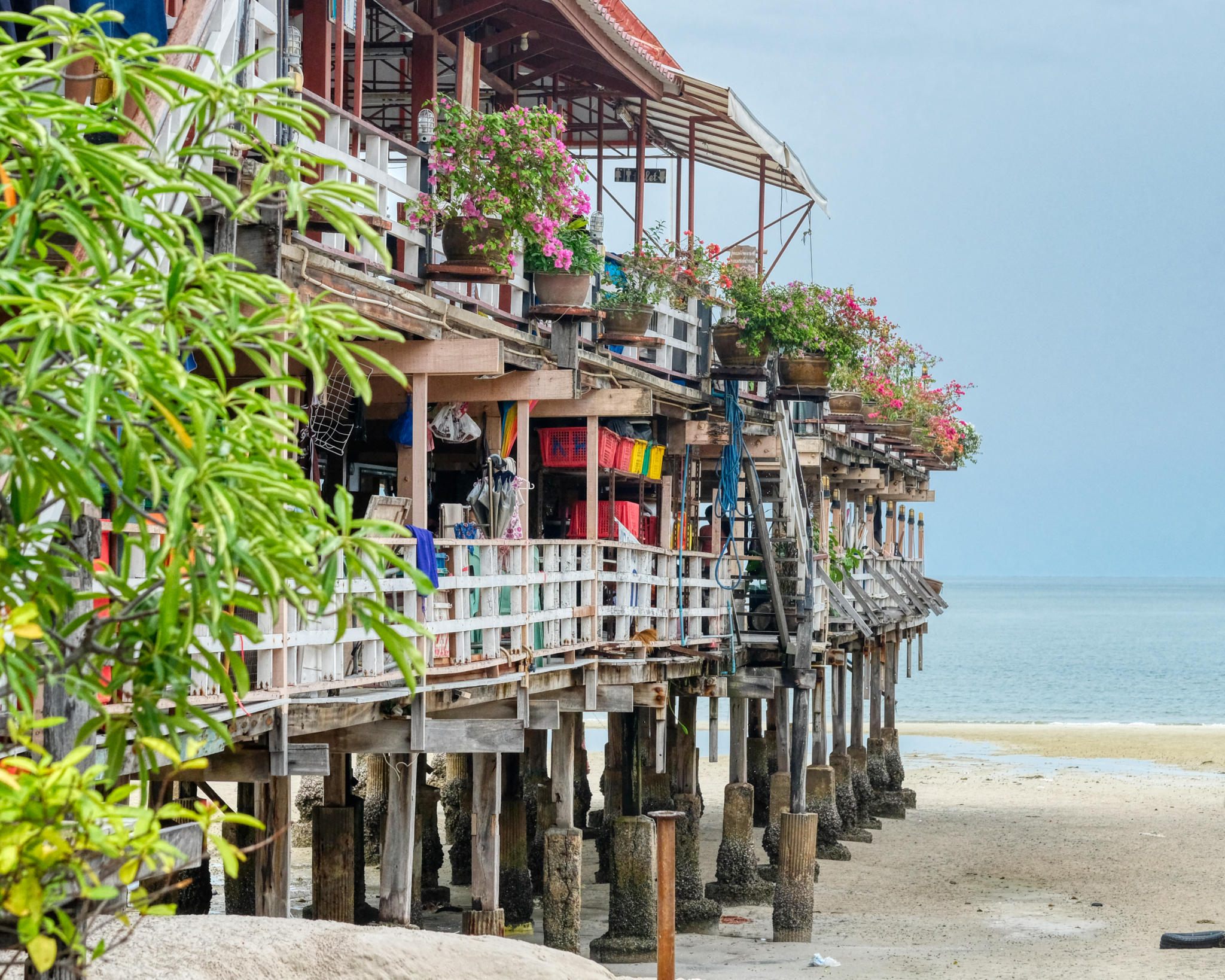 There are interesting seafood restaurents built on piers over the Gulf of Thailand.
There are interesting seafood restaurents built on piers over the Gulf of Thailand.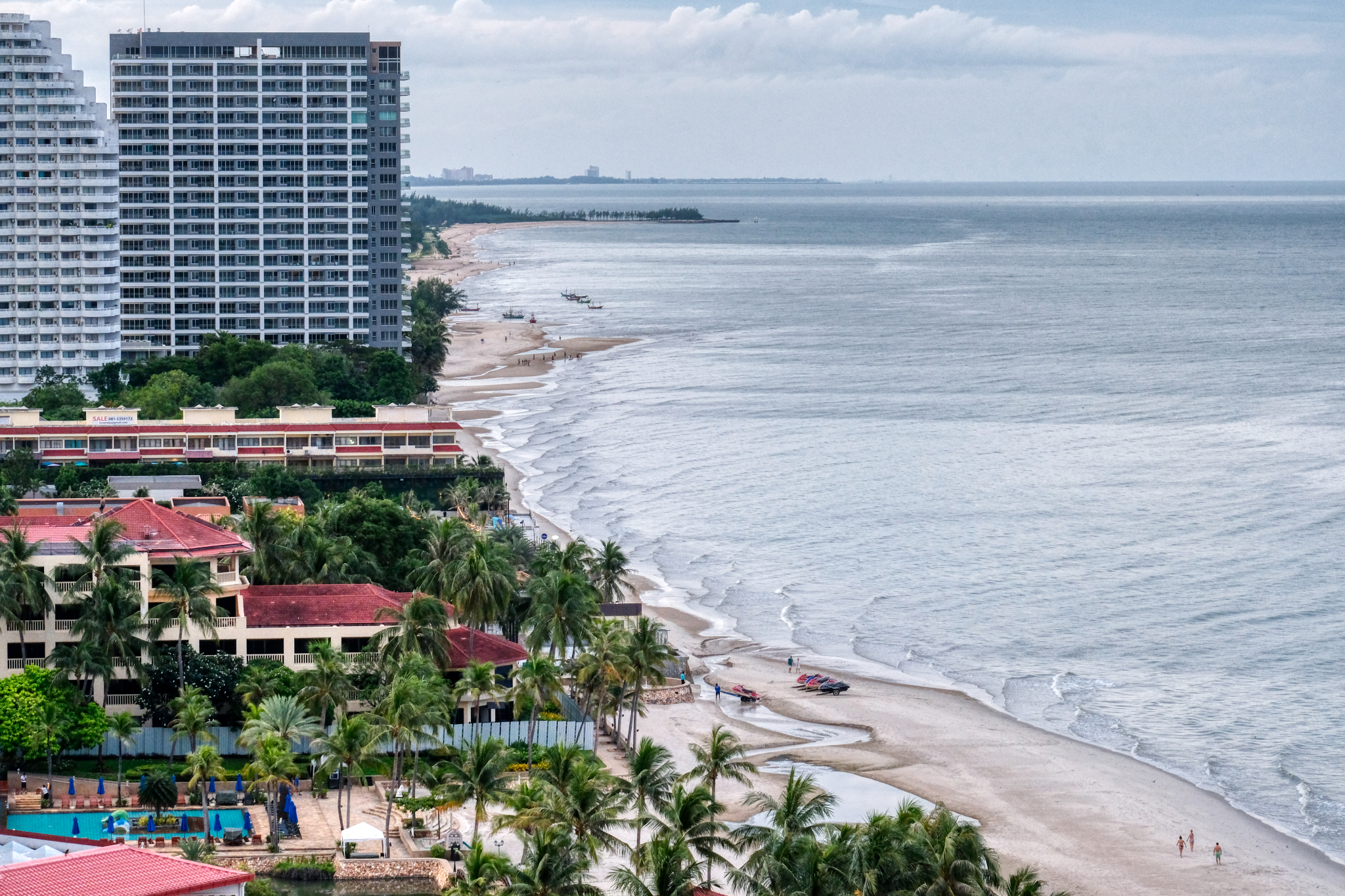 There are a number of large hotels and beach front condominiums along this part of the coast.
There are a number of large hotels and beach front condominiums along this part of the coast.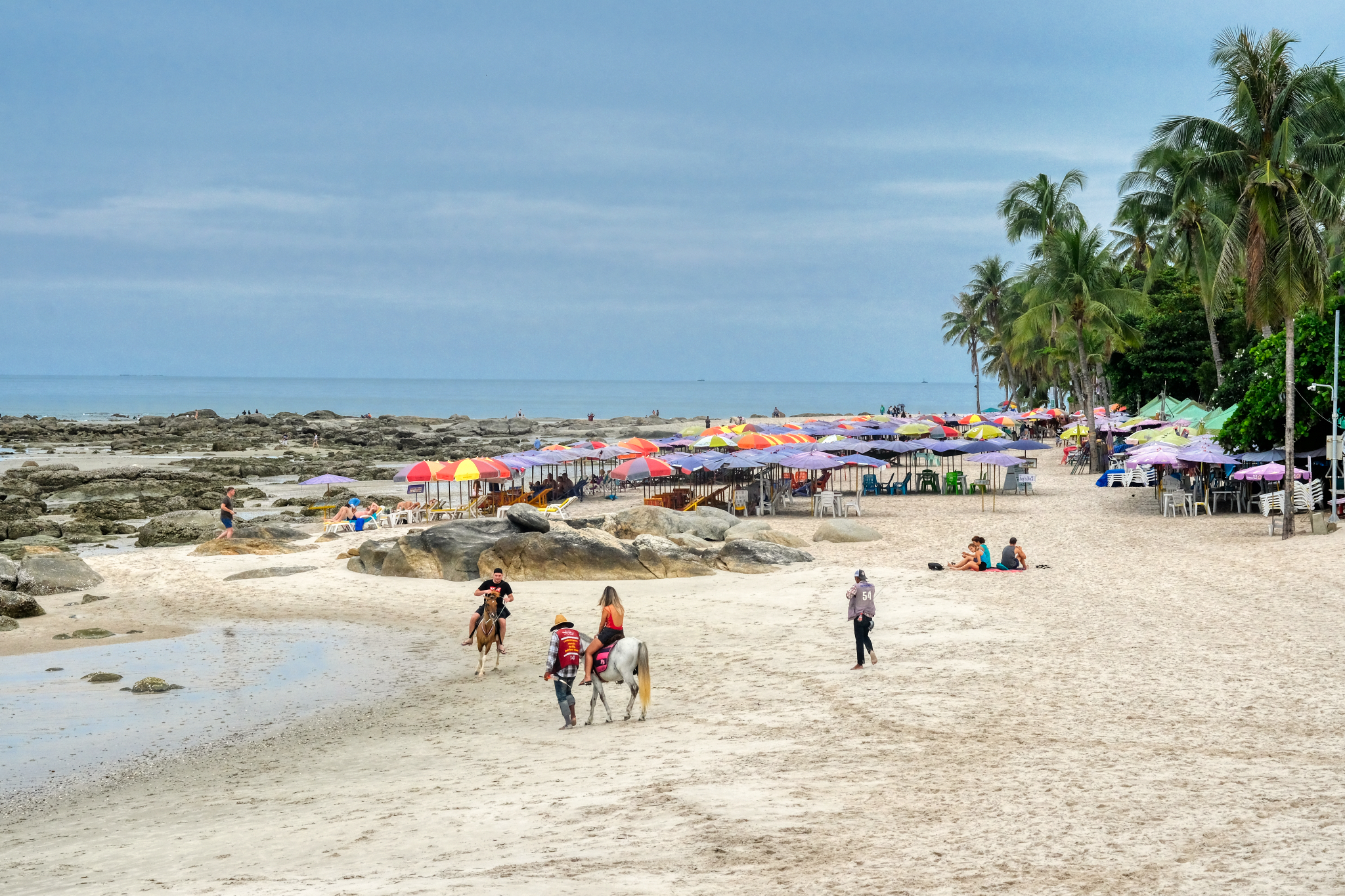 There was a surprising lack of tourists at the hotel beach areas. The weather was fine . . . there were occasional afternoon tropical showers to keep the temperature down.
There was a surprising lack of tourists at the hotel beach areas. The weather was fine . . . there were occasional afternoon tropical showers to keep the temperature down.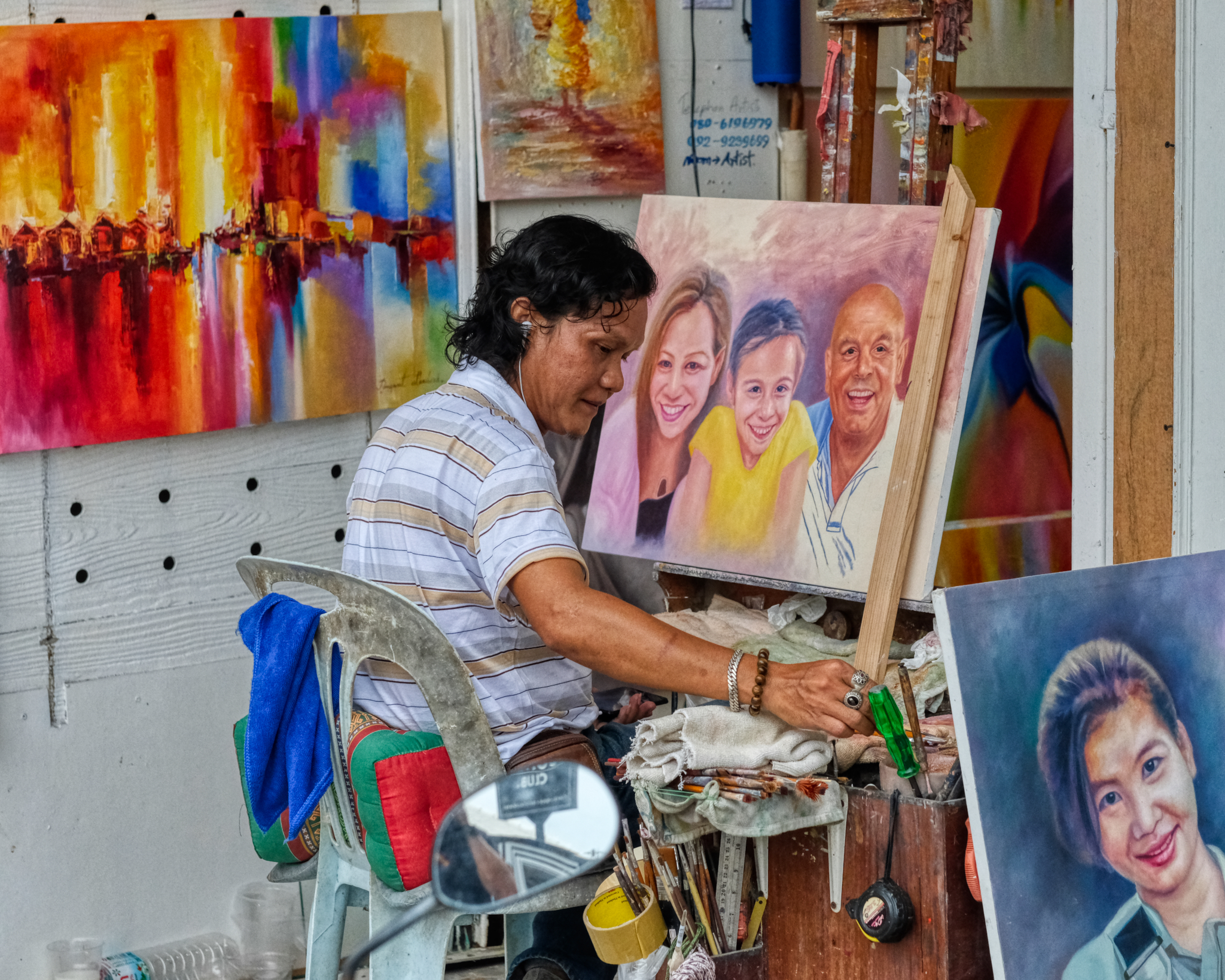 This artist serves the tourist trade by making family portraits from photos from iPhones.
This artist serves the tourist trade by making family portraits from photos from iPhones.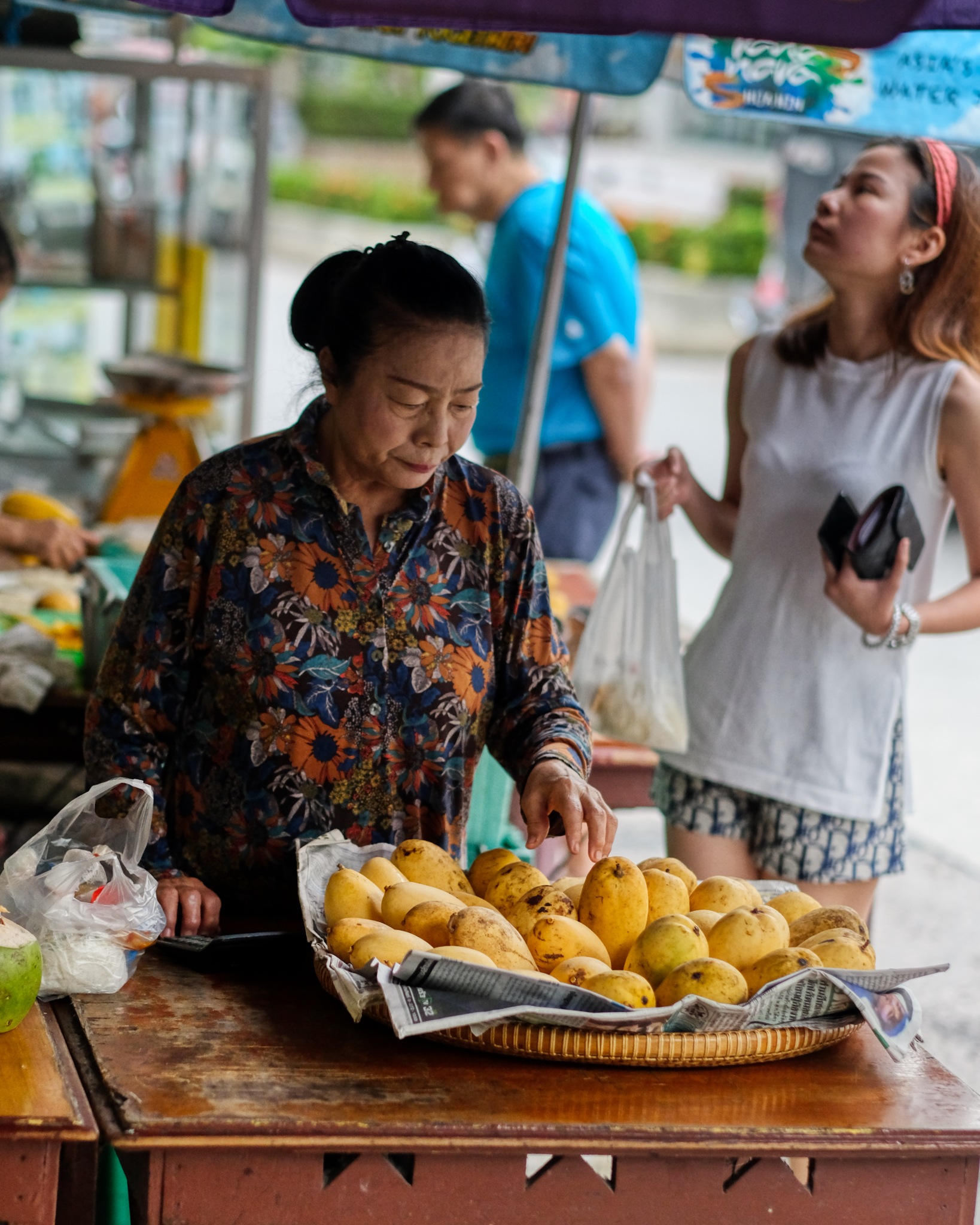 Hua Hin is a nice place to stroll around in to sample the wonderful Thai treats . . .
Hua Hin is a nice place to stroll around in to sample the wonderful Thai treats . . . 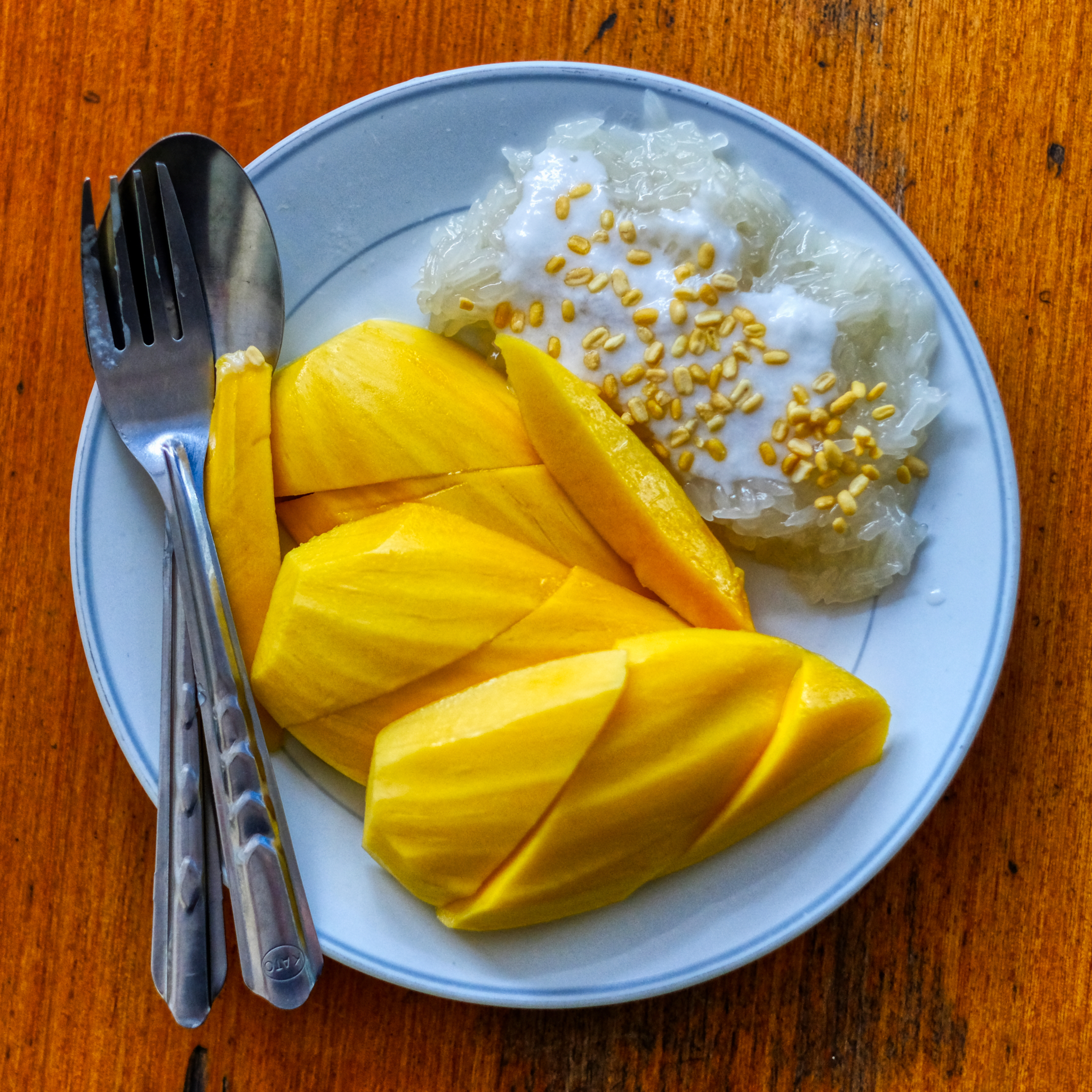 . . . like sticky rice and mangoes. The best dessert on earth (in my estimation).
. . . like sticky rice and mangoes. The best dessert on earth (in my estimation).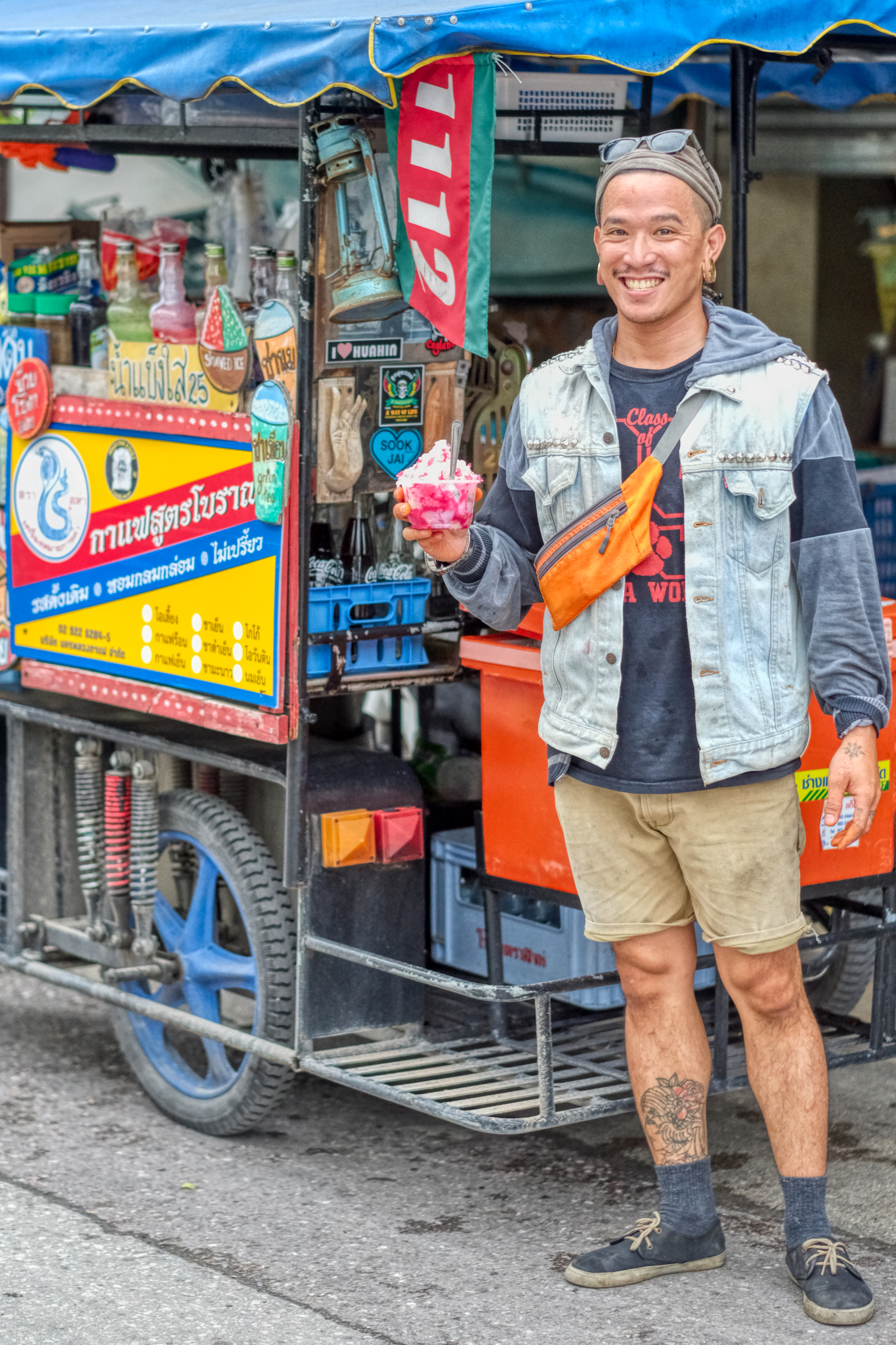 You never know who you will run into. This young man lived in Los Angeles, California for many years before deciding he had a better life in Thailand as a street cart barista. "You don't know the difference until you lived somewhere else. I love my life in Thailand."
You never know who you will run into. This young man lived in Los Angeles, California for many years before deciding he had a better life in Thailand as a street cart barista. "You don't know the difference until you lived somewhere else. I love my life in Thailand."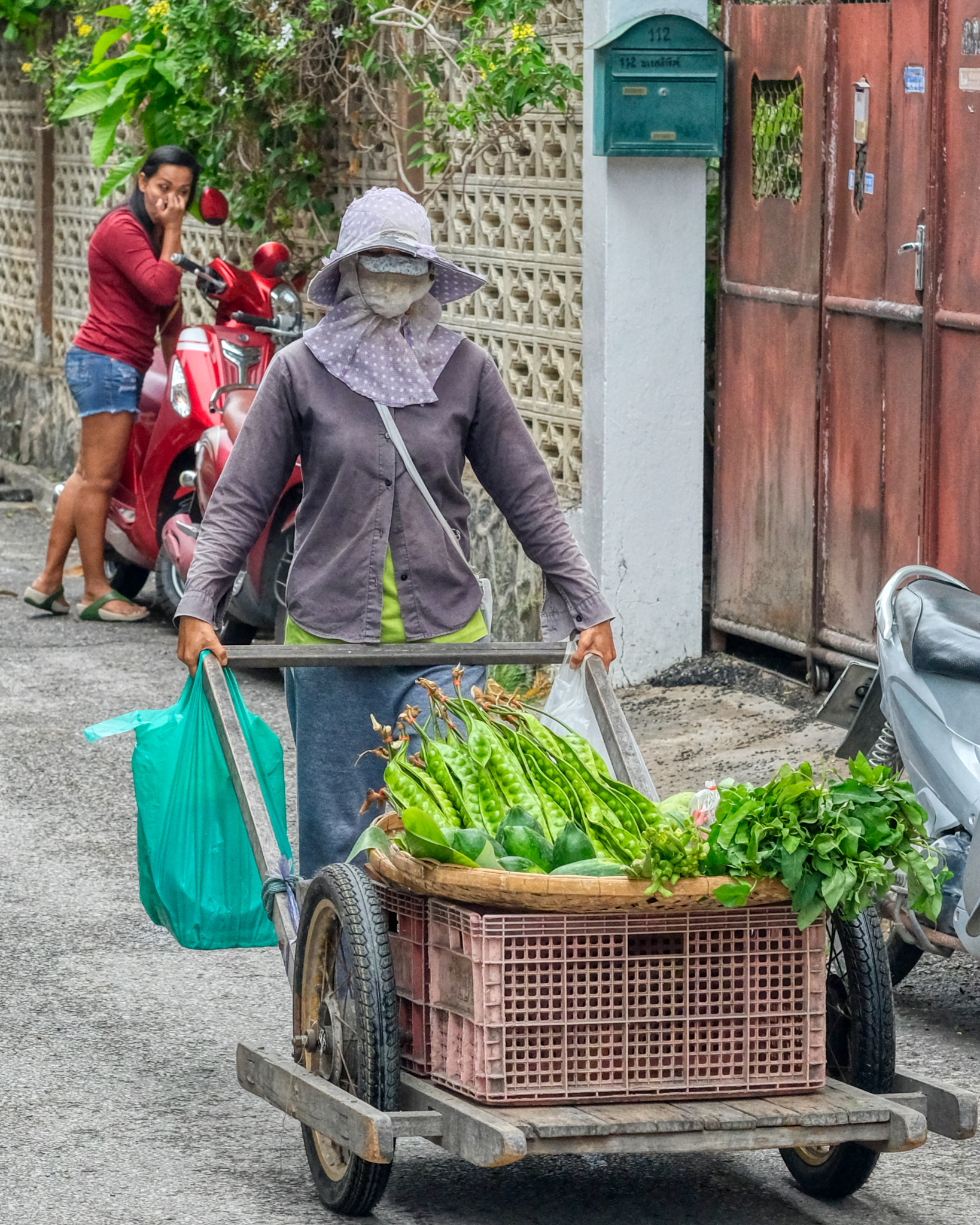 Making a living selling vegetables door to door in Hua Hin.
Making a living selling vegetables door to door in Hua Hin.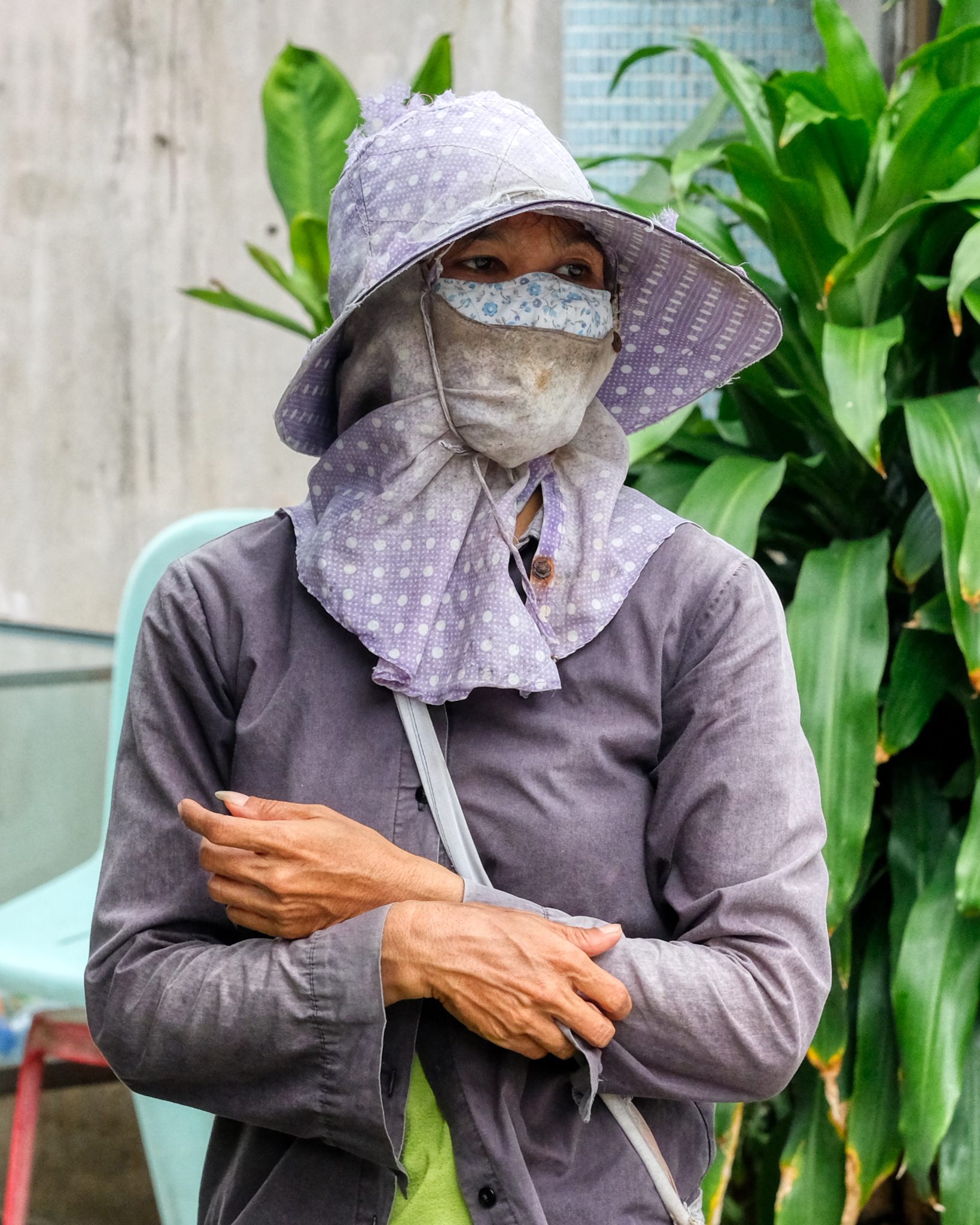 People who work outside in the sunshine often completely cover themselves from head to toe.
People who work outside in the sunshine often completely cover themselves from head to toe.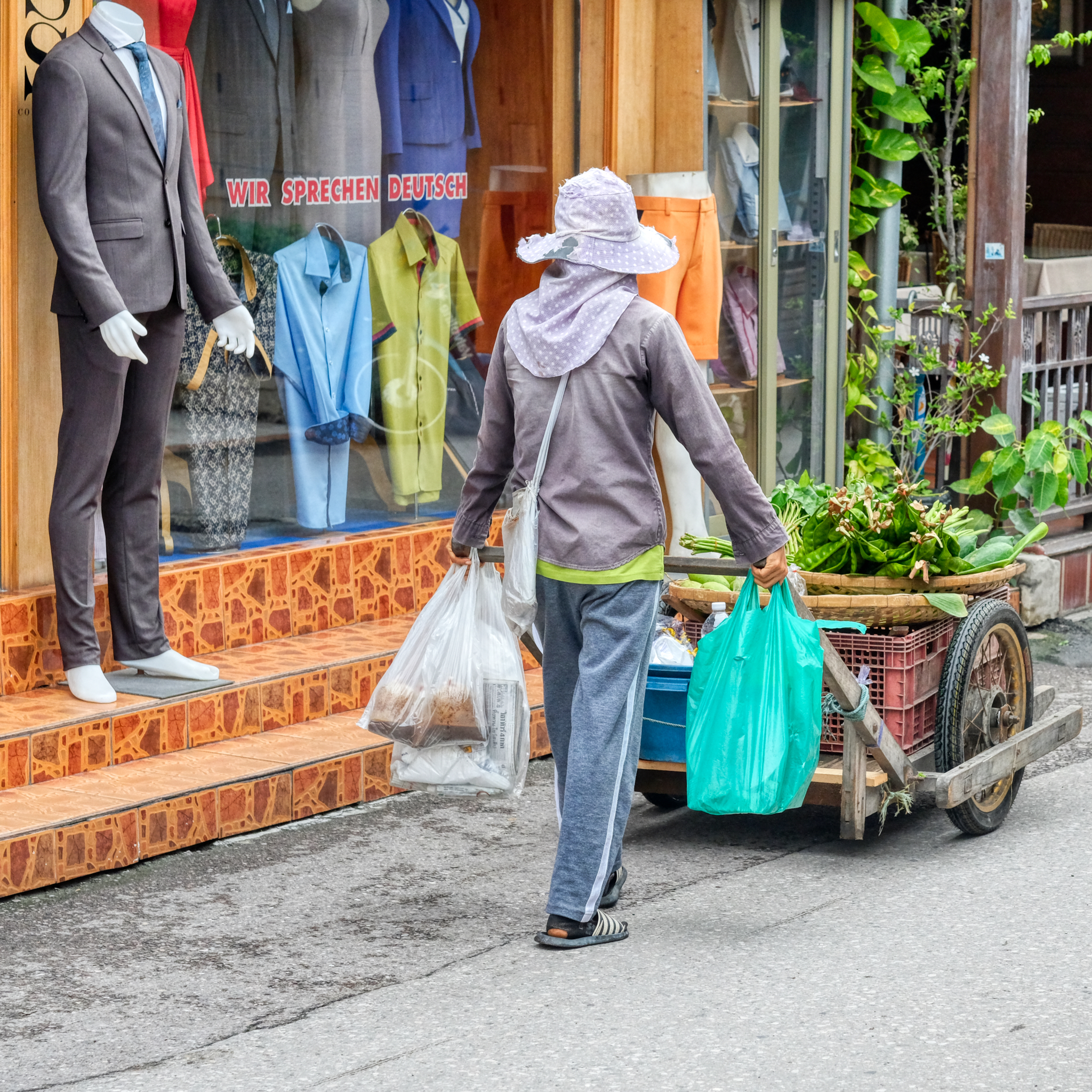 It looks like she has dome a little grocery shopping for herself as well . . .
It looks like she has dome a little grocery shopping for herself as well . . .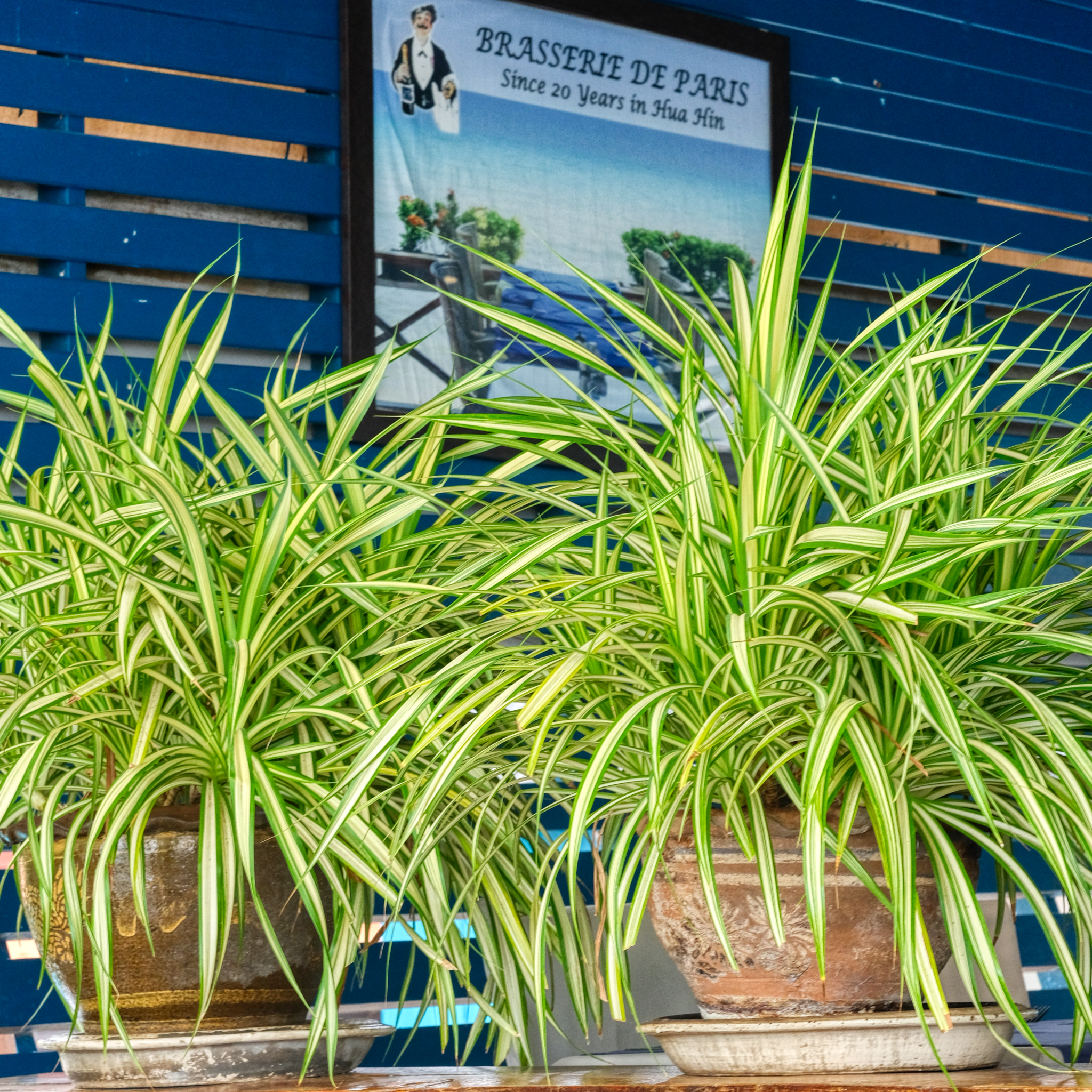 Hua Hin sees many new European retirees every year. In this case, a Frenchman came to Hua Hin 25 years ago and opened up this beach side French restaurant. It serves delicious food. Real French food.
Hua Hin sees many new European retirees every year. In this case, a Frenchman came to Hua Hin 25 years ago and opened up this beach side French restaurant. It serves delicious food. Real French food.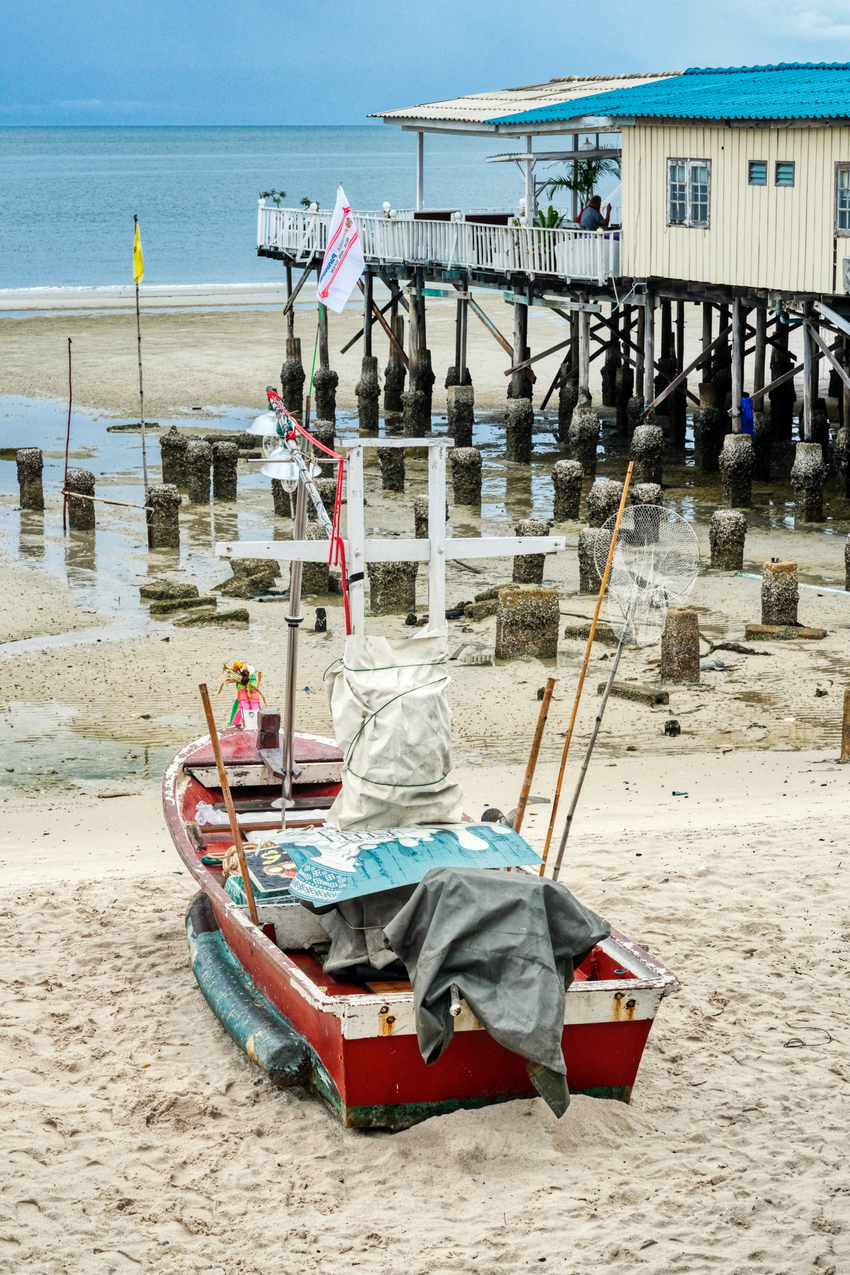 The view from the French restaurant is very relaxing.
The view from the French restaurant is very relaxing.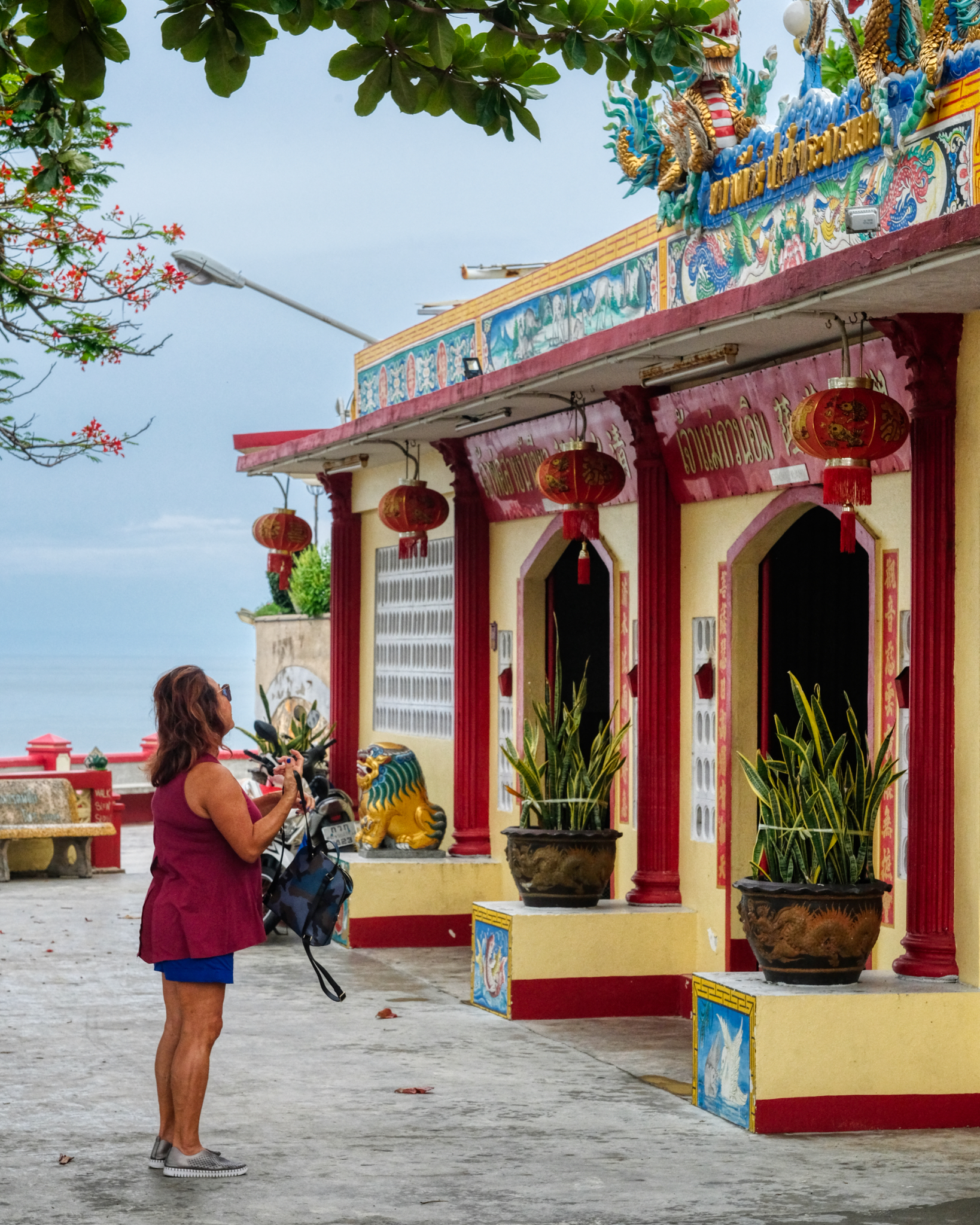 After lunch we strolled over to a nearby Chinese Buddhist Tempe.
After lunch we strolled over to a nearby Chinese Buddhist Tempe.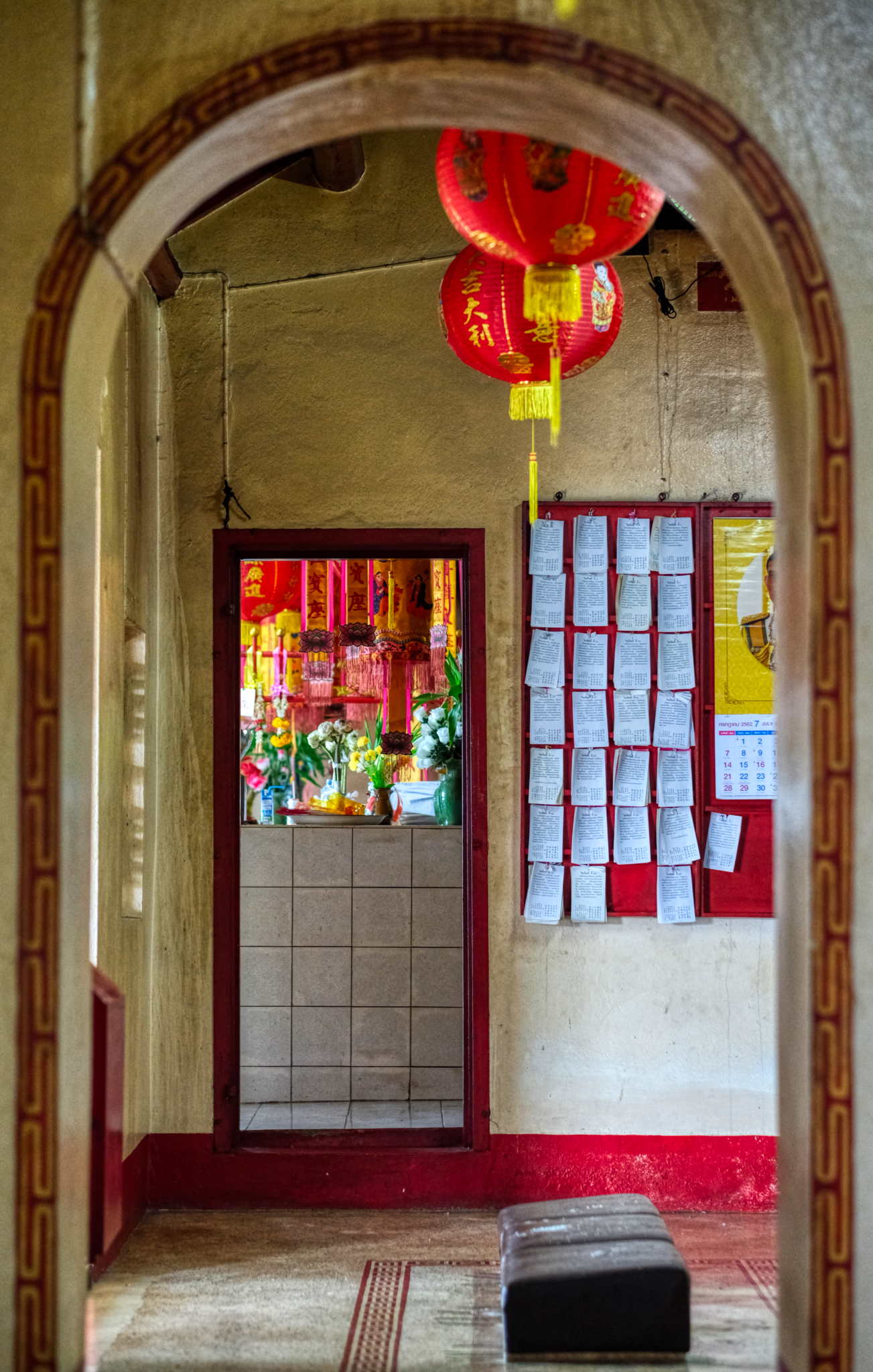 I love exploring these temples . . . and paying respect to The Buddha and what he hoped for all of us.
I love exploring these temples . . . and paying respect to The Buddha and what he hoped for all of us.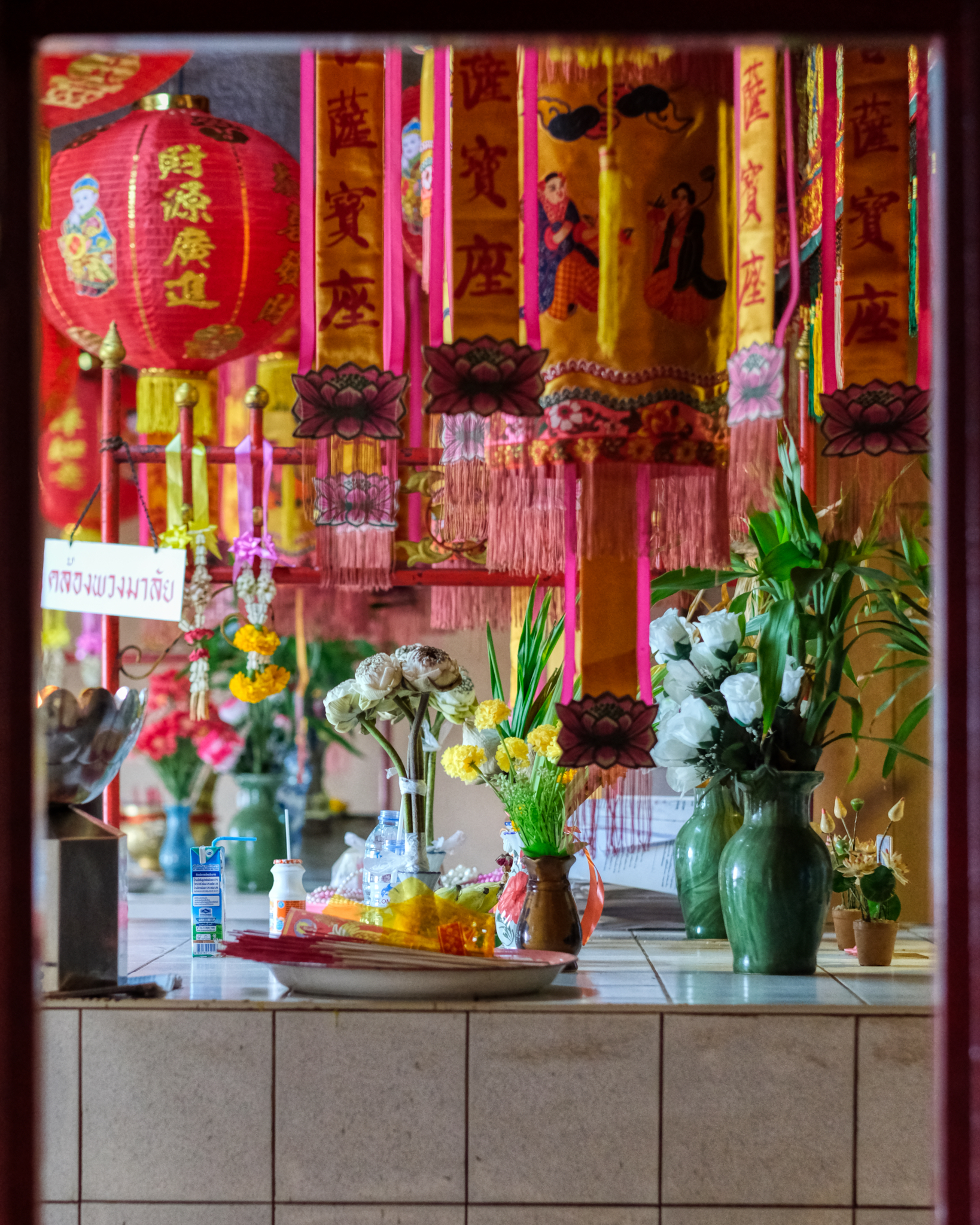 I love the decoration and the array of colorful votive items at these Chinese temples.
I love the decoration and the array of colorful votive items at these Chinese temples. A small incense pot and altar. Touching.
A small incense pot and altar. Touching.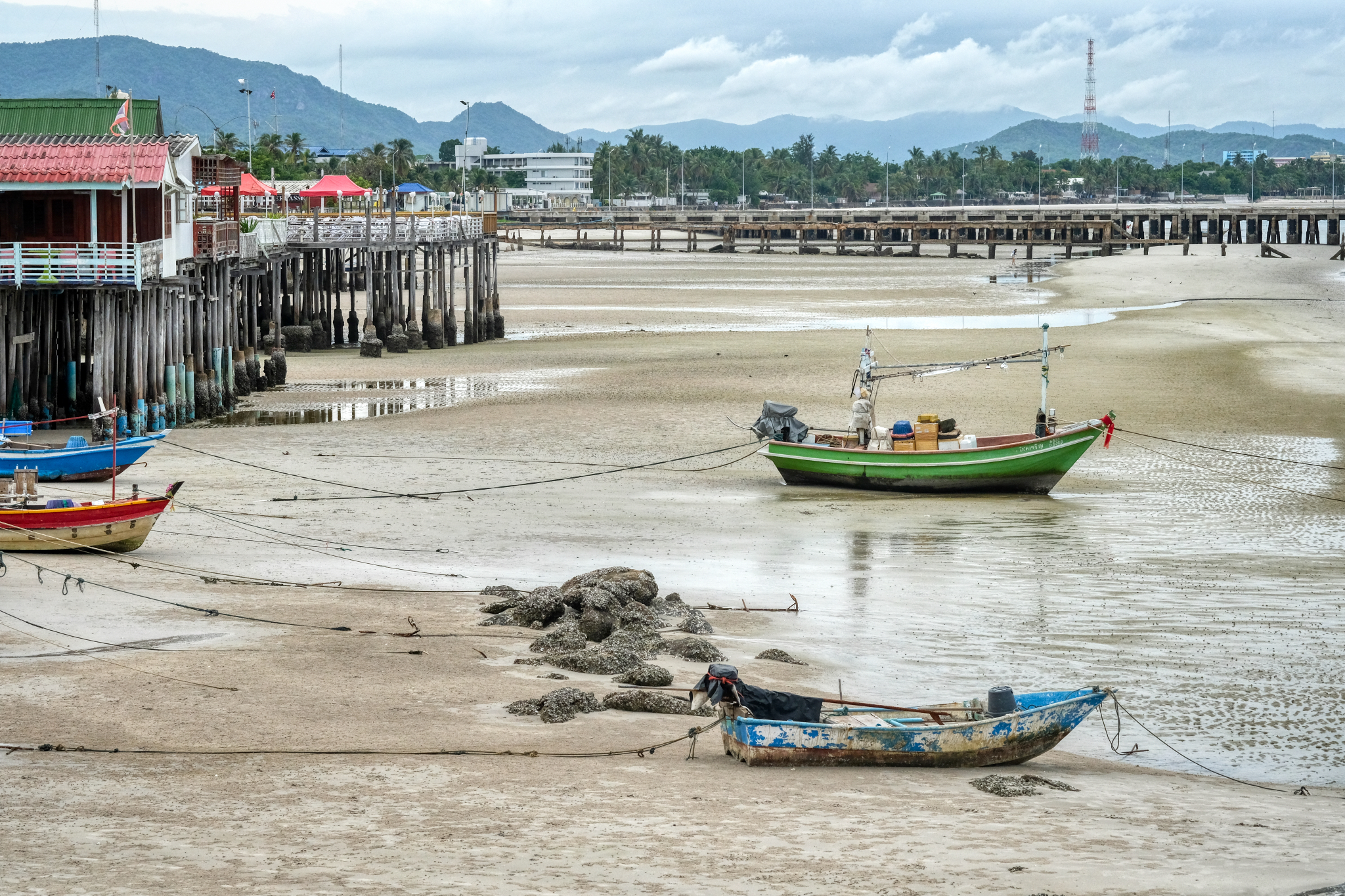 The view from the Chinese temple back to Hua Hin town. As can be seen, Hua Hin sits on a narrow coastal shelf between low hills and the Gulf of Thailand.
The view from the Chinese temple back to Hua Hin town. As can be seen, Hua Hin sits on a narrow coastal shelf between low hills and the Gulf of Thailand.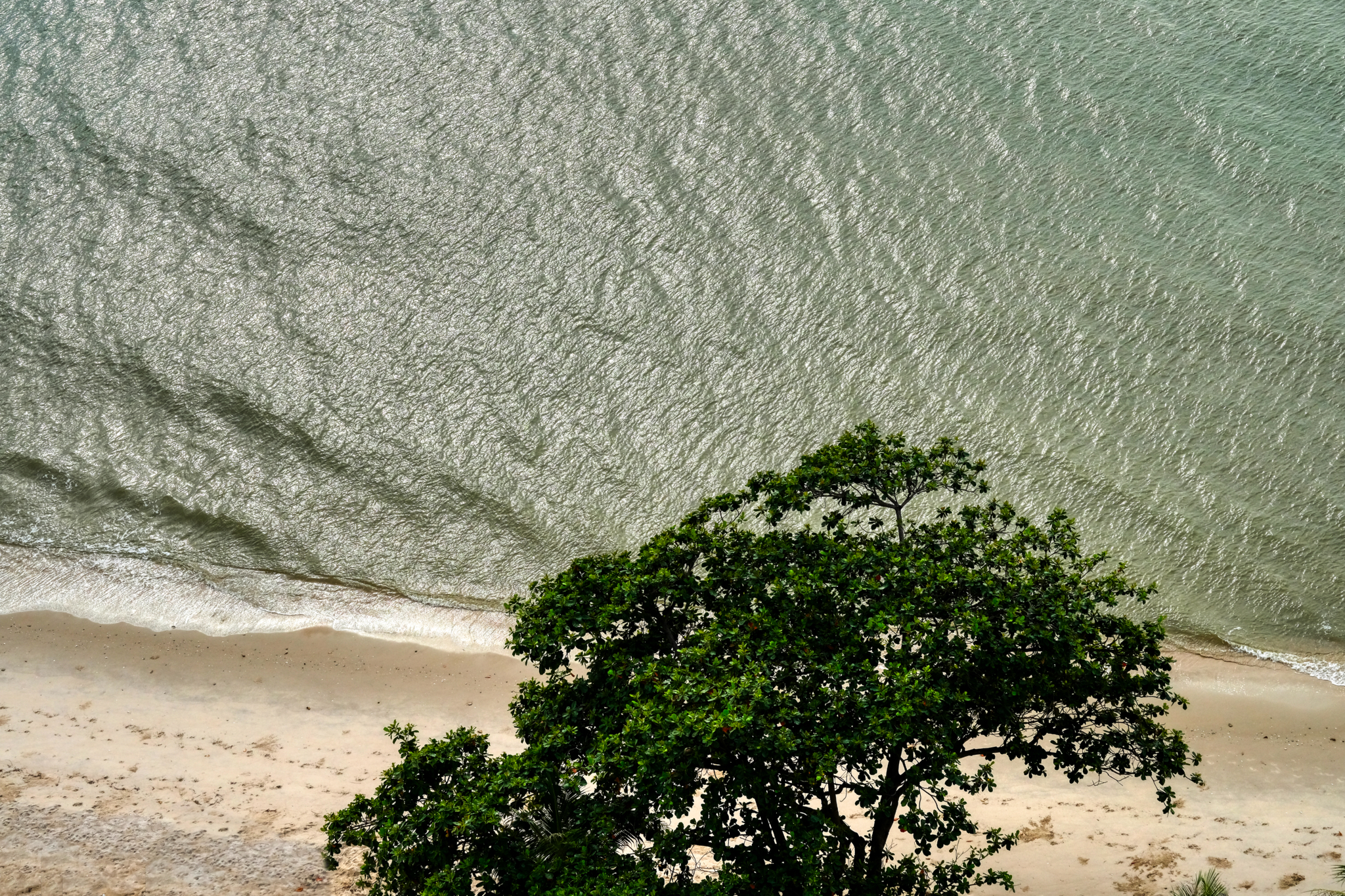 Back at our seaside lodgings . . . the view from above.
Back at our seaside lodgings . . . the view from above.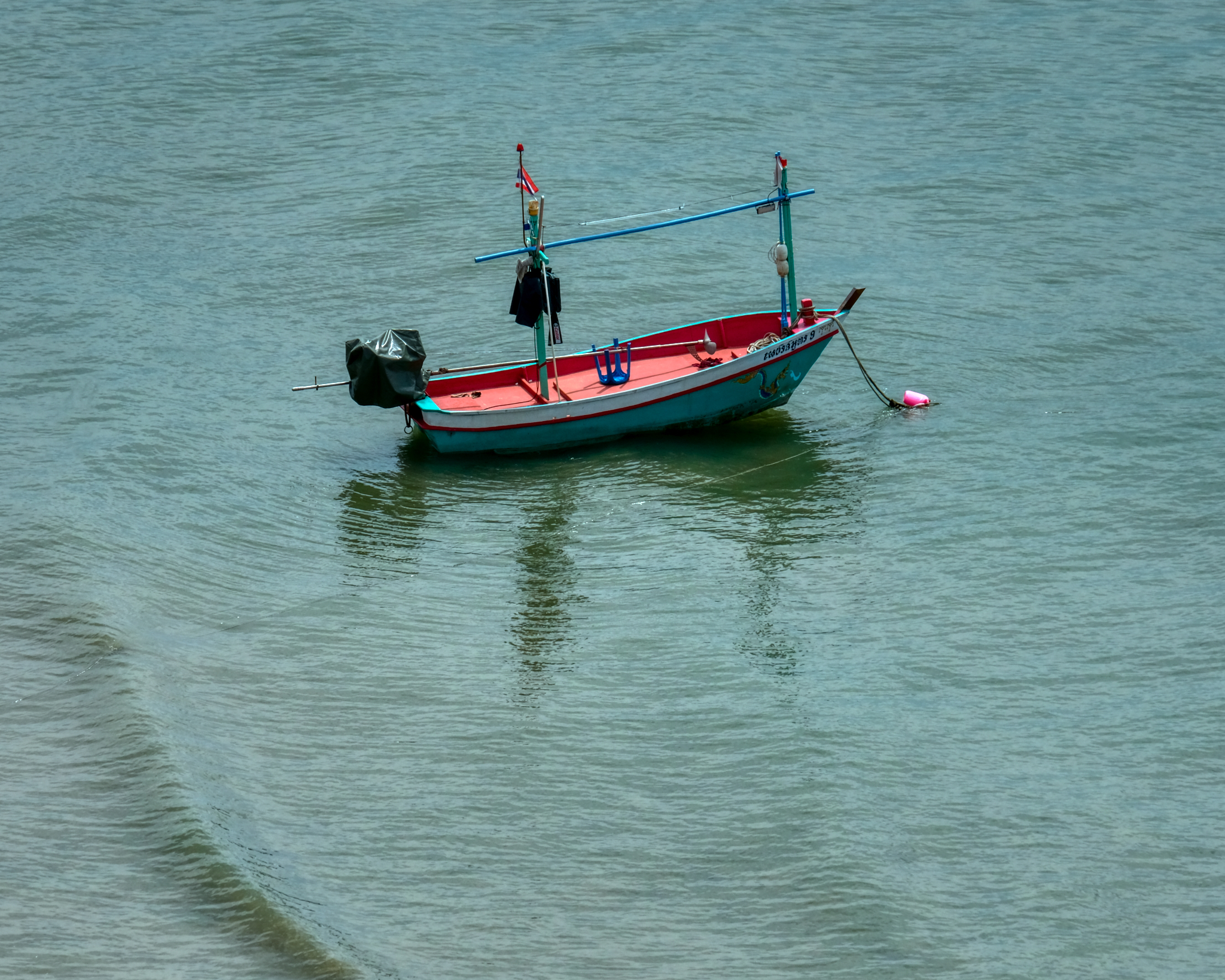 A lone fishing (squid) boat waiting for the crew.
A lone fishing (squid) boat waiting for the crew.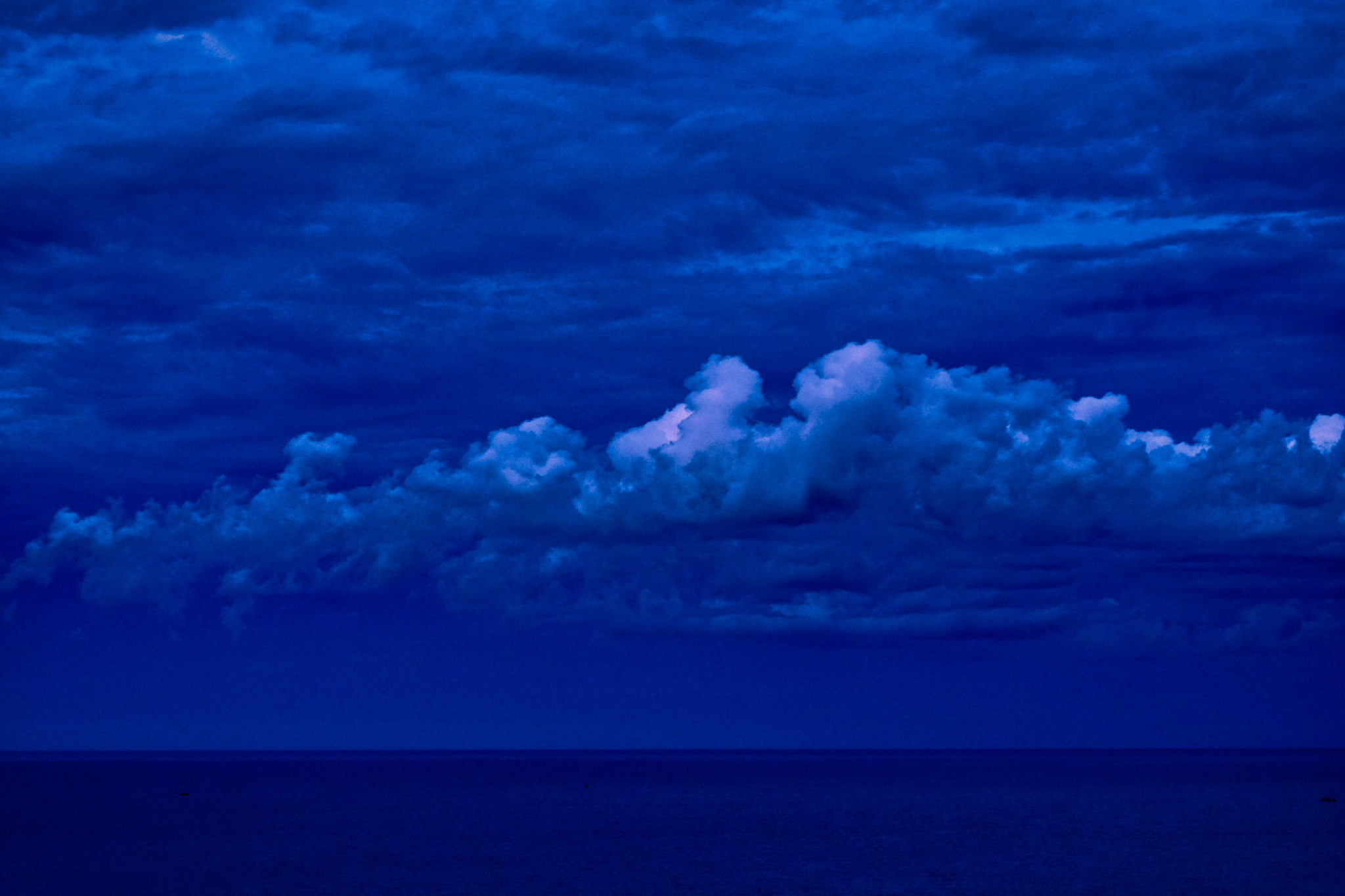 A Hua Hin blue hour sunset (looking east, away from the setting sun).
A Hua Hin blue hour sunset (looking east, away from the setting sun).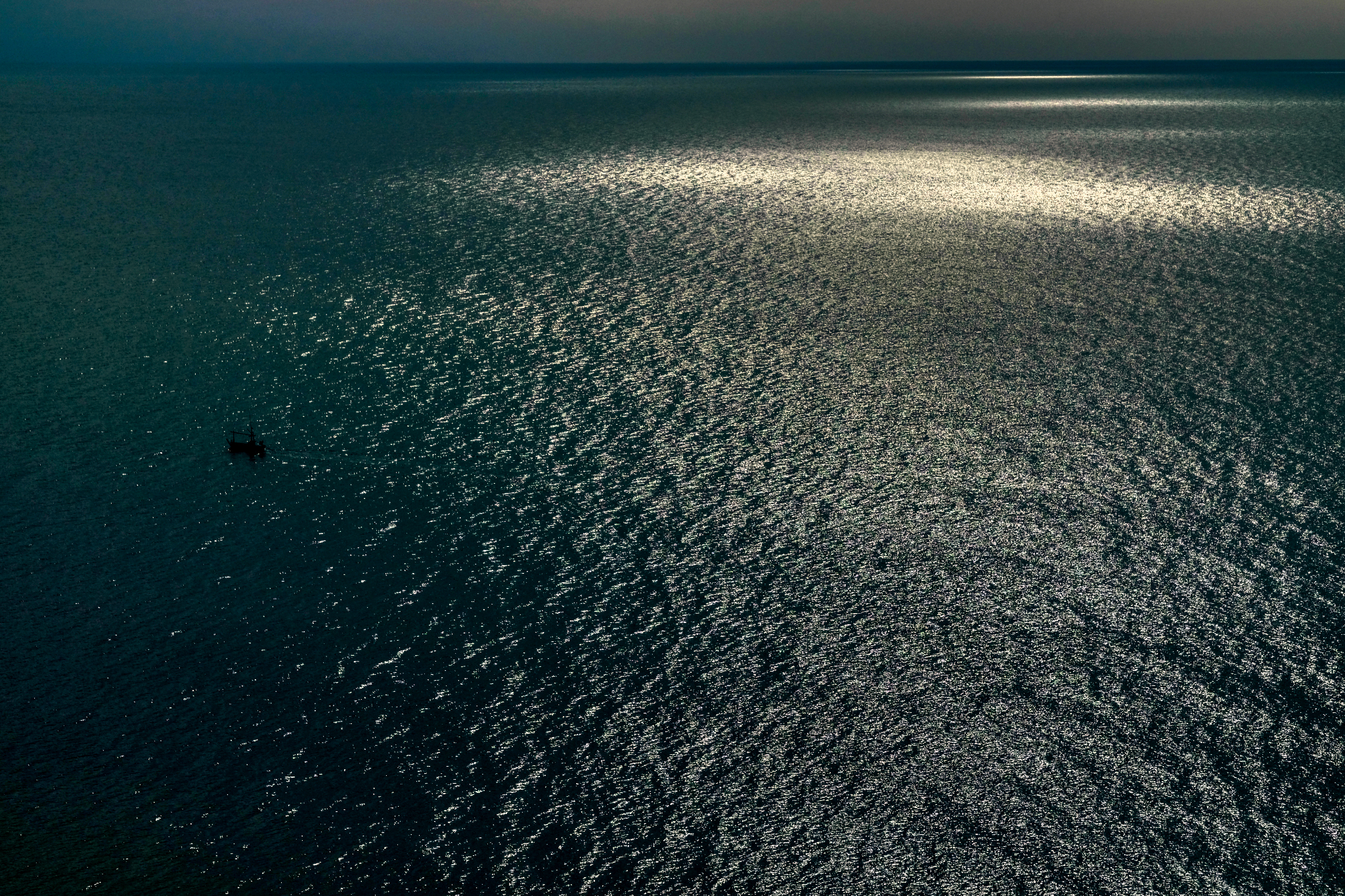 A Hua Hin sunrise sea.
A Hua Hin sunrise sea.Suphanburi Province: A Day Trip Northwest Of Bangkok
 Wednesday, March 14, 2018 at 8:31AM
Wednesday, March 14, 2018 at 8:31AM A RAMBLE IN FOUR PARTS
Part Three: Thai Farm Museum and Lemon Temple
My friend John Stiles and I set off in my old truck up the road to the rural province of Suphanburi, to the northwest of Bangkok. As usual, we had a vague idea, from a tertiary Google search, of what we wanted to see, but no particular plan: we would ramble. We would eventually see several amazing Buddhist temple complexes, a Buffalo park, and a Farm Museum. We never 'found' the actual town of Suphanburi, but we didn't care: we had a grand adventure rambling about the rural Thai countryside.
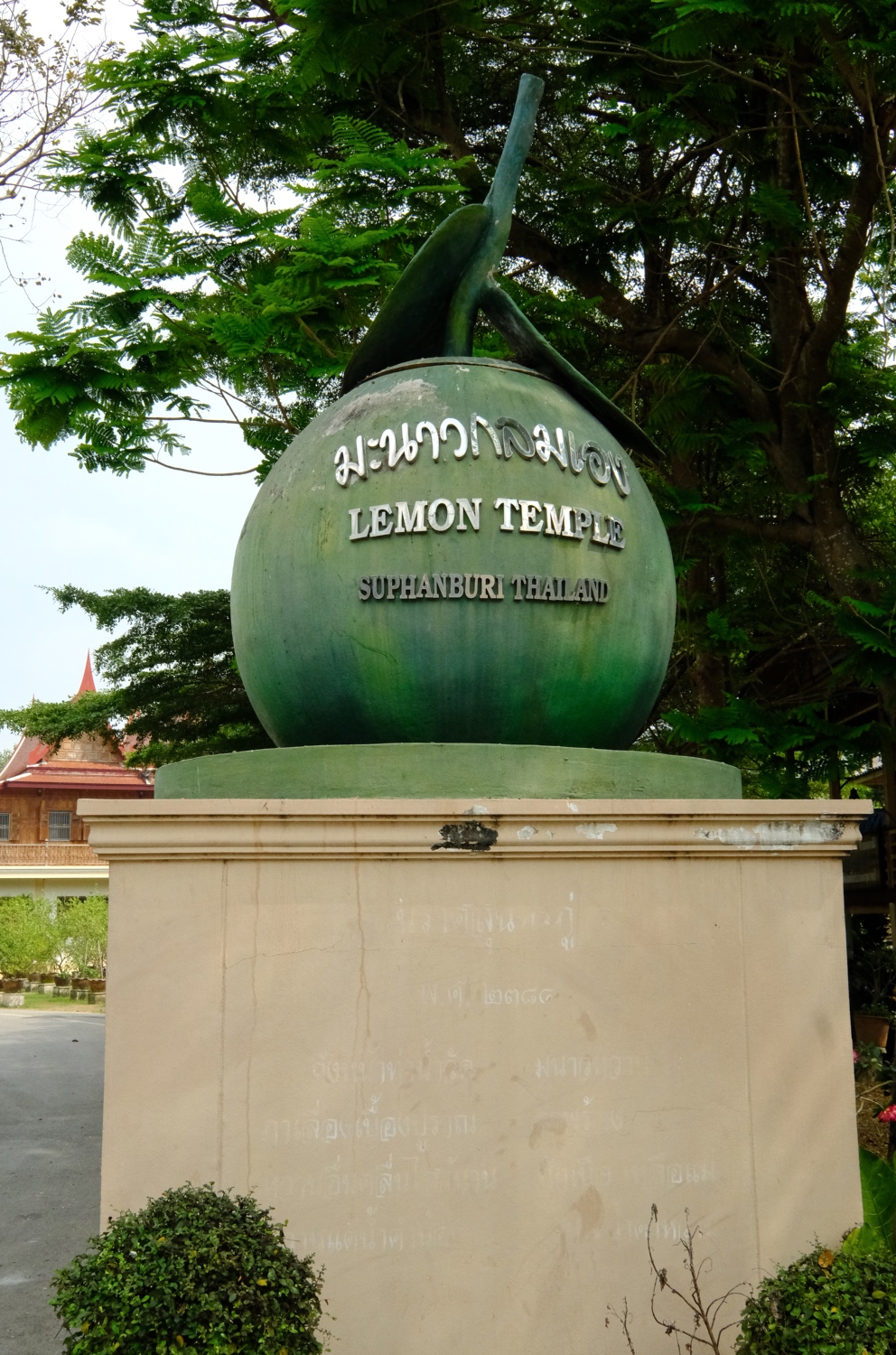 Never trust your GPS completely. After a wonderful stop at a river Wat we decided we wanted to see the Farm Museum, so we punched it into the GPS and took off. 20 minutes later we arrived at the spot on the GPS map and found the Lemon Temple instead. Where is the Farm Museum, we thought?
Never trust your GPS completely. After a wonderful stop at a river Wat we decided we wanted to see the Farm Museum, so we punched it into the GPS and took off. 20 minutes later we arrived at the spot on the GPS map and found the Lemon Temple instead. Where is the Farm Museum, we thought?
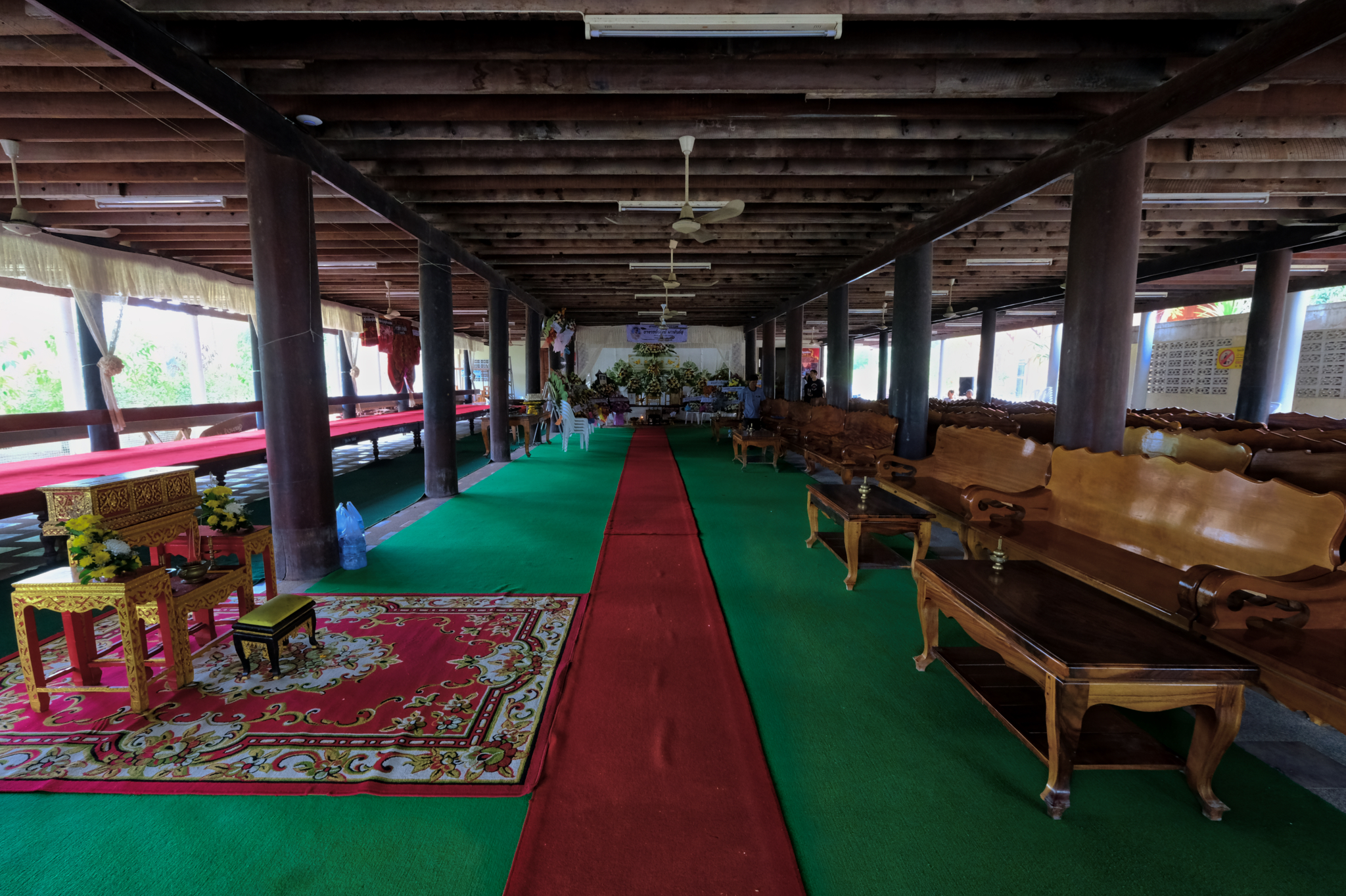 We walked around a little and could not find anything like a Farm Museum. Instead we found an interesting 'spiritual center' - a kind of Buddhist temple - and walked in to ask where the Farm Museum was.
We walked around a little and could not find anything like a Farm Museum. Instead we found an interesting 'spiritual center' - a kind of Buddhist temple - and walked in to ask where the Farm Museum was.
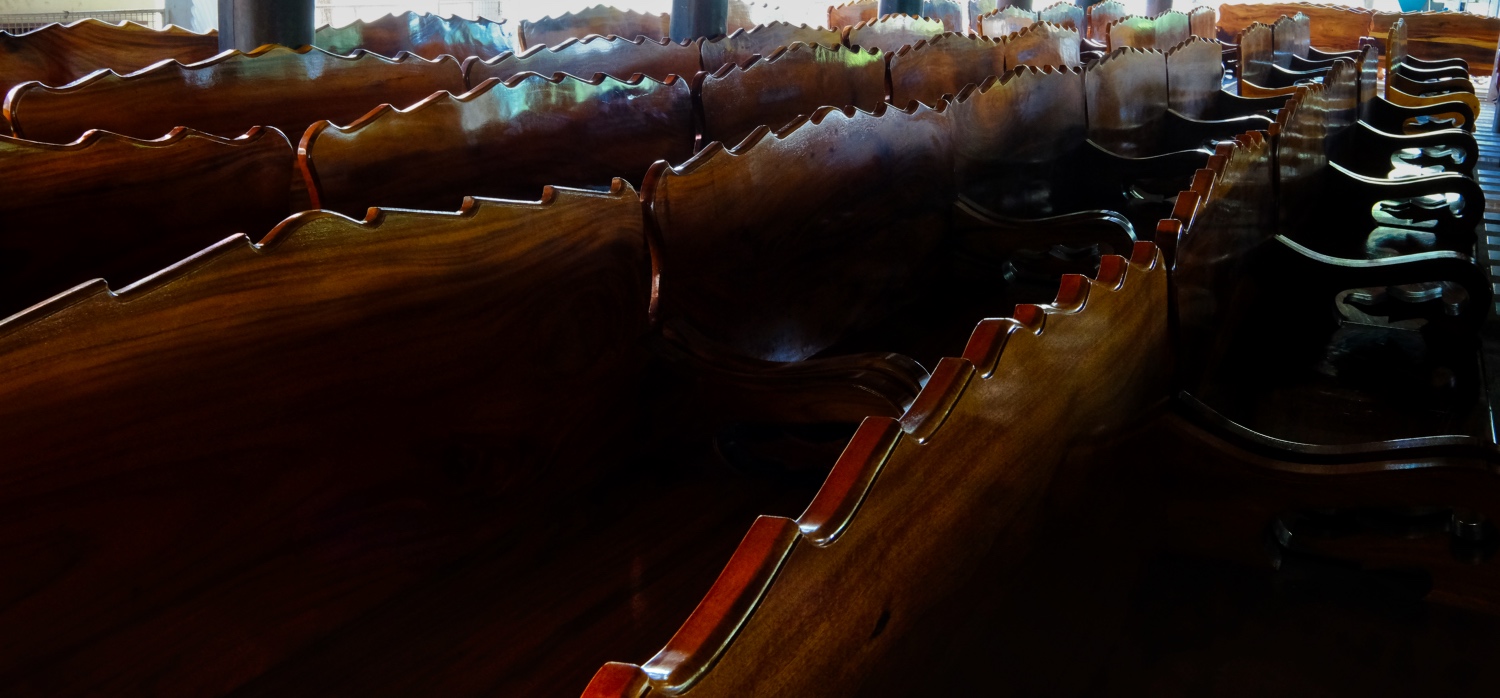 Whoever is making donations to this temple must be expecting large crowds. Beautiful wooden pews. John found someone to ask . . . they said we were about 20K from the Farm Museum. Oops! Wrong place . . . but still interesting.
Whoever is making donations to this temple must be expecting large crowds. Beautiful wooden pews. John found someone to ask . . . they said we were about 20K from the Farm Museum. Oops! Wrong place . . . but still interesting.
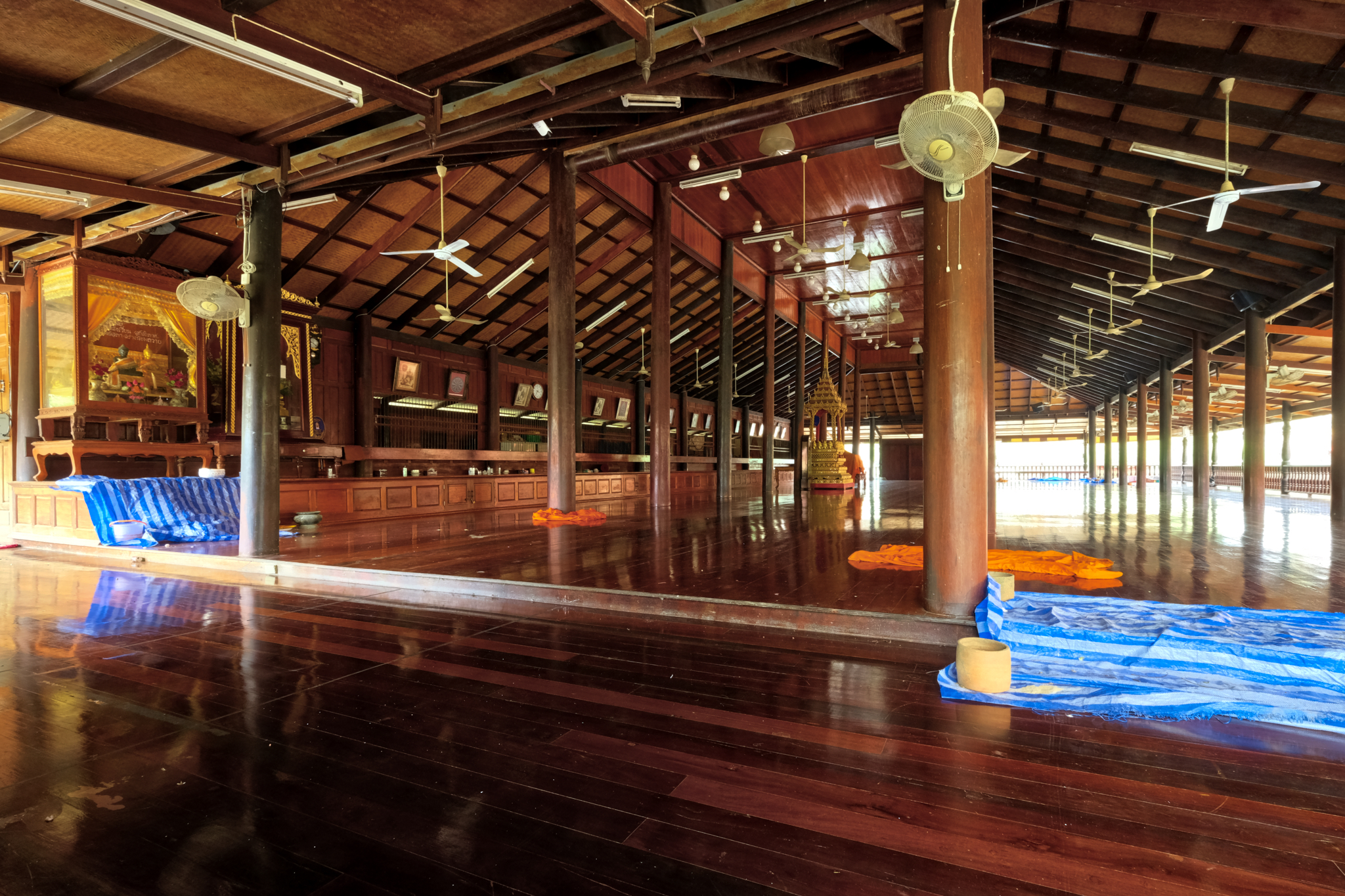 I walked around a bit and went up some stairs to find a locked door. Fortunately there was a window I could rest my camera on to take this HDR shot of the temple upper floor. The raised platform to the left is where the monks would sit and chant.
I walked around a bit and went up some stairs to find a locked door. Fortunately there was a window I could rest my camera on to take this HDR shot of the temple upper floor. The raised platform to the left is where the monks would sit and chant.
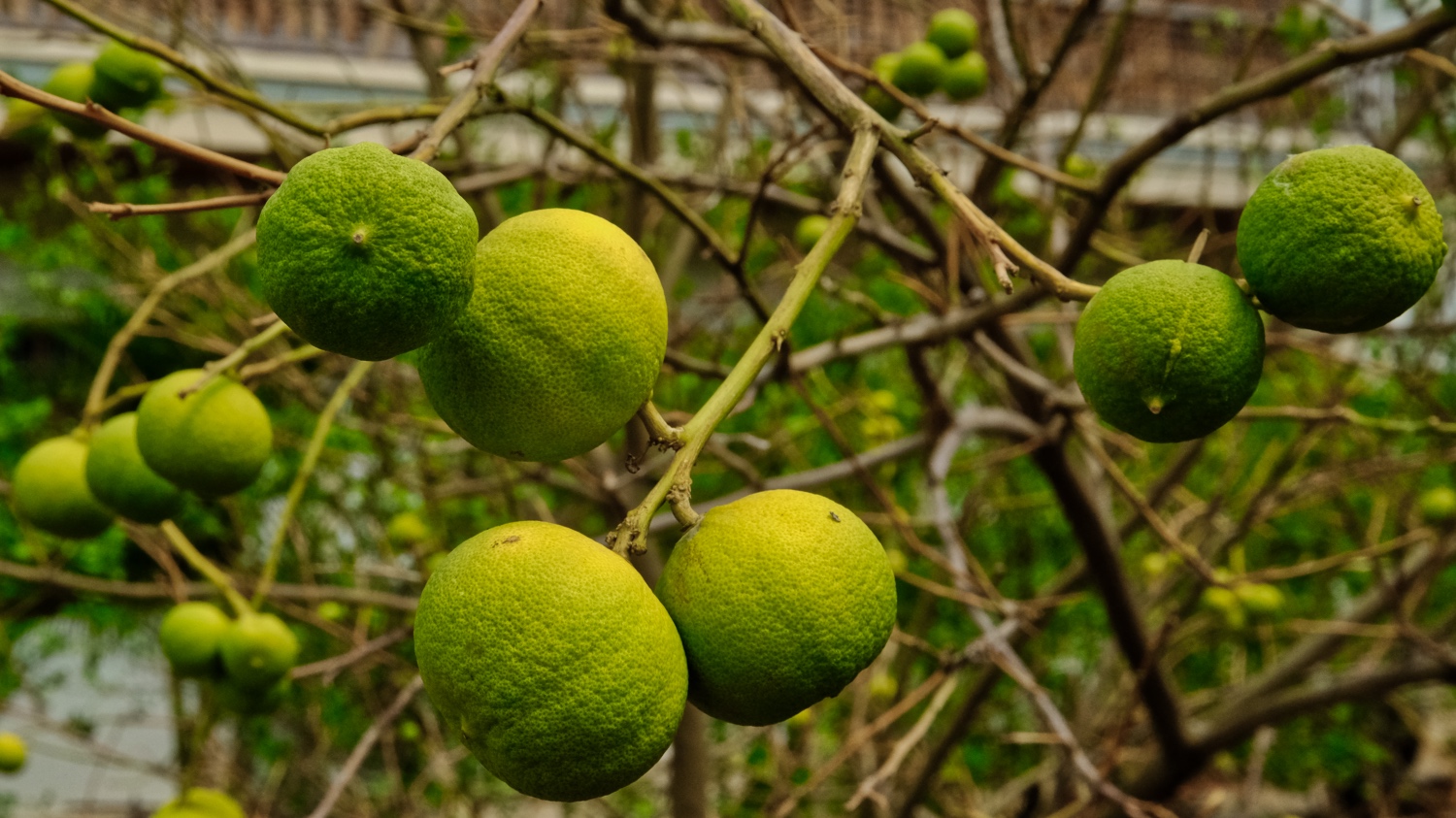 We spent 10 minutes at the Lemon Temple, found the lemon bushes, and left for Farm Museum.
We spent 10 minutes at the Lemon Temple, found the lemon bushes, and left for Farm Museum.
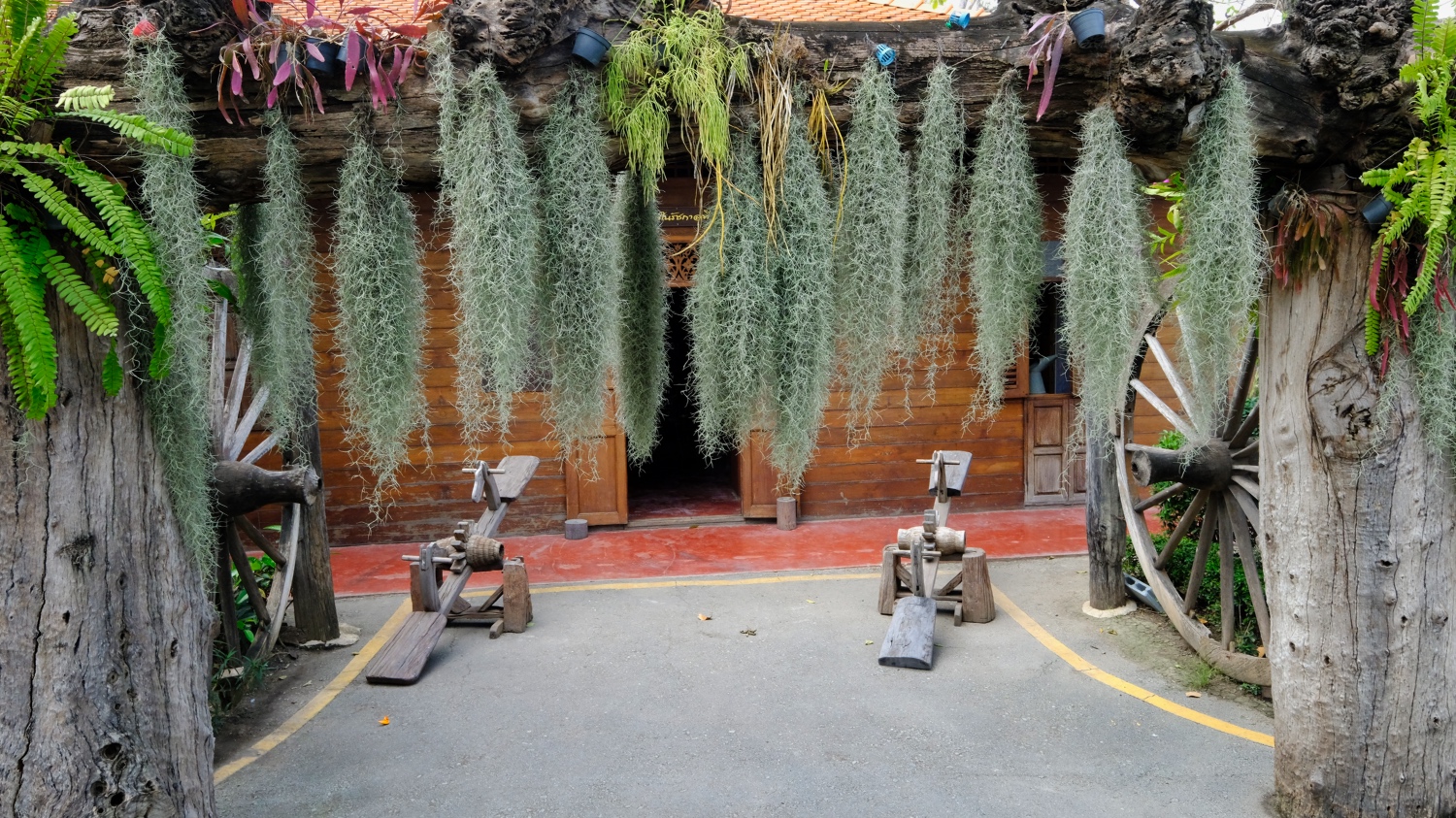 The entrance to the Lifestyle and Spirit of Thai Farmers Learning Center looked promising. And we were hungry.
The entrance to the Lifestyle and Spirit of Thai Farmers Learning Center looked promising. And we were hungry.
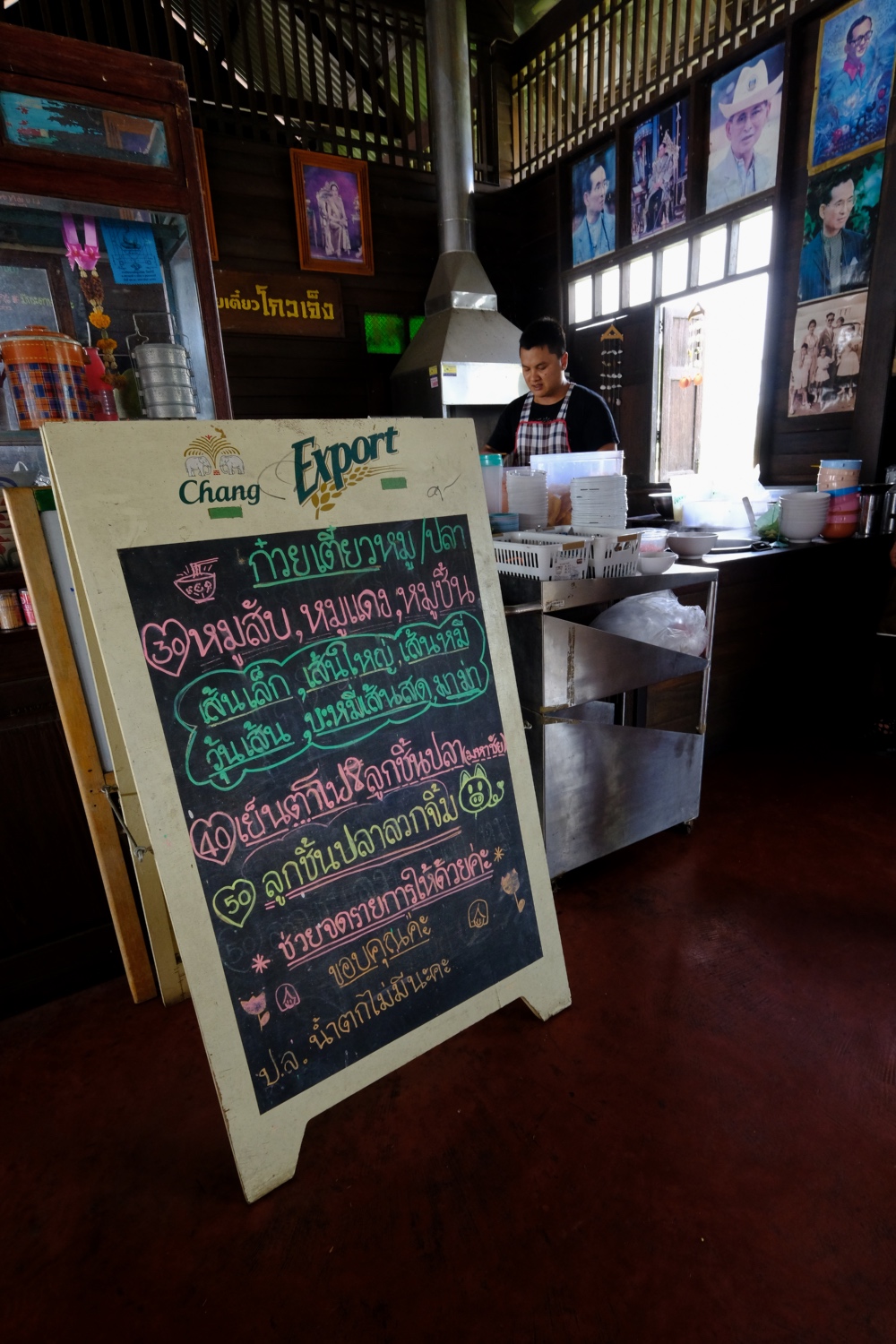 Fortunately they had an eatery where we could get a bowl of noodle soup. They also had a cafe where we had a fine cup of coffee.
Fortunately they had an eatery where we could get a bowl of noodle soup. They also had a cafe where we had a fine cup of coffee.
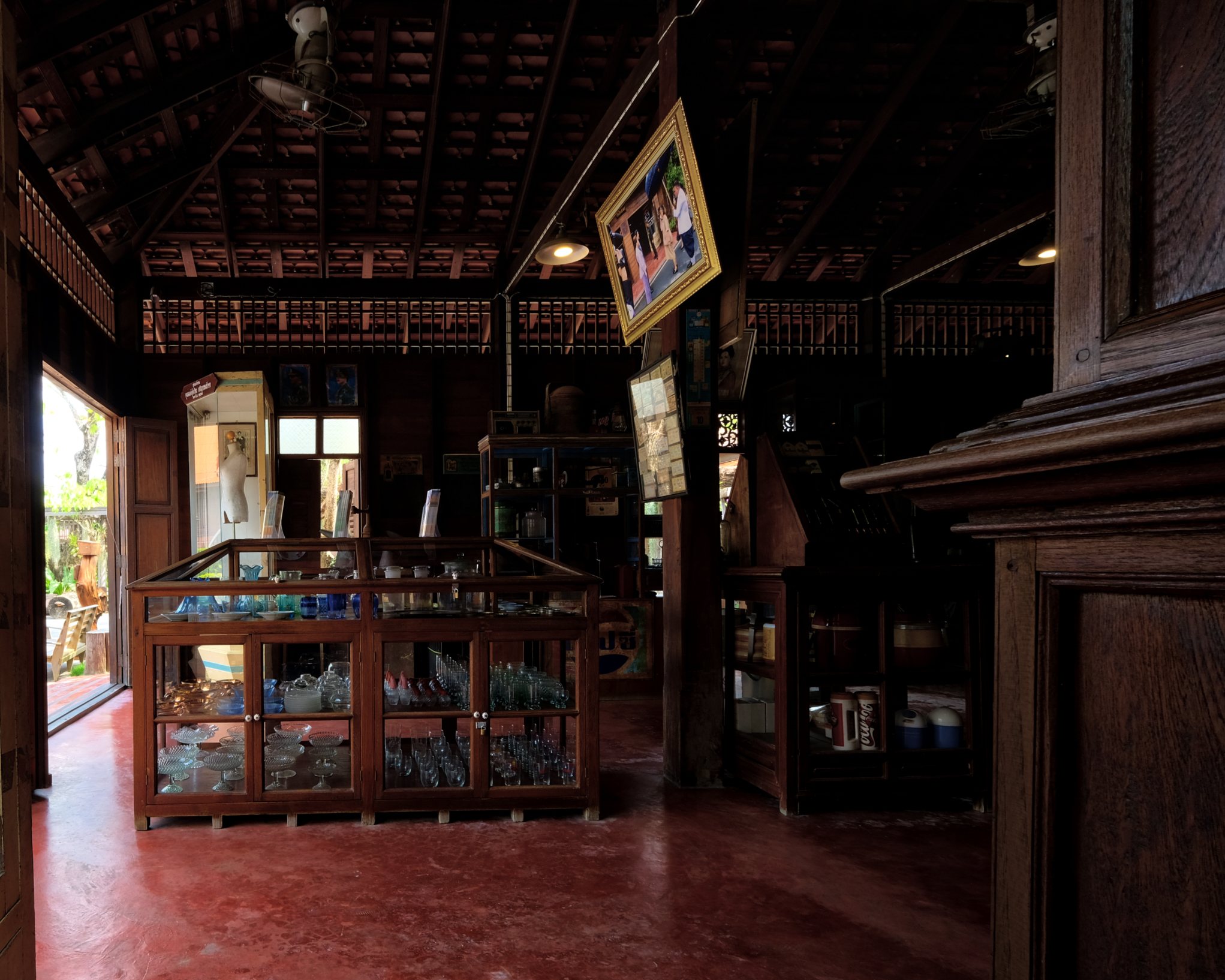 The museum had a fine recreated historical rural shop.
The museum had a fine recreated historical rural shop.
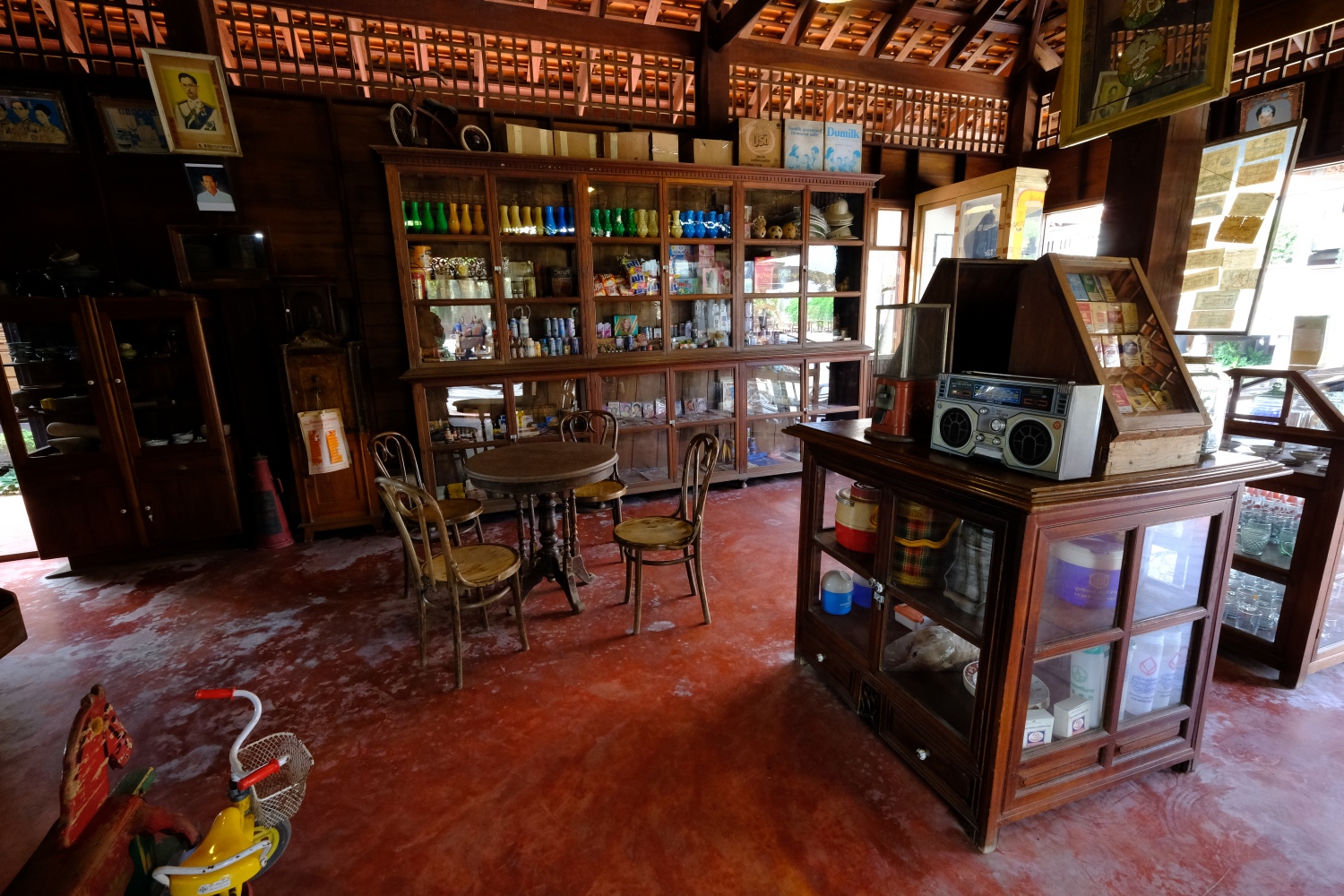 Historical store.
Historical store.
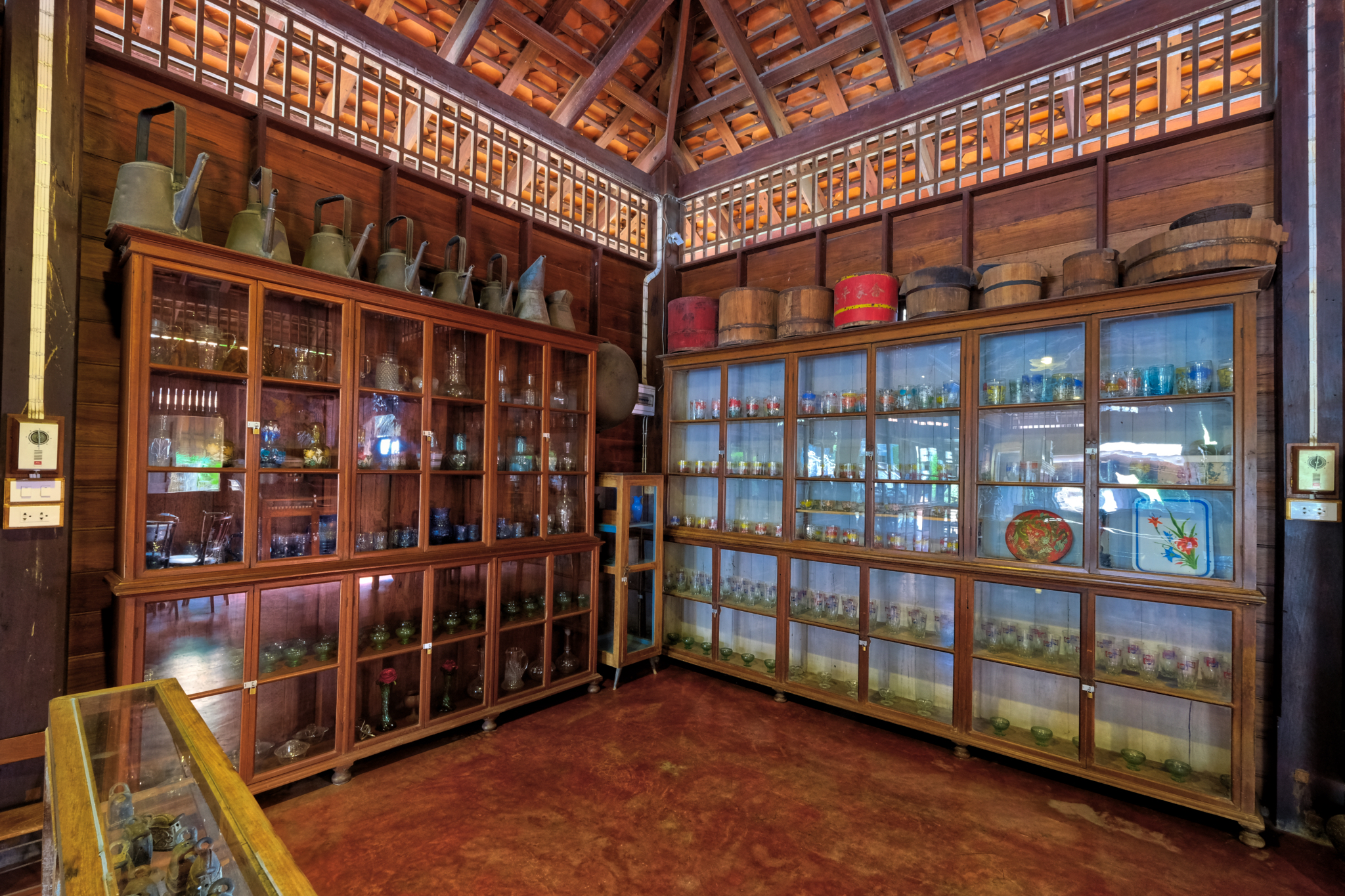 A very beautiful space.
A very beautiful space.
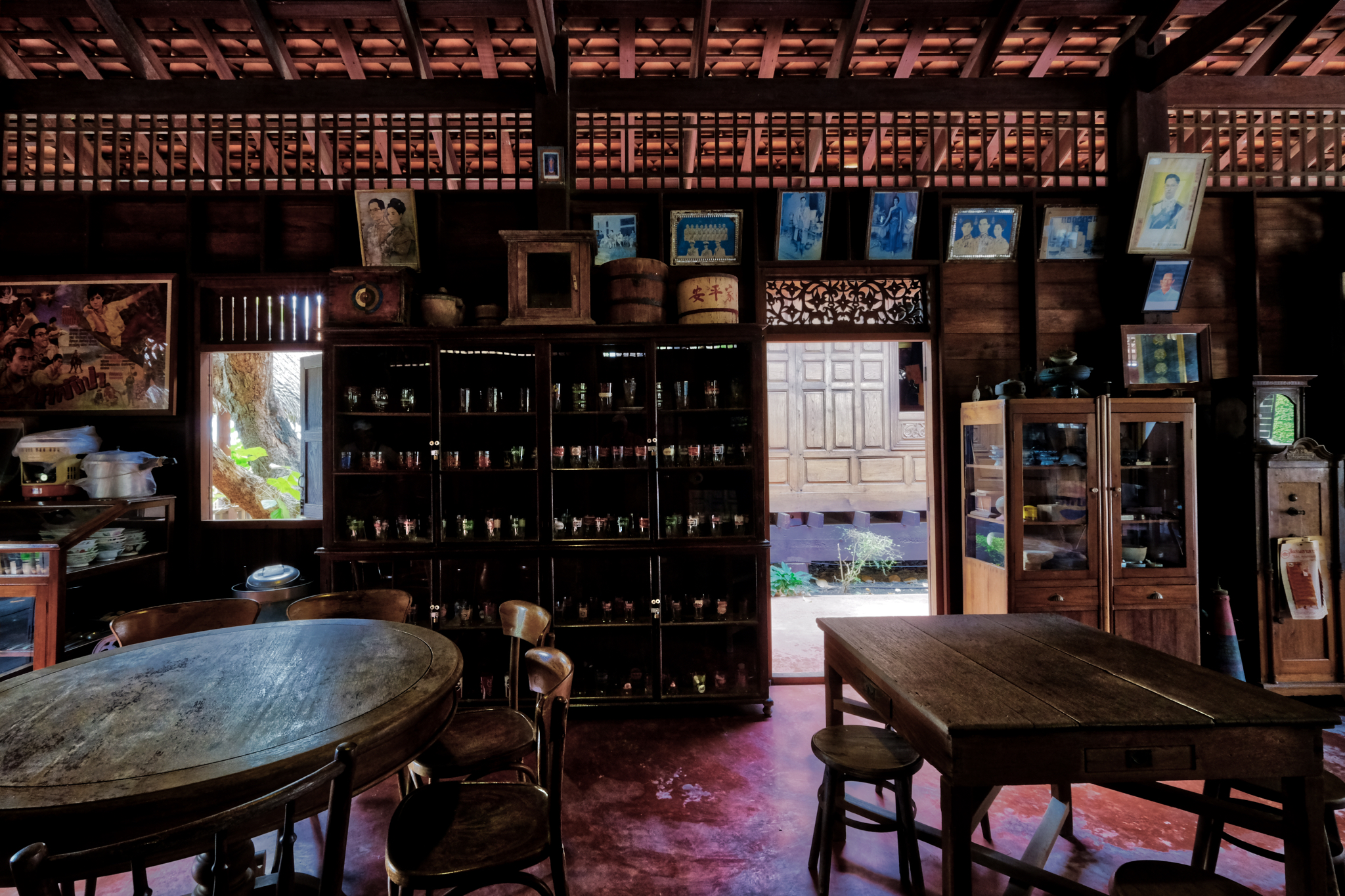 Strangely, not all the items on the display shelves were old and antique.
Strangely, not all the items on the display shelves were old and antique.
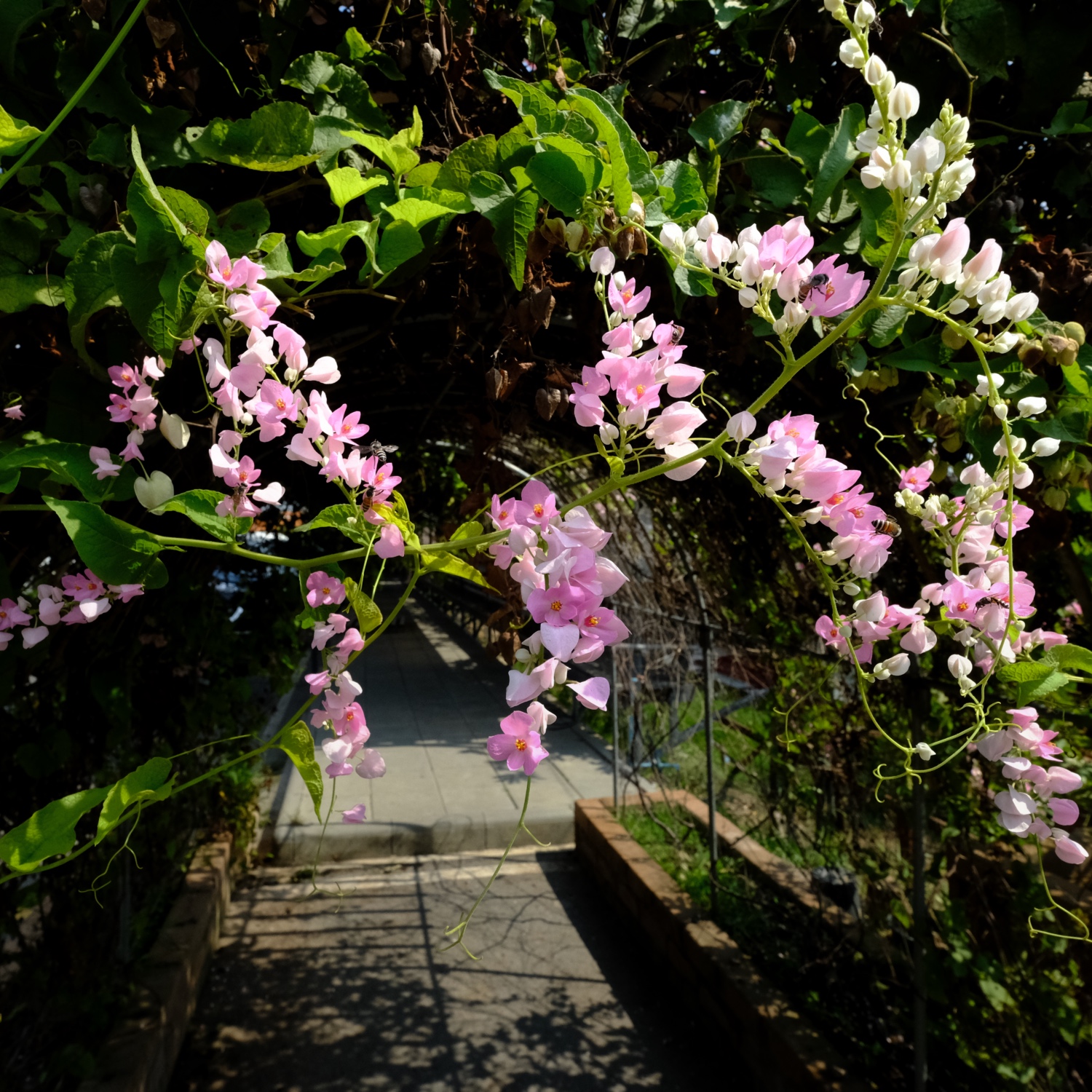 It was a very beautiful place with covered walkways.
It was a very beautiful place with covered walkways.
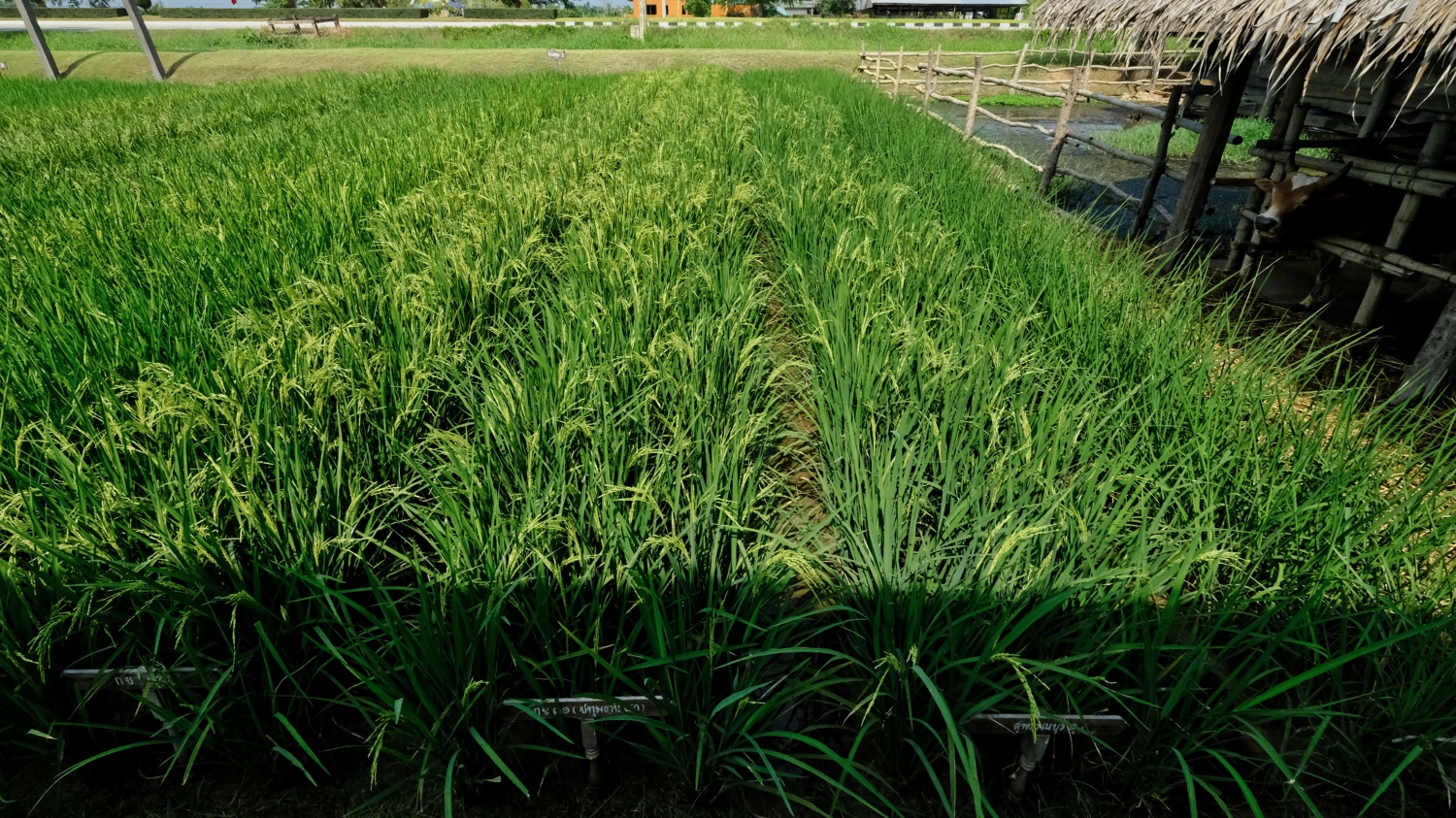 There were fields to show different types of rice.
There were fields to show different types of rice.
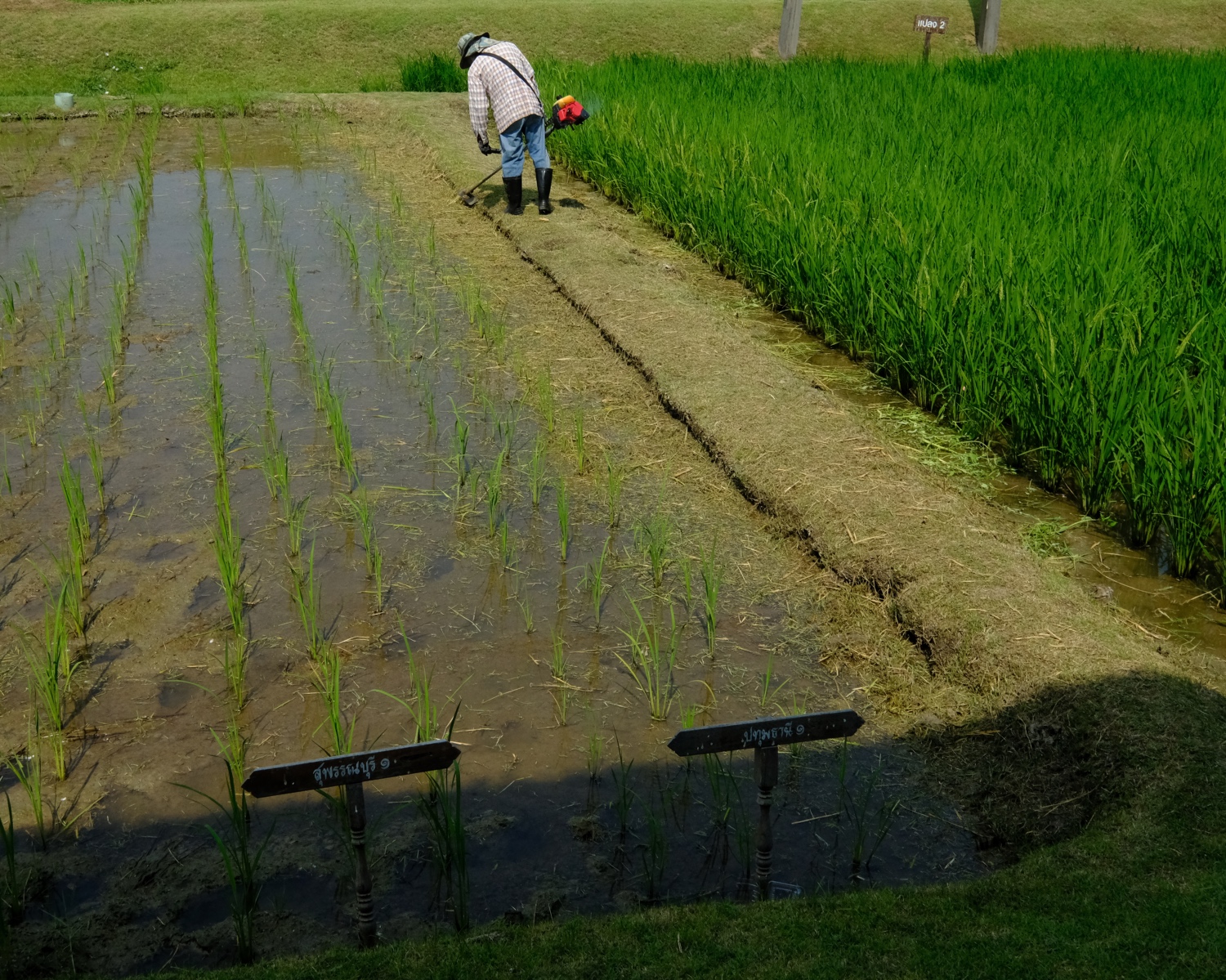 Trimming the rice fields . . . only at the museum.
Trimming the rice fields . . . only at the museum.
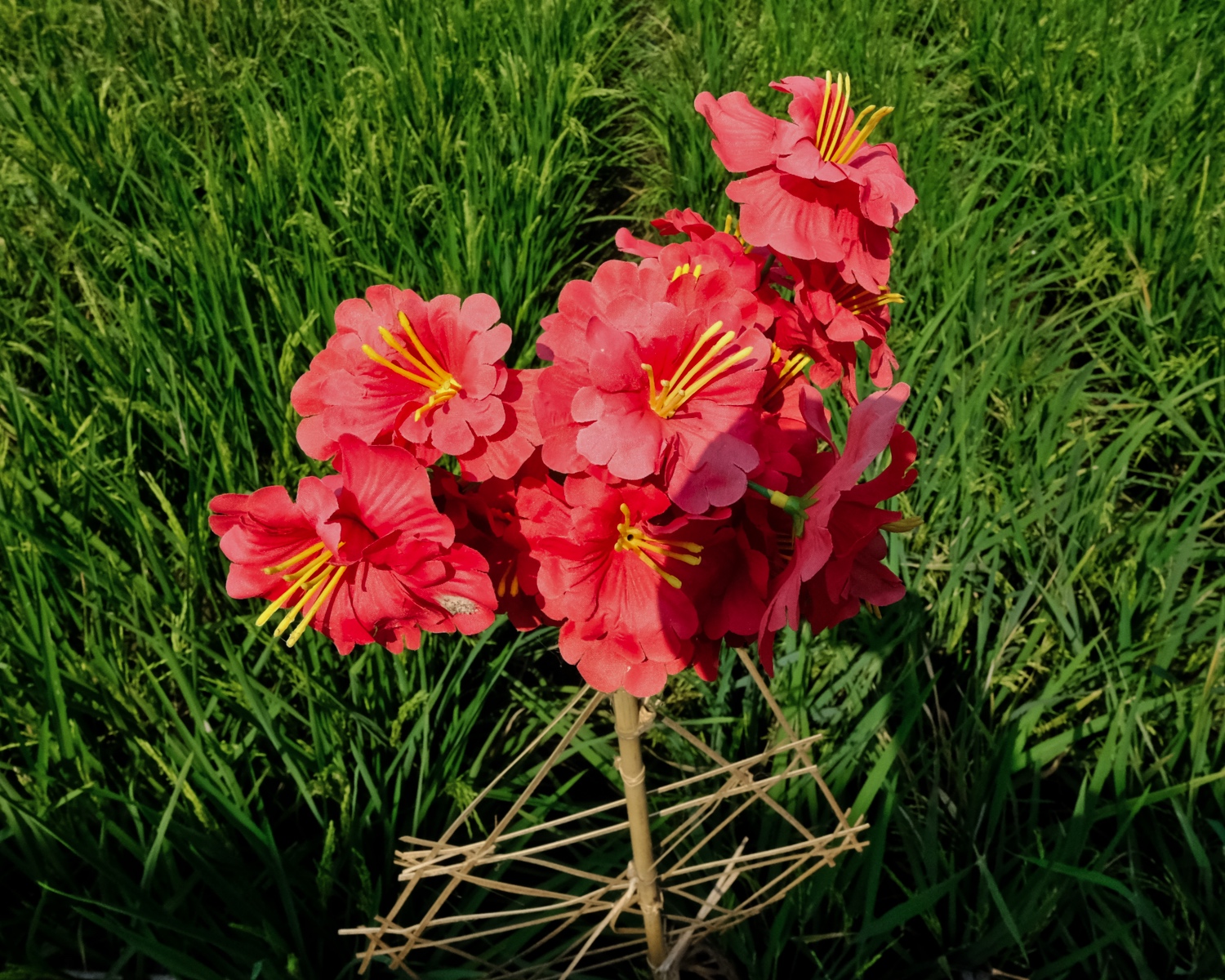 Flowers in the rice fields.
Flowers in the rice fields.
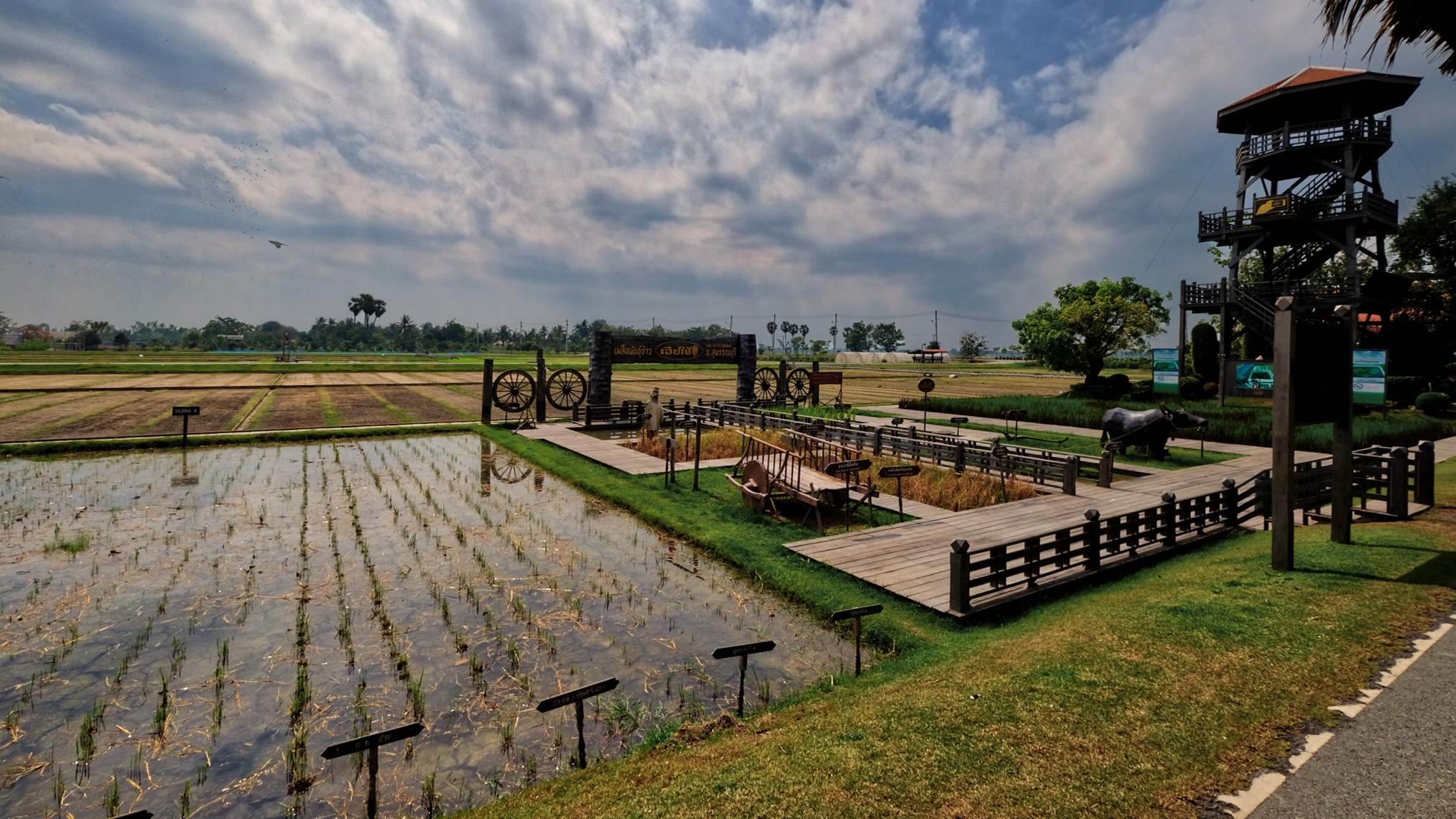 The center is designed to educate farmers about farming methods, and to educate the public about farming in general. None of the visitors we saw looked like farmers.
The center is designed to educate farmers about farming methods, and to educate the public about farming in general. None of the visitors we saw looked like farmers.
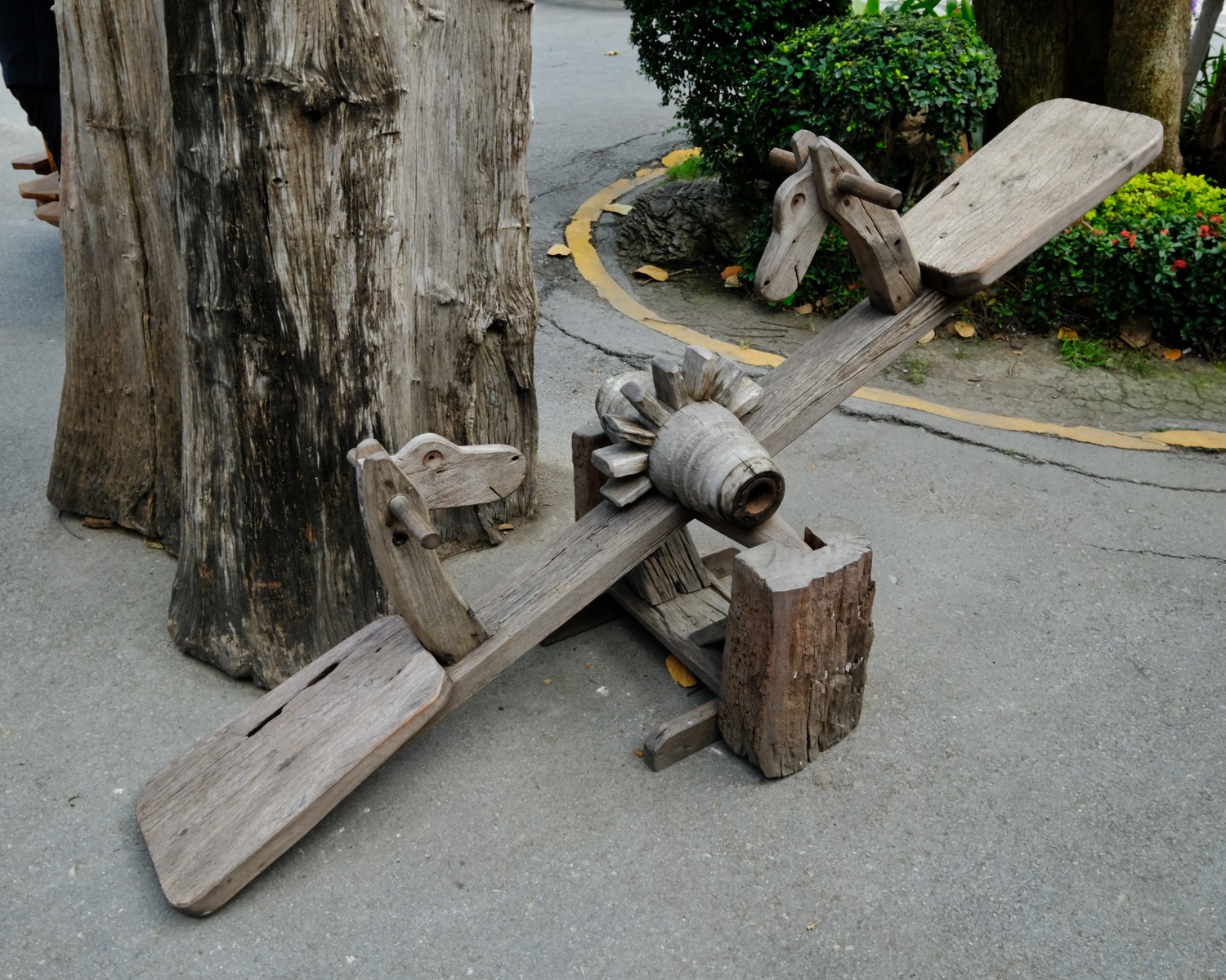 A child's teeter-totter made of parts from an old buffalo farm cart. You hate to see these old items repurposed this way.
A child's teeter-totter made of parts from an old buffalo farm cart. You hate to see these old items repurposed this way.
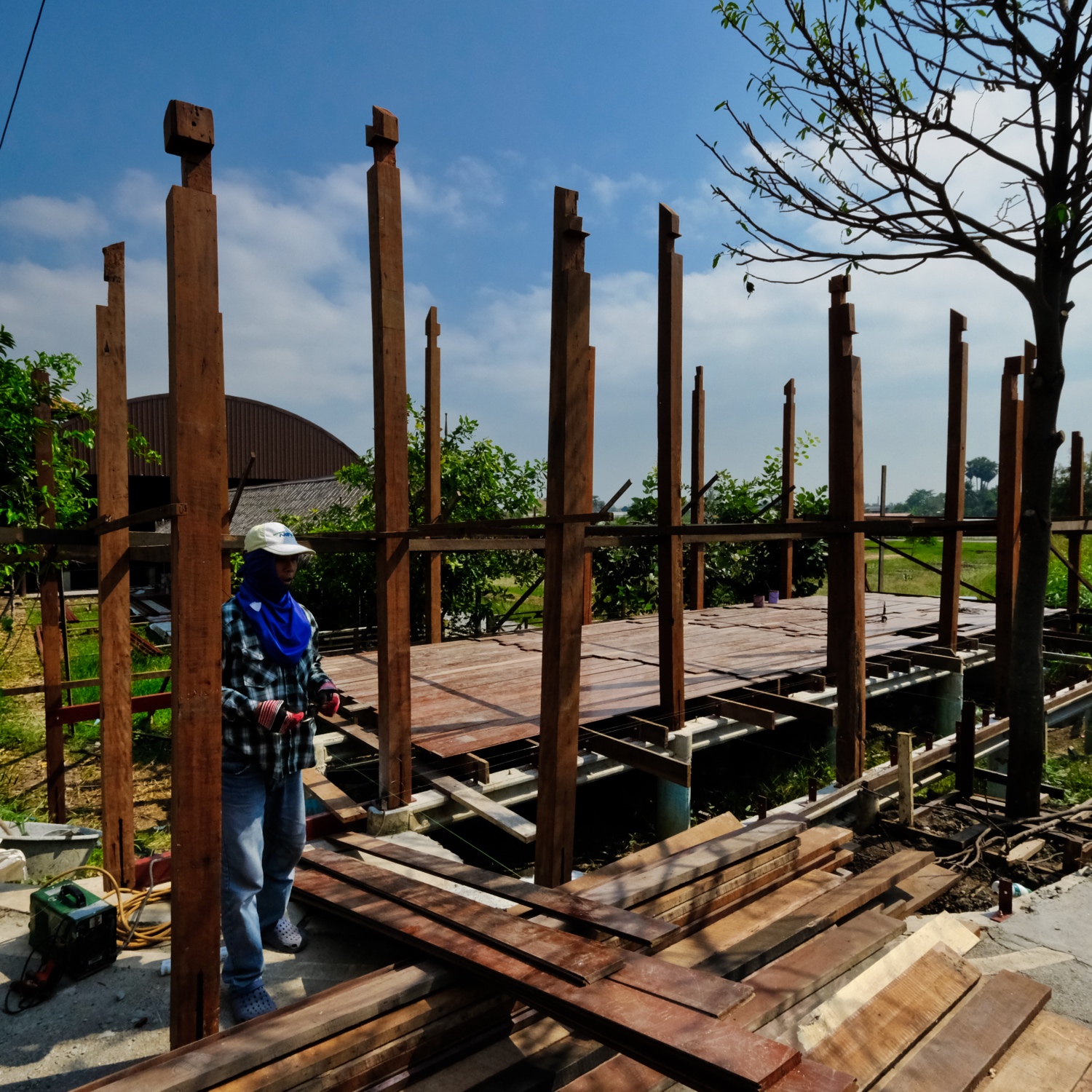 It was interesting to watch workers reassemble an old Thai style teak house.
It was interesting to watch workers reassemble an old Thai style teak house.
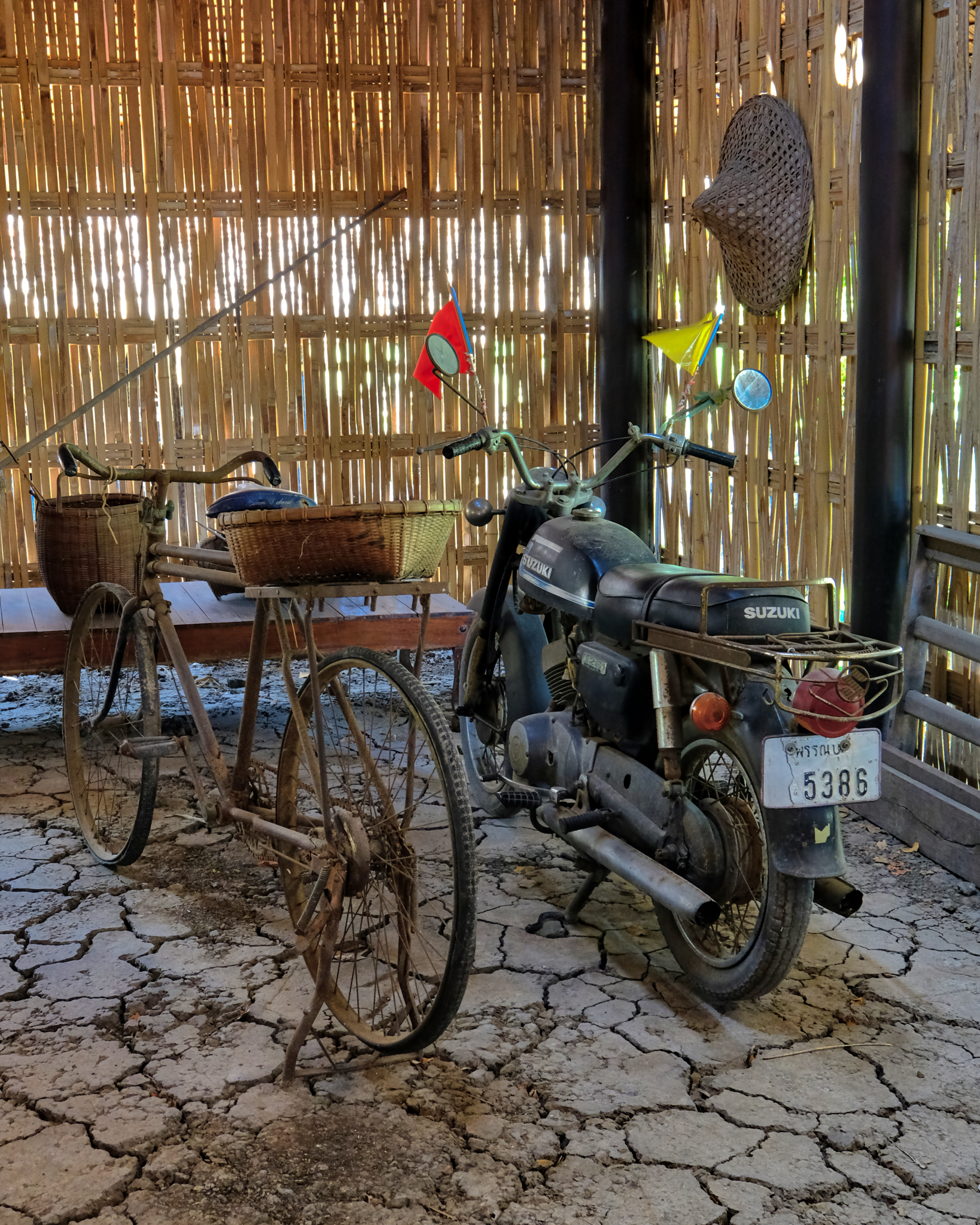 There were a few small exhibits of random 'old stuff.' This old Suzuki and bicycle in a grass shack was particularly beautiful. We headed on to our next destination: The Hell Garden (Wat Phai Rong Wua) of Suphanburi.
There were a few small exhibits of random 'old stuff.' This old Suzuki and bicycle in a grass shack was particularly beautiful. We headed on to our next destination: The Hell Garden (Wat Phai Rong Wua) of Suphanburi.
Lopburi Ramble: In Search of Sunflower Fields
 Monday, January 29, 2018 at 5:55PM
Monday, January 29, 2018 at 5:55PM 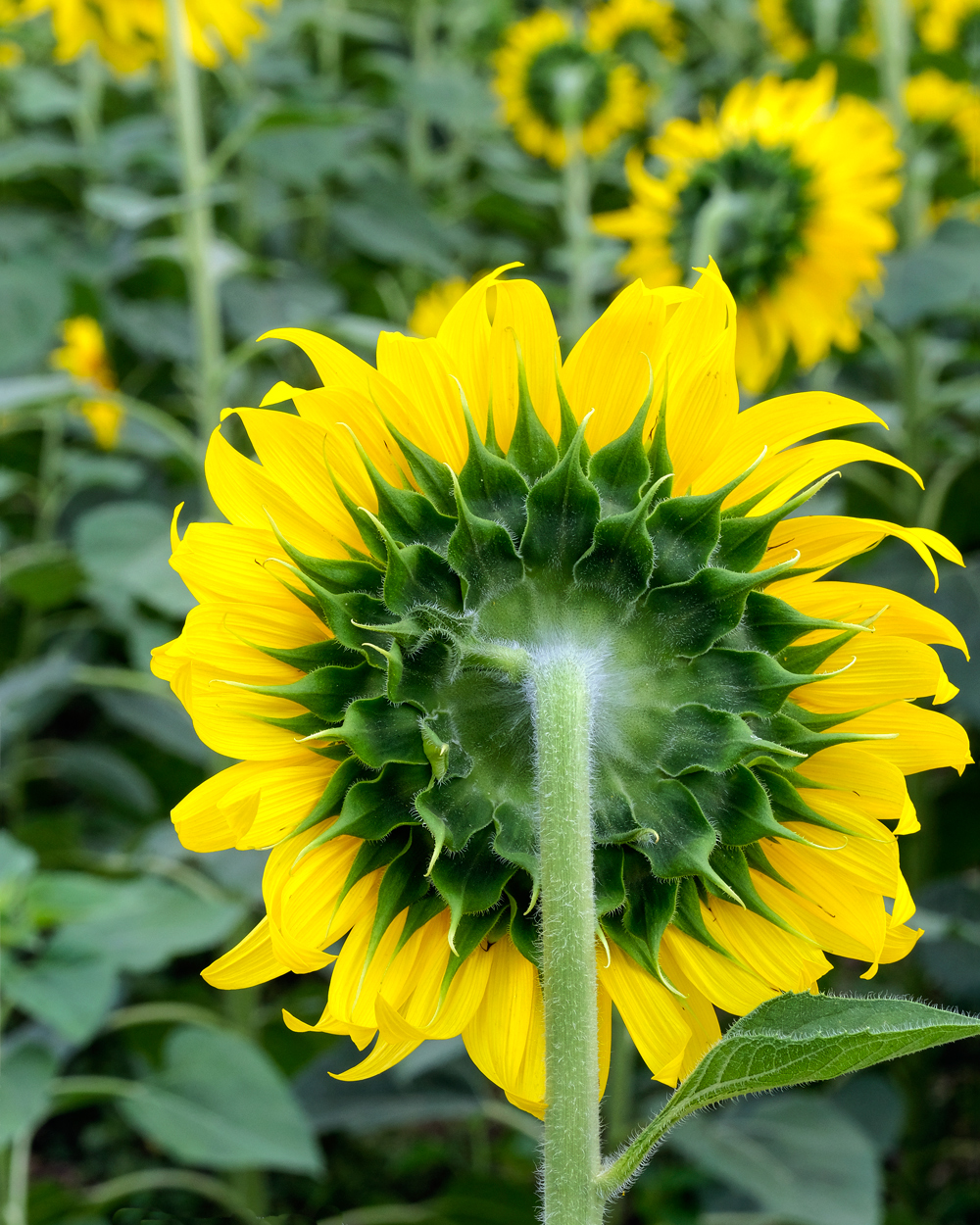 My friend John Stiles and I took a day off work on a week day and drove north out of Bangkok early in the morning in search of the famous Lopburi sunflower fields . . . they were suppose to be coming into bloom this time of year (November 2017).
My friend John Stiles and I took a day off work on a week day and drove north out of Bangkok early in the morning in search of the famous Lopburi sunflower fields . . . they were suppose to be coming into bloom this time of year (November 2017).
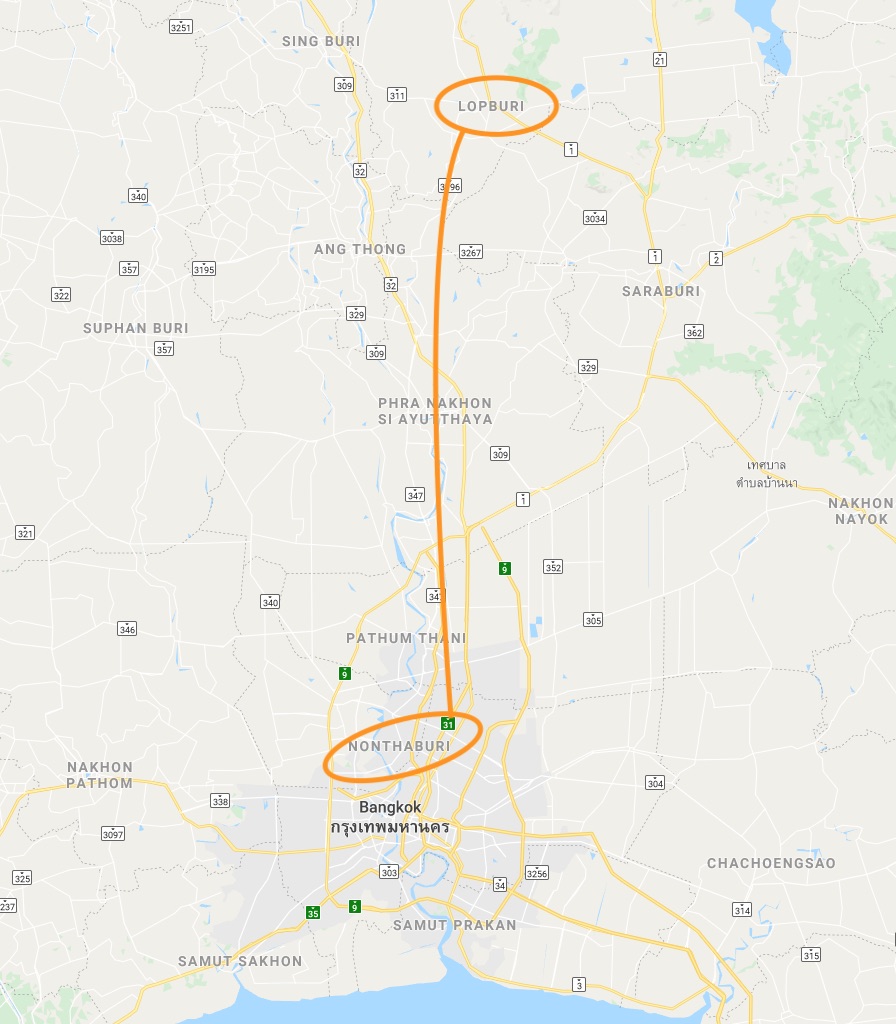 Just an easy 1 1/2 hour drive up a divided highway to Lopburi.
Just an easy 1 1/2 hour drive up a divided highway to Lopburi.
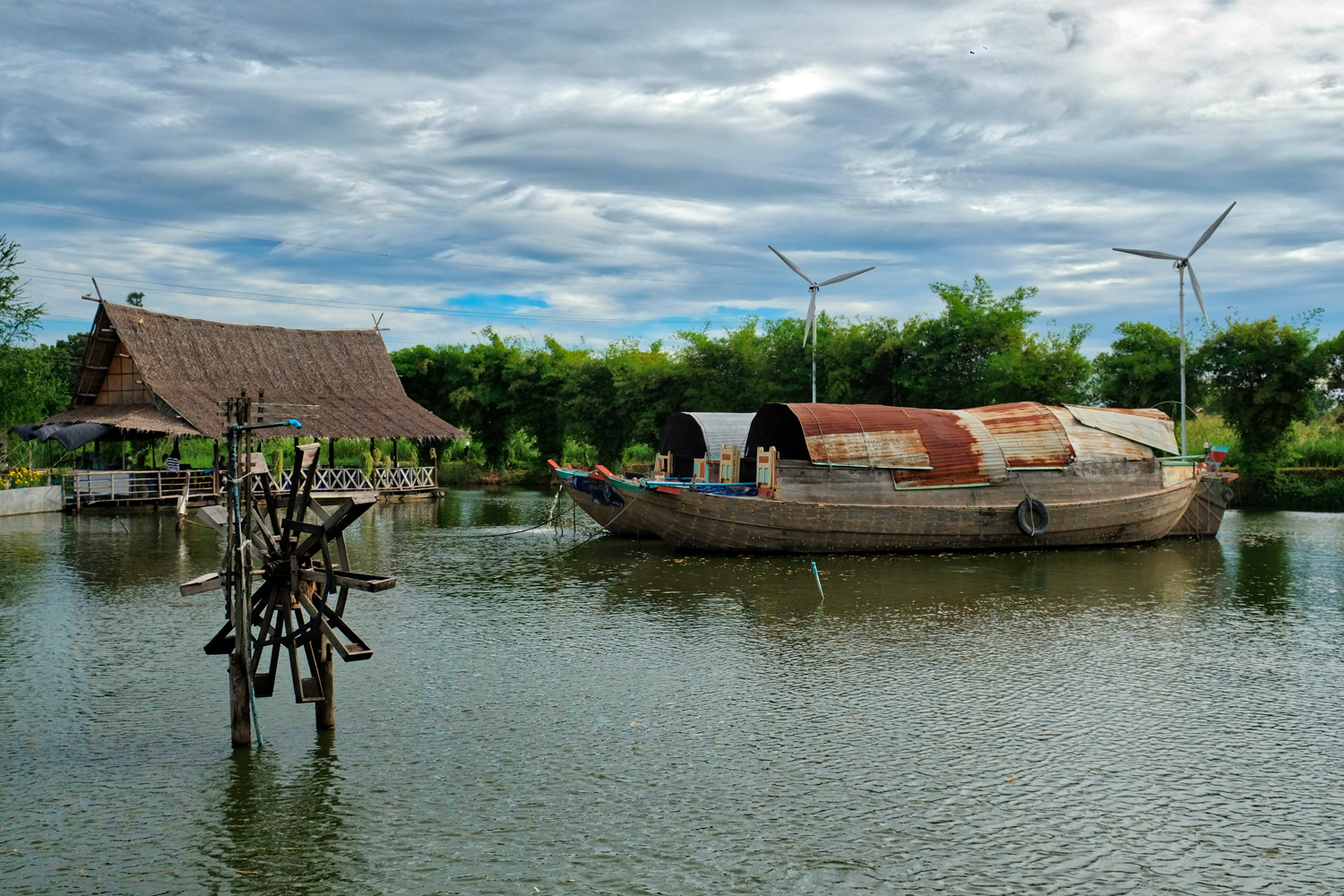 We began the day before first light, so when we came across this roadside restaurant on a pond, so we stopped.
We began the day before first light, so when we came across this roadside restaurant on a pond, so we stopped.
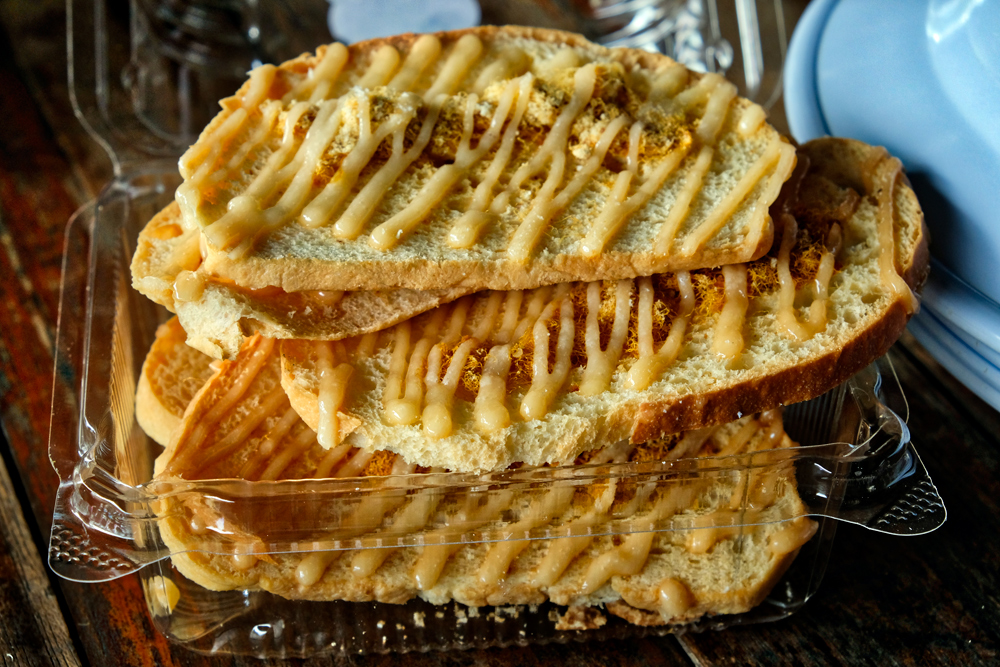 We enjoyed some good coffee (they had a grand Italian coffee-making machine!) and dry honey toast with pork floss.
We enjoyed some good coffee (they had a grand Italian coffee-making machine!) and dry honey toast with pork floss.
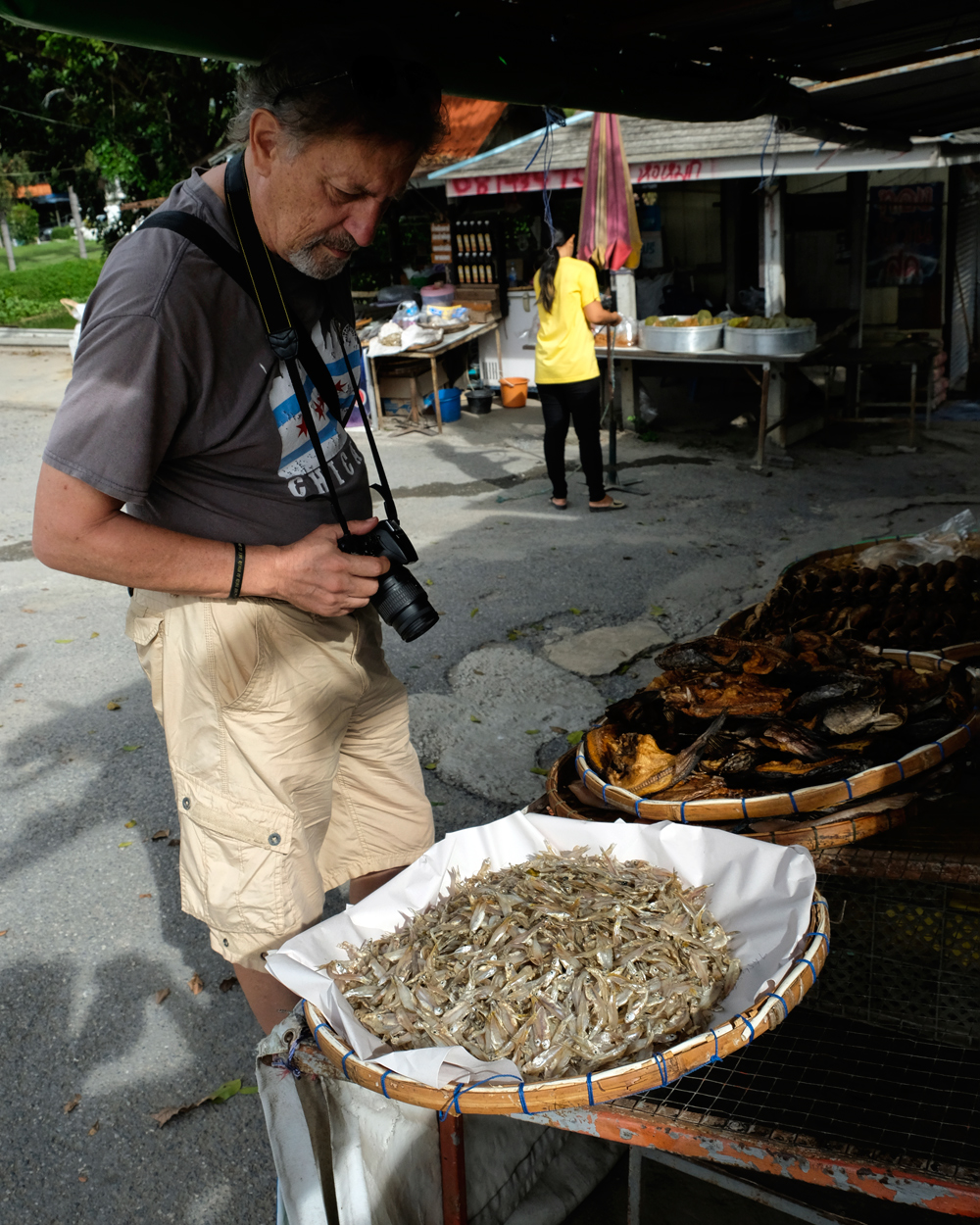 There was a dried fish stand setting up outside the restaurant when we arrived. Very photogenic. We would see a lot of dried fish throughout the day.
There was a dried fish stand setting up outside the restaurant when we arrived. Very photogenic. We would see a lot of dried fish throughout the day.
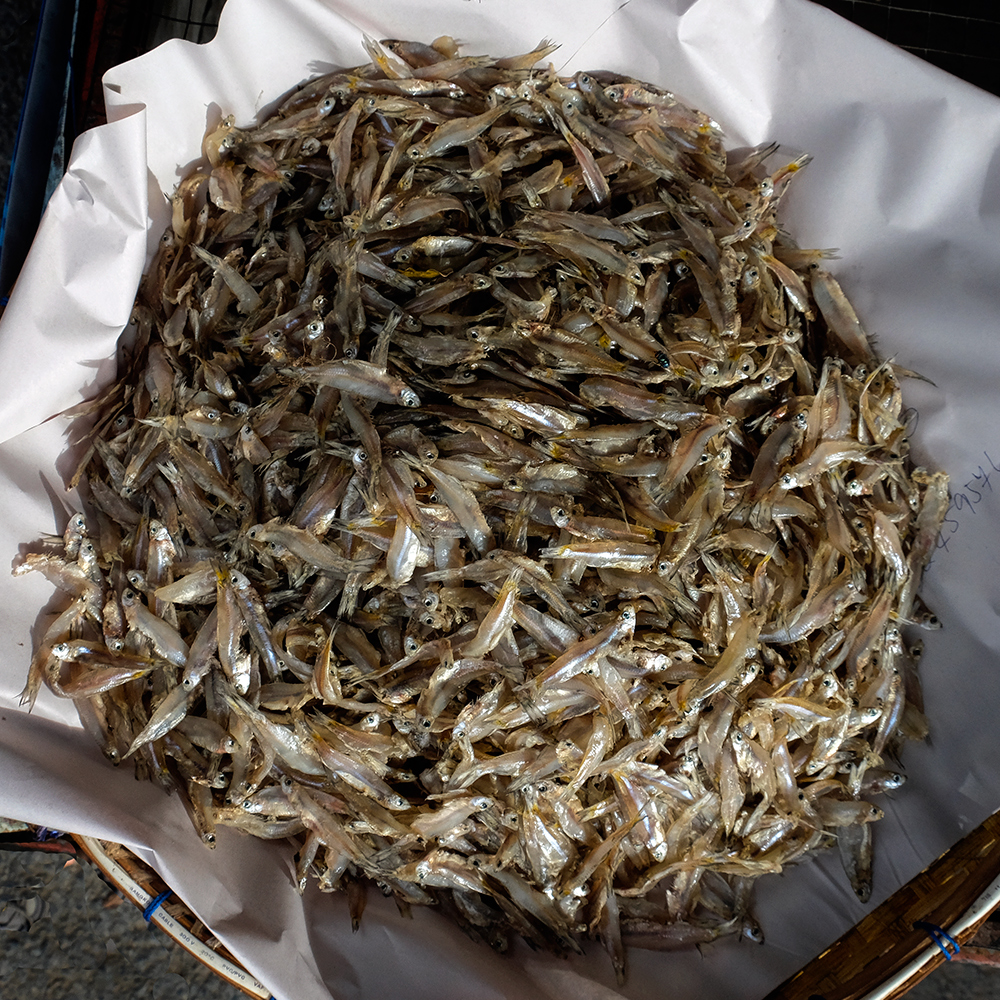 Small dried 'sprats' . . . my favorite.
Small dried 'sprats' . . . my favorite.
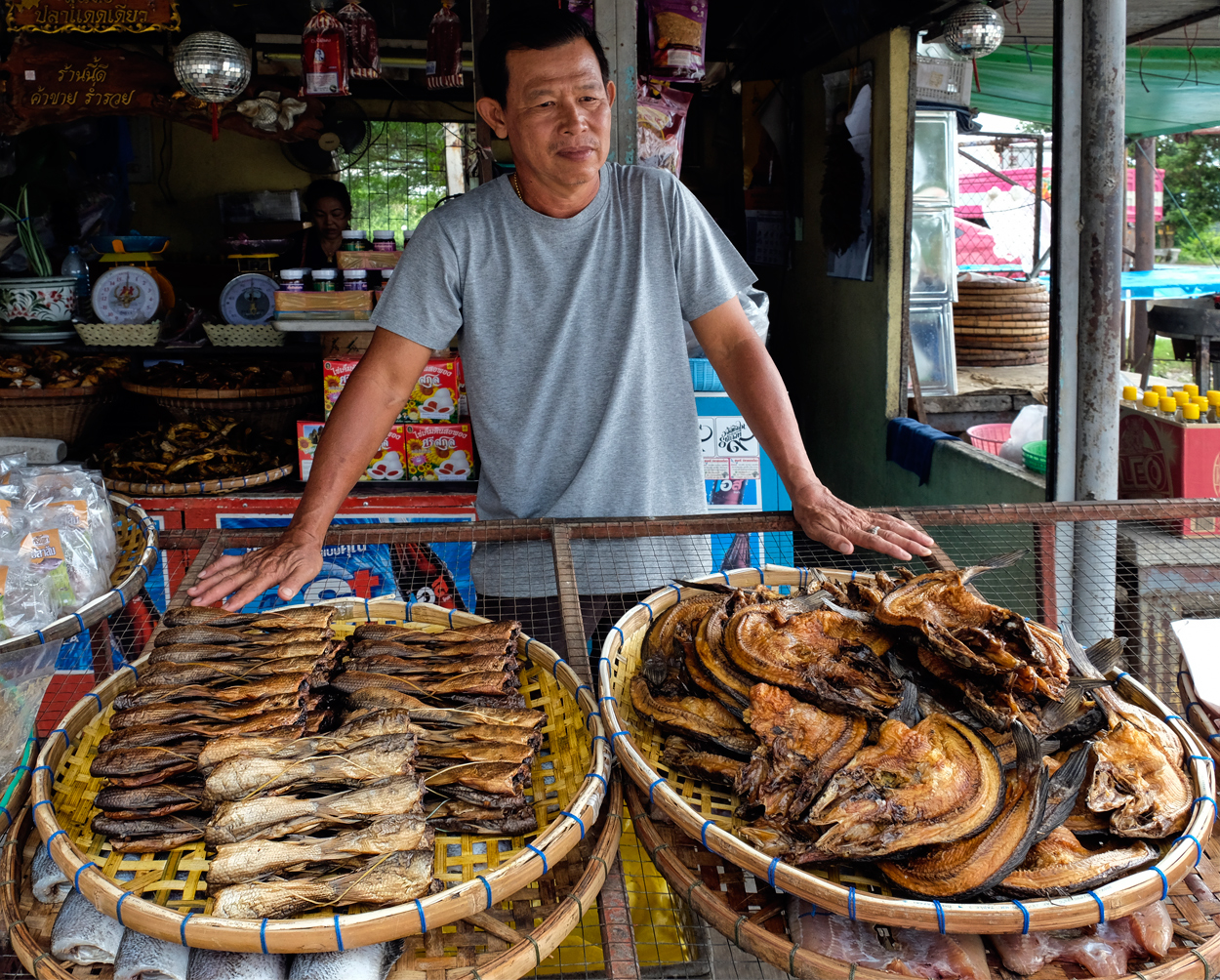 The fish hawker and his beautifully arranged fish.
The fish hawker and his beautifully arranged fish.
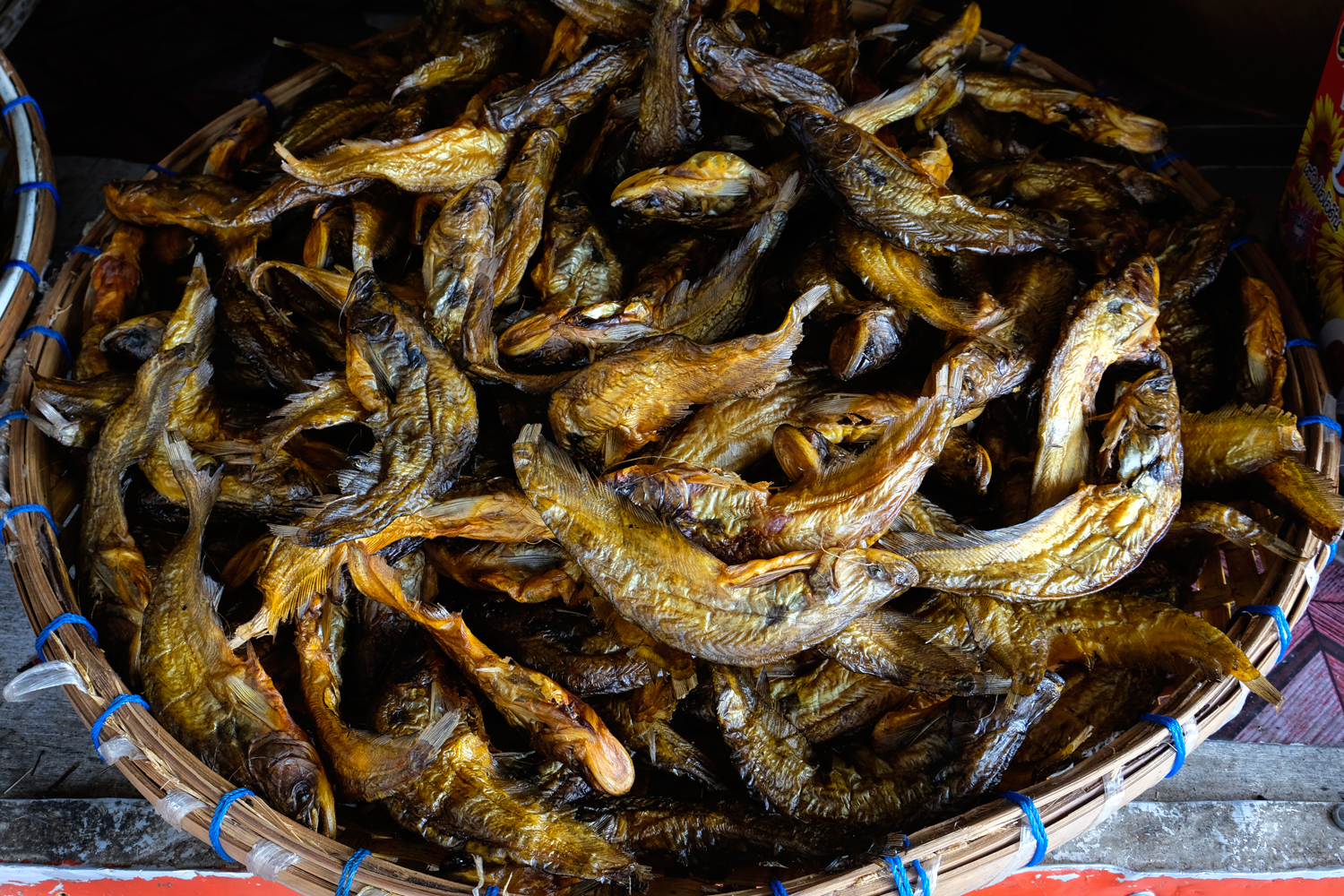 The colors and arrangement oft these dried fish were captivating.
The colors and arrangement oft these dried fish were captivating.
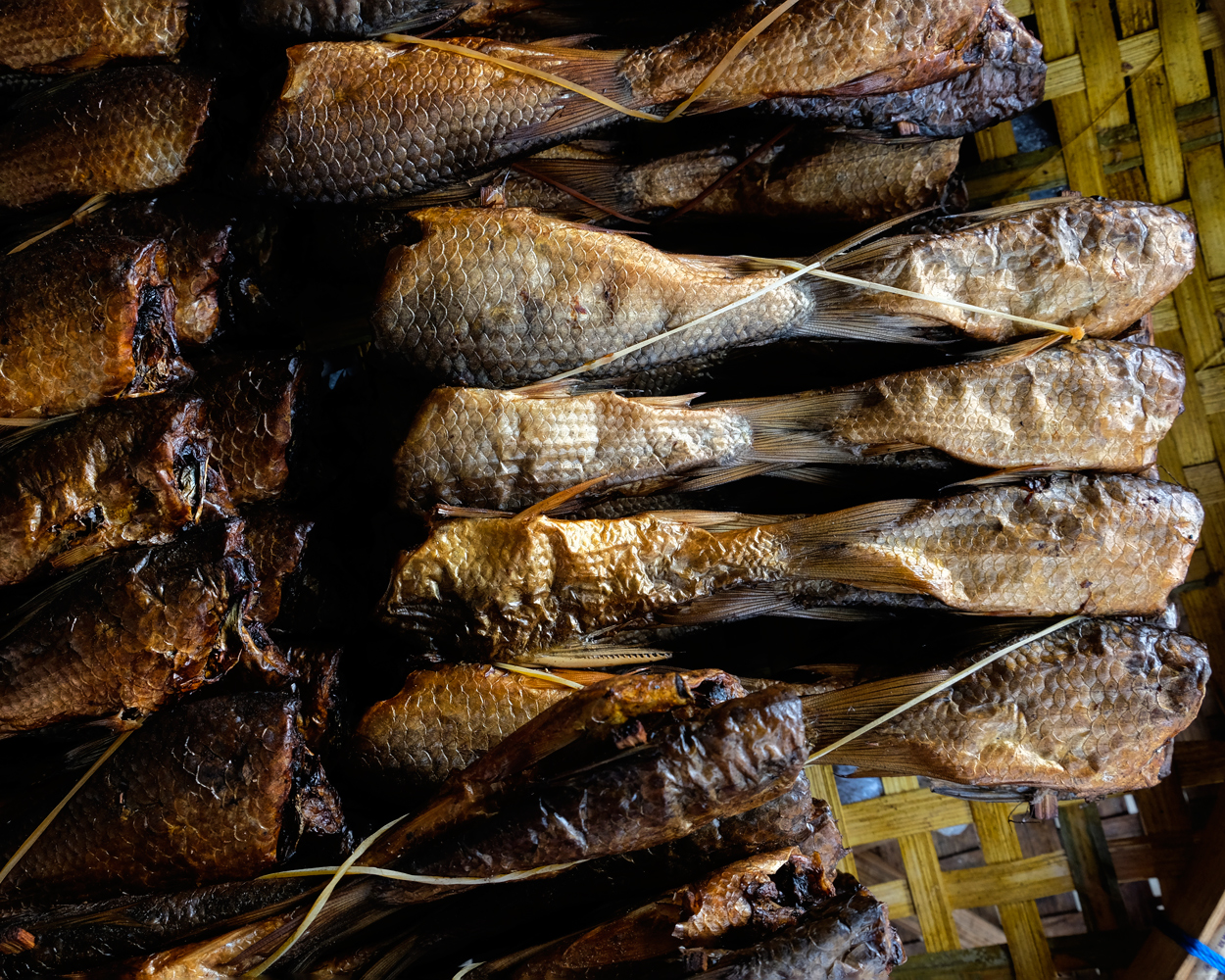 Good in soups and salads.
Good in soups and salads.
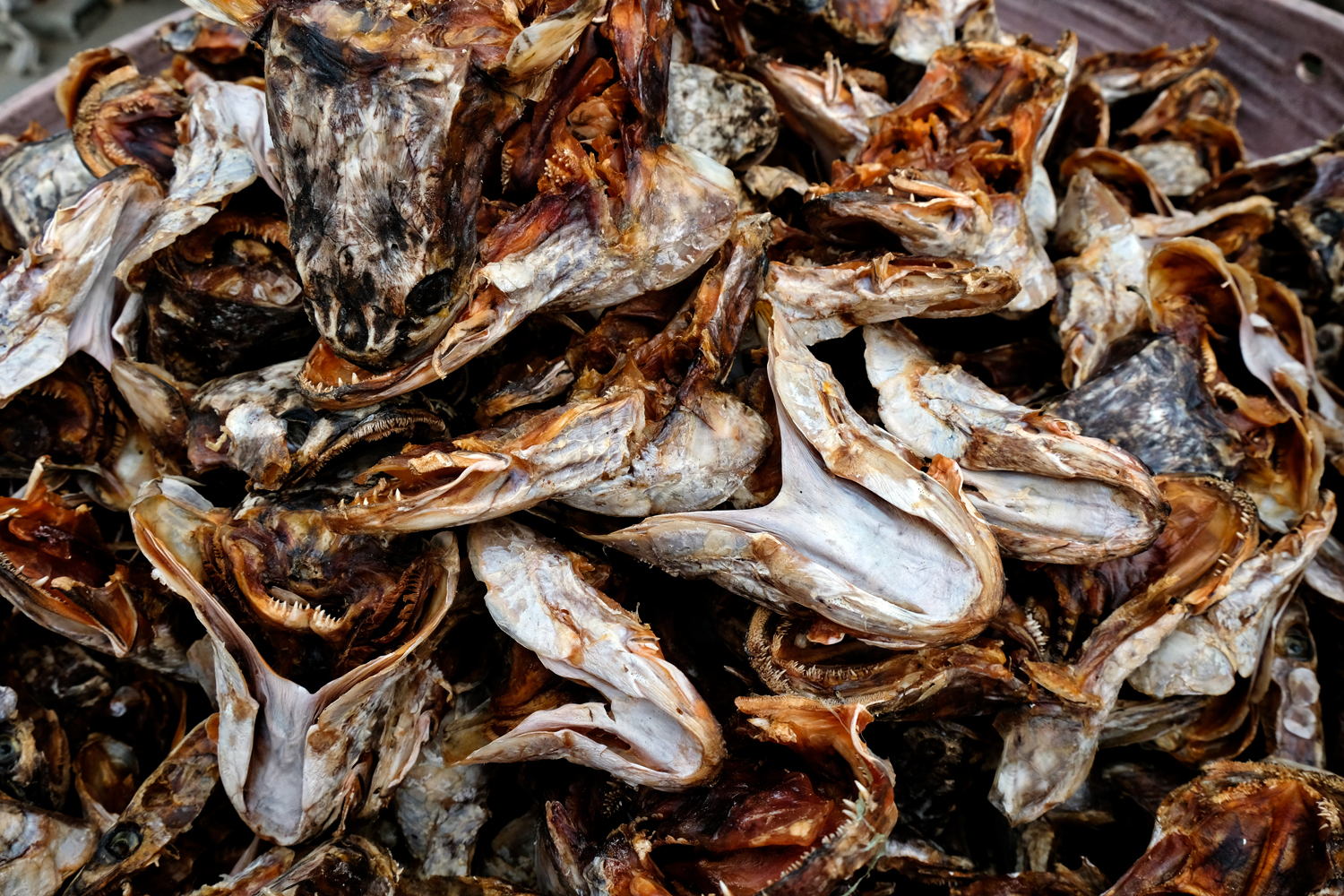 A heap of dried fish heads . . . for making fish head soup!
A heap of dried fish heads . . . for making fish head soup!
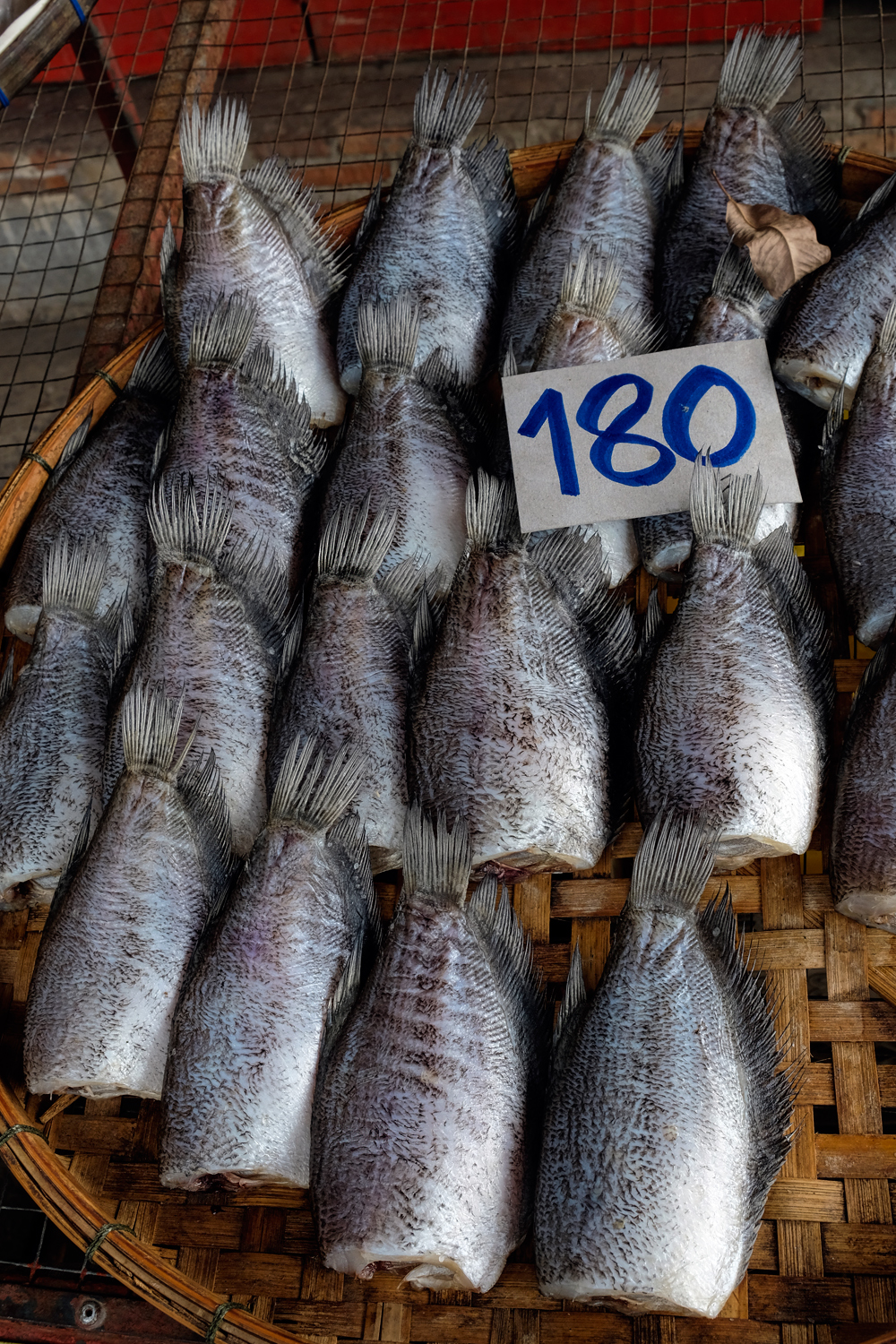 There were also some fresh fish for sale as well.
There were also some fresh fish for sale as well.
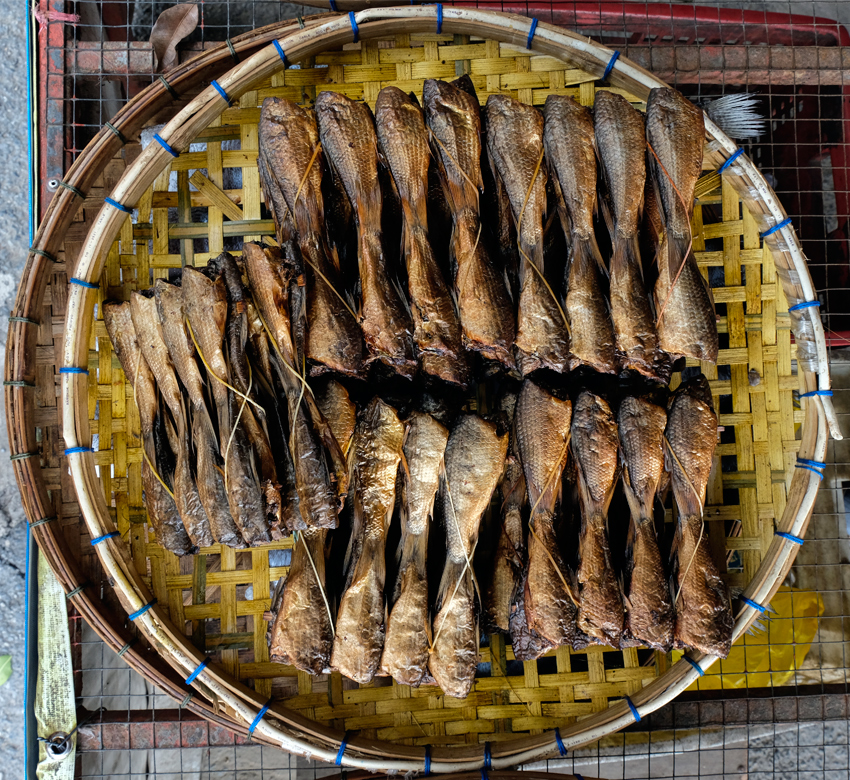 Drying fish on the round baskets.
Drying fish on the round baskets.
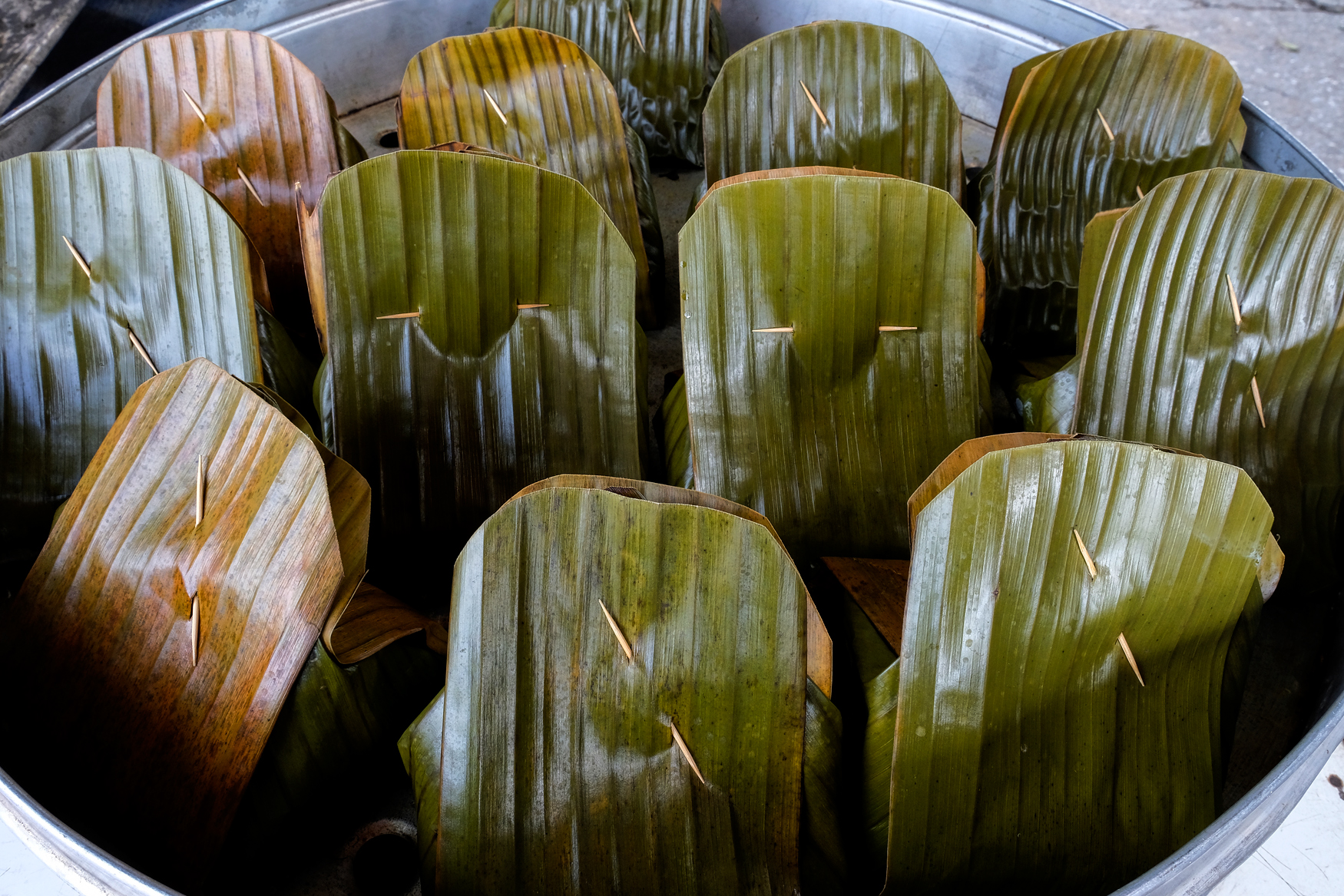 These are rice treats with either fish, beans, or sweets wrapped in leaves. We didn't buy any fish or rice treats . . . and headed up the rural road toward Lopburi.
These are rice treats with either fish, beans, or sweets wrapped in leaves. We didn't buy any fish or rice treats . . . and headed up the rural road toward Lopburi.
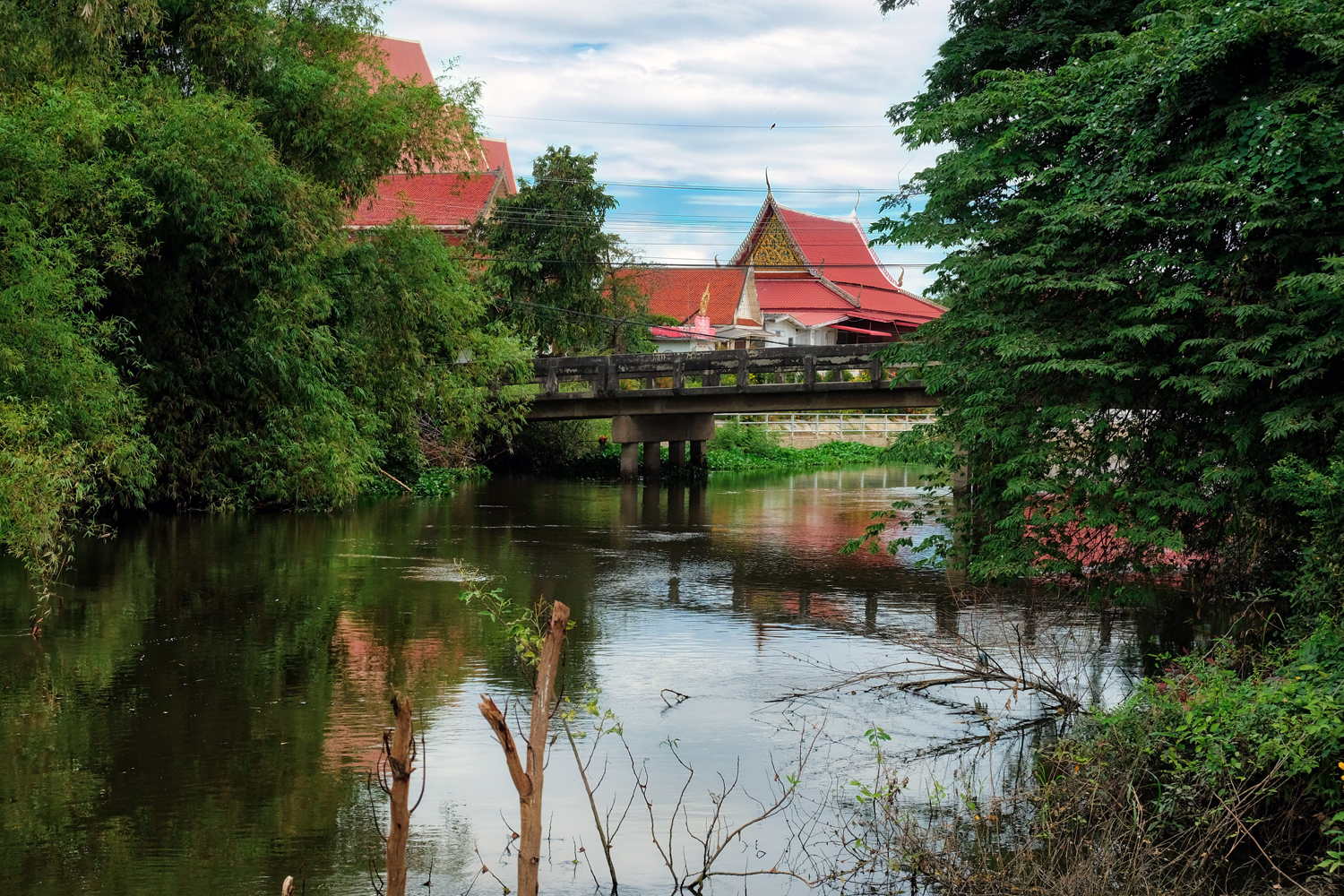 We left Bangkok (Minburi) around 6:30 am, loaded a general Lopburi address into the GPS, and headed up the big highway for the hour and a half drive. When we got a few miles outside of Lopburi, we left the highway for the small roads . . . and found several wonderful small Buddhist Wats.
We left Bangkok (Minburi) around 6:30 am, loaded a general Lopburi address into the GPS, and headed up the big highway for the hour and a half drive. When we got a few miles outside of Lopburi, we left the highway for the small roads . . . and found several wonderful small Buddhist Wats.
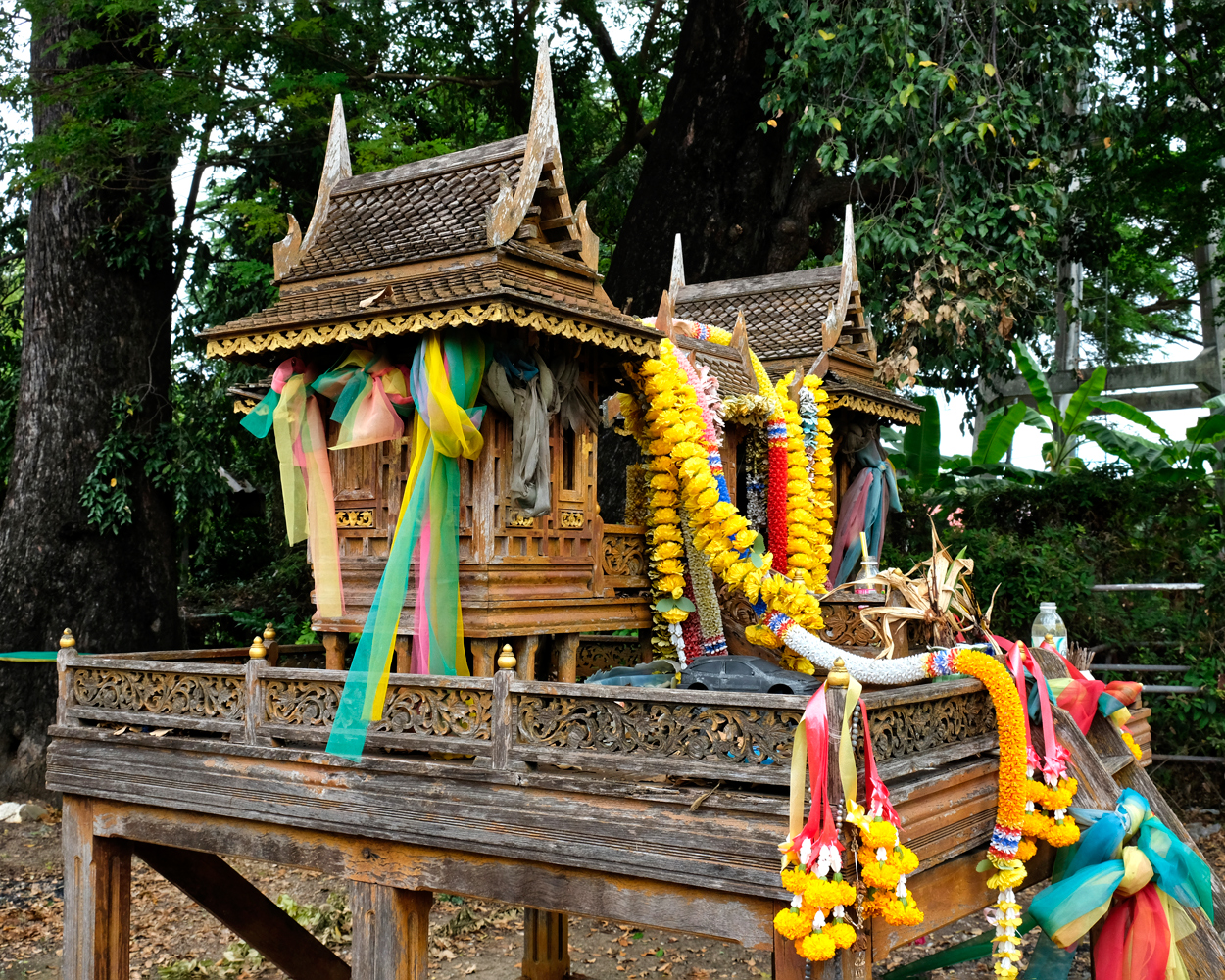 Right off a small road to Lopburi we found an ancient Wat . . . with a beautiful spirit house.
Right off a small road to Lopburi we found an ancient Wat . . . with a beautiful spirit house.
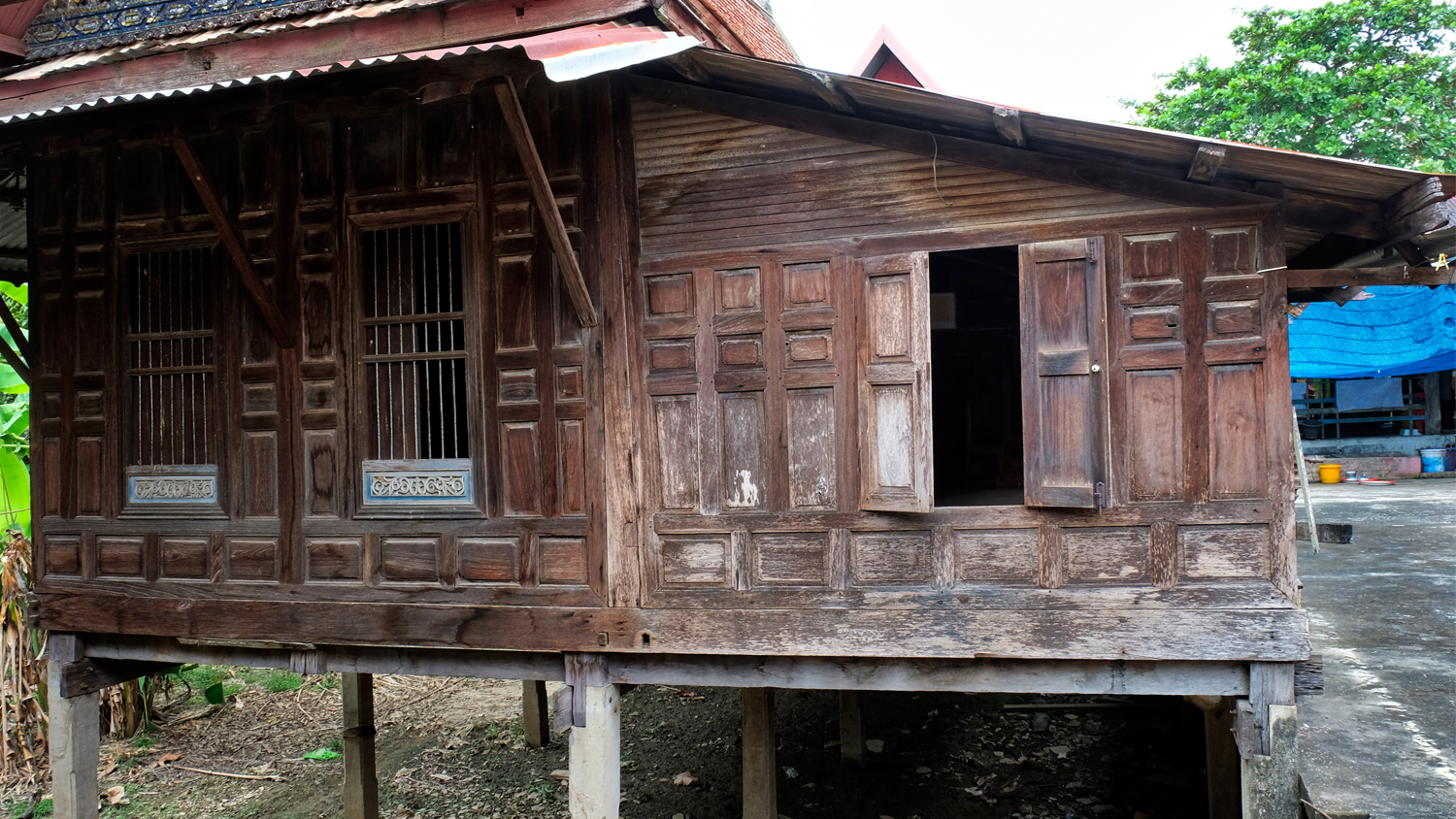 Monks quarters.
Monks quarters.
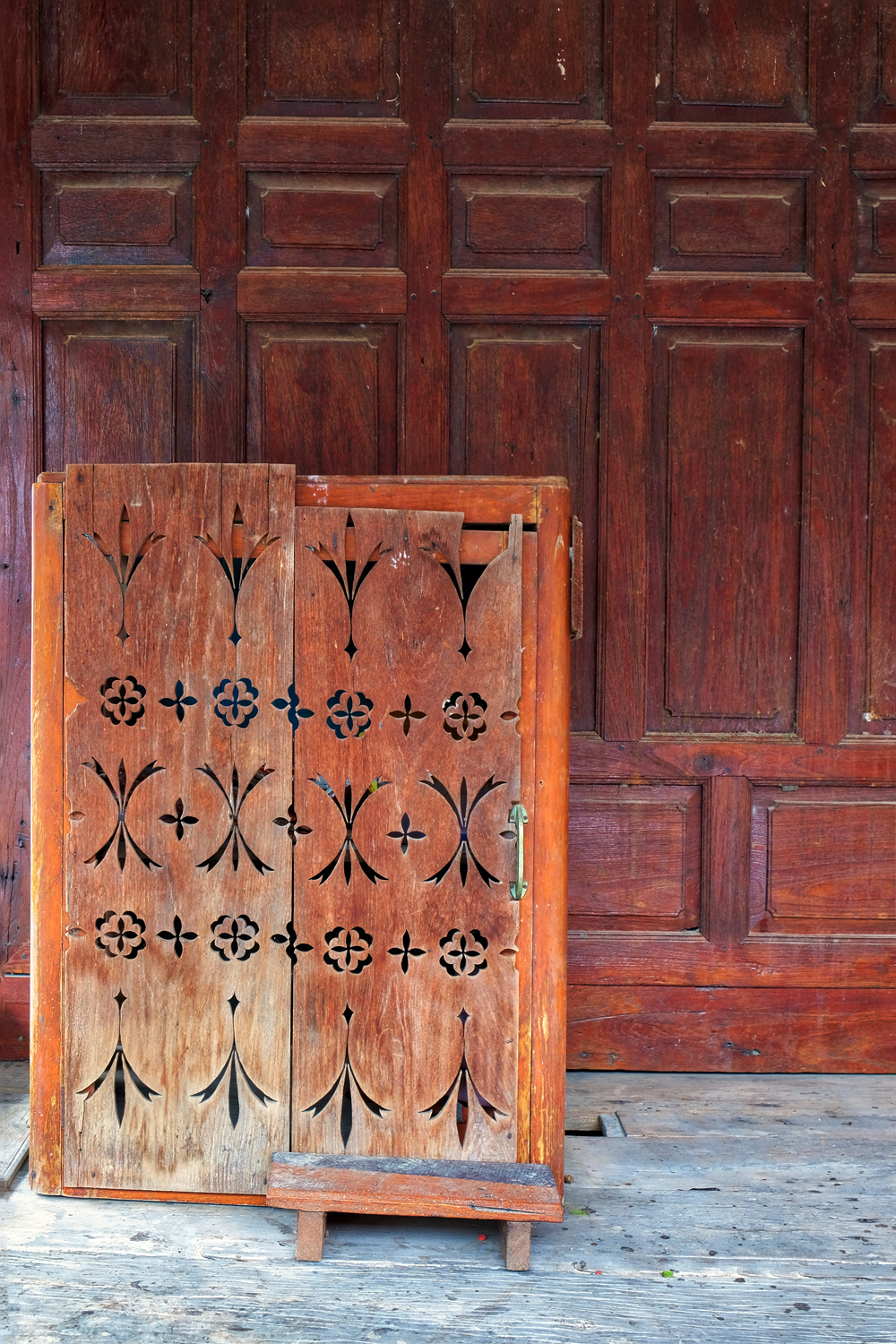 I enjoy walking around old Wats just to see what can be seen. Here, a still life portrait of items arranged in the space of a monks house porch. I love the makeshift, slapped together feel of the shoe box . . . no concern for aesthetic geometry . . . yet beauty was achieved.
I enjoy walking around old Wats just to see what can be seen. Here, a still life portrait of items arranged in the space of a monks house porch. I love the makeshift, slapped together feel of the shoe box . . . no concern for aesthetic geometry . . . yet beauty was achieved.
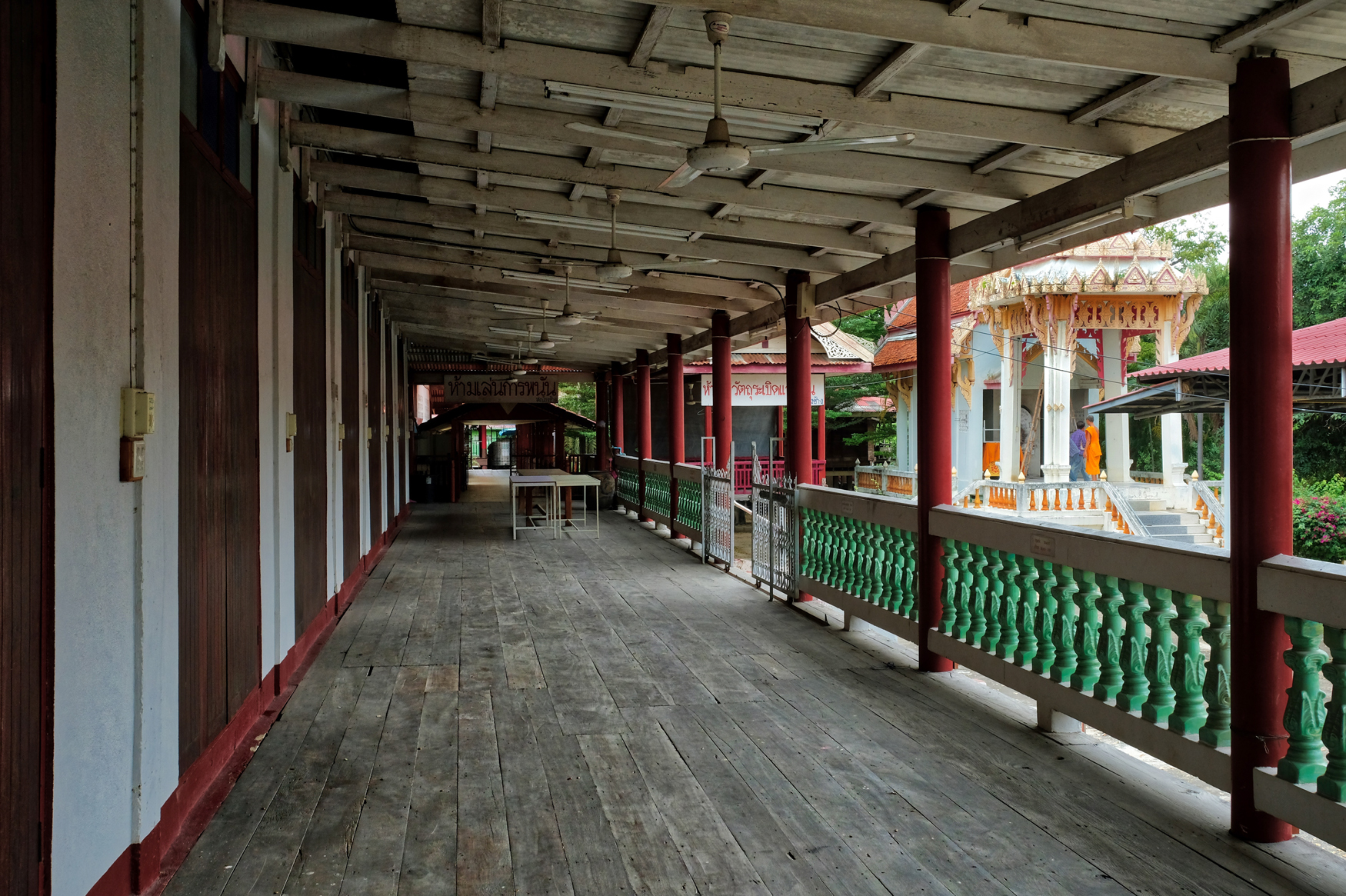 In front of a meditation hall. The crematorium can be seen at far right . . . the monks were consulting with contractors about repairs needed to the crematorium.
In front of a meditation hall. The crematorium can be seen at far right . . . the monks were consulting with contractors about repairs needed to the crematorium.
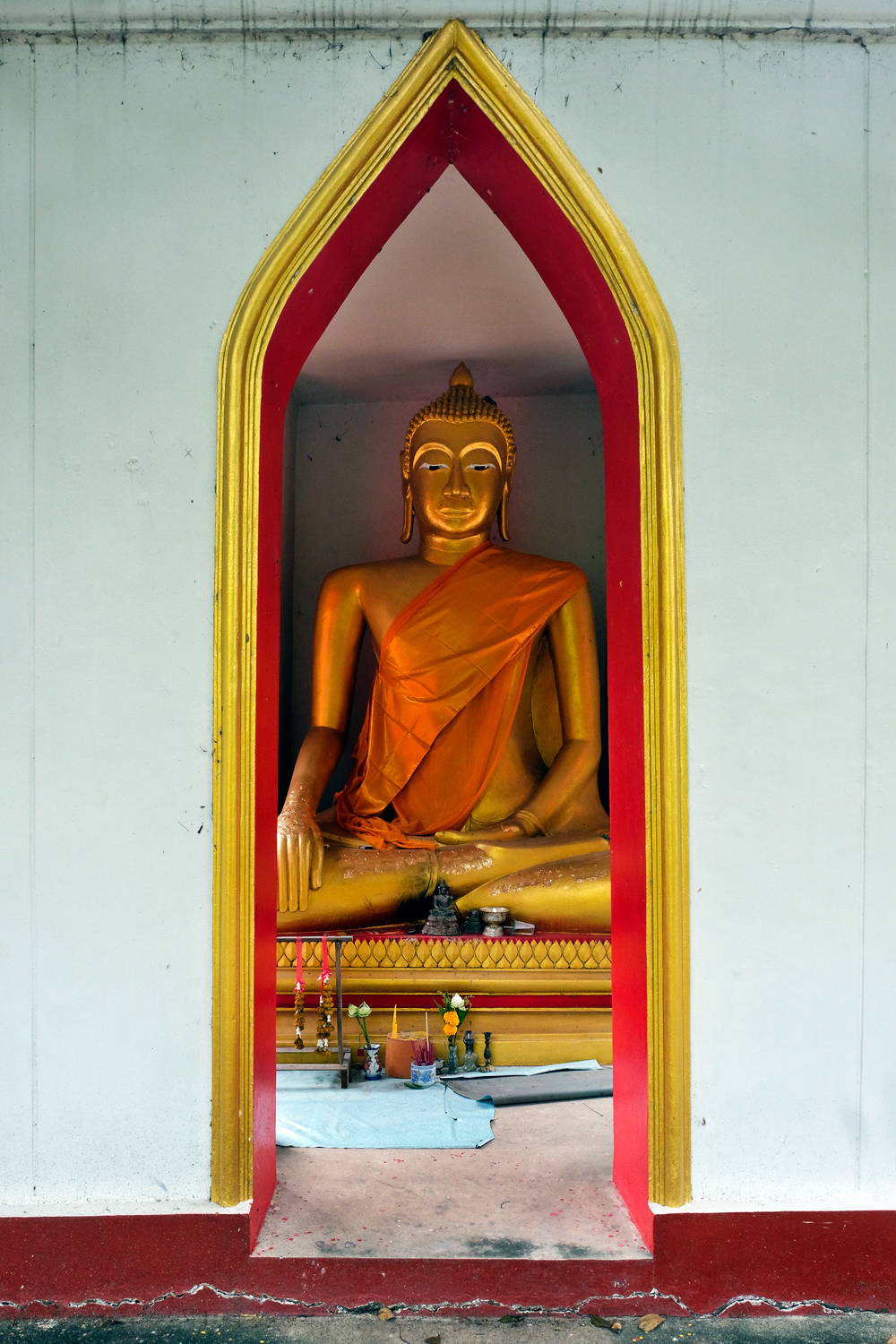 An alcove for a magnificent Buddha image.
An alcove for a magnificent Buddha image.
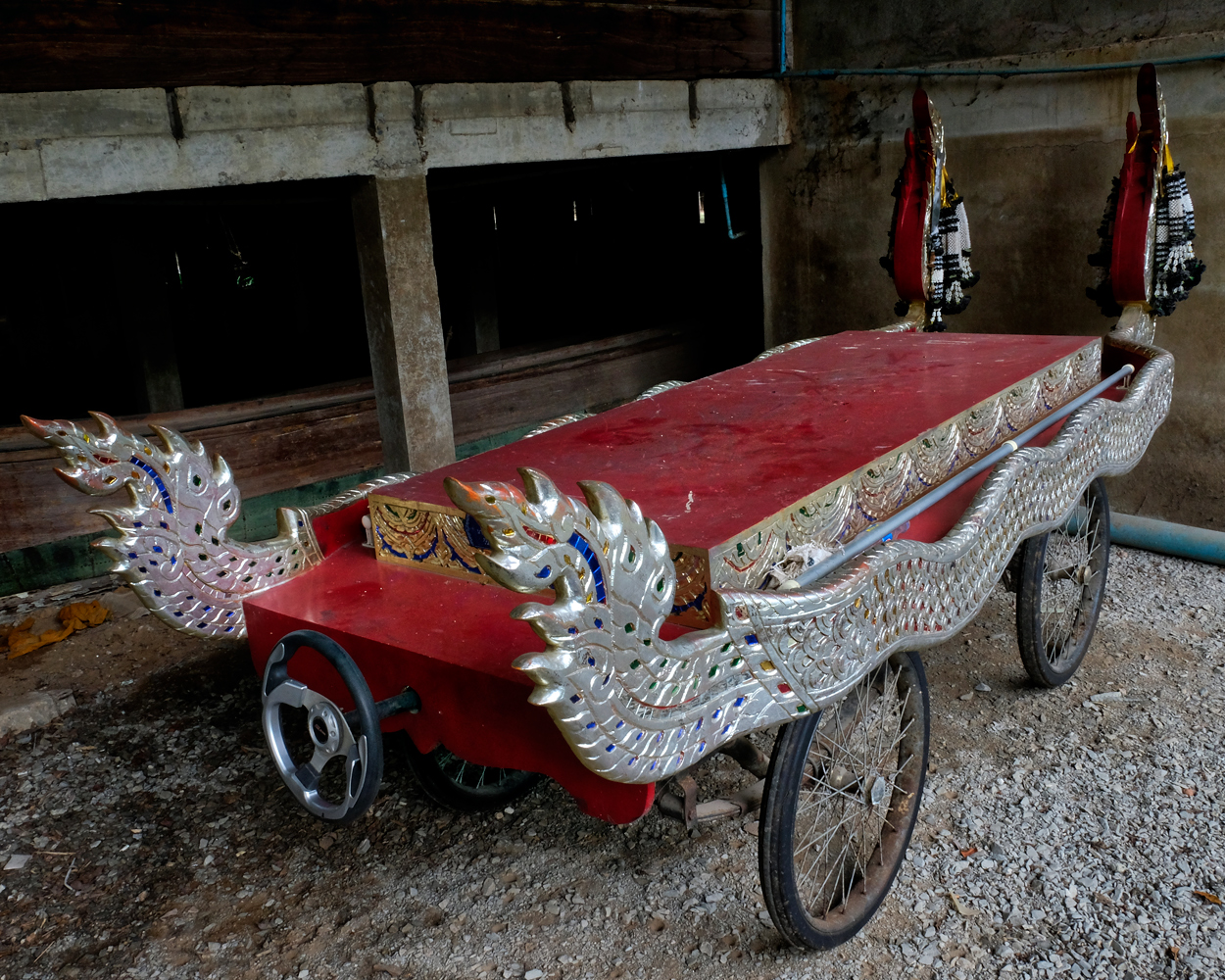 I found the steering wheel on this ceremonial cart interesting.
I found the steering wheel on this ceremonial cart interesting.
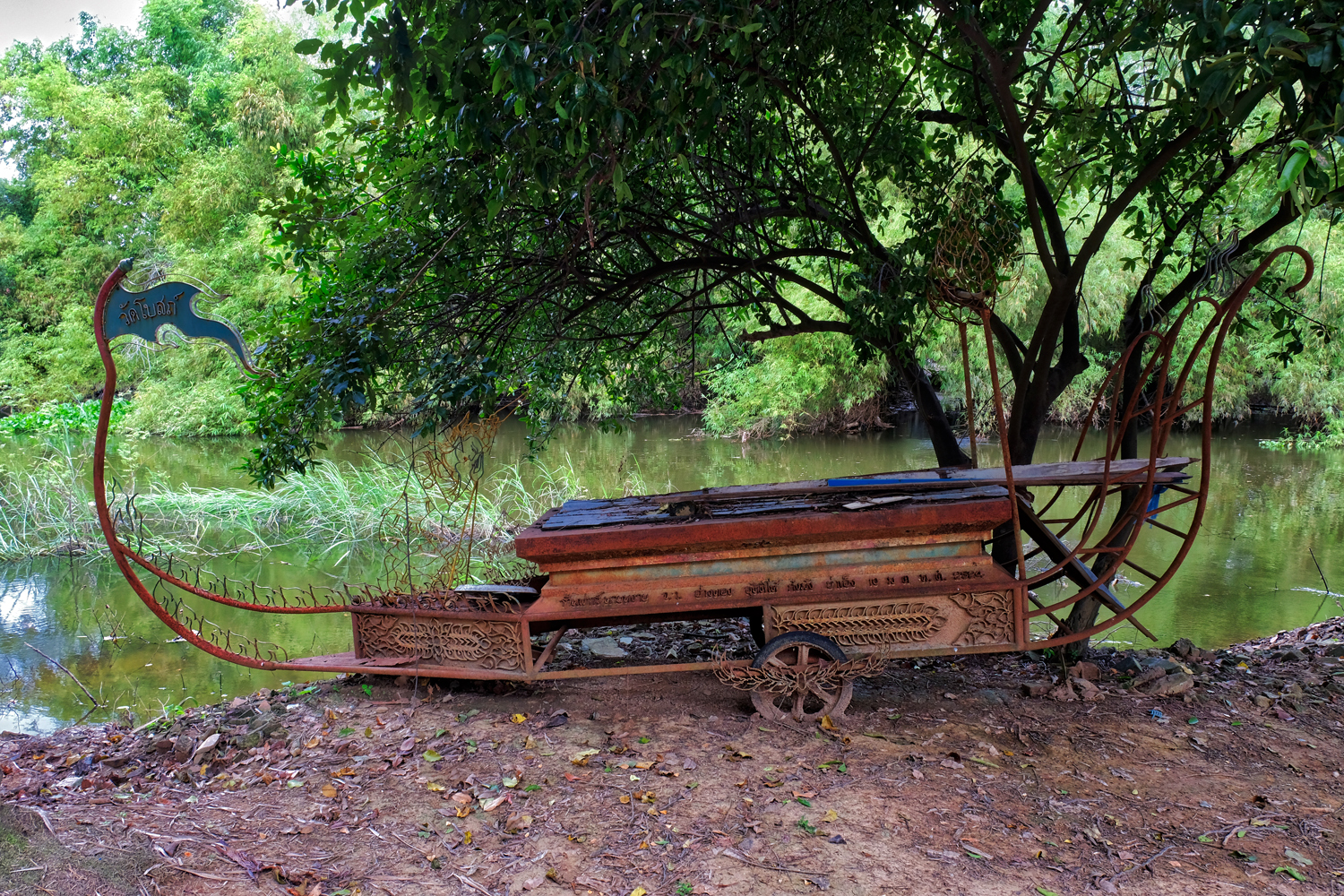 I love old unattended things. This ceremonial cart sitting beside a klong was a thing of beauty (to me).
I love old unattended things. This ceremonial cart sitting beside a klong was a thing of beauty (to me).
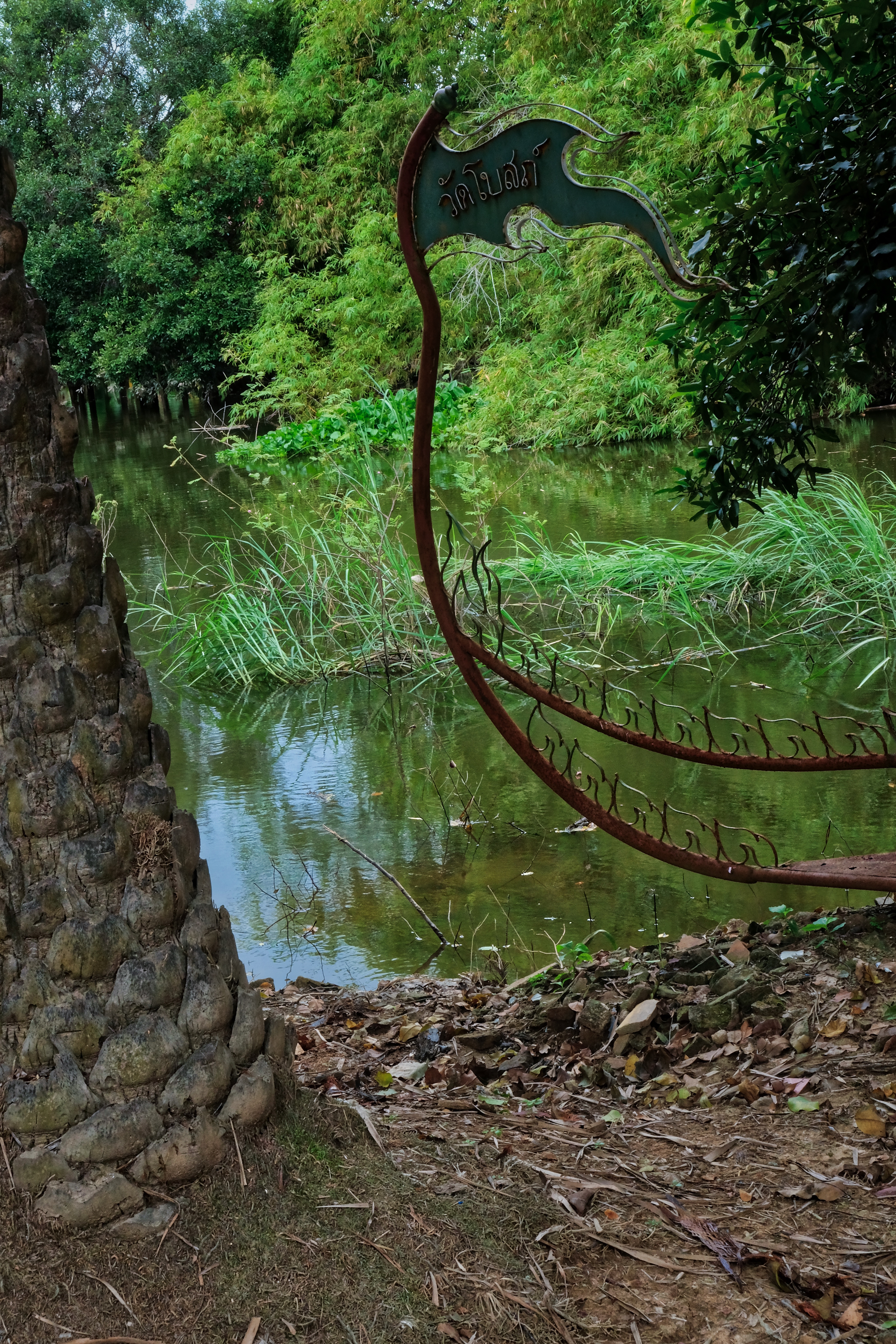 The old ceremonial cart by the klong.
The old ceremonial cart by the klong.
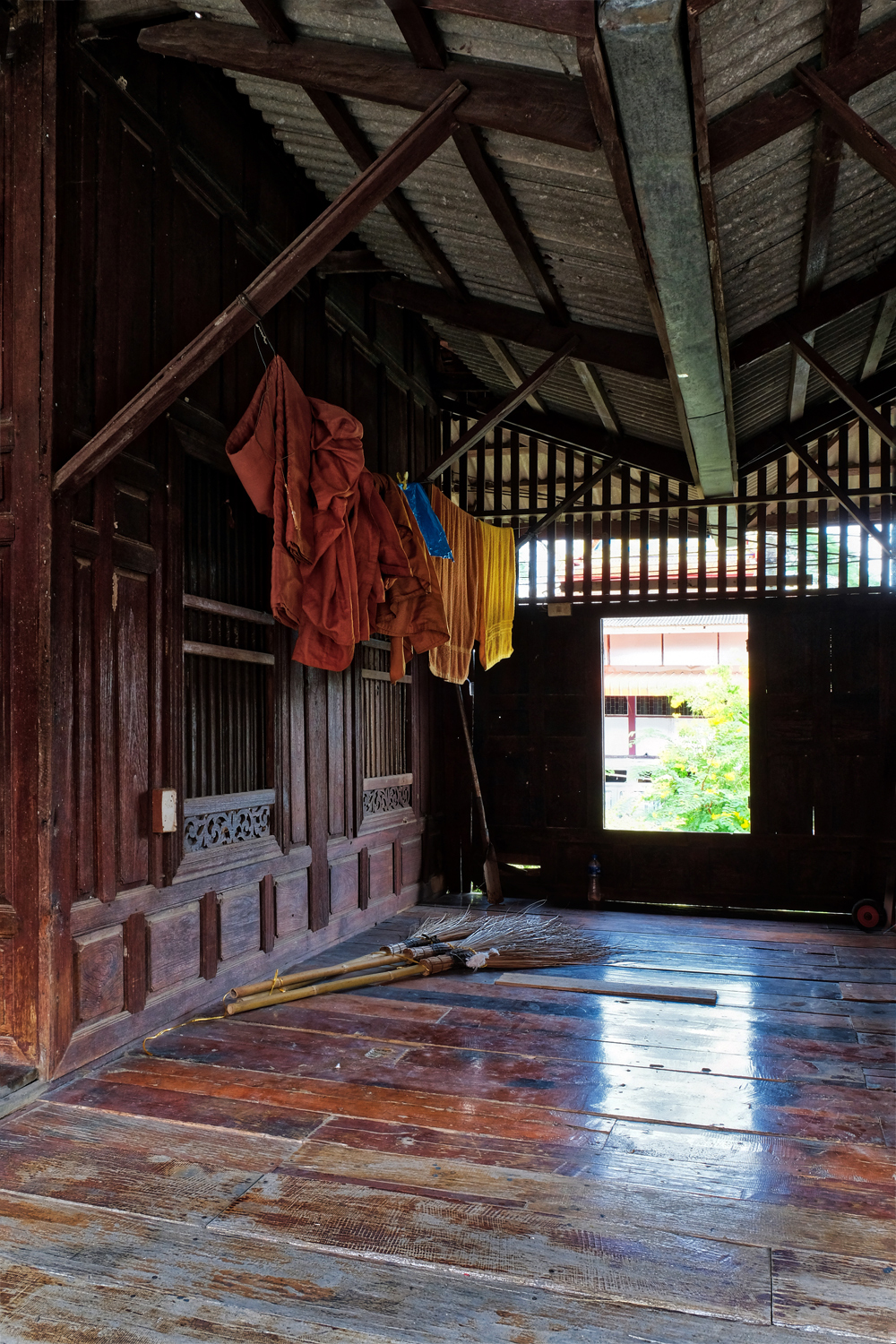 The old wooden Wats have so many beautiful scenes to photograph.
The old wooden Wats have so many beautiful scenes to photograph.
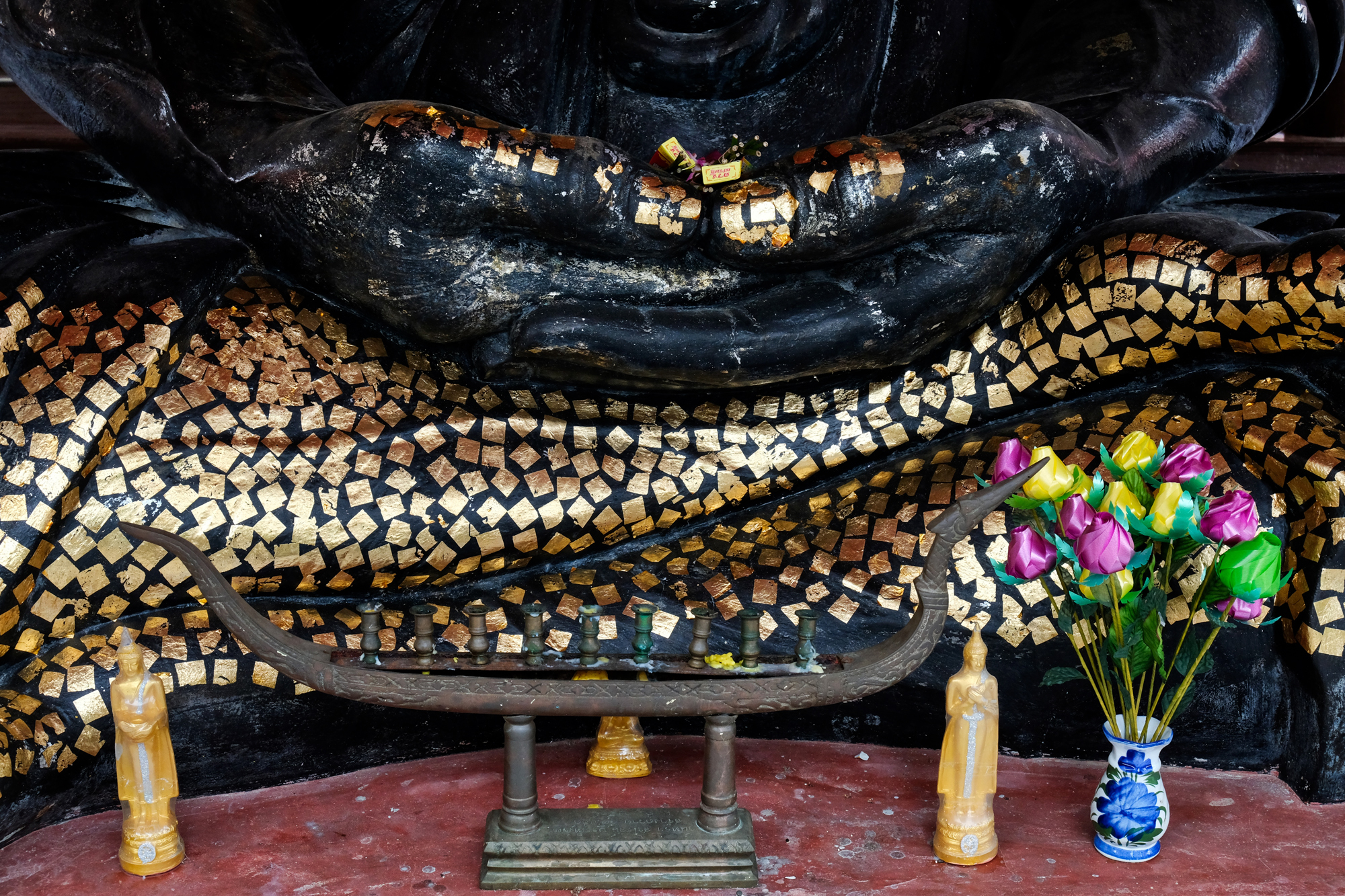 The old Wat held a beautiful black Buddha. I am always interested in the devotional markings pilgrims have left behind.
The old Wat held a beautiful black Buddha. I am always interested in the devotional markings pilgrims have left behind.
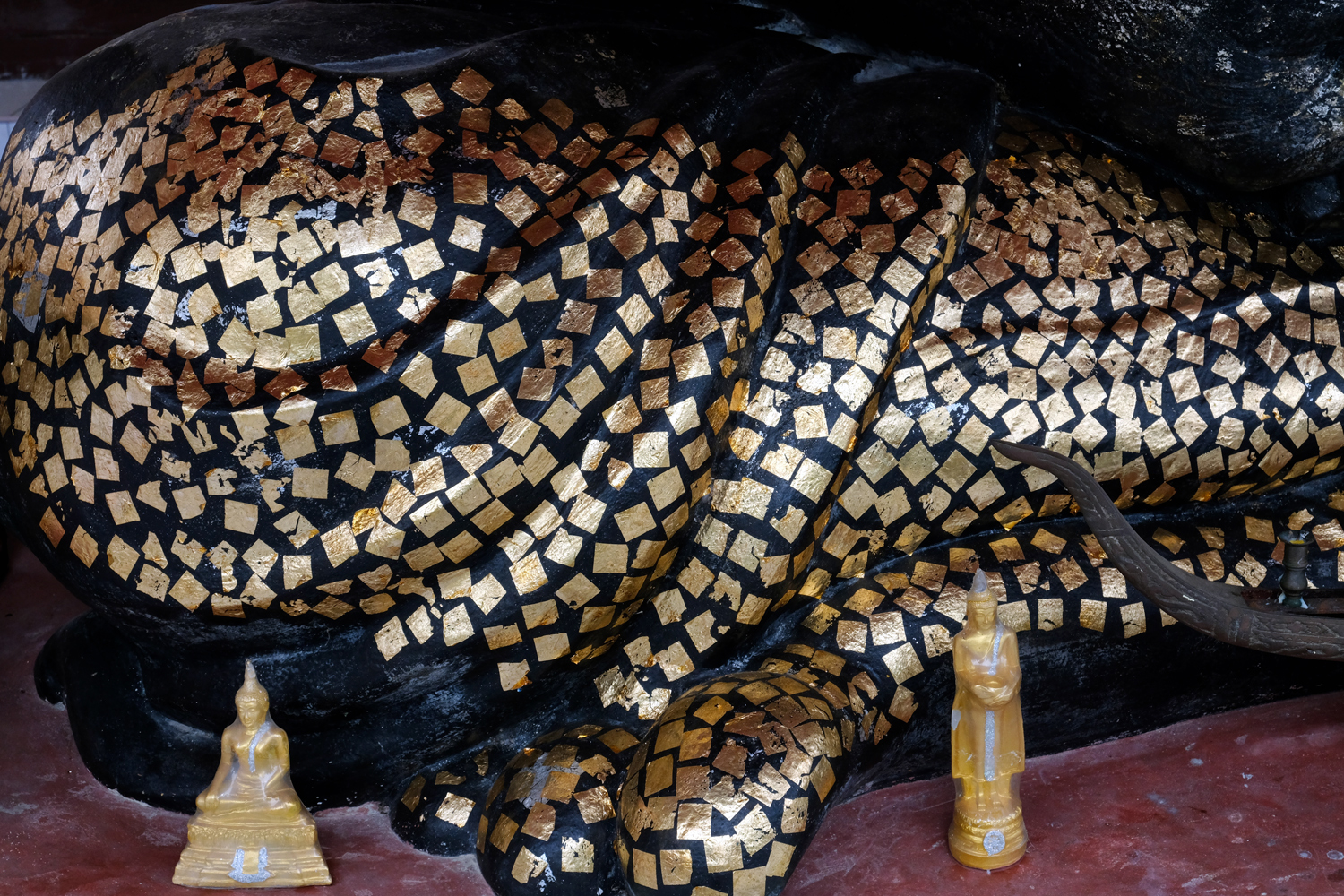 The pattern of the gold leaf applications is fantastic.
The pattern of the gold leaf applications is fantastic.
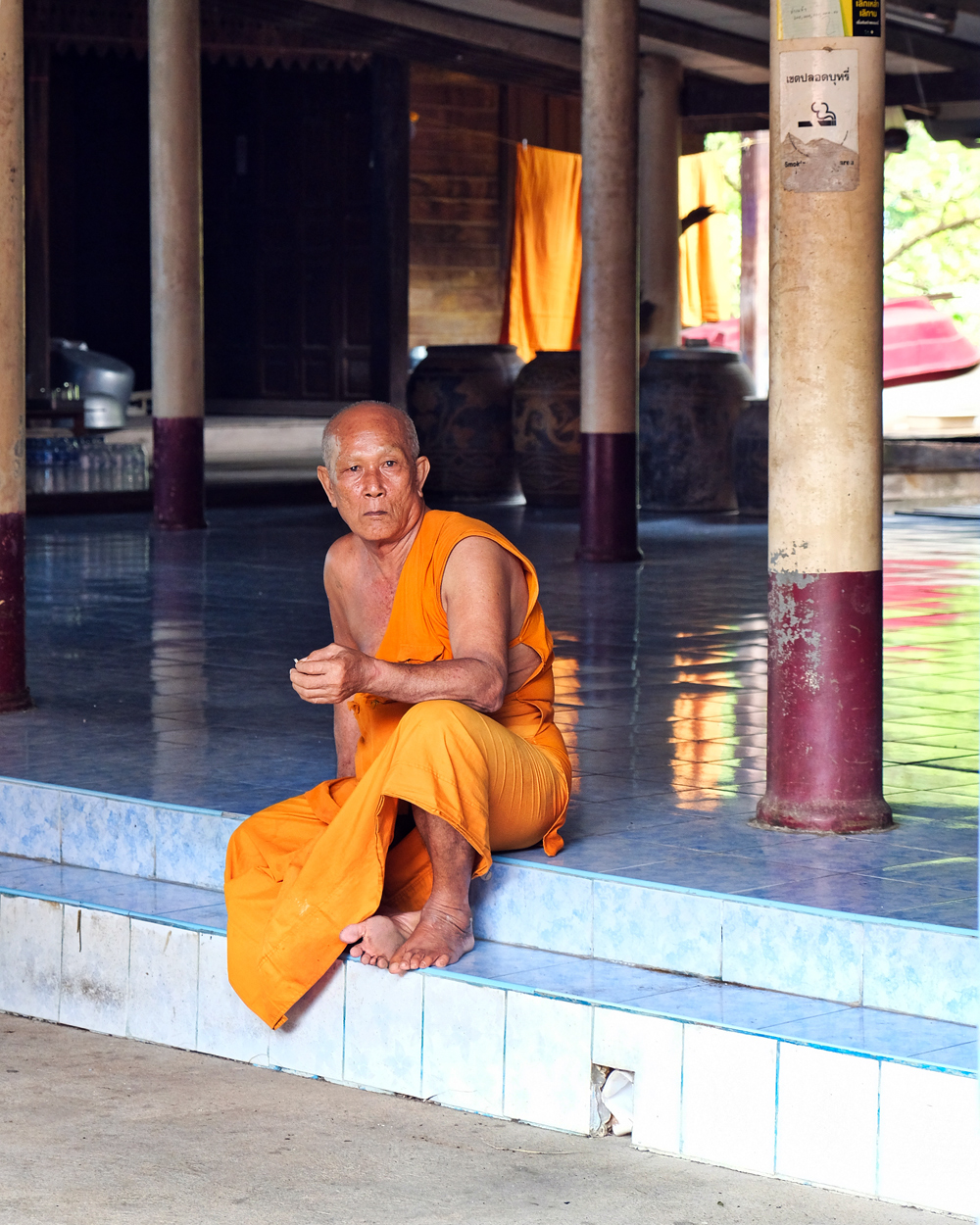 We saw only a few monks out and about. This monk stepped out for a cigarette. I asked if I could photograph him and he nodded OK.
We saw only a few monks out and about. This monk stepped out for a cigarette. I asked if I could photograph him and he nodded OK.
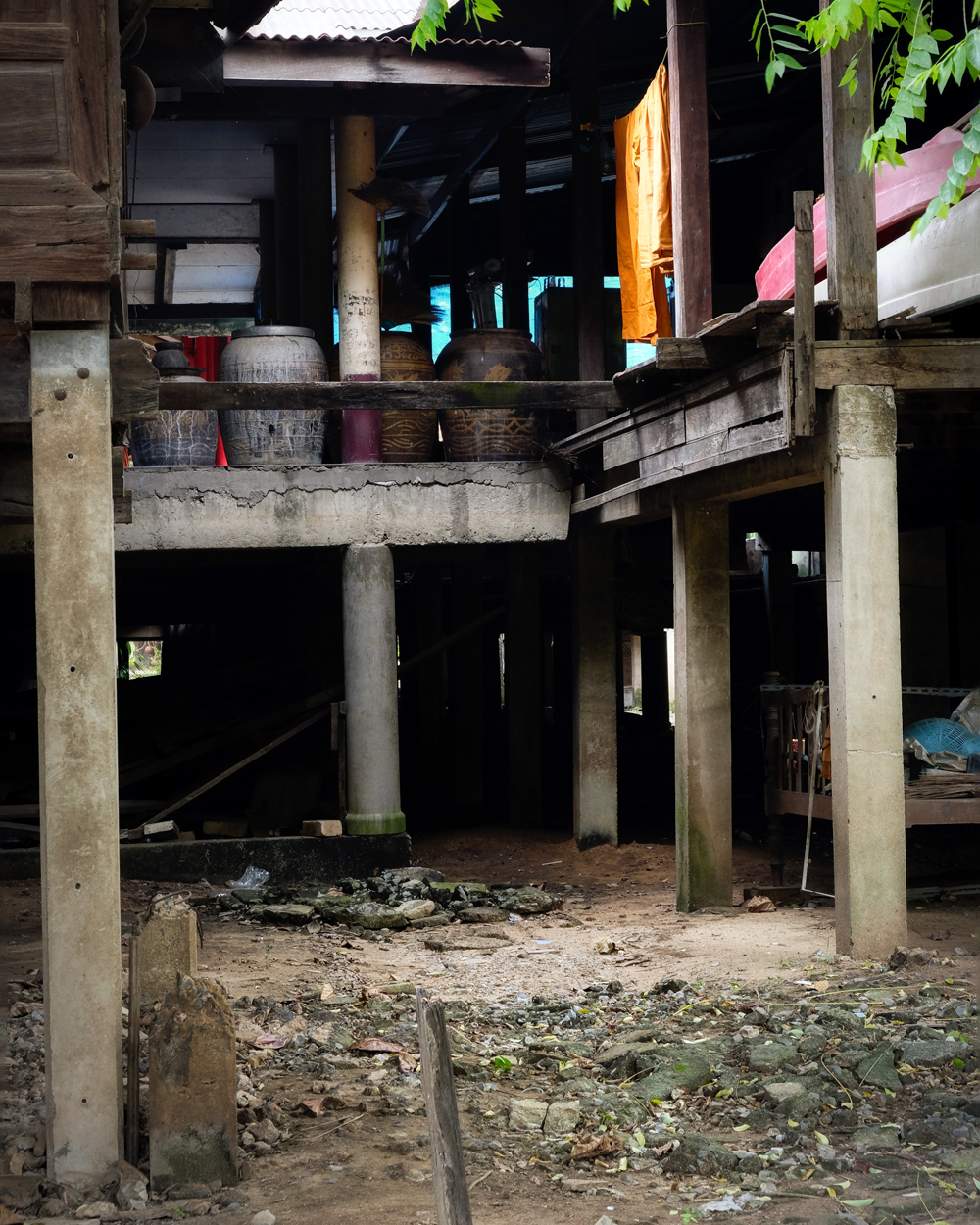 Around he back of the monk's quarters . . . rural Wats are sometimes disheveled like this. The monks are not there to garden, and the local people who support the Wat are busy working hard to stay alive.
Around he back of the monk's quarters . . . rural Wats are sometimes disheveled like this. The monks are not there to garden, and the local people who support the Wat are busy working hard to stay alive.
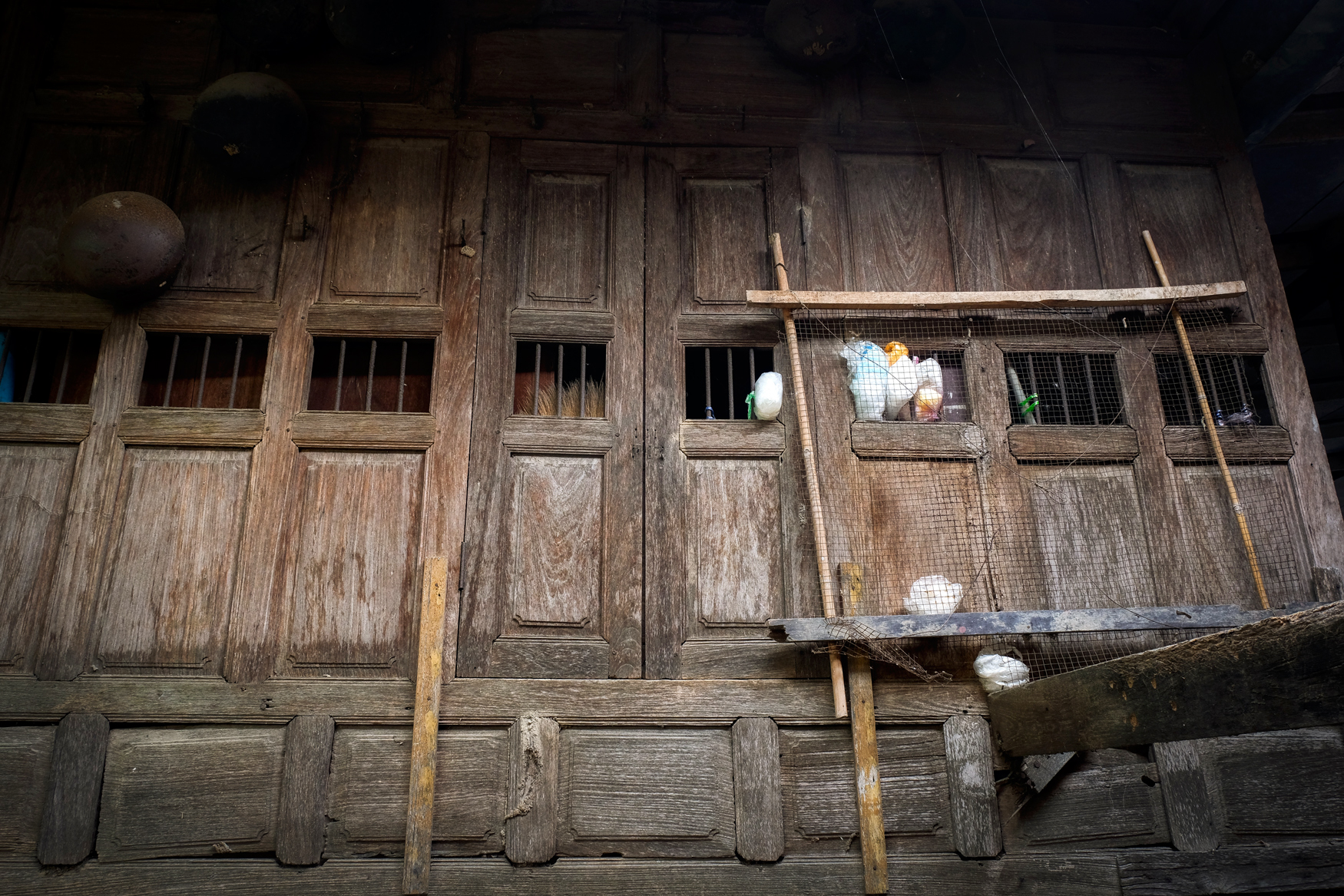 The old surfaces of the ancient monks' quarters had a marvelous patina.
The old surfaces of the ancient monks' quarters had a marvelous patina.
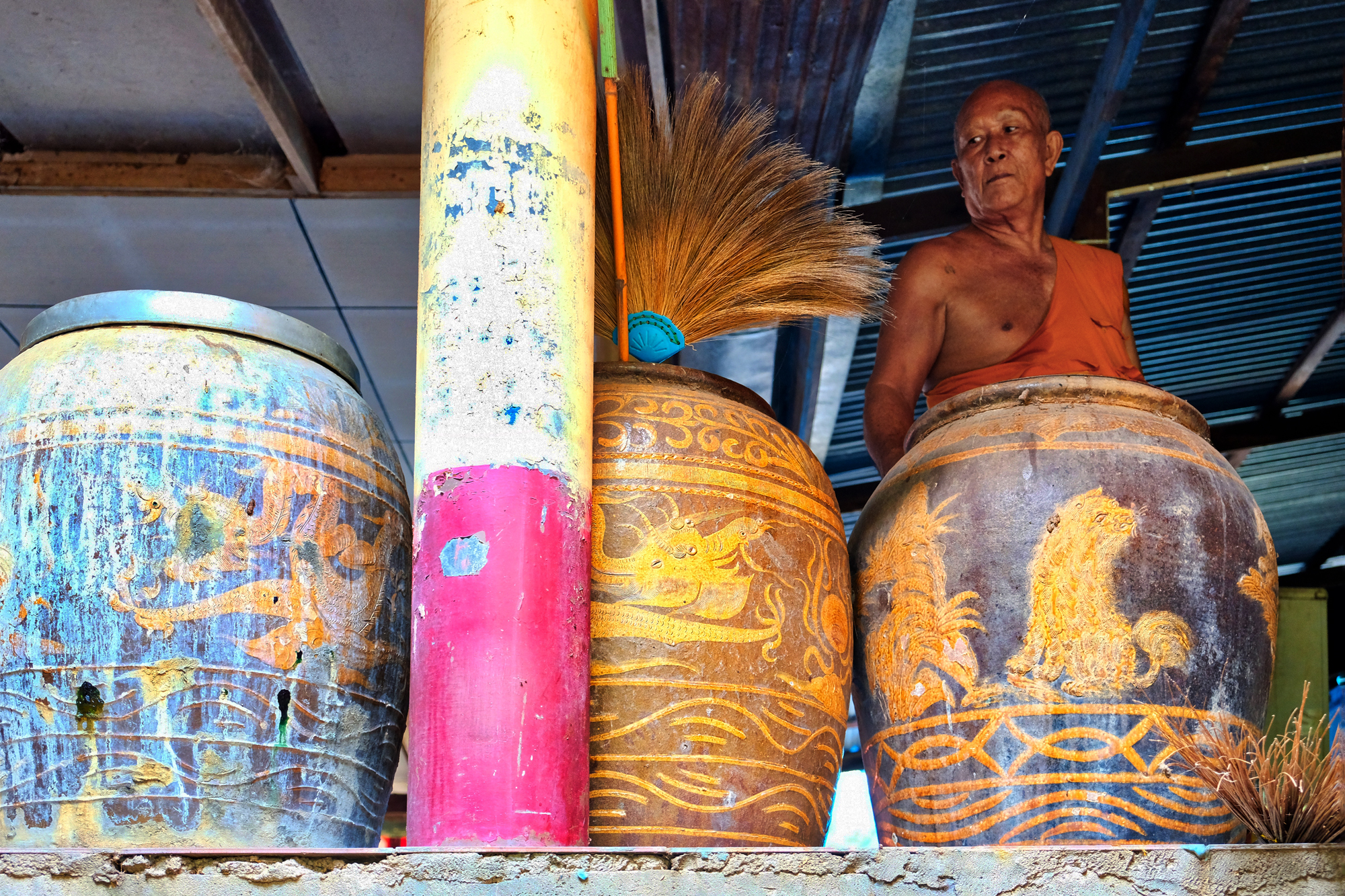 Monk and water urns.
Monk and water urns.
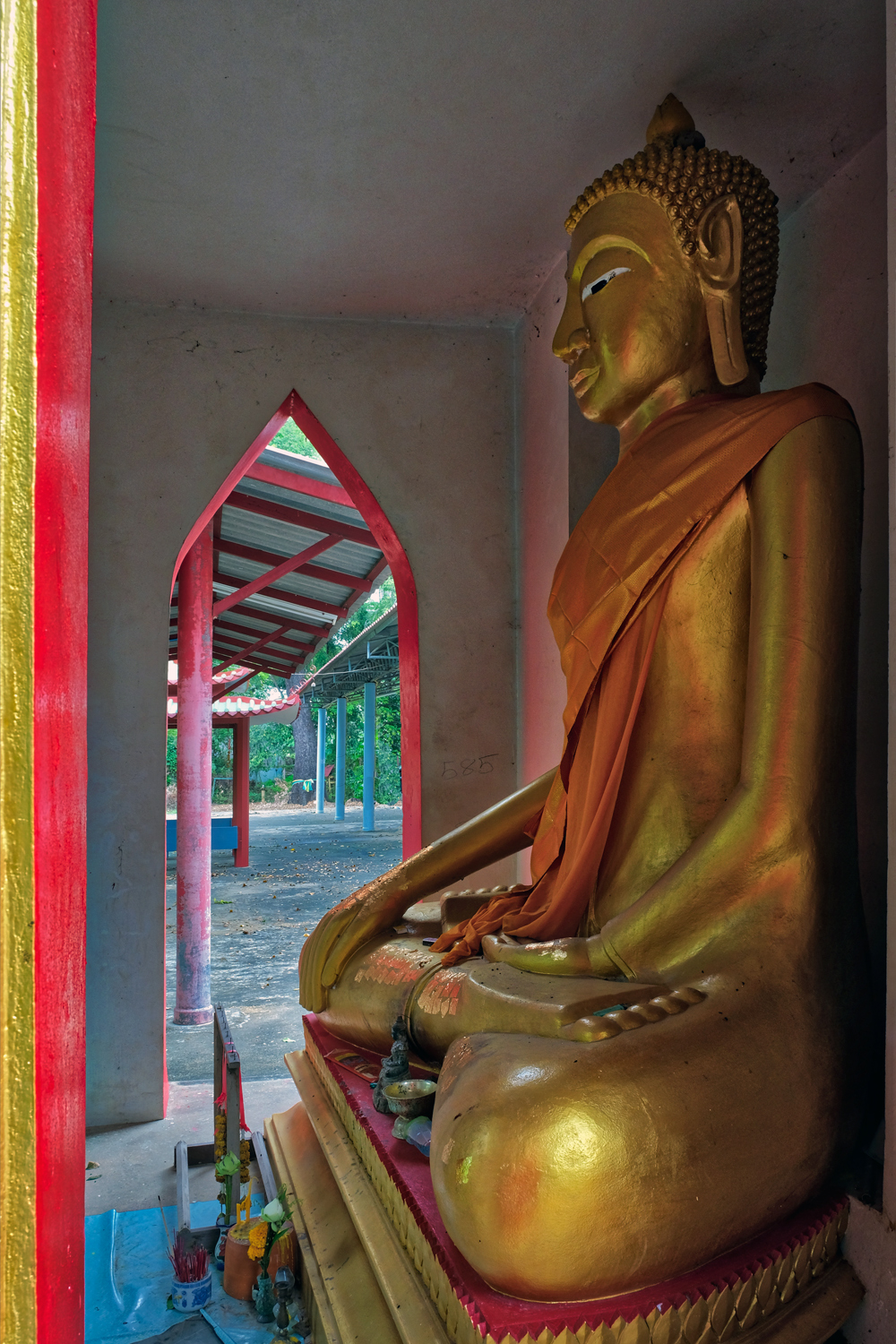 A powerful Buddha image.
A powerful Buddha image.
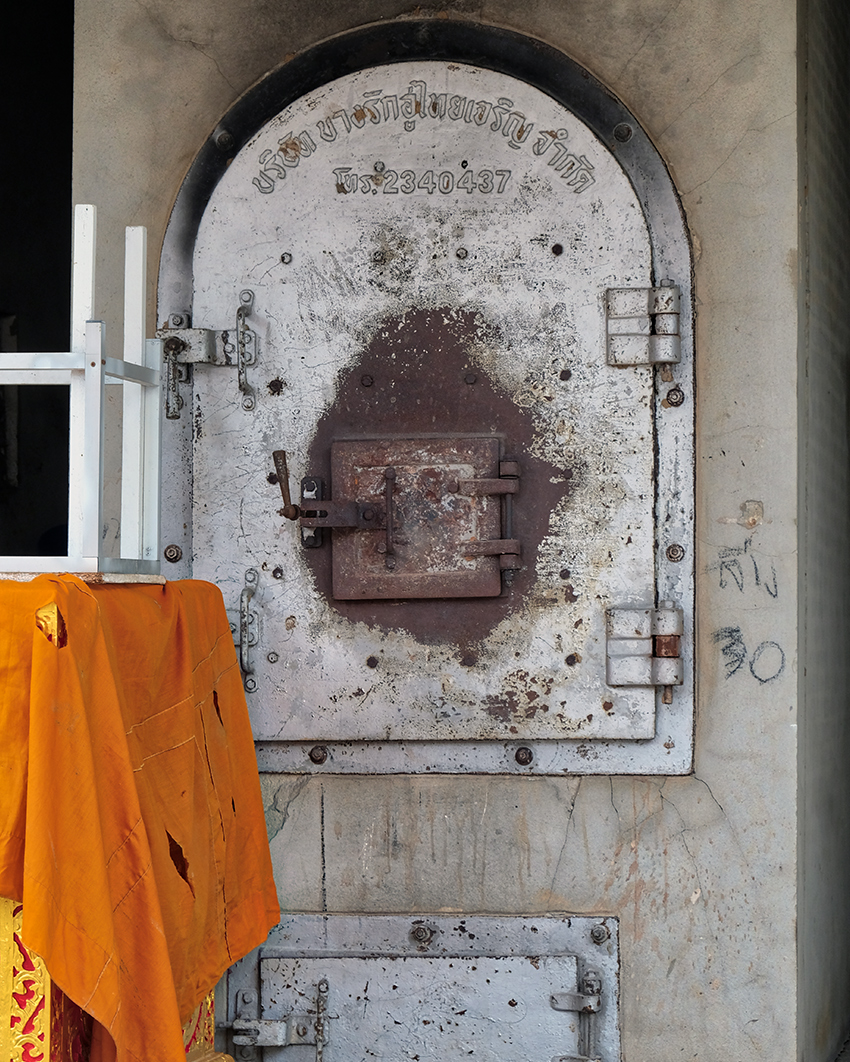 I looked one last time at my final destination . . .
I looked one last time at my final destination . . .
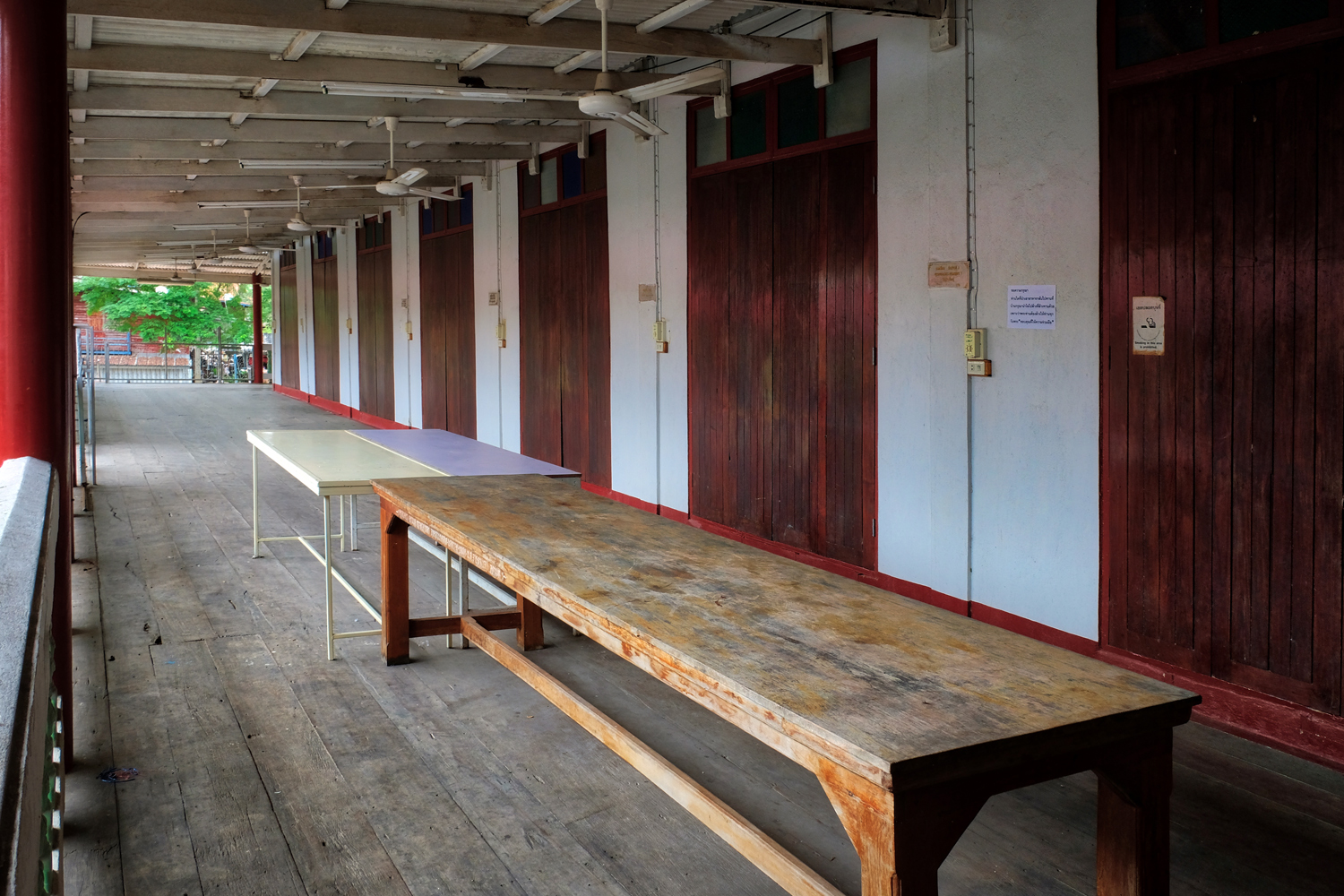 The practical side of Wat life. We left this wat and drove down a tiny rural farm road until we came to . . .
The practical side of Wat life. We left this wat and drove down a tiny rural farm road until we came to . . .
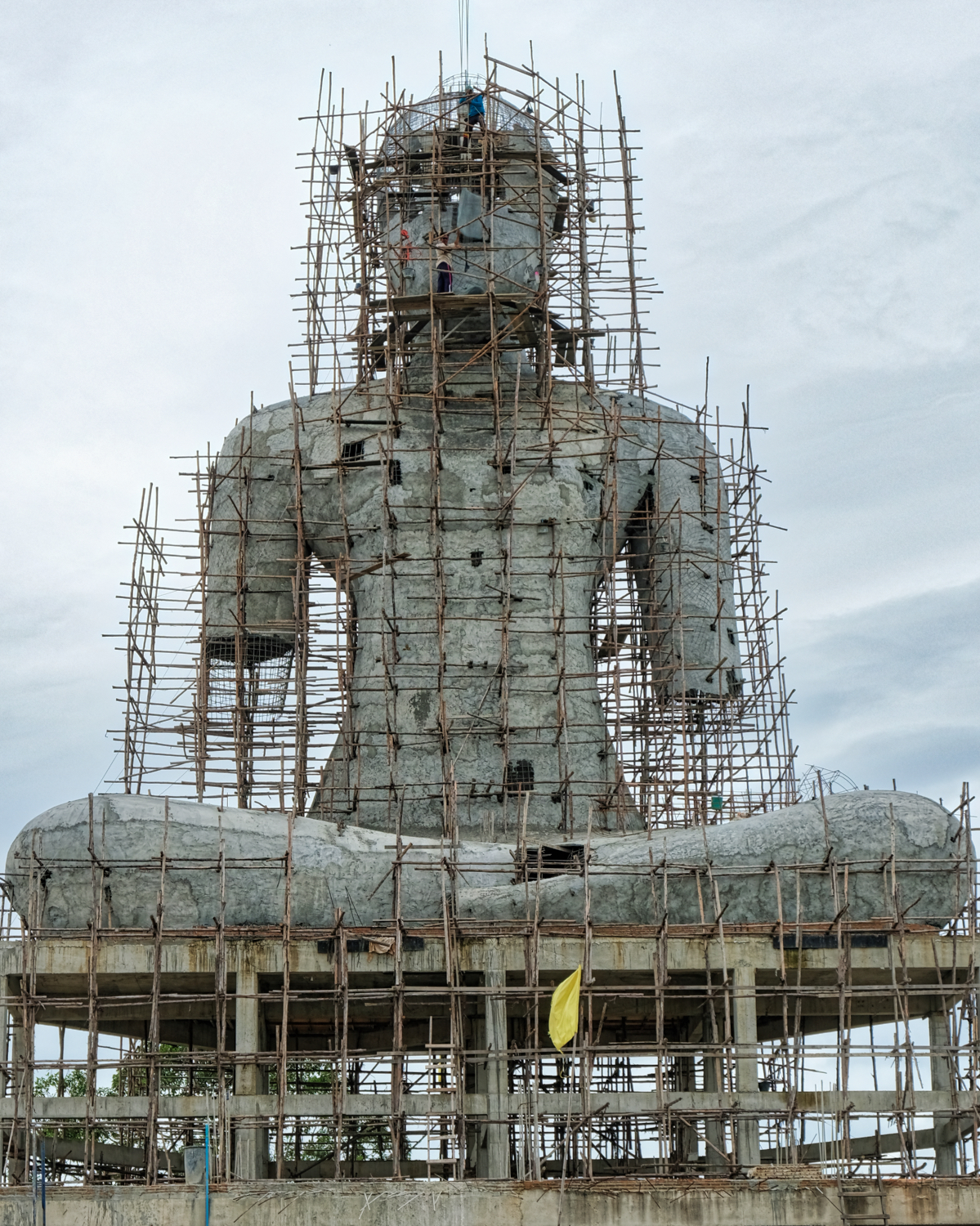 Just around the corner . . . a colossal Buddha image under construction. 10 stories tall with two workers crawling all over it.
Just around the corner . . . a colossal Buddha image under construction. 10 stories tall with two workers crawling all over it.
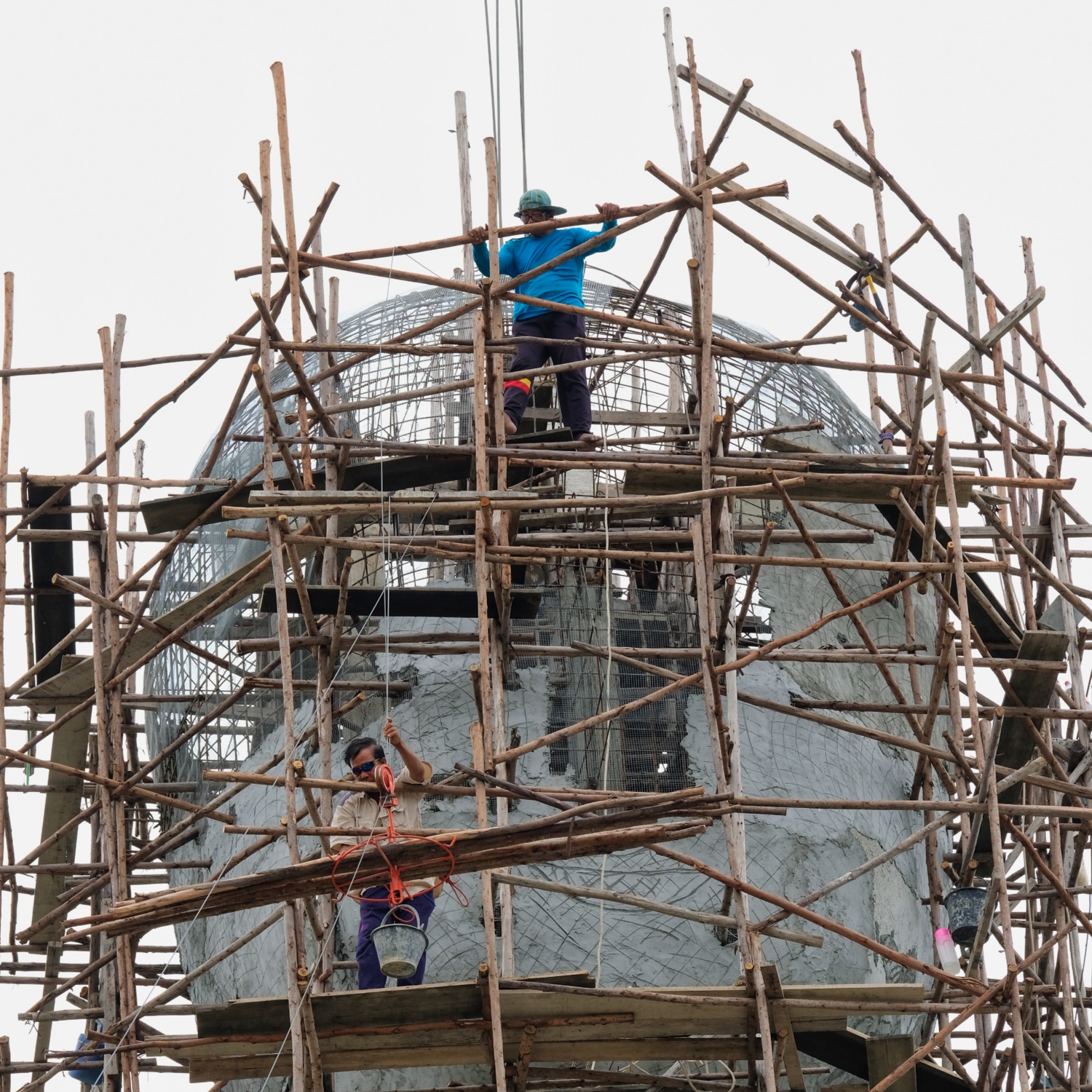 Sculpting the Buddha's head way up on bamboo scaffolding.
Sculpting the Buddha's head way up on bamboo scaffolding.
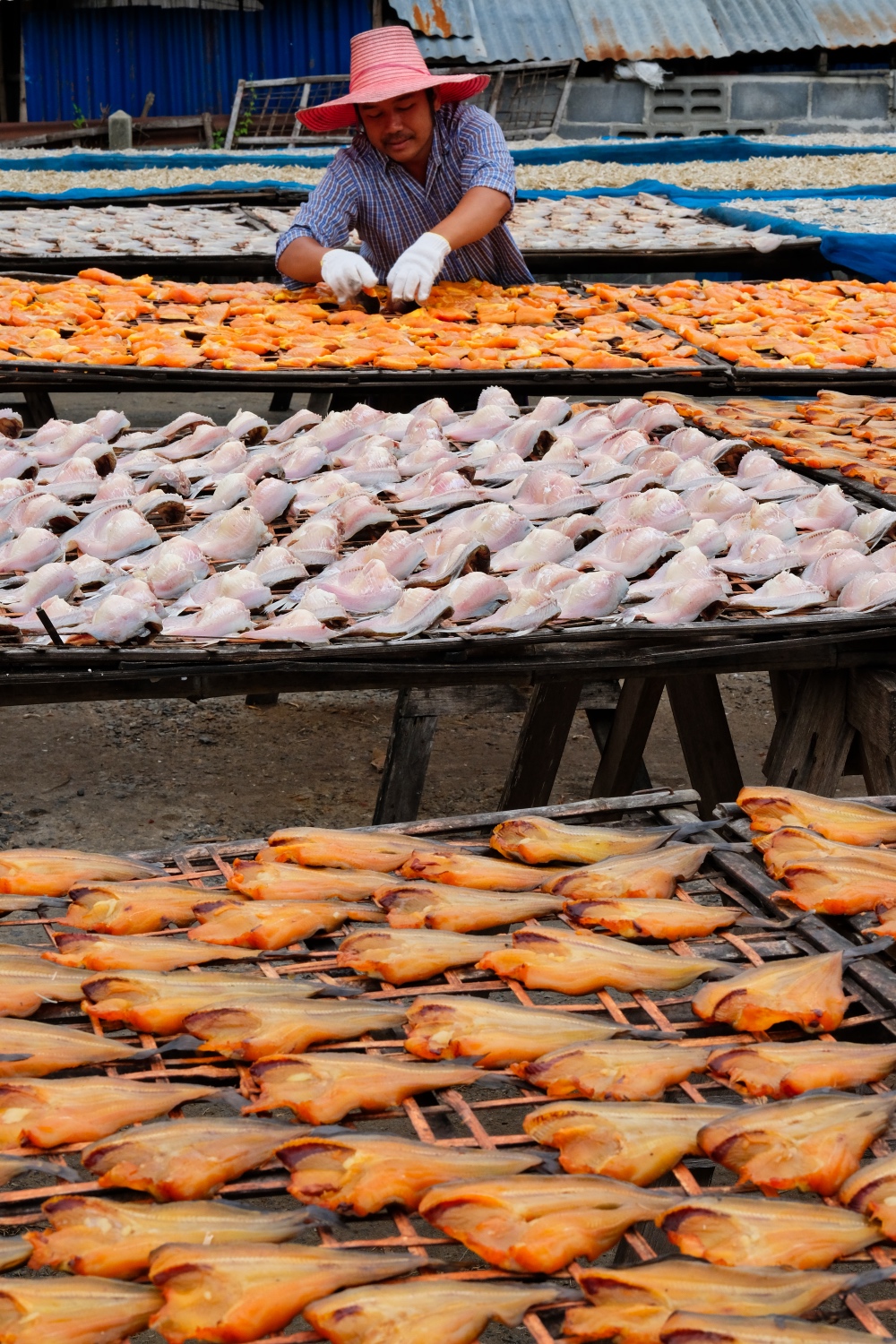 In a lot just in front of the giant Buddha under construction were these racks being filled with fish to be dried.
In a lot just in front of the giant Buddha under construction were these racks being filled with fish to be dried.
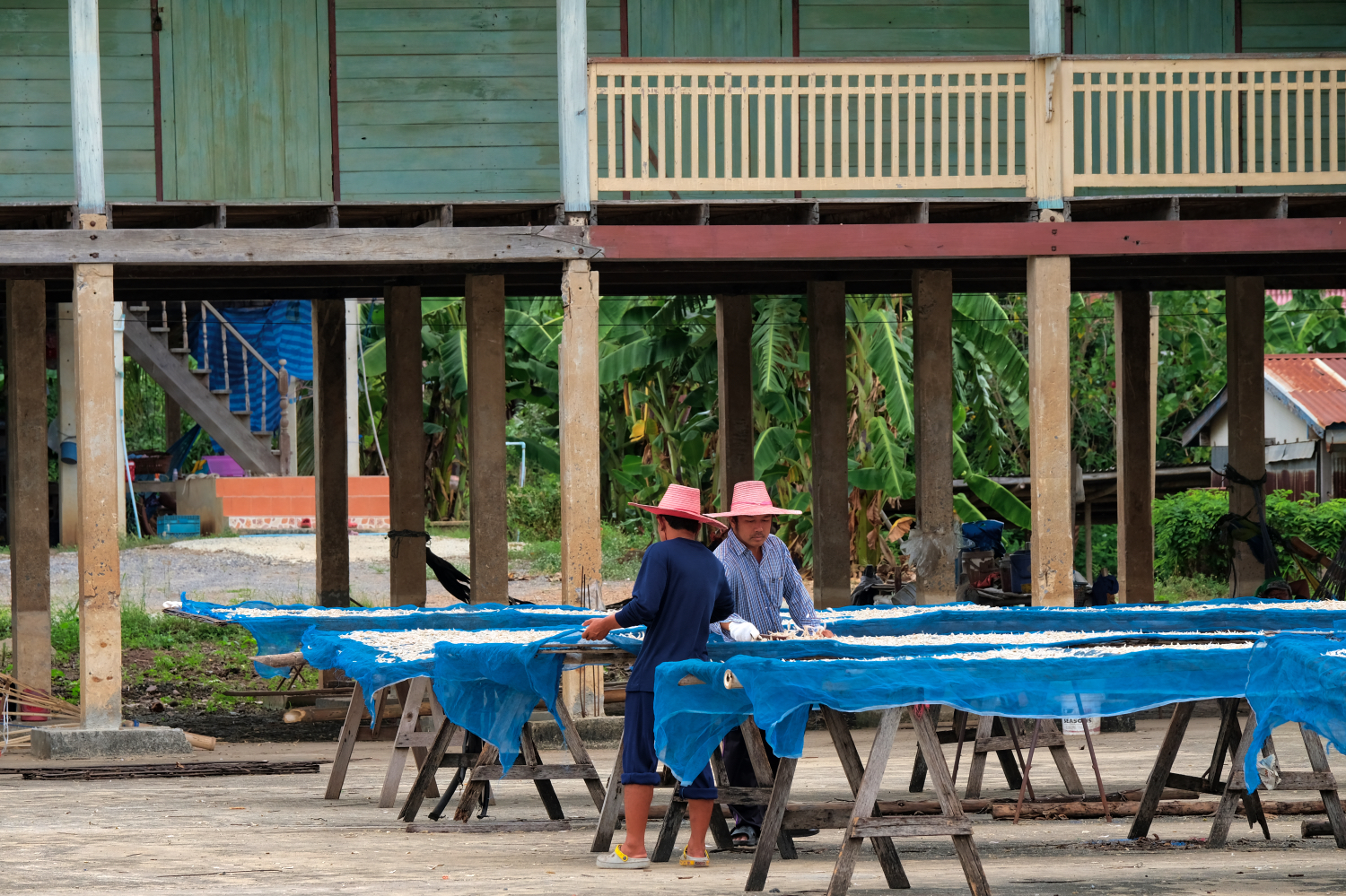 Fish spreaders . . .
Fish spreaders . . .
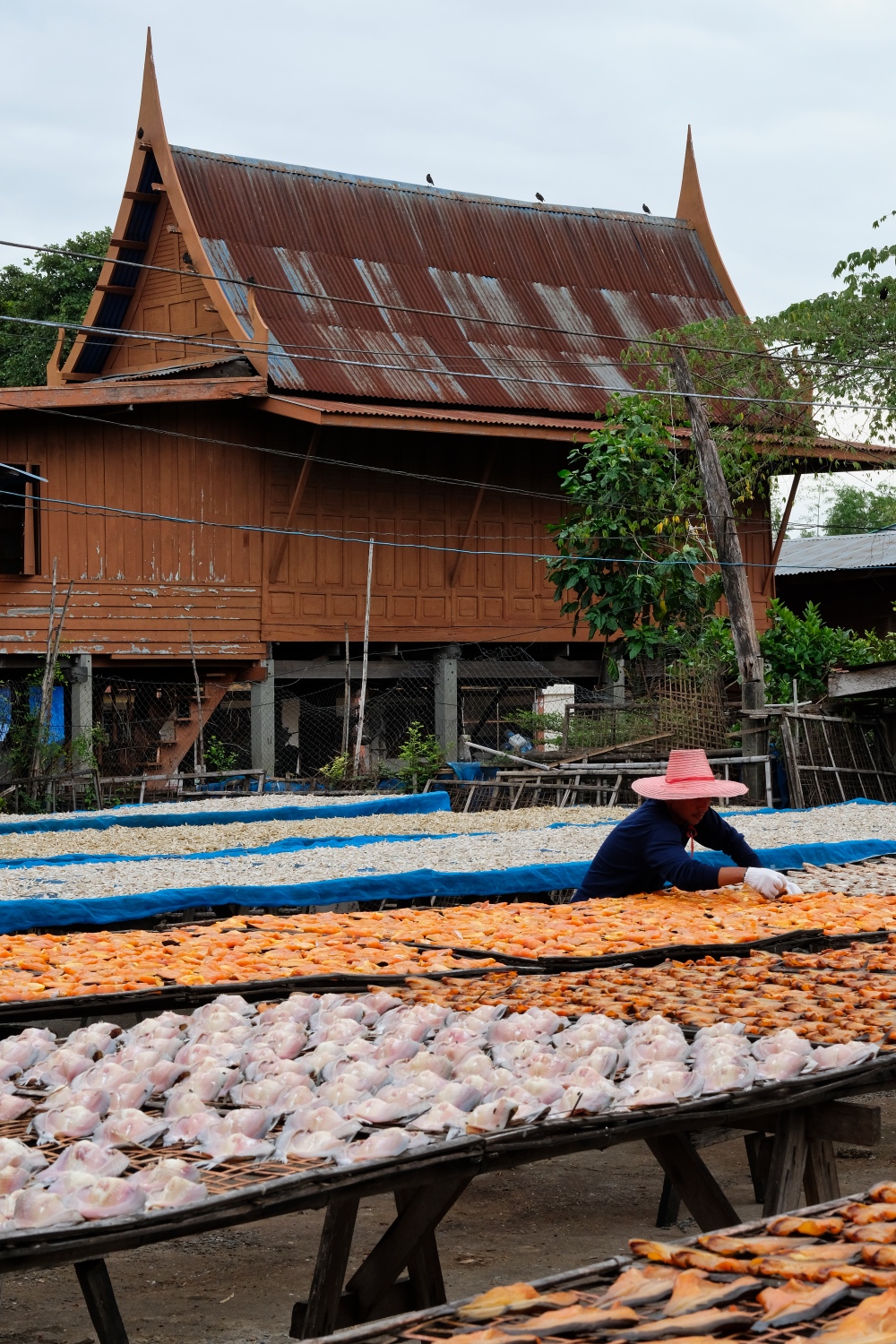 Another 500 meters walk up the country lane and we encountered another, bigger fish drying operation . . . and the same two guys spreading fish!
Another 500 meters walk up the country lane and we encountered another, bigger fish drying operation . . . and the same two guys spreading fish!
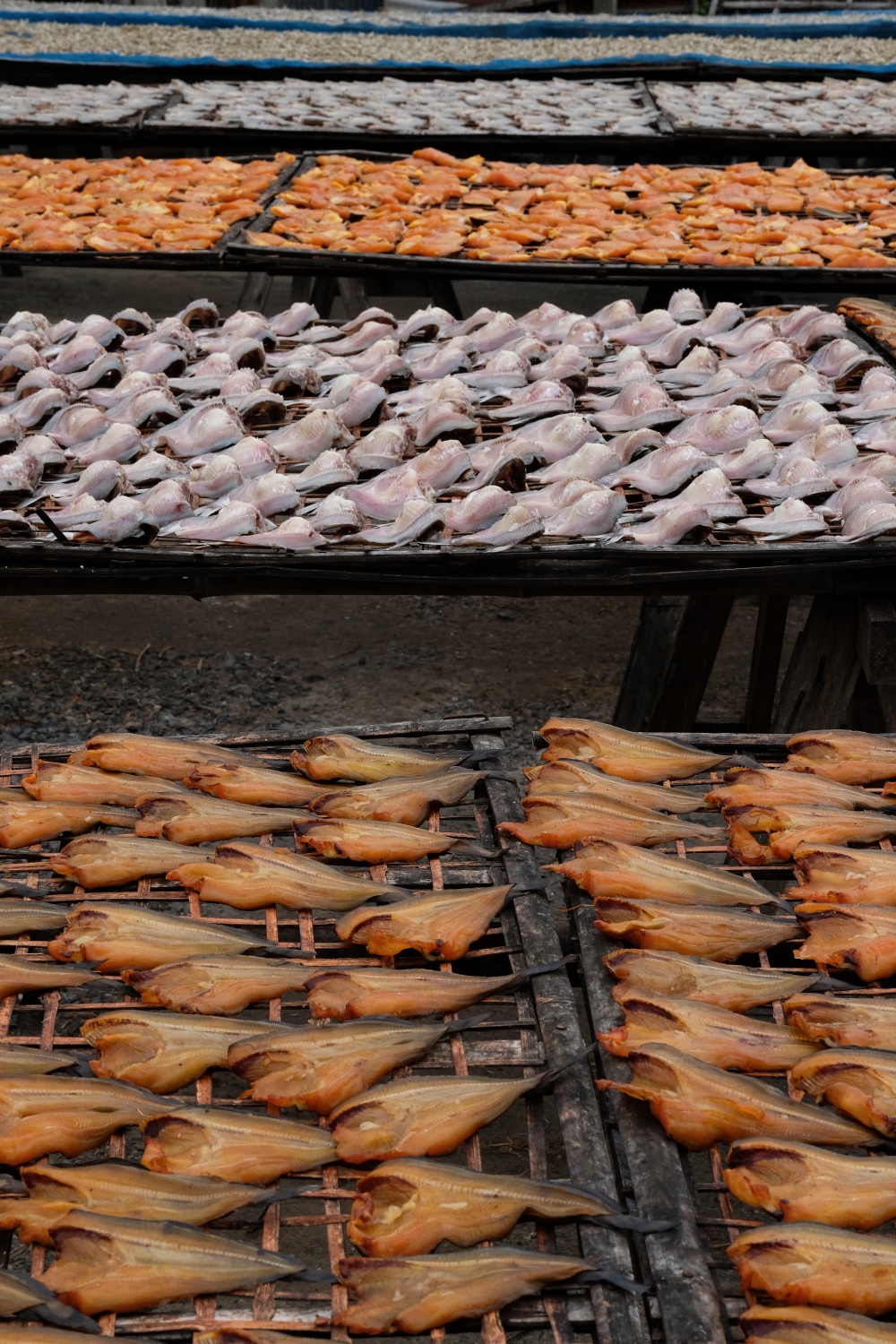 They were drying a variety of fish on bamboo racks.
They were drying a variety of fish on bamboo racks.
 Some of the drying fish had been split and skinned.
Some of the drying fish had been split and skinned.
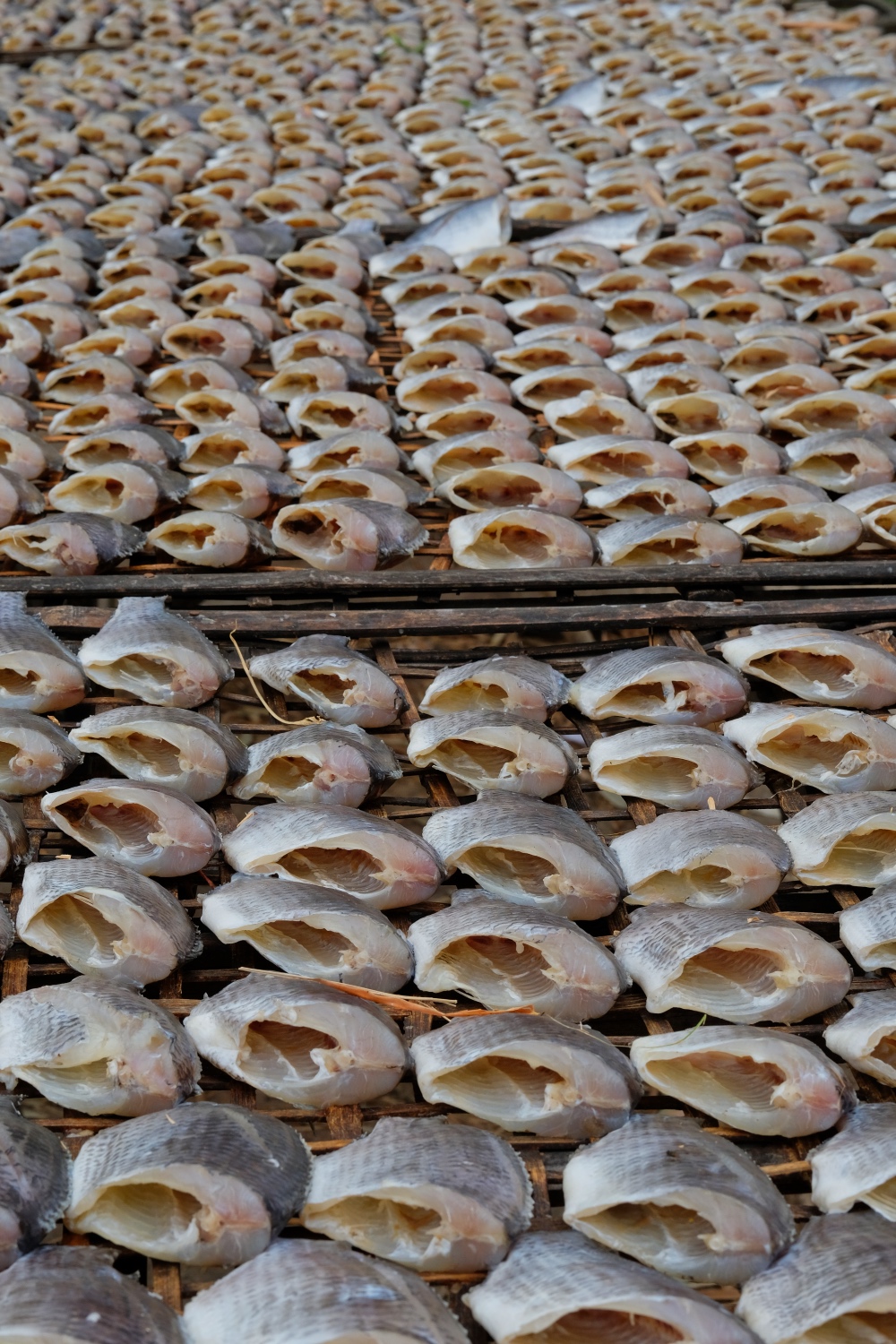 Some of the drying fish had been gutted and beheaded. There was a lot of drying fish here.
Some of the drying fish had been gutted and beheaded. There was a lot of drying fish here.
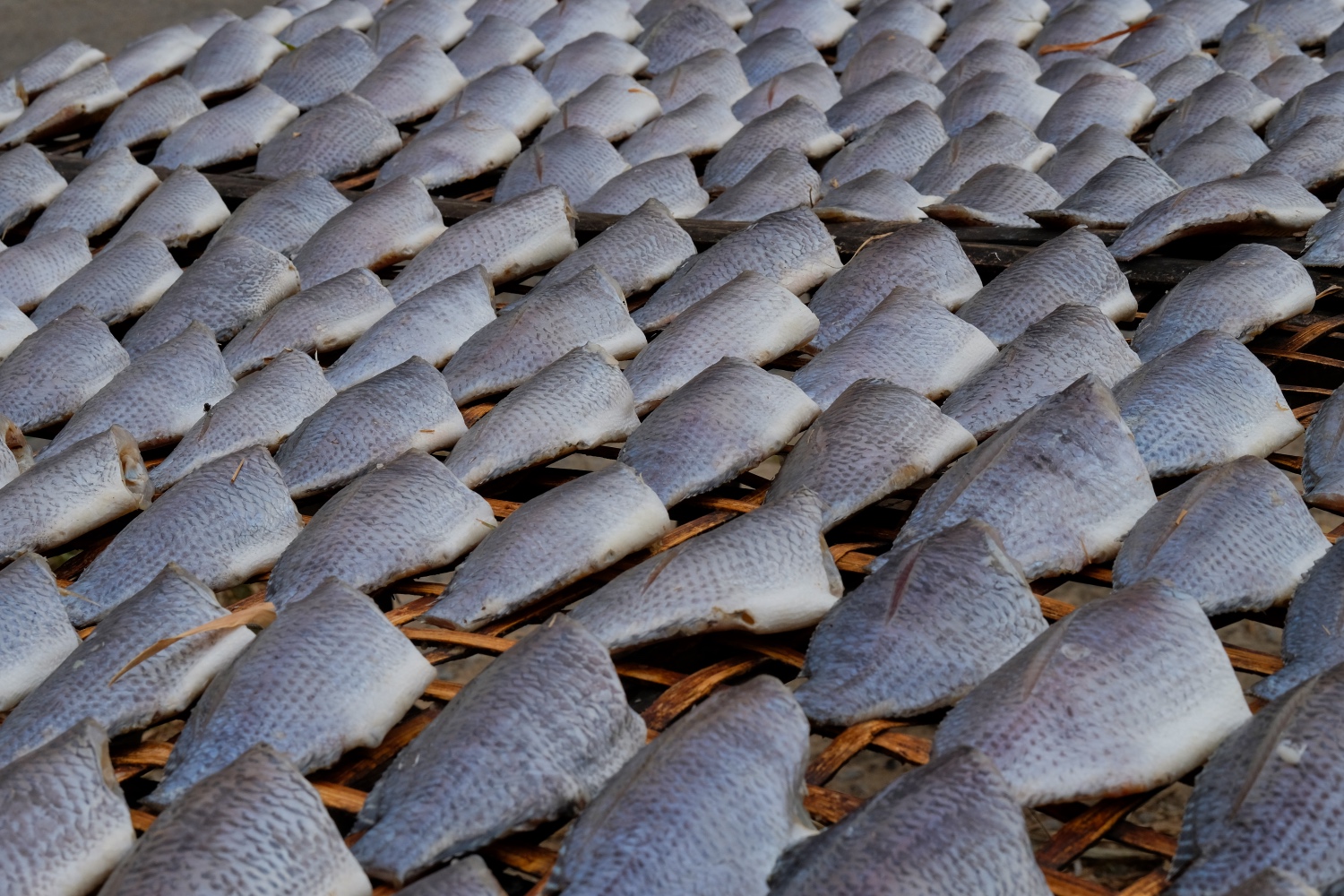 John asked one of the fish spreaders where the fish came from, since we were a couple hundred kilometers from the sea. They said it was all imported from Cambodia fresh every day.
John asked one of the fish spreaders where the fish came from, since we were a couple hundred kilometers from the sea. They said it was all imported from Cambodia fresh every day.
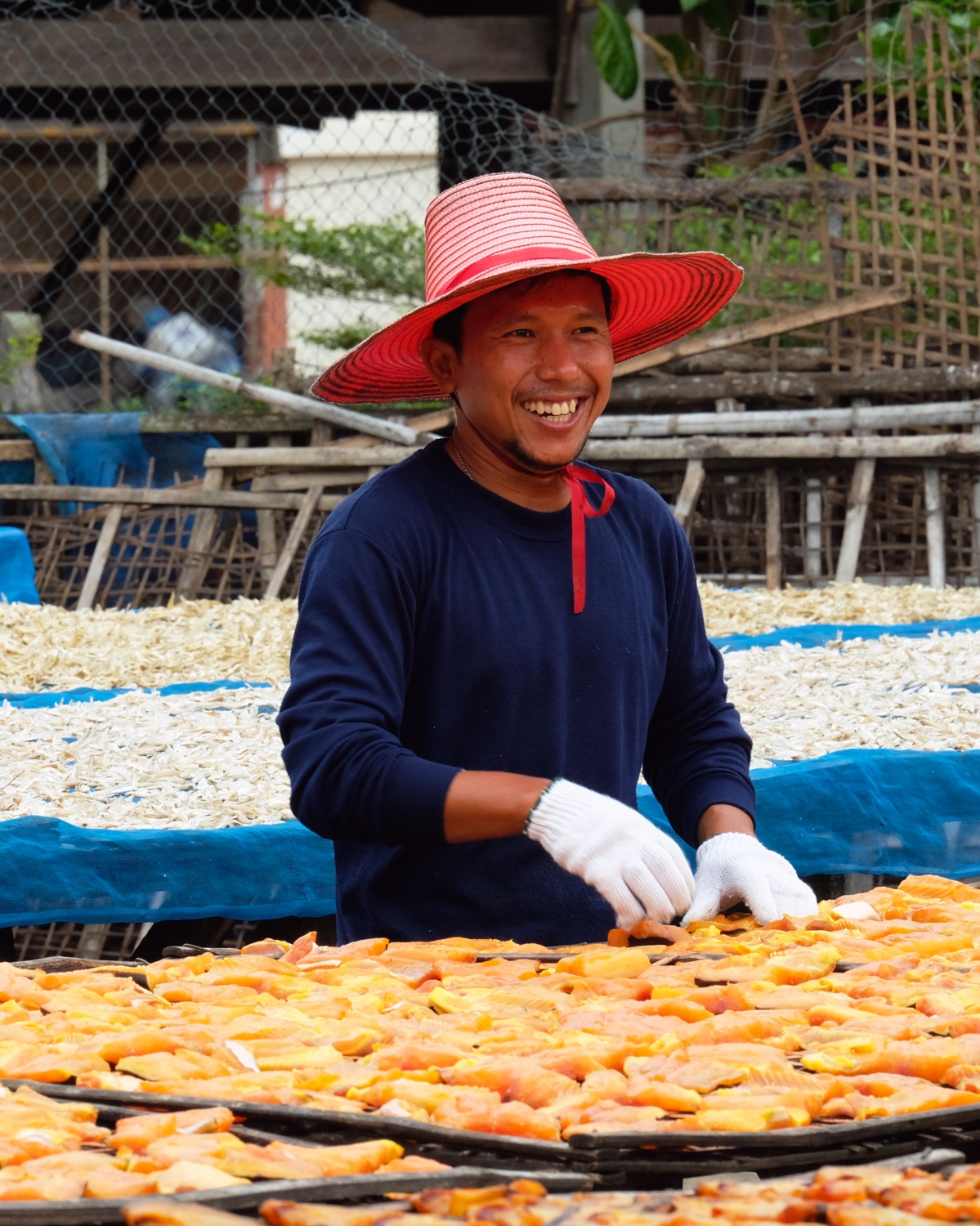 I'm afraid we made this guy a little selfconsious with all the photography . . . DAMN TOURISTS!
I'm afraid we made this guy a little selfconsious with all the photography . . . DAMN TOURISTS!
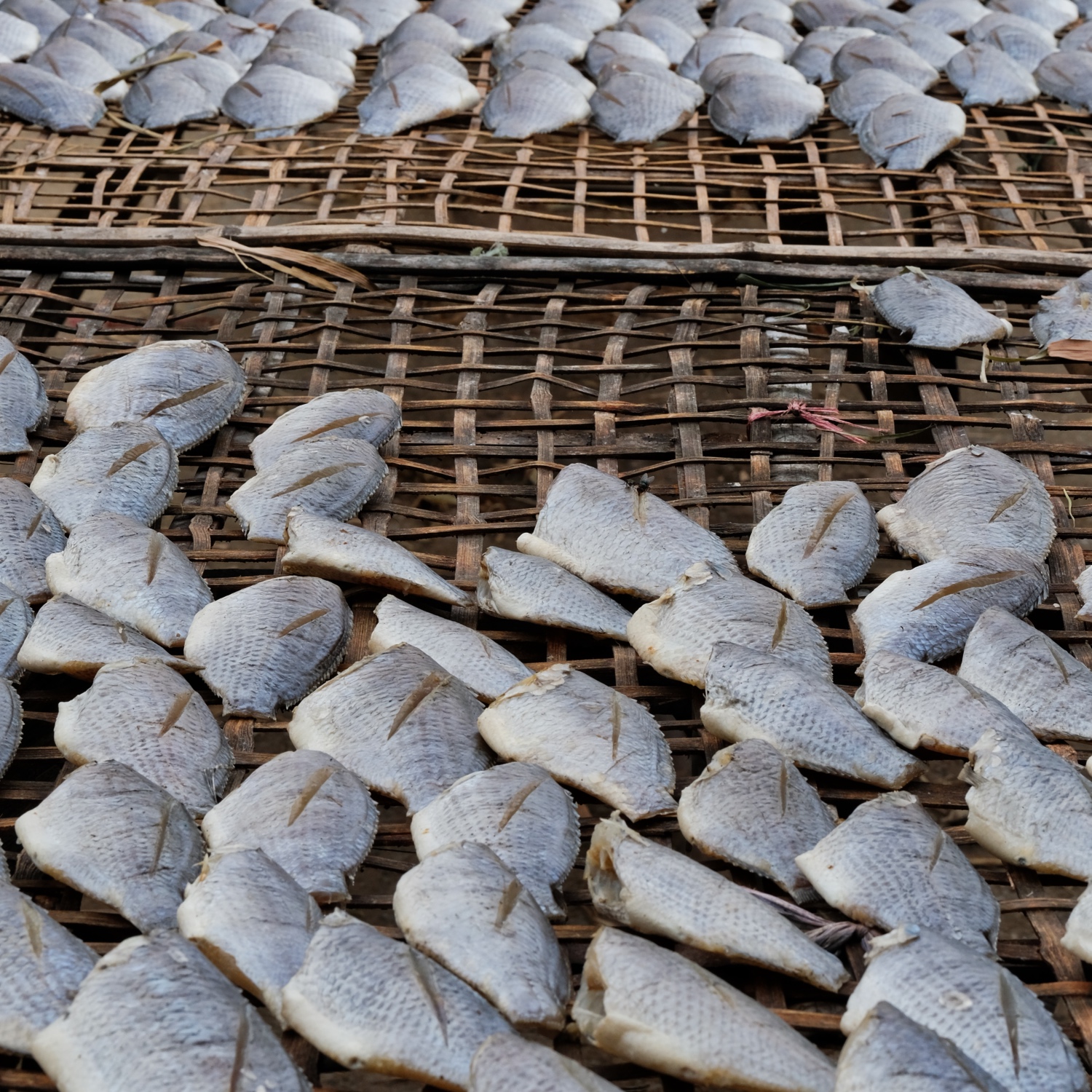 I took way too many photographs of these incredible fish patterns . . . .
I took way too many photographs of these incredible fish patterns . . . .
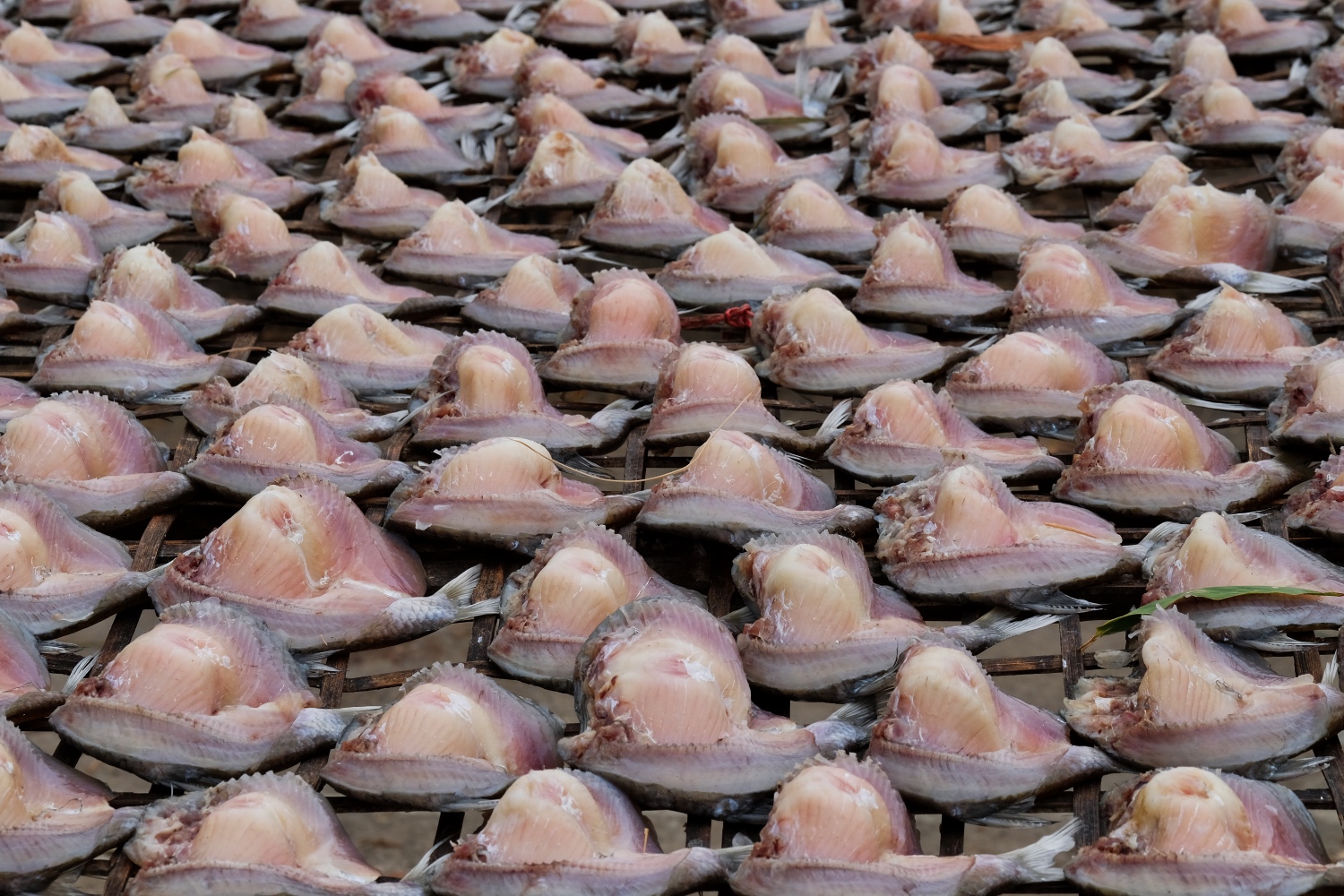 Very strange things to see out in the Thai countryside. We left the drying fish behind and went looking for the sunflower fields.
Very strange things to see out in the Thai countryside. We left the drying fish behind and went looking for the sunflower fields.
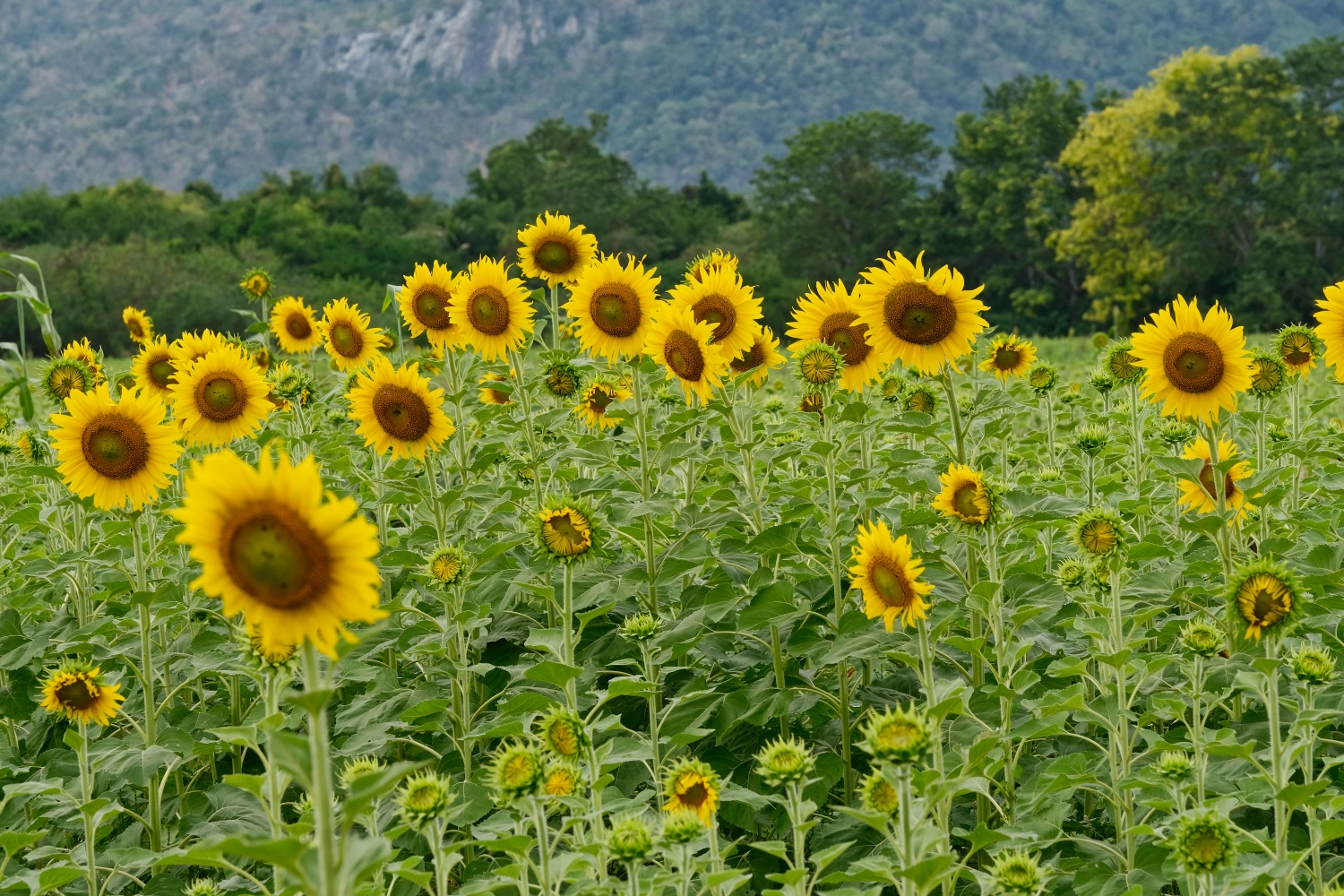 We eventually found a field that was just coming into flower.
We eventually found a field that was just coming into flower.
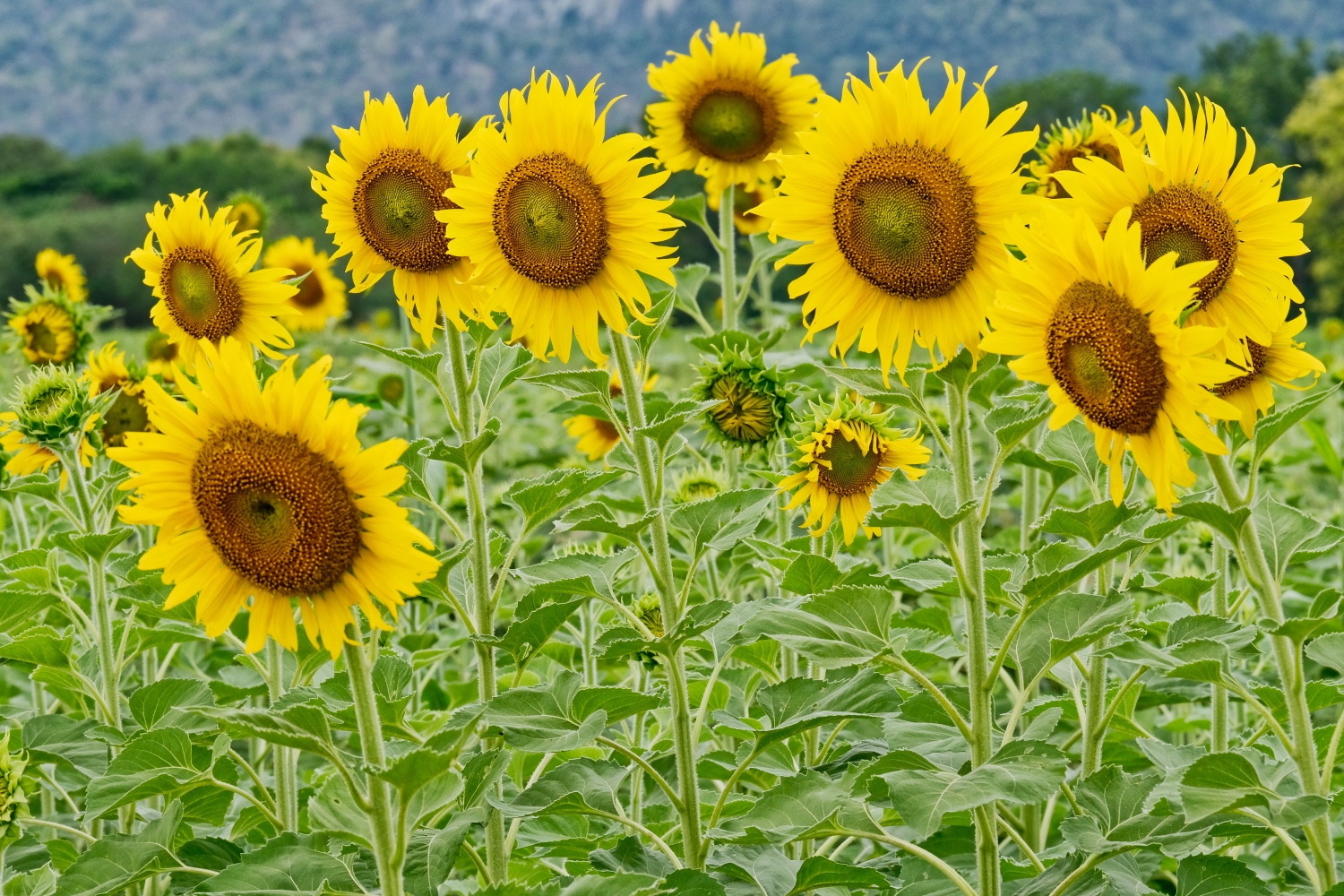 We first explored a little patch up a dirt path . . . away from another field that had quite a few other sunflower pilgrims.
We first explored a little patch up a dirt path . . . away from another field that had quite a few other sunflower pilgrims.
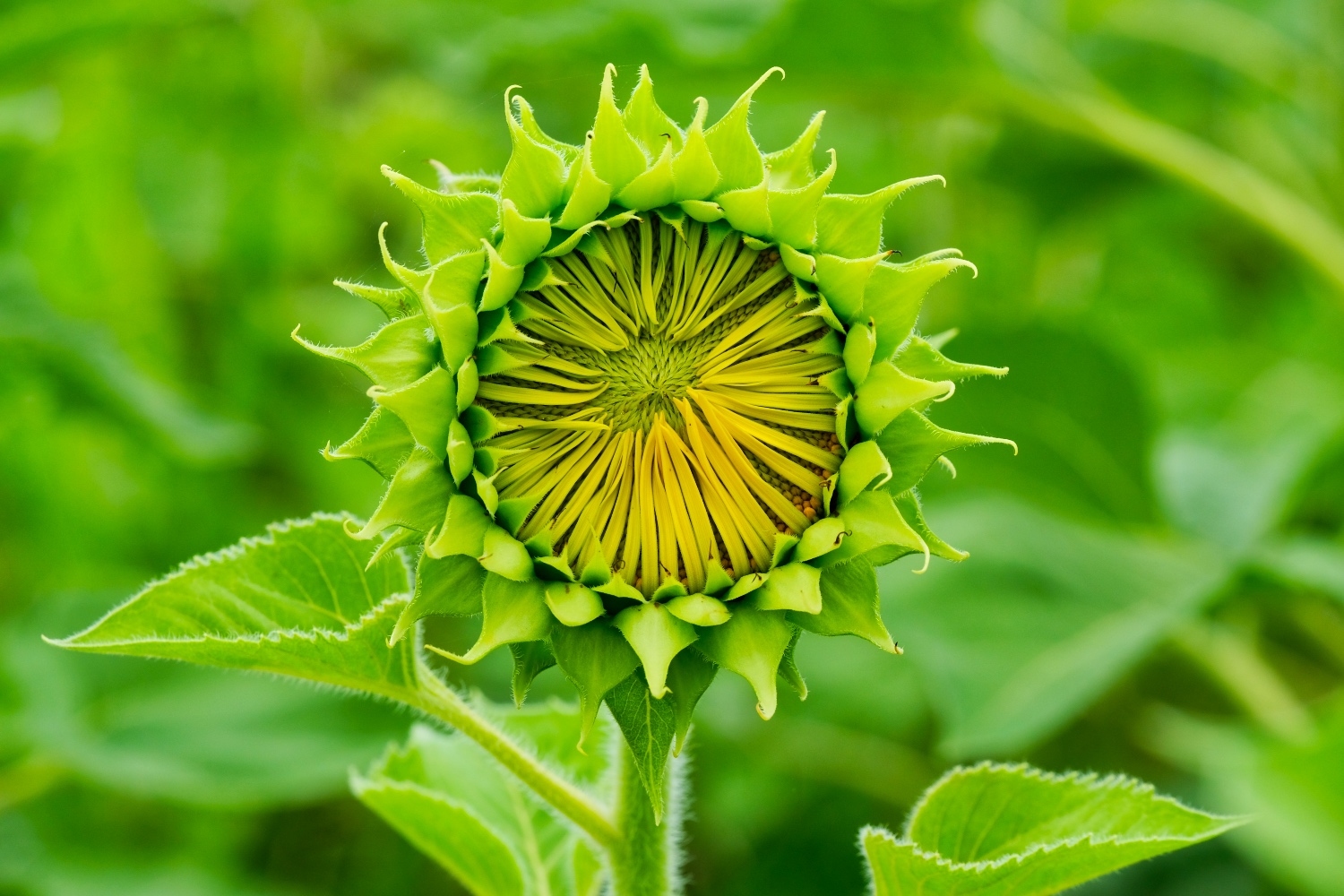 New sunflowers budding are fantastically interesting things.
New sunflowers budding are fantastically interesting things.
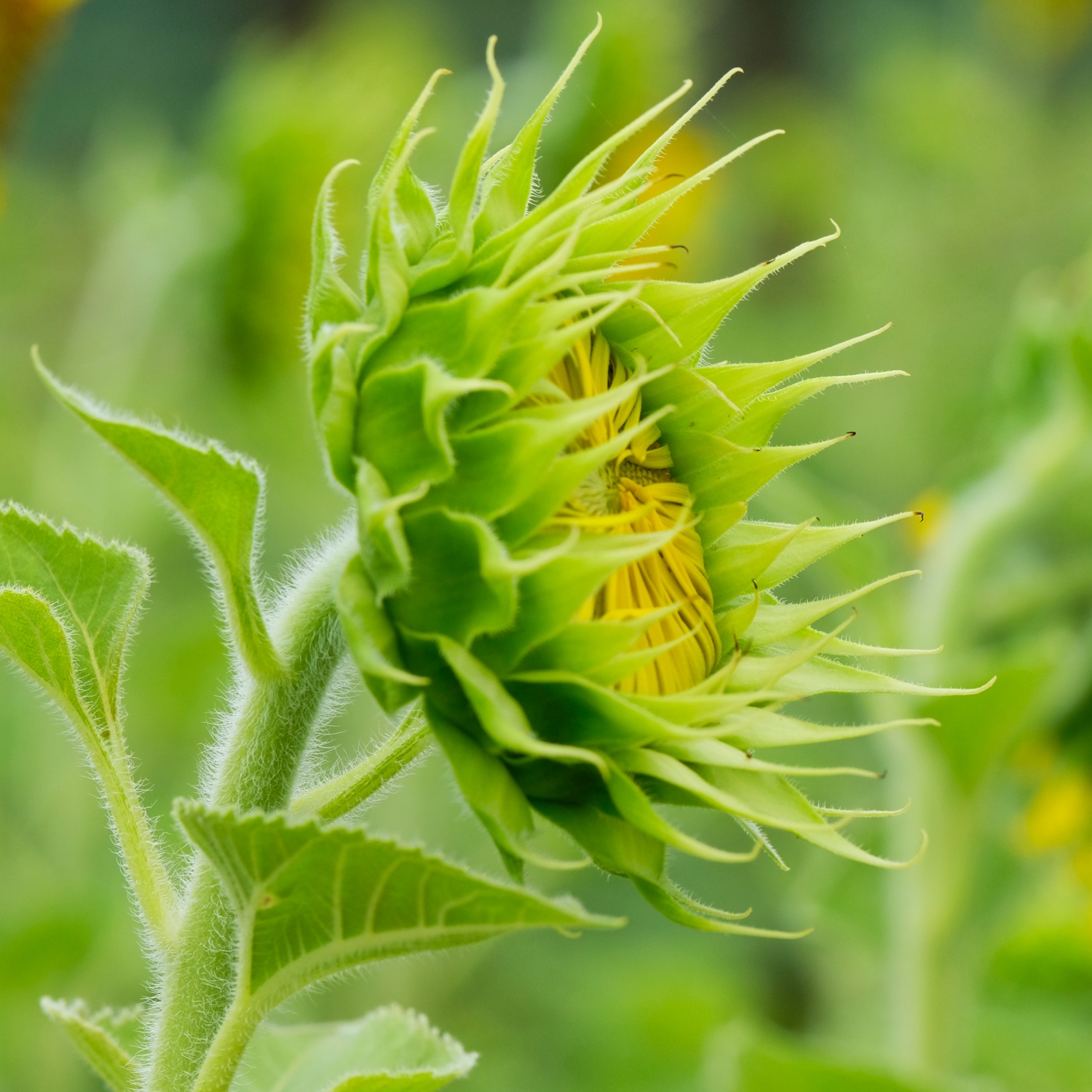 The sun was hiding behind the clouds, but that might have made the photography better . . . .
The sun was hiding behind the clouds, but that might have made the photography better . . . .
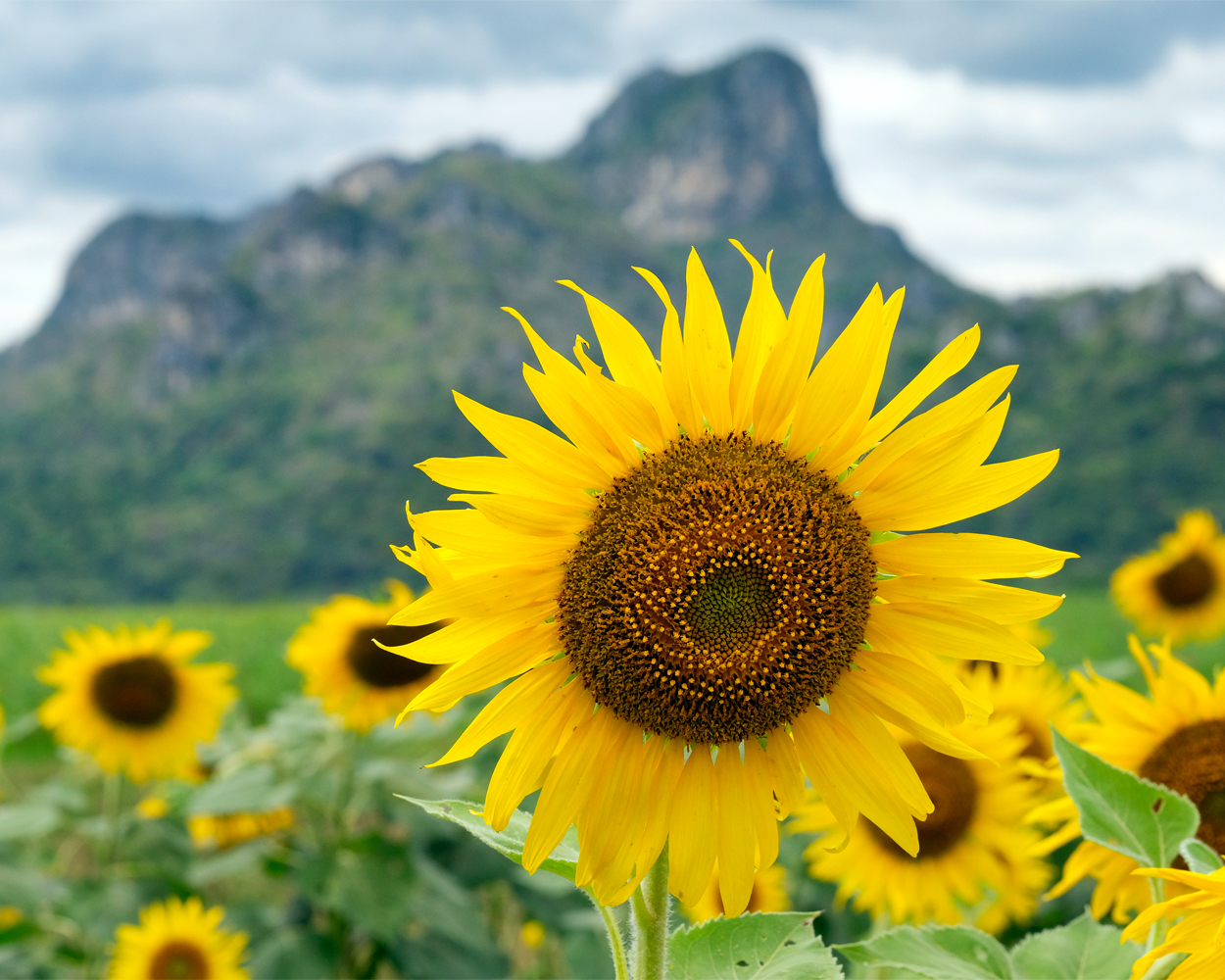 Beautiful sunflowers . . . they make you happy.
Beautiful sunflowers . . . they make you happy.
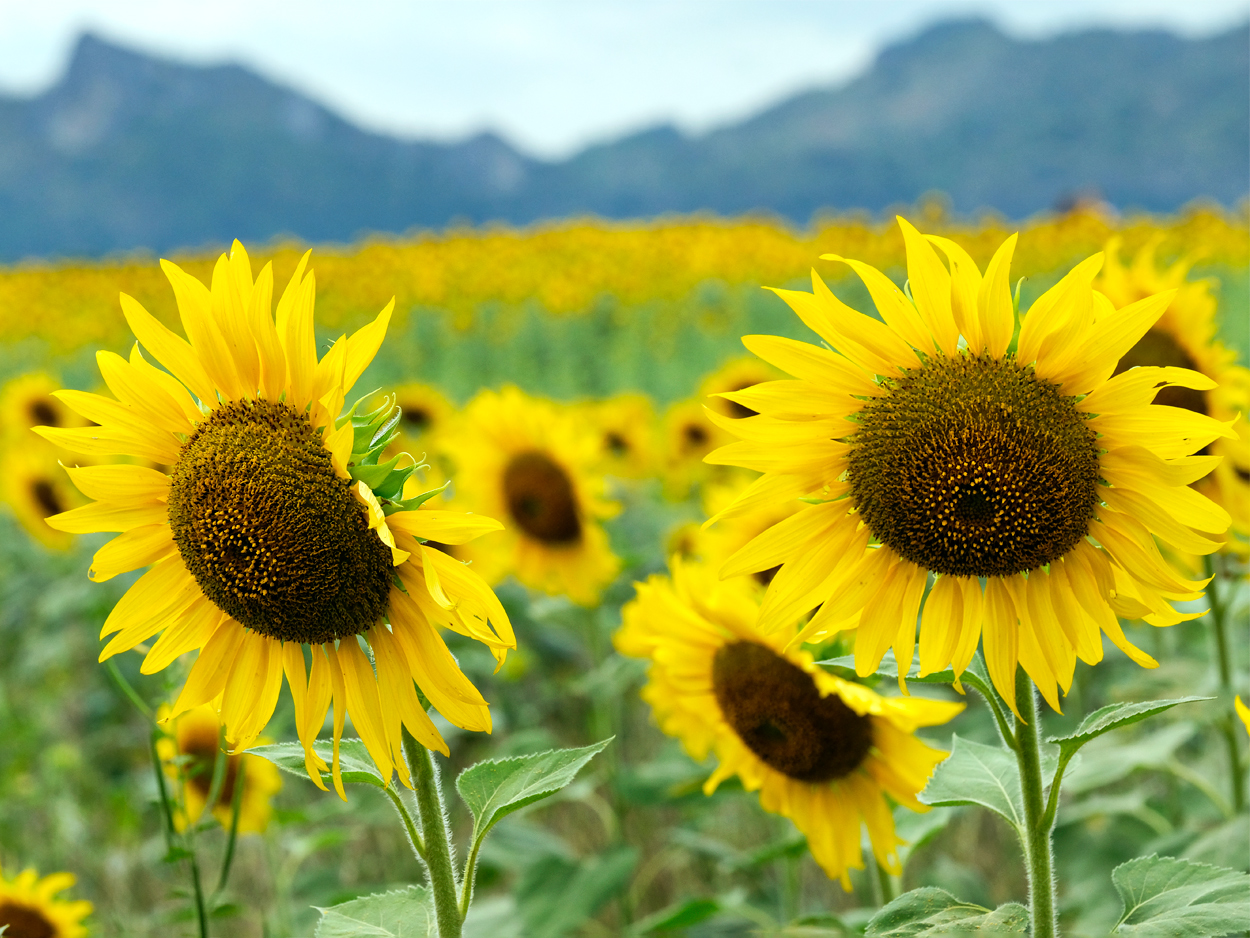 A beautiful place to be on a Monday afternoon . . .
A beautiful place to be on a Monday afternoon . . .
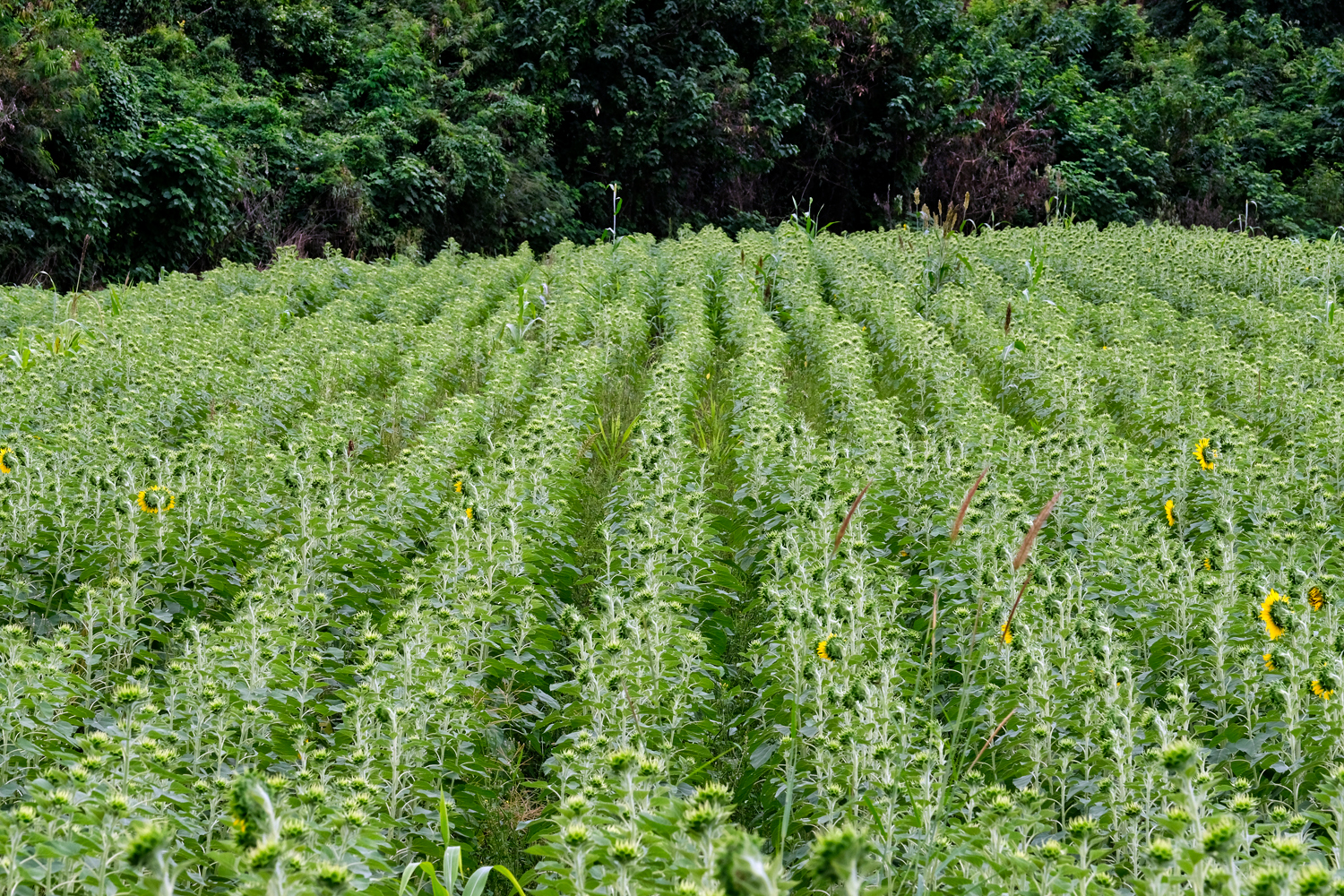 We passed by a field that had yet to flower. John, from Iowa and, like all people from Iowa, was an expert on sunflowers. He said that sunflowers have an 'internal clock' -- in other words, sunflowers planted a week after other sunflowers, will bloom one week later.
We passed by a field that had yet to flower. John, from Iowa and, like all people from Iowa, was an expert on sunflowers. He said that sunflowers have an 'internal clock' -- in other words, sunflowers planted a week after other sunflowers, will bloom one week later.
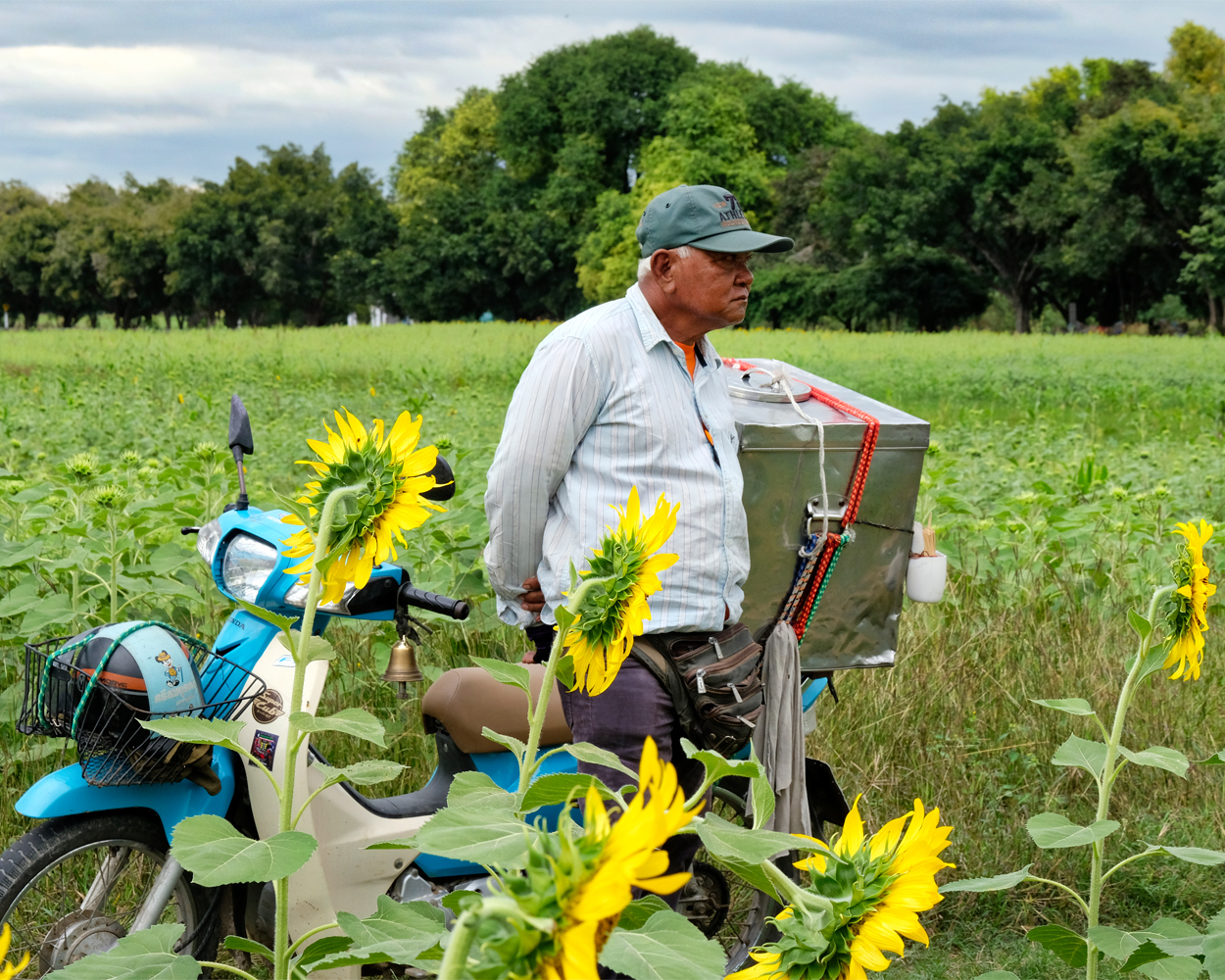 An ice cream hawker found his way to here the Thai tourists were . . . as we had.
An ice cream hawker found his way to here the Thai tourists were . . . as we had.
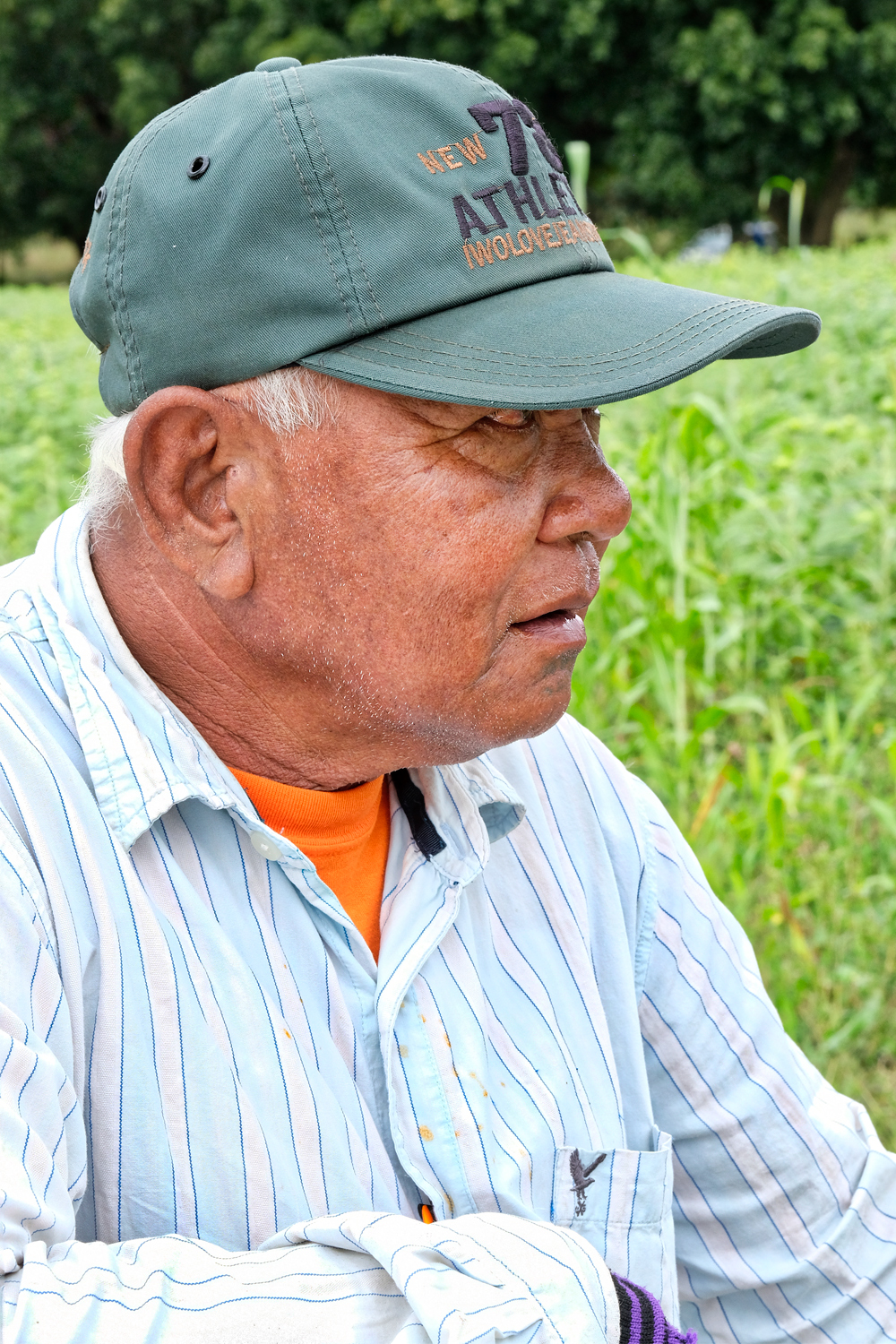 John bought an ice cream sandwich . . . literally, a slab of ice cream in between slices of bread. The hawker consented to this photograph.
John bought an ice cream sandwich . . . literally, a slab of ice cream in between slices of bread. The hawker consented to this photograph.
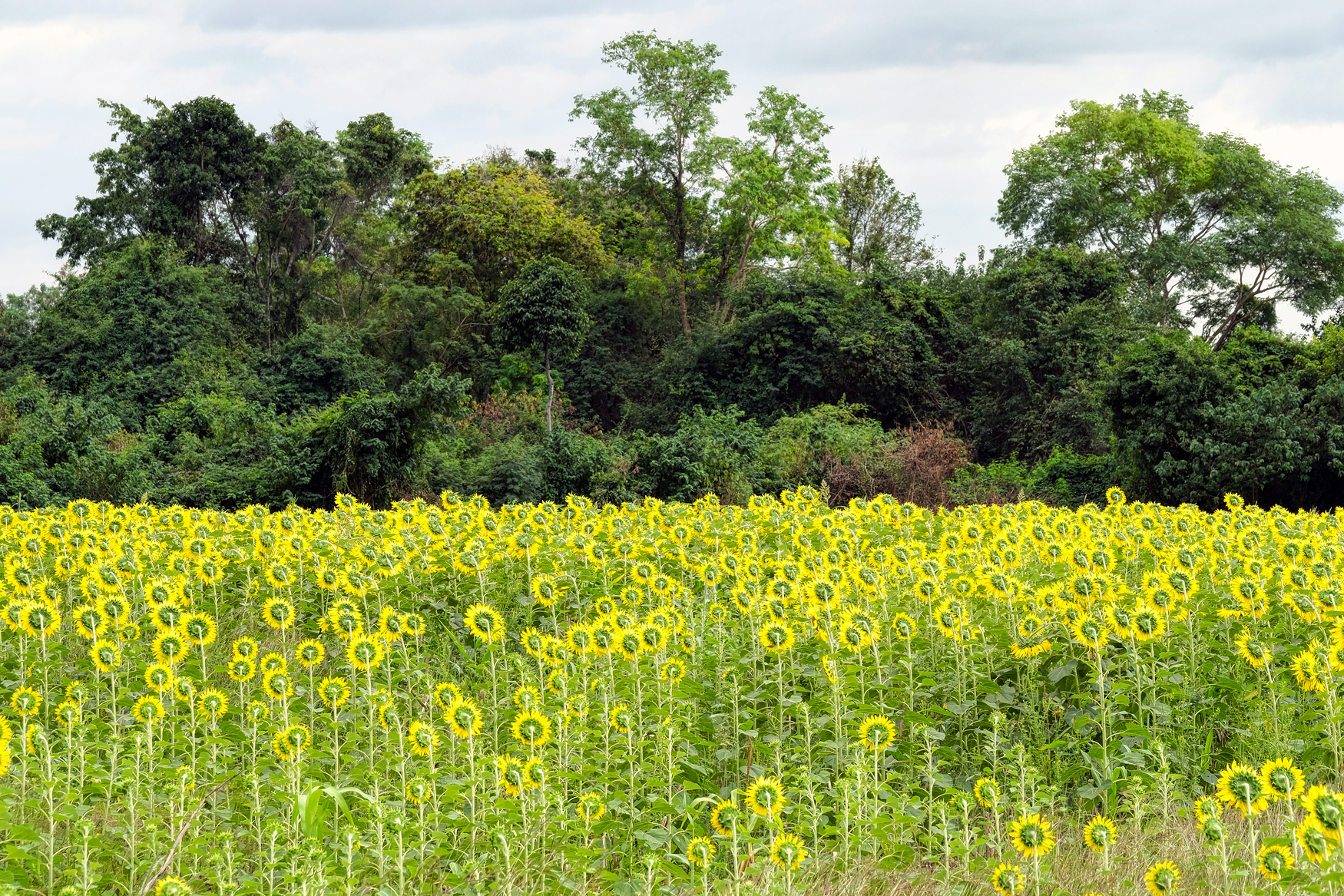 We found a larger field of blooms.
We found a larger field of blooms.
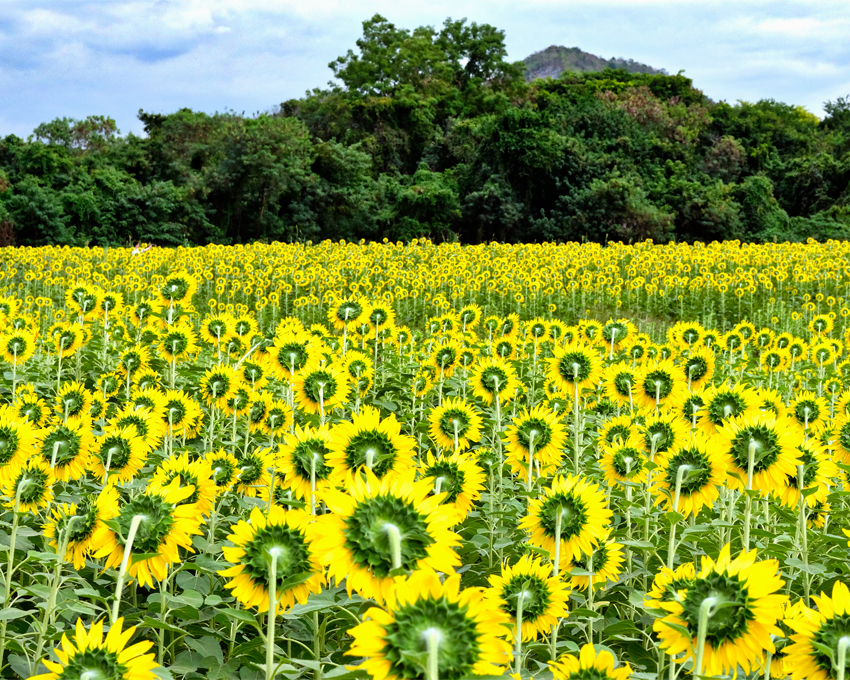 This is more like it.
This is more like it.
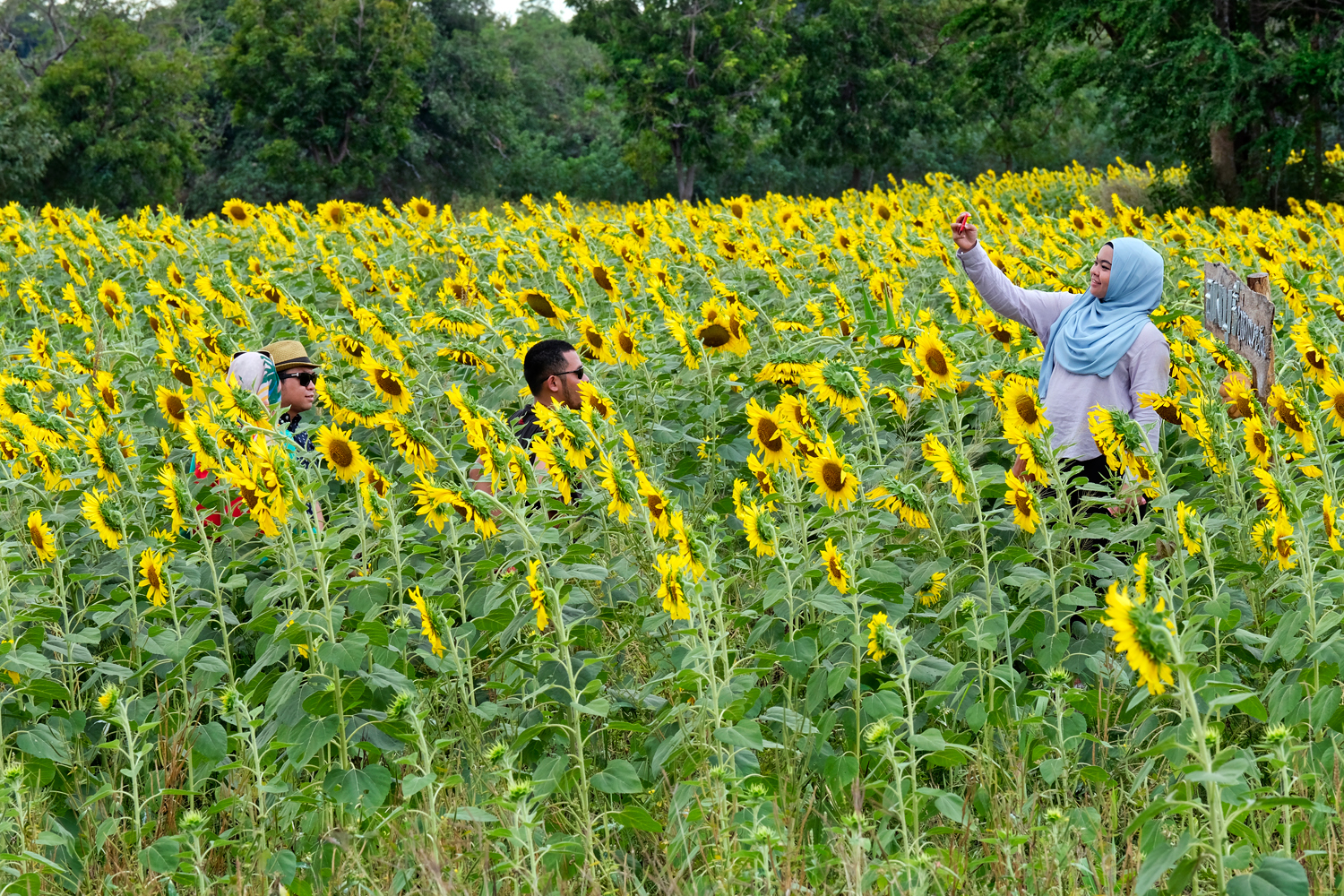 We were not alone, of course. Sunflower fields attract people like moths to a flame.
We were not alone, of course. Sunflower fields attract people like moths to a flame.
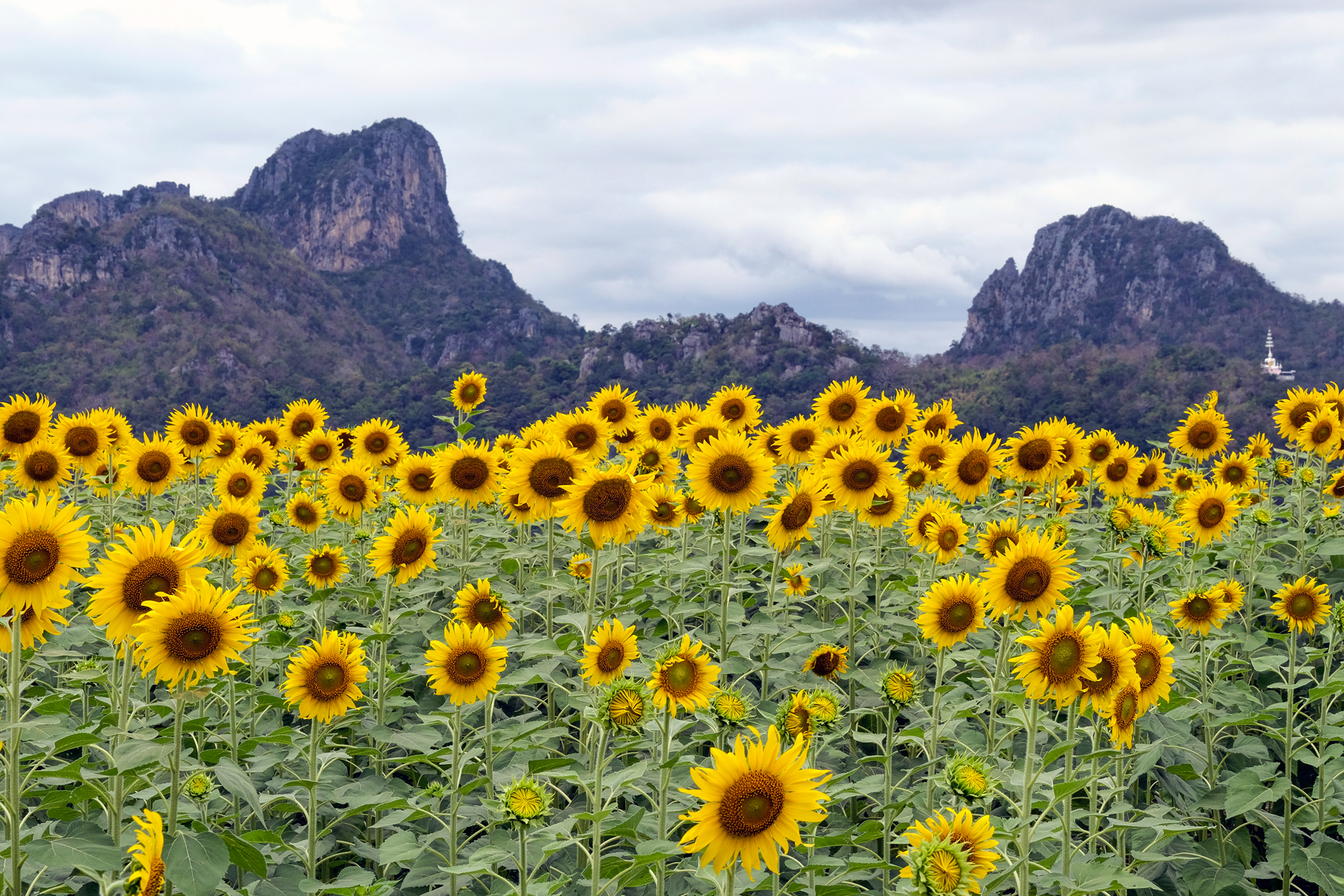 A gorgeous place to find a sunflower field . . . below the sharp hills with a Buddhist temple perched high up on a rise.
A gorgeous place to find a sunflower field . . . below the sharp hills with a Buddhist temple perched high up on a rise.
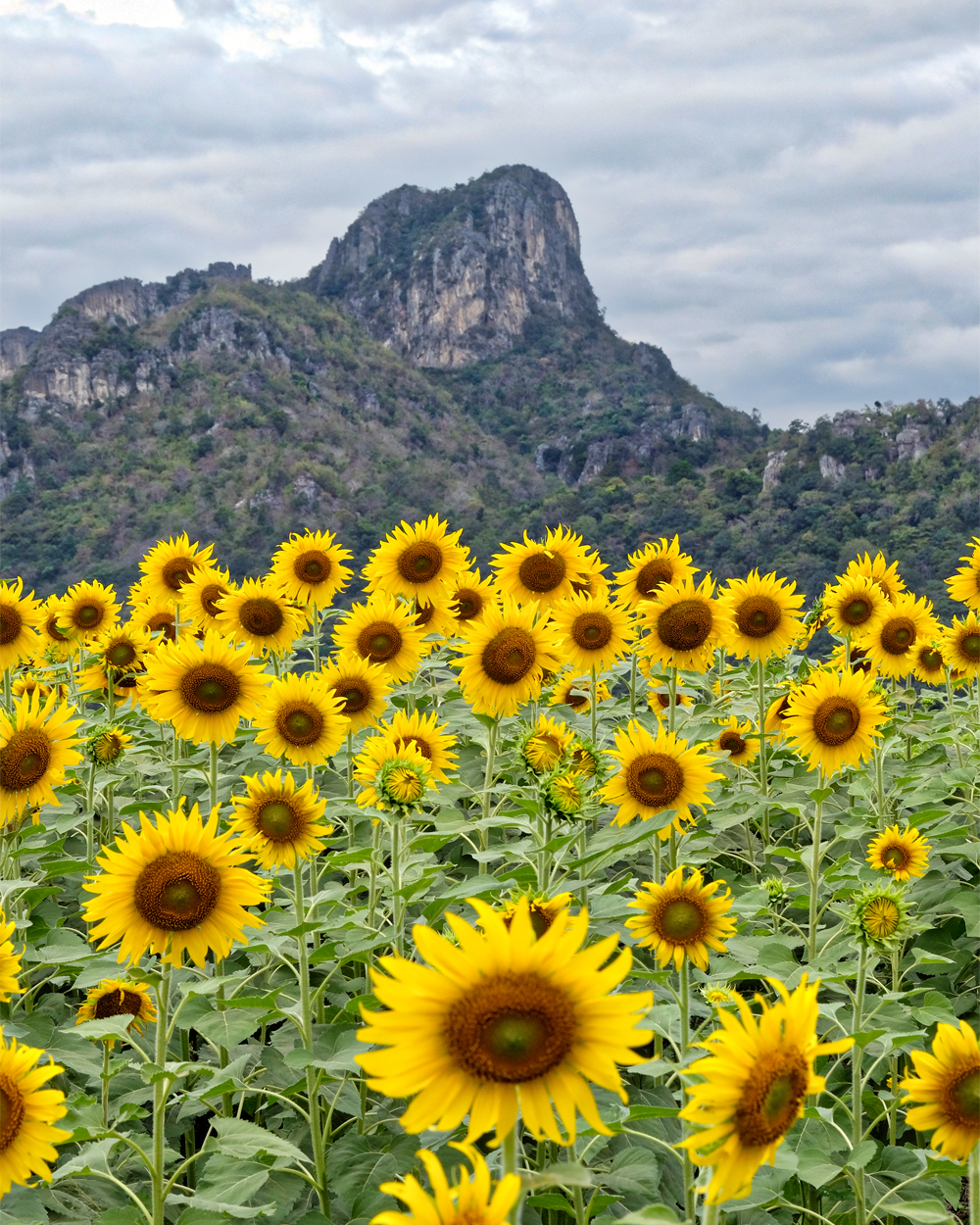 The light was starting to fade as we headed out of the beautiful fields . . . we had a hilltop Buddha image to get to.
The light was starting to fade as we headed out of the beautiful fields . . . we had a hilltop Buddha image to get to.
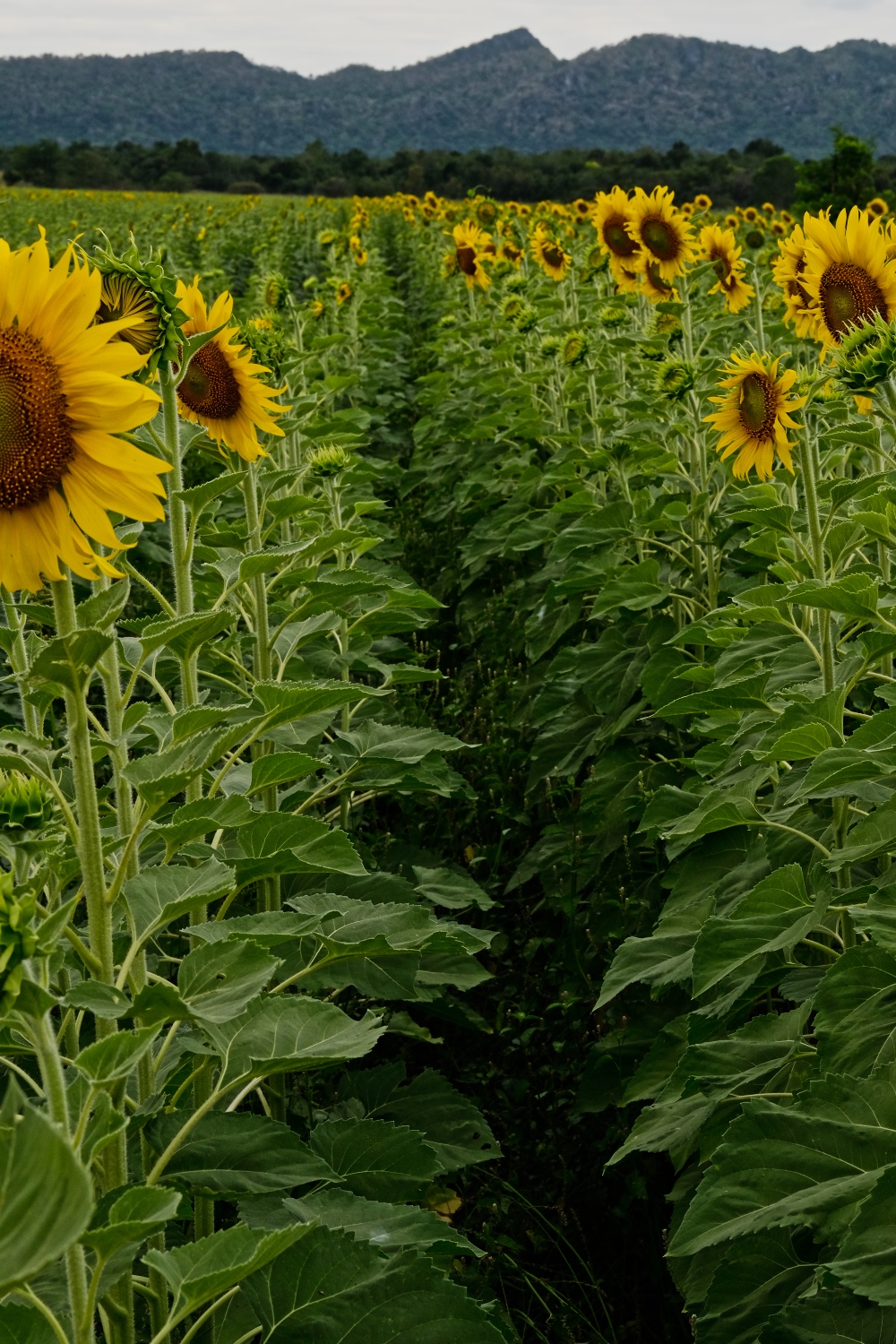 Rows and rows of sunflowers popping in and out of the sunlight.
Rows and rows of sunflowers popping in and out of the sunlight.
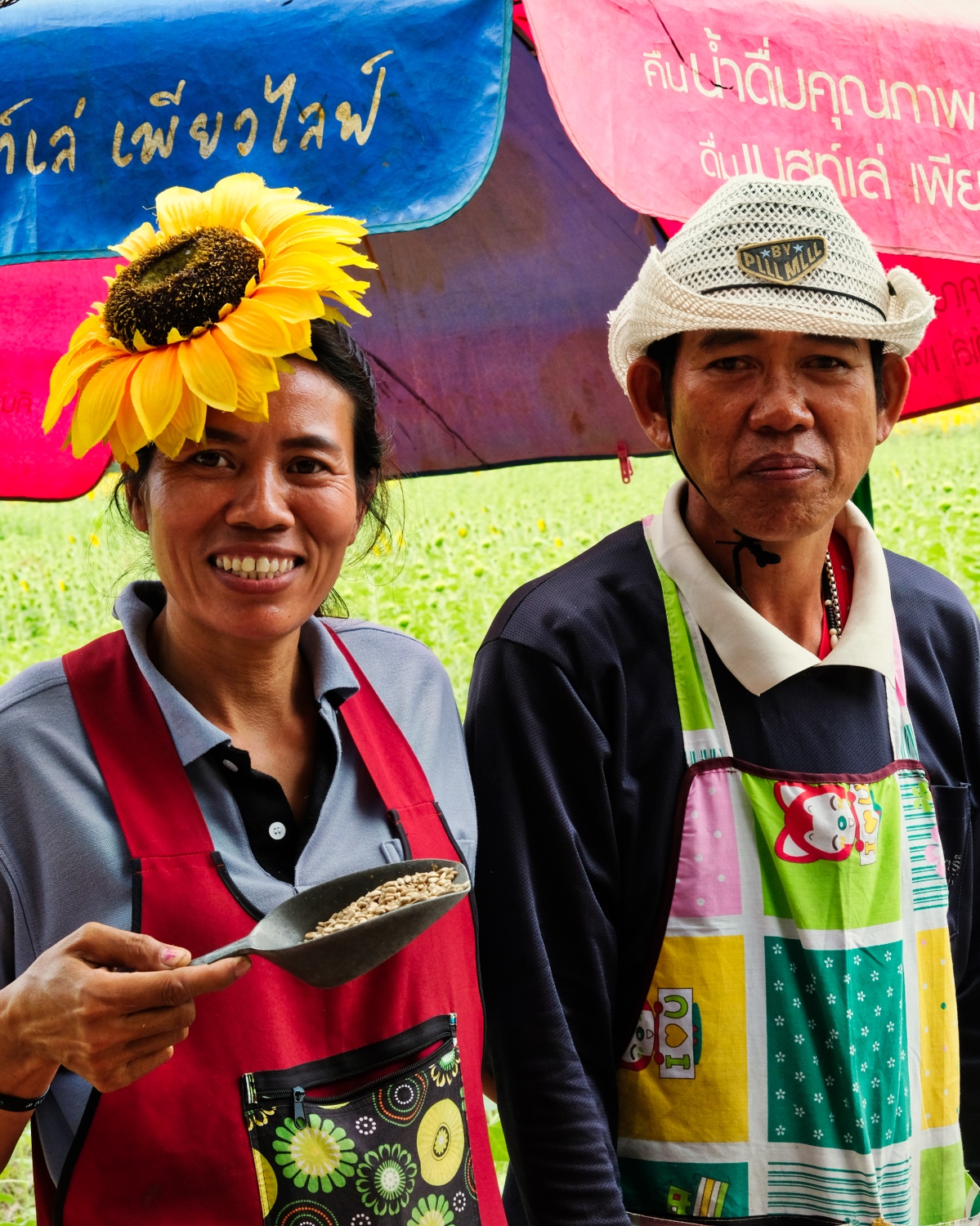 This sweet, and nutty, couple were selling freshly salted and roasted sunflower seeds. I bought a kilo (they were delicious).
This sweet, and nutty, couple were selling freshly salted and roasted sunflower seeds. I bought a kilo (they were delicious).
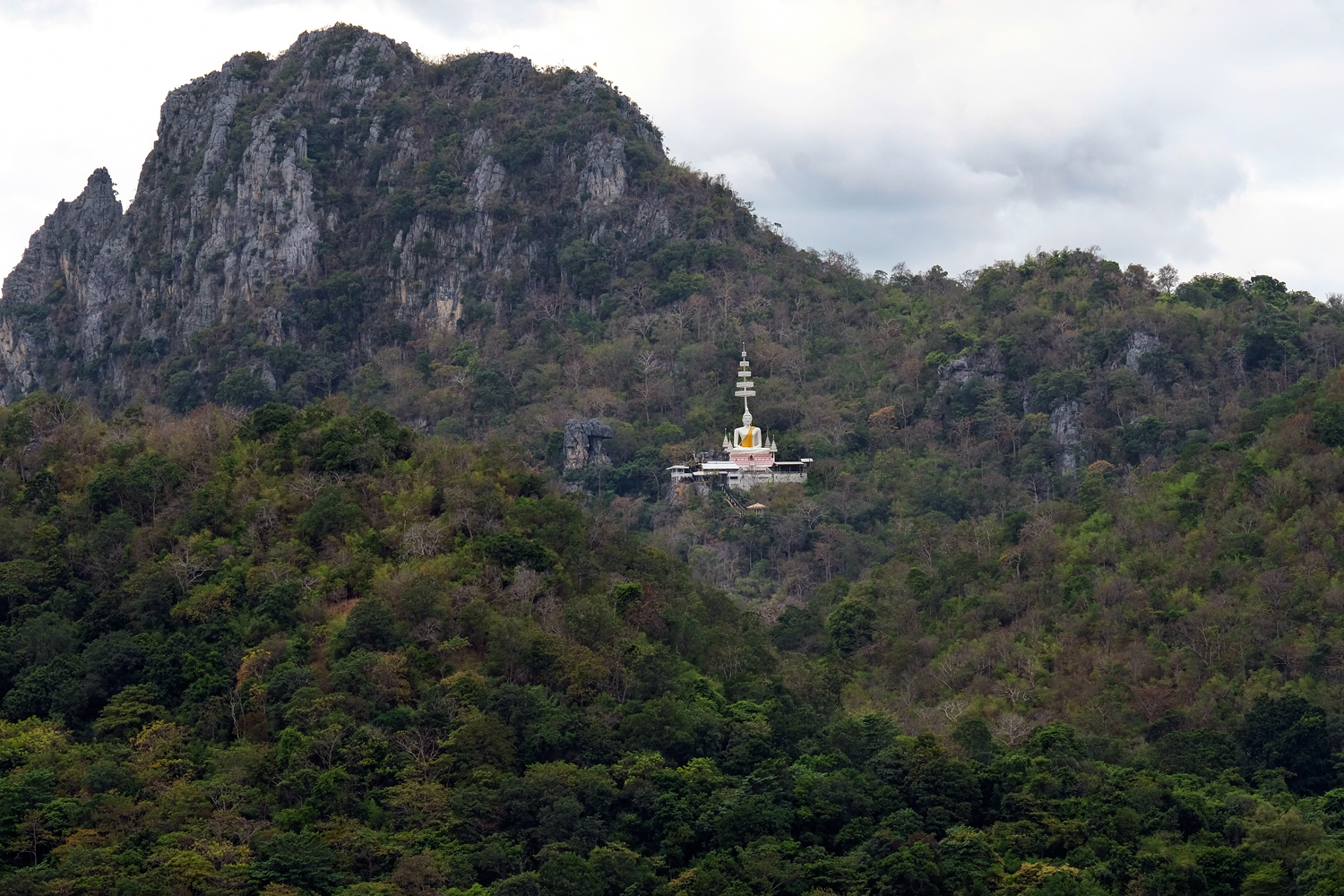 And off we went to find the hillside Buddha.
And off we went to find the hillside Buddha.
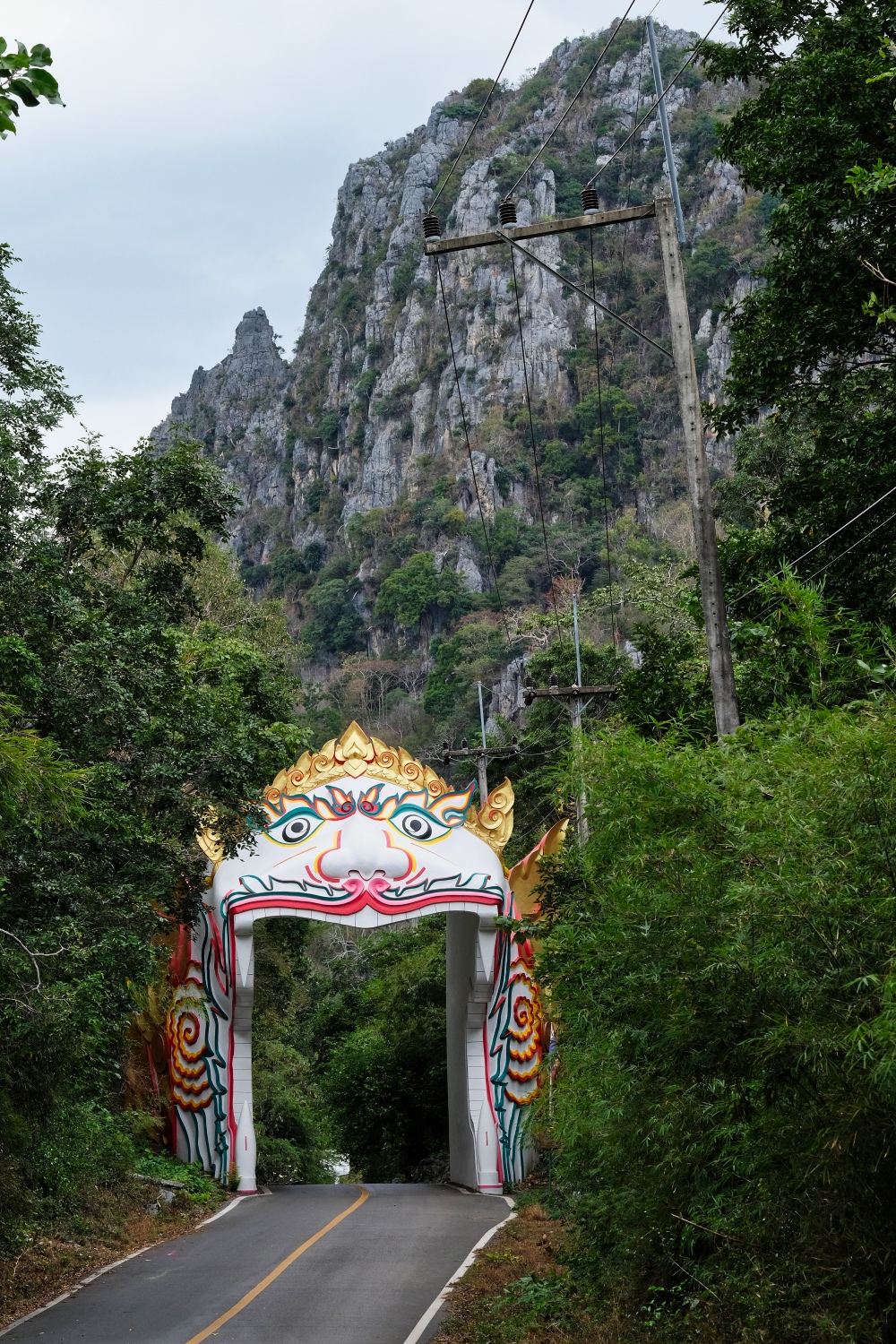 This MUST be the road!
This MUST be the road!
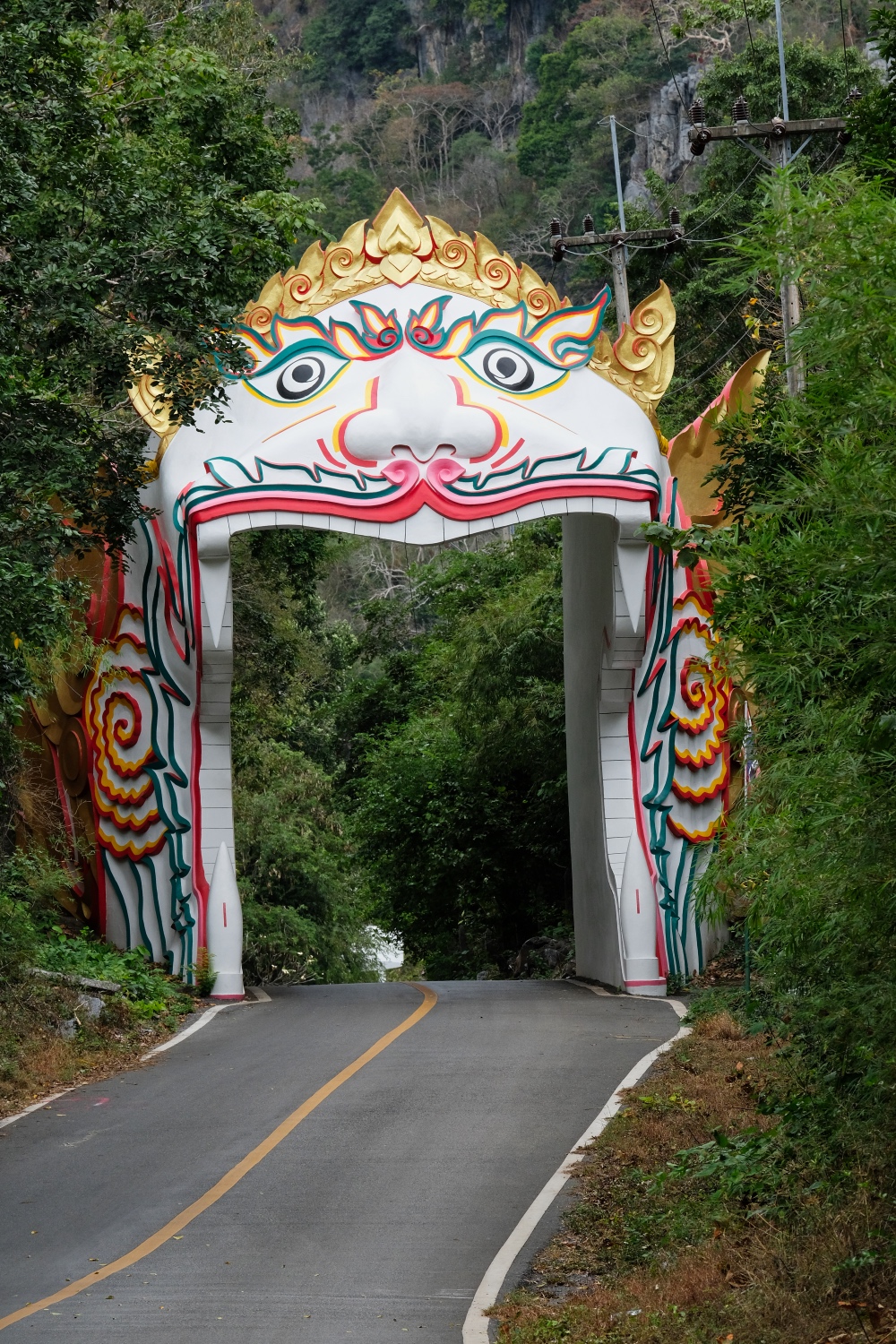 Yes, all the roads I have ever taken have led me to this place . . . the highway to hell!
Yes, all the roads I have ever taken have led me to this place . . . the highway to hell!
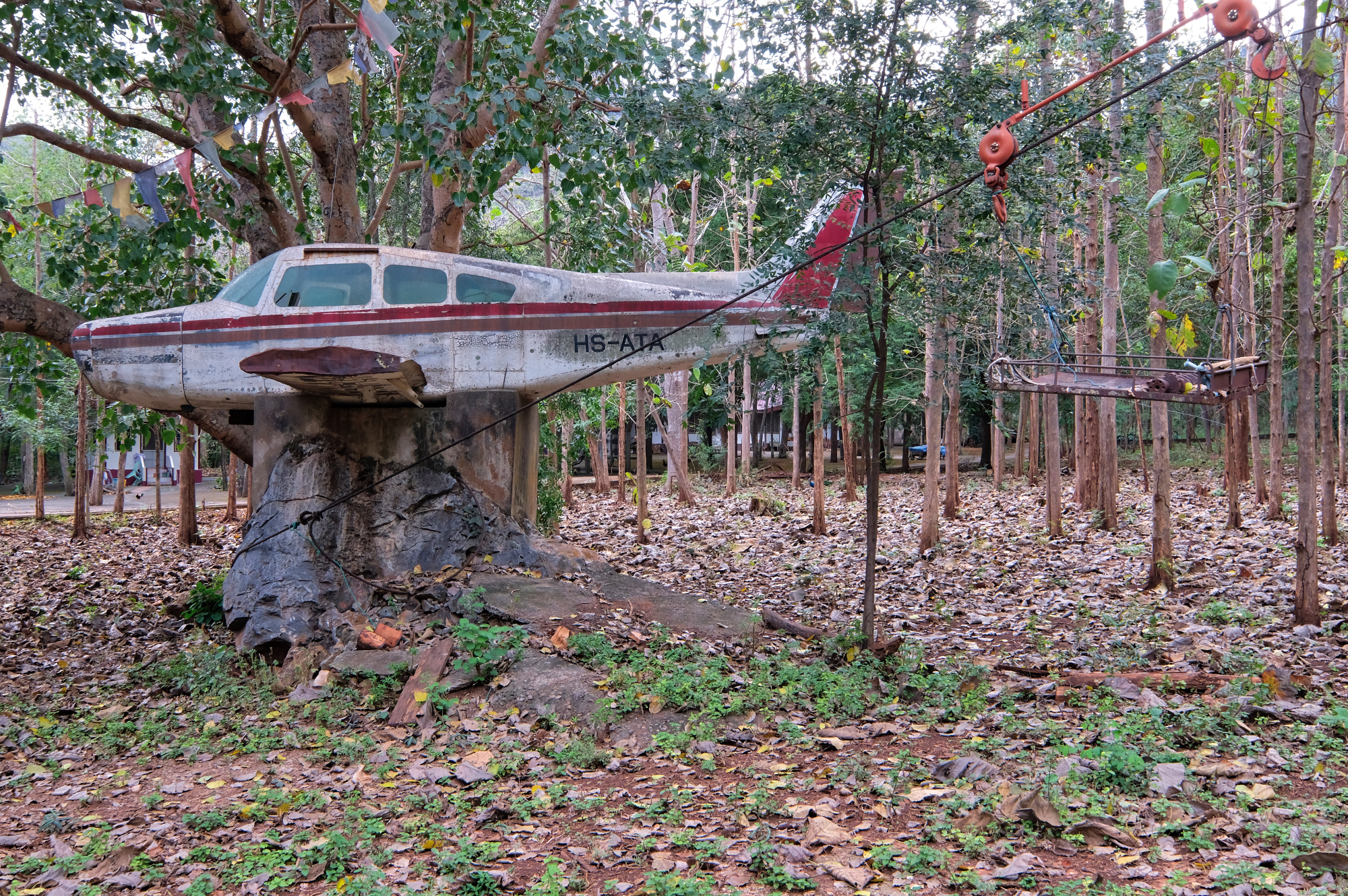 The Peacock Temple was . . . . very interesting, that is for sure.
The Peacock Temple was . . . . very interesting, that is for sure.
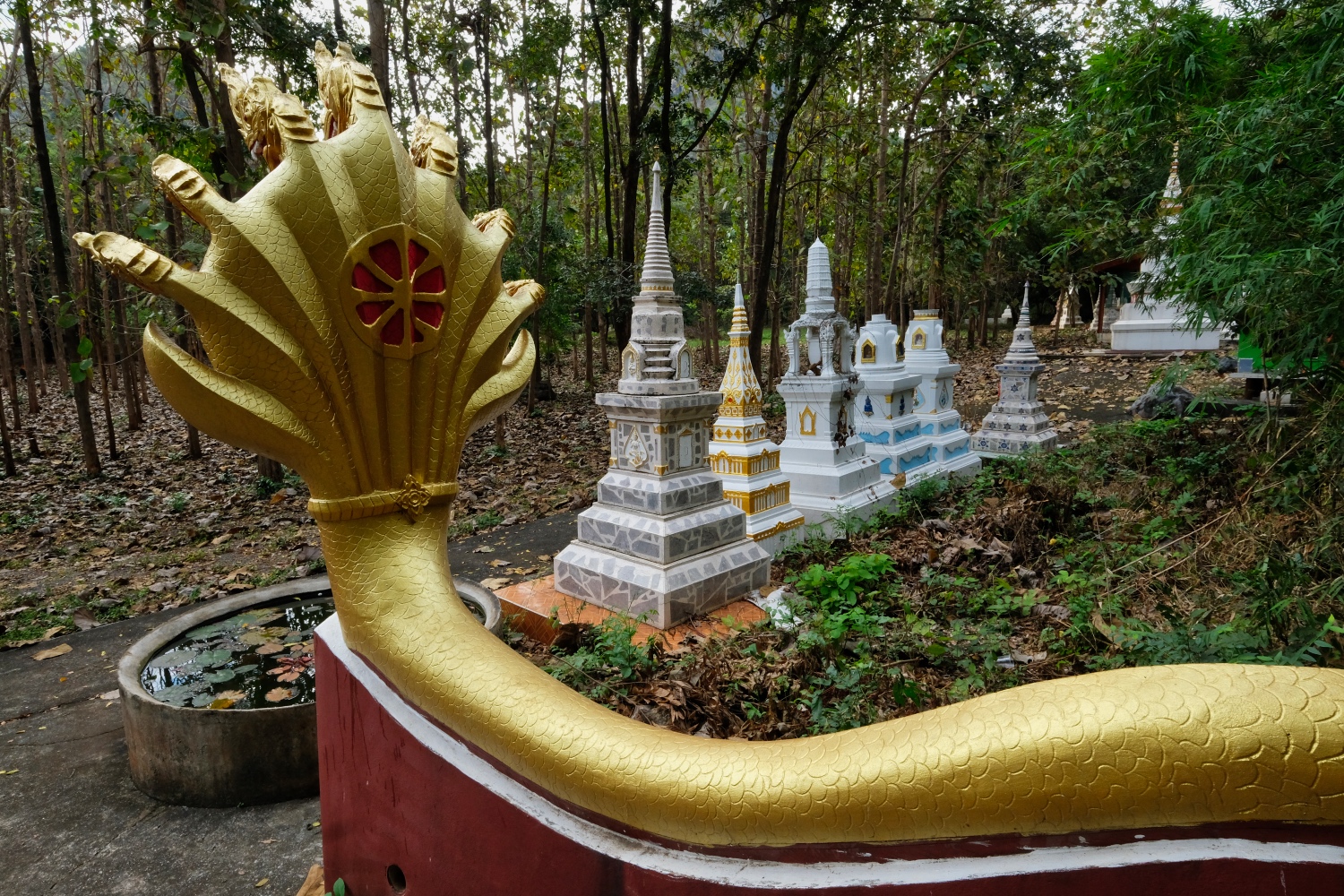 Chedis . . . and the snake-railed steps up to the big Buddha on the hill.
Chedis . . . and the snake-railed steps up to the big Buddha on the hill.
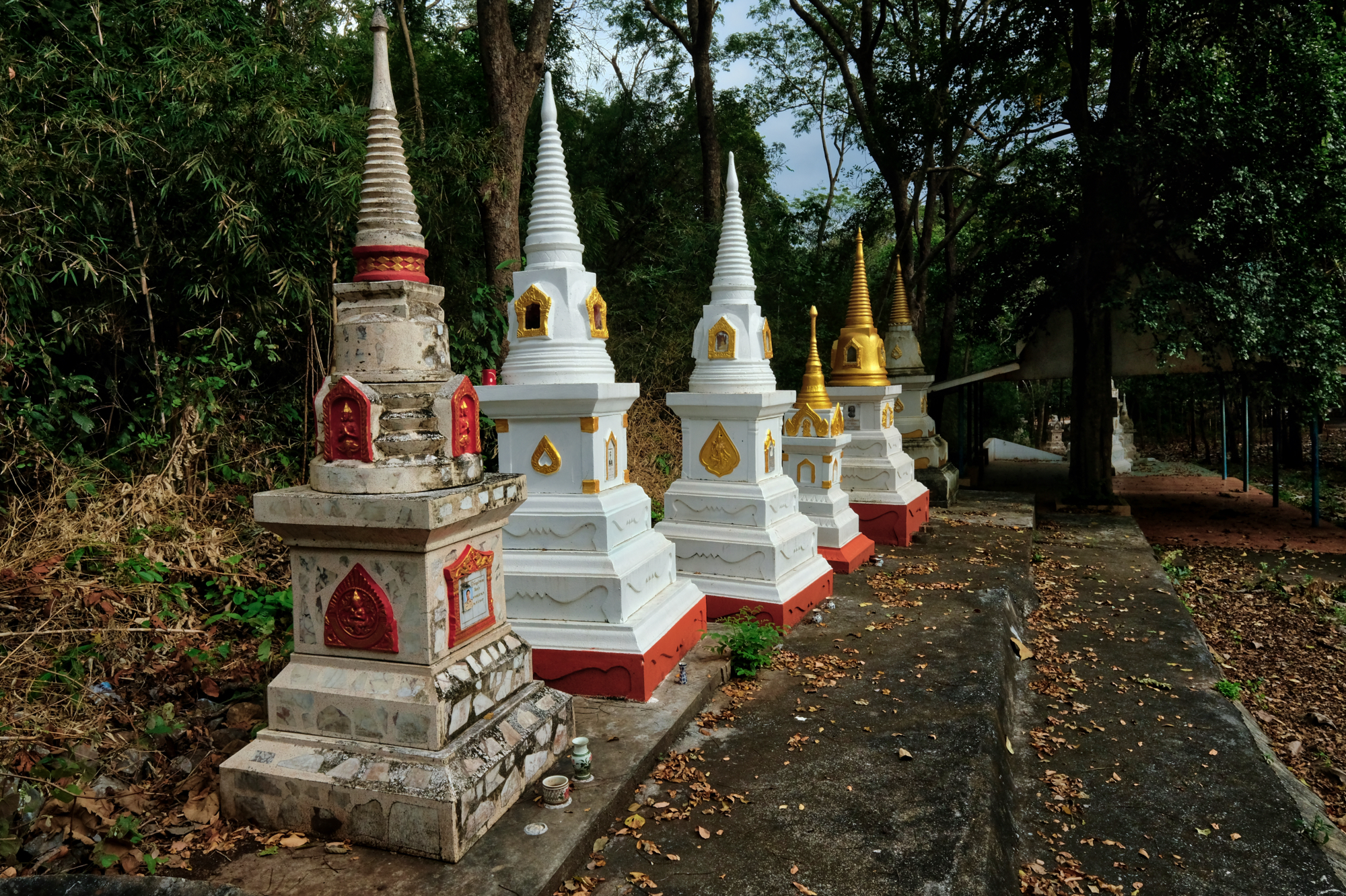 I love these rural Wats . . . in nature and not overly tended.
I love these rural Wats . . . in nature and not overly tended.
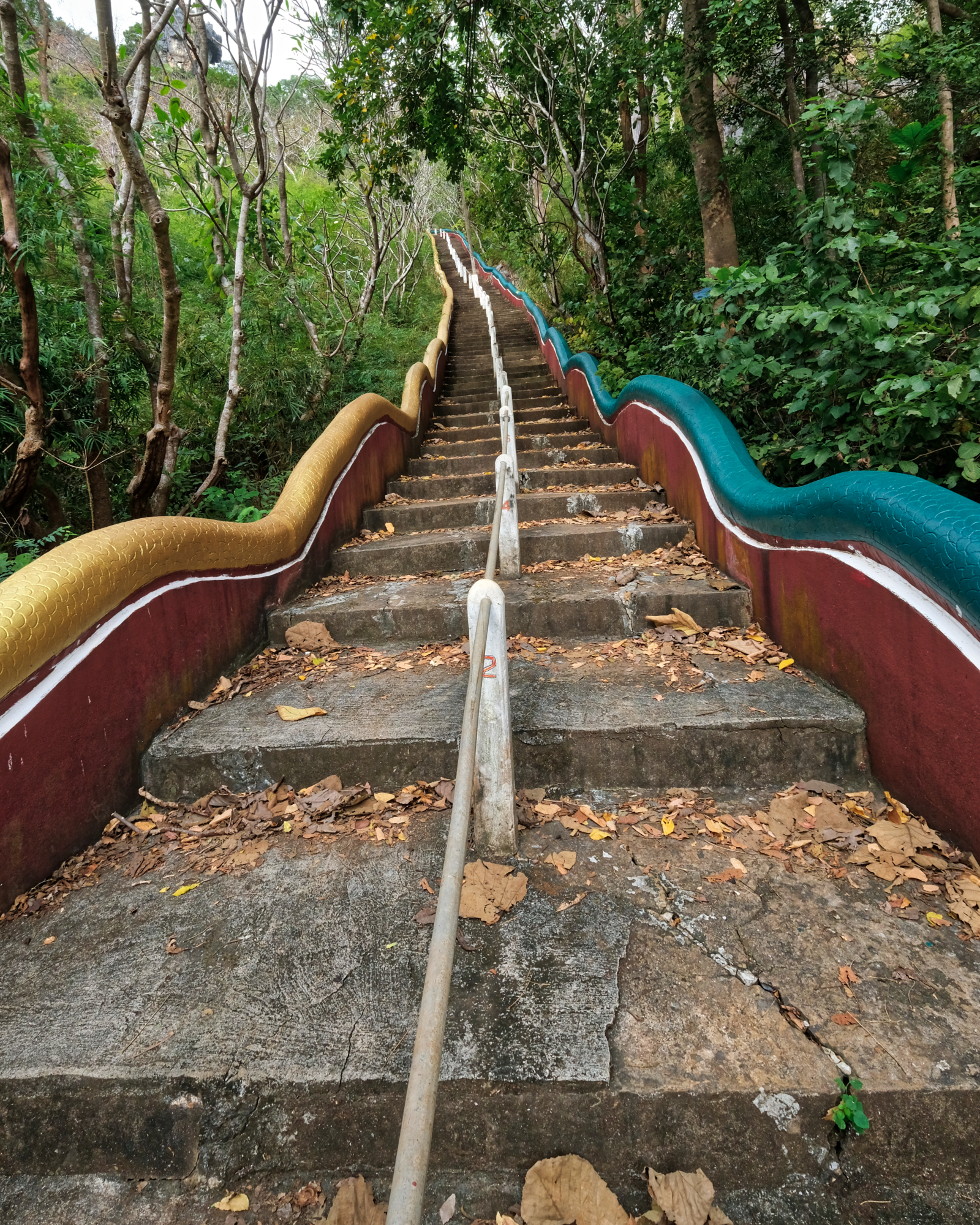 And so we started the climb up the temple stairs . . .
And so we started the climb up the temple stairs . . .
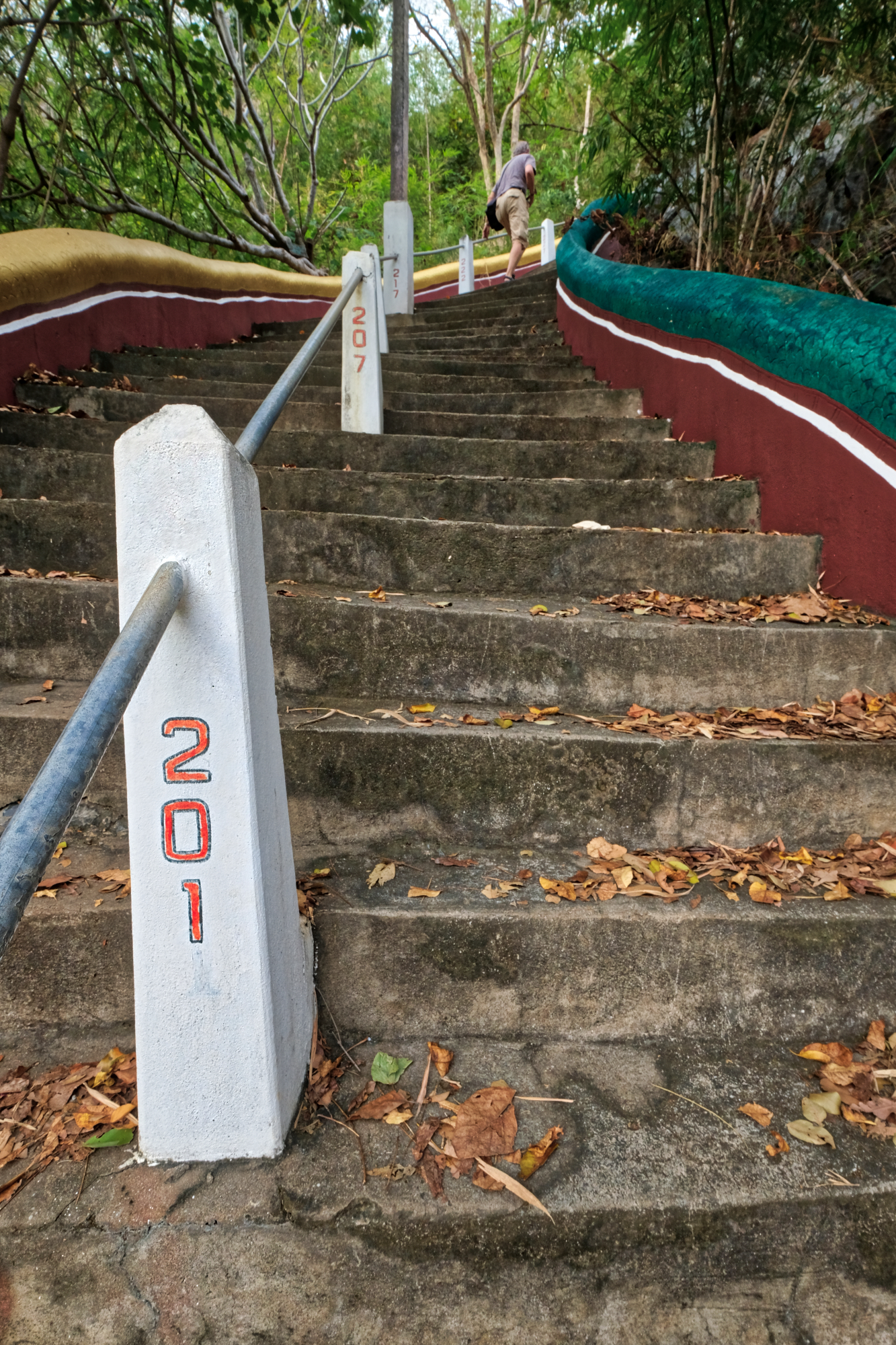 And up and up we went. The stairs were numbered, so we didn't have to count them ourselves. However, we did not know how many total steps there were going to be!
And up and up we went. The stairs were numbered, so we didn't have to count them ourselves. However, we did not know how many total steps there were going to be!
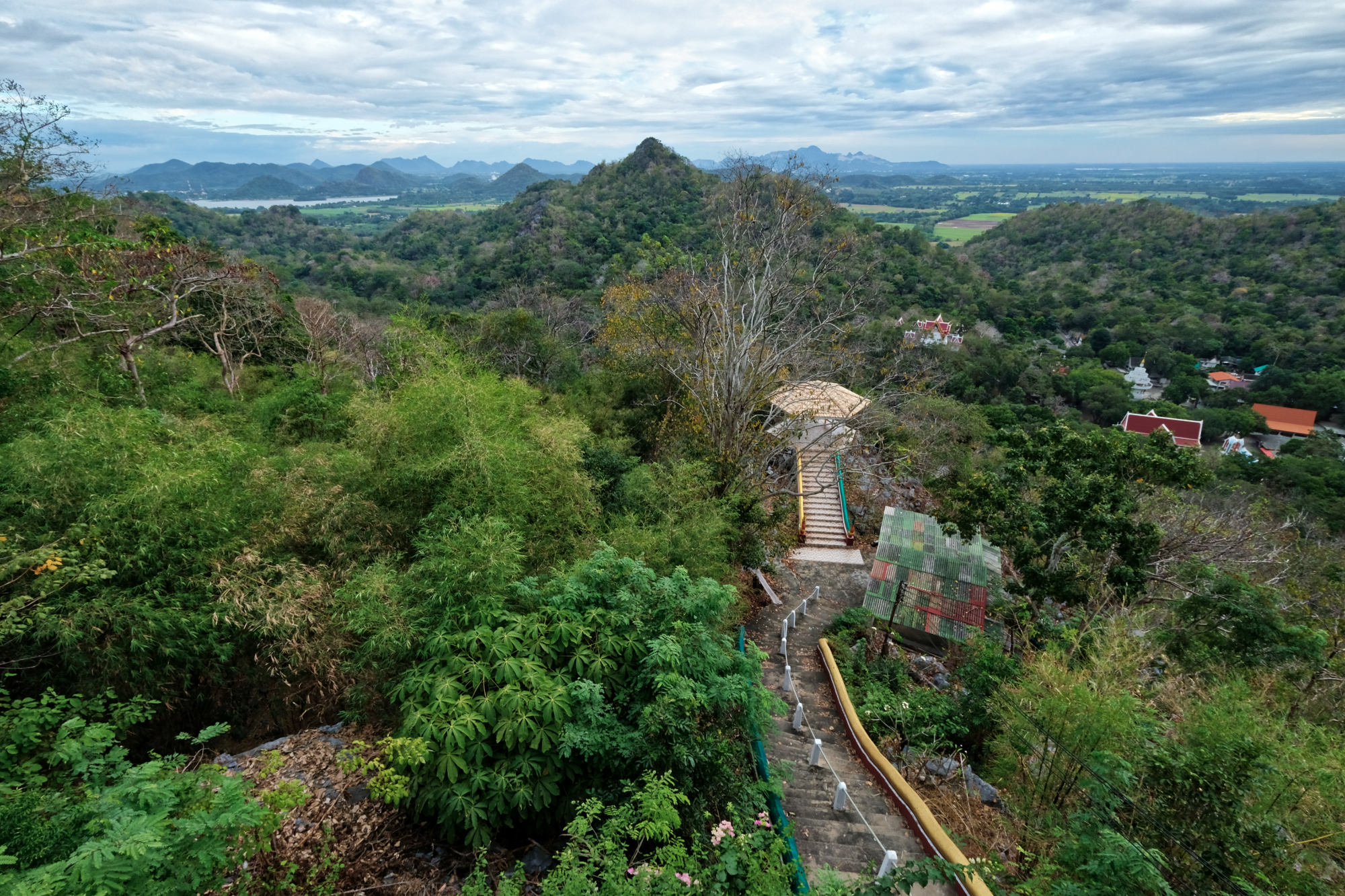 The walk to the top (436 steps in all) was well worth it . . . the view across the Thai landscape was remarkable!
The walk to the top (436 steps in all) was well worth it . . . the view across the Thai landscape was remarkable!
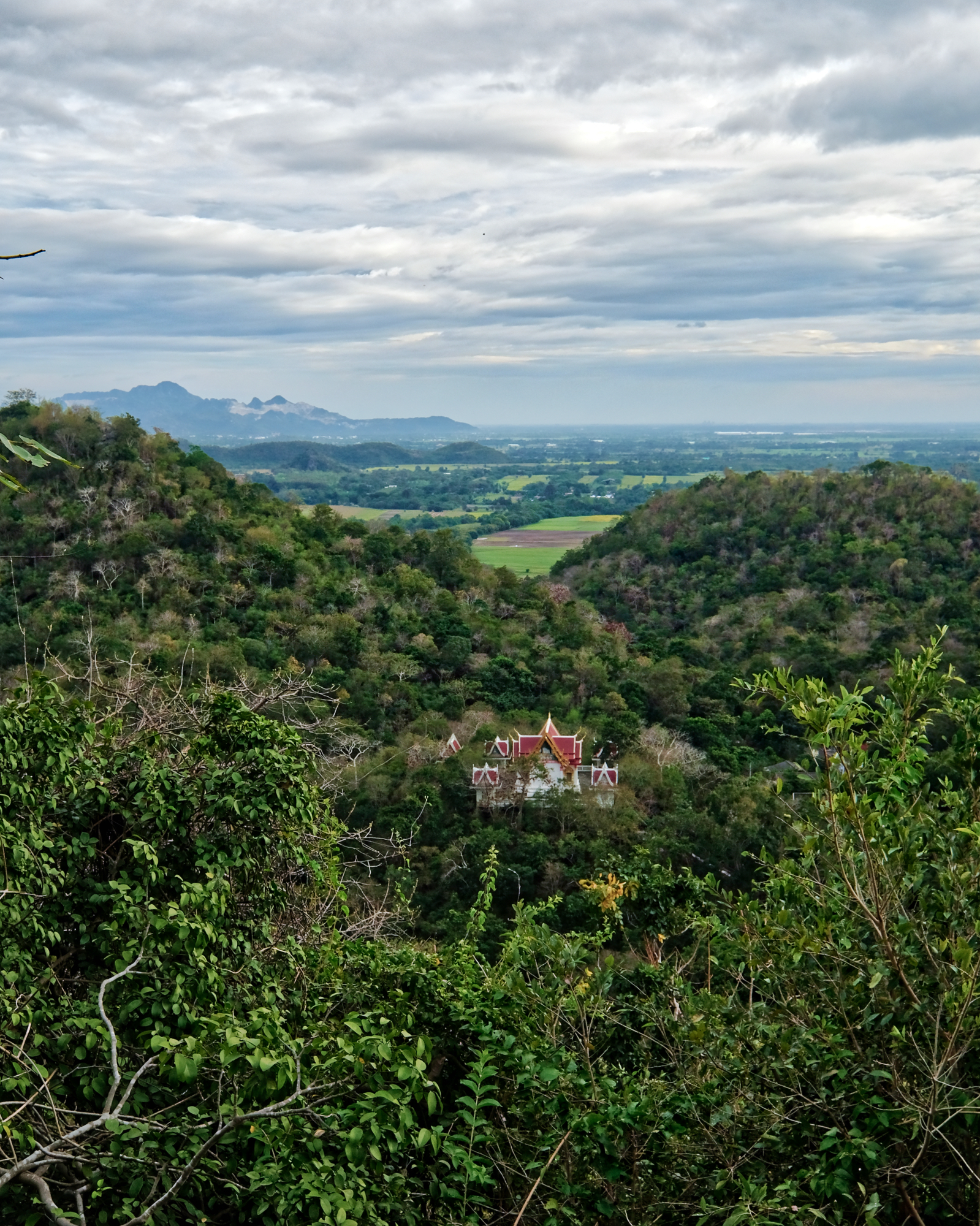 The Peacock Temple below.
The Peacock Temple below.
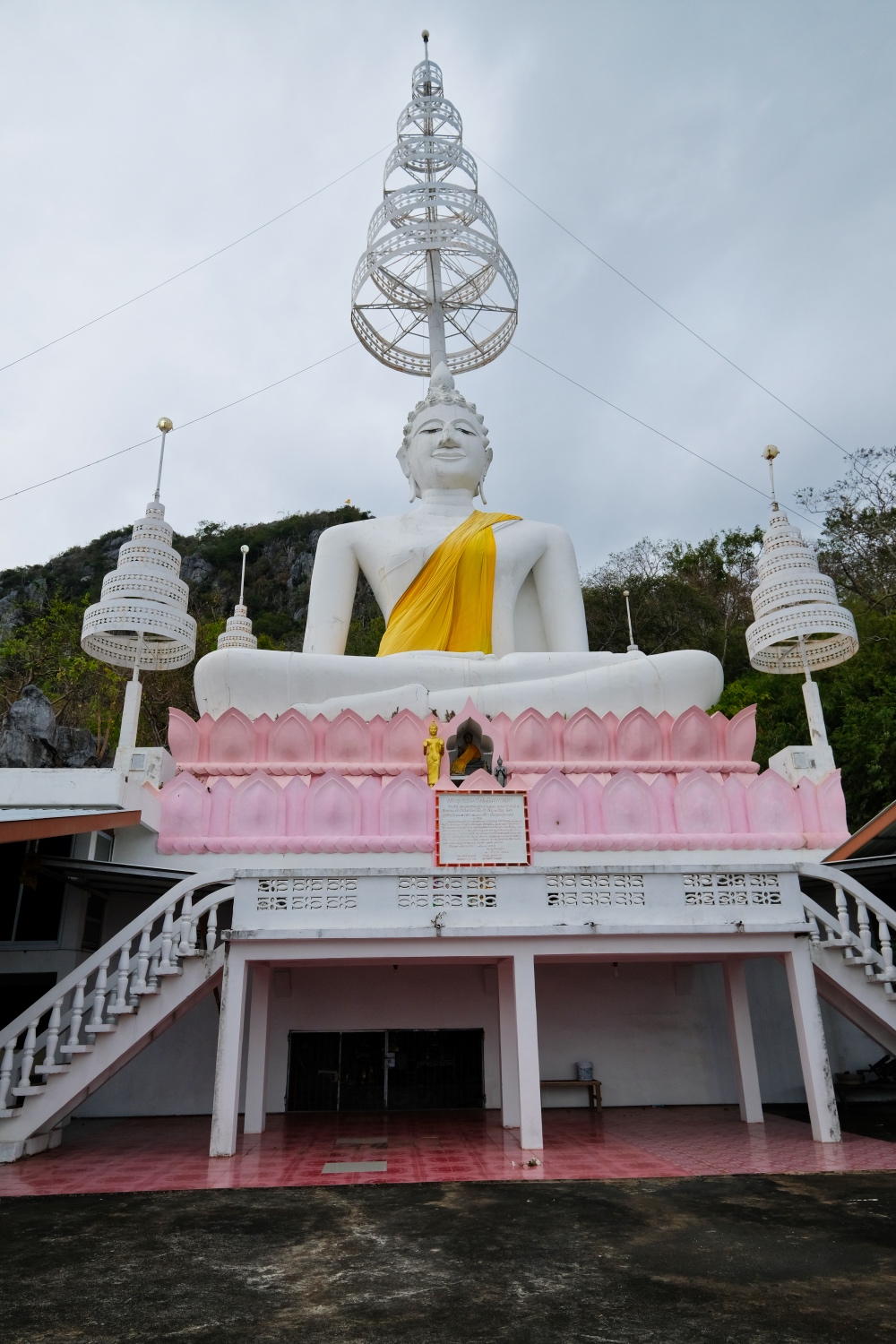 What we came to see: a giant Buddha image. Very beautiful.
What we came to see: a giant Buddha image. Very beautiful.
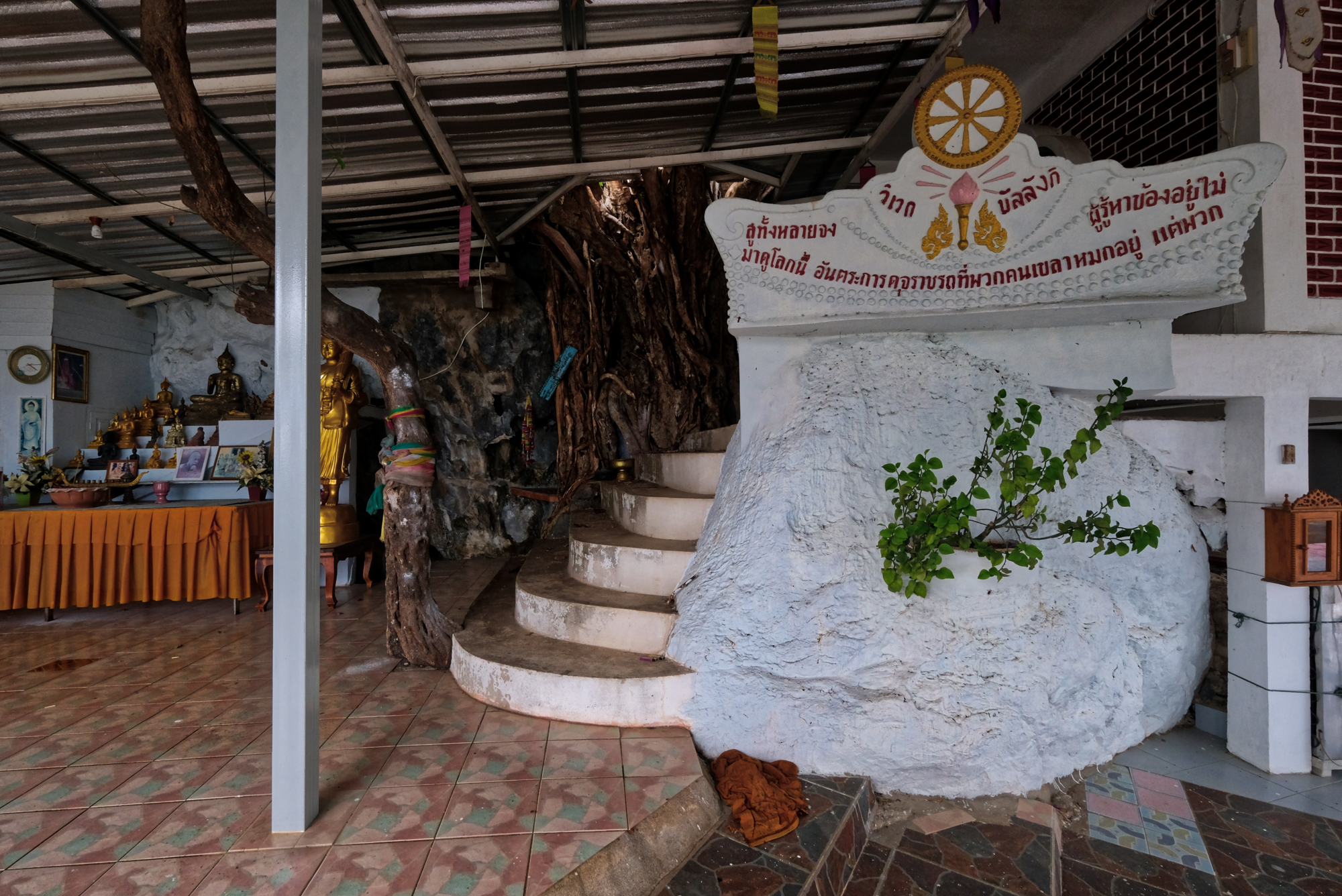 There were several altars in and around the top of the climb . . . as well as some tunnels that went inside the mountain . . . we didn't explore these.
There were several altars in and around the top of the climb . . . as well as some tunnels that went inside the mountain . . . we didn't explore these.
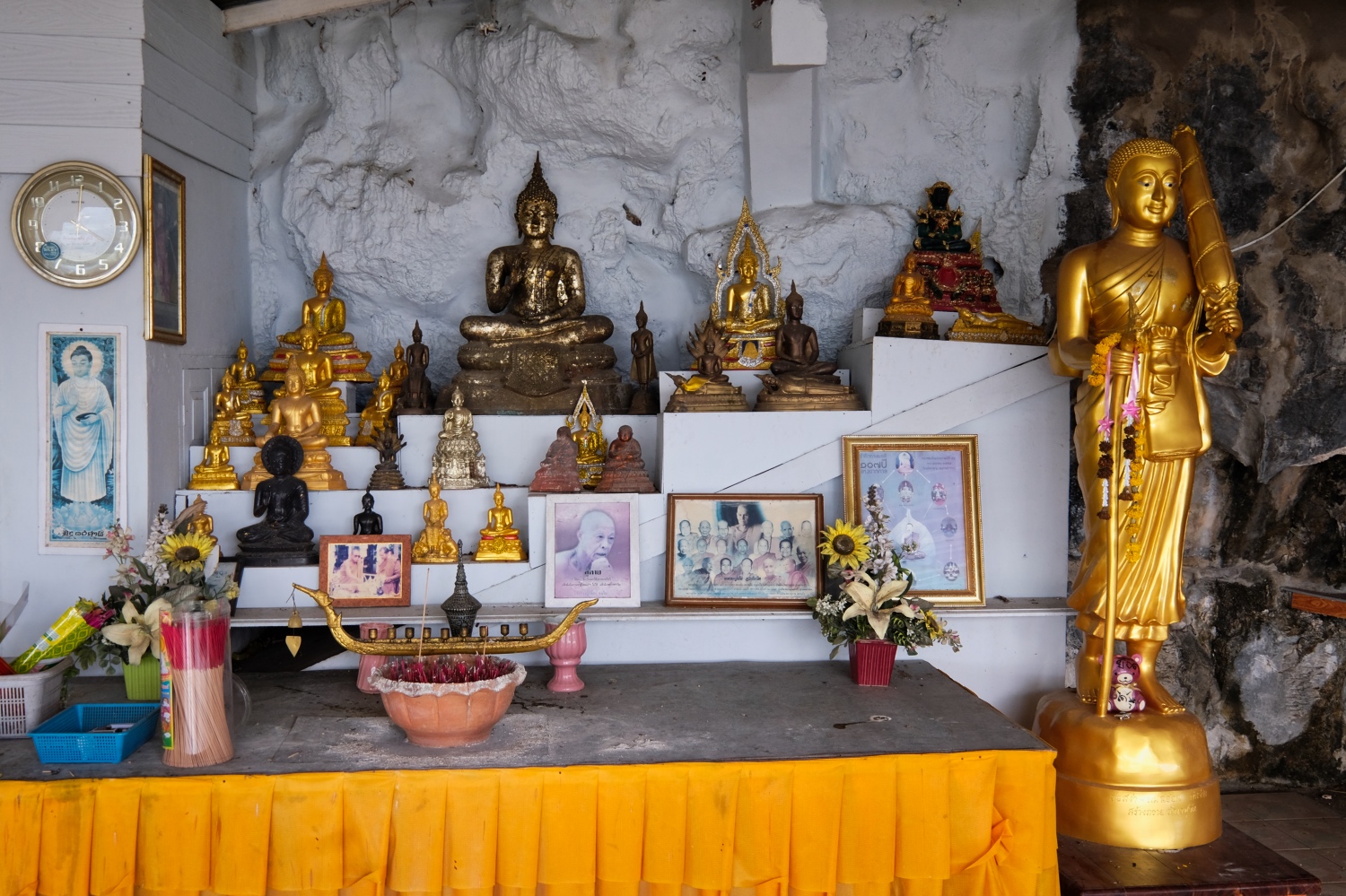 4:00pm at the top of a hill enjoying the view and the various altars.
4:00pm at the top of a hill enjoying the view and the various altars.
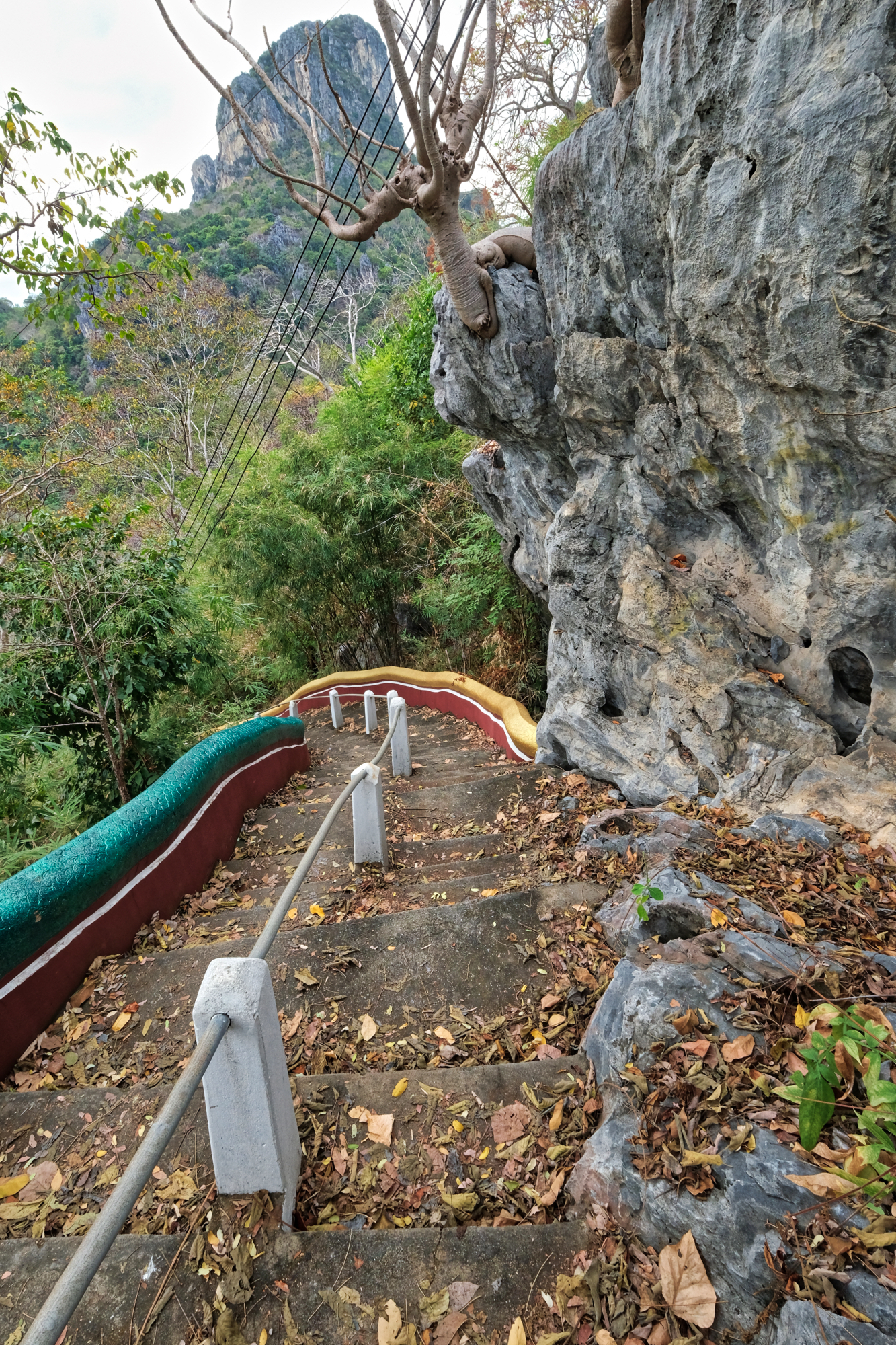 After 30 minutes on the top of the hill, we made our way back down the dry leaf covered 436 steps.
After 30 minutes on the top of the hill, we made our way back down the dry leaf covered 436 steps.
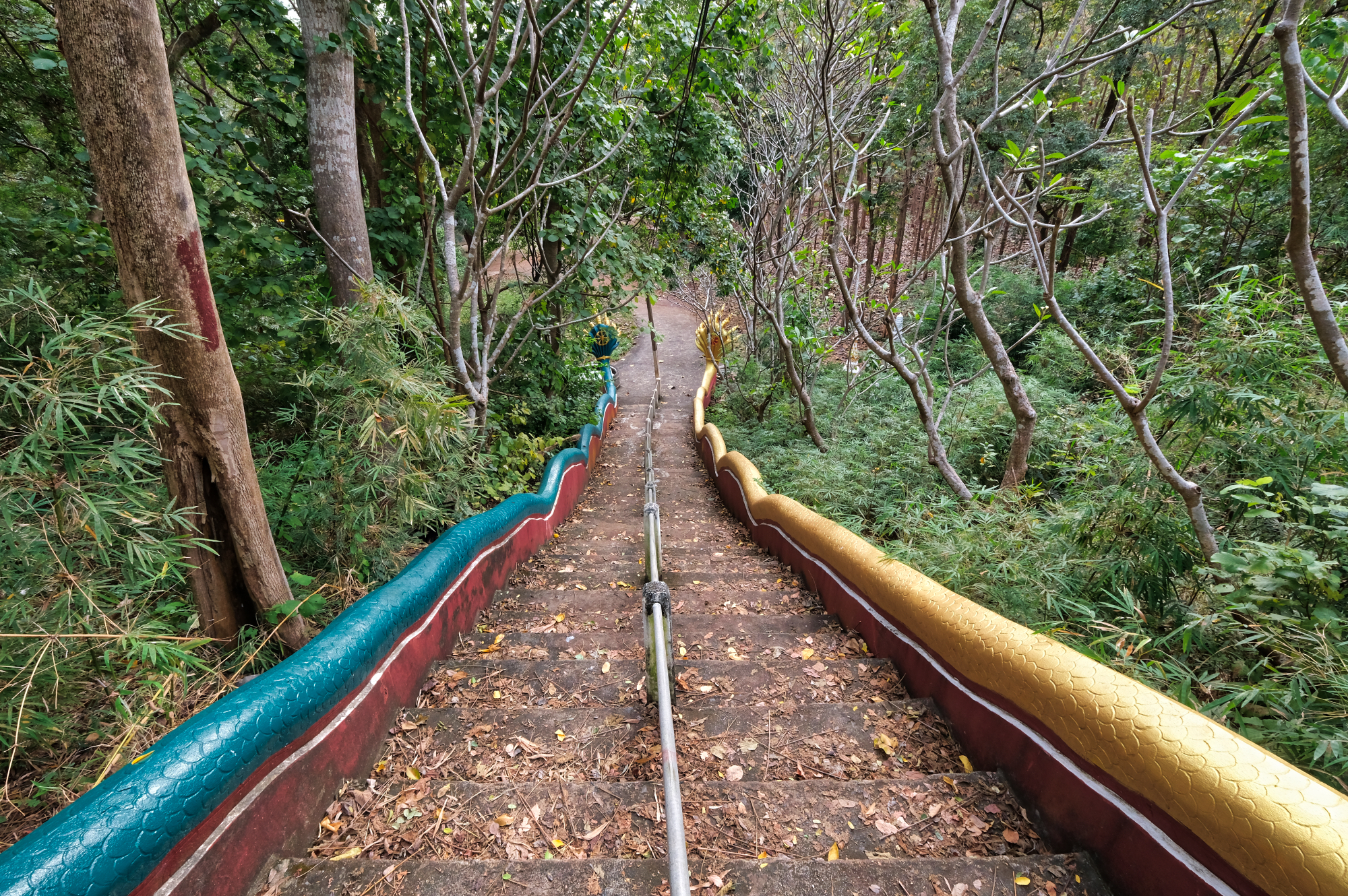 At last . . . the bottom in sight. And then into the car and off to a Wat we could see from the hilltop Buddha.
At last . . . the bottom in sight. And then into the car and off to a Wat we could see from the hilltop Buddha.
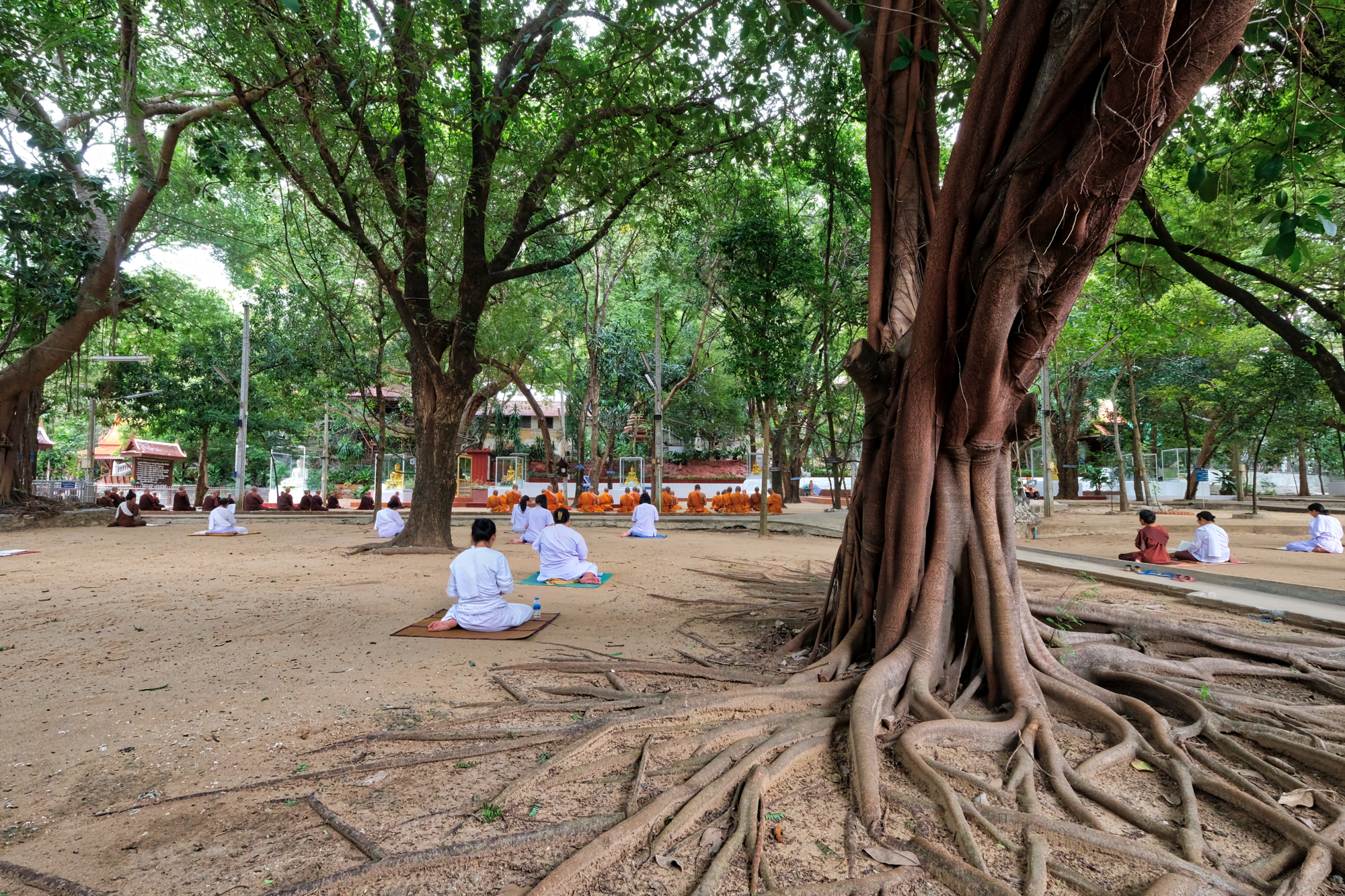 We arrived at a temple hosting a meditation retreat just at the moment they bikkus were in meditation.
We arrived at a temple hosting a meditation retreat just at the moment they bikkus were in meditation.
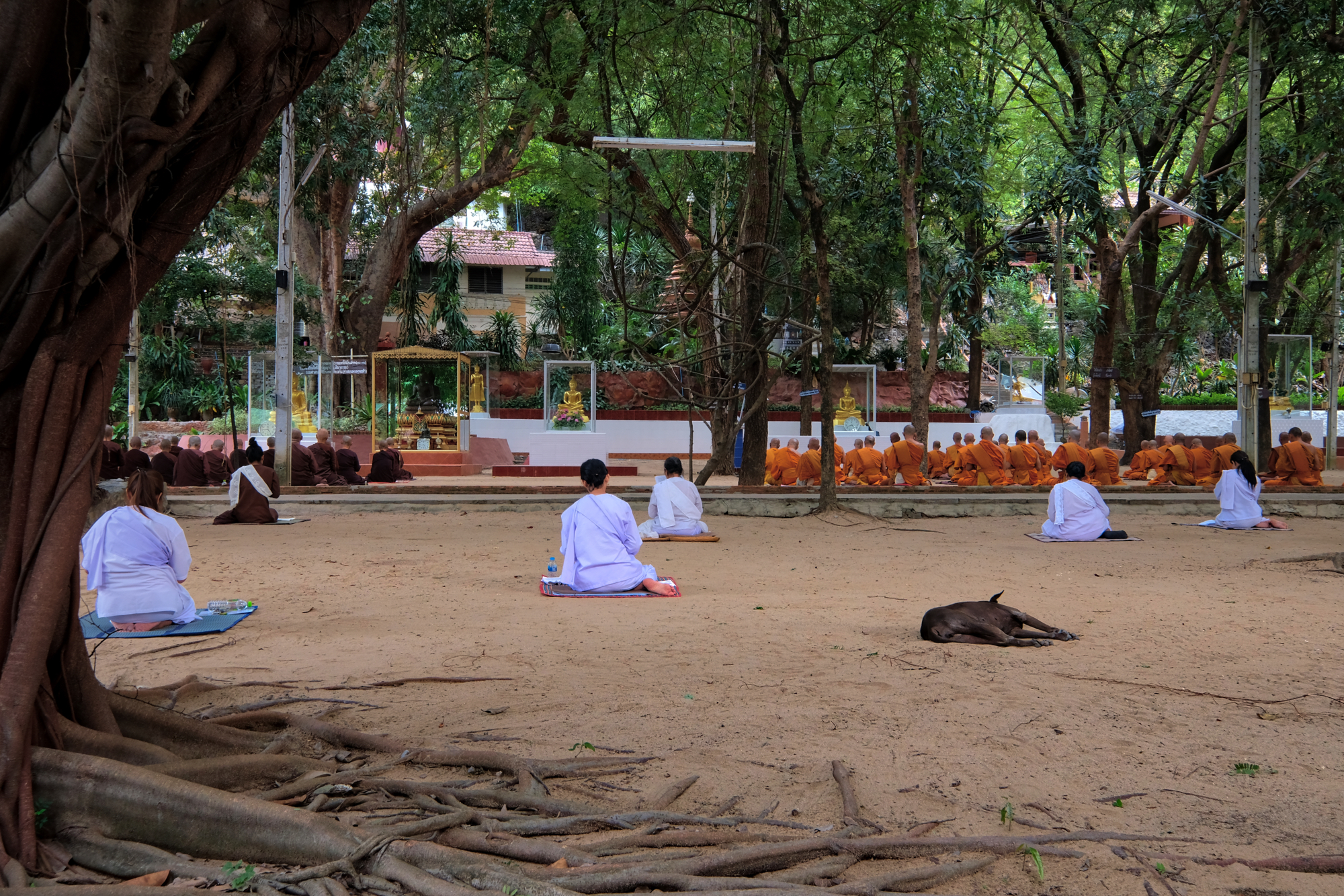 Such a beautifully spiritual place. We were at first reluctant to take photographs until a Wat attendant came over and indicated that it was OK for us to use our cameras. We took full advantage.
Such a beautifully spiritual place. We were at first reluctant to take photographs until a Wat attendant came over and indicated that it was OK for us to use our cameras. We took full advantage.
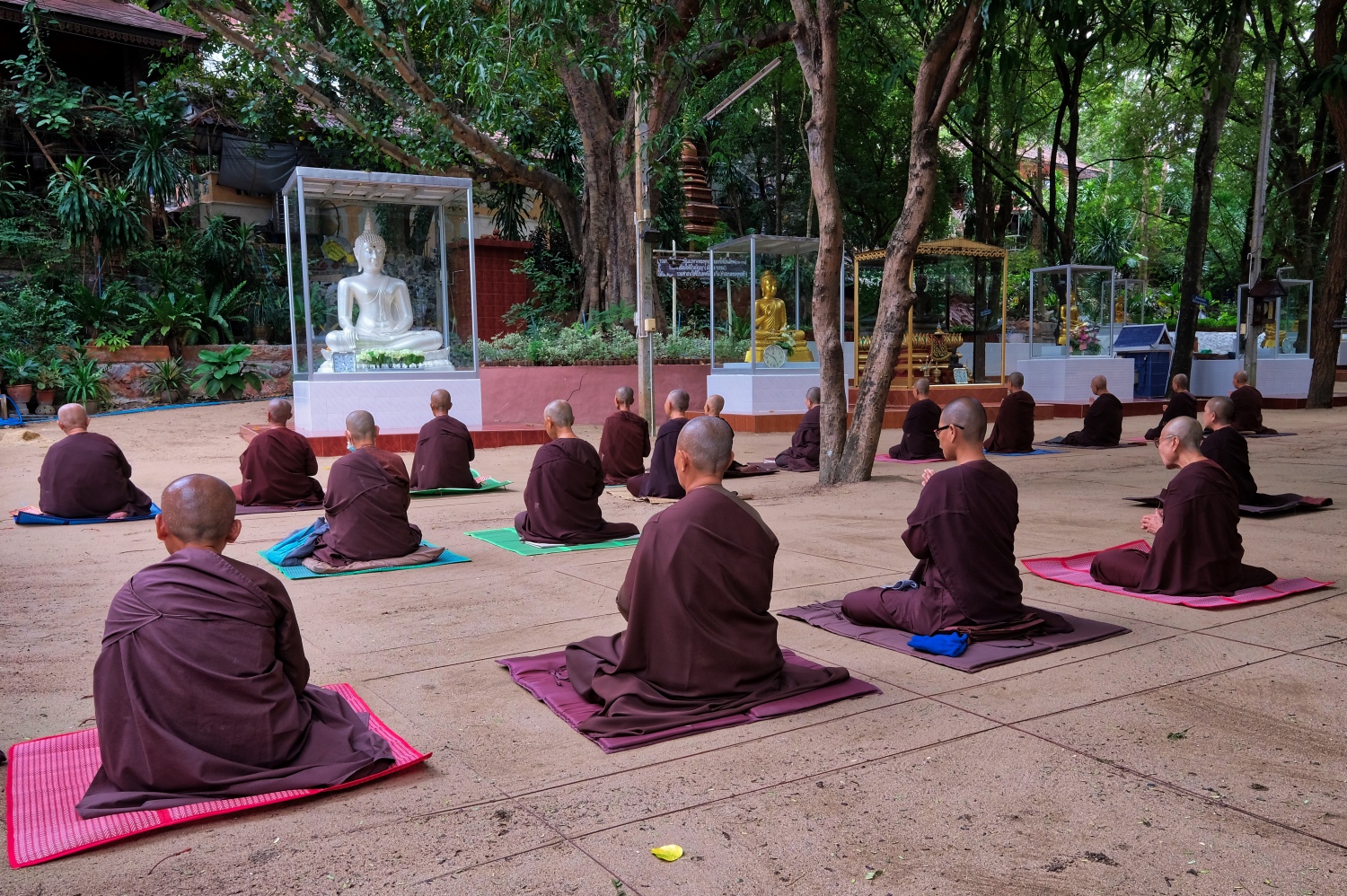 These Buddhist 'nuns' were in colored robes normally associated with Tibetan Buddhists.
These Buddhist 'nuns' were in colored robes normally associated with Tibetan Buddhists.
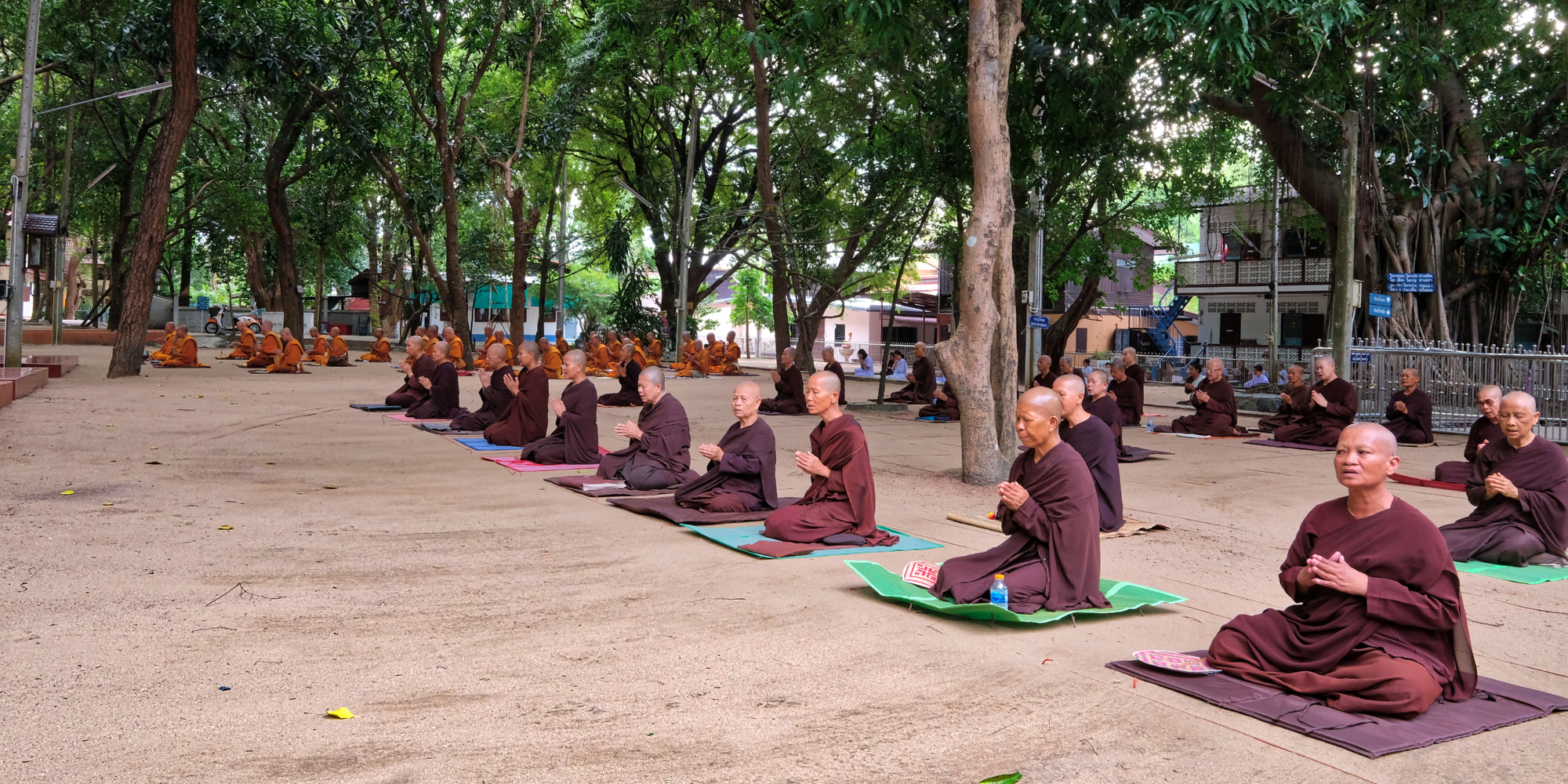 We did our best not to disturb the meditating nuns and monks. Here, a photo during their break. Monks on one side, nuns on the other.
We did our best not to disturb the meditating nuns and monks. Here, a photo during their break. Monks on one side, nuns on the other.
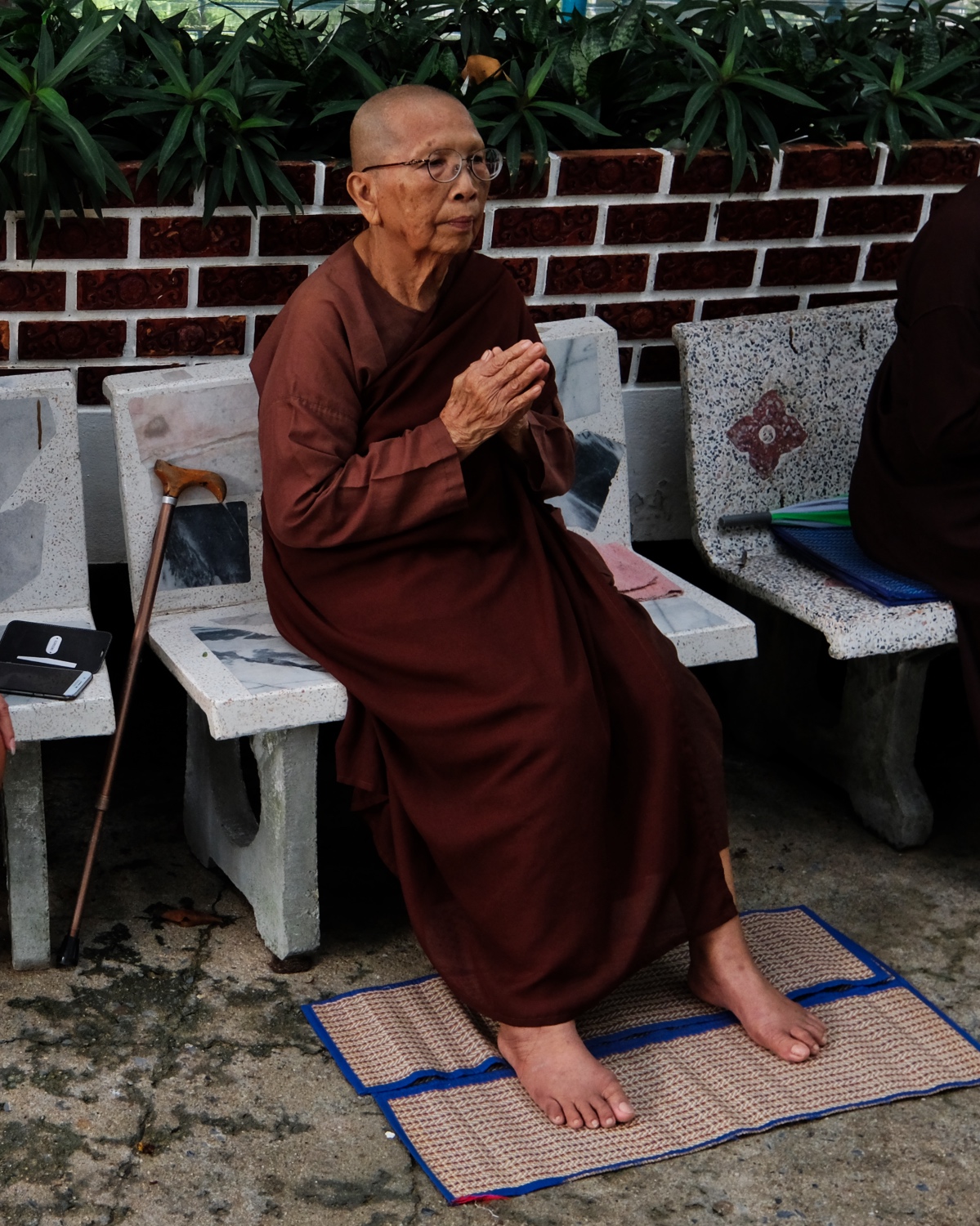 An elderly nun.
An elderly nun.
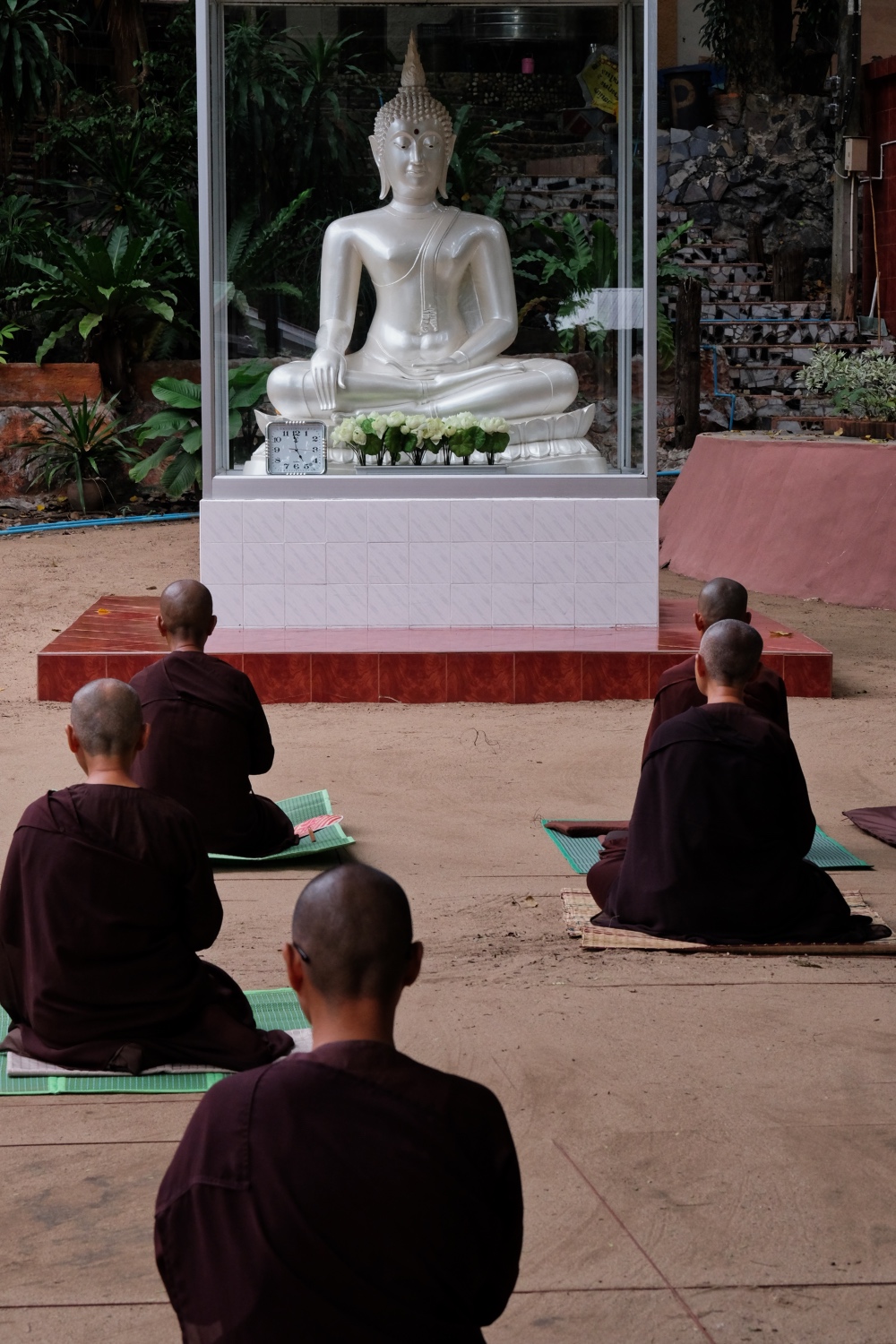 I felt that this was a meditation center I would enjoy attending.
I felt that this was a meditation center I would enjoy attending.
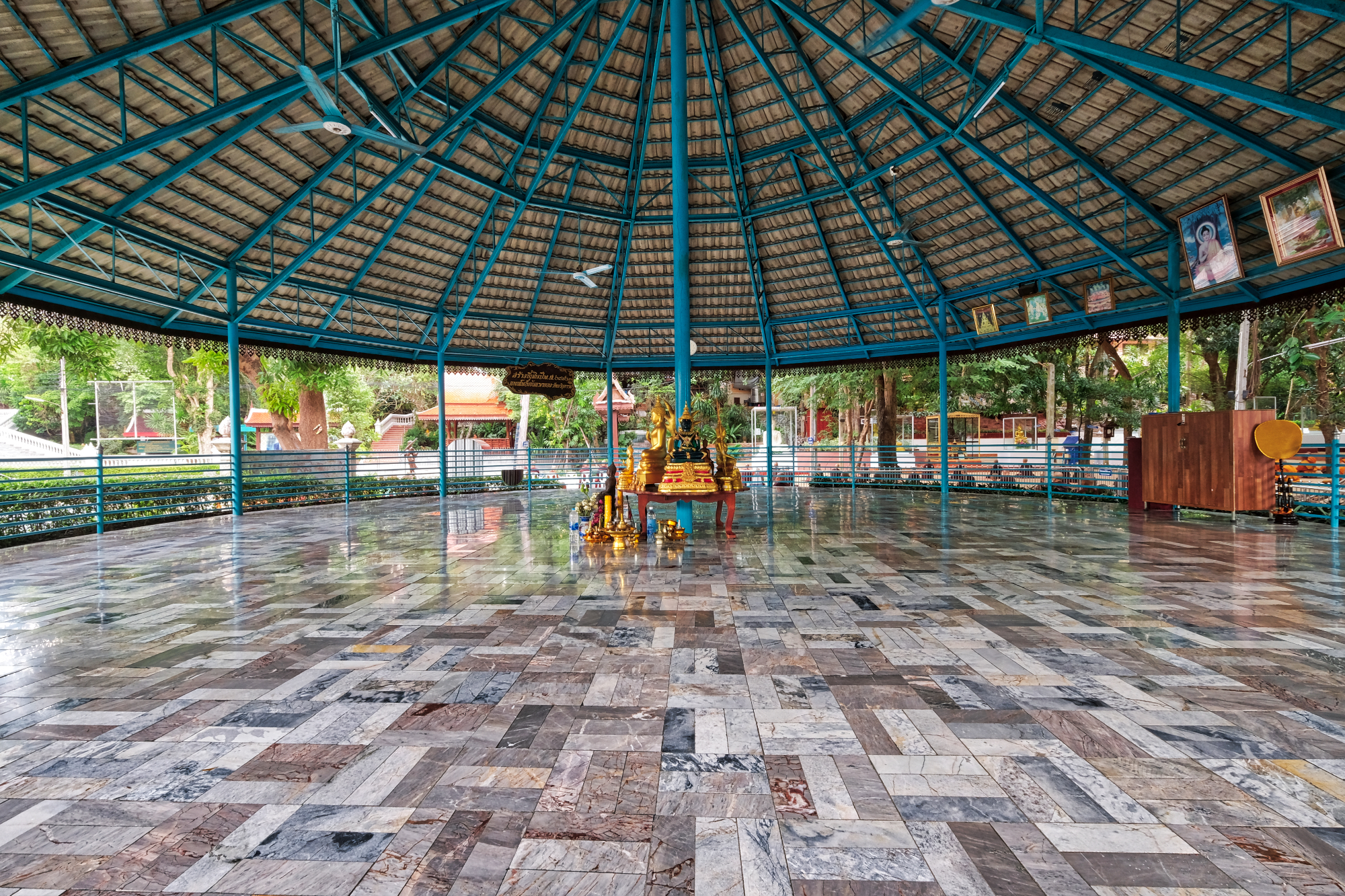 A beautiful 'sala' . . . one assumes it is used in case of heavy rain during meditation times.
A beautiful 'sala' . . . one assumes it is used in case of heavy rain during meditation times.
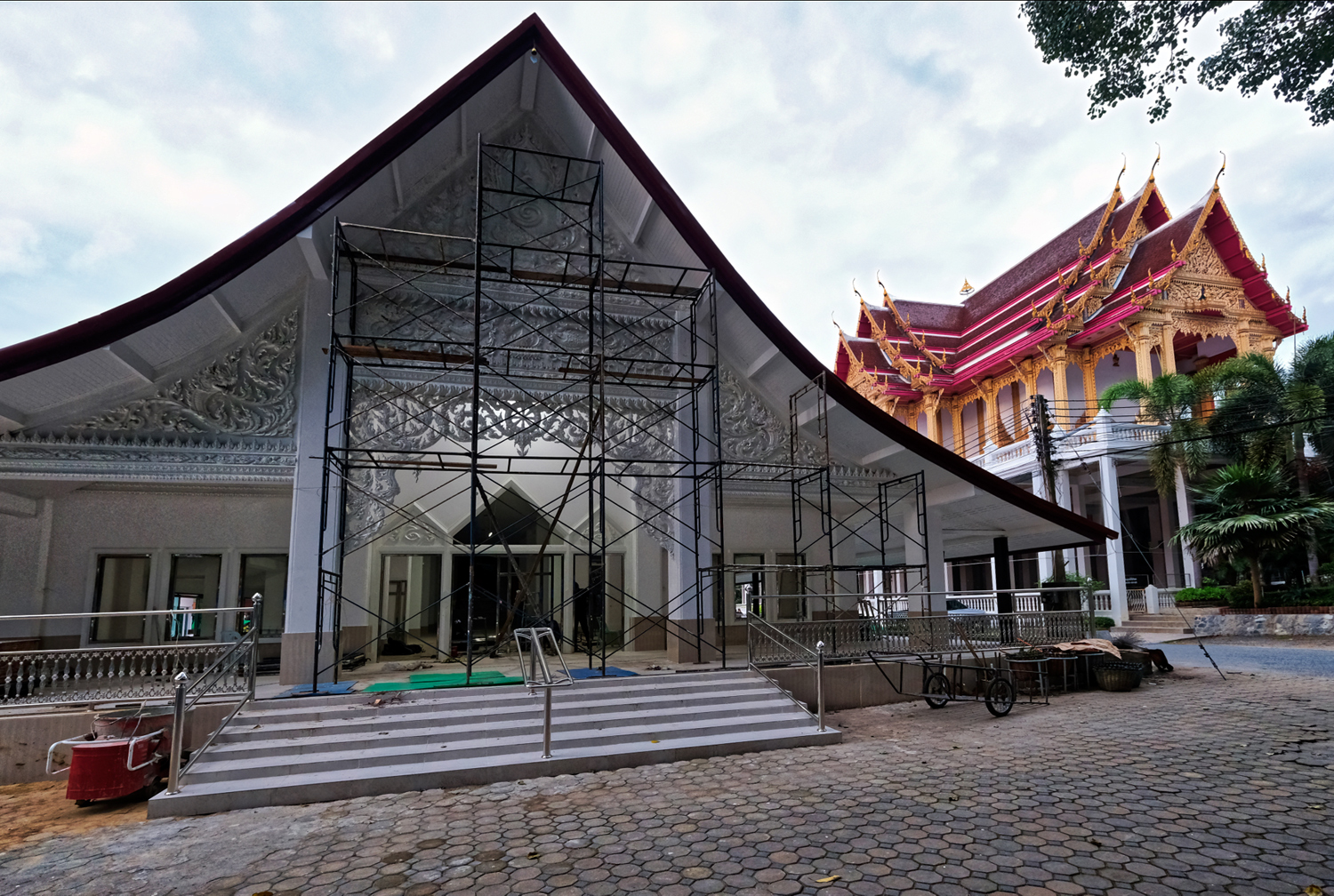 The Wat seemed very prosperous, with new structures under construction.
The Wat seemed very prosperous, with new structures under construction.
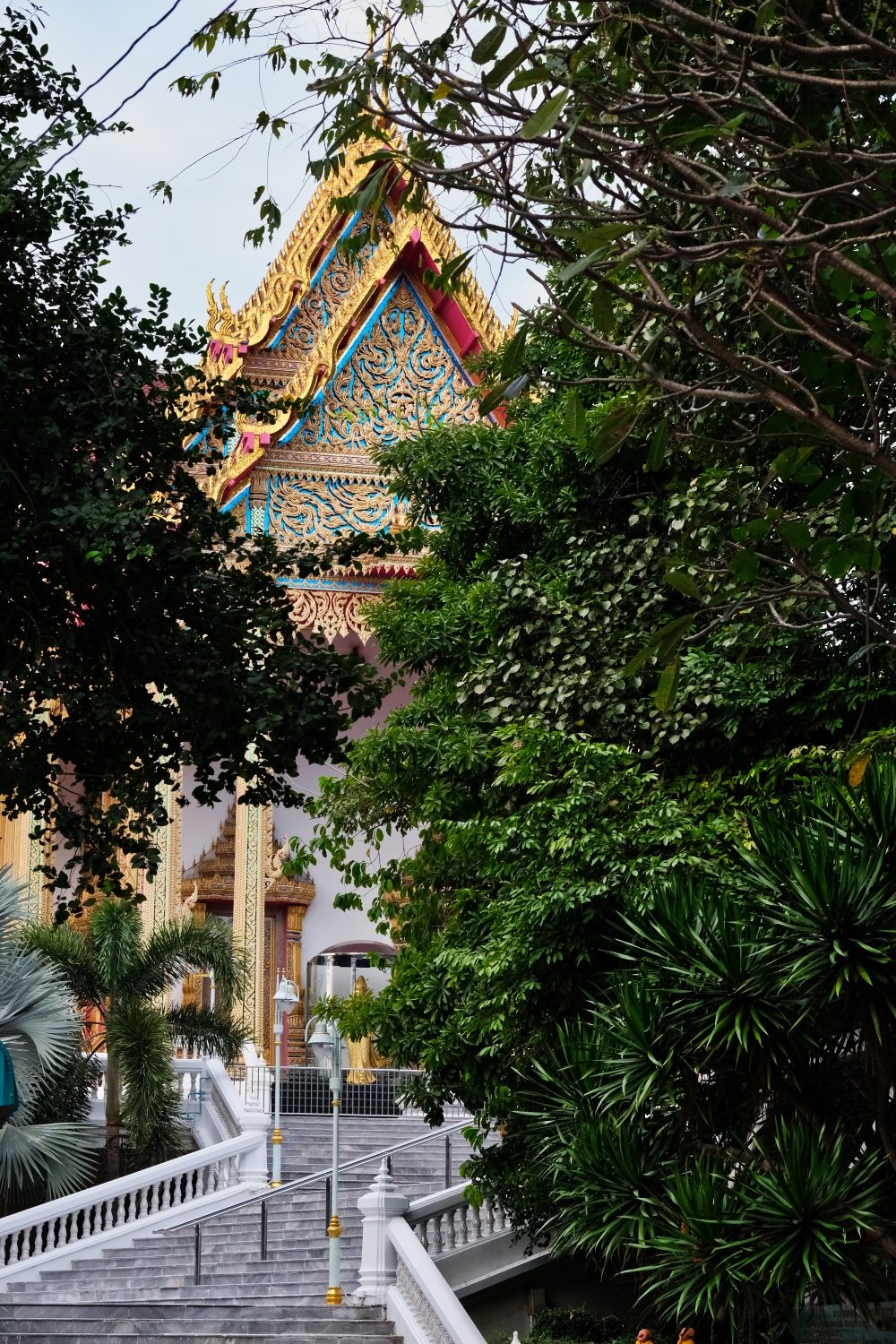 After the meditation stopped, John and I walked around the Wat grounds.
After the meditation stopped, John and I walked around the Wat grounds.
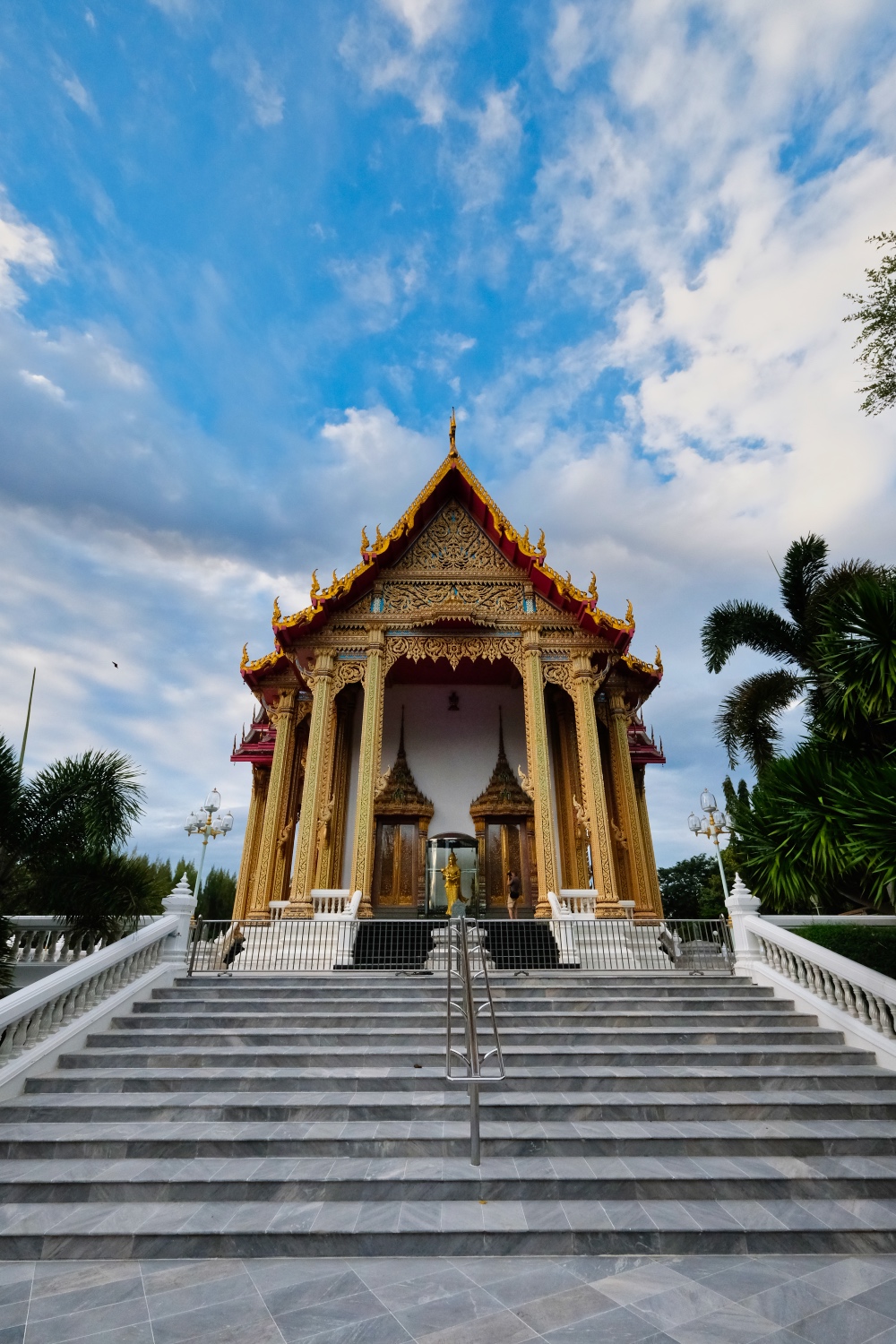 The main Wat structure.
The main Wat structure.
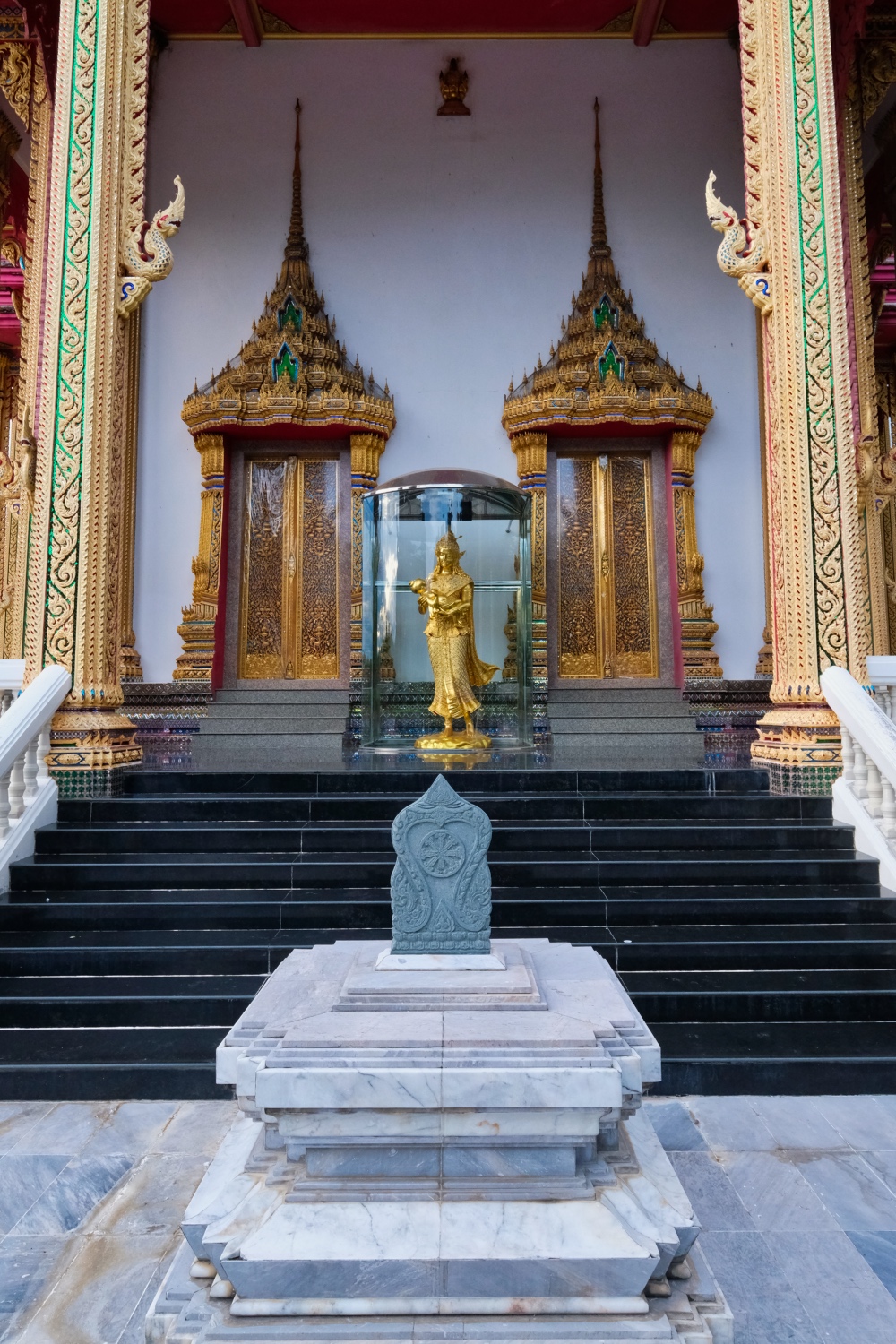 Fantastic design and excellent workmanship.
Fantastic design and excellent workmanship.
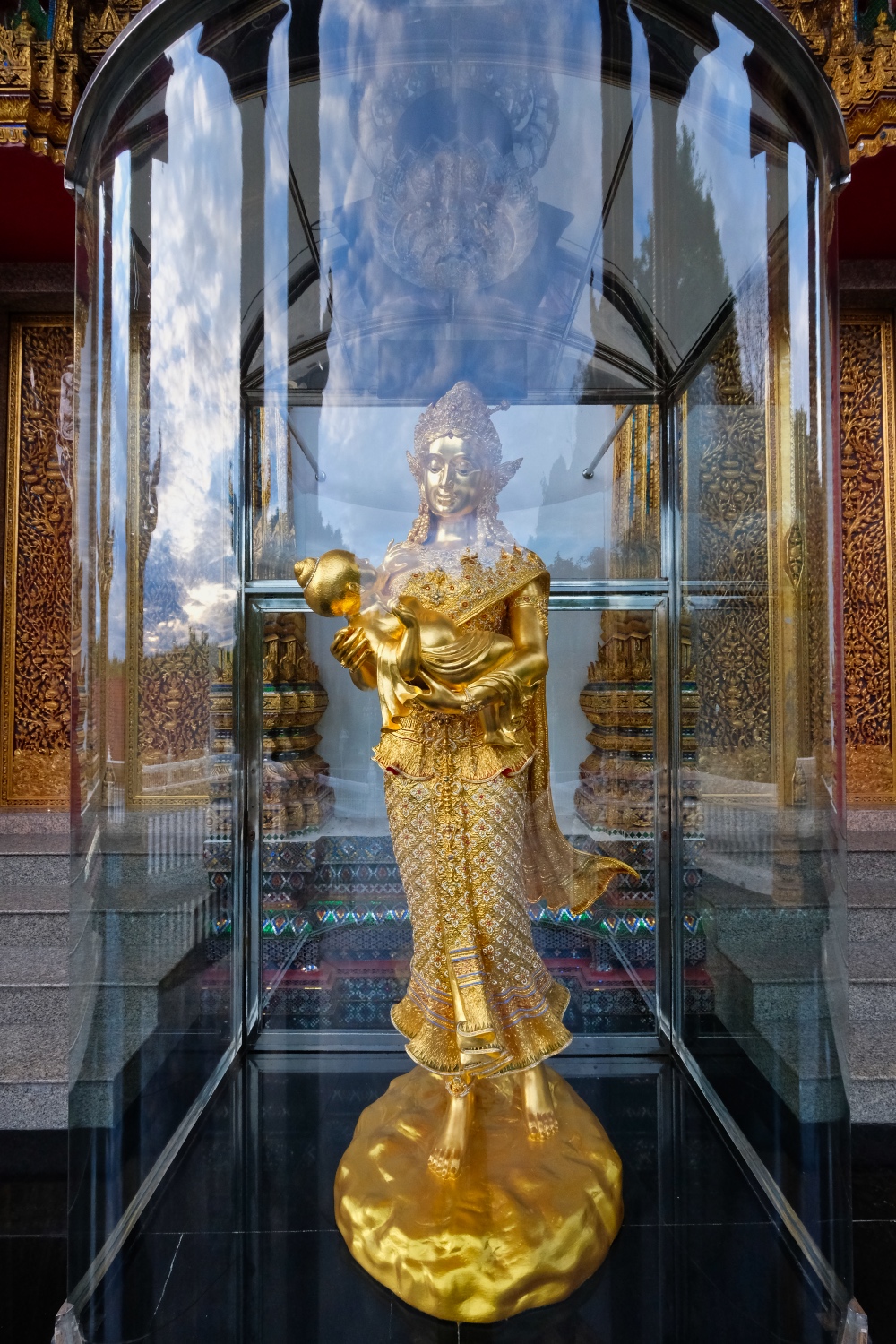 This 'Thai Angel' was outside the front entrance to the large Wat . . . and very unusual to see with a baby, almost in a Virgin Mary pose. Is this the baby Buddha Gotama? I do not know.
This 'Thai Angel' was outside the front entrance to the large Wat . . . and very unusual to see with a baby, almost in a Virgin Mary pose. Is this the baby Buddha Gotama? I do not know.
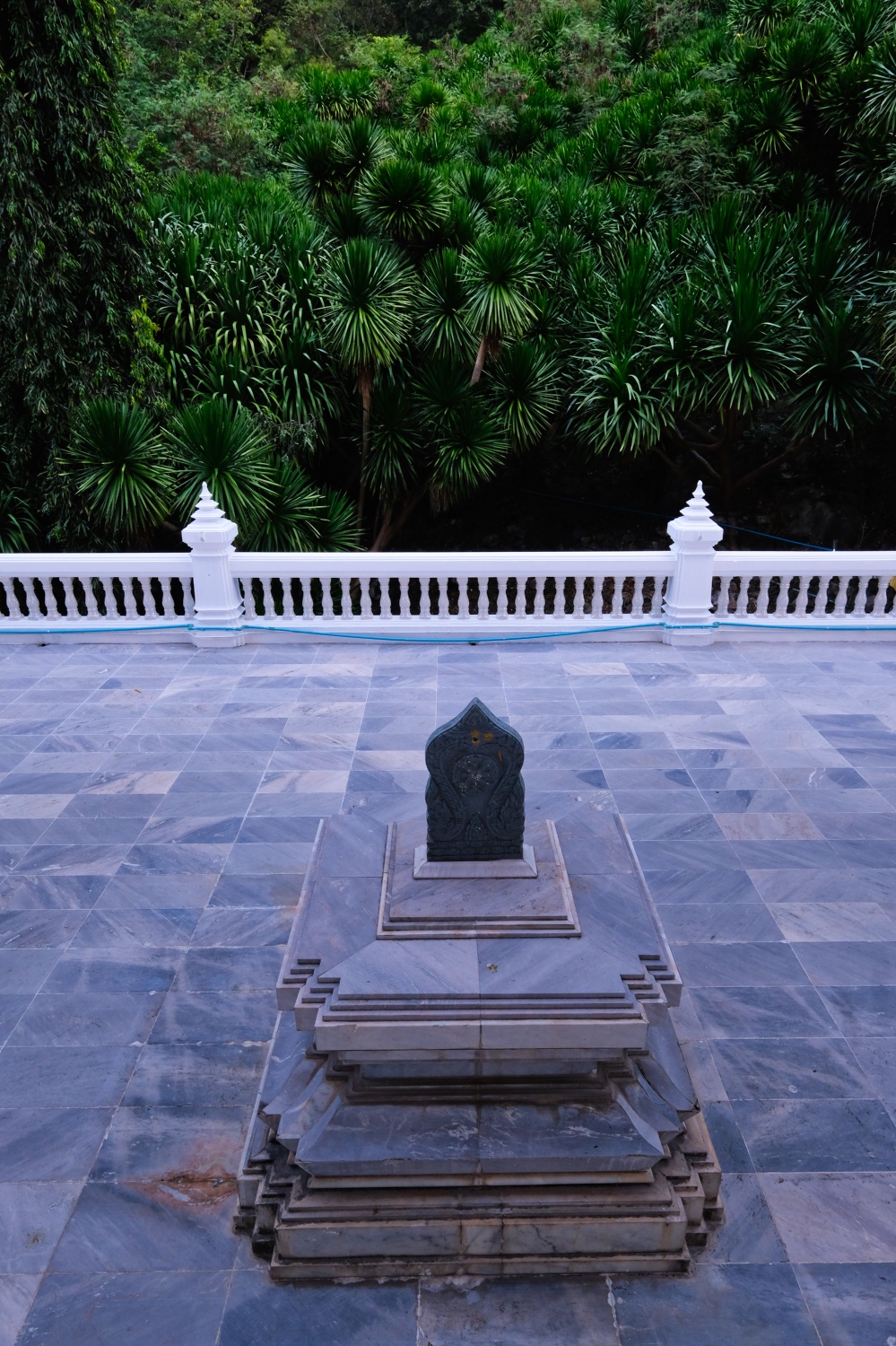 We walked around all sides of the Wat main structure.
We walked around all sides of the Wat main structure.
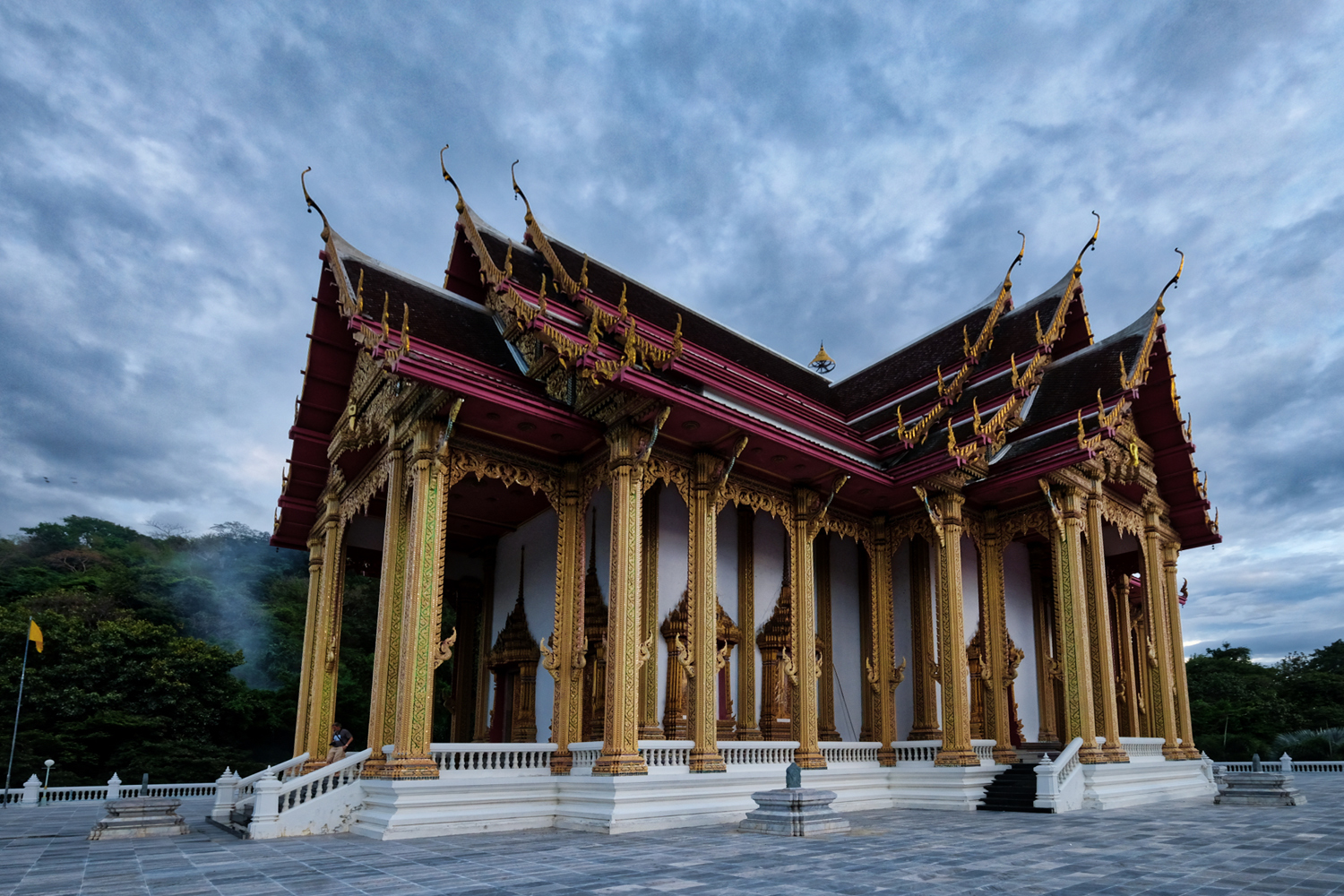 A Thai Wat in the fading light.
A Thai Wat in the fading light.
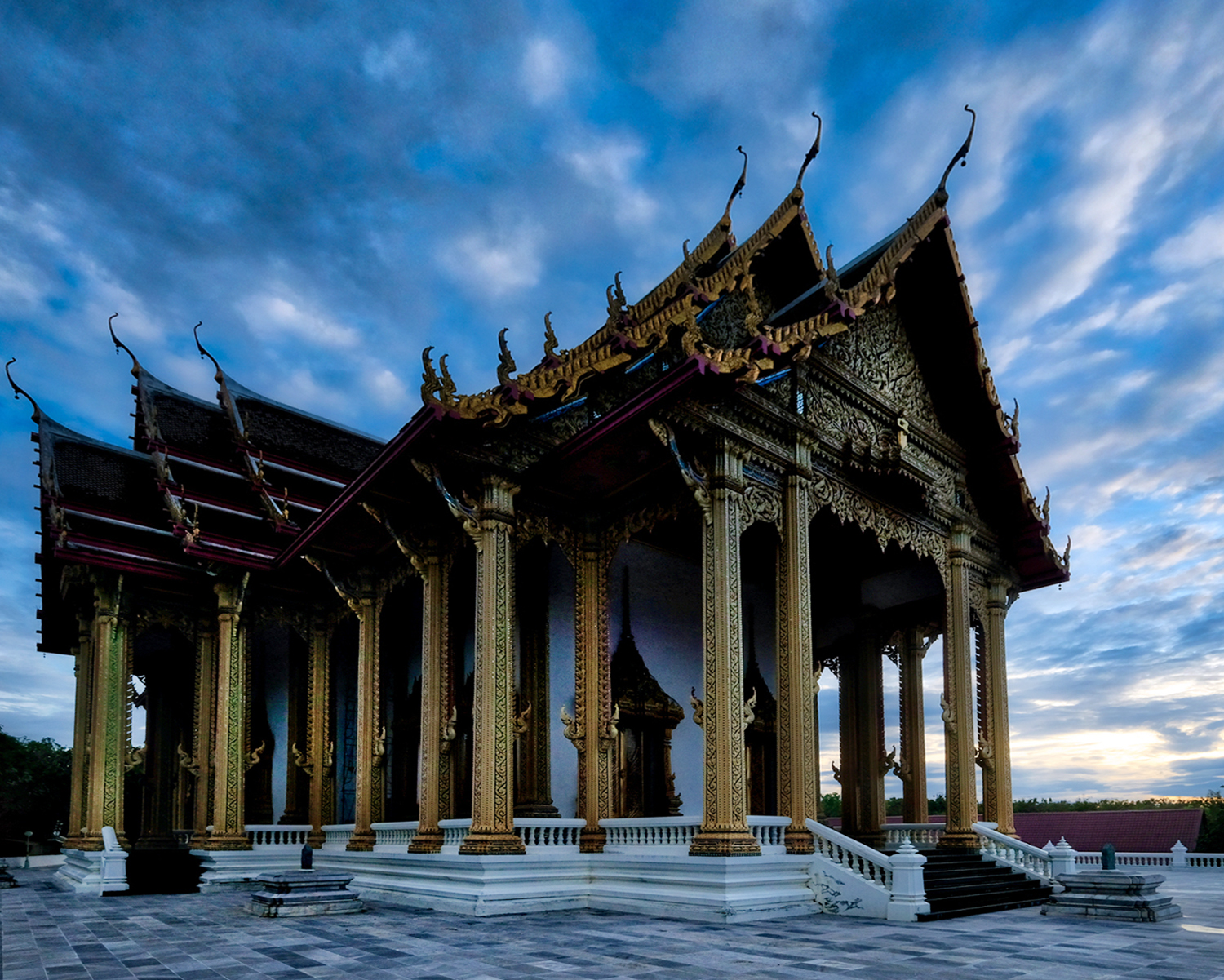 Nearly last light.
Nearly last light.
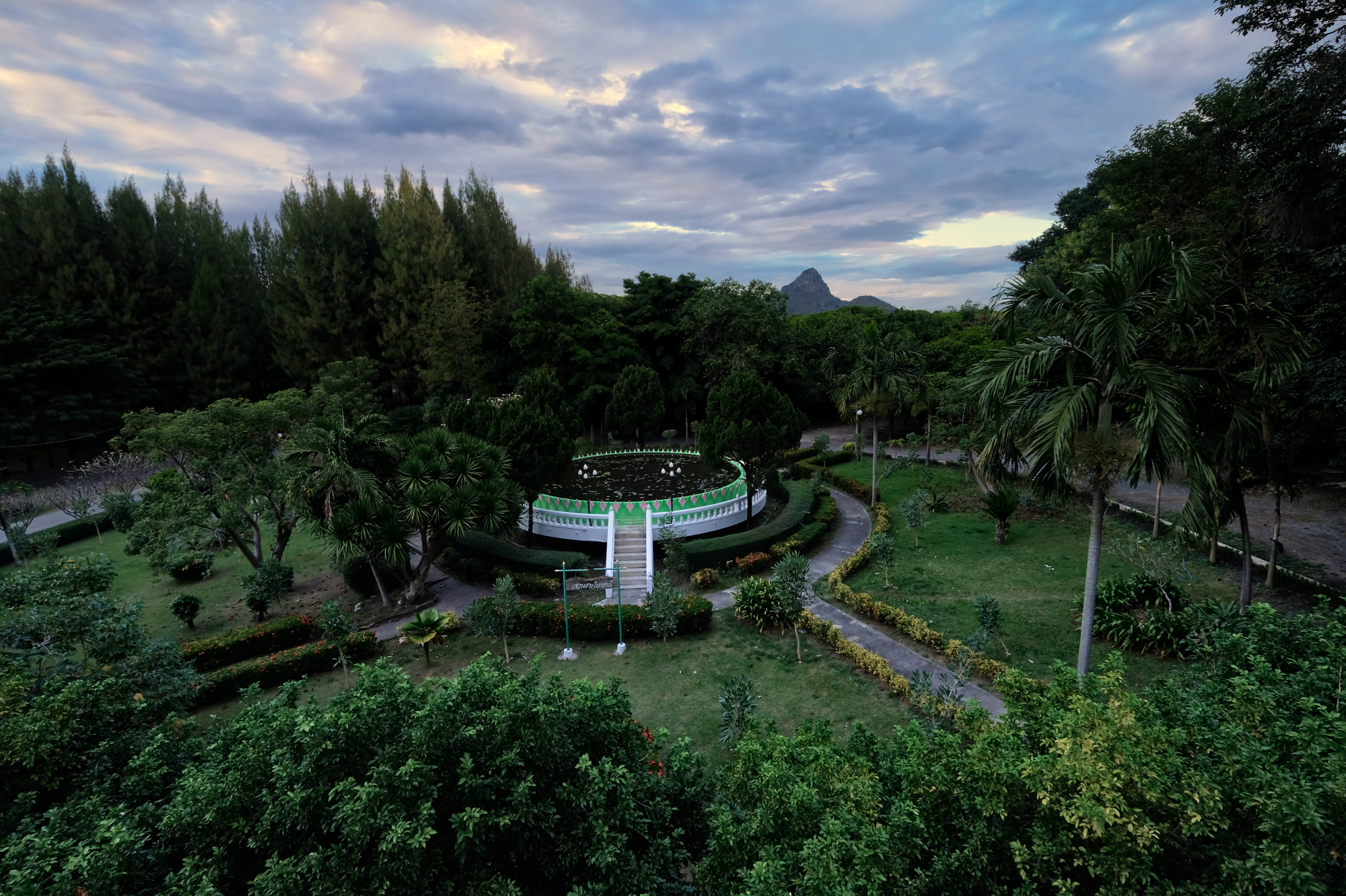 One last look around the ground gardens.
One last look around the ground gardens.
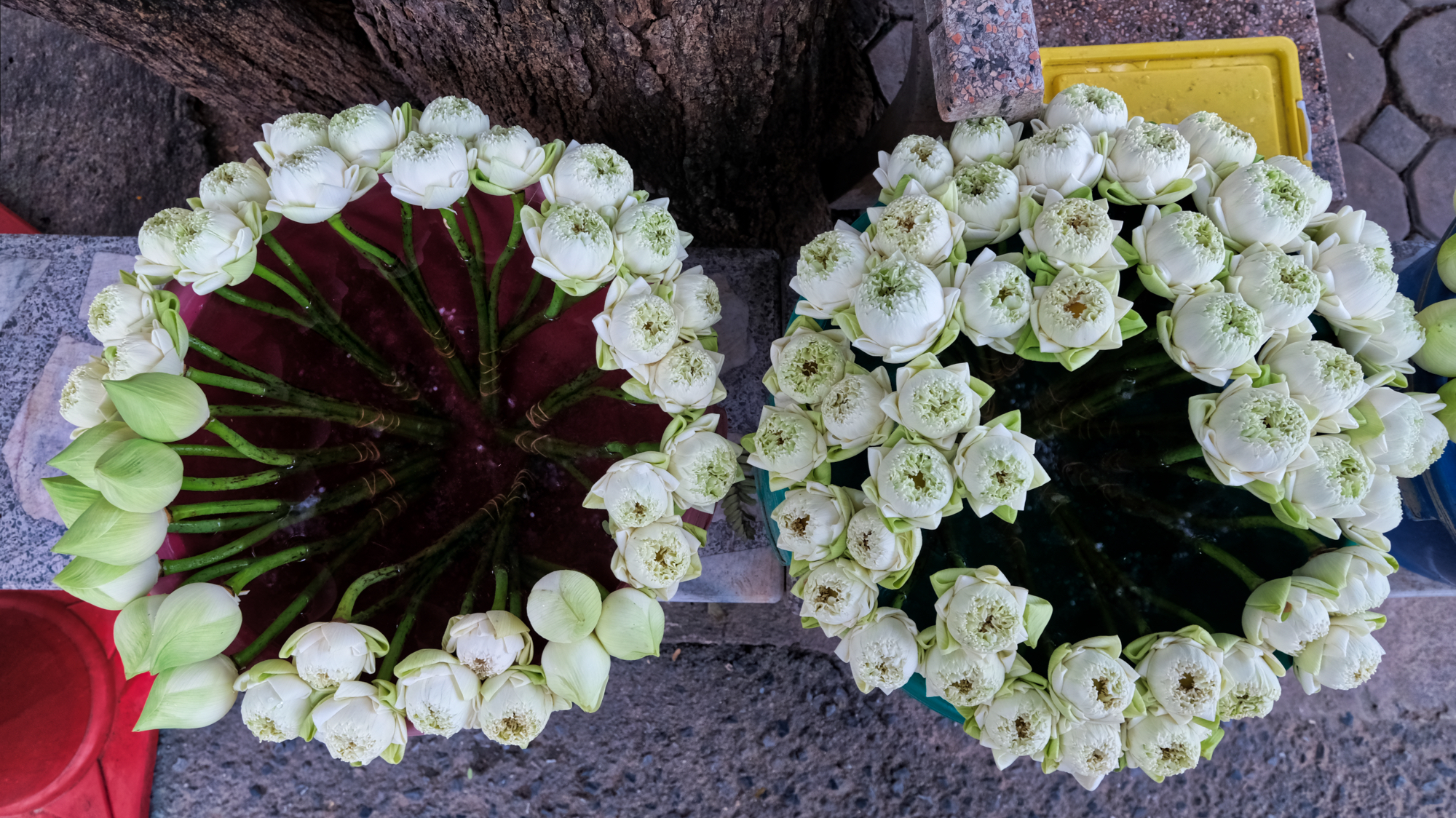 We passed a lotus hawker on the way to our car . . . and drove home in the dark: another satisfying and inspirational day out in the world.
We passed a lotus hawker on the way to our car . . . and drove home in the dark: another satisfying and inspirational day out in the world.
A Sunday Lunch: Baan Ta Nid
 Saturday, January 27, 2018 at 10:11PM
Saturday, January 27, 2018 at 10:11PM 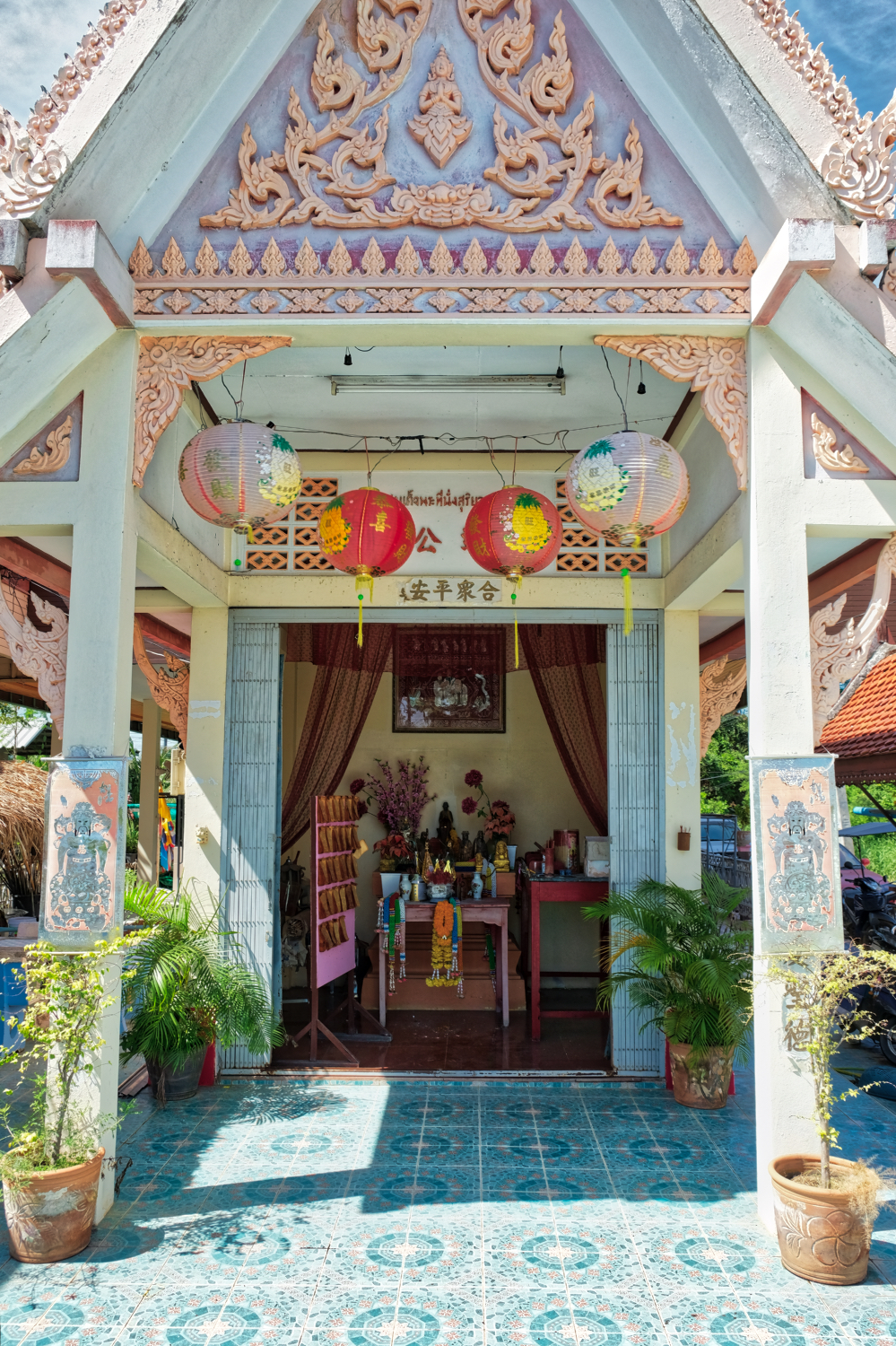 We drove north from our home about 30 minutes to a beautiful riverside restaurant, Baan Ta Nid. The restaurant is rather hidden on a tiny lane next to this small Chinese temple and a pier for a ferry that does not operate any more.
We drove north from our home about 30 minutes to a beautiful riverside restaurant, Baan Ta Nid. The restaurant is rather hidden on a tiny lane next to this small Chinese temple and a pier for a ferry that does not operate any more.
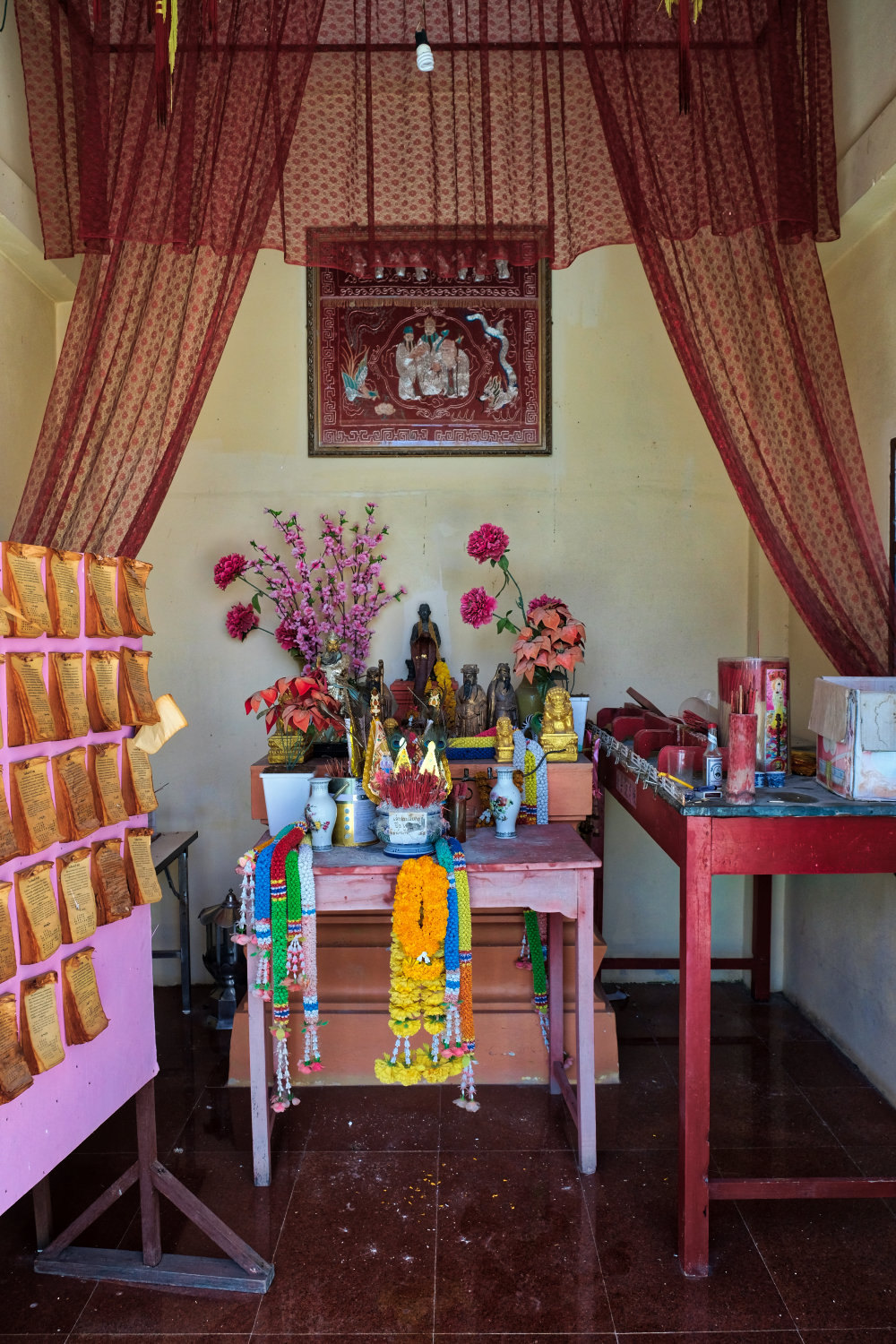 A sweet little altar . . .
A sweet little altar . . .
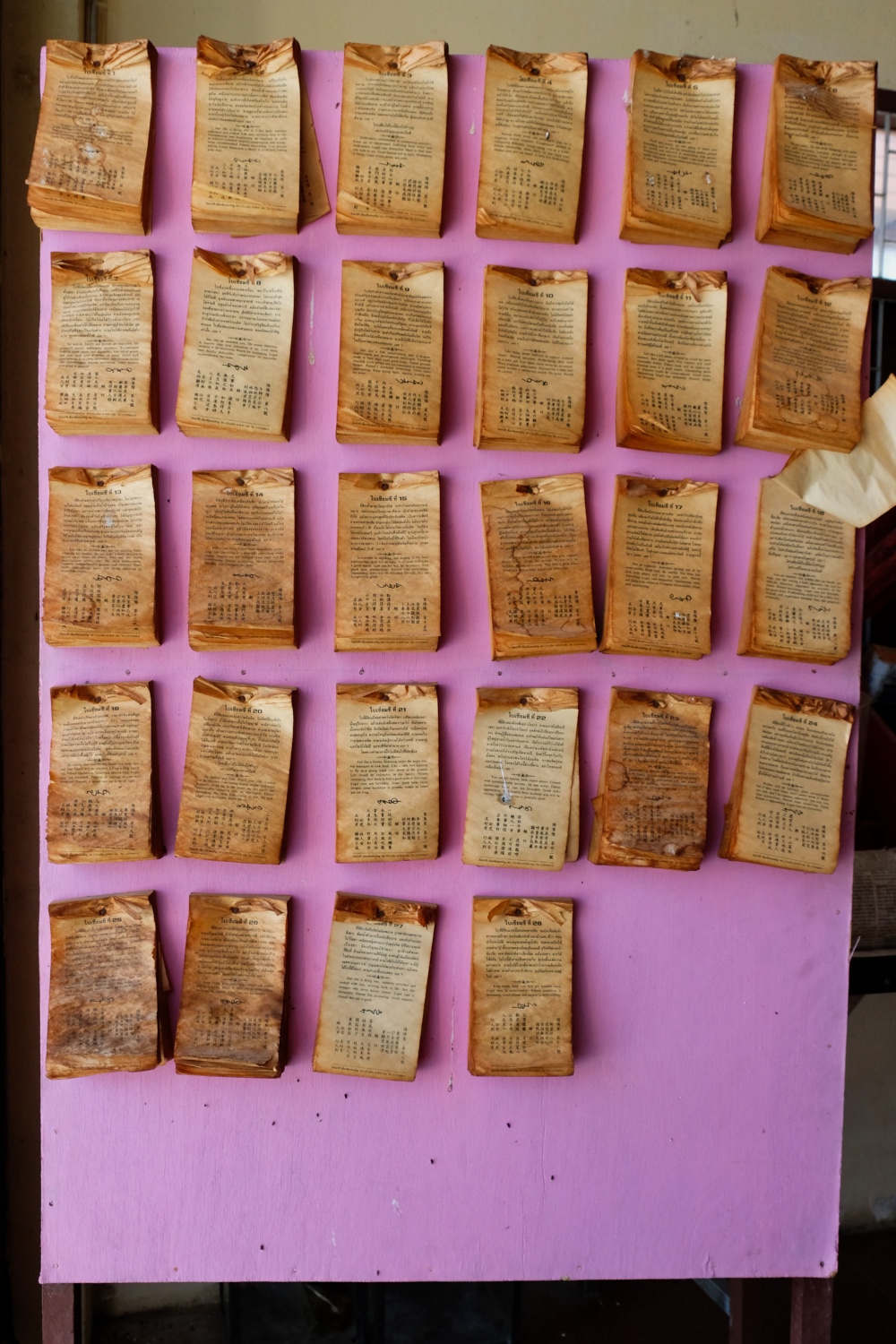 This temple had these 'fortune' sheets. You roll a die and then choose the corresponding fortune.
This temple had these 'fortune' sheets. You roll a die and then choose the corresponding fortune.
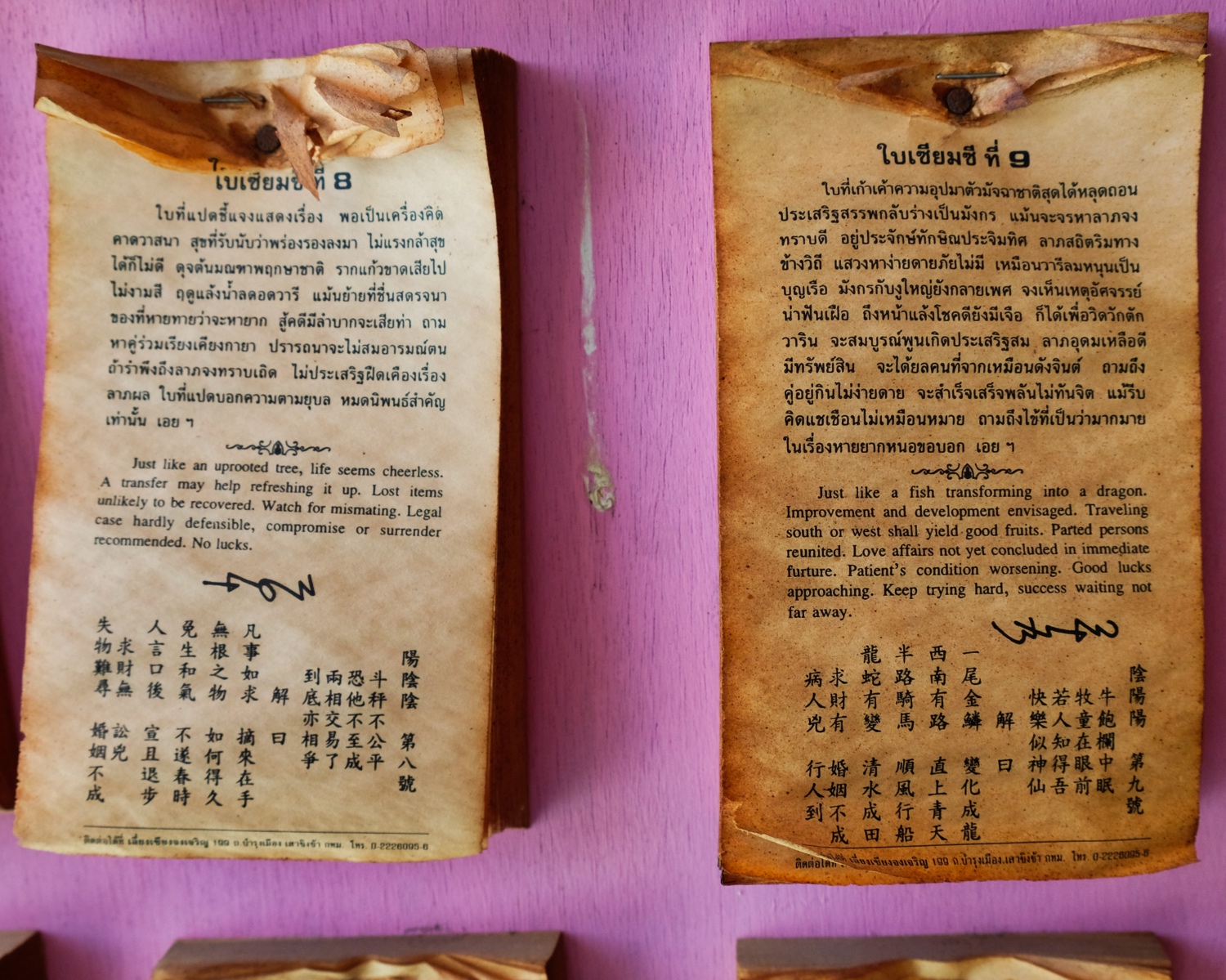 Although I did leave a small donation, I did not roll the die and choose a fortune. Just looking at these two examples, I'm sure glad I didn't roll a 8 . . . the 9 isn't all that bad though. Imagine basing your life decisions on these!
Although I did leave a small donation, I did not roll the die and choose a fortune. Just looking at these two examples, I'm sure glad I didn't roll a 8 . . . the 9 isn't all that bad though. Imagine basing your life decisions on these!
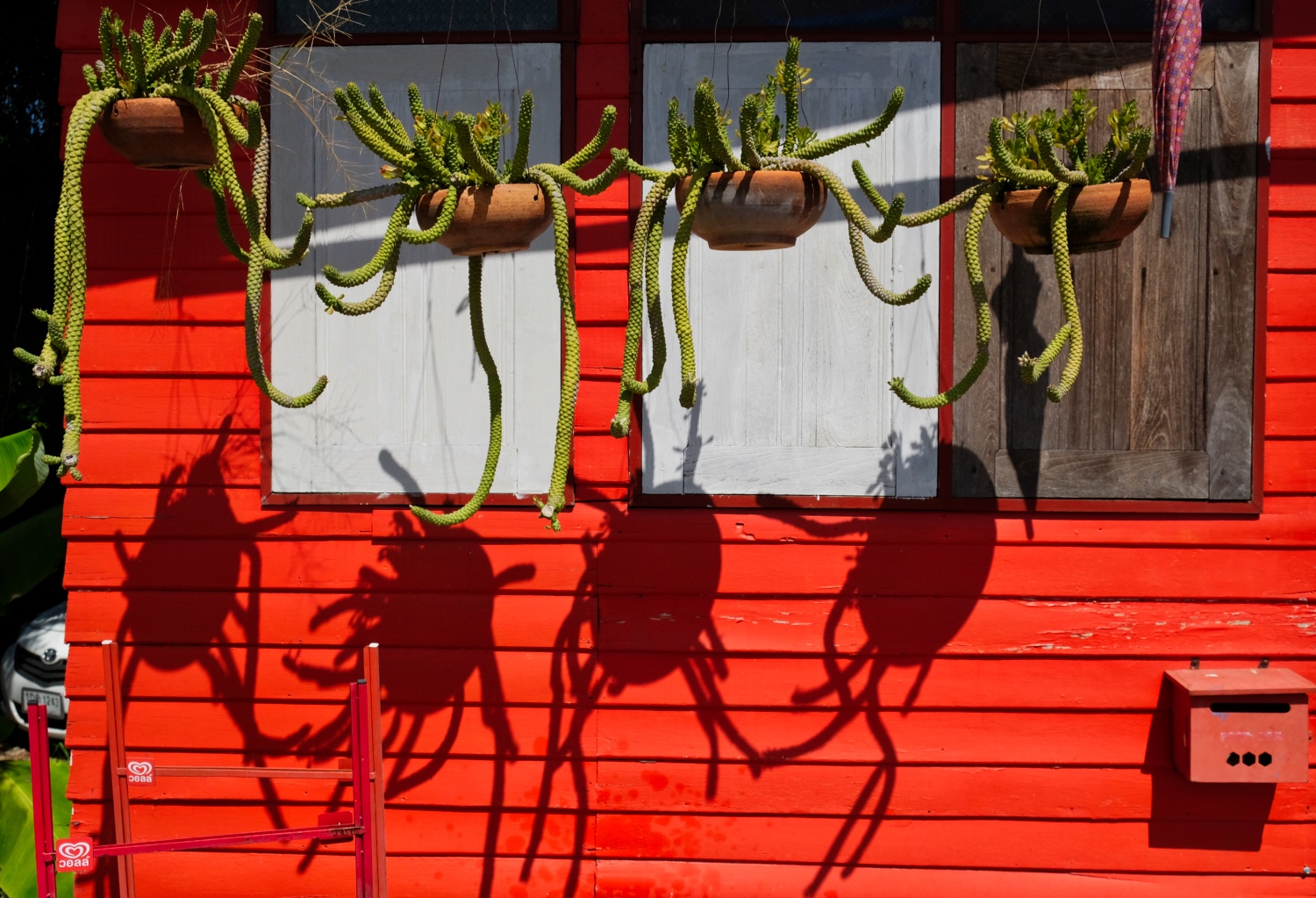 A very red house next to the pier.
A very red house next to the pier.
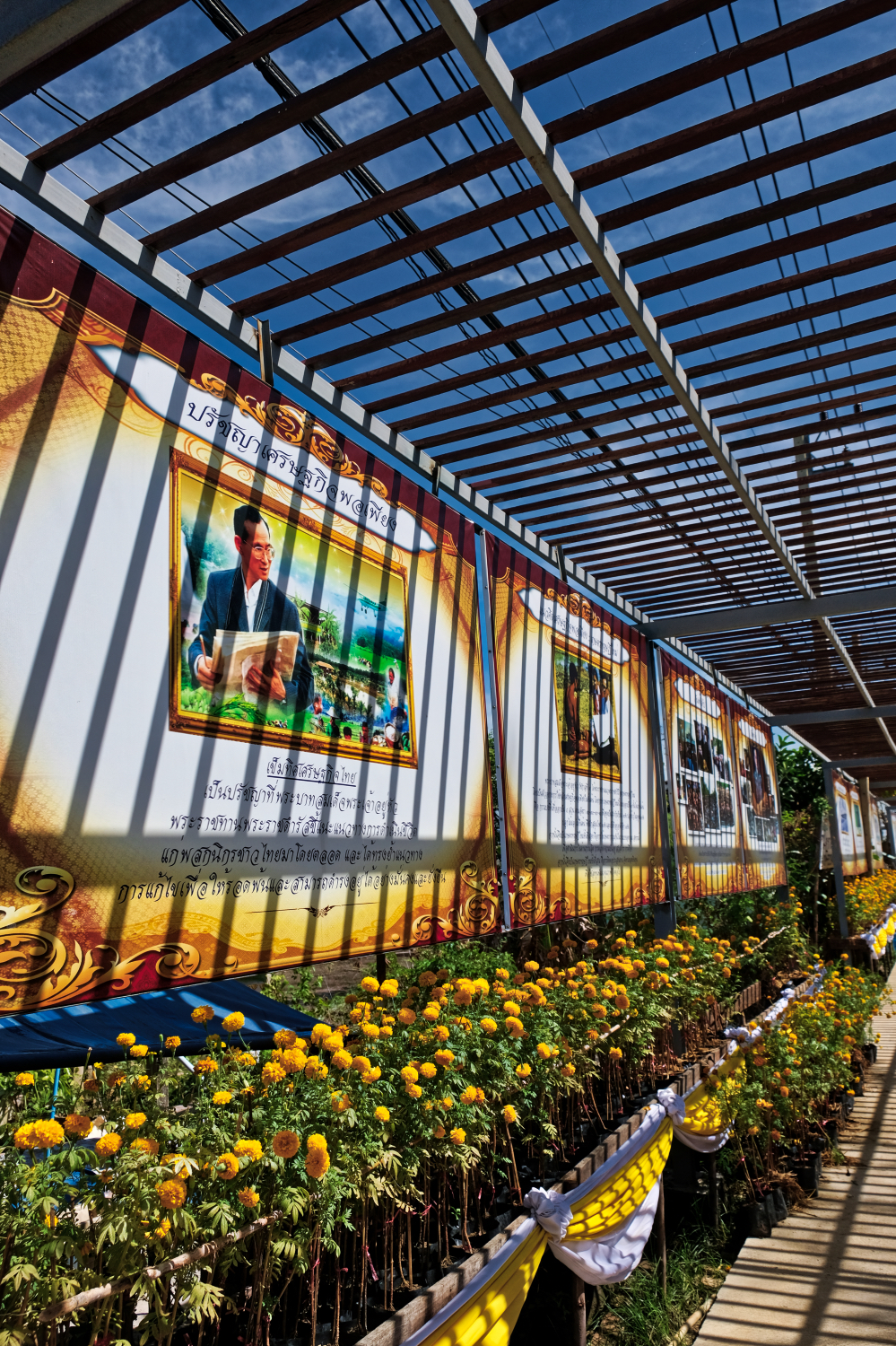 The lane to the ferry pier . . . honoring the departed King.
The lane to the ferry pier . . . honoring the departed King.
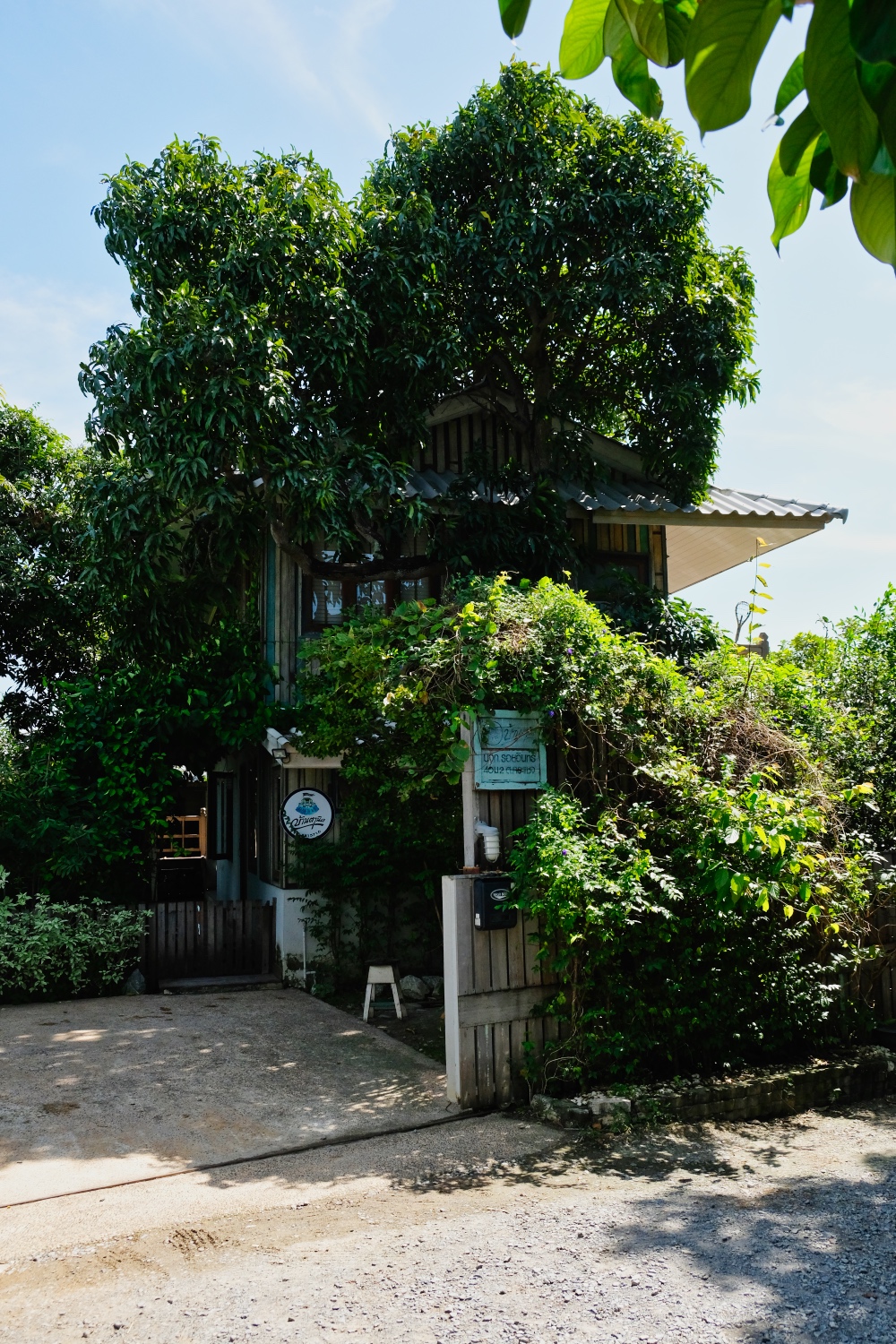 This is Baan Ta Nid . . . you really have to look to find this wonderful place.
This is Baan Ta Nid . . . you really have to look to find this wonderful place.
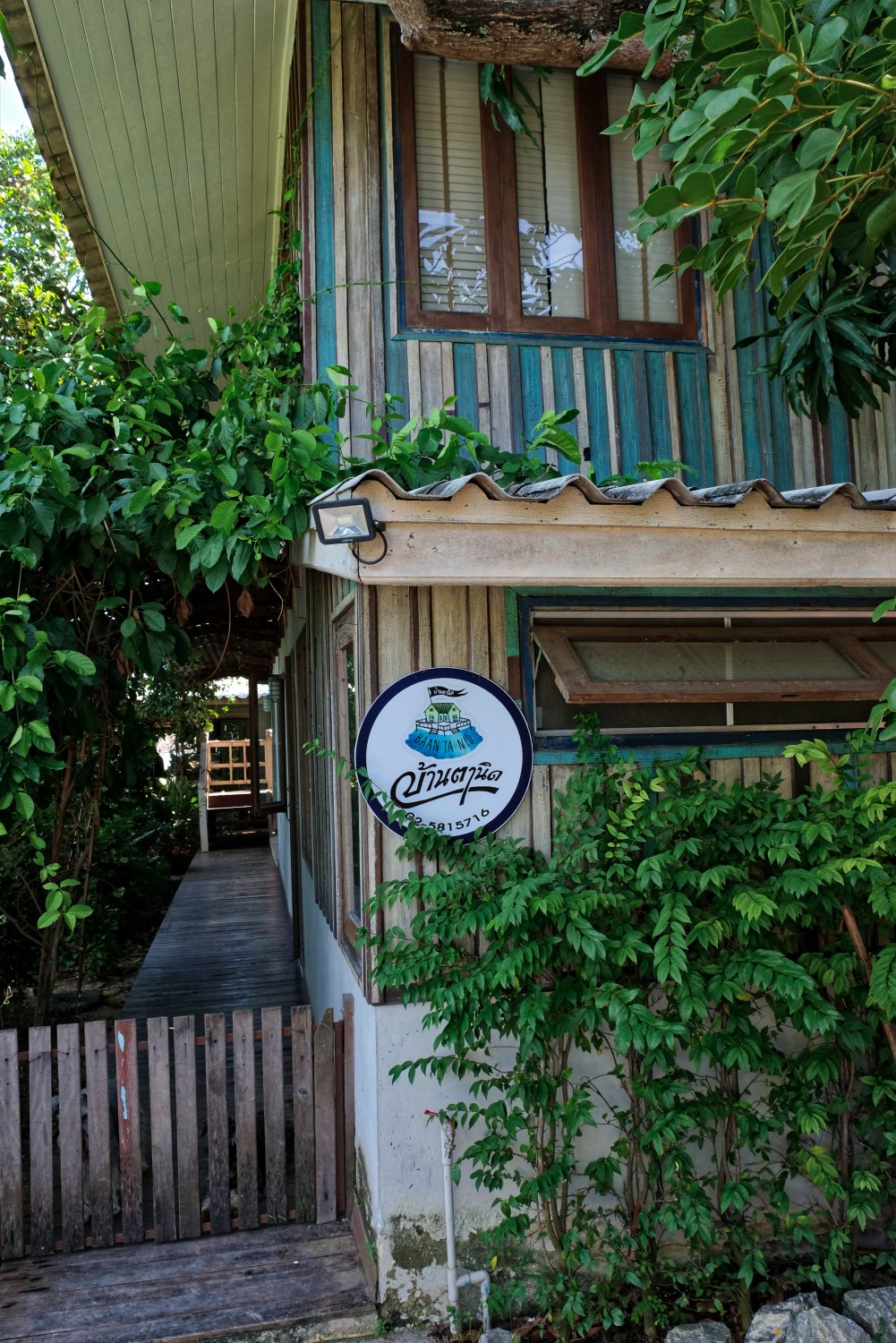 Here we are . . . come on in.
Here we are . . . come on in.
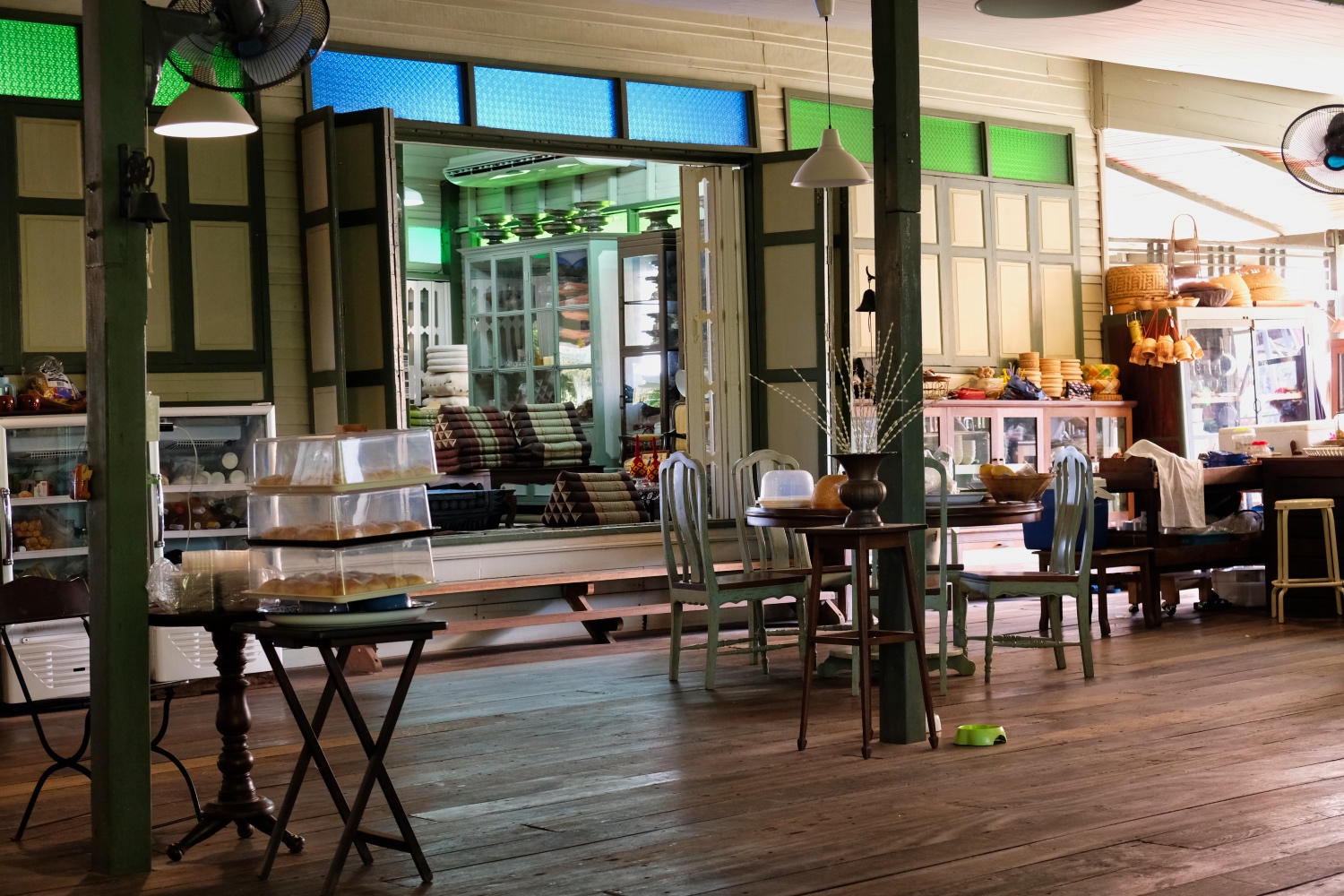 You enter the old wooden Thai-style river house through an open kitchen/lobby.
You enter the old wooden Thai-style river house through an open kitchen/lobby.
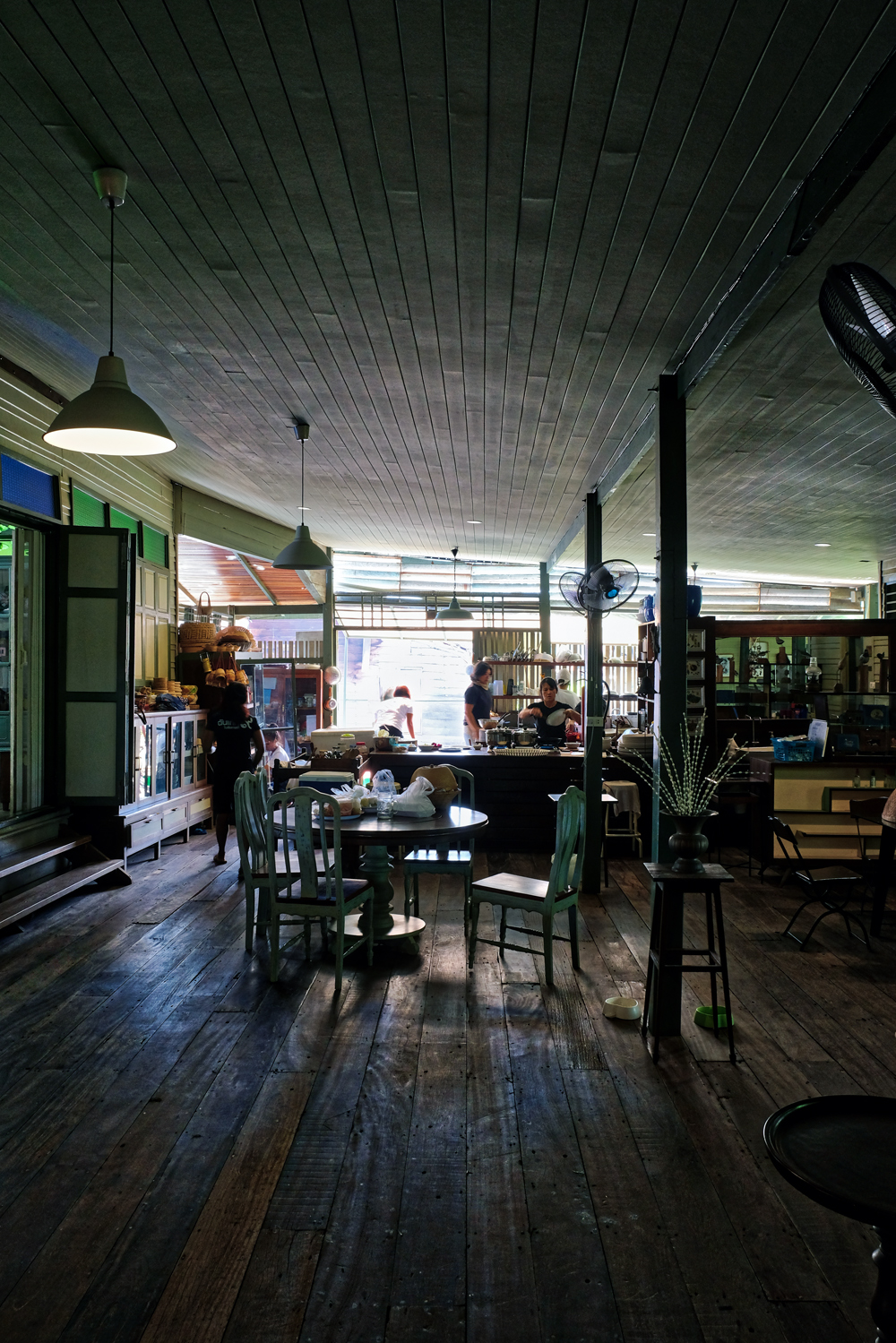 Wonderful patina on the floor and ceiling planking.
Wonderful patina on the floor and ceiling planking.
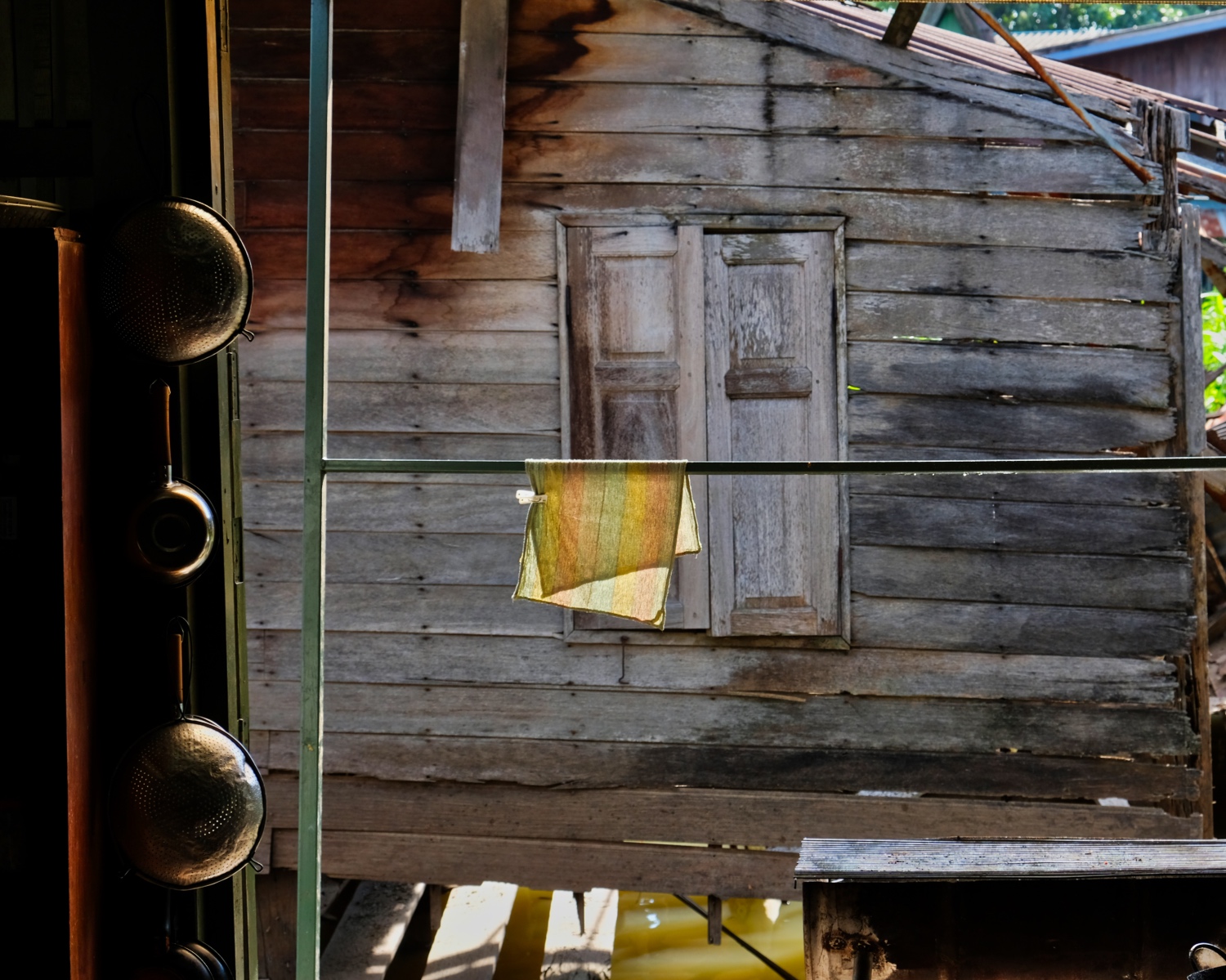 View from the kitchen window out into an older Thai world.
View from the kitchen window out into an older Thai world.
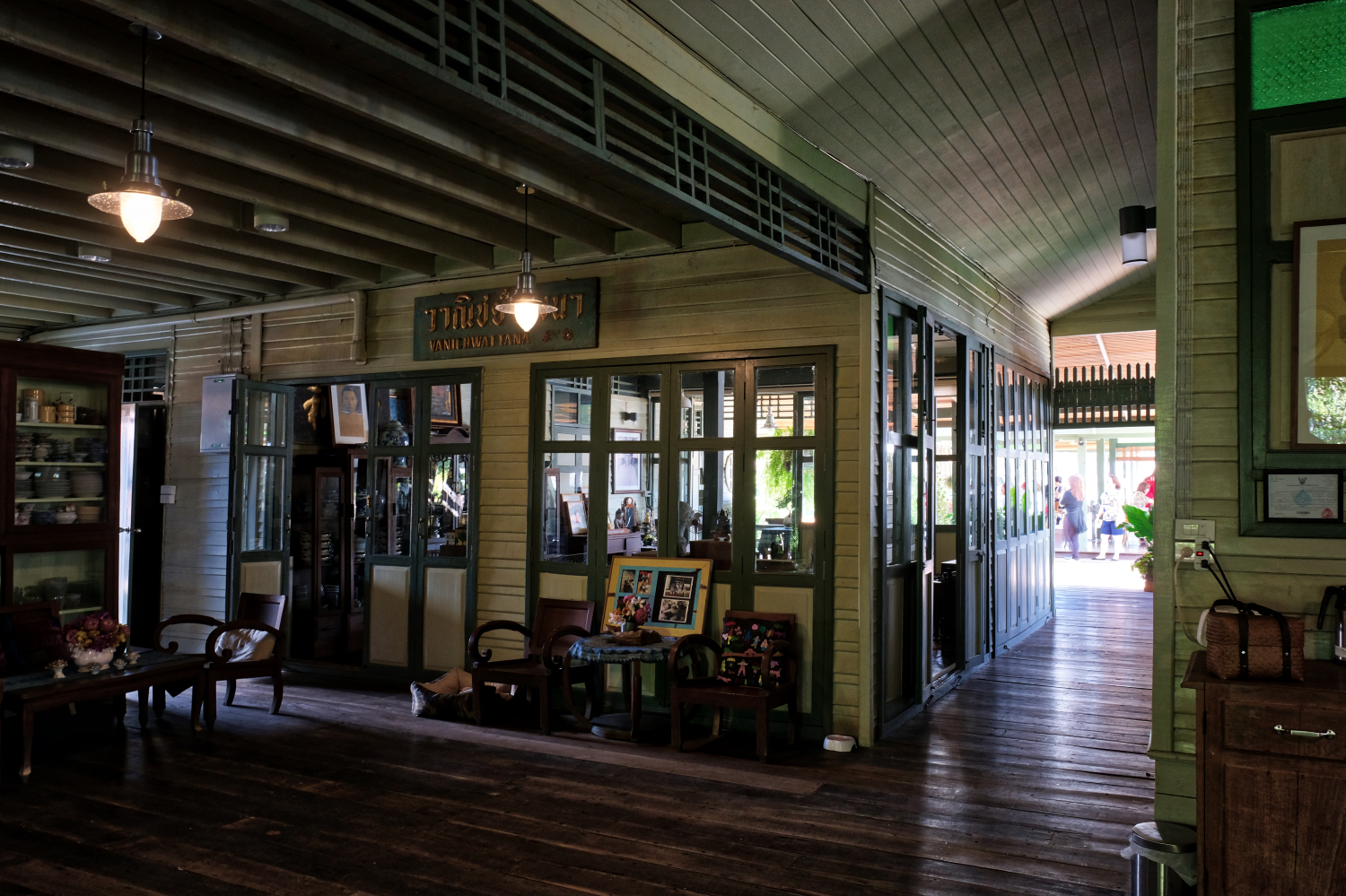 You proceed along wooden planking through an old fashioned Thai house.
You proceed along wooden planking through an old fashioned Thai house.
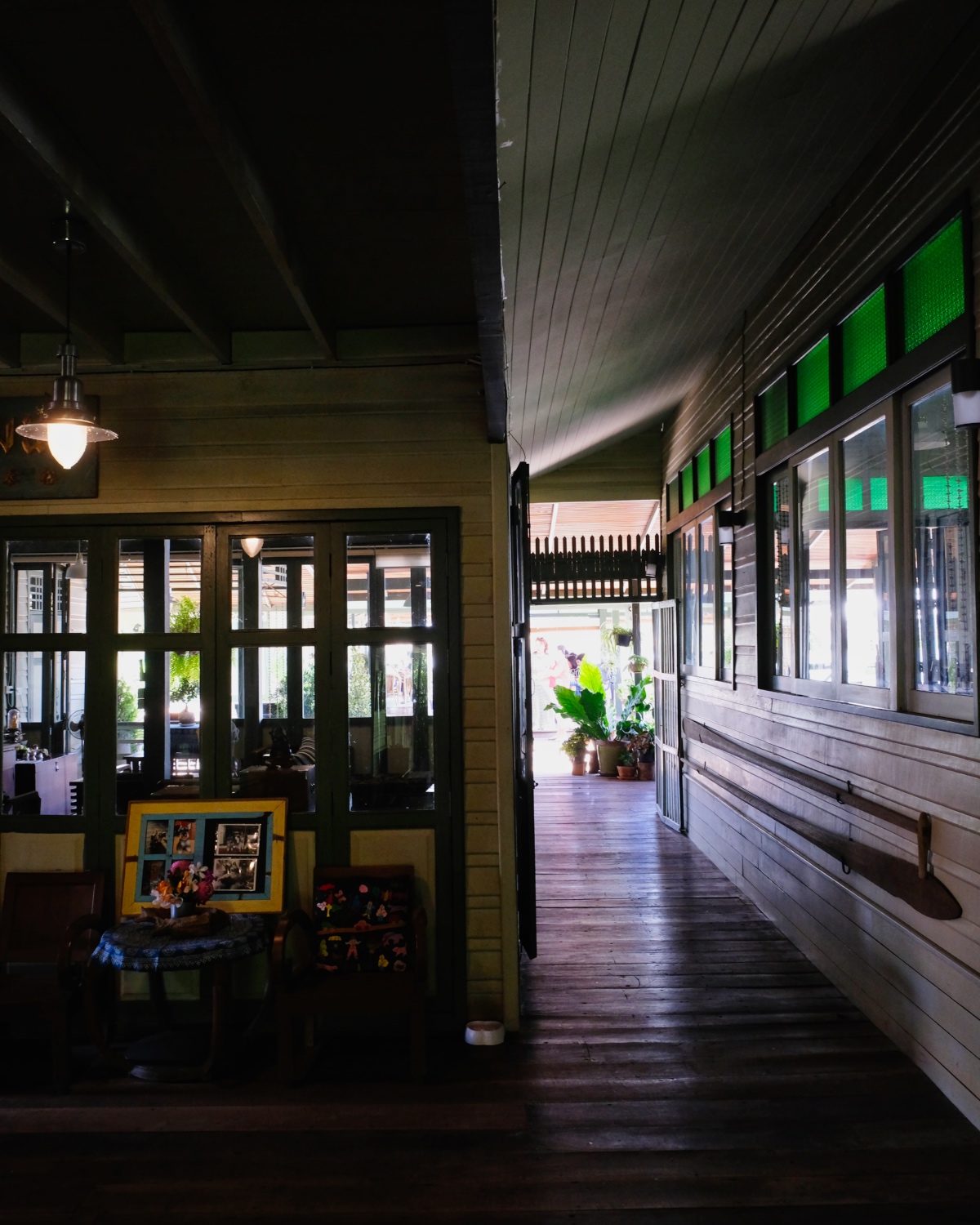 The restaurant is through this hall, out back on a pier over the Chao Phraya River.
The restaurant is through this hall, out back on a pier over the Chao Phraya River.
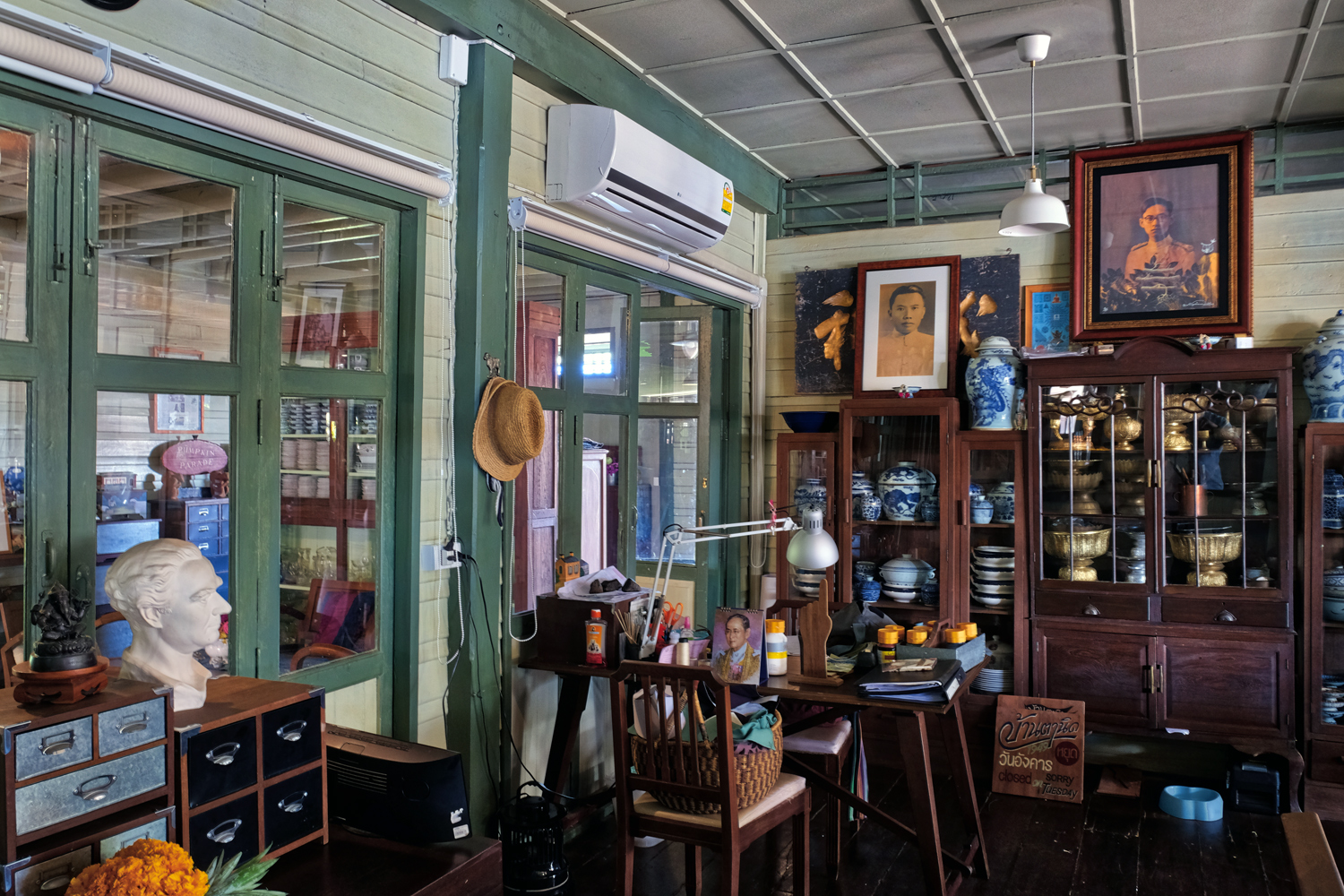 Baan Ta Nid is also a small 'guest house' with a few small rooms. This old space serves as the guest lounge.
Baan Ta Nid is also a small 'guest house' with a few small rooms. This old space serves as the guest lounge.
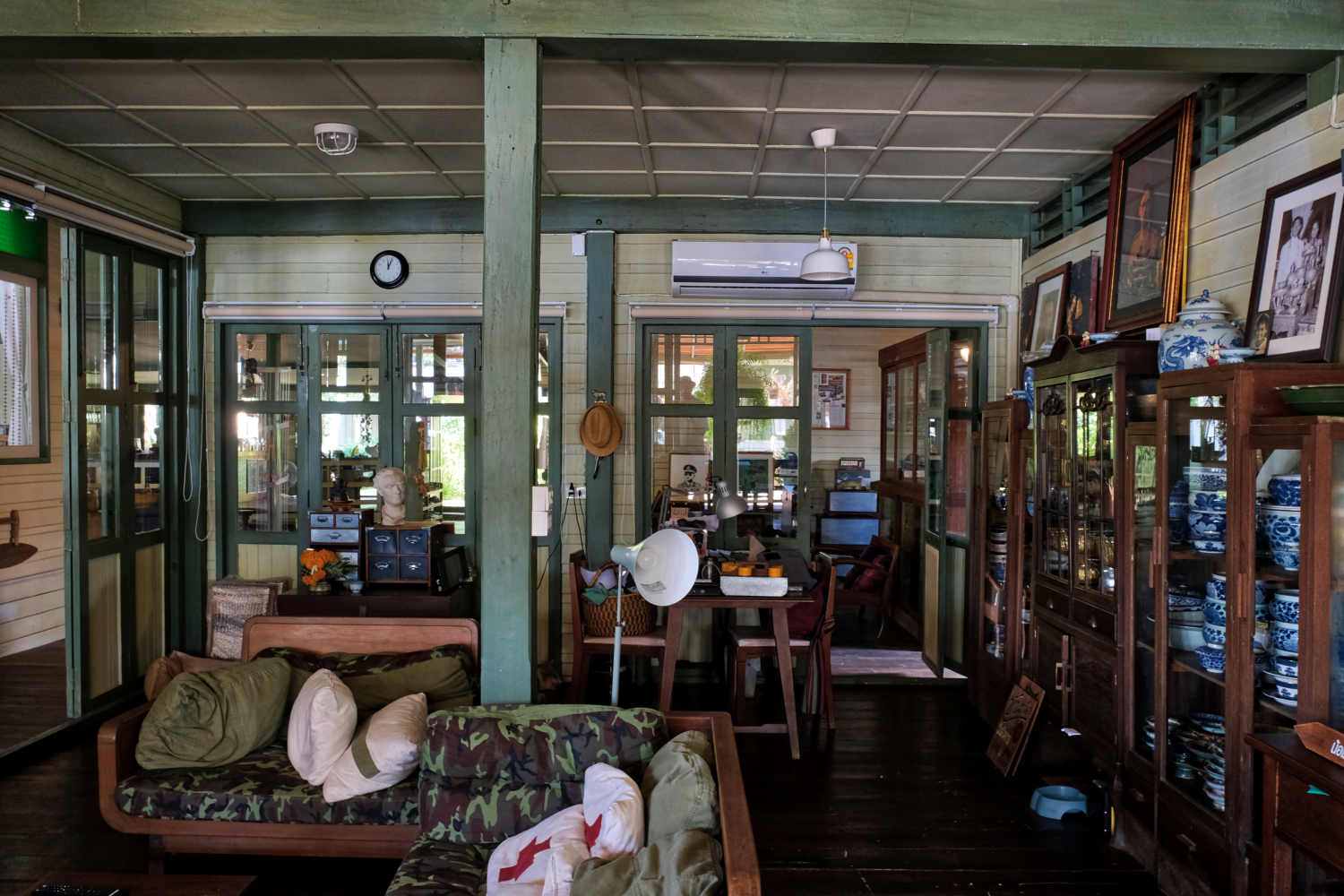 Such a charming place to relax.
Such a charming place to relax.
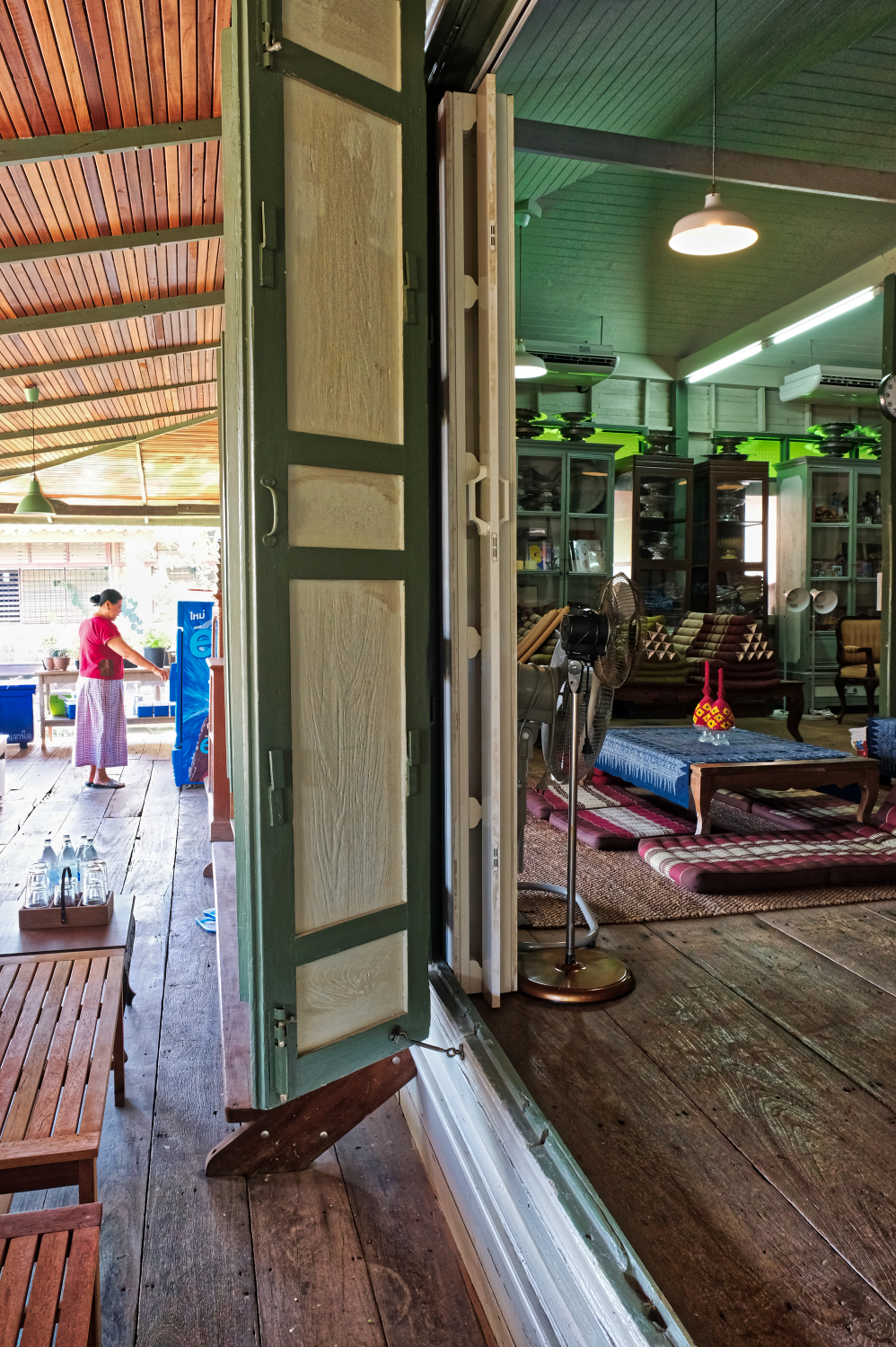 Another lounge and the outside . . .
Another lounge and the outside . . .
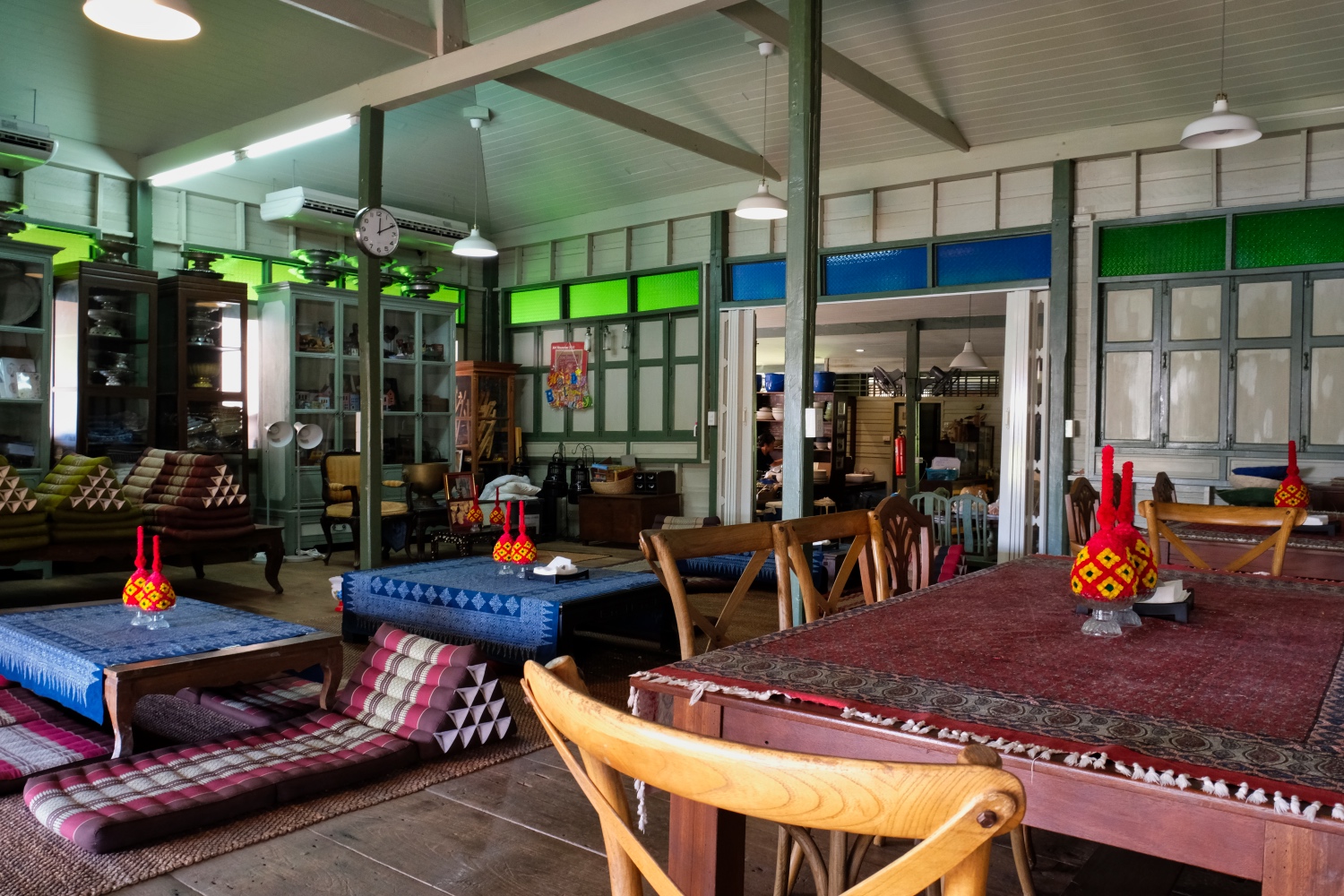 A second lounge in the old river house. Thai-style living from early last century. The proprietress said the house was 90 years old.
A second lounge in the old river house. Thai-style living from early last century. The proprietress said the house was 90 years old.
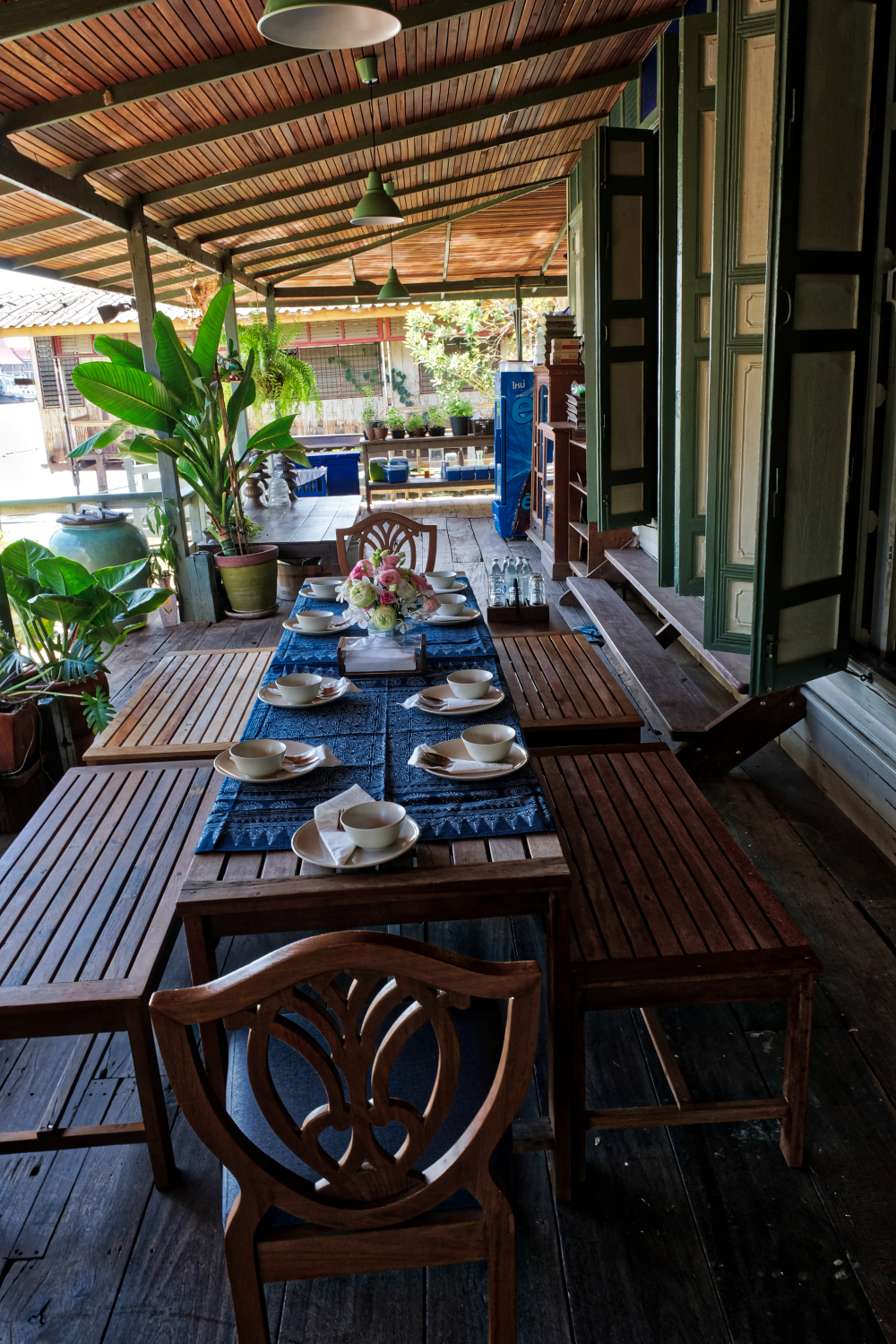 A table set for a party of 10 (turned out to be an old Thai rock star and his family).
A table set for a party of 10 (turned out to be an old Thai rock star and his family).
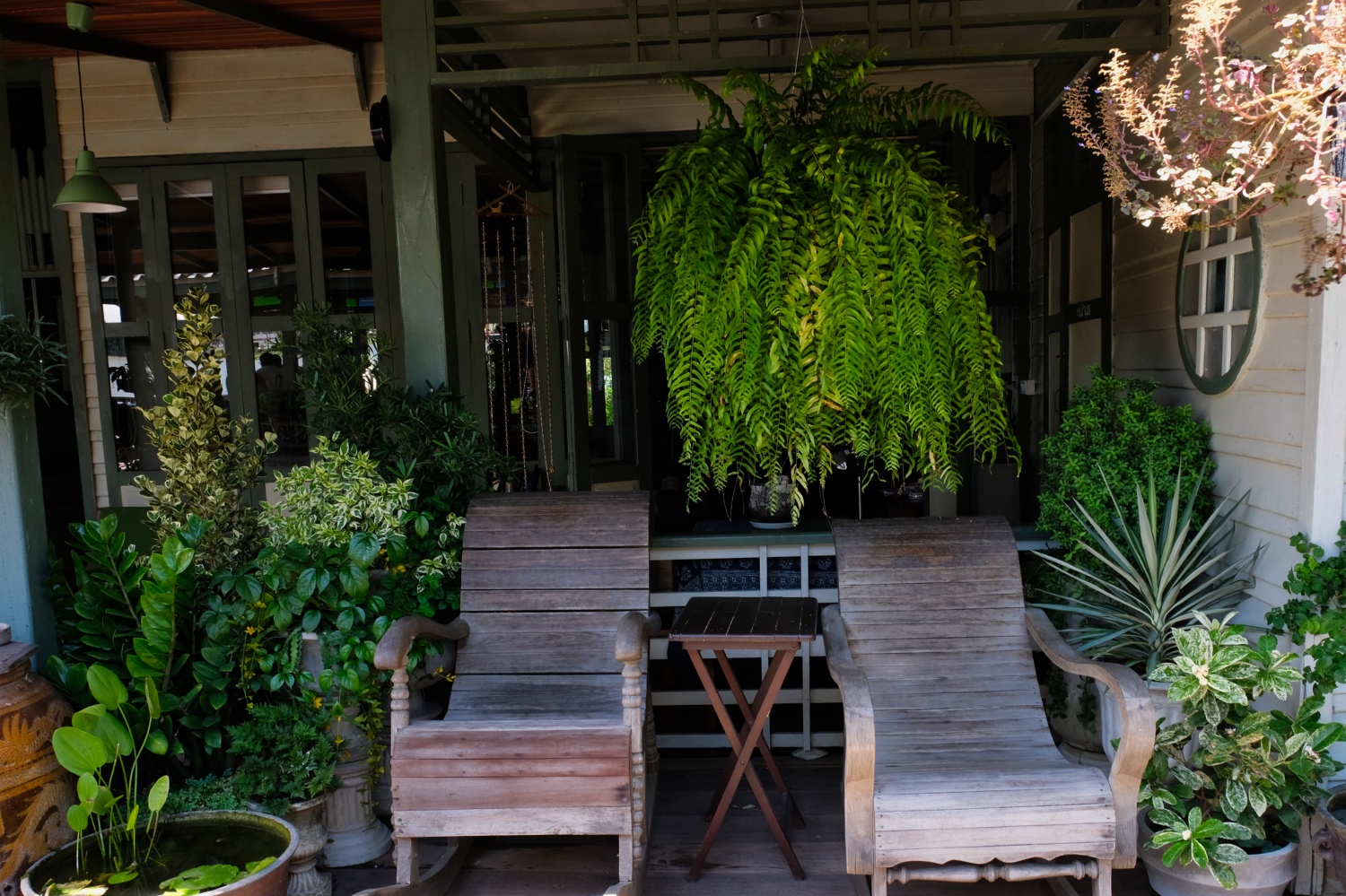 Many small nooks here and there to sit and enjoy the day.
Many small nooks here and there to sit and enjoy the day.
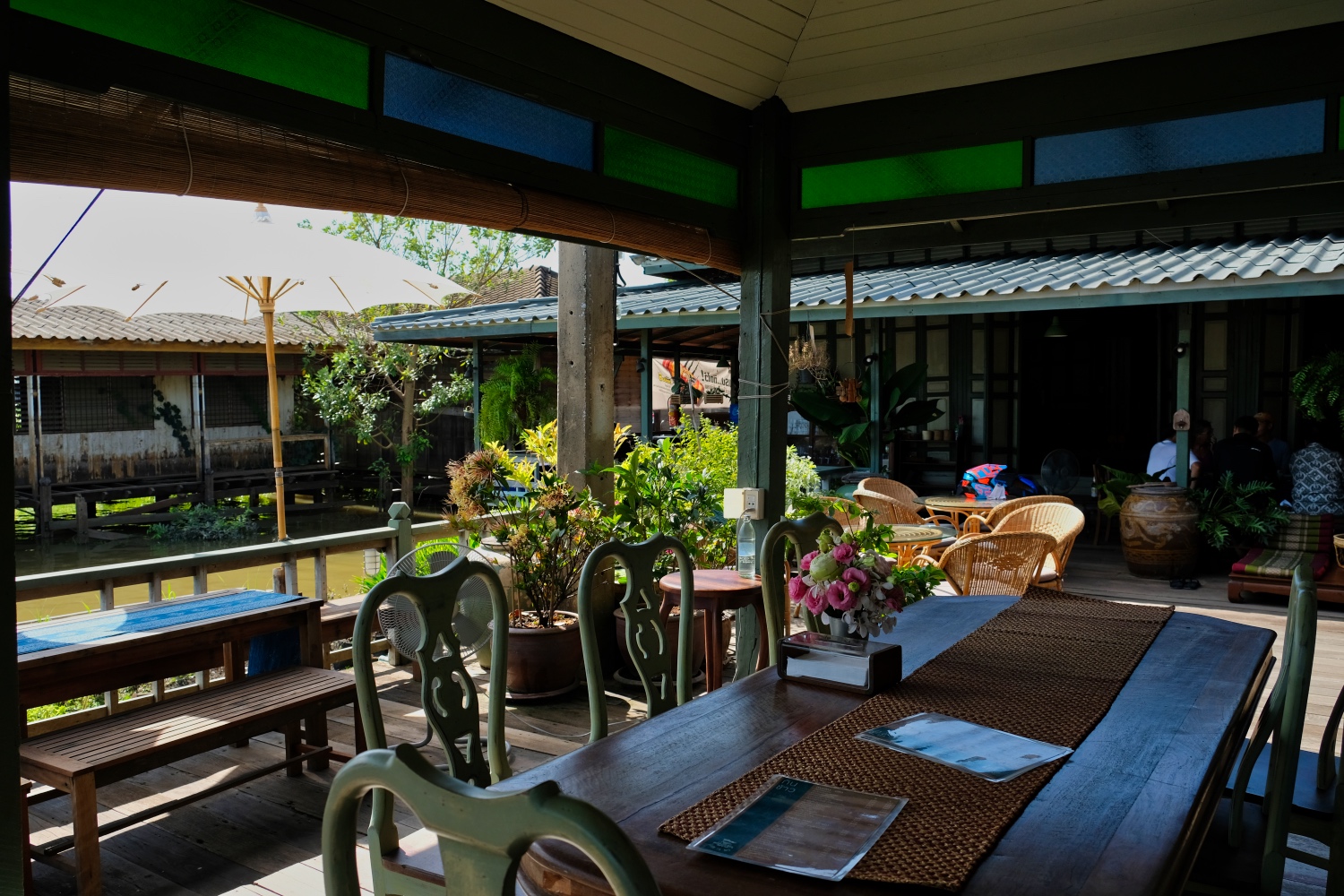 The dining area on a dock over the river among old Thai village houses. Very sweet.
The dining area on a dock over the river among old Thai village houses. Very sweet.
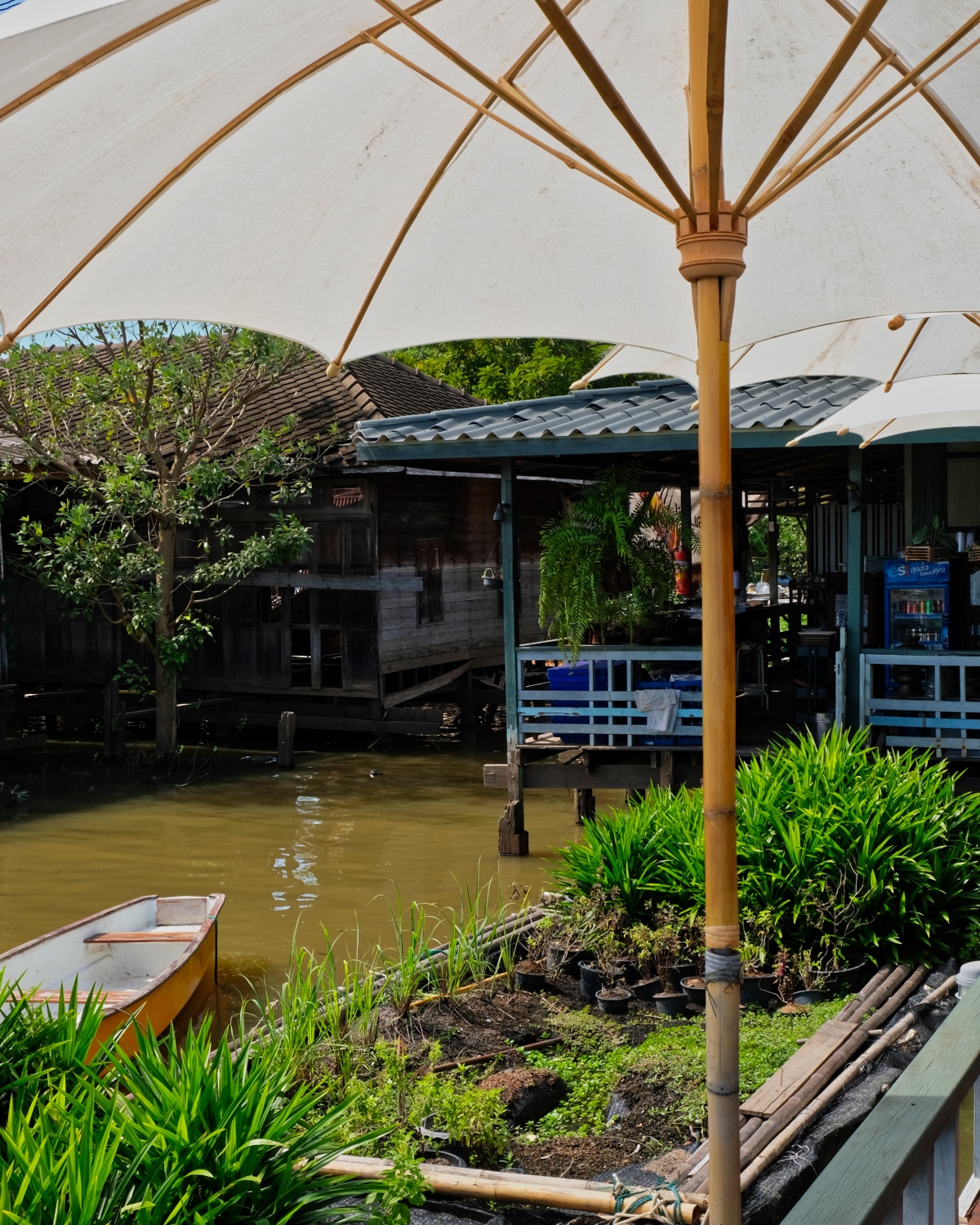 A pleasant place for lunch . . . out of the city . . . and into the past.
A pleasant place for lunch . . . out of the city . . . and into the past.
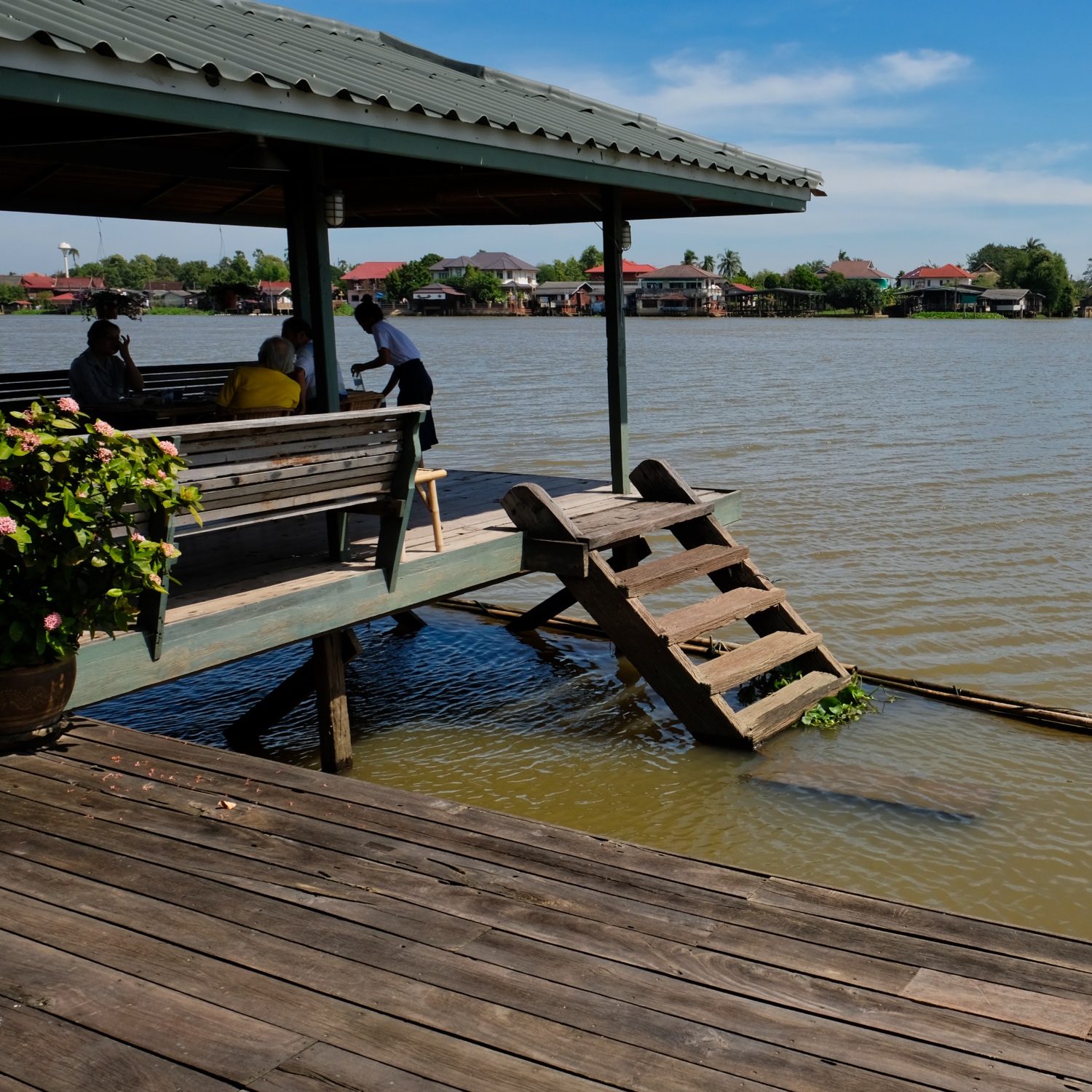 A private dining sala out over the river.
A private dining sala out over the river.
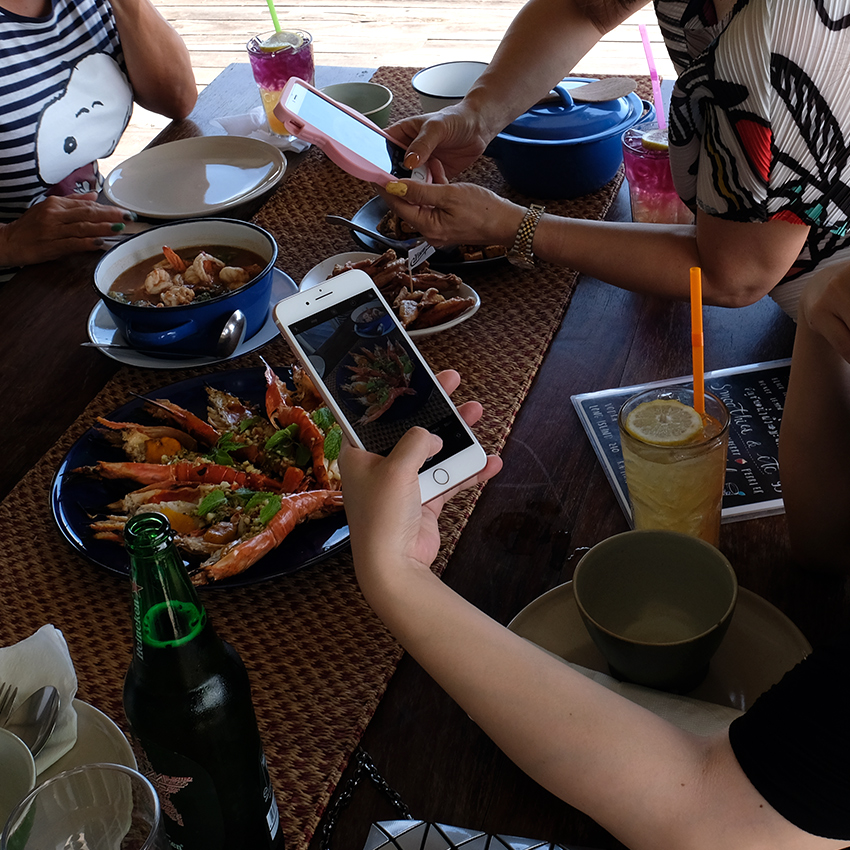 The food was delicious, beautifully prepared and presented . . . and photogenic, as can be seen!
The food was delicious, beautifully prepared and presented . . . and photogenic, as can be seen!
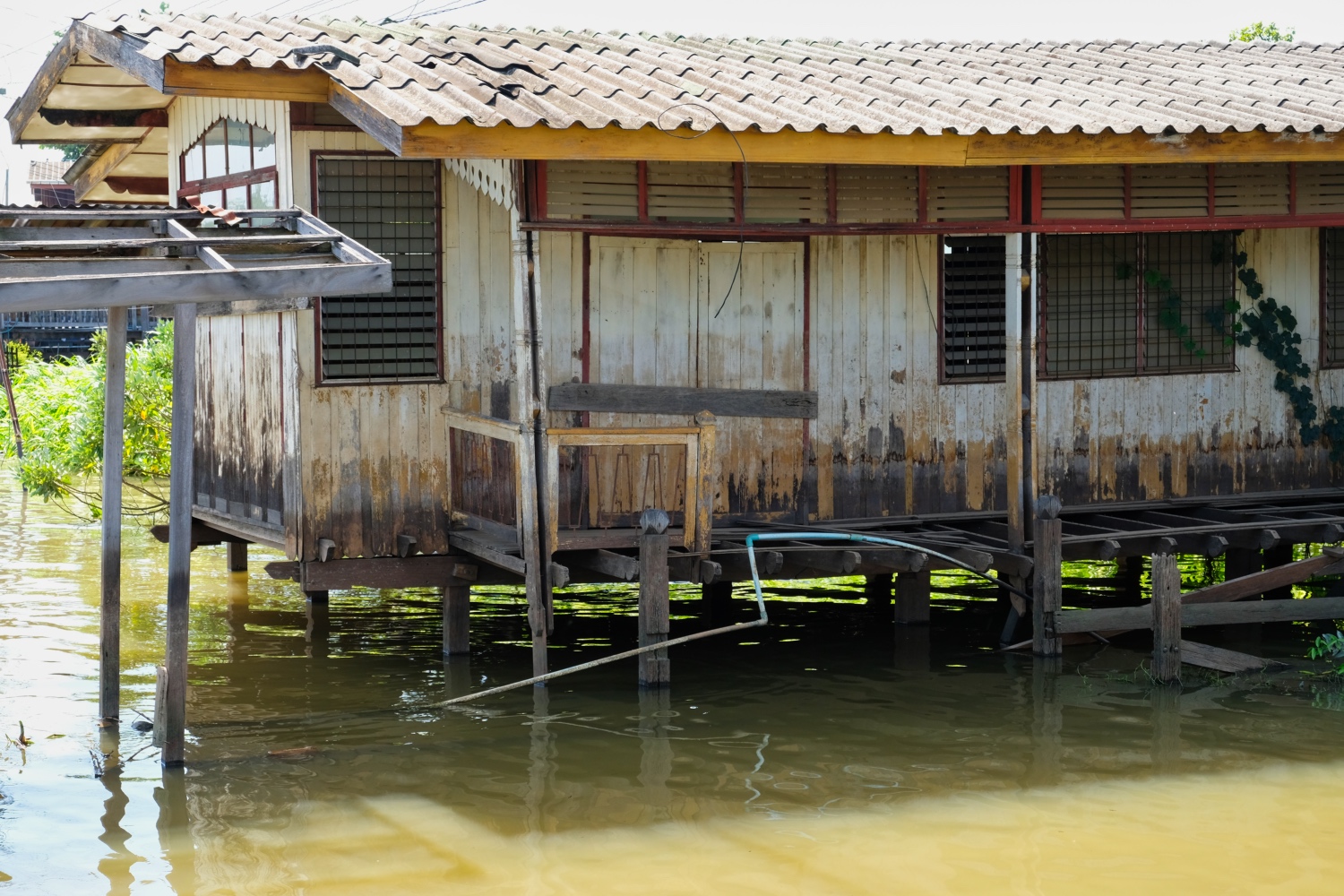 A little 1/4 inch paint and this could be liveable again . . . I still harbour the desire to live on the river . . . or any river.
A little 1/4 inch paint and this could be liveable again . . . I still harbour the desire to live on the river . . . or any river.
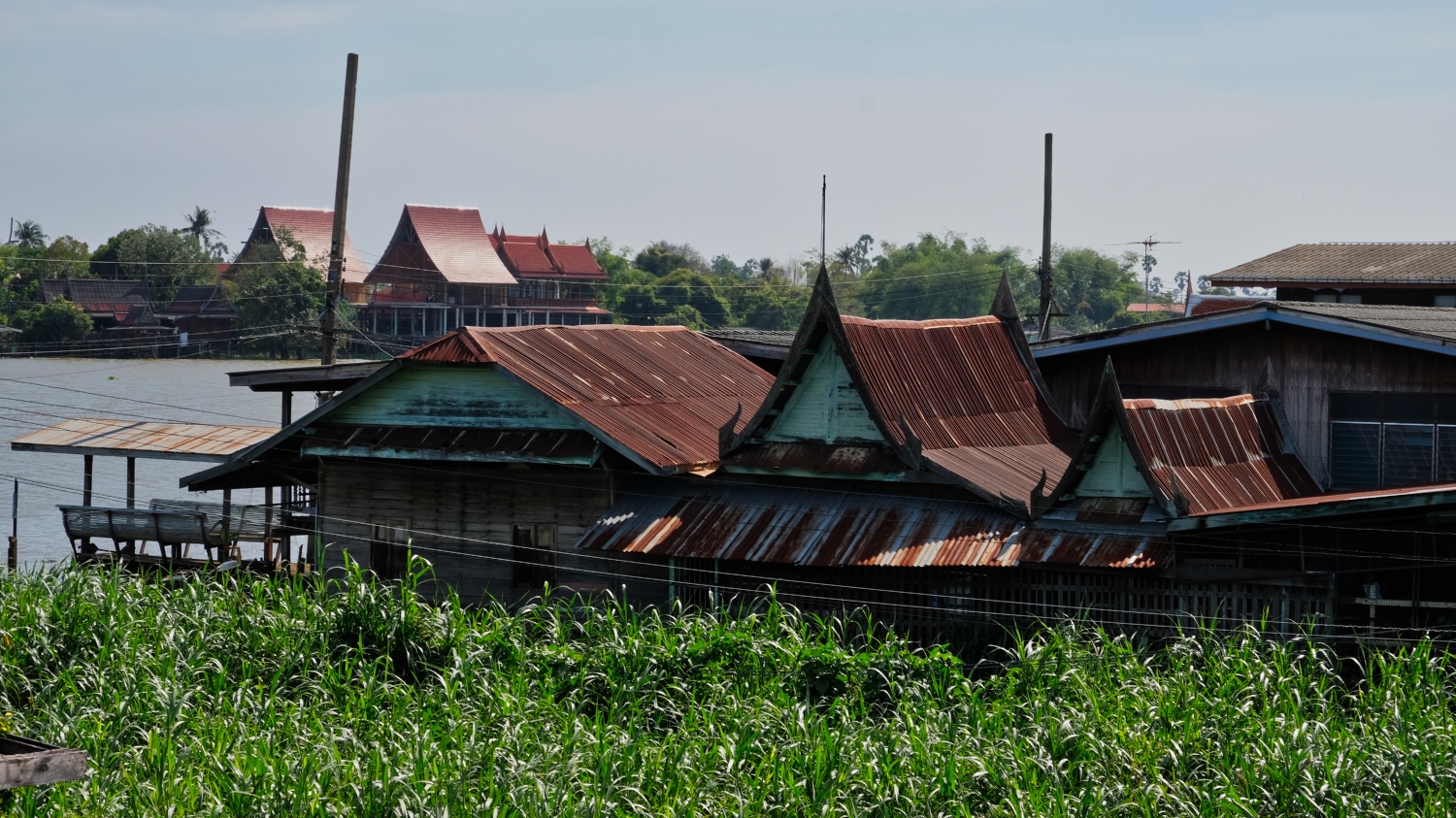 The view from an upstairs window: this is Old Thailand . . . just 30 minutes up the river.
The view from an upstairs window: this is Old Thailand . . . just 30 minutes up the river.
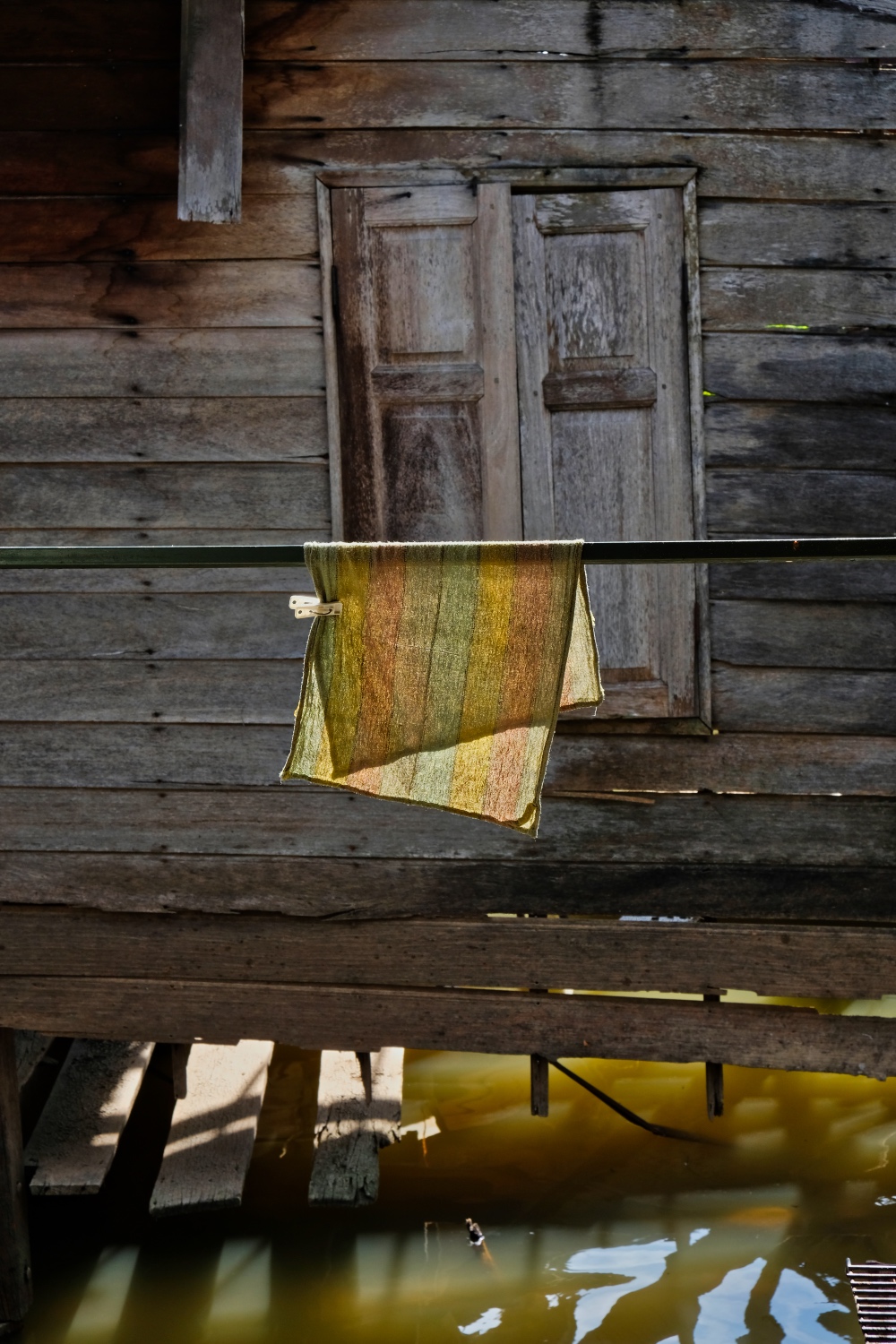 One last photo. A still life of Old Thailand.
One last photo. A still life of Old Thailand.
 Dr. Jeff Harper
Dr. Jeff Harper
My wife's family from Hong Kong were visiting, so we took the opportunity to go back to this lovely riverside idyll . . . this time in the late evening/early hours of night.
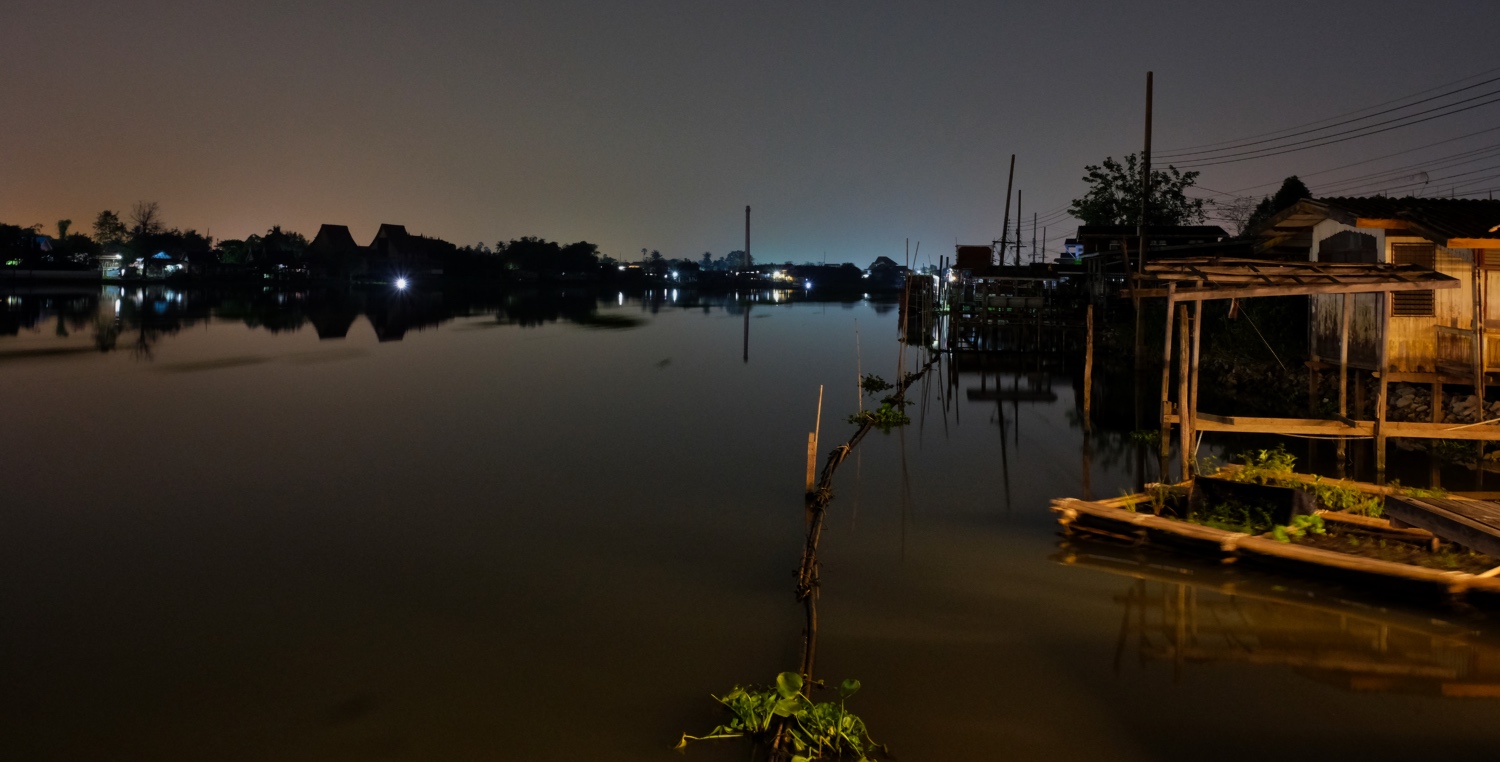 With the sun almost down, the lights of Bangkok, 20K away, glowed on the horizon.
With the sun almost down, the lights of Bangkok, 20K away, glowed on the horizon.
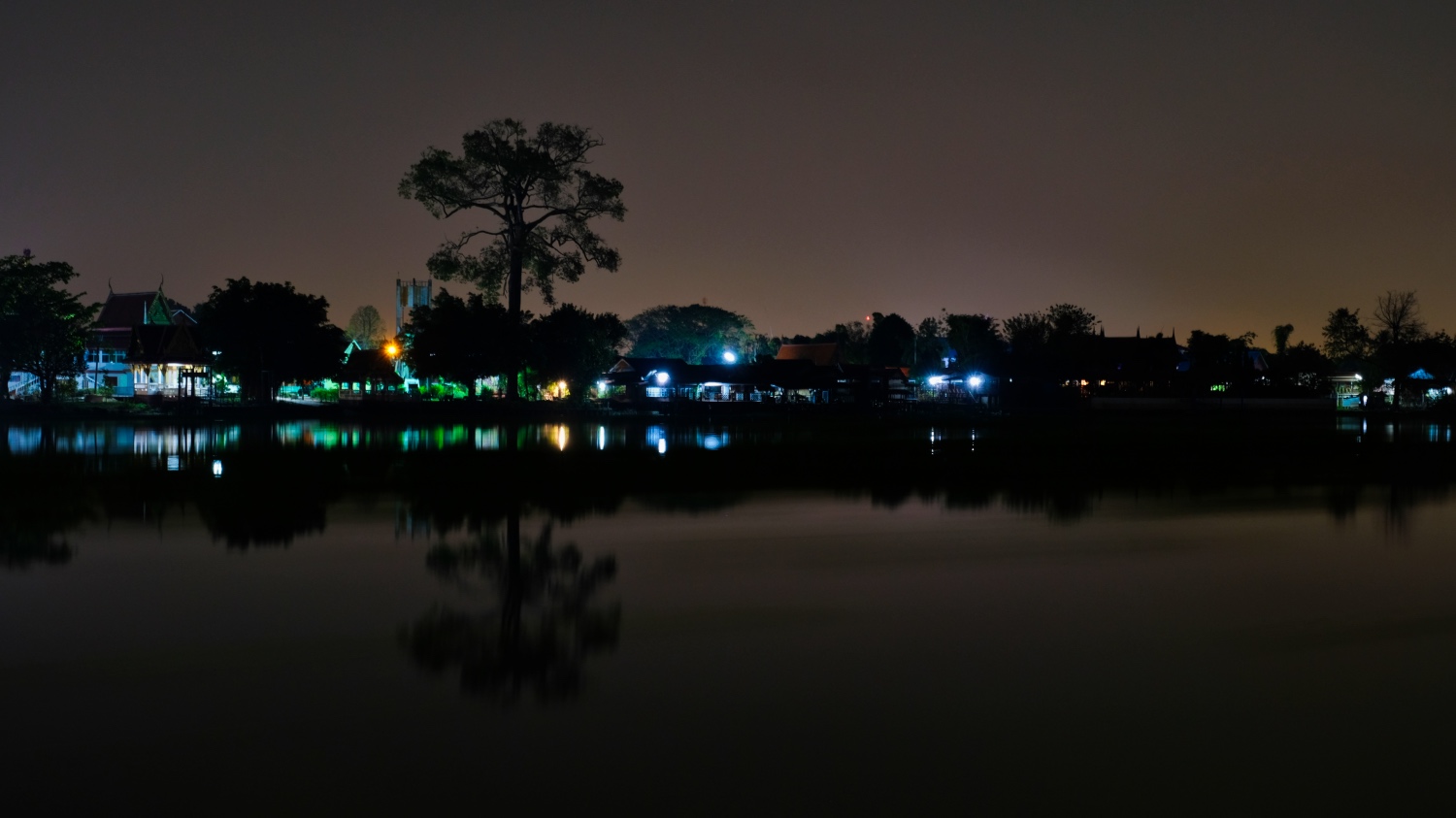 There was some deck railing near the water, so I used the opportunity to rest my camera for a few long exposure night photography.
There was some deck railing near the water, so I used the opportunity to rest my camera for a few long exposure night photography.
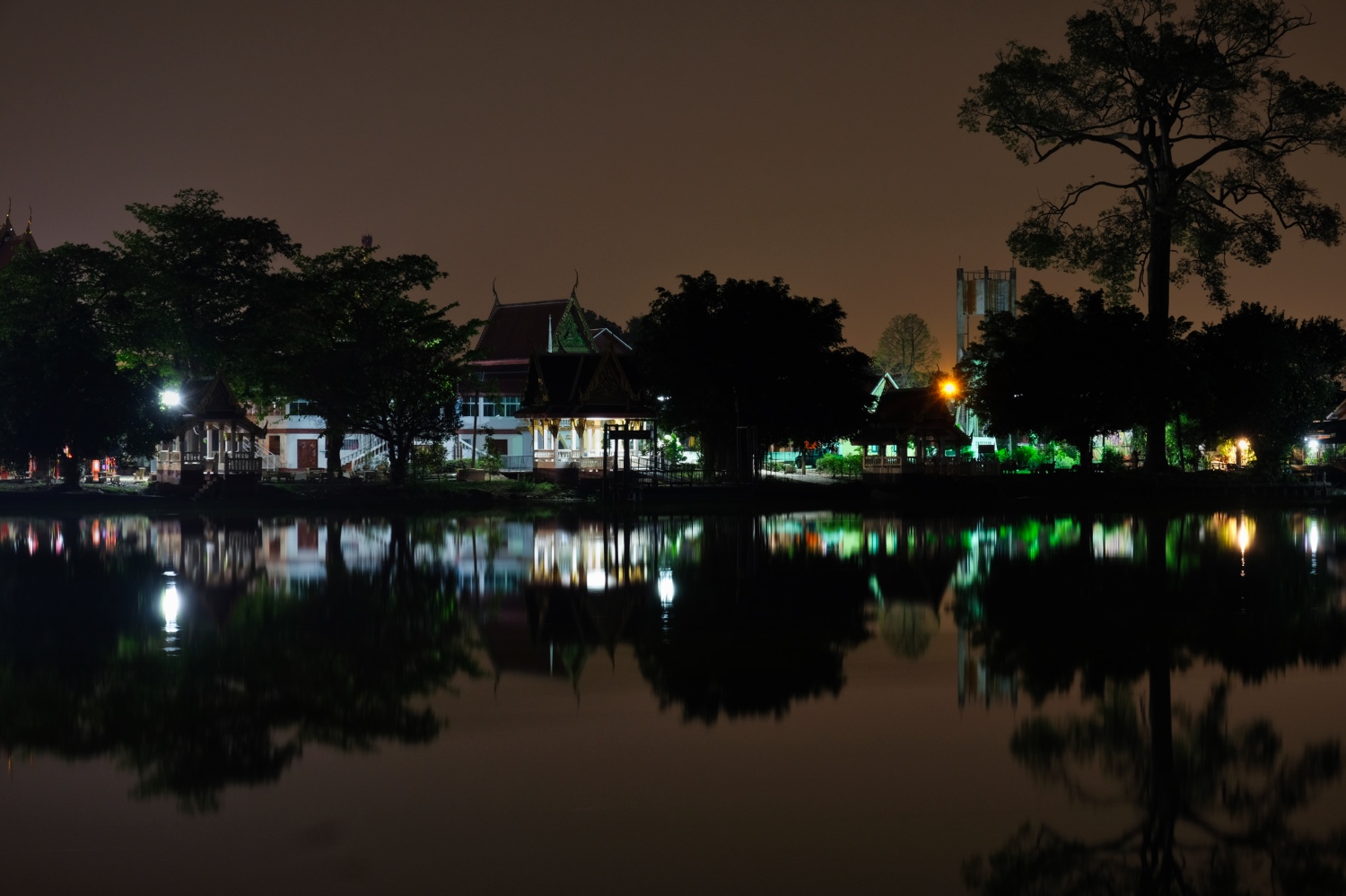 It was a very calm, hot and humid evening in mid-February.
It was a very calm, hot and humid evening in mid-February.
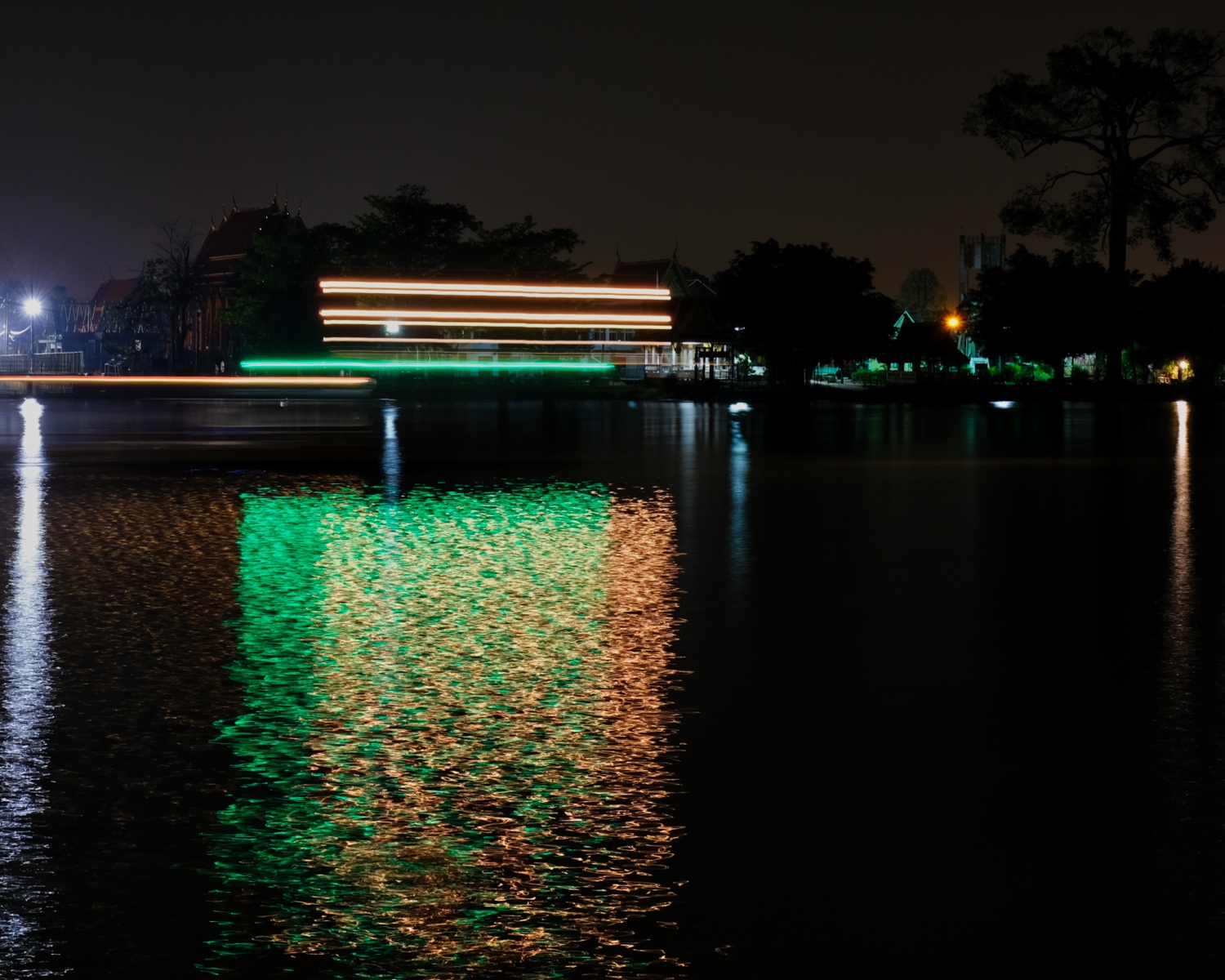 This is a very long exposure of a very slow moving river tug boat . . . the deck lights stretched as a line . . . and a moving bar of light reflected in the water.
This is a very long exposure of a very slow moving river tug boat . . . the deck lights stretched as a line . . . and a moving bar of light reflected in the water.
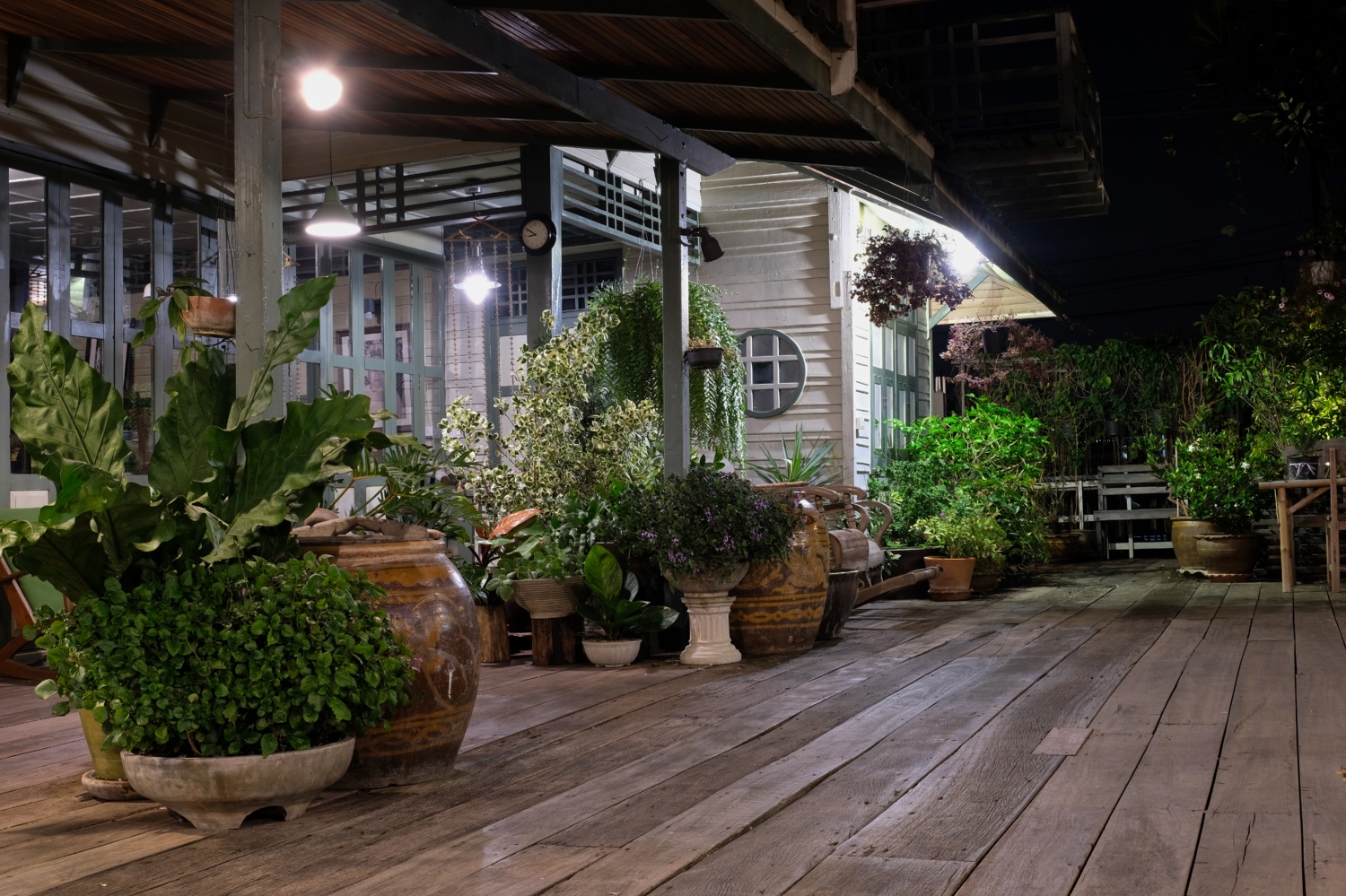 Using available stools and tabletops, I took these remarkable photos of the beautifully old Thai residence - restaurant.
Using available stools and tabletops, I took these remarkable photos of the beautifully old Thai residence - restaurant.
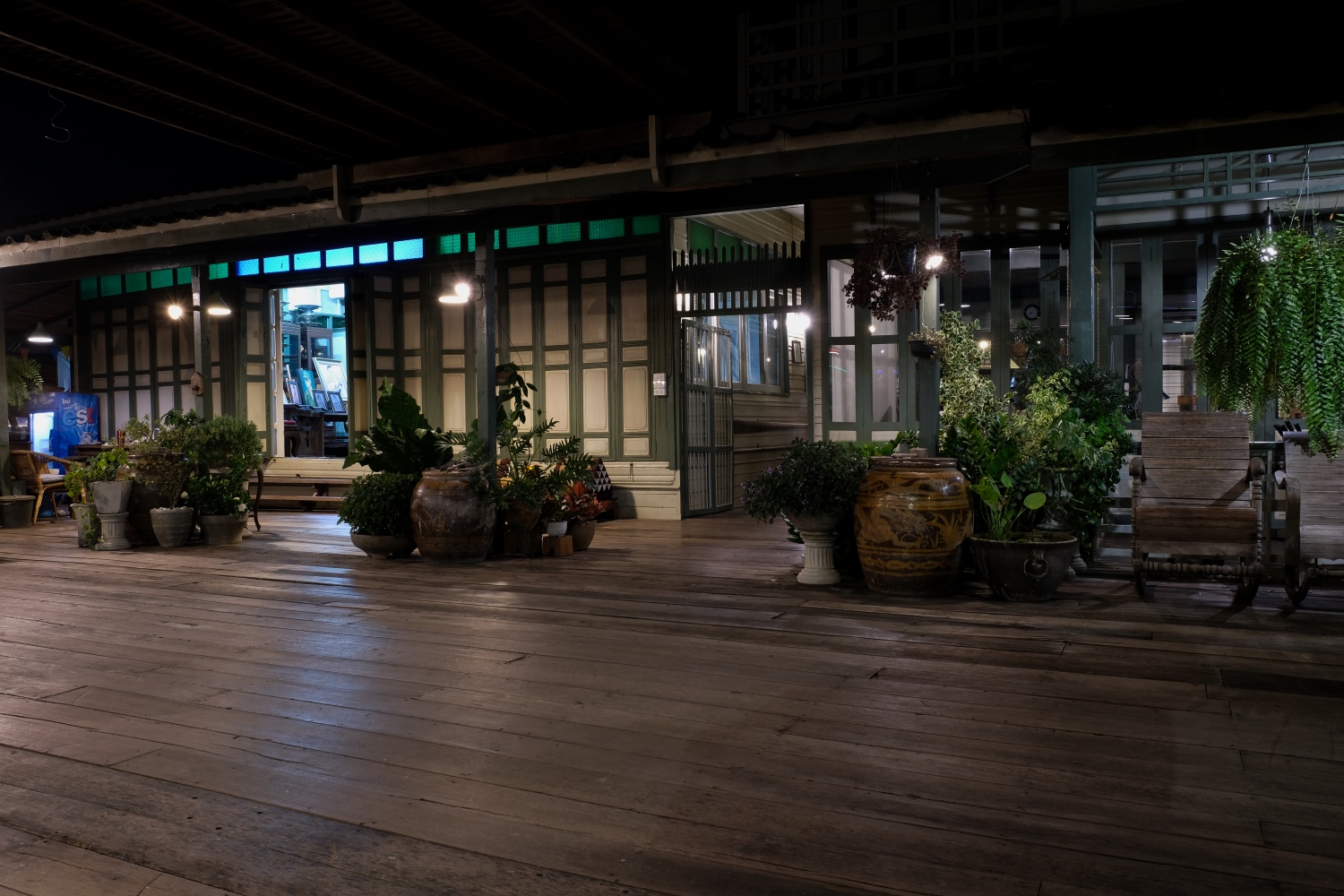 Teak decking planks out over the water and traditional Thai style architecture.
Teak decking planks out over the water and traditional Thai style architecture.
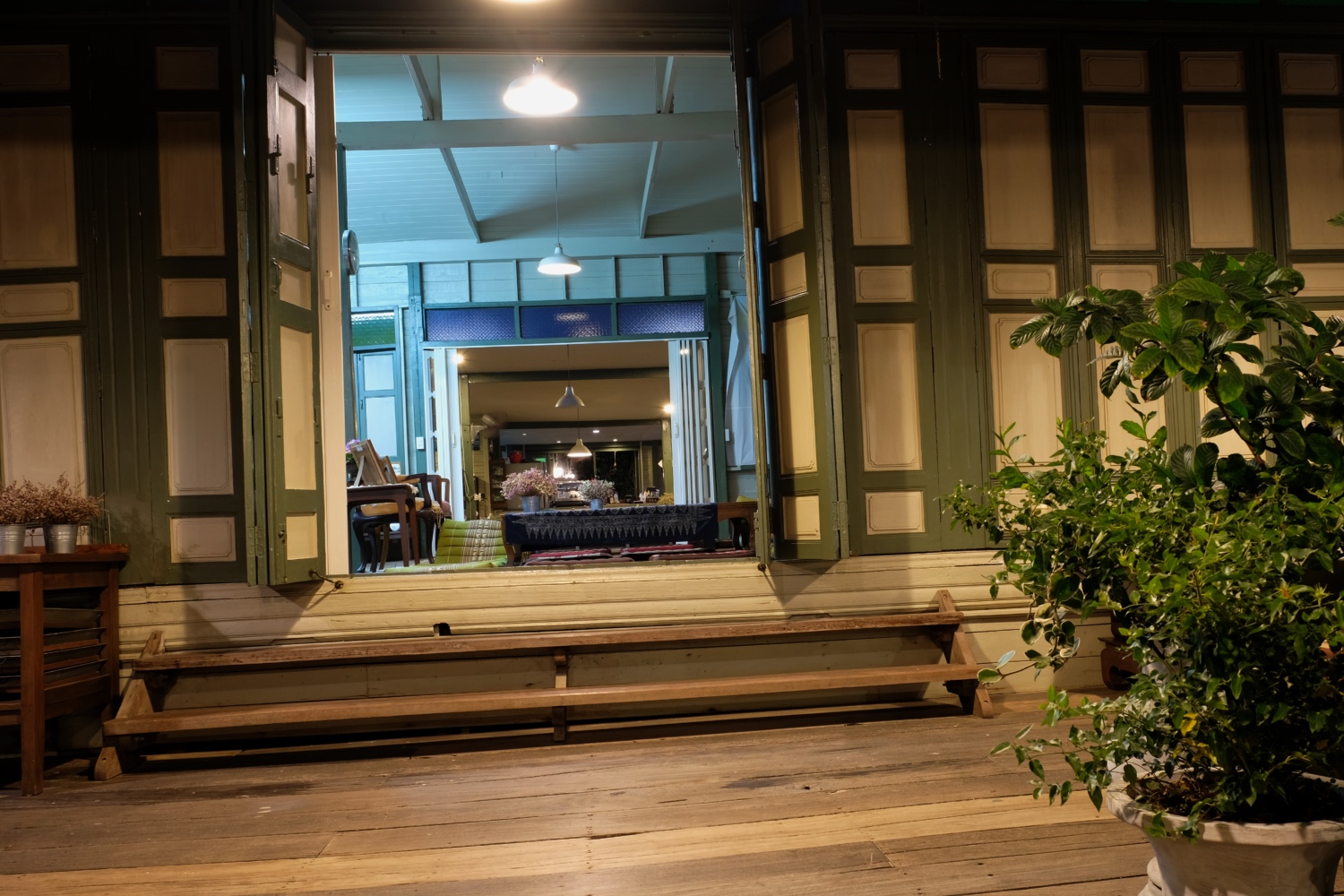 Beautiful rooms. Beautiful light.
Beautiful rooms. Beautiful light.
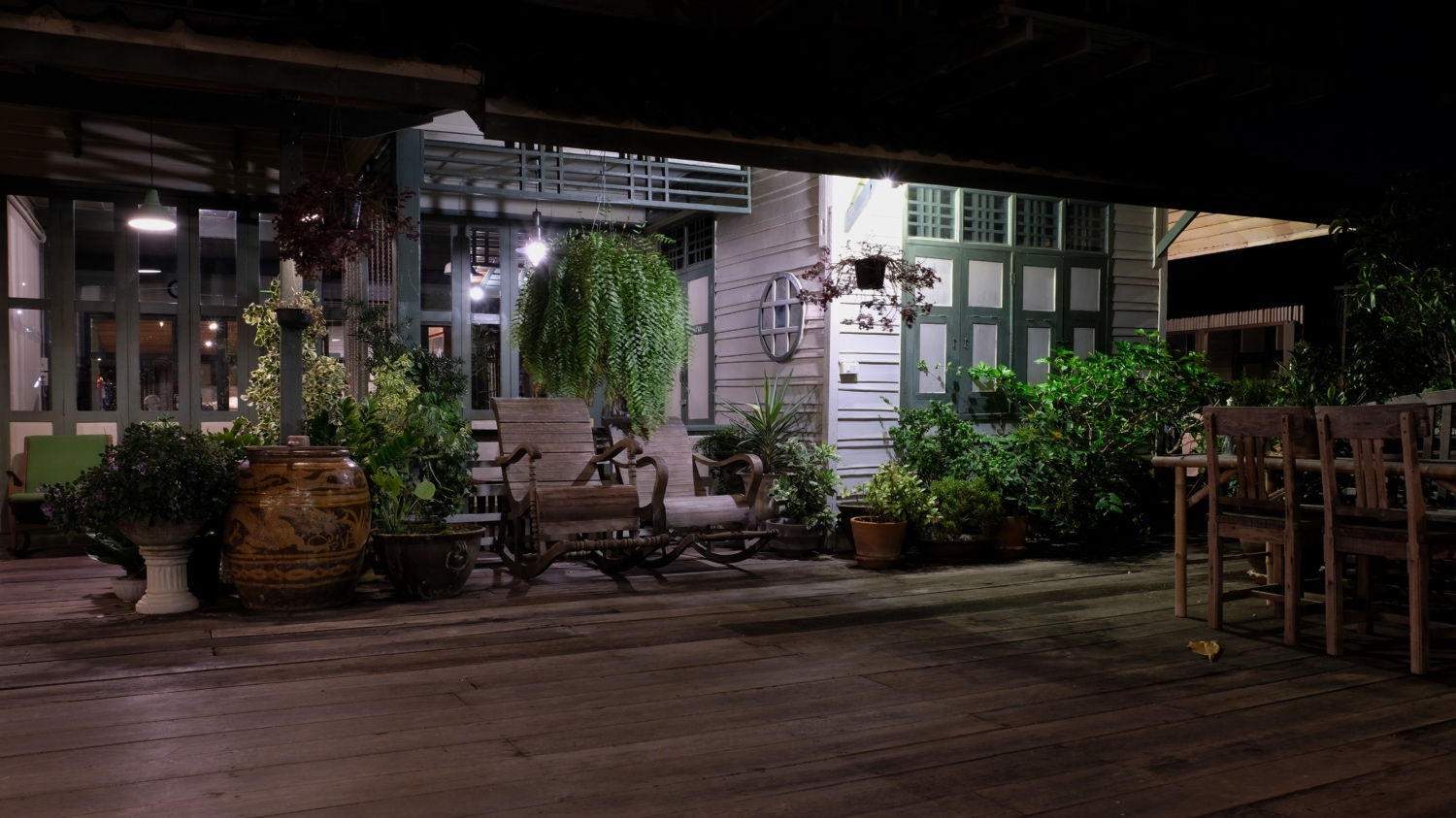 I had fun in the post-processing of these photos too: This is a three image HDR stack done in Aurora HDR 2018.
I had fun in the post-processing of these photos too: This is a three image HDR stack done in Aurora HDR 2018.
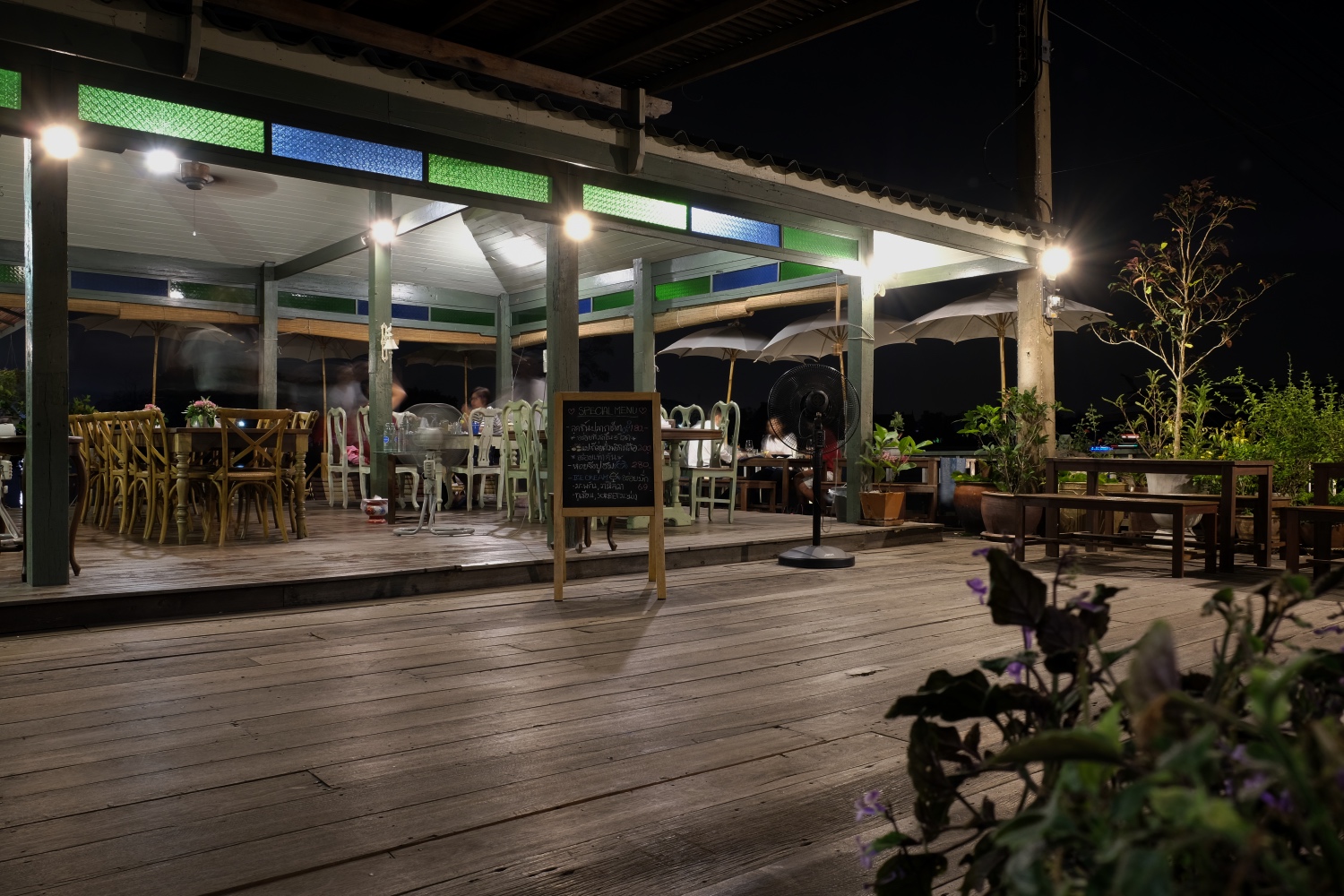 We had a delicious traditional Thai meal on the riverside deck . . . old recipes made with loving care.
We had a delicious traditional Thai meal on the riverside deck . . . old recipes made with loving care.
 A captivating view to drink in along with dinner . . .
A captivating view to drink in along with dinner . . .
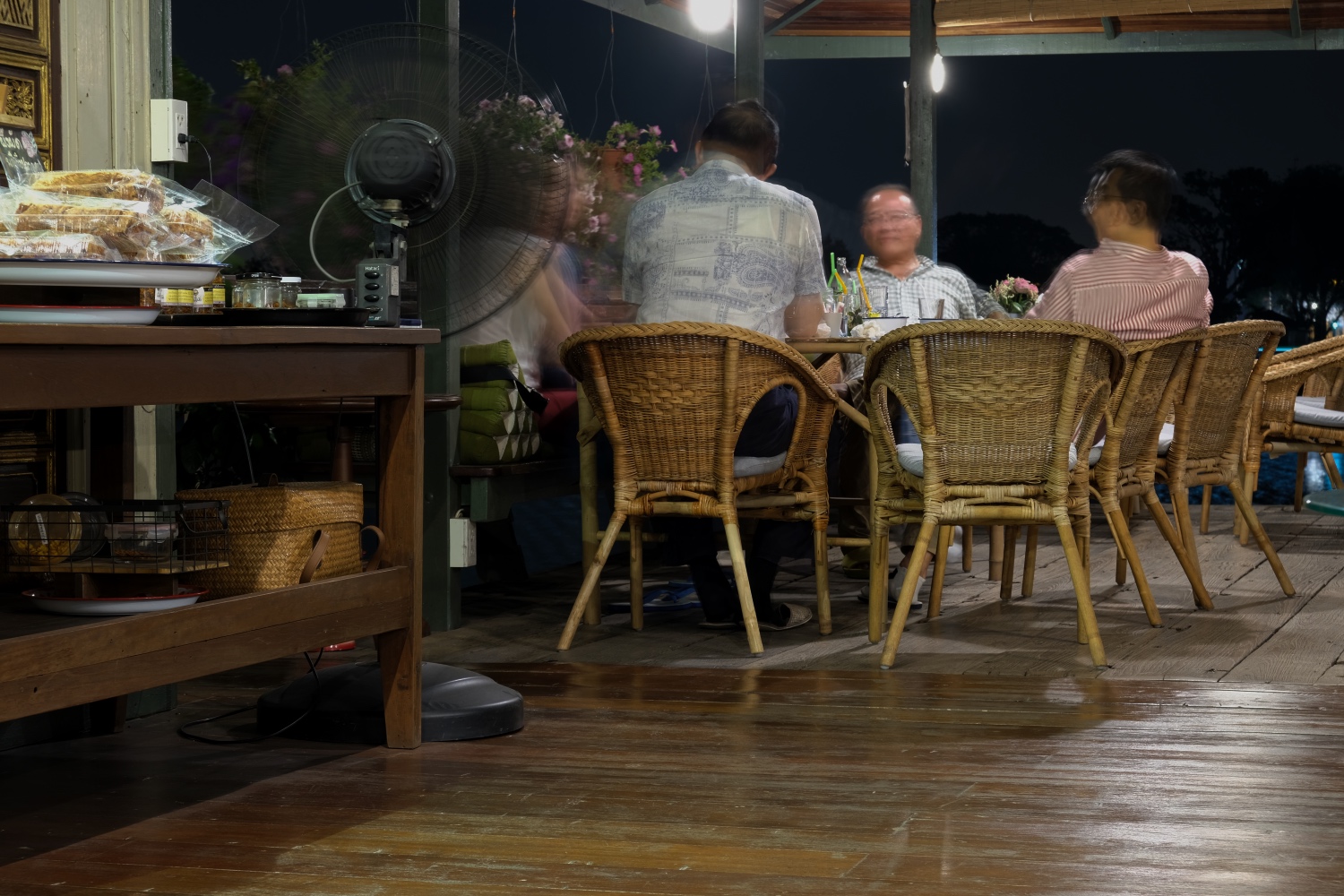 We stayed a little later than the kitchen staff might have wanted . . . but the conversation was good, and it was such a still and calm night.
We stayed a little later than the kitchen staff might have wanted . . . but the conversation was good, and it was such a still and calm night.
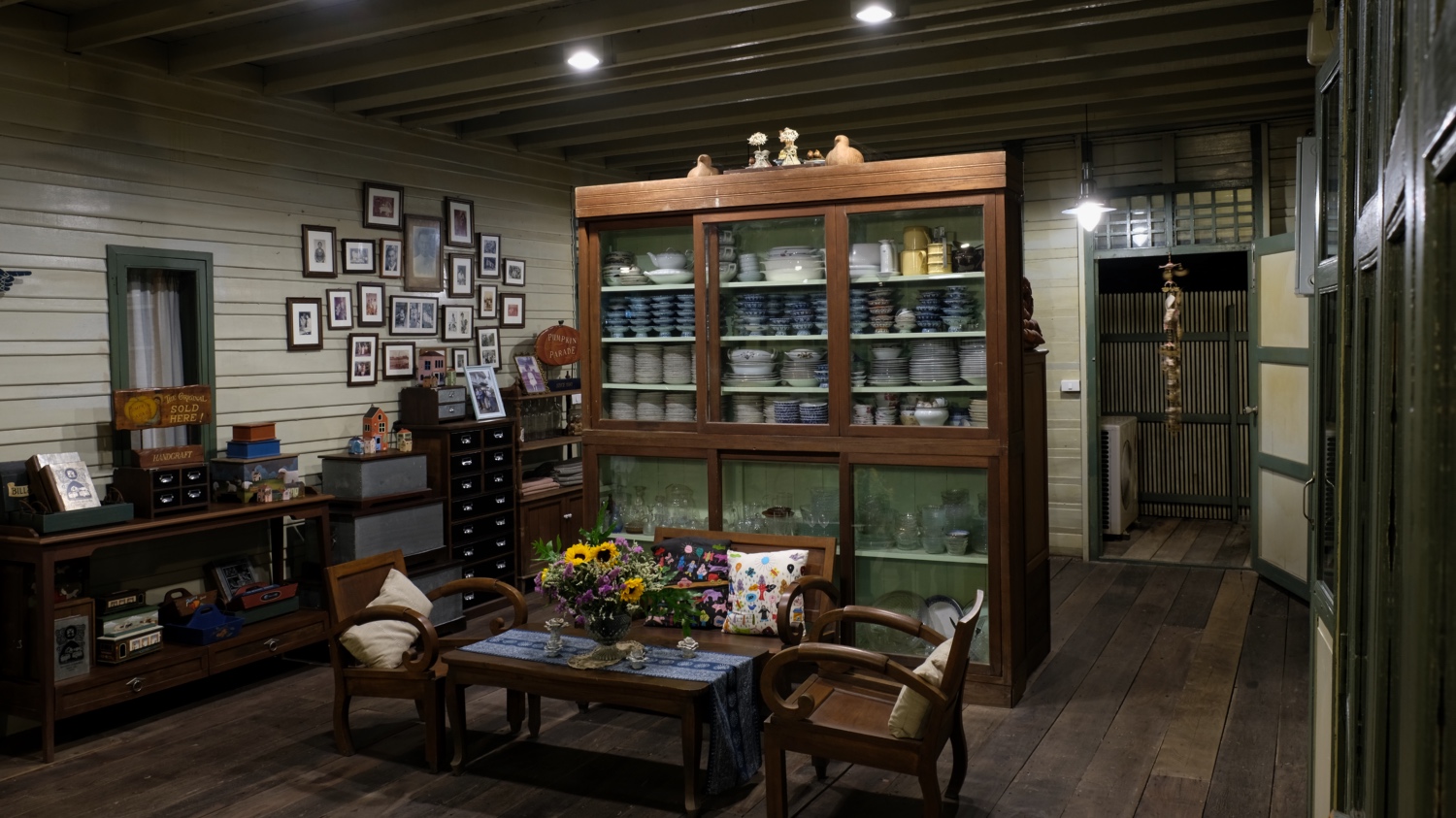 The old house had a nice collection of antique plates and glasses for use in the restaurant. A nice touch.
The old house had a nice collection of antique plates and glasses for use in the restaurant. A nice touch.
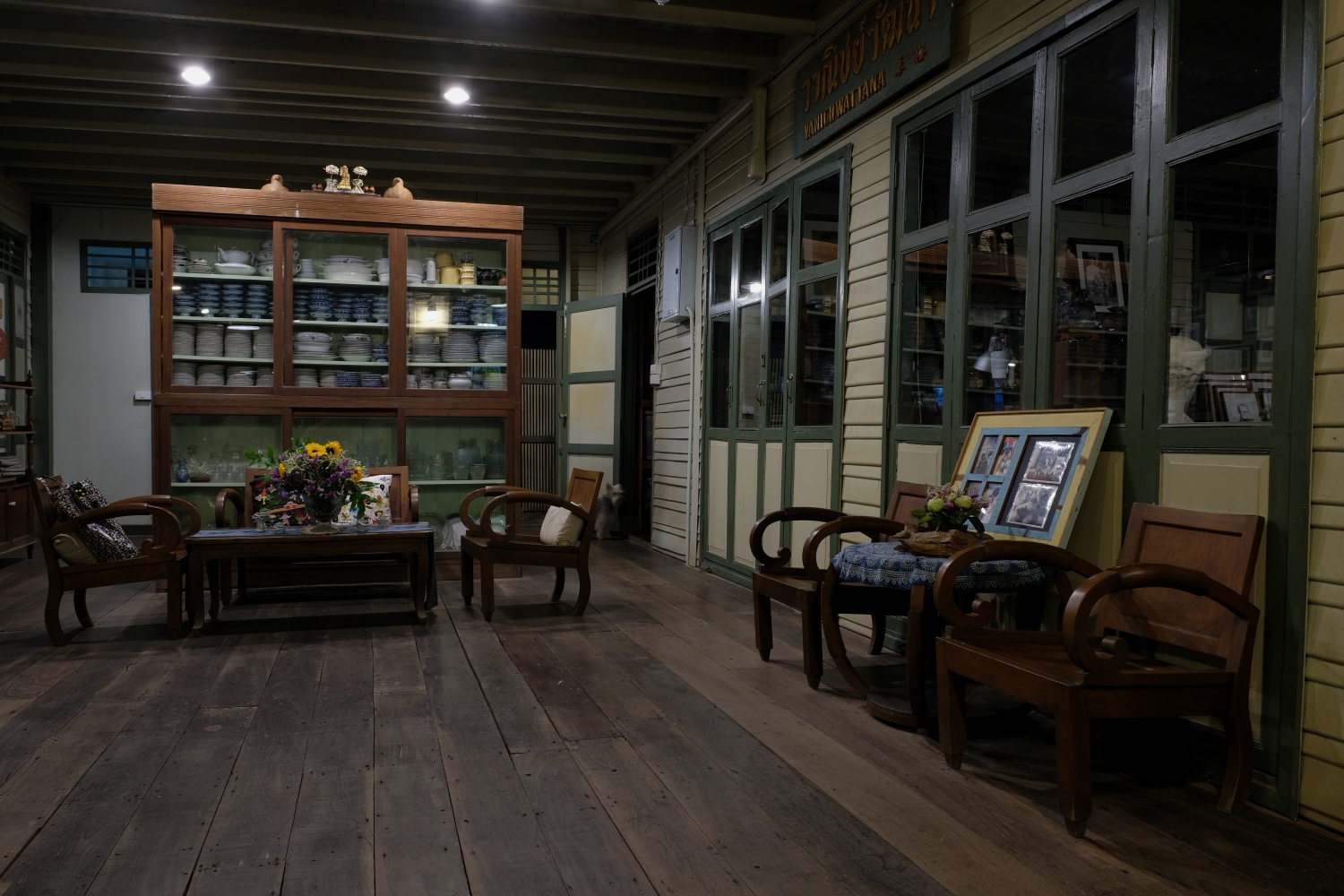 Such tranquil spaces . . .
Such tranquil spaces . . .
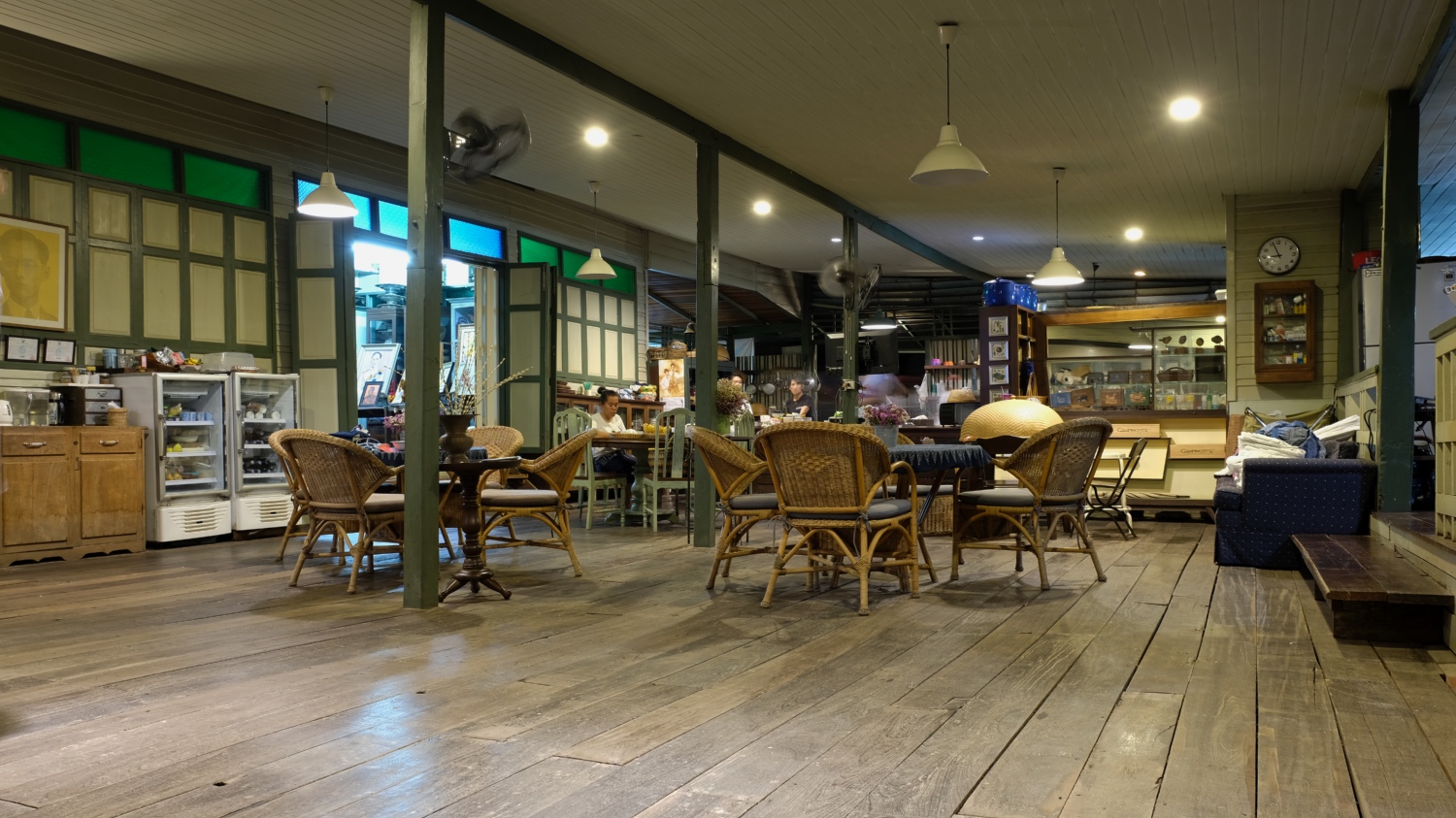 The kitchen and food preparation area.
The kitchen and food preparation area.
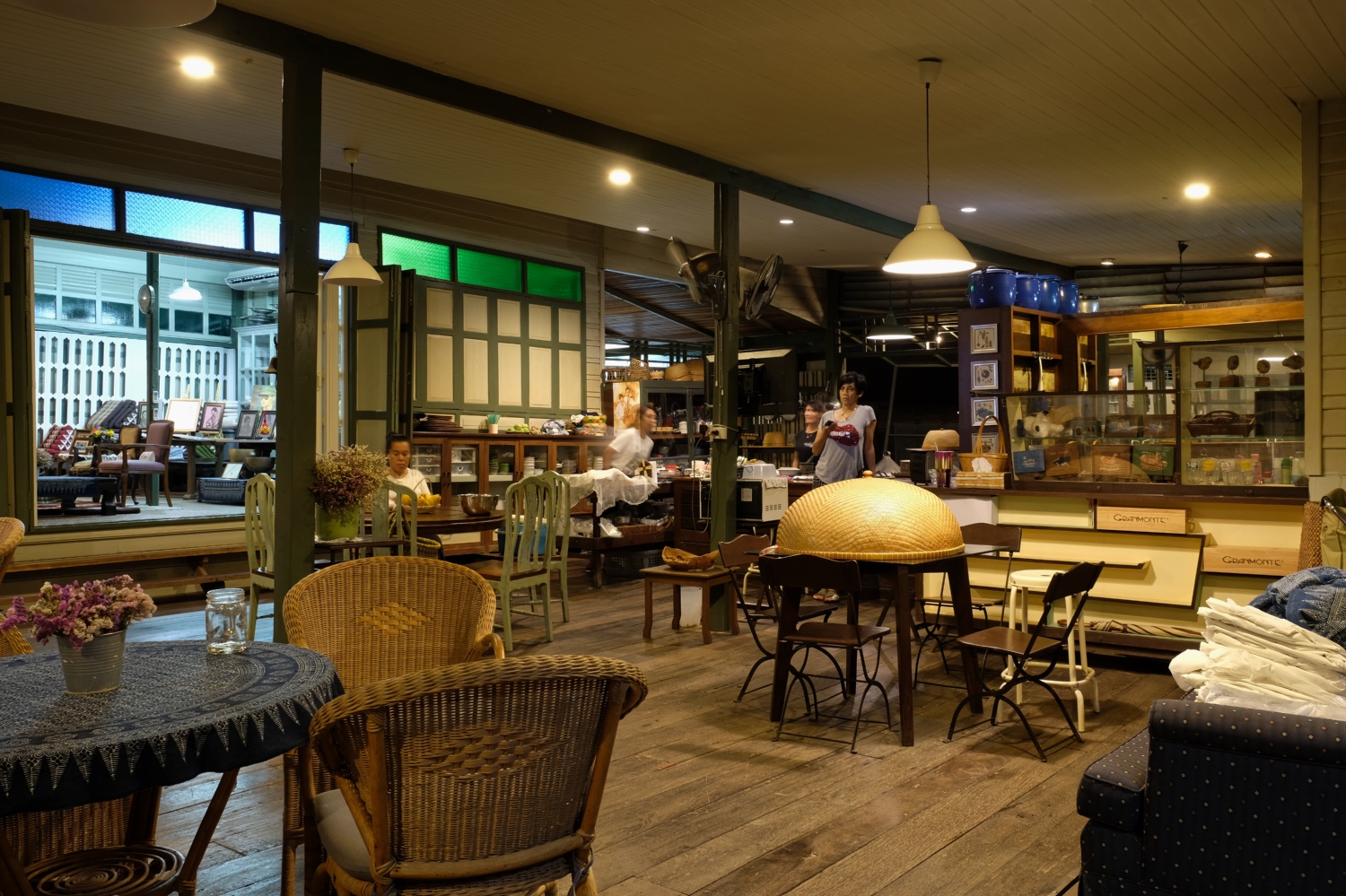 I think the staff was happy to see us leave at last! They were very gracious . . . but we were the last customers to leave!
I think the staff was happy to see us leave at last! They were very gracious . . . but we were the last customers to leave!
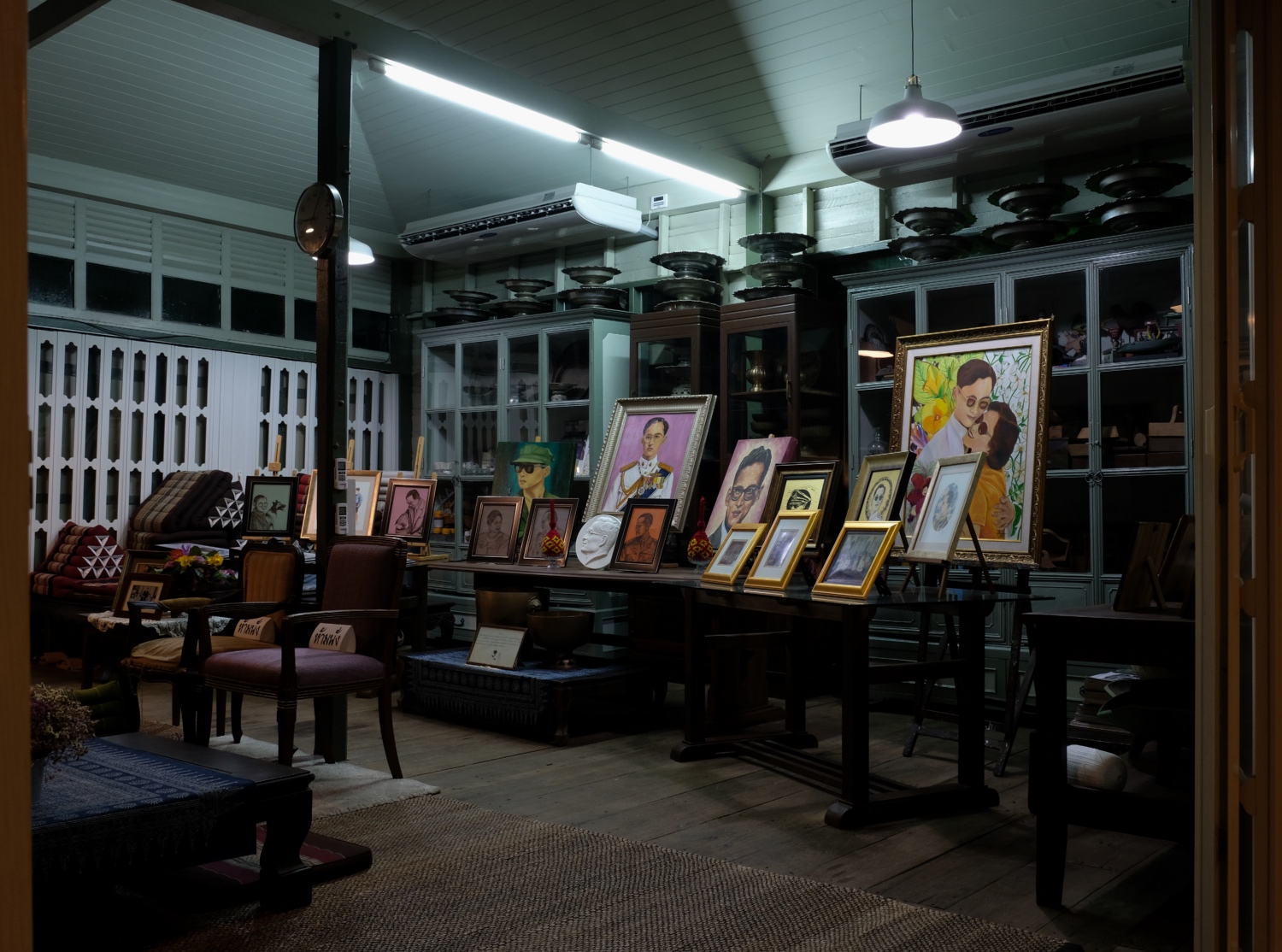 We gave respect to the old Thai King and headed home. A good time was had by all.
We gave respect to the old Thai King and headed home. A good time was had by all.
